News
13th International Congress of Auchenorrhyncha
2010-08-16
Held in Vaison-la-Romaine, France (28 June-2 July 2010), the Congress included a presentation by Olivia Evangelista, D. M. Takiya, and A. M. Sakakibara: “Reassessment of the treehopper tribe Procyrtini: morphological variation and phylogenetic placement based on 28S rDNA (Membracidae: Darninae)” and a poster by Stuart H. McKamey: “The first immatures of two plesiomorphic genera of Membracidae and their Phylogenetic implications,” which focused on Antillotolania and Deiroderes. The Congress website includes details of the overall program. [S. H. McKamey and L. L. Deitz]
Recent Treehopper Publications
2010-08-16
Please contact us to add or correct references.
Hamilton, K. G. A.; Cocroft, R. B. 2010a. Establishing the identity of existing name in the North American Enchenopa binotata species complex of treehoppers (Hemiptera: Membracidae). Entomological News 120(5): 534-565. [designates a female specimen as neotype of both E. binotata and E. porrecta; notes on E. brevis, E. sericea, and undescribed species]
Sakakibara, A. M.; Lencioni-Neto, F. 2009a. Duas espécies novas de membracídeos (Hemiptera, Membracidae) da Mata Atlântica do Estado de São Paulo, Brasil. [Two new species of treehopper (Hemiptera, Membradidae) from the Atlantic Forest of São Paulo, Brazil.]. Papeis Avulsos de Zoologia 49(16): 191-196. [in Portuguese, with English summary; Antonae brasiliensis and Hypheodana gargionei, n. spp.]
Wallace, M. S.; Bartlett, C. R.; Deitz, L. L.; Rothschild, M. J. 2009a. New state records of treehoppers (Hemiptera: Membracidae) for Delaware, Maryland, Mississippi, Pennsylvania, and West Virginia. Proc. Entomol. Soc. Washington 111(3): 734-738. [presents new state records for 27 spp.]
Wallace, M. S.; Maloney, S. M. 2010a. Treehopper (Hemiptera: Membracidae) biodiversity and seasonal abundance in the Pocono till barrens, Long Pond, Pennsylvania. Proc. Entomol. Soc. Washington 112(2): 281-294. [lists 31 spp.; 1 new state record (Cyrtolobus inermis)]
Hamilton, K. G. A.; Cocroft, R. B. 2010a. Establishing the identity of existing name in the North American Enchenopa binotata species complex of treehoppers (Hemiptera: Membracidae). Entomological News 120(5): 534-565. [designates a female specimen as neotype of both E. binotata and E. porrecta; notes on E. brevis, E. sericea, and undescribed species]
Sakakibara, A. M.; Lencioni-Neto, F. 2009a. Duas espécies novas de membracídeos (Hemiptera, Membracidae) da Mata Atlântica do Estado de São Paulo, Brasil. [Two new species of treehopper (Hemiptera, Membradidae) from the Atlantic Forest of São Paulo, Brazil.]. Papeis Avulsos de Zoologia 49(16): 191-196. [in Portuguese, with English summary; Antonae brasiliensis and Hypheodana gargionei, n. spp.]
Wallace, M. S.; Bartlett, C. R.; Deitz, L. L.; Rothschild, M. J. 2009a. New state records of treehoppers (Hemiptera: Membracidae) for Delaware, Maryland, Mississippi, Pennsylvania, and West Virginia. Proc. Entomol. Soc. Washington 111(3): 734-738. [presents new state records for 27 spp.]
Wallace, M. S.; Maloney, S. M. 2010a. Treehopper (Hemiptera: Membracidae) biodiversity and seasonal abundance in the Pocono till barrens, Long Pond, Pennsylvania. Proc. Entomol. Soc. Washington 112(2): 281-294. [lists 31 spp.; 1 new state record (Cyrtolobus inermis)]
Treehopper Bulletins at Bargain Prices
2010-08-16
Limited numbers of five North Carolina Agricultural Research Technical Bulletins on treehoppers remain available at great prices. Additional shipping fees are charged for overseas orders (prices below include shipping for domestic orders). Payment must be in U.S. dollars (check or money order payable to N.C. State University). Contact: Jeanne Marie Wallace
TB225 $2.50 Classification of the higher categories of the New World treehoppers (Homoptera: Membracidae). Deitz 1975
TB284 $4.00 Bibliography of the Membracoidea (Homoptera: Aetalionidae, Biturritiidae, Membracidae, and Nicomiidae), 1956-1980. Deitz and Kopp 1987
TB290 $3.00 Bibliography of the Membracoidea (Homoptera: Aetalionidae, Biturritiidae, Membracidae, and Nicomiidae), 1981-1987. Deitz 1989
TB293 $10.00 Revision of the Neotropical treehopper tribe Aconophorini (Homoptera: Membracidae). Dietrich and Deitz 1991
TB294 $7.00 Revision of the Neotropical treehopper genus Metcalfiella (Homoptera: Membracidae). McKamey and Deitz 1991
TB225 $2.50 Classification of the higher categories of the New World treehoppers (Homoptera: Membracidae). Deitz 1975
TB284 $4.00 Bibliography of the Membracoidea (Homoptera: Aetalionidae, Biturritiidae, Membracidae, and Nicomiidae), 1956-1980. Deitz and Kopp 1987
TB290 $3.00 Bibliography of the Membracoidea (Homoptera: Aetalionidae, Biturritiidae, Membracidae, and Nicomiidae), 1981-1987. Deitz 1989
TB293 $10.00 Revision of the Neotropical treehopper tribe Aconophorini (Homoptera: Membracidae). Dietrich and Deitz 1991
TB294 $7.00 Revision of the Neotropical treehopper genus Metcalfiella (Homoptera: Membracidae). McKamey and Deitz 1991
Alfred Keller’s Model of Bocydium globulare
2010-12-13
"The surreal treehoppers," a short note about this artist and treehoppers, appears at the blog: Why Evolution is True. The images are astonishing.
Browse NCSU’s Treehopper Collection through GigaPans
2010-12-13
Through the magic of GigaPans (online, high resolution digital images), one can now browse the drawers of treehoppers and other insects held at the North Carolina State University Insect Museum, NCSU, Raleigh. Funding for this project was provided to Andy Deans and Brian Wiegmann by the National Science Foundation (DBI-0847924). The collection includes Z. P. Metcalf’s specimens and many more recent additions.
Aetalionidae
Melizoderidae
Membracidae
Aetalionidae
Melizoderidae
Membracidae
18th Treehopper Gathering Enjoys “Aliens of the Amazon: Treehoppers”
2010-12-13
The 2010 Treehopper Gathering was held at the Little Orleans Campground, Little Orleans, Maryland, 4-6 June 2010, with Charles Bartlett (University of Delaware) serving as the organizer. This annual event, initiated by Tom Wood, first met in the spring of 1989 at the University of Delaware. Nearly 25 entomologists and students, mostly from institutions in the eastern U.S. (Delaware, Kansas, Maryland, New York, North Carolina, Pennsylvania, South Dakota, and Washington, D.C.) collected treehoppers and other insects, worked on collaborative projects, and enjoyed camping, eating and swimming. After a fantastic feast of turkey and steak, Stuart McKamey (Systematic Entomology Laboratory, National Museum of Natural History, Washington, D.C. ) shared a TV documentary featuring treehoppers filmed in an expedition to Ecuador (November 2008). The venture, financed by Mona Lisa Productions (Lyon France), included Stuart, who collaborated in organizing the trip, as well as membracid researchers Rex Cocroft (University of Missouri ) and Carolina Godoy (University of Costa Rica). The result is an award-winning documentary: “Aliens of the Amazon: Treehoppers,” which has been released in various versions in the U.S., Canada, France, Germany, Austria, Italy, and Belgium. [L. L. Deitz, M. S. Wallace, and S. H. McKamey]
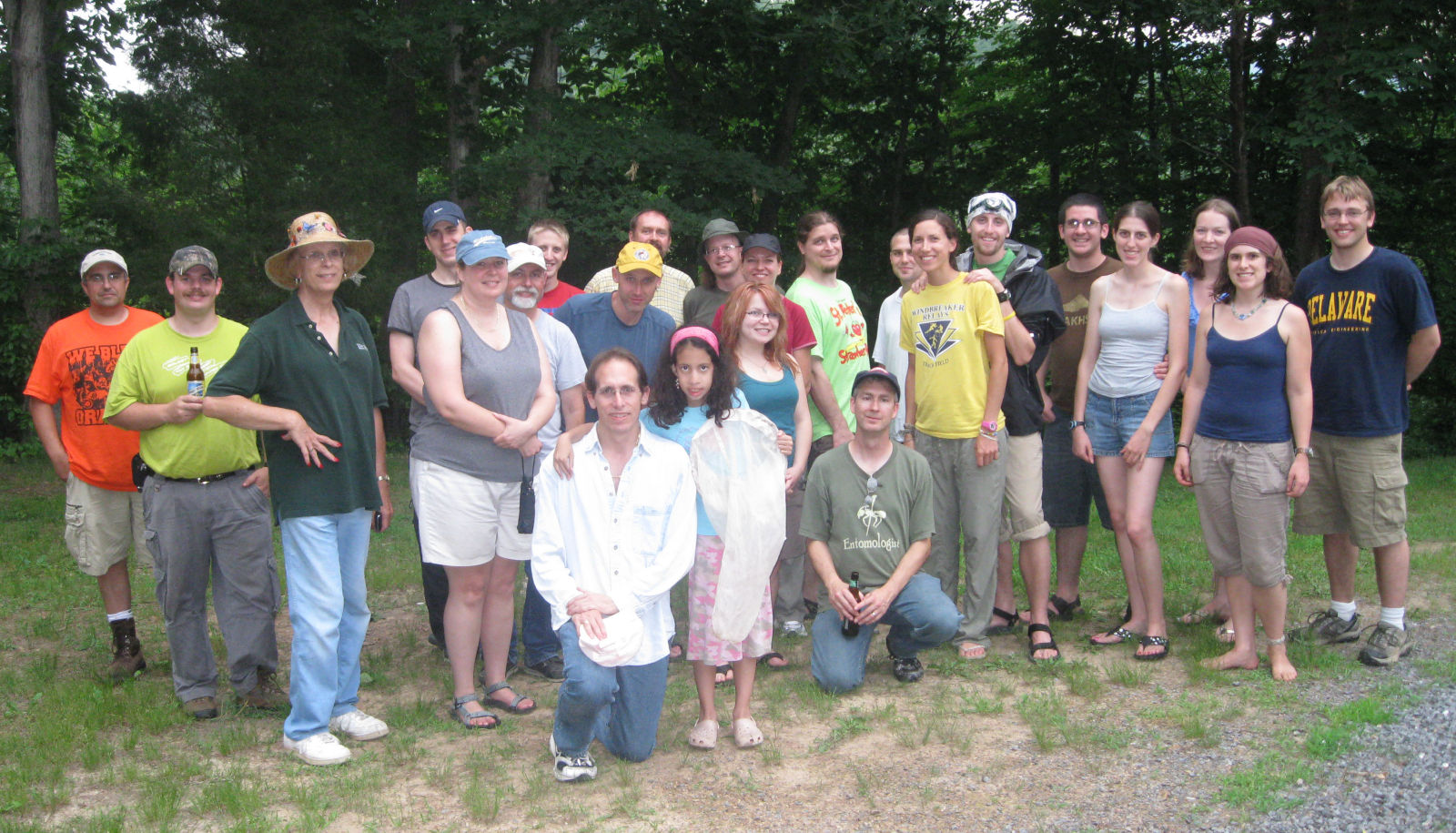

Most Wanted List
2011-01-16
We invite photographers to submit original high quality digital images of treehoppers for possible inclusion on our website through contact us. Please include copyright information (holder and year), name of taxon (if known), and other relevant data for each image. Selected images are featured on the "Top Pics" page.
Our current most wanted images include the genera Acanthicoides, Aleptocentrus, Ananthasubramanianum, Aspasiana, Centrobelus, Demanga, Gargarina, Gonoconophora, Insitor, Insitoroides, Matonotus, Megaloschema, Neocentrus, Neomachaerotypus, Occator, Spathenotus, and Tremembaetalion.
Olivia Evangelista and Stuart McKamey recently provided images of three genera previously on our "Most Wanted List."
Our current most wanted images include the genera Acanthicoides, Aleptocentrus, Ananthasubramanianum, Aspasiana, Centrobelus, Demanga, Gargarina, Gonoconophora, Insitor, Insitoroides, Matonotus, Megaloschema, Neocentrus, Neomachaerotypus, Occator, Spathenotus, and Tremembaetalion.
Olivia Evangelista and Stuart McKamey recently provided images of three genera previously on our "Most Wanted List."
2011 Annual Treehopper Gathering: 3-5 June, Little Orleans, Maryland
2011-03-20
The 19th Annual Treehopper Gathering is scheduled for 3-5 June 2011 (arrive Friday, depart Sunday), at the Little Orleans Campground, Little Orleans, Maryland. This informal event provides a great opportunity to talk and collect with others passionate about treehoppers and related insects.
To register or obtain further information, please contact Charles Bartlett. Campsites are somewhat limited, so please register with Charles if you wish to camp with our group. Participants are expected to provide their own tents, food, and camping gear, and to share in the cost of the group campground registration and the group meal provided on Saturday evening.
To register or obtain further information, please contact Charles Bartlett. Campsites are somewhat limited, so please register with Charles if you wish to camp with our group. Participants are expected to provide their own tents, food, and camping gear, and to share in the cost of the group campground registration and the group meal provided on Saturday evening.
Treehoppers Top the Headlines
2011-05-06
An article featured on the cover of Nature confirms what many of us already knew: Treehoppers are Extraordinary!
Prud'homme et al. (2011) present intriguing evidence that the "pronotal" modifications of treehoppers may arise from fused appendages of the prothorax, which are serially homologous with the wings of the meso- and metathorax. Having fused into prothoracic "helmets" with no function in flight, the presumptive wing elements diversified to produce the dazzling regalia that adorn members of the families Membracidae, Aetalionidae, and Melizoderidae. See also: Discover Magazine, Science Now, Why Evolution is True (Video), and Why Evolution is True (Origin of Treehopper Helmet).
Amazing treehoppers also appear in a note on Myrmecomorphs.
[L. L. Deitz]
Prud'homme et al. (2011) present intriguing evidence that the "pronotal" modifications of treehoppers may arise from fused appendages of the prothorax, which are serially homologous with the wings of the meso- and metathorax. Having fused into prothoracic "helmets" with no function in flight, the presumptive wing elements diversified to produce the dazzling regalia that adorn members of the families Membracidae, Aetalionidae, and Melizoderidae. See also: Discover Magazine, Science Now, Why Evolution is True (Video), and Why Evolution is True (Origin of Treehopper Helmet).
Amazing treehoppers also appear in a note on Myrmecomorphs.
[L. L. Deitz]
19th Annual Treehopper Gathering: 3-5 June 2011, Little Orleans, Maryland
2011-08-02
The 2011 Annual Treehopper Gathering included workers interested in treehoppers (and other less outrageous insect groups) from across several eastern states of the US, as well as Kansas and even Brazil. As usual, the camaraderie, collecting, and food were terrific. Institutions represented include: ESU, East Stroudsburg University; FAC, Florida Arthropod Collection; KU, Kansas University Natural History Museum, University of Kansas; MC, Metropolitan College of New York; NCSU, North Carolina State University; NYSM, New York State Museum; SEL, Systematic Entomology Laboratory, USDA, c/ Smithsonian Institution; UD, University of Delaware; and UFPR, Universidade Federal do Paraná, Curitiba-PR, Brazil.
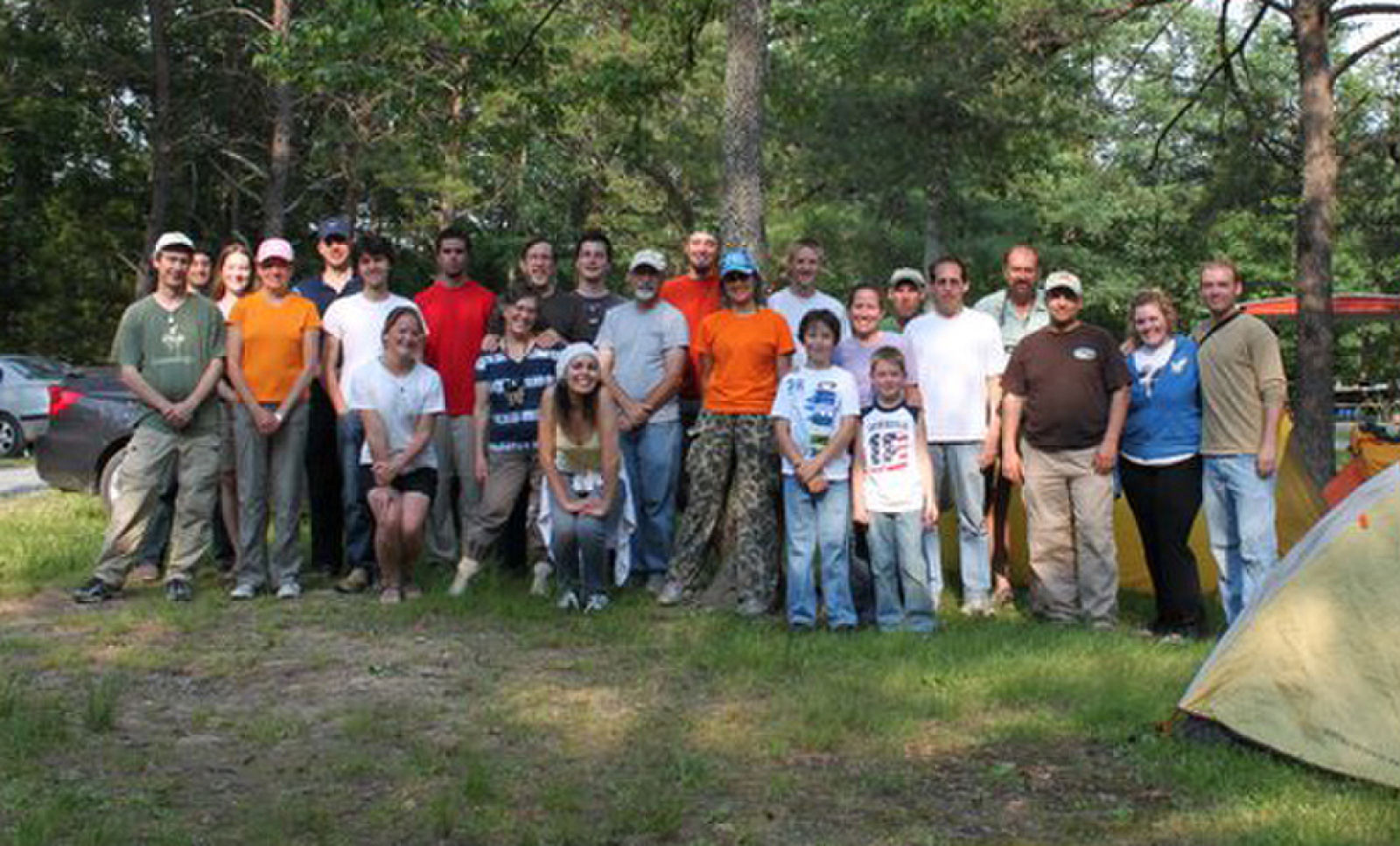
Participants (from left to right): 1, Charles Bartlett, organizer of the event (UD); 2, Cyrus Kasaaian (UD), 3, Ashley Kennedy (UD); 4, Julie Urban (NYSM); 5, Andrew Short (KU); 6, Jeremy Unseld (KU); 7, Crystal Maier (KU); 8, Clay McIntosch (KU); 9, Ruth Thompson (MC); 10, Vinton Thompson (MC); 11, Olivia Evangelista (NYSM & UFPR); 12, Keith Bayless (NCSU);13, Mark Rothschild (FAC); 14, Adam Bell (NYSM); 15, Andressa Paladini (NYSM); 16, Lawrence Barringer (UD); 17, Jessica Newbern (ESU) with 18, Reese Newbern, and 19, Aidan Uher; 20, Matthew Wallace (ESU); 21, Stuart McKamey (SEL); 22 Lewis Deitz (NCSU); 23, Anthony Gonzon (UD); 24, Nadine Jahn (ESU); 25, David Miracle (ESU).
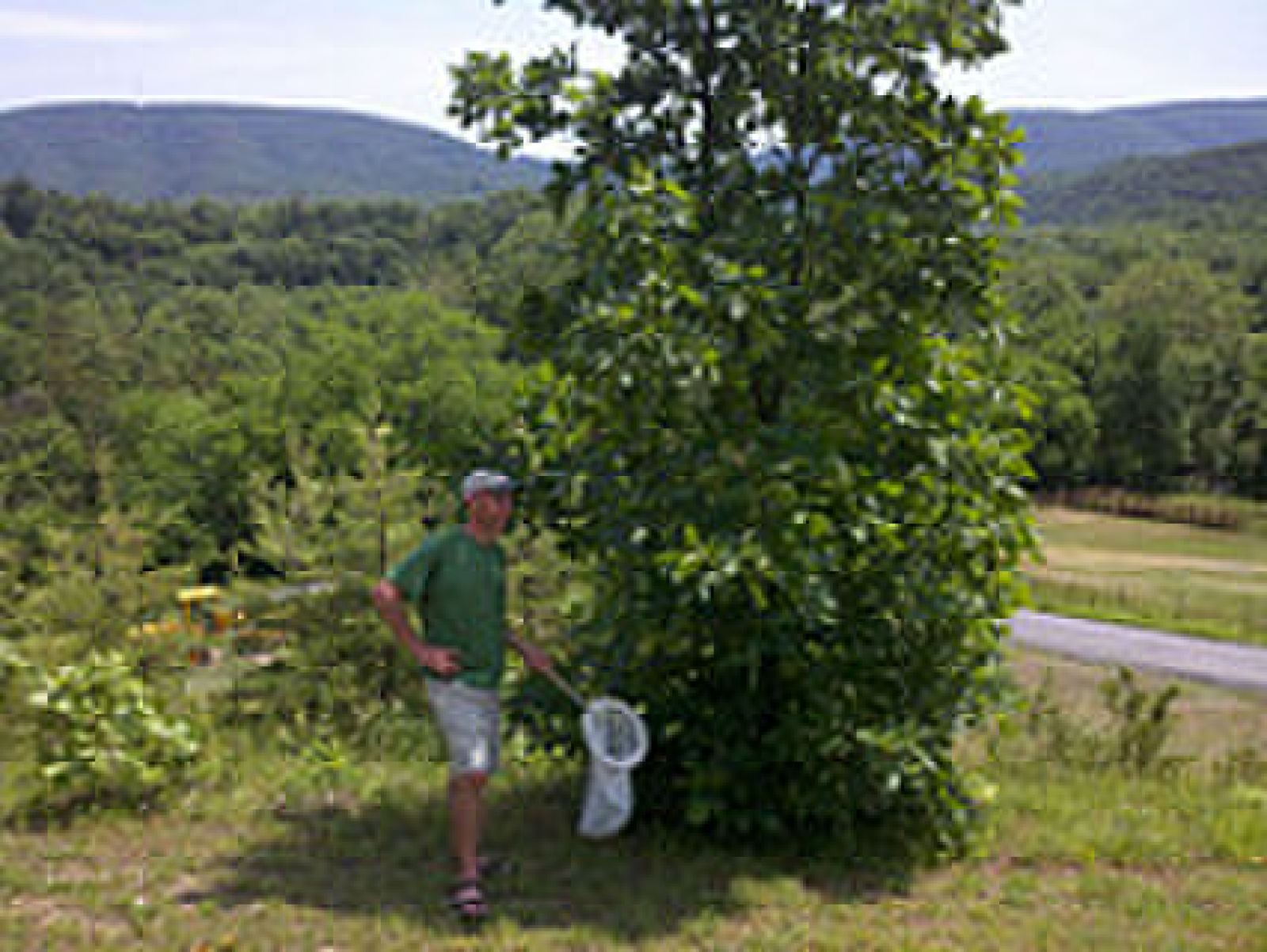
Above, Matt Wallace searches for treehoppers near St. Patricks Church, Little Orleans, Maryland. Fifty-six treehopper species (23 genera) are recorded from Little Orleans (Bartlett et al. 2008, Proc. Entomol. Soc. Wash. 110: 130-143). [L. L. Deitz]

Participants (from left to right): 1, Charles Bartlett, organizer of the event (UD); 2, Cyrus Kasaaian (UD), 3, Ashley Kennedy (UD); 4, Julie Urban (NYSM); 5, Andrew Short (KU); 6, Jeremy Unseld (KU); 7, Crystal Maier (KU); 8, Clay McIntosch (KU); 9, Ruth Thompson (MC); 10, Vinton Thompson (MC); 11, Olivia Evangelista (NYSM & UFPR); 12, Keith Bayless (NCSU);13, Mark Rothschild (FAC); 14, Adam Bell (NYSM); 15, Andressa Paladini (NYSM); 16, Lawrence Barringer (UD); 17, Jessica Newbern (ESU) with 18, Reese Newbern, and 19, Aidan Uher; 20, Matthew Wallace (ESU); 21, Stuart McKamey (SEL); 22 Lewis Deitz (NCSU); 23, Anthony Gonzon (UD); 24, Nadine Jahn (ESU); 25, David Miracle (ESU).

Above, Matt Wallace searches for treehoppers near St. Patricks Church, Little Orleans, Maryland. Fifty-six treehopper species (23 genera) are recorded from Little Orleans (Bartlett et al. 2008, Proc. Entomol. Soc. Wash. 110: 130-143). [L. L. Deitz]
Explore the Treehoppers Taxon Pages
2011-08-19
Users may now Search or Browse our Taxon Pages, which include content for all valid treehopper genera and higher taxa. For all taxonomic names now entered in our database, the Search option returns either a taxon page (where available) or a report with nomenclatural details. Taxon pages and nomenclatural data for the species group, now in preparation, will eventually be accessible under the valid genus (Browse option) or directly through the Search option. Images are still needed to illustrate 16 genera: Acanthicoides, Aleptocentrus, Ananthasubramanianum, Aspasiana, Centrobelus, Demanga, Gargarina, Gonoconophora, Insitor, Insitoroides, Matonotus, Megaloschema, Neocentrus, Neomachaerotypus, Occator, and Spathenotus. We thank our Treehoppers' Nomenclatural Database Team (especially Matt Yoder and Katja Seltmann), our Taxa Content Team, and all who contributed images, acoustic calls, and other assistance. [L.L. Deitz and M.S. Wallace, 19 August 2011]
New Analysis of Smiliini and Telamonini by M. S. Wallace
2011-10-03
Wallace, M. S. 2011. Morphology-based phylogenetic analysis of the treehopper tribe Smiliini (Hemiptera: Membracidae: Smiliinae), with reinstatement of the tribe Telamonini. Zootaxa 3047: 1–42.) [available online]
Forthcoming Paper
2011-10-25
An early view of the following work was published online on 14 Oct 2011.
Yoshizawa, K. 2011. The treehopper's helmet is not homologous with wings (Hemiptera: Membracidae). Systematic Entomology [~5 pages]
Yoshizawa, K. 2011. The treehopper's helmet is not homologous with wings (Hemiptera: Membracidae). Systematic Entomology [~5 pages]
Treehopper Specimens and Sculptures at the Montreal Insectarium
2011-11-29
Stephane Le Tirant, curator of the Montreal Insectarium, has a passion for treehoppers and provided a link to a list of the Insectarium's holdings of Membracidae. The Insectarium was recently reopened with a new permanent exhibit, including larger than life treehopper sculptures.
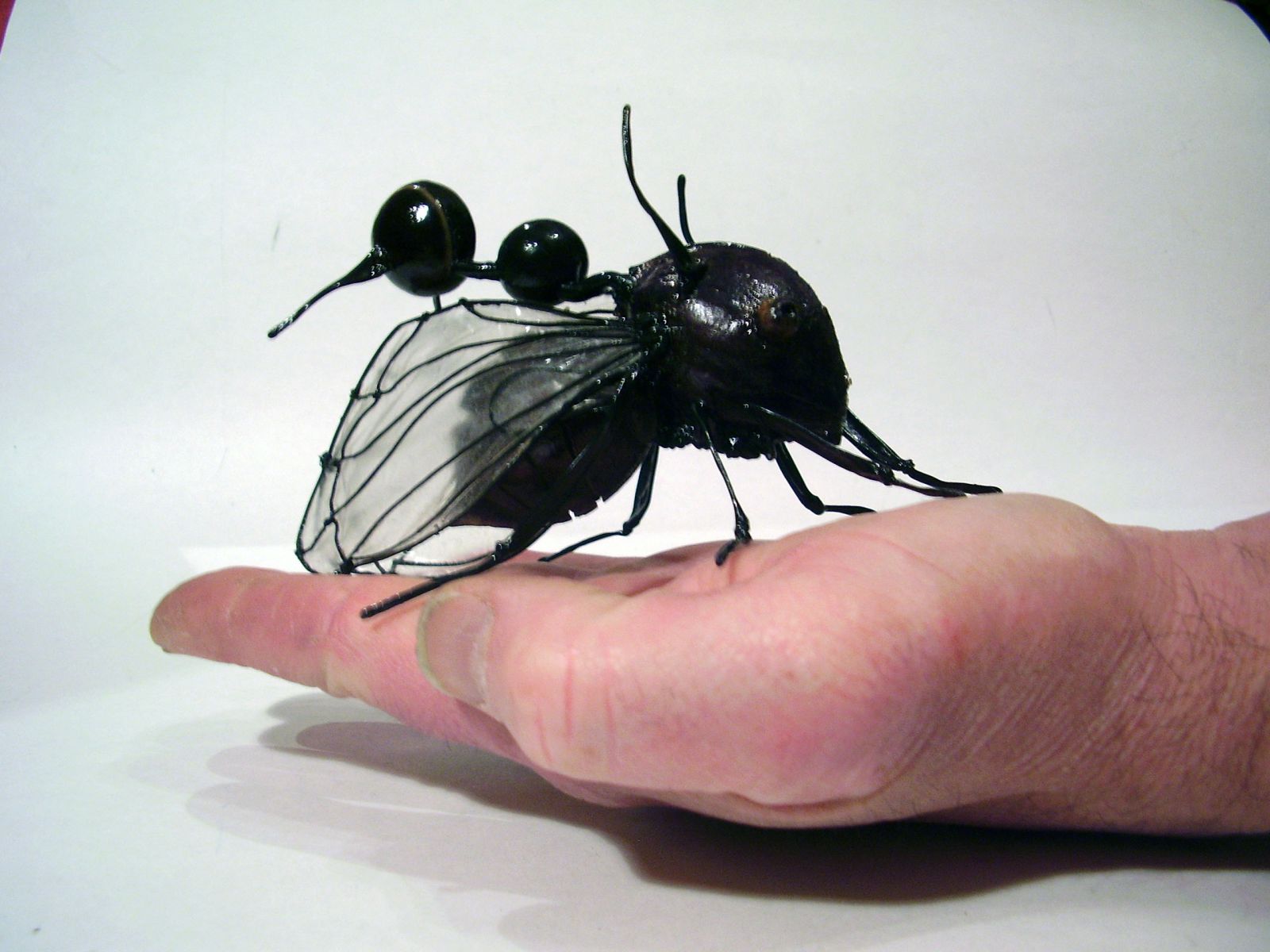
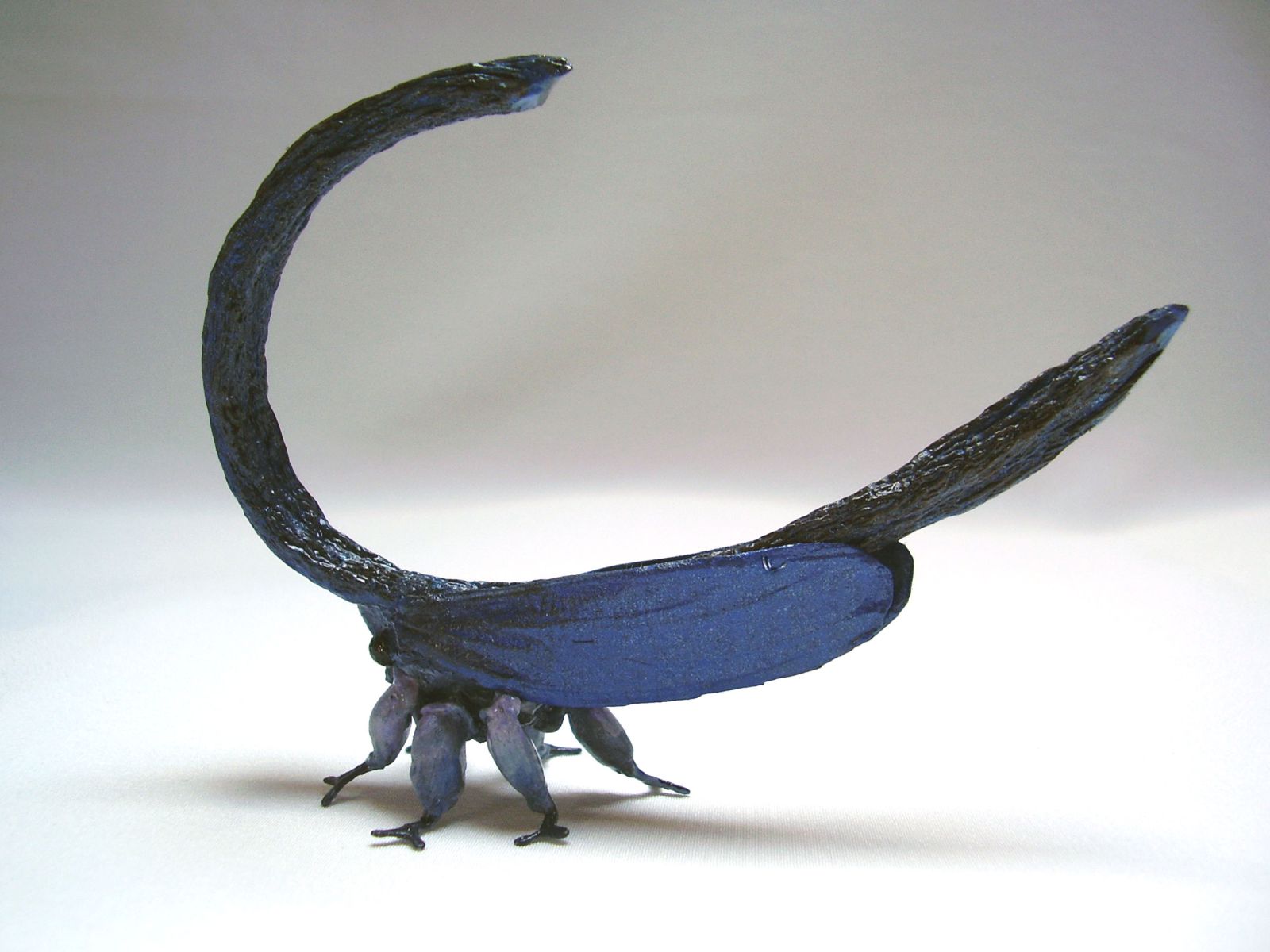
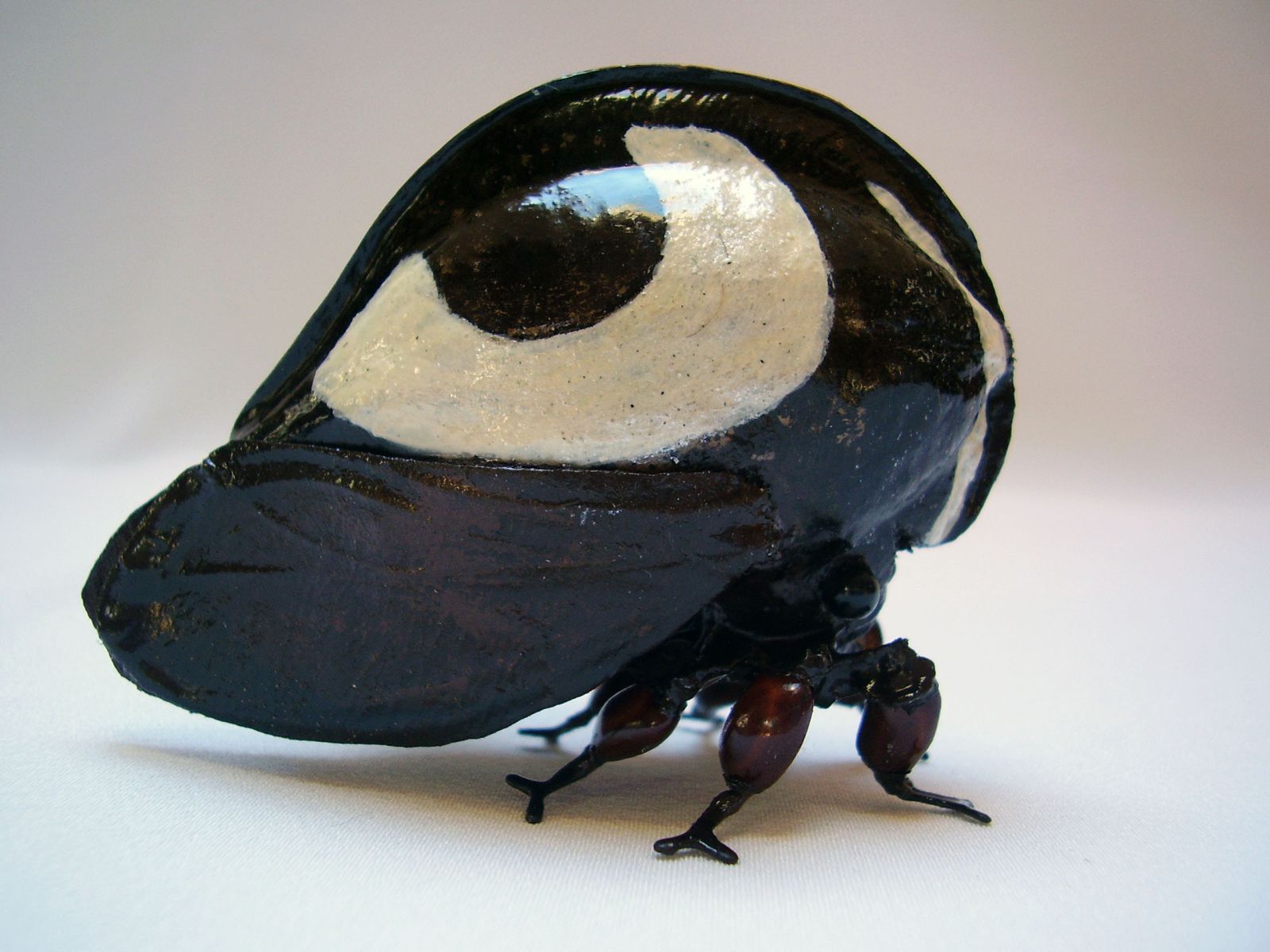
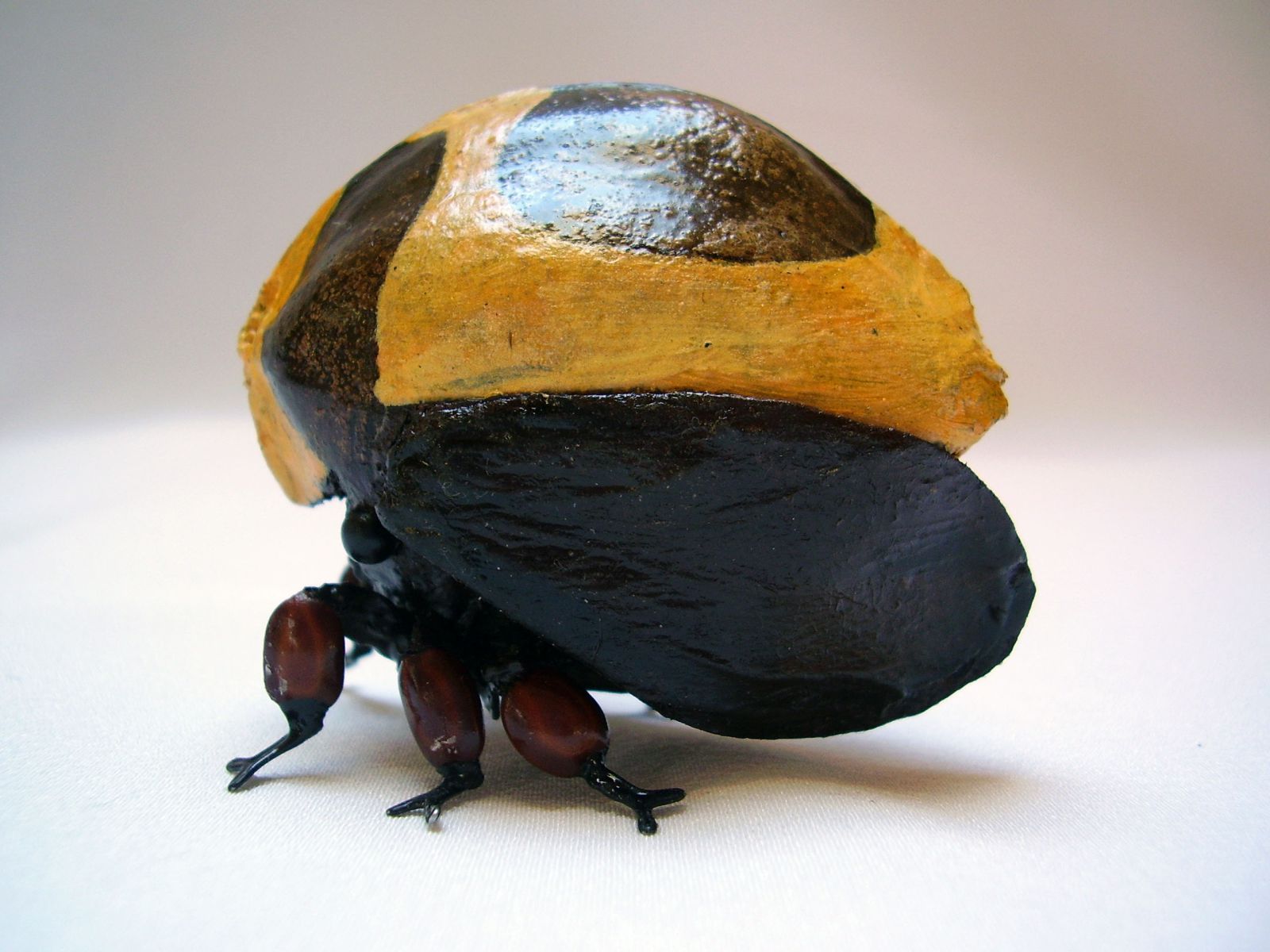




Robert Oelman's Extraordinary Images
2011-12-14
We are most grateful to nature photographer Robert Oelman for permission to include many of his amazing images of Neotropical treehoppers on our site. Robert's photos of treehoppers and other natural wonders may also be viewed at http://naturephotography.robertoelman.com/ (see the galleries: "Peruvian Amazon Insects & More" and "Treehoppers & More"); http://robertoelman.com/#/insects (see Hemiptera); and http://www.flickr.com/photos/roboelman/sets/72157624416166150/.
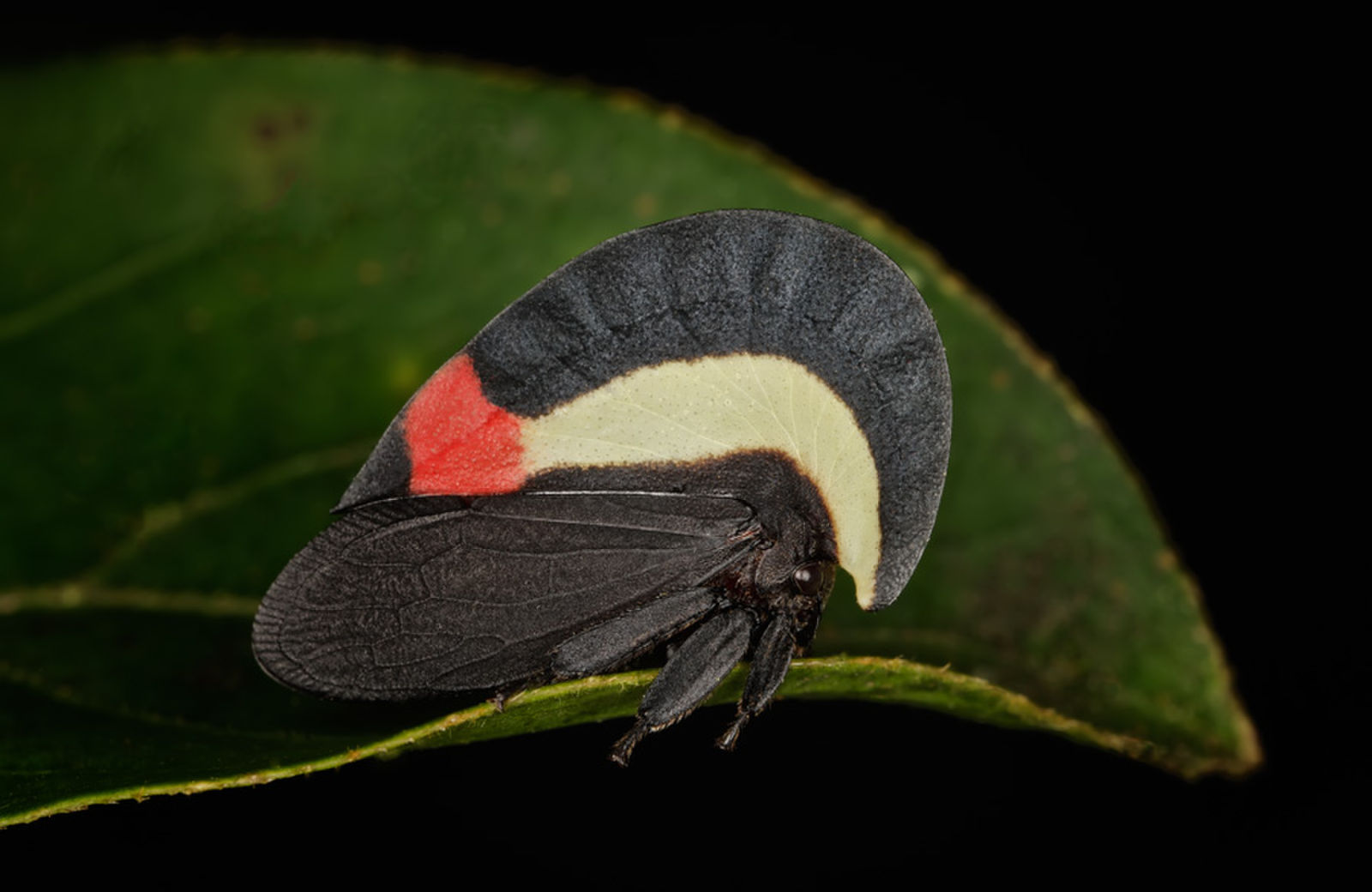
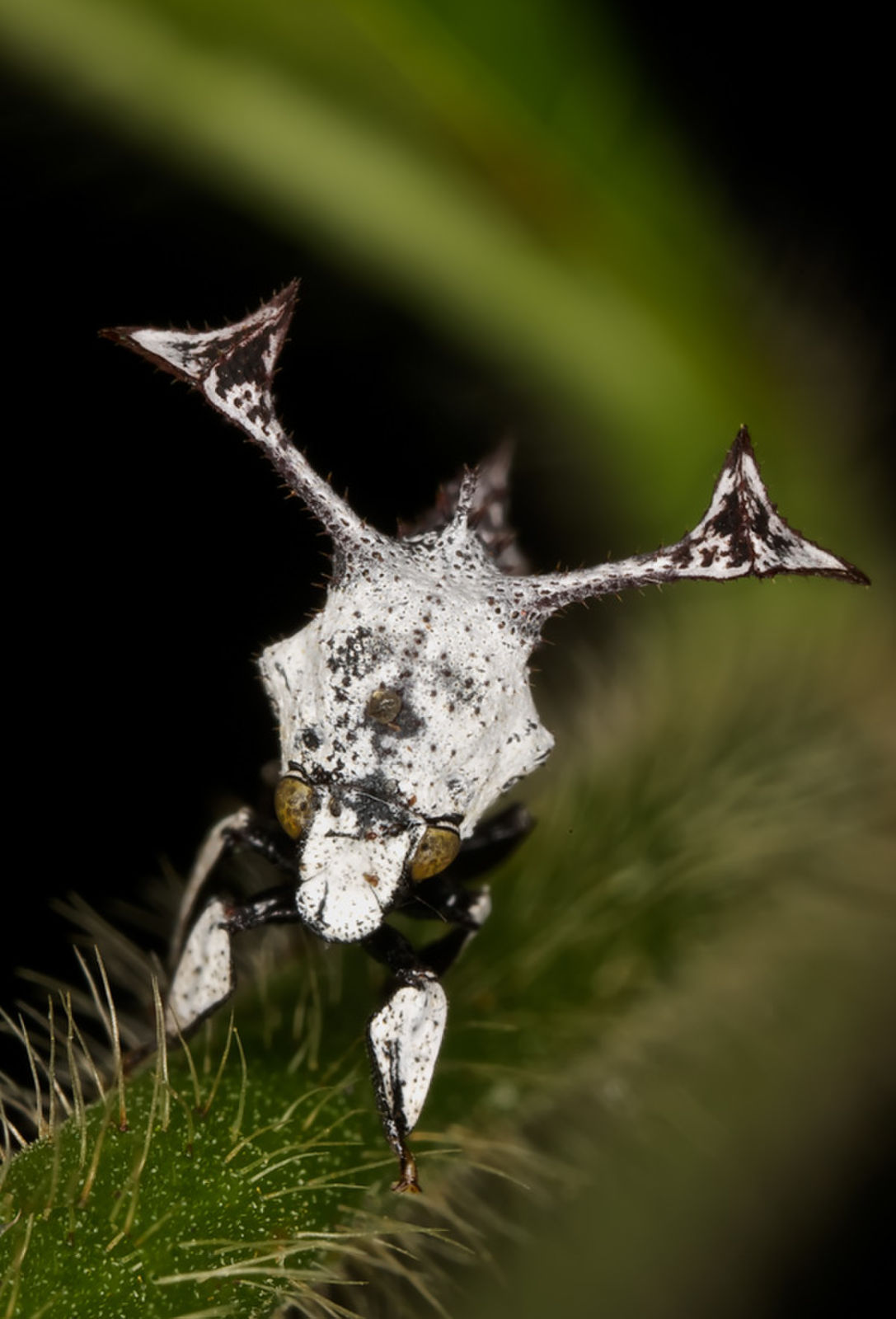
© Copyright 2011, Robert Oelman.


© Copyright 2011, Robert Oelman.
Latest on the Anatomy of the Treehoppper Pronotum
2012-01-09
A new article by Miko et al. (2012) provides further morphological evidence rebutting the work of Prud'homme et al. (2011), who suggested that the "pronotal" modifications of treehoppers may arise from fused appendages of the prothorax, serially homologous with the wings of the meso- and metathorax. The new paper, which includes an interactive image depicting the anatomy of the treehopper pronotum, concurs with Yoshizawa (2011) in concluding that the prothoracic superstructure in treehoppers does not correspond to a pair of fused wings, but represents the entire prothorax, except the forelegs.
Preview "Aliens of the Amazon: Treehoppers"
2012-01-15
A trailer for the film Aliens of the Amazon: Treehoppers may now be downloaded on online. This award-winning documentary was featured at the 2010 Treehopper Gathering in Little Orleans, Maryland, as noted in our news item on the event.
Congratulations to Dra. Evangelista
2012-03-13
We are delighted to report that Olivia Evangelista successfully defended her doctoral thesis "Systematics and Phylogenetic Analysis of the Treehopper Subfamily Heteronotinae Goding, 1926 (Hemiptera, Auchenorrhyncha, Membracidae)" on 23 February 2012. Working under the direction of Albino M. Sakakibara (Departamento de Zoologia, Universidade Federal do Paraná, Curitiba, Paraná, Brazil), Olive investigated phylogenetic relationships within Heteronotinae based on a combination of morphological and molecular data. The latter included six nuclear and mitochondrial markers (28S, H2A, H3, Wg, COI, ND1), which she compiled in Jason Cryan's lab at the New York State Museum, Albany. A major contributor to the Treehoppers website, Olive provided most of our content on the subfamily Heteronotinae. We are thrilled that Dr. Evangelista is part of our Team.
20th Annual Treehopper Gathering: 1-3 June 2012, Little Orleans, Maryland
2012-04-03
Join the 20th Annual Treehopper Gathering, 1-3 June 2012 (arrive Friday, depart Sunday), Little Orleans Campground, Little Orleans, Maryland. This casual event offers an opportunity to chat and collect with others passionate about treehoppers and related insects.
To register or obtain further information, contact Charles Bartlett. Campsites are somewhat limited, so please register with Charles if you wish to camp with our group. Participants are expected to provide their own tents, food, and camping gear, and to share in the cost of the group campground registration and the group meal provided on Saturday evening.
To register or obtain further information, contact Charles Bartlett. Campsites are somewhat limited, so please register with Charles if you wish to camp with our group. Participants are expected to provide their own tents, food, and camping gear, and to share in the cost of the group campground registration and the group meal provided on Saturday evening.
Zoom in on Germar's Collection
2012-04-04
Thanks to the curators of the Benedict Dybowski Zoological Museum (Lviv National University, Ukraine), zoomable digital images of the Ernst Friedrich Germar Collection are now available online. For a number of years, this historically significant collection was thought to have been destroyed in World War II.
Celebrating Treehoppers for 20 Years
2012-06-11
The Annual Treehopper Gathering celebrated its 20th anniversary in Little Orleans, Maryland, on 2 June 2012. Charles Bartlett organized this year's event, which included 25 participants (Figs. 1 & 4). Four were among the original nine participants at the first gathering in Delaware (Fig. 2). Kelley Tilmon created a limited edition T-shirt just for the anniversary (Fig. 3), and Anthony Gonzon provided his delicious deep-fried turkey.
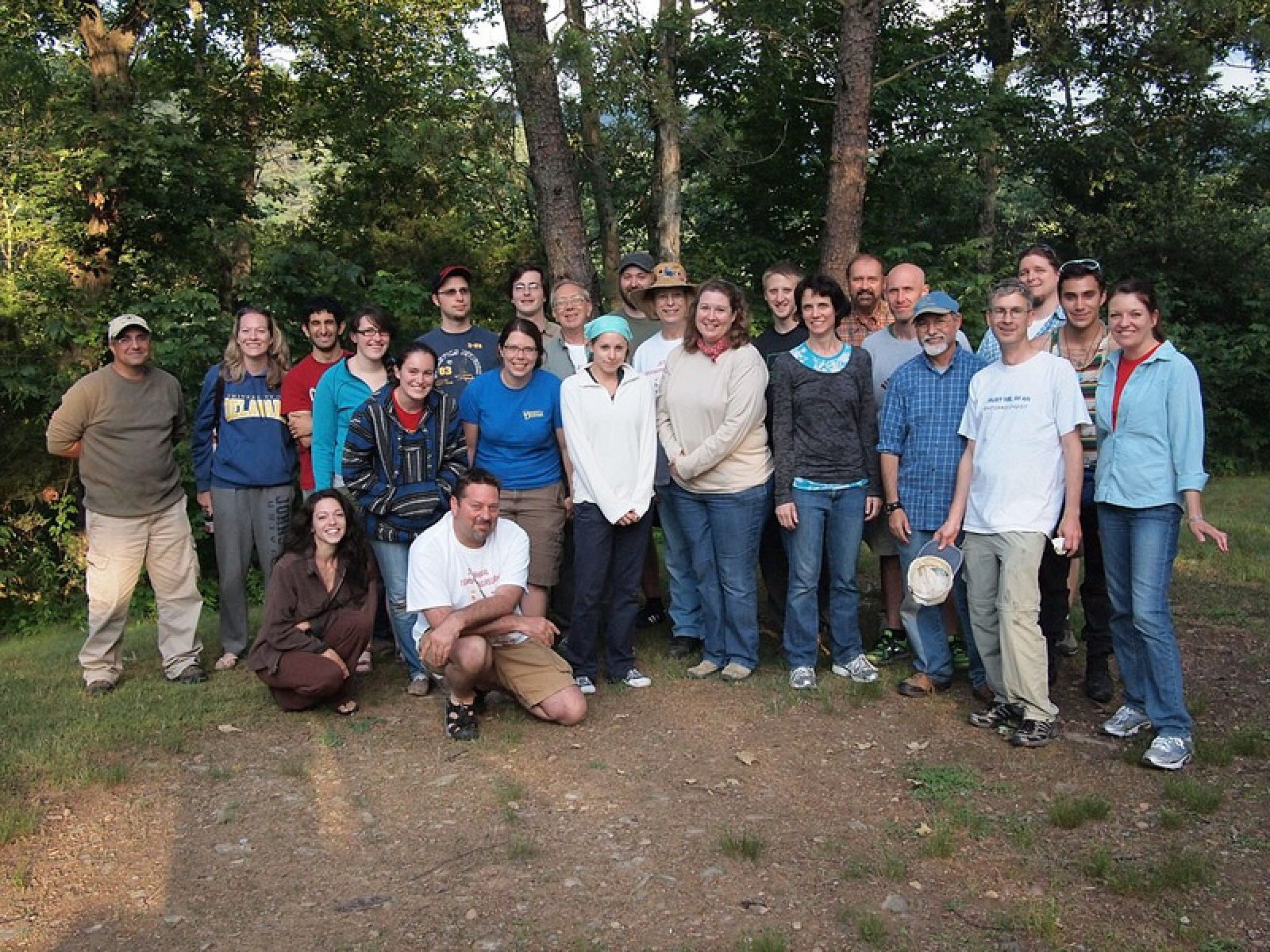
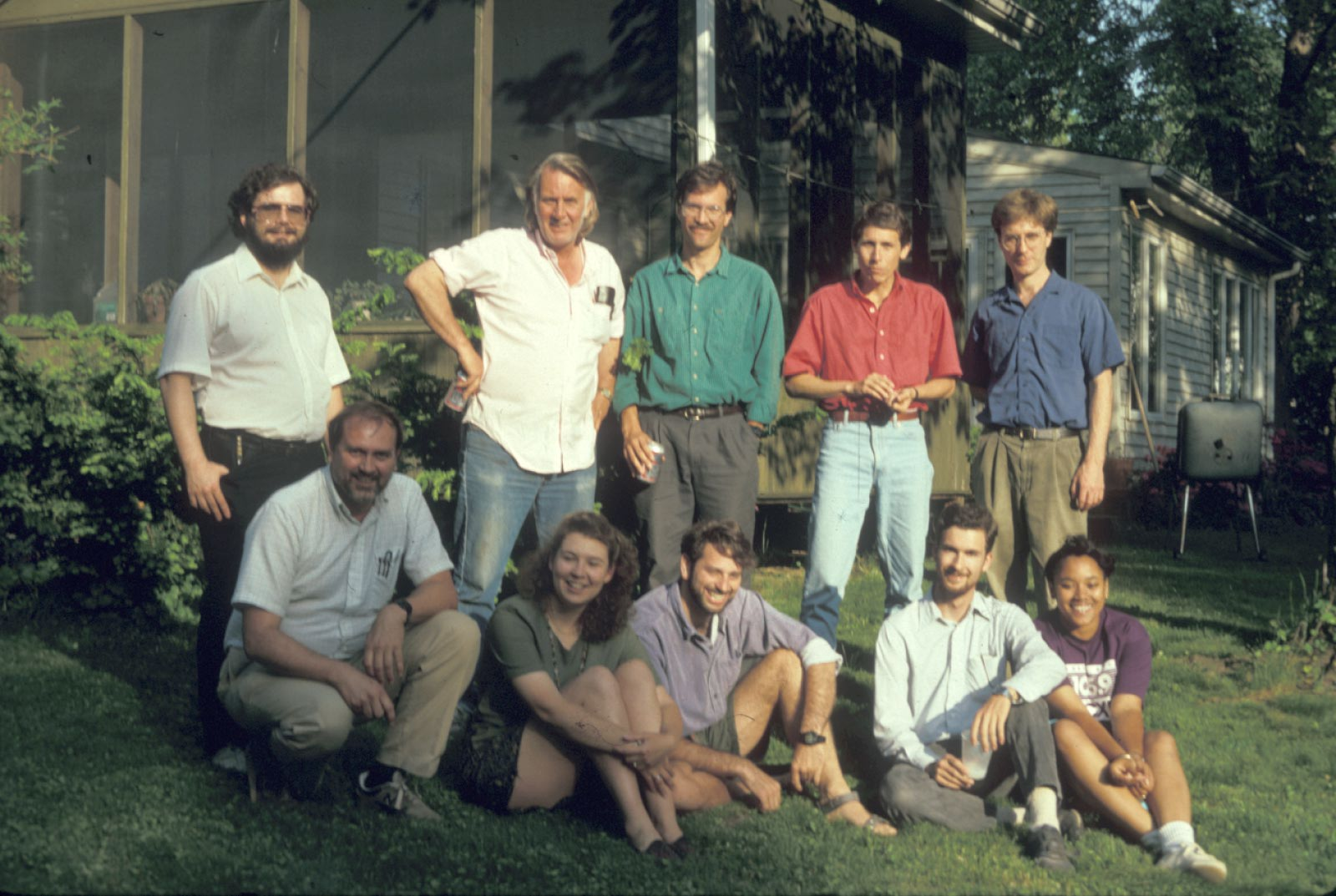
Fig. 1, 20th Gathering (left to right): back row, Anthony Gonzon, Ashley Kennedy, Cyrus Kasaaian, Meghan Irvine, Thomas Rounsville, Keith Bayless, Dennis Kopp, Adam Bell, Dawn Flynn, Lawrence Barringer, Lewis Deitz, Matt Wallace, Thomas R. Huff; middle row, Claire Ciafré, Katie Weglarz, D'Orsay Mancuso, Kelley Tilmon, Katja Seltmann, Mark Rothschild, Charles Bartlett, Brendan Morris, Julie Urban; front, Nikki January, Jason Cryan [see also Yon Visell, below, 4]. Fig. 2, First Gathering, Tom Wood's home, near the University of Delaware, 14 May 1993: top row, (left to right): Tom Greene, Tom Wood, Rex Cocroft, Stuart McKamey, Chris Dietrich; bottom row, Lewis Deitz, Kelley Tilmon, Jason Cryan, Charles Bartlett, Dianna McPherson [Bartlett].

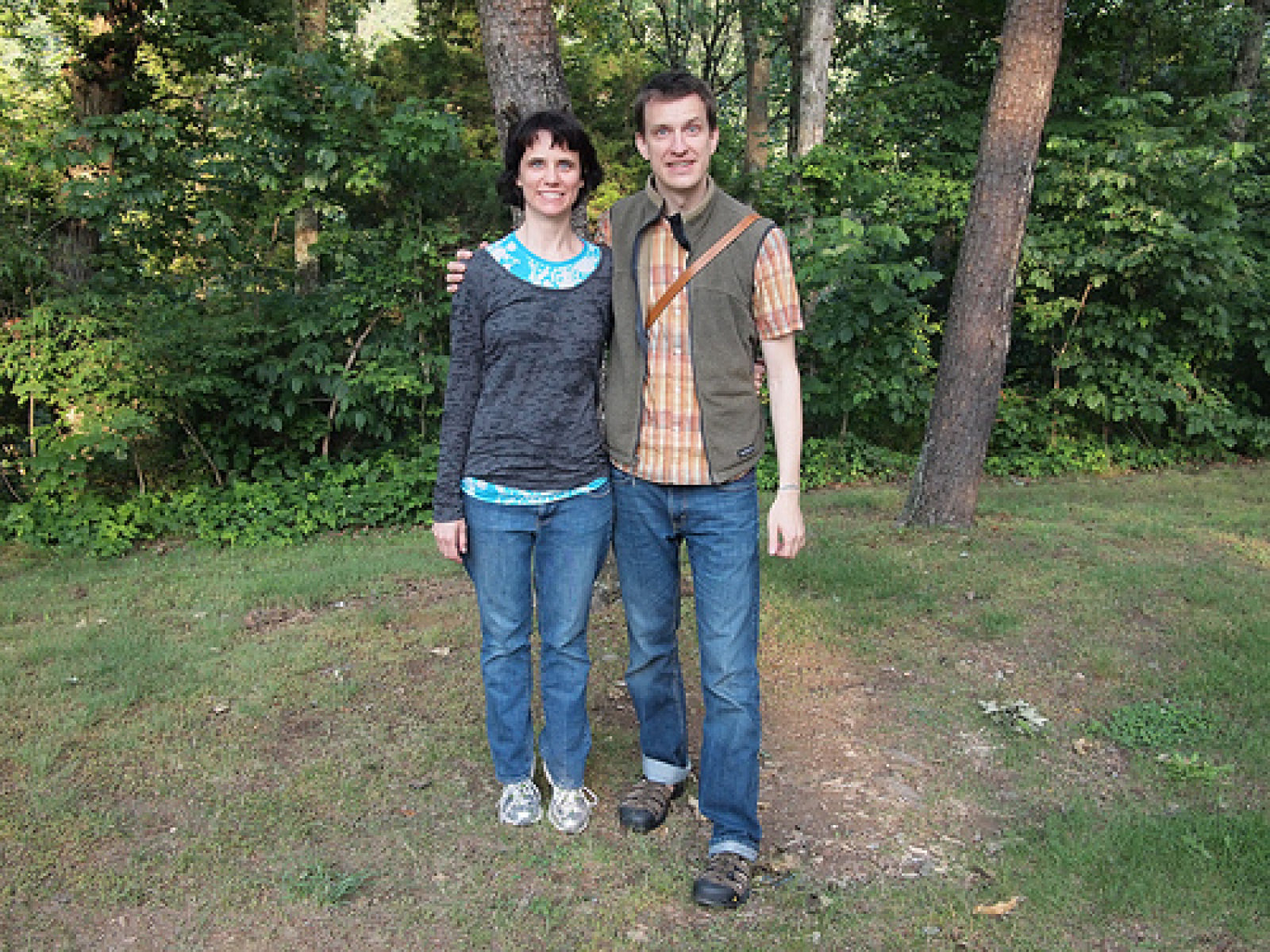
Fig. 3, T-shirt design by Kelley Tilmon (with help from William Weeks Fowler). Fig. 4, Katja Seltmann and Yon Visell (photographer for Fig. 1).
Among the prize specimens collected at Little Orleans this year are adults and nymphs of Telamona ampelopsidis and a nymph of T. collina. Items of note from attendees include two treehopper checklists in press (Panama checklist by Dawn Flynn; Nearctic list by Lew Deitz & Matt Wallace) and several recent appointments: North Carolina Museum of Natural Sciences, Raleigh (Jason Cryan, Deputy Museum Director of Research & Collections, and Julie Urban, Assistant Director, Genomics & Microbiology Laboratory, Nature Research Center); Tri-Trophic Databasing Project, American Museum of Natural History (Katja Seltman, Project Manager [Charles Bartlett is a Co-PI on this NSF-funded project); University of Illinois (Brendan Morris, new M.S. student to study Caribbean treehoppers with Chris Dietrich); and National Museum of Natural History, Washington, D.C. (Dennis Kopp, new volunteer curator in Hemiptera section [recently retired from USDA/NIFA]).


Fig. 1, 20th Gathering (left to right): back row, Anthony Gonzon, Ashley Kennedy, Cyrus Kasaaian, Meghan Irvine, Thomas Rounsville, Keith Bayless, Dennis Kopp, Adam Bell, Dawn Flynn, Lawrence Barringer, Lewis Deitz, Matt Wallace, Thomas R. Huff; middle row, Claire Ciafré, Katie Weglarz, D'Orsay Mancuso, Kelley Tilmon, Katja Seltmann, Mark Rothschild, Charles Bartlett, Brendan Morris, Julie Urban; front, Nikki January, Jason Cryan [see also Yon Visell, below, 4]. Fig. 2, First Gathering, Tom Wood's home, near the University of Delaware, 14 May 1993: top row, (left to right): Tom Greene, Tom Wood, Rex Cocroft, Stuart McKamey, Chris Dietrich; bottom row, Lewis Deitz, Kelley Tilmon, Jason Cryan, Charles Bartlett, Dianna McPherson [Bartlett].


Fig. 3, T-shirt design by Kelley Tilmon (with help from William Weeks Fowler). Fig. 4, Katja Seltmann and Yon Visell (photographer for Fig. 1).
Among the prize specimens collected at Little Orleans this year are adults and nymphs of Telamona ampelopsidis and a nymph of T. collina. Items of note from attendees include two treehopper checklists in press (Panama checklist by Dawn Flynn; Nearctic list by Lew Deitz & Matt Wallace) and several recent appointments: North Carolina Museum of Natural Sciences, Raleigh (Jason Cryan, Deputy Museum Director of Research & Collections, and Julie Urban, Assistant Director, Genomics & Microbiology Laboratory, Nature Research Center); Tri-Trophic Databasing Project, American Museum of Natural History (Katja Seltman, Project Manager [Charles Bartlett is a Co-PI on this NSF-funded project); University of Illinois (Brendan Morris, new M.S. student to study Caribbean treehoppers with Chris Dietrich); and National Museum of Natural History, Washington, D.C. (Dennis Kopp, new volunteer curator in Hemiptera section [recently retired from USDA/NIFA]).
Treehoppers featured on ID Source
2012-07-17
The Treehoppers website is currently featured on ID Source, a searchable database for locating online resources useful in identifying plant pests, diseases, and weeds. ID Source is published by Colorado State University as part of a cooperative agreement with the Center for Plant Health, Science and Technology (USDA APHIS PPQ). By helping those involved in plant protection find needed identification tools, ID Source supports the protection of U.S. agriculture and natural resources from the entry and spread of invasive plant pests.
Maruyama's 2011 book "Treehoppers: Incredible Insects"
2012-08-03
Maruyama, M. 2011. Treehoppers: Incredible Insects. Nature Editors, Gentosha, Japan. 80 pp. ISBN 978-4-344-02011-5. [in Japanese; figures with Latin scientific names including genus-species, tribe, and subfamily]
This attractive, full color book is an artistic celebration of the family Membracidae. Its astonishing images document nearly 100 New and Old World genera, representing 34 tribes, and serve as a model for high quality treehopper photography.
New Treehopper Checklists for Panama and the Nearctic Region
2012-08-16
New lists of the treehoppers of the Panama (Flynn 2012) and the Nearctic region (Deitz and Wallace 2012) show an overlap of fewer than 30 species, highlighting the distinctness of the Neotropical and Nearctic faunas.
Flynn, D. J. 2012. Checklist of treehoppers of Panama (Hemiptera: Membracidae) with a list of checklists and keys to the Nearctic and Neotropical fauna. Zootaxa 3405:35-63.
This checklist, the first for Panama, lists a total of 97 treehopper genera, 269 species, and 2 subspecies, including Flynn's new records. It also provides guides to species checklists and keys for various geographic areas within the Neotropical and Nearctic regions.
Deitz, L. L.; Wallace, M. S. 2012. Richness of the Nearctic treehopper fauna (Hemiptera: Aetalionidae and Membracidae. Zootaxa 3423: 1-26.
This overview of the taxonomic and regional diversity of the Nearctic treehopper fauna gives the Nearctic distribution for 280 species recorded from the region and documents the species richness of each Nearctic subregion, state, and province. One tribe, 16 genera, and 195 species are listed as Nearctic endemics.
Refinements to Taxon Searches
2012-08-20
We happily report that recent fine-tuning should vastly expedite navigating and searching our Taxon Pages. Enjoy the improvements.
Lewis Bartholomew Woodruff
2012-09-14
Lewis Bartholomew Woodruff, who described more than 15 treehopper species (mostly in the genera Cyrtolobus and Ophiderma), is featured in a recent note from the Tri-Trophic Thematic Collections Network. Yale University Library's Manuscripts and Archives includes a Guide to the Woodruff Family Papers. Z.P. Metcalf's 1944 Bibliography of the Homoptera (Auchenorhyncha) incorrectly attributed Woodruff's five publications on membracids to "Lois Bartolomew Woodruff."
Patience Please
2012-11-05
The Treehoppers website may be down for a time in the next few weeks due to essential work on the mx system. Know that folks are doing their best to complete the work before the end of November and to make this process as seamless as possible. Meanwhile, we appreciate your patience should things get a bit bumpy. [L.L. Deitz and M.S. Wallace]
T. K. Wood’s Treehopper Collection at Cornell University
2012-11-16
A news item from the Cornell University Insect Collection reports that the Thomas K. Wood Collection is now fully integrated into the University Insect Collection, bringing Cornell’s overall collection of Membracidae to 68 museum drawers. A complete listing of Cornell’s 497 membracid species is available online.
New Nearctic Records of Gargara genistae
2012-11-30
Wheeler, A. G., Jr., and E. R. Hoebeke. 2012. Gargara genistae (F.) (Membracidae) and Dictyonota fuliginosa Costa (Tingidae): new records of two immigrant, Scotch broom-feeding hemipterans in western North America. Proceedings of the Entomological Society of Washington 114(1):152-158.
This work includes new records of G. genistae from Canada (British Columbia: Vancouver Island) and the US: (Oregon : 5 counties; Washington: 6 counties). It also indicates that Metcalf and Wade's 1965 catalog record of the species for "Maine" (citing Poisson and Monguillon, 1931) refers to Le Maine, a former province of France. Thus, Deitz and Wallace's (2012) Nearctic records for G. genistae should be updated to: "Introduced: USA: Central & Eastern States: CT, NJ; Northwestern States: OR, WA. CANADA: Western Provinces: BC; [? Central & Eastern Provinces: ON]."
This work includes new records of G. genistae from Canada (British Columbia: Vancouver Island) and the US: (Oregon : 5 counties; Washington: 6 counties). It also indicates that Metcalf and Wade's 1965 catalog record of the species for "Maine" (citing Poisson and Monguillon, 1931) refers to Le Maine, a former province of France. Thus, Deitz and Wallace's (2012) Nearctic records for G. genistae should be updated to: "Introduced: USA: Central & Eastern States: CT, NJ; Northwestern States: OR, WA. CANADA: Western Provinces: BC; [? Central & Eastern Provinces: ON]."
Treehopper Videos
2012-12-13
Several fascinating videos of treehoppers are available online, especially on YouTube. Please enjoy some of our favorites, but be advised that the identifications and commentaries have not been verified for scientific accuracy.
Treehopper Eggs Hatching
Publilia Molting to Adult (Stefano Di Criscio)
Treehopper Metamorphosis
Bocydium Signaling
Ennya Signaling
Treehoppers
Treehoppers of Costa Rica
Membracidae (INBio Costa Rica)
Umbonia Adult and Nymphs
Treehopper Eggs Hatching
Publilia Molting to Adult (Stefano Di Criscio)
Treehopper Metamorphosis
Bocydium Signaling
Ennya Signaling
Treehoppers
Treehoppers of Costa Rica
Membracidae (INBio Costa Rica)
Umbonia Adult and Nymphs
Are Treehoppers Neotenous Leafhoppers?
2013-01-08
See Andy Hamilton's recent, thought-provoking article entitled: "Are Treehoppers Neotenous Leafhoppers?" (2012, American Entomologist, 58: 224-232).
New Interpretation of Paraneopteran Wing Venation
2013-01-10
For a new interpretation of the wing venation of treehoppers and related insects, see: Nel, A.; Prokop, J.; Nel, P.; Grandcolas, P.; Huang, D.-Y.; Roques, R.; Guilbert, E.; Dostál, O.; Szwedo, J. 2012a. Traits and evolution of wing venation pattern in paraneopteran insects. Journal of Morphology 273: 480-506.
New Work on the Tribe Talipedini
2013-02-01
Sakakibara, A. M. 2012. Taxonomic reassessment of the treehopper tribe Talipedini with nomenclatural changes and descriptions of new taxa (Hemiptera: Membracidae: Membracinae). Zoologia (Curitiba) 29 (6): 563–576. [available online]
Sakakibara notes a new unique feature of the Talipedini: the presence of latero-apical carinae on the posterior pronotal process. As redefined, this tribe includes 3 genera: Erechtia Walker, 1858 (Trinarea Goding, 1926, becomes a junior synonym), with 6 species (3 new); Pseuderechtia, new genus, with 1 species; and Talipes Deitz, 1975 (reinstated as valid), with 2 species. Other notable nomenclatural changes include the reinstatement of the genus Tropidoscyta Stål, 1869 (tribe Membracini) and the placement of 24 species previously included in Erechtia as of uncertain position within Membracini.
Sakakibara notes a new unique feature of the Talipedini: the presence of latero-apical carinae on the posterior pronotal process. As redefined, this tribe includes 3 genera: Erechtia Walker, 1858 (Trinarea Goding, 1926, becomes a junior synonym), with 6 species (3 new); Pseuderechtia, new genus, with 1 species; and Talipes Deitz, 1975 (reinstated as valid), with 2 species. Other notable nomenclatural changes include the reinstatement of the genus Tropidoscyta Stål, 1869 (tribe Membracini) and the placement of 24 species previously included in Erechtia as of uncertain position within Membracini.
New Data on Jumping in Treehoppers
2013-02-18
Burrows, M. 2013a. Jumping mechanisms of treehopper insects (Hemiptera, Auchenorrhyncha, Membracidae). Journal of Experimental Biology 216:788-799.
[online abstract; pdf (by subscription)]. Based on an analysis of high speed images of eight membracid species, the author concludes that jumping must involve "a power amplification mechanism in a catapult-like action."
Linnean Insect Collection Online
2013-02-22
Thanks to efforts of the Linnean Society of London, one can now examine the historically important collections of Carl Linnaeus online. His treehopper specimens are placed under the genus Cicada.
Of six treehopper species described by Linnaeus (see below), Cicada cornuta and C. foliata are represented in the collection, which also includes a mixed series of treehopper specimens identified as "Cicada carinata, a species described by Forster 1771a: 67 [now Entylia carinata (Forster)]."
Cicada cornuta Linnaeus 1758a: 435 [now Centrotus cornutus (Linneaus)]
Cicada crux Linnaeus 1758a: 435 [now Hemikyptha crux (Linneaus]
Cicada foliata Linnaeus 1758a: 435 [now Membracis foliata (Linnaeus)]
Cicada fronditia Linnaeus 1758a: 435 [now Stegaspis fronditia (Linnaeus)]
Cicada reticulata Linnaeus 1758a: 436 [now Aetalion reticulatum (Linnaeus)
Cicada squamigera Linnaeus 1758a: 435 [now Enchenopa squamigera (Linnaeus)]
Other Linnean species that resemble treehoppers are: Cicada aurita Linneaus, now placed in the family Cicadellidae [Ledra aurita (Linneaus)] and Cicada rhombea Linnaeus, now placed in the orthopteran family Tetrigidae [Phyllotetttix rhombeus (Linneaus)].
[L. L. Deitz, 22 February 2013]
Of six treehopper species described by Linnaeus (see below), Cicada cornuta and C. foliata are represented in the collection, which also includes a mixed series of treehopper specimens identified as "Cicada carinata, a species described by Forster 1771a: 67 [now Entylia carinata (Forster)]."
Cicada cornuta Linnaeus 1758a: 435 [now Centrotus cornutus (Linneaus)]
Cicada crux Linnaeus 1758a: 435 [now Hemikyptha crux (Linneaus]
Cicada foliata Linnaeus 1758a: 435 [now Membracis foliata (Linnaeus)]
Cicada fronditia Linnaeus 1758a: 435 [now Stegaspis fronditia (Linnaeus)]
Cicada reticulata Linnaeus 1758a: 436 [now Aetalion reticulatum (Linnaeus)
Cicada squamigera Linnaeus 1758a: 435 [now Enchenopa squamigera (Linnaeus)]
Other Linnean species that resemble treehoppers are: Cicada aurita Linneaus, now placed in the family Cicadellidae [Ledra aurita (Linneaus)] and Cicada rhombea Linnaeus, now placed in the orthopteran family Tetrigidae [Phyllotetttix rhombeus (Linneaus)].
[L. L. Deitz, 22 February 2013]
Treehopper Vibes: David Rothenberg's Bug Music
2013-03-06
Treehopper vibes are featured in David Rothenberg's new book "Bug Music: How Insects Gave Us Rhythm and Noise" and album "Bug Music: the CD." Rothenberg is a professor of philosophy and music at the New Jersey Institute of Technology in Newark, New Jersey.
Eye-Popping Treehopper Design
2013-03-08
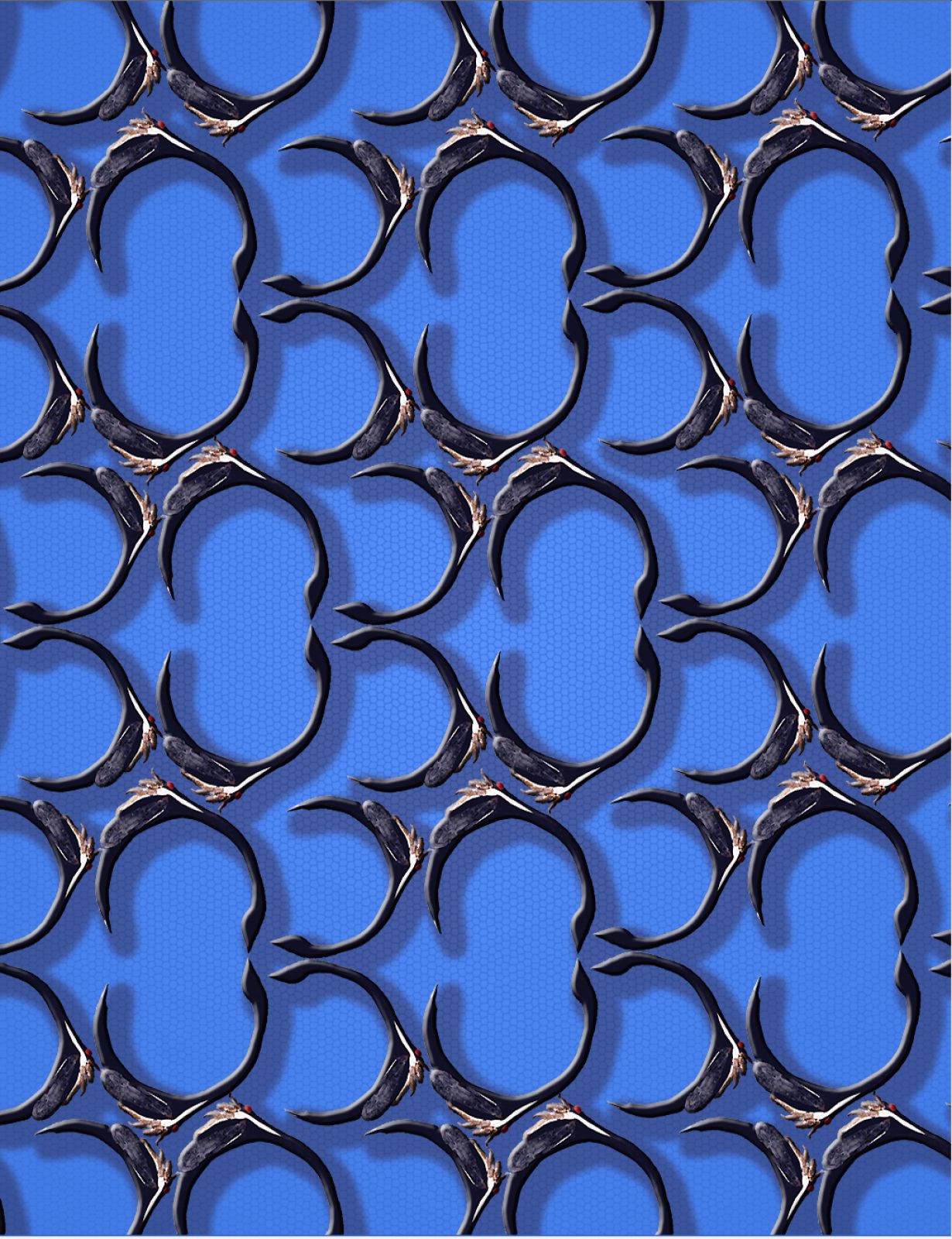 © Copyright 2013, Katja Seltmann.
© Copyright 2013, Katja Seltmann.
Katja Seltmann, multi-talented member of our TREEHOPPERS team, created this stunning treehopper-inspired design for the cover of the 2013 Entomological Collections Network program. She is currently one of the officers and organizers of the ECN. We are most grateful to Katja for sharing her wonderful artwork, which is based on the genus Cladonota. Where and when can we order the wall paper, posters, and gift-wrap paper?
Join the 2013 Treehopper Gathering, Little Orleans, Maryland
2013-04-03
The 21st Annual Treehopper Gathering is scheduled for 31 May to 2 June 2013 (arrive Friday, depart Sunday), Little Orleans Campground, Little Orleans, Maryland. This casual event offers an opportunity to chat and collect with others passionate about treehoppers and related insects.
To register or obtain further information, contact Charles Bartlett. Campsites are somewhat limited, so please register with Charles if you wish to camp with our group. Participants are expected to provide their own tents, food, and camping gear, and to share in the cost of the group campground registration and the group meal provided on Saturday evening.
To register or obtain further information, contact Charles Bartlett. Campsites are somewhat limited, so please register with Charles if you wish to camp with our group. Participants are expected to provide their own tents, food, and camping gear, and to share in the cost of the group campground registration and the group meal provided on Saturday evening.
Dr. Evangelista's Research on Heteronotinae
2013-04-22
Brazilian treehopper specialist Dr. Olivia Evangelista recently accepted a postdoctoral appointment at the Museu de Zoologia da Universidade de São Paulo, where she is continuing her research on the treehopper subfamily Heteronotinae. Currently, she is compiling needed DNA data in the molecular lab of Dr. Julie Urban (Nature Research Center, North Carolina Museum of Natural Science, Raleigh). While in Raleigh, Olivia presented two fantastic talks on treehoppers, including one (hosted by Science Comedian Brian Malow) inside the dome of the Center's Daily Planet. Images © Copyright 2013, Julie M. Urban, except 2nd and 4th of the smaller images © Copyright 2013, Jason R. Cryan.
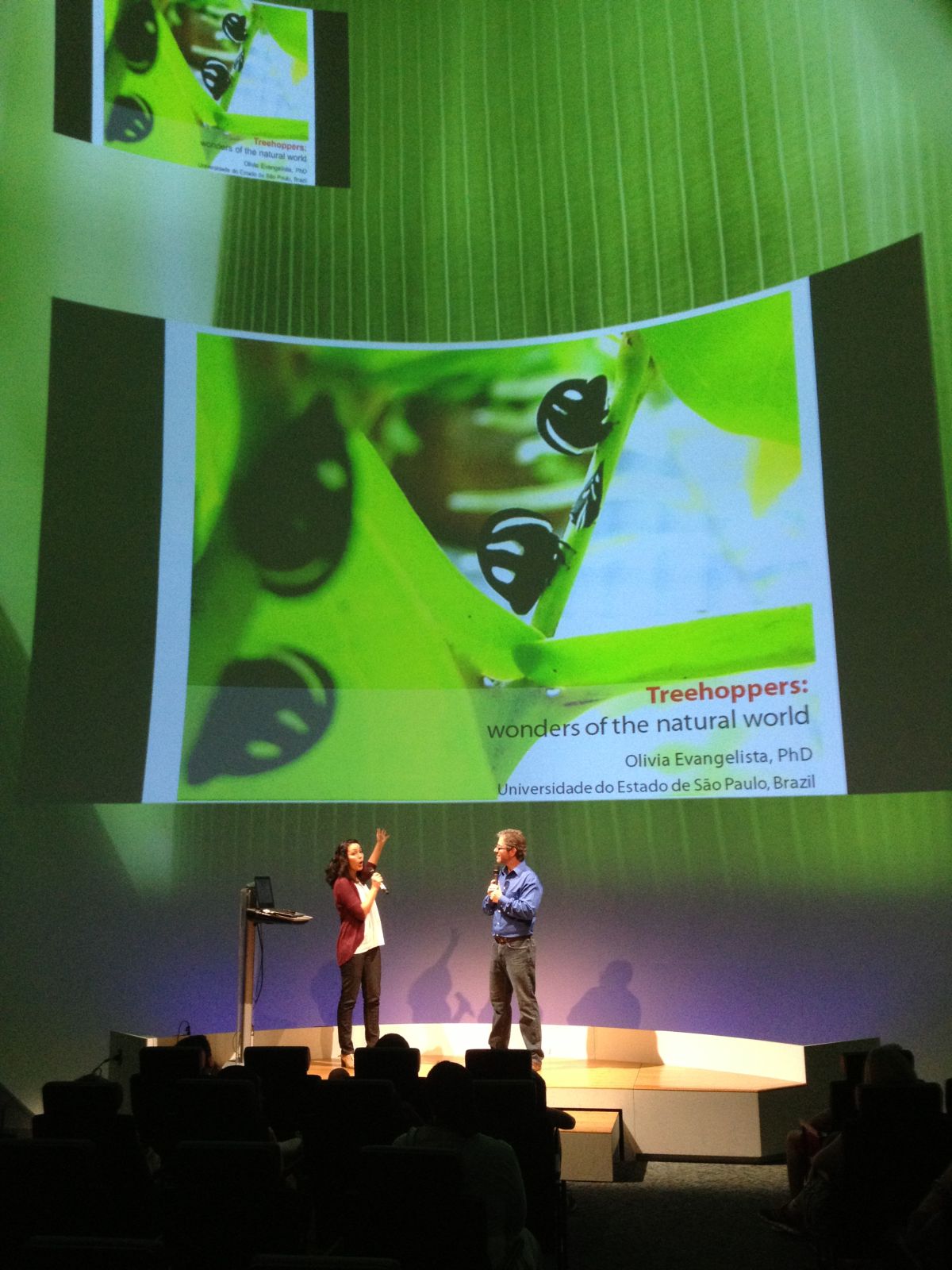
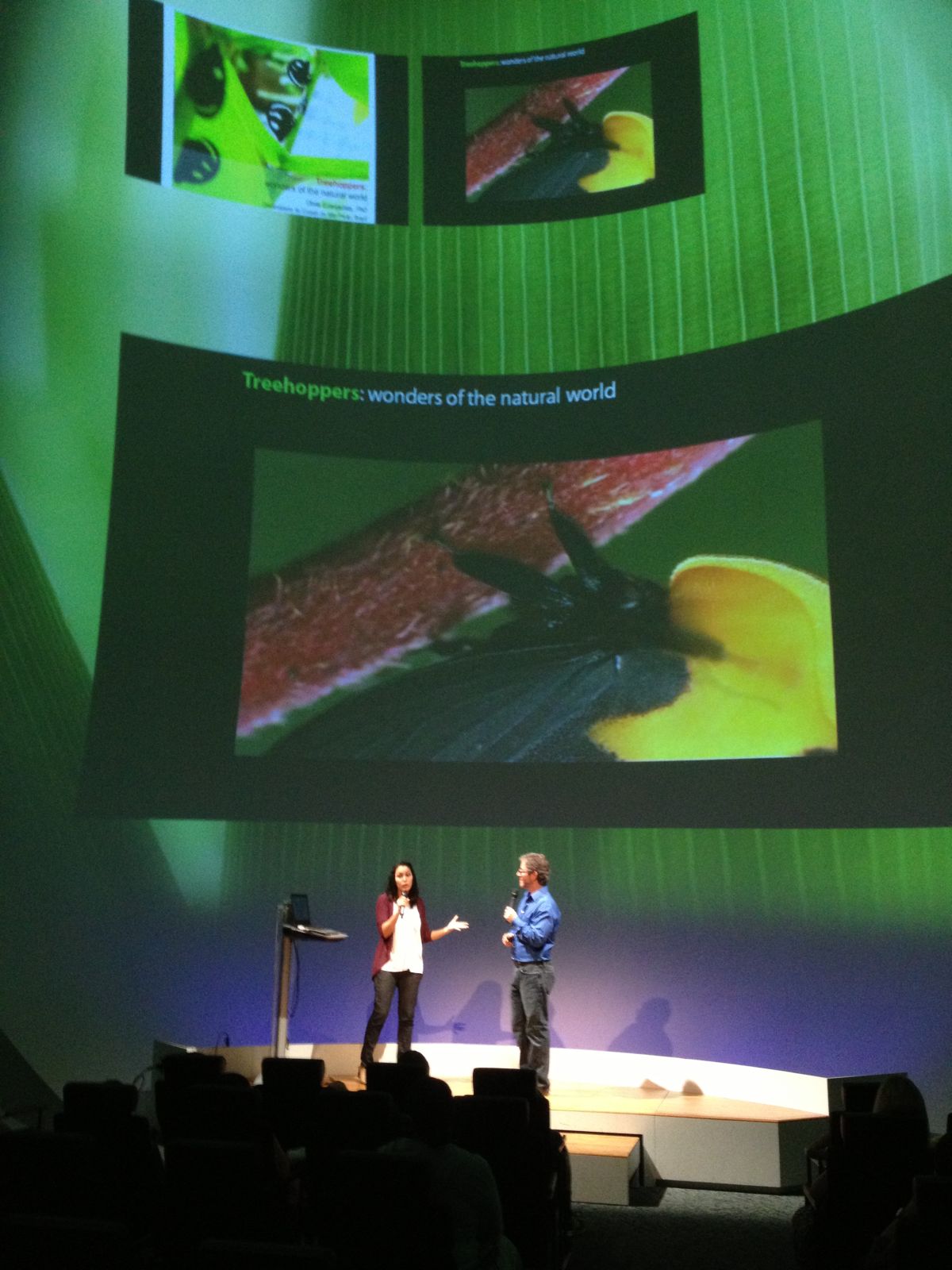










Treehipster Tags and Other Creations of Brendan Morris
2013-06-18
One might say that Brendan Morris eats, breathes, and dreams treehoppers. A graduate student studying Caribbean treehoppers at the University of Illinois, Brendan uses spray paint, snow, and even French fries to create his treehopper art. Here are a few samples of his imaginative works, including a couple that have since melted or undergone digestion (images © Copyright 2013, Brendan O. Morris).
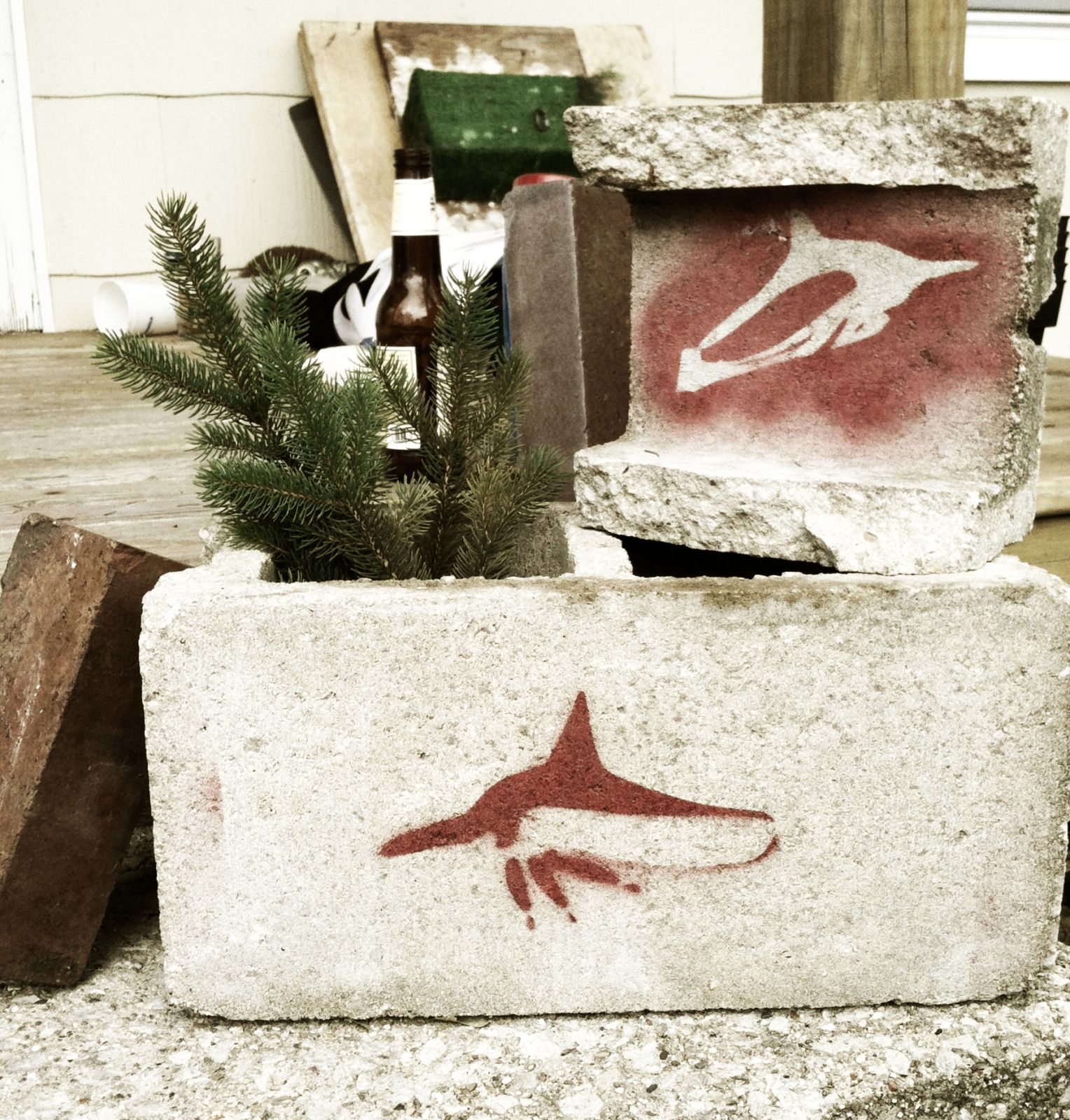
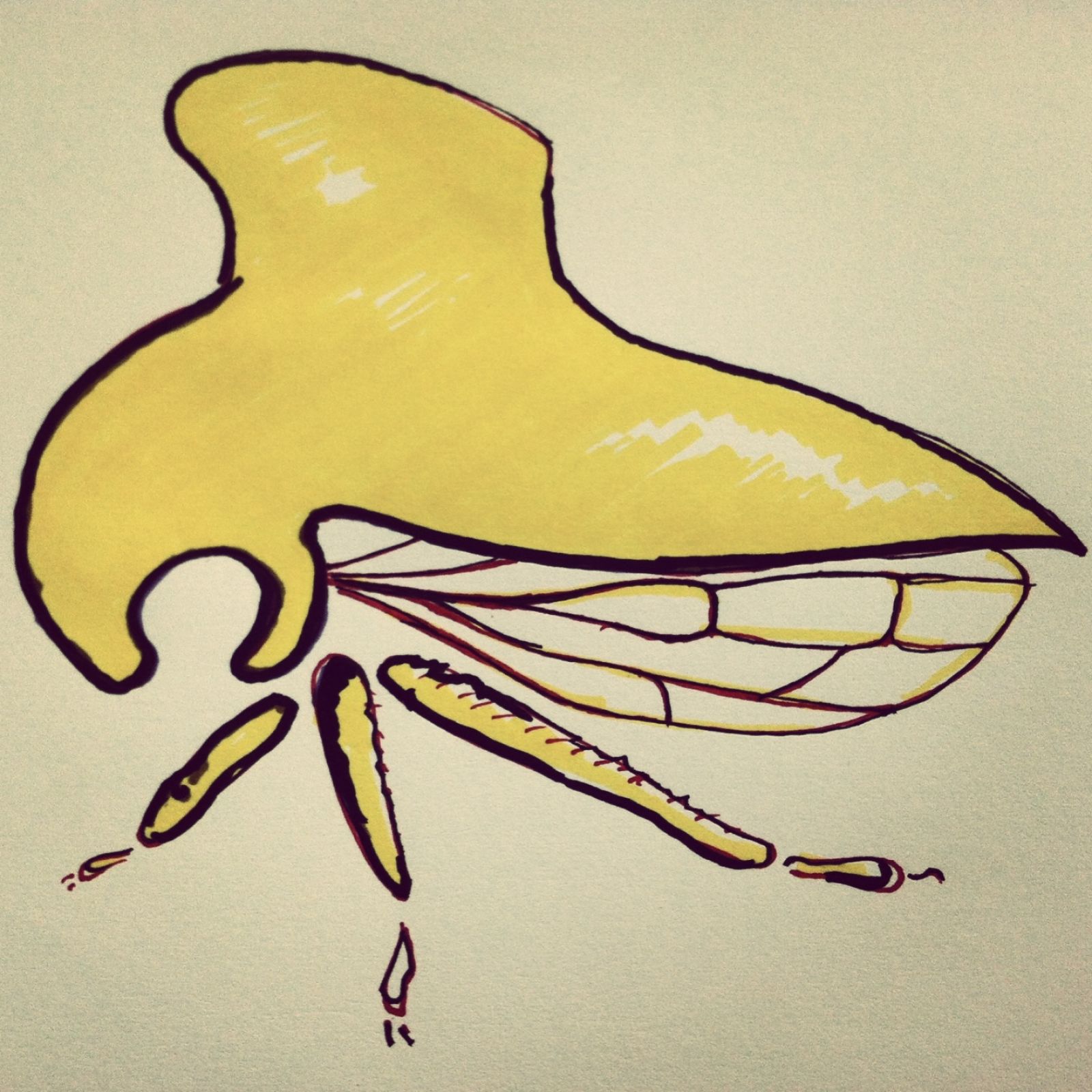
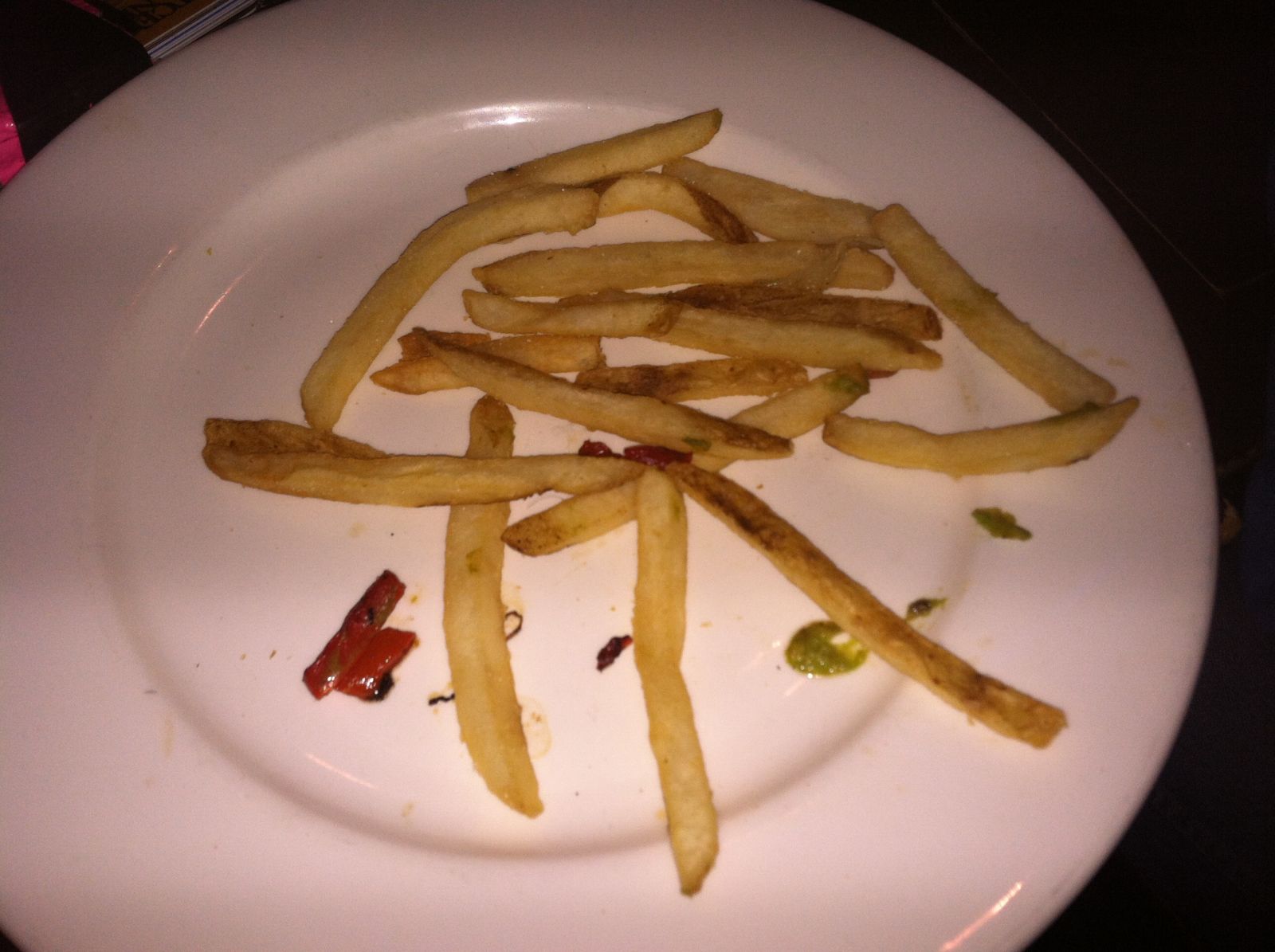
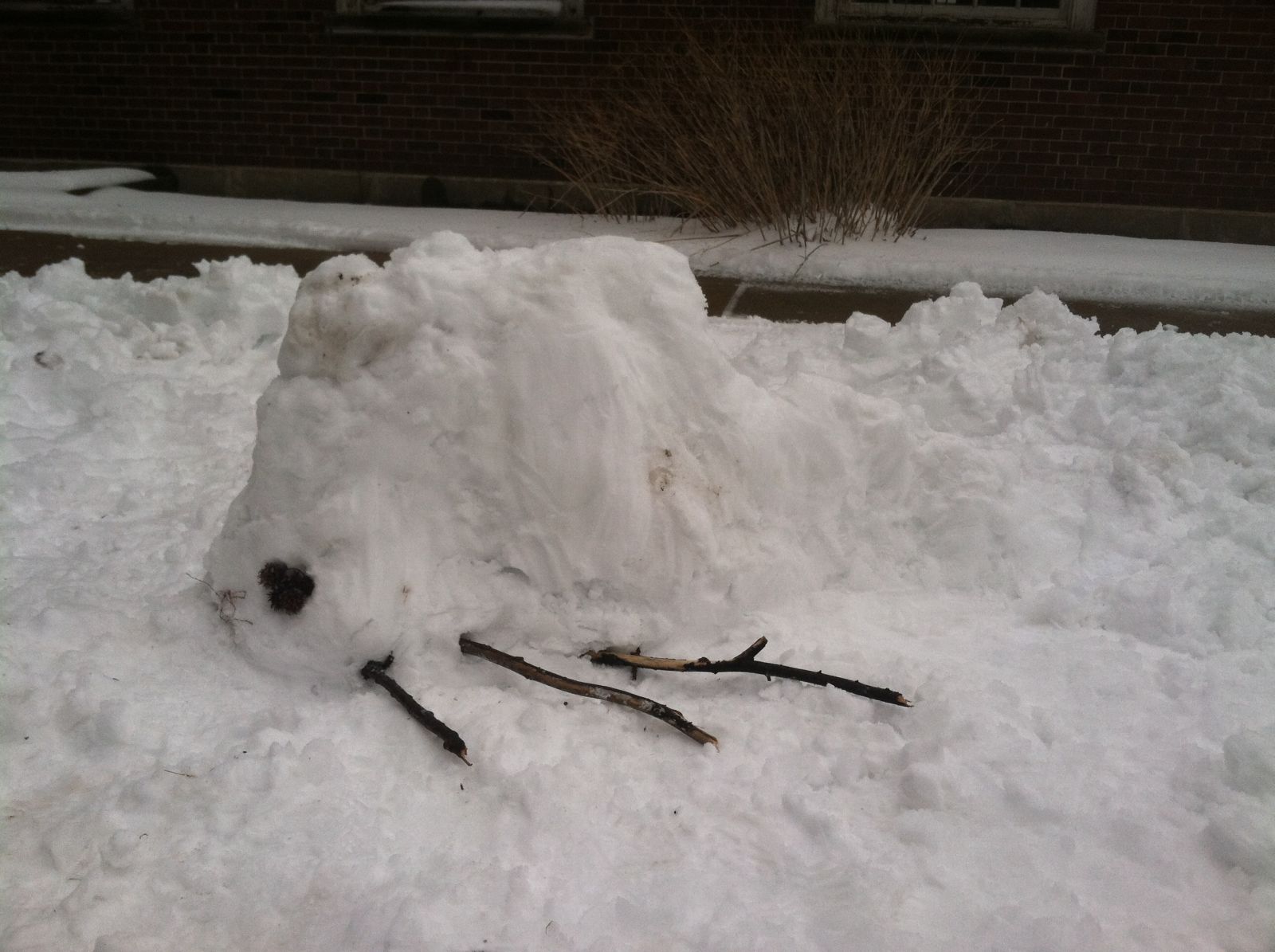




21st Annual Treehopper Gathering, Little Orleans, Maryland
2013-06-18
Treehopper enthusiasts and other entomologists came from as far away as South Dakota, Florida, Connecticut, and Kansas to attend the 21st Annual Treehopper Gathering (31 May to 2 June 2013) at Little Orleans, Maryland. As in past years, the camaraderie and food were great, but the weather this year was exceptionally fine, leading many to the camp's swimming pools.
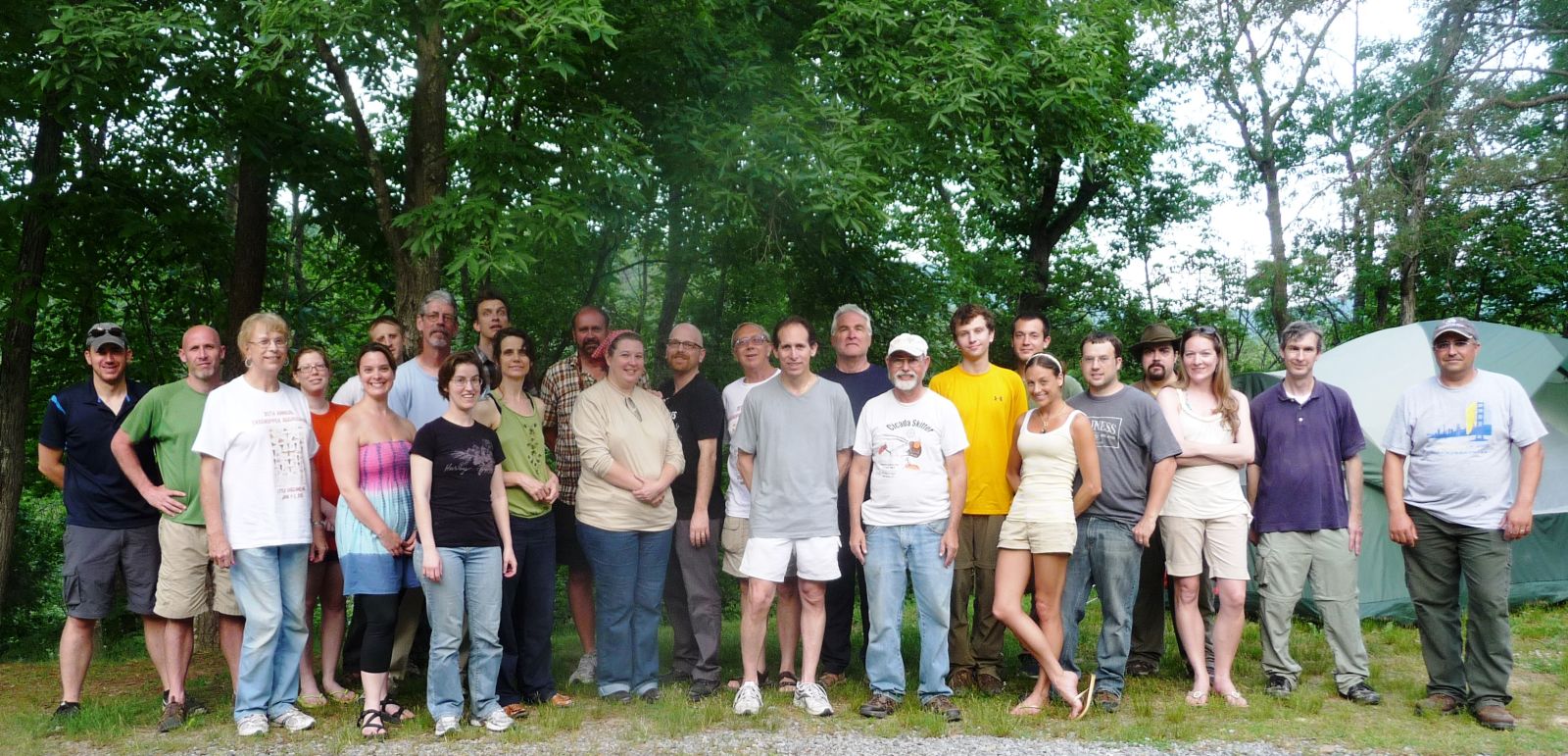
Participants (above, from left to right) included Andrew Short, Matt Wallace, Dawn Flynn, Rachel Jansen, Jennifer Pohler, Lawrence Barringer, Bob Blinn, Cera Fisher, Yon Visell, Katja Seltmann, Lewis Deitz, Kelley Tilmon, Jason Owens, Dennis Kopp, Stuart McKamey, Mike Hennessey, Mark Rothschild, Anthony Deczynski, Drew Shaeffer, Amy Nazdrowicz, Nate Nazdrowicz, Shawn Dash, Ashley Kennedy, Charles Bartlett, and Anthony Gonzon. Photo © Copyright 2013, by Jason Owens.
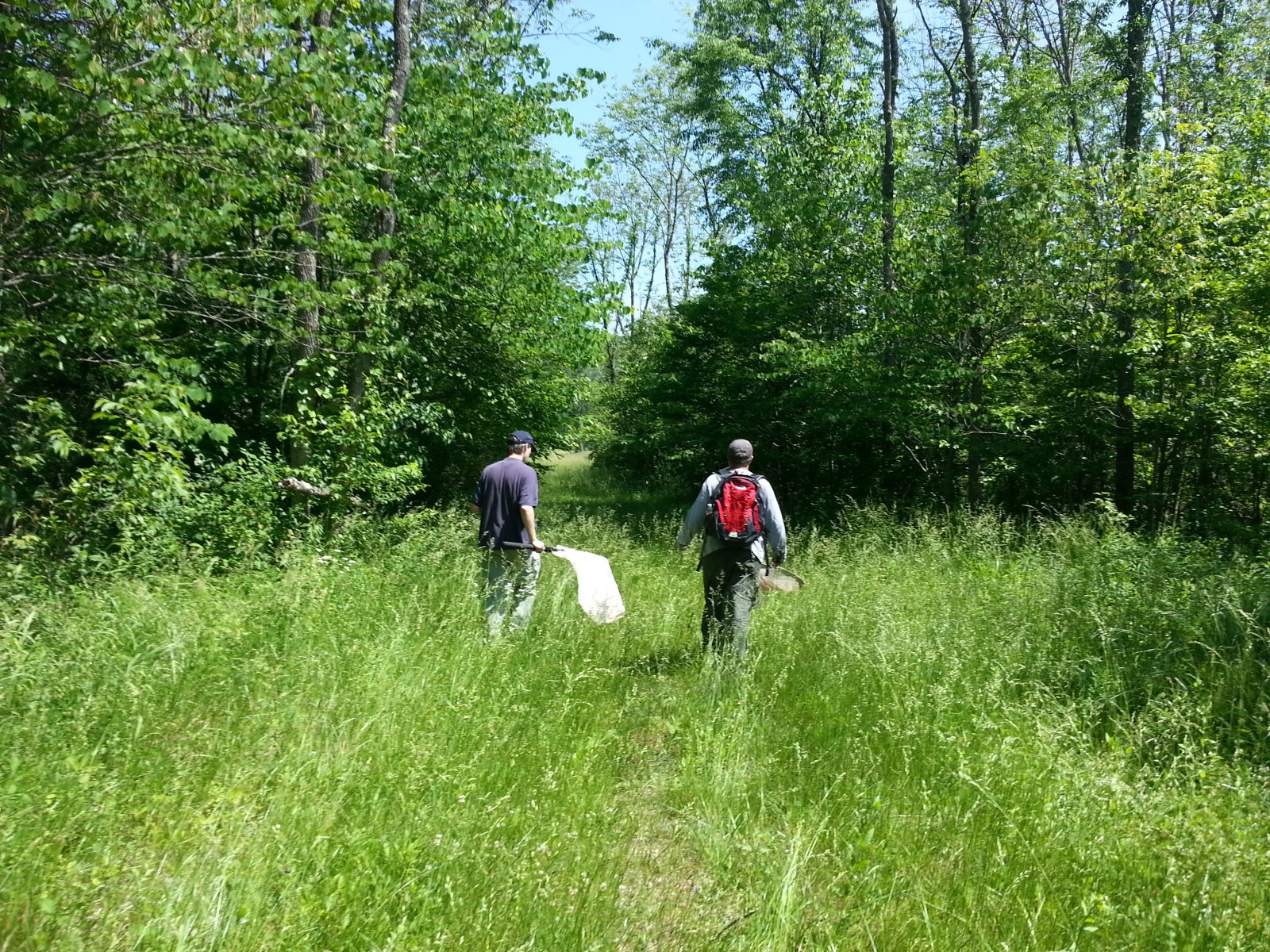
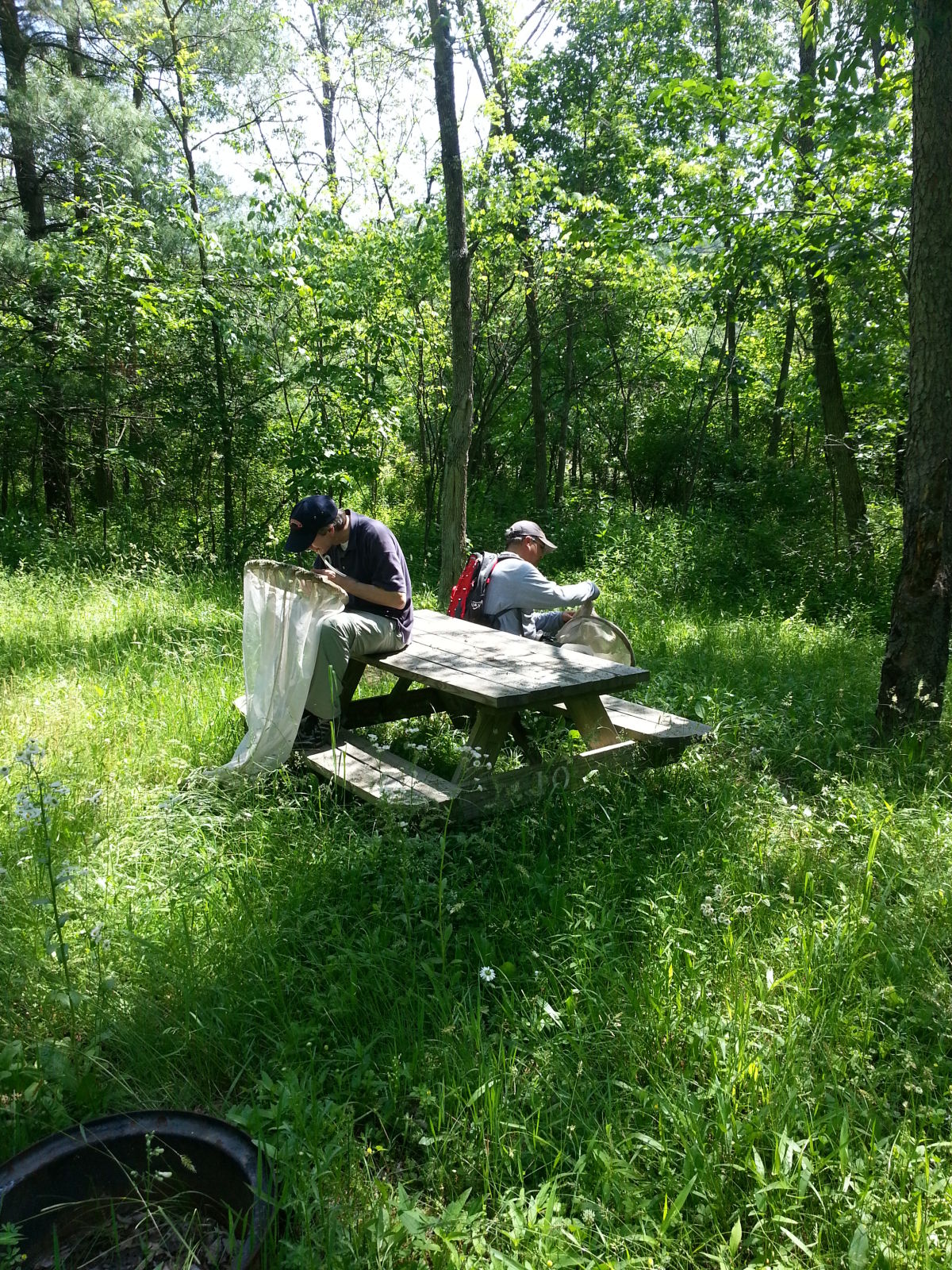
Like many attendees, Charles Bartlett (organizer of the event; to the left in the above shots) and Anthony Gonzon (our head chief) took some time to go collecting. Photos © Copyright 2013, by Ashley Kennedy.

Participants (above, from left to right) included Andrew Short, Matt Wallace, Dawn Flynn, Rachel Jansen, Jennifer Pohler, Lawrence Barringer, Bob Blinn, Cera Fisher, Yon Visell, Katja Seltmann, Lewis Deitz, Kelley Tilmon, Jason Owens, Dennis Kopp, Stuart McKamey, Mike Hennessey, Mark Rothschild, Anthony Deczynski, Drew Shaeffer, Amy Nazdrowicz, Nate Nazdrowicz, Shawn Dash, Ashley Kennedy, Charles Bartlett, and Anthony Gonzon. Photo © Copyright 2013, by Jason Owens.


Like many attendees, Charles Bartlett (organizer of the event; to the left in the above shots) and Anthony Gonzon (our head chief) took some time to go collecting. Photos © Copyright 2013, by Ashley Kennedy.
Societies of Sound in the Amazon
2013-08-29
A recent National Public Radio broadcast entitled Societies of Sound in the Amazon (Alex Chadwick, 19 August 2013, The Story) features Rex Cocroft's research on treehopper communication in the Amazonian rain forest of eastern Ecuador.
New Publication on the Treehopper Genera Antillotolania and Deiroderes
2013-08-30
McKamey, S. H.; Brodbeck, B. V. 2013a. Immature stages and hosts of two plesiomorphic Antillean genera of Membracidae (Hemiptera) and a new species of Antillotolania from Puerto Rico. ZooKeys 301: 1–12.
This online publication presents the first descriptions of the nymphs of Antillotolania and Dieroderes, along with the description of A. myricae, n. sp., from Myrica splendens in Puerto Rico. A table for identifying the four known species of Antillotolania is included.
This online publication presents the first descriptions of the nymphs of Antillotolania and Dieroderes, along with the description of A. myricae, n. sp., from Myrica splendens in Puerto Rico. A table for identifying the four known species of Antillotolania is included.
New Findings on Speciation in Membracidae
2013-09-26
Stearns, F. W.; Tilmon, K. J.; Wood, T. K. 2013a. Felsenstein's "one-allele model" of speciation: The role of philopatry in the initial stages of host plant mediated reproductive isolation in Enchenopa binotata. Current Zoology 59 (5): 658–666.
Based on an 8-year experiment at the University of Delaware, this work explores the role of philopatry (a tendency to remain at one's birth site) as related to speciation in the Enchenopa binotata complex (Hemiptera: Membracidae).
The Neotropical Genus Lycoderides, stat. nov.
2013-10-23
Sakakibara, A. M. 2013. The genus Lycoderides Sakakibara, stat. nov., its composition and descriptions of new species (Hemiptera, Membracidae, Stegaspidinae). Revista Brasileira de Entomologia 57: 29-270. [available online]
Lycoderides (proposed as a subgenus in 1972) is elevated to the level of genus. A key and illustrated descriptions are given to identify the 24 included species, 6 of which are new. The work also includes new geographic records for some species of this Neotropical genus.
Lycoderides (proposed as a subgenus in 1972) is elevated to the level of genus. A key and illustrated descriptions are given to identify the 24 included species, 6 of which are new. The work also includes new geographic records for some species of this Neotropical genus.
Amazing Treehoppers of Ecuador (18 to 22 November 2013)
2013-11-15
Dear exotic insects enthusiasts! You haven't seen it all! Last month, we were fortunate to stumble across an undiscovered world, as far as insects are concerned, not far from the Napo River in tropical Ecuador, and I have returned to tell, or rather to show, the tale. The best of my photos of these amazing creatures will be presented on my Flickr website starting next Monday, the 18th of November, and will continue on weekdays for four weeks. There will be between 4 and 8 photos posted each day. Treehoppers will occupy the first week.
Don't miss this show by some of the most wonderful and "self-made artists" of the natural world! -- Robert Oelman, 14 November 2013
First Description of Immature Alcmeone
2014-01-09
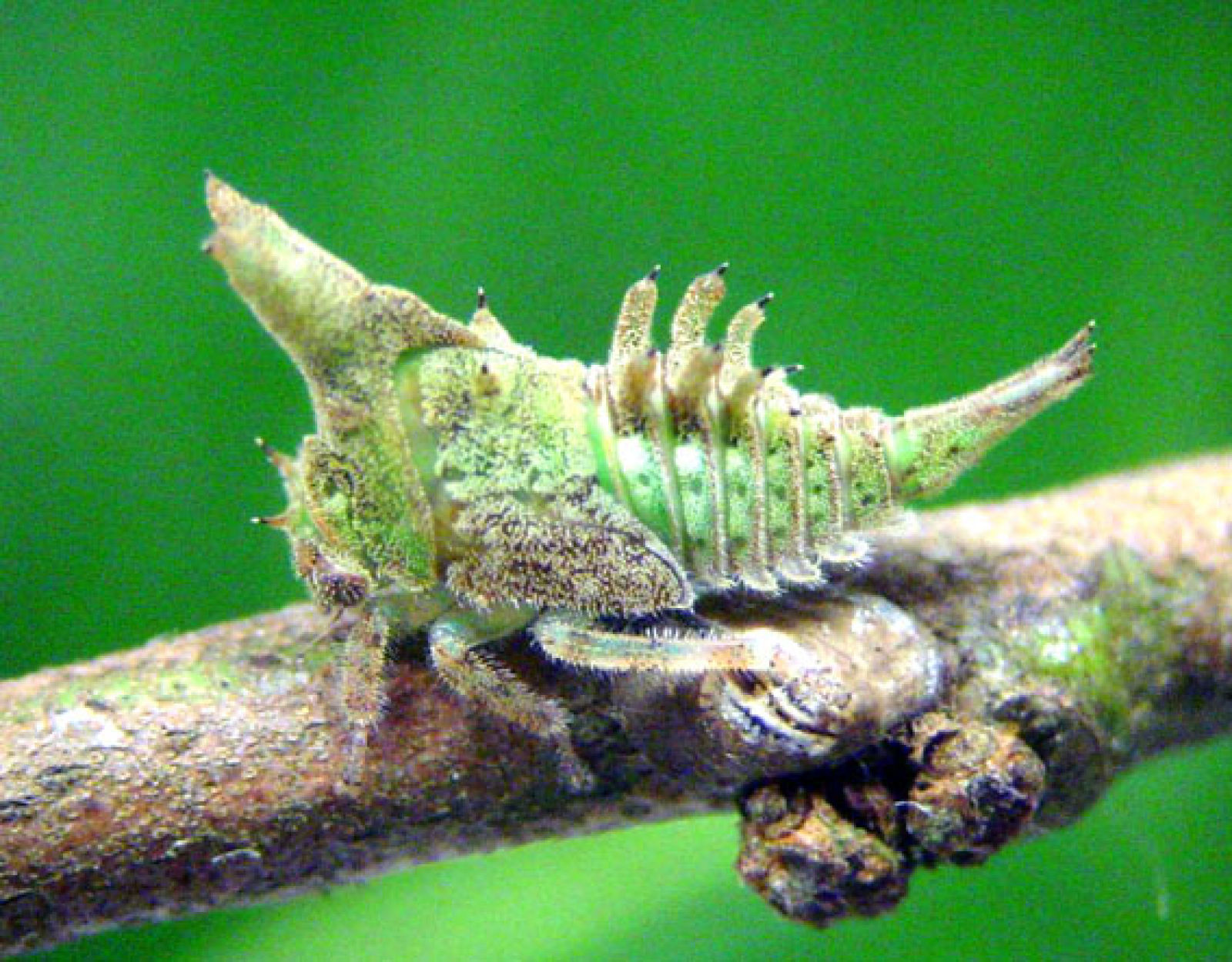
Alcmeone robutus (Butler), last instar nymph. © 2013, by Federico Leniconi-Neto
Lencioni-Neto, F.; Sakakibara, A. M. 2013a. Alcmeone robustus (Hemiptera: Membracidae: Darninae): description of the last-instar nymph and biological notes. Zoologia (Curitiba) 30(5): 471-474. [available online] This work describes the fifth instar nymph of A. robustus and provides notes on the biology and behavior of the species as observed on Pera sp. in Brazil.
Treehoppers and Pop Culture
2014-01-15
The treehopper genus Bocydium was recently listed among five "theatrical" animals that look like Lady Gaga, and it seems that more than one treehopper has been compared to the stylish recording icon.
But, treehopper fashion is not exclusively for Lady Gaga. Anyone can now purchase treehopper underwear as well as other "popular" treehopper products.
Treehoppers have also found a place in popular films. Treehoppers are mentioned in "Master and Commander: The Far Side of the World," a historical drama co-written and directed by Peter Weir, and treehopper sounds were used in " "A.I. Artifical Intelligence," a science fiction film directed by Steven Spielberg.
Last, but not least, we recently discovered an wonderful work of art entitled the "Green Treehopper," and hope someone can tell us the name of the artist who created it.
But, treehopper fashion is not exclusively for Lady Gaga. Anyone can now purchase treehopper underwear as well as other "popular" treehopper products.
Treehoppers have also found a place in popular films. Treehoppers are mentioned in "Master and Commander: The Far Side of the World," a historical drama co-written and directed by Peter Weir, and treehopper sounds were used in " "A.I. Artifical Intelligence," a science fiction film directed by Steven Spielberg.
Last, but not least, we recently discovered an wonderful work of art entitled the "Green Treehopper," and hope someone can tell us the name of the artist who created it.
Species Taxon Pages for Monobelini and Nessorhinini
2014-01-28
Populating the Treehoppers Database is a slow process, and we greatly appreciate your patience as we develop this resource. Treehopper Taxon Pages are available for all genera and higher groups, and we have begun entering Species Pages for selected taxa.
Thanks to the assistance of Brendan Morris, our taxon searches now provide Taxon Pages for all valid species in the Caribbean tribes Monobelini and Nessorhinini. These pages may include synonyms (generated from our nomenclatural data), selected references (these will eventually link to a full citation), images, distribution data, diagnosis, and so forth.
Note that Nomenclatural Reports are displayed for invalid taxa (genus group or higher) and for those species (valid or invalid) for which only nomenclatural data have been entered. The second line of text will state: "This is a nomenclatural report, not a taxon page." Olivia Evangelista has prepared nomenclatural reports for all species of the Neotropical subfamily Heteronotinae.
[L. L. Deitz, O. Evangelista, S. H. McKamey, M. J. Rothschild, and M. S. Wallace]
Thanks to the assistance of Brendan Morris, our taxon searches now provide Taxon Pages for all valid species in the Caribbean tribes Monobelini and Nessorhinini. These pages may include synonyms (generated from our nomenclatural data), selected references (these will eventually link to a full citation), images, distribution data, diagnosis, and so forth.
Note that Nomenclatural Reports are displayed for invalid taxa (genus group or higher) and for those species (valid or invalid) for which only nomenclatural data have been entered. The second line of text will state: "This is a nomenclatural report, not a taxon page." Olivia Evangelista has prepared nomenclatural reports for all species of the Neotropical subfamily Heteronotinae.
[L. L. Deitz, O. Evangelista, S. H. McKamey, M. J. Rothschild, and M. S. Wallace]
Membracid Types at North Carolina State University
2014-02-03
Bob Blinn, collection manager of the NCSU Insect Museum, is developing an online list of NCSU's types. The collection holds type material of 44 treehopper species, including 27 holotypes. For primary types, the listing includes the original binomen, author(s), and literature citation, along with information quoted from the data labels. For some species, images of the type and its labels are available online, as shown below for the holotype of Aconophora elongata (photos Copyright © 2013, by Robert L. Blinn).
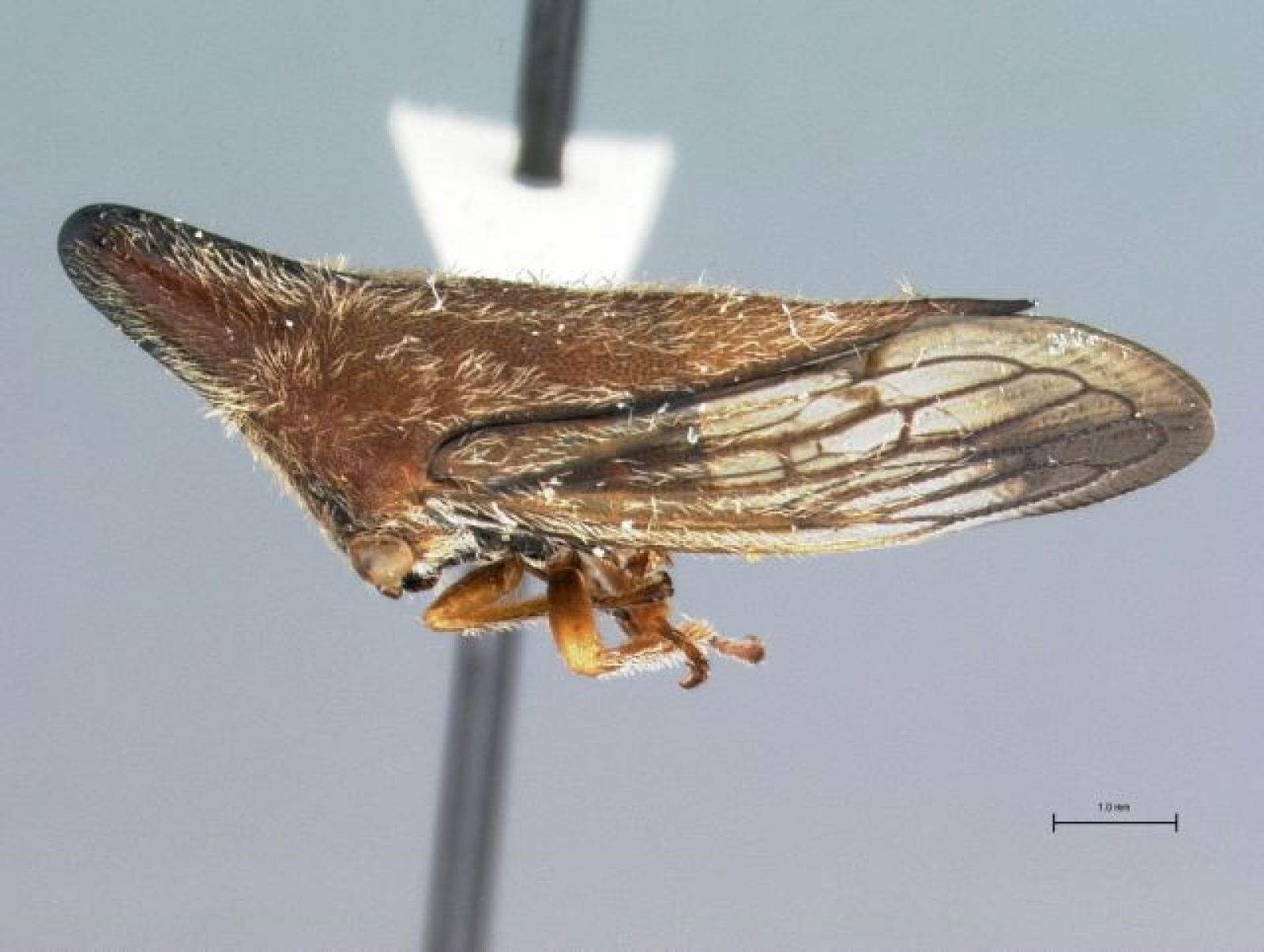
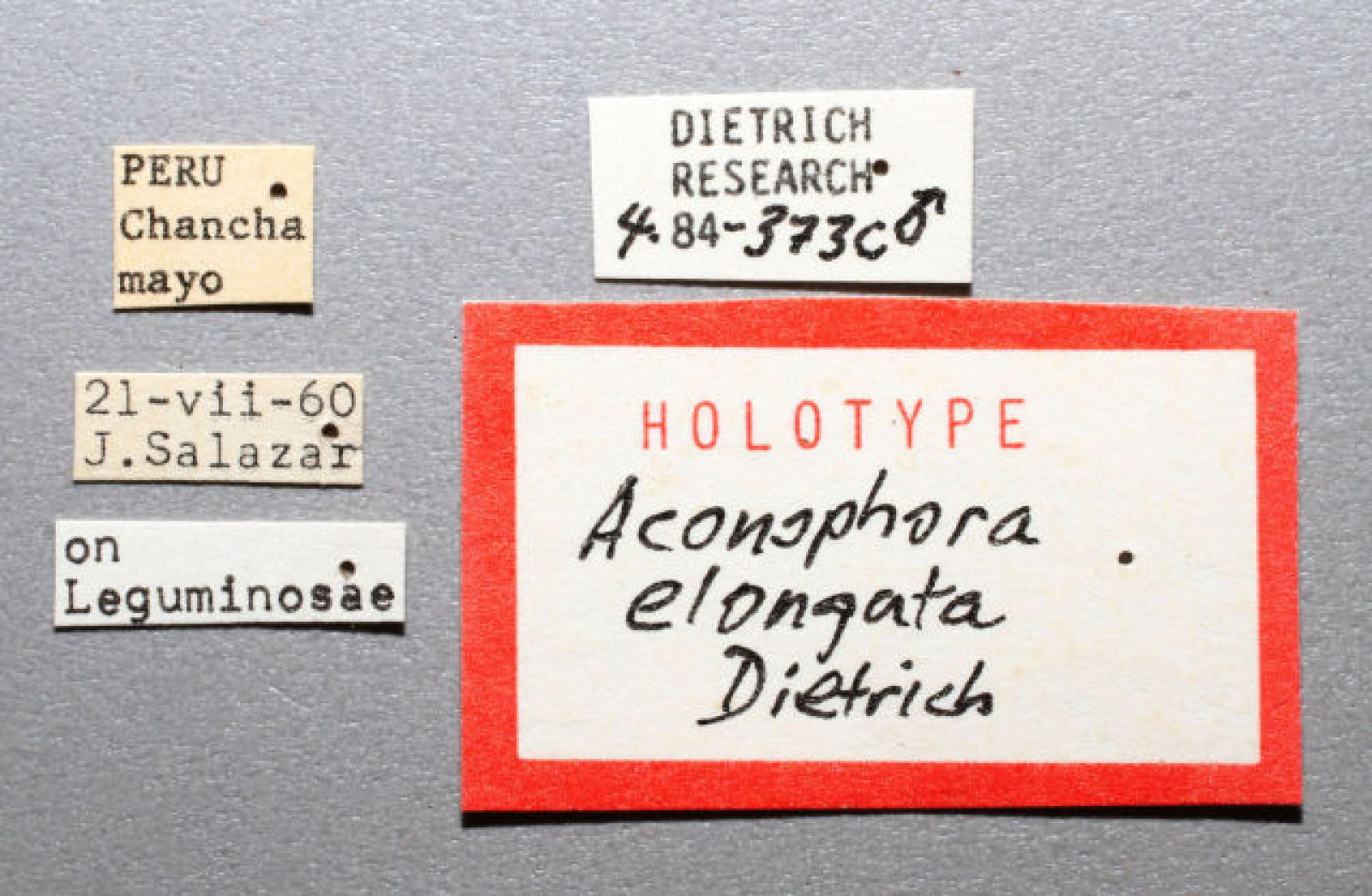
Aconophora elongata Dietrich In Dietrich & Deitz 1991. N. C. Agric. Res. Ser. Tech. Bull. 293:112.
Holotype: "PERU/Chancha/mayo; 21-vii-60/J. Salazar; on/Leguminosae; DIETRICH/RESEARCH/4-84-373c; HOLOTYPE/Aconophora/elongata/Dietrich"
Paratypes, 8: Peru


Aconophora elongata Dietrich In Dietrich & Deitz 1991. N. C. Agric. Res. Ser. Tech. Bull. 293:112.
Holotype: "PERU/Chancha/mayo; 21-vii-60/J. Salazar; on/Leguminosae; DIETRICH/RESEARCH/4-84-373c; HOLOTYPE/Aconophora/elongata/Dietrich"
Paratypes, 8: Peru
Green Treehopper: Artist Revealed
2014-02-03
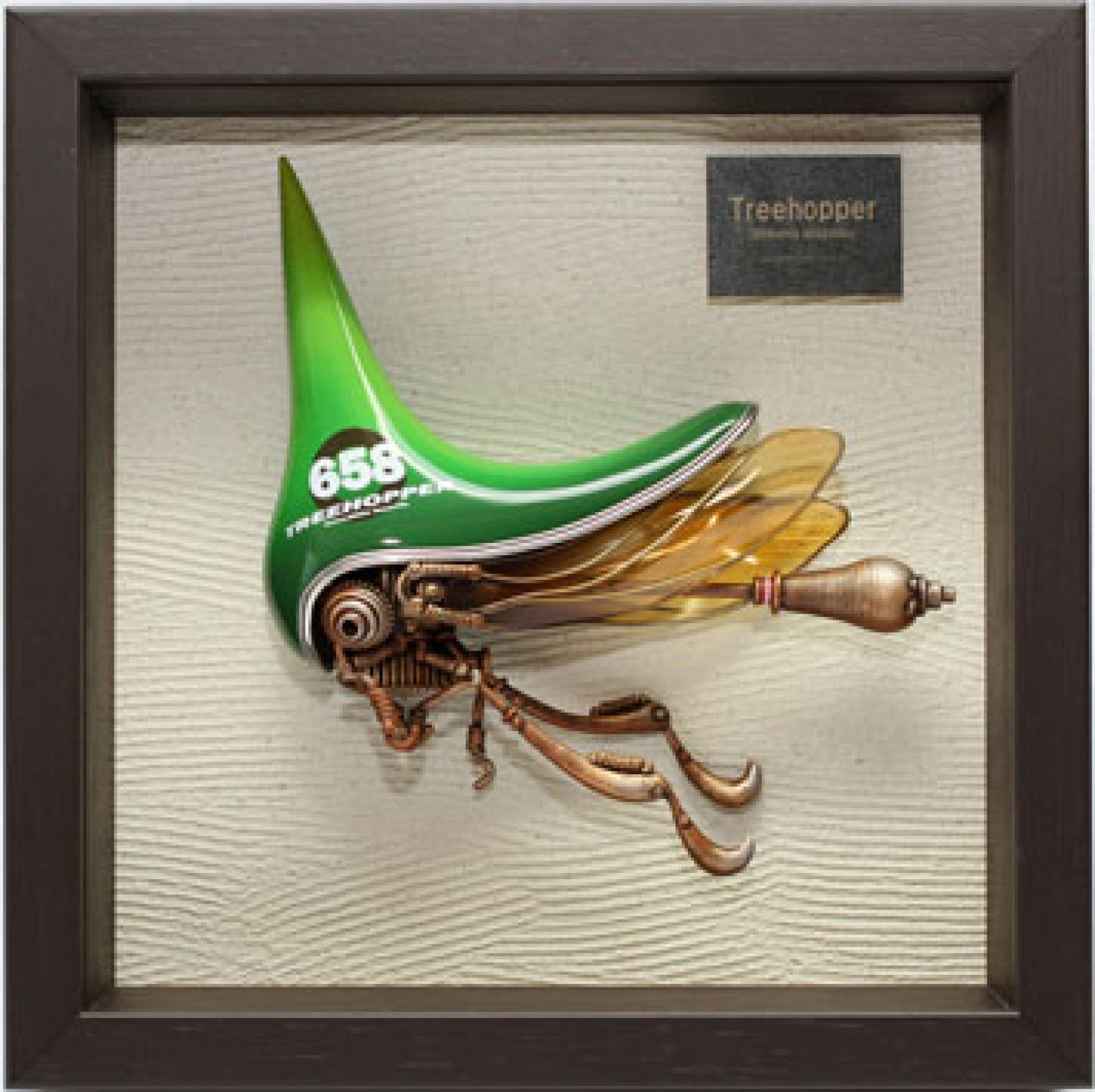
Copyright © 2013, by Michihiro Matsuoka
The creator of the amazing Green Treehopper is Japanese sculptor Michihiro Matsuoka. This 200x200x60 mm work incorporates "resin clay, aluminum rod, acrylic, and plastic plate." Inspired by childhood memories of broken devices, Matsuoka's fantastic creations are part animal and part machine. His work has been featured in exhibitions from Japan to San Diego, New York, Germany, and Belgium.
We are grateful to Michihiro and his agent, Ben Wouters, for permission to use the photo (above) and to another artist, Dan Beaulieu, for connecting the sculptor to the sculpture (see prior news item: "Treehoppers and Pop Culture").
Treehoppers on Stamps
2014-02-25
Leafhopper specialist Paul Freytag kindly provided the following data related to three known postage stamps that depict treehoppers. A zealous collector of Auchenorrhyncha on stamps, Paul is an emeritus professor at the University of Kentucky, Lexington. As indicated on the images, the stamps are in the collections of John R. Meyer and Paul H. Freytag.
Family Membracidae
1978 Ivory Coast: issued 26 August 1978: Centrotus cornutus (Linnaeus). 60 fr., Scott #478. Also known as imperforate & deluxe sheet.
1998 Tanzania: issued 27 November 1998: Umbonia sp., labeled thornbug on stamp. 1500 sh., Scott #1748.
1999 Republic of Guinea: issued 11 November 1999: Umbonia crassicornis (Amyot and Serville), male, not labeled on stamp. 450 fr., Scott #1563.
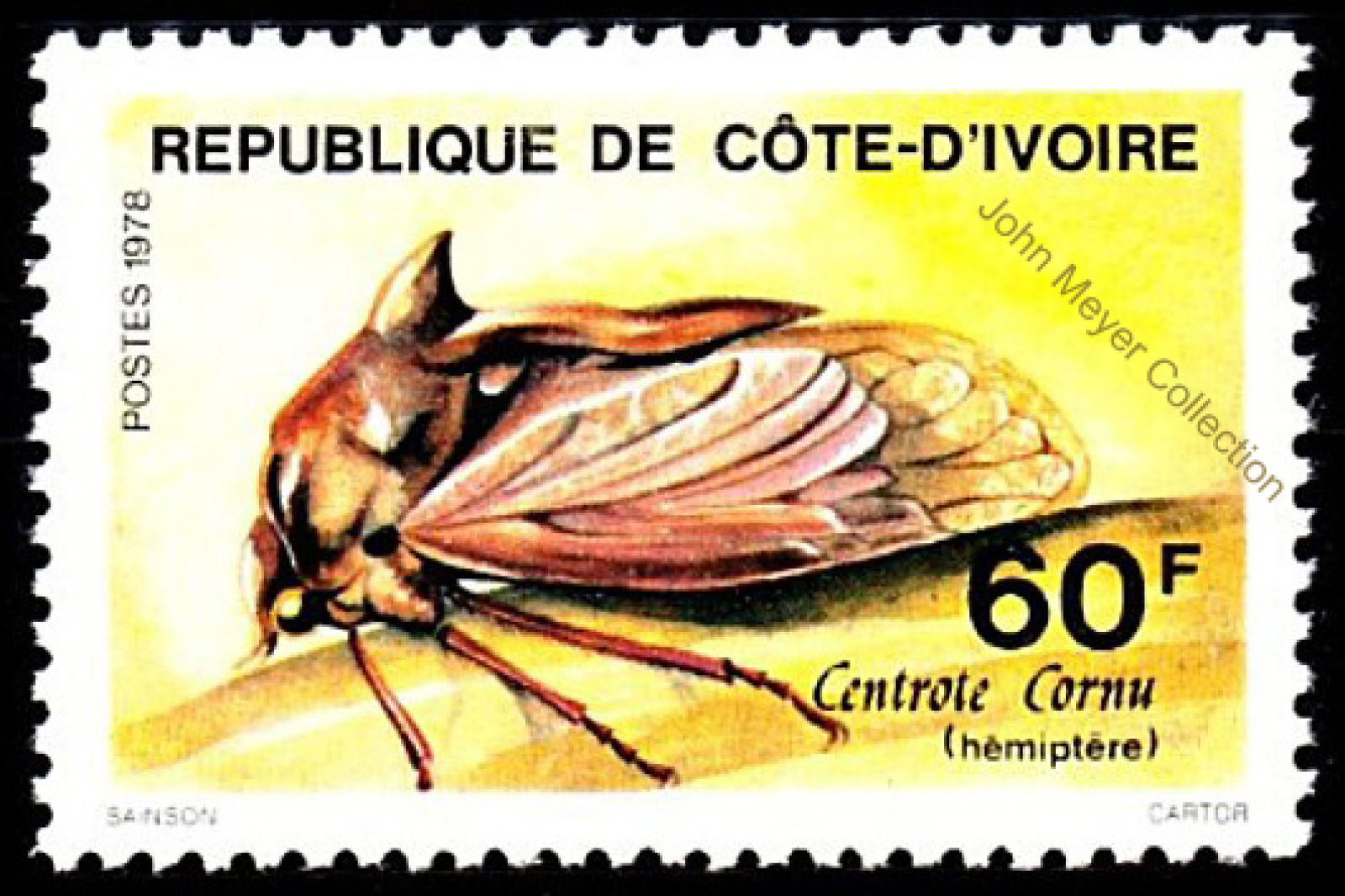

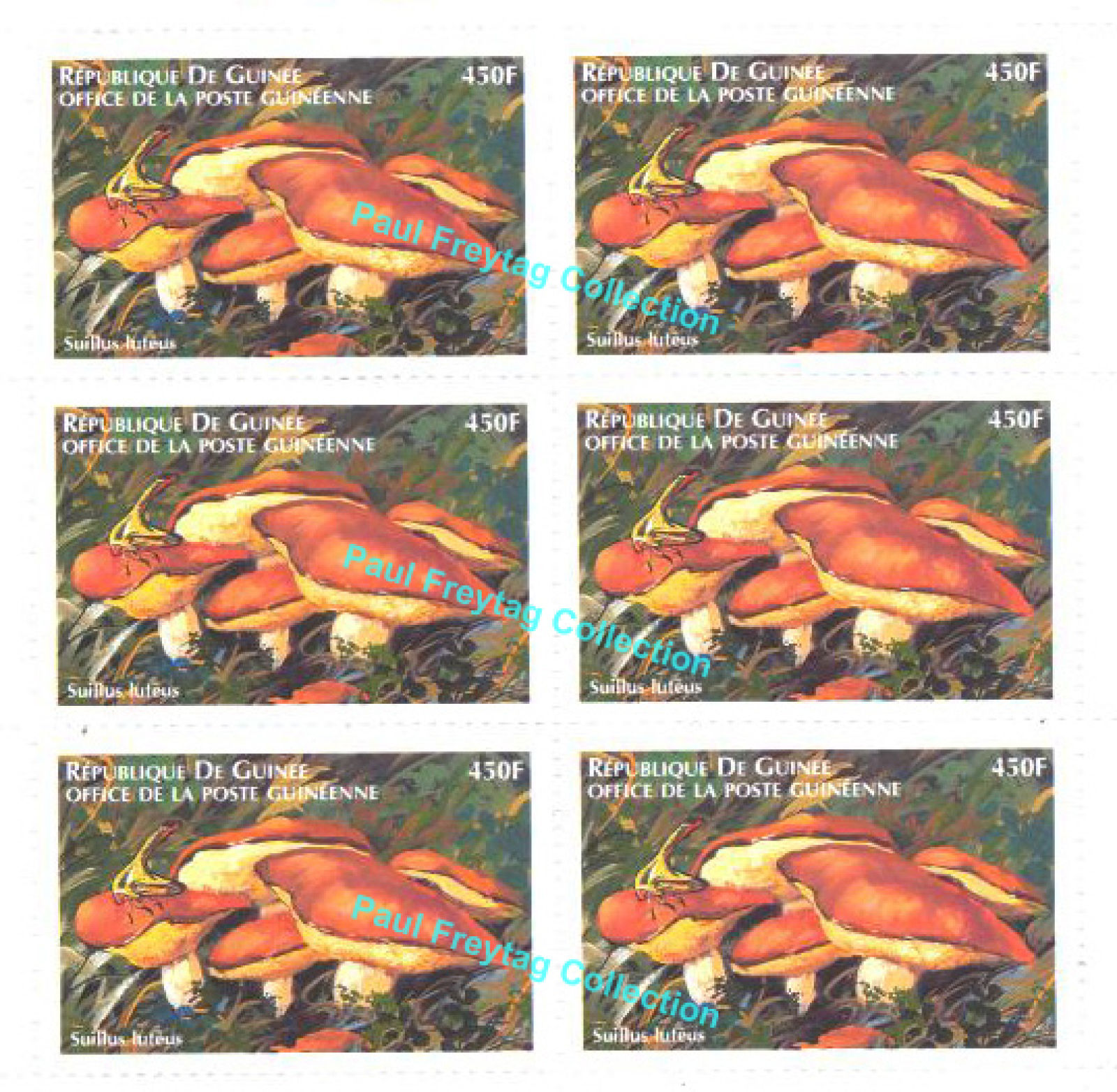
Family Membracidae
1978 Ivory Coast: issued 26 August 1978: Centrotus cornutus (Linnaeus). 60 fr., Scott #478. Also known as imperforate & deluxe sheet.
1998 Tanzania: issued 27 November 1998: Umbonia sp., labeled thornbug on stamp. 1500 sh., Scott #1748.
1999 Republic of Guinea: issued 11 November 1999: Umbonia crassicornis (Amyot and Serville), male, not labeled on stamp. 450 fr., Scott #1563.



Observing Treehoppers in Chile, Argentina, and Brazil
2014-02-27
Chris Dietrich recently returned from a 7-week trip to South America (Brazil, Chile, and Argentina) where he collected and photographed many interesting treehoppers, including members of the family Melizoderidae, restricted to Chile and Argentina, and the strange nicomiine genus Holdgatiella, a Chile endemic. Other highlights of the trip were visits to national parks in and around Rio de Janeiro that preserve remnants of the Brazilian Atlantic Forest, home to many interesting treehoppers, including the heteronotine genus Iria.
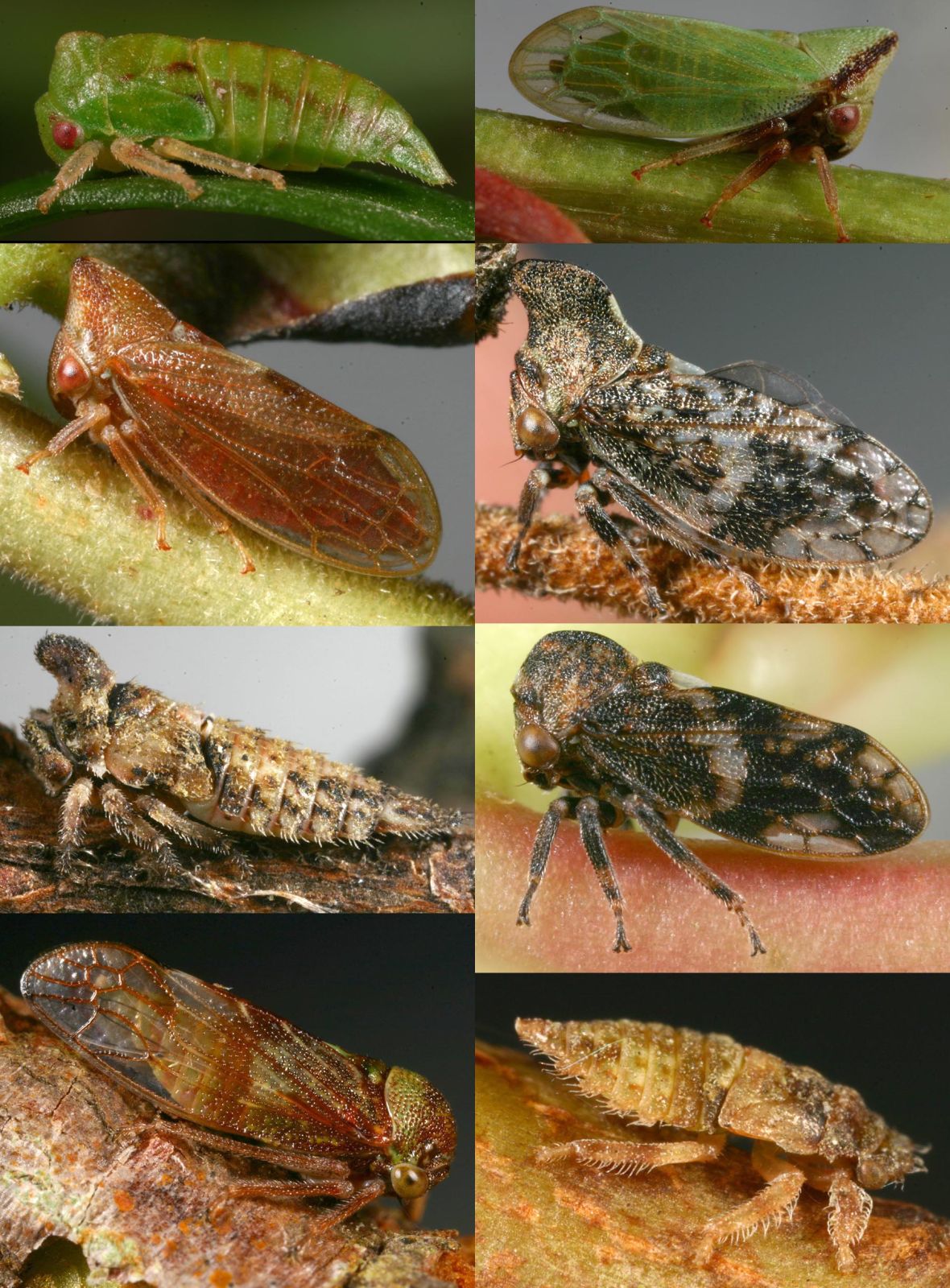
Nymphs and adults of Melizoderes spp. (first row: left, nymph; right, adult; second row: left, adult), Llanquihea pilosa Linnavuori and DeLong (second row: right, female; third row: left, nymphal female; right, male), and Holdgatiella chepuensis Evans (fourth row: right, adult; left, nymph), all photographed in Chile - © Copyright 2014, by Christopher H. Dietrich.

Nymphs and adults of Melizoderes spp. (first row: left, nymph; right, adult; second row: left, adult), Llanquihea pilosa Linnavuori and DeLong (second row: right, female; third row: left, nymphal female; right, male), and Holdgatiella chepuensis Evans (fourth row: right, adult; left, nymph), all photographed in Chile - © Copyright 2014, by Christopher H. Dietrich.
Treehopper News of 1 April 2014
2014-04-01
What time is it? It's Treehopper Time!
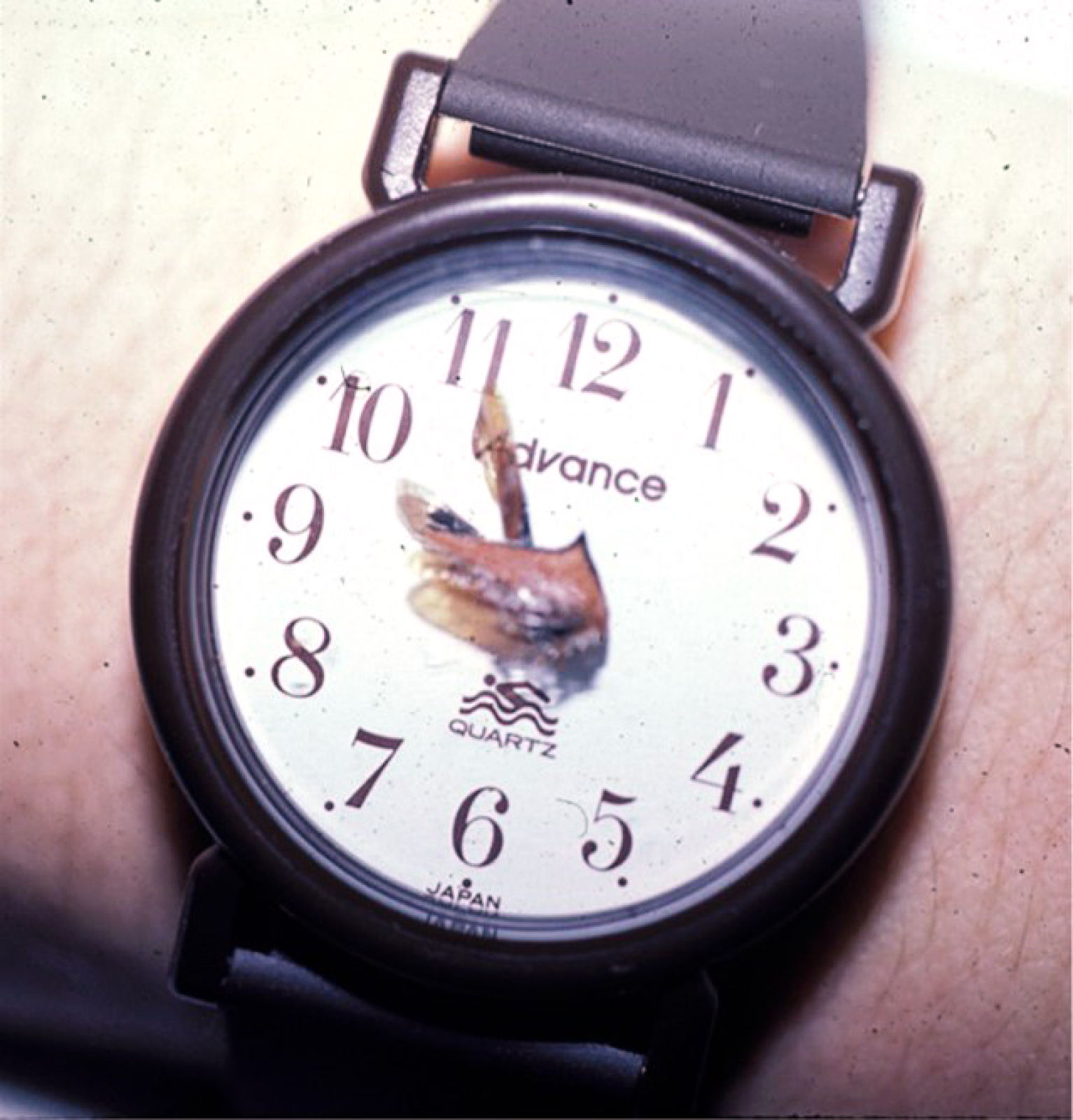 © Copyright 2014, Stuart H. McKamey.
© Copyright 2014, Stuart H. McKamey.
Was the Secretary of Defense trying to identify treehoppers? “… as we know, there are known knowns; there are things we know that we know. There are known unknowns; that is to say, there are things that we now know we don't know. But there are also unknown unknowns – there are things we do not know we don't know.” Donald Rumsfeld, February 2002
What Charles Darwin would have said on this first day of April: “Had the Treehoppers Website been available when I was alive, I would have used it every day.”
 © Copyright 2014, Stuart H. McKamey.
© Copyright 2014, Stuart H. McKamey.
Was the Secretary of Defense trying to identify treehoppers? “… as we know, there are known knowns; there are things we know that we know. There are known unknowns; that is to say, there are things that we now know we don't know. But there are also unknown unknowns – there are things we do not know we don't know.” Donald Rumsfeld, February 2002
What Charles Darwin would have said on this first day of April: “Had the Treehoppers Website been available when I was alive, I would have used it every day.”
Register for the 2014 Treehopper Gathering, Little Orleans, Maryland
2014-04-04
The 22nd Annual Treehopper Gathering is scheduled for 27 to 29 June 2014 (arrive Friday, depart Sunday), Little Orleans Campground, Little Orleans, Maryland. This casual event offers an exceptional opportunity to meet and collect with others passionate about treehoppers and related insects.
To reserve a campsite with our group or to obtain further information, contact Charles Bartlett. Advanced registration with Charles is essential to assure that you have a campsite.
Participants are expected to provide their own tents, food, and camping gear, and to share in the cost of the group campground registration and the group meal provided on Saturday evening. Bring your cameras, macro lens, collecting vials, unidentified specimens, and bathing suits!
To reserve a campsite with our group or to obtain further information, contact Charles Bartlett. Advanced registration with Charles is essential to assure that you have a campsite.
Participants are expected to provide their own tents, food, and camping gear, and to share in the cost of the group campground registration and the group meal provided on Saturday evening. Bring your cameras, macro lens, collecting vials, unidentified specimens, and bathing suits!
Revised Link to the Germar Collection
2014-04-30
We here provide an updated link to digital images of the Ernst Friedrich Germar Collection. For a number of years, this historically important collection was thought to have been destroyed in World War II. As we reported in March 2012, zoomable images of the collection are available online thanks to the curators of the Benedict Dybowski Zoological Museum (Lviv National University, Ukraine).
Major Revision of the Genus Enchenopa
2014-05-07
Strümpel, H.; Strümpel, R. 2014a. Revision der amerikanischen Membracidengattung Enchenopa (Hemiptera: Auchenorrhyncha: Cicadomorpha: Membracidae) mit Beschreibungen neuer Arten. [= Revision of the American treehopper genus Enchenopa (Hemiptera: Auchenorrhyncha: Cicadomorpha: Membracidae) with description of new species.] Entomologische Mitteilungen aus dem Zoologischen Museum Hamburg 17(191): 1-137. [in German with English abstract]
The genus Enchenopa is redefined to include 51 valid species (21 new), with Campylenchia treated as a junior synonym. Nomenclatural changes at the species level include seven new synonymies and the reinstatement of four species as valid. Nine lectotypes are designated. The work includes a key to the species and a total of 102 figures (most depicting more one than structure).
The genus Enchenopa is redefined to include 51 valid species (21 new), with Campylenchia treated as a junior synonym. Nomenclatural changes at the species level include seven new synonymies and the reinstatement of four species as valid. Nine lectotypes are designated. The work includes a key to the species and a total of 102 figures (most depicting more one than structure).
Inferring Treehopper Phylogeny from Genetic Barcode Data
2014-06-05
Hamilton, K. G. A. 2014a. How quickly do insects evolve? American Entomologist 60(1): 14-22.
This paper presents a phylogeny based on genetic barcode data for “25 species groups representing 36 telamonine treehoppers (Membracidae).” Based on a neighbor-joining analysis of a 658 base-pair segment of the COI gene, the results support the view that treehopper genera defined solely on the basis of pronotal similarity may not be monophyletic. Genetic barcoding is indeed “still in its infancy” (as noted in the paper), so stay tuned.
This paper presents a phylogeny based on genetic barcode data for “25 species groups representing 36 telamonine treehoppers (Membracidae).” Based on a neighbor-joining analysis of a 658 base-pair segment of the COI gene, the results support the view that treehopper genera defined solely on the basis of pronotal similarity may not be monophyletic. Genetic barcoding is indeed “still in its infancy” (as noted in the paper), so stay tuned.
Two New Umbelligerus from Panama
2014-06-05
Flynn, D. J. 2014a. Review of the genus Umbelligerus Deitz with descriptions of two new species from Panama and key to adults (Hemiptera: Membracidae). Proceedings of the Entomological Society of Washington 116(2): 145-154.
This work describes Umbelligerus stockwelli<> and <>U. convergens, n. spp. With a total of five Neotropical species, Umbelligerus is reported from Brazil, Costa Rica, Panama, Peru, and Venezuela.
This work describes Umbelligerus stockwelli<> and <>U. convergens, n. spp. With a total of five Neotropical species, Umbelligerus is reported from Brazil, Costa Rica, Panama, Peru, and Venezuela.
27- 29 June 2014: Treehopper Gathering: Little Orleans, Maryland
2014-06-05
This is a reminder that the 22nd Annual Treehopper Gathering is scheduled for 27 to 29 June 2014 (arrive Friday, depart Sunday), Little Orleans Campground, Little Orleans, Maryland. This event offers an exceptional opportunity to meet and collect with others passionate about treehoppers and related insects.
To reserve a campsite with our group or to obtain further information, contact Charles Bartlett. Advanced registration with Charles is essential to assure that you have a campsite.
Participants are expected to provide their own tents, food, and camping gear, and to share in the cost of the group campground registration and the group meal provided on Saturday evening. Bring your cameras, macro lens, collecting vials, unidentified specimens, and bathing suits!
New World Treehopper Introduced to Control Lantana in Australia Damages Fiddlewood Trees
2014-06-05
Queensland Department of Agriculture, Fisheries and Forestry. 2013a. Aconophora on fiddlewood trees: Aconophora compressa. Department of Agriculture, Fisheries and Forestry (Queensland, [Australia]), Biosecurity Queensland Fact Sheet, Pest Animal PA27: [1-3]. [available online]
Introduced from Mexico in 1995 to control lantana in Queensland and New South Wales, Aconophora compressa may cause die-back and even defoliate fiddlewood trees.
Introduced from Mexico in 1995 to control lantana in Queensland and New South Wales, Aconophora compressa may cause die-back and even defoliate fiddlewood trees.
2014 Treehopper Gathering: Little Orleans, Maryland
2014-07-14
The 2014 Treehopper Gathering (27 to 29 June) attracted entomologists from Brazil, Ecuador, and as far as Florida, Kansas, New York, and Connecticut in the United States. See group photo, below, left to right (b= back; f= front): Charles Bartlett, bAnthony Deczynski, fAlexis Park, bAndrew Short, Yuri Park with son fDuncan, bAdam Bell, Robert Clark, bKeith Bayles, fLuis Camacho, bLewis Deitz, Stuart McKamey, bMike Hennessey, Olivia Evanelista, fLogan Fish, Matt Wallace, fCamille McKamey, bCorey Janusz, Cera Fisher, bGlenn E. Miller, Gretha dos Santos, bStephen Kloiber, Dawn Flynn, bMitchell Porter, Mark Rothschild, bMichael (Drew) Sheaffer, Nate Nazdrowicz, bAnthony Gonzon [Lawrence Barringer, not shown]. Smaller images show selected shots from the Little Orleans area. Images © Copyright 2014, by Robert E. Clark.
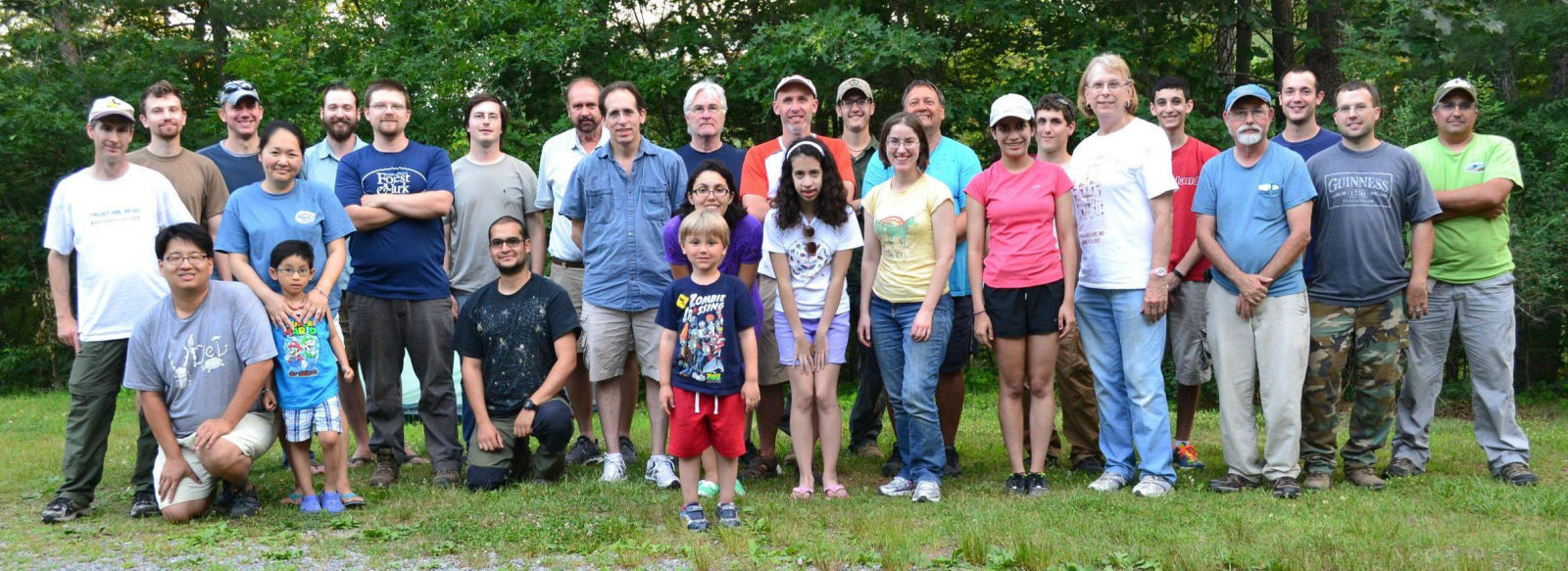
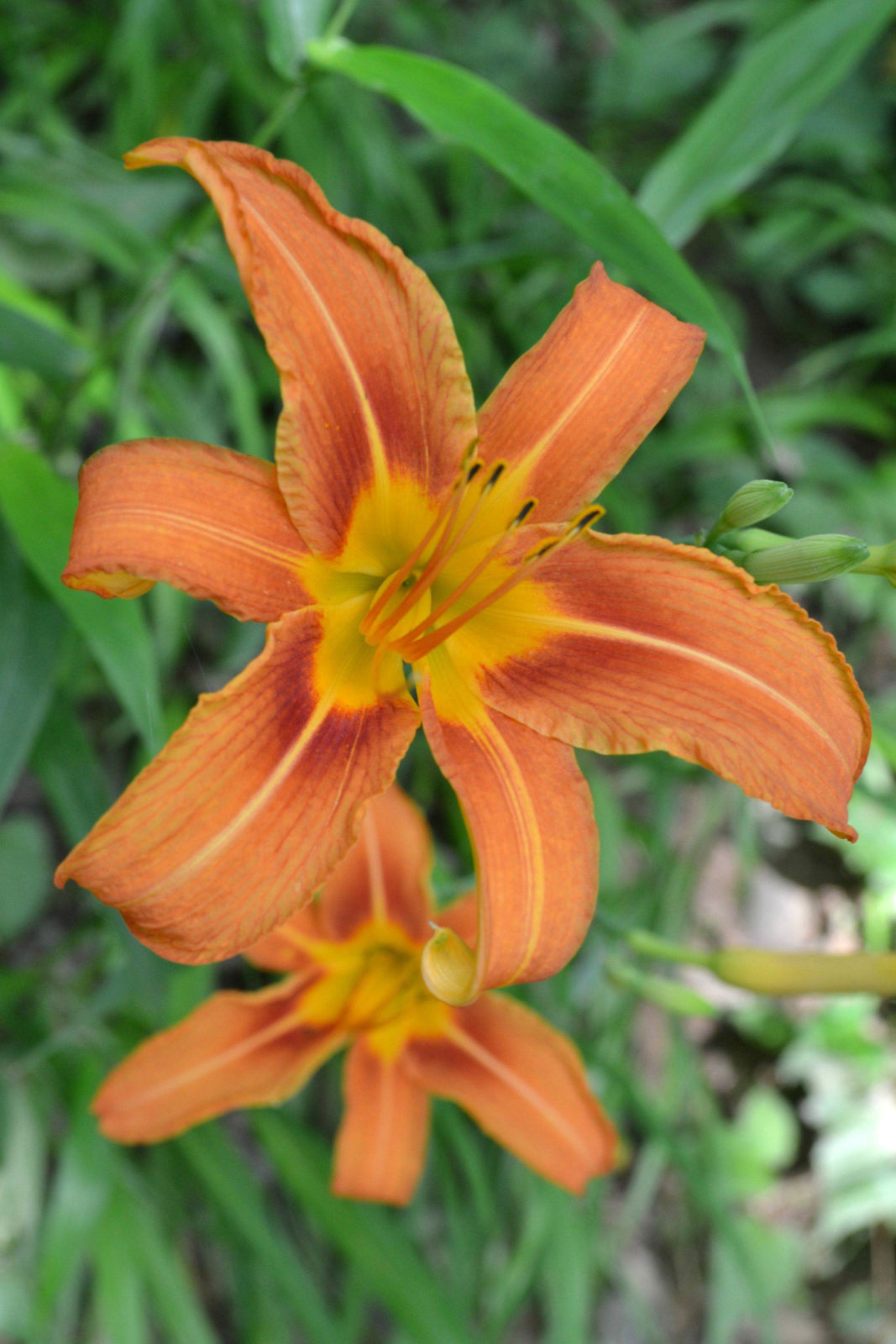
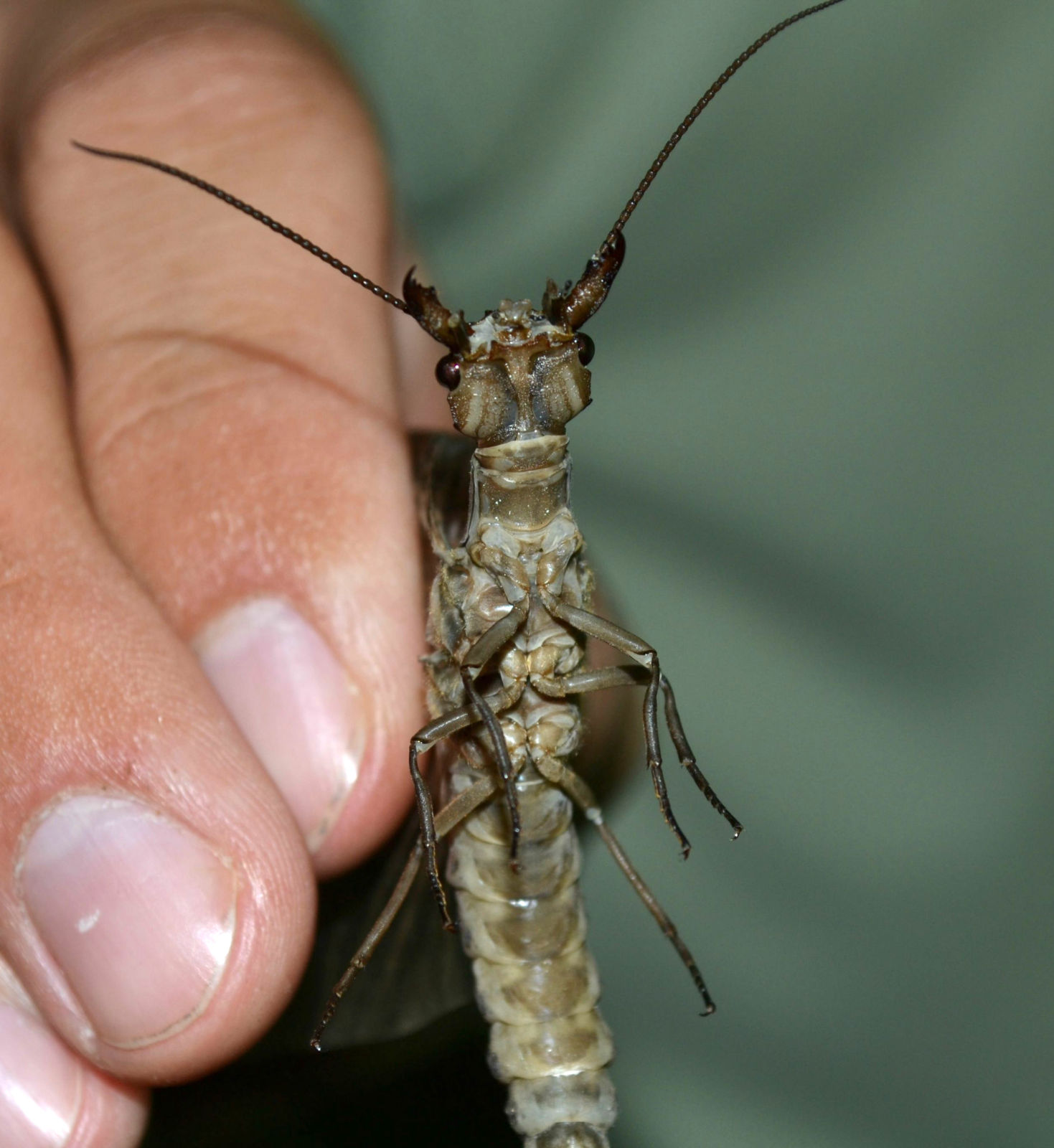
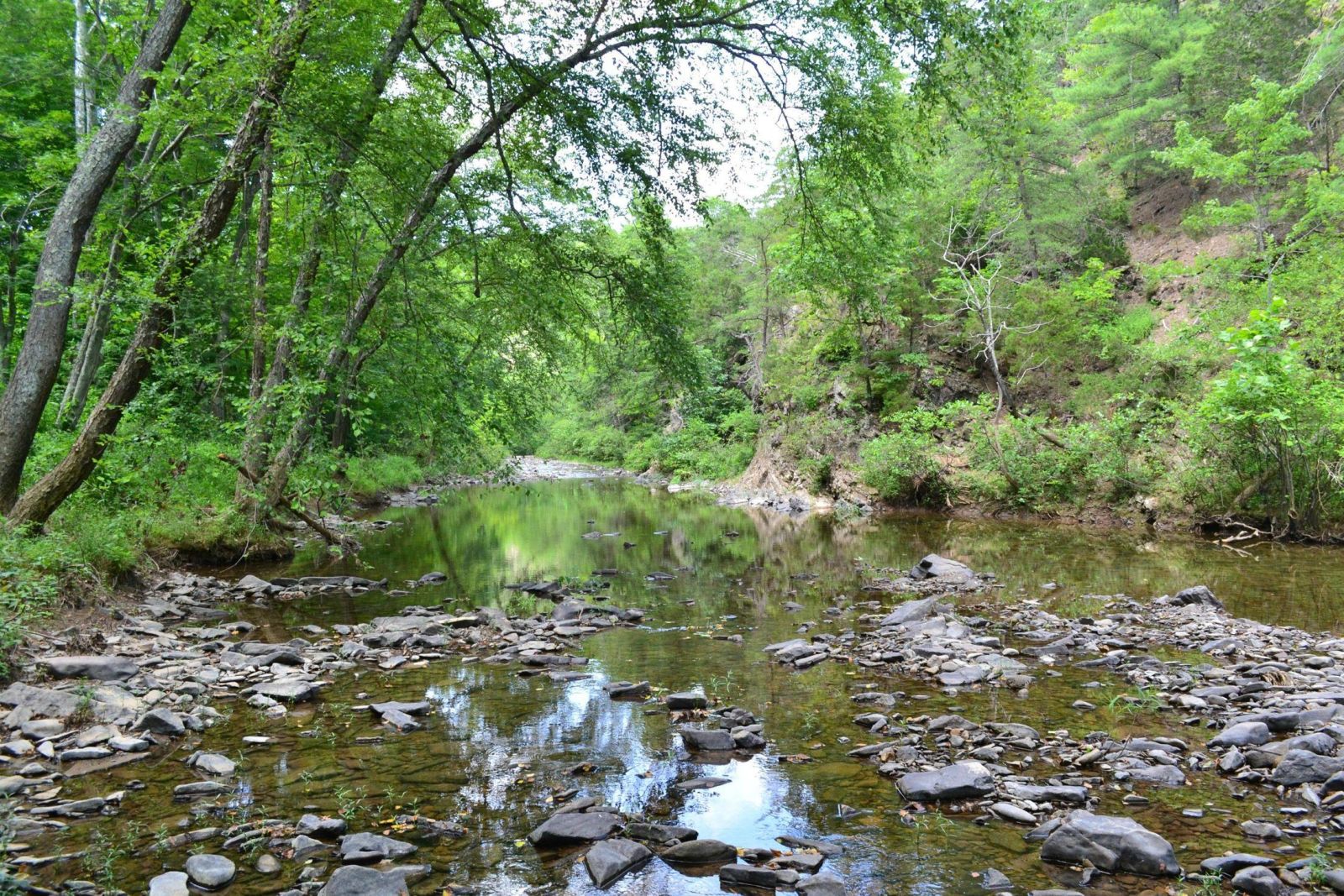
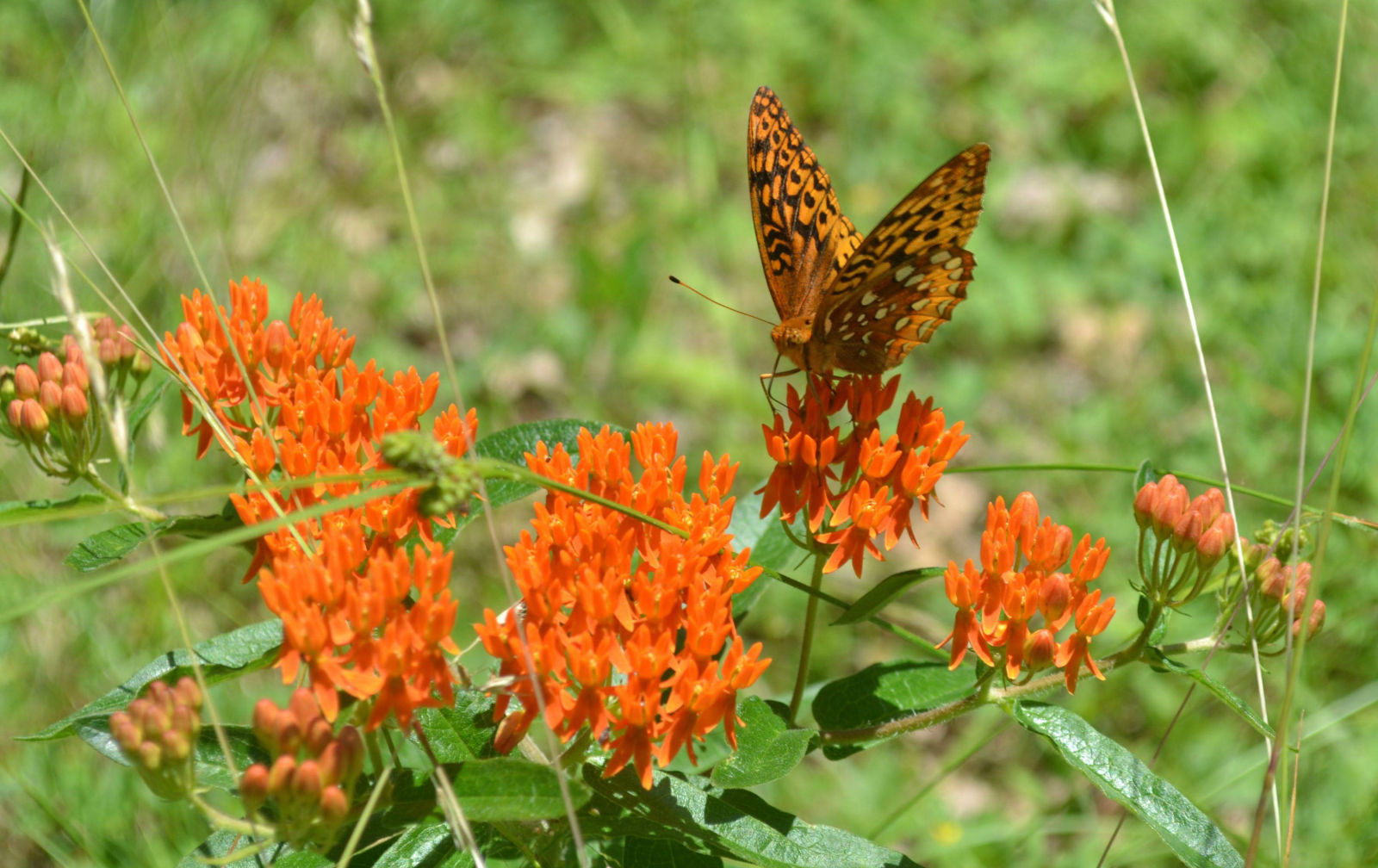
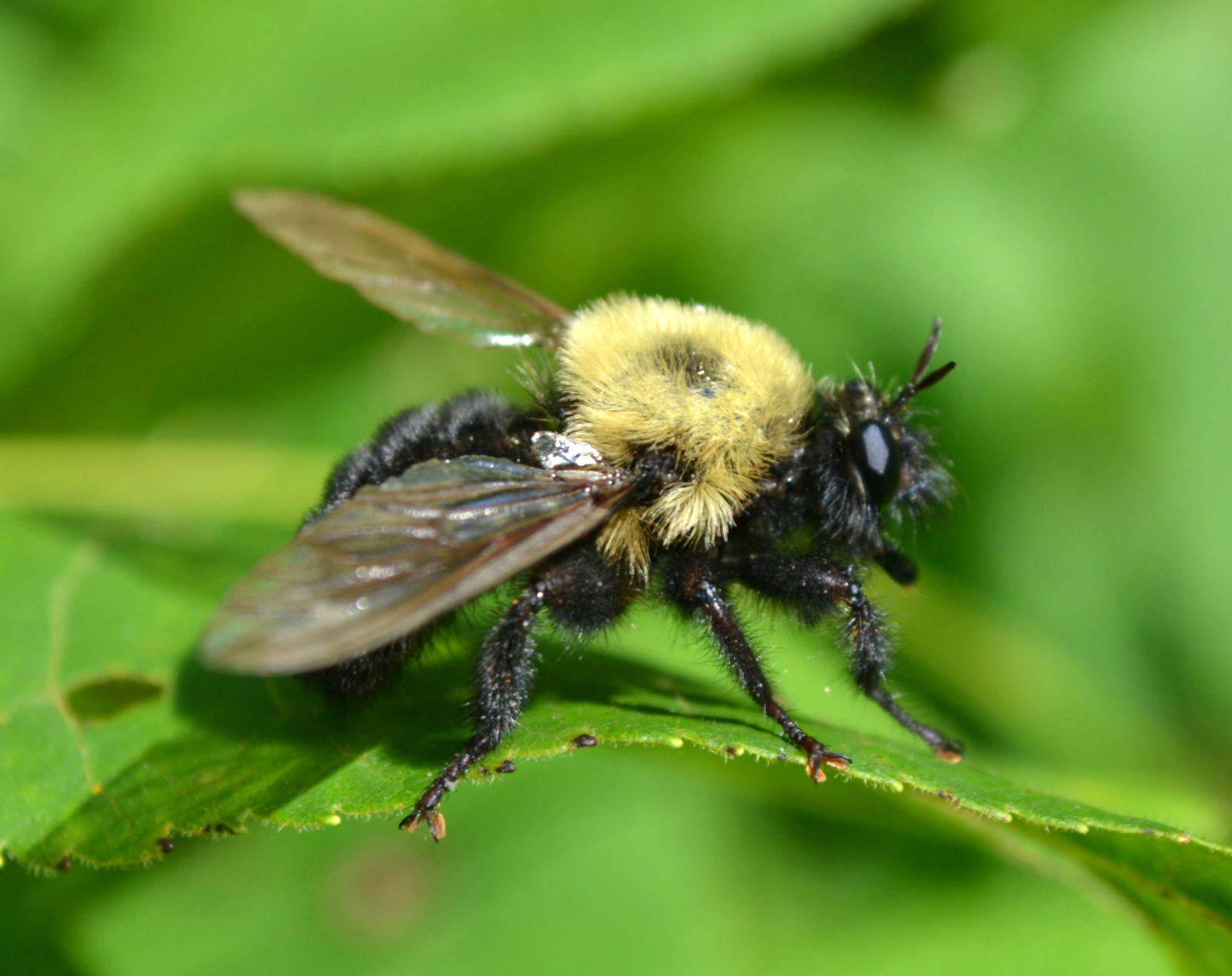
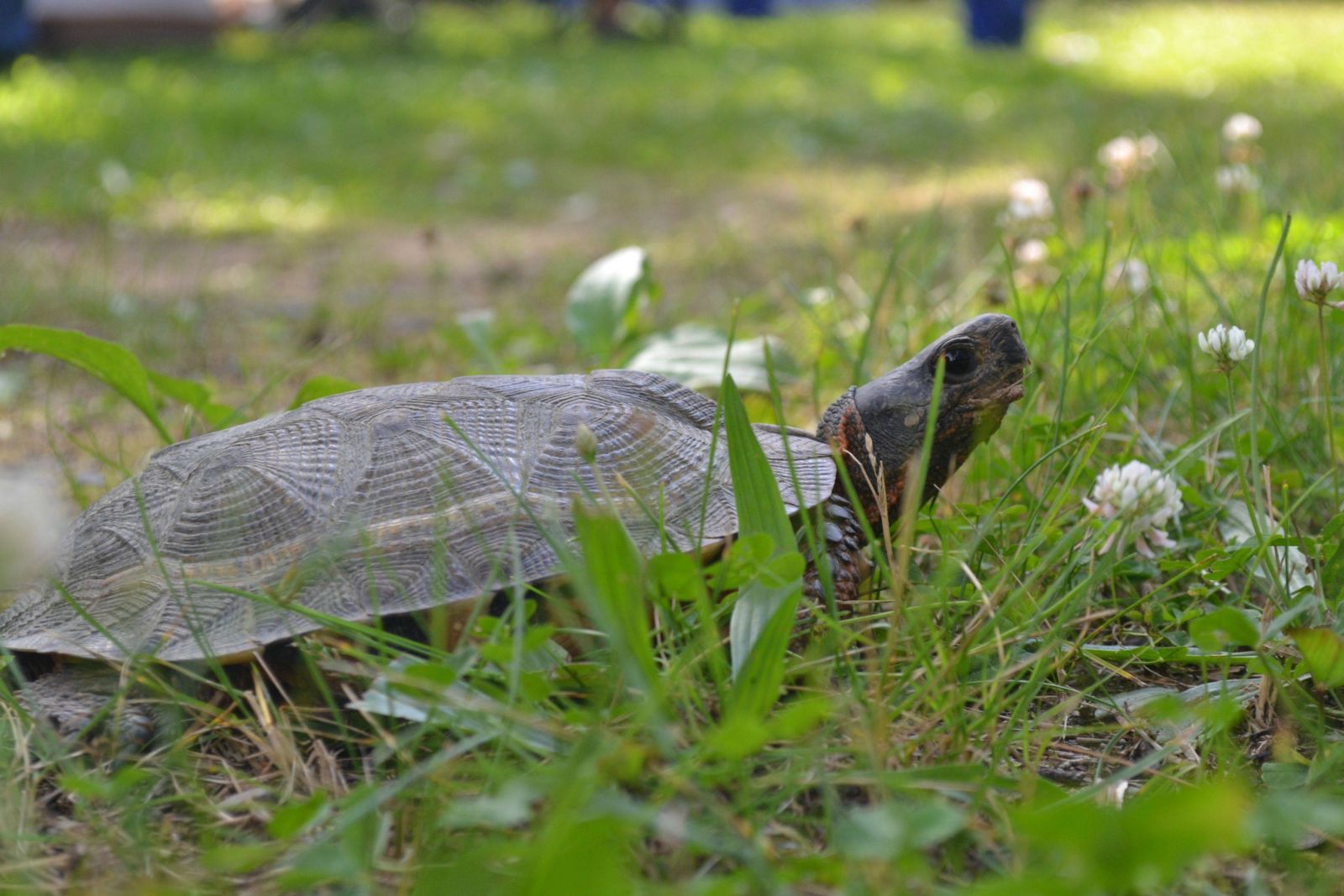
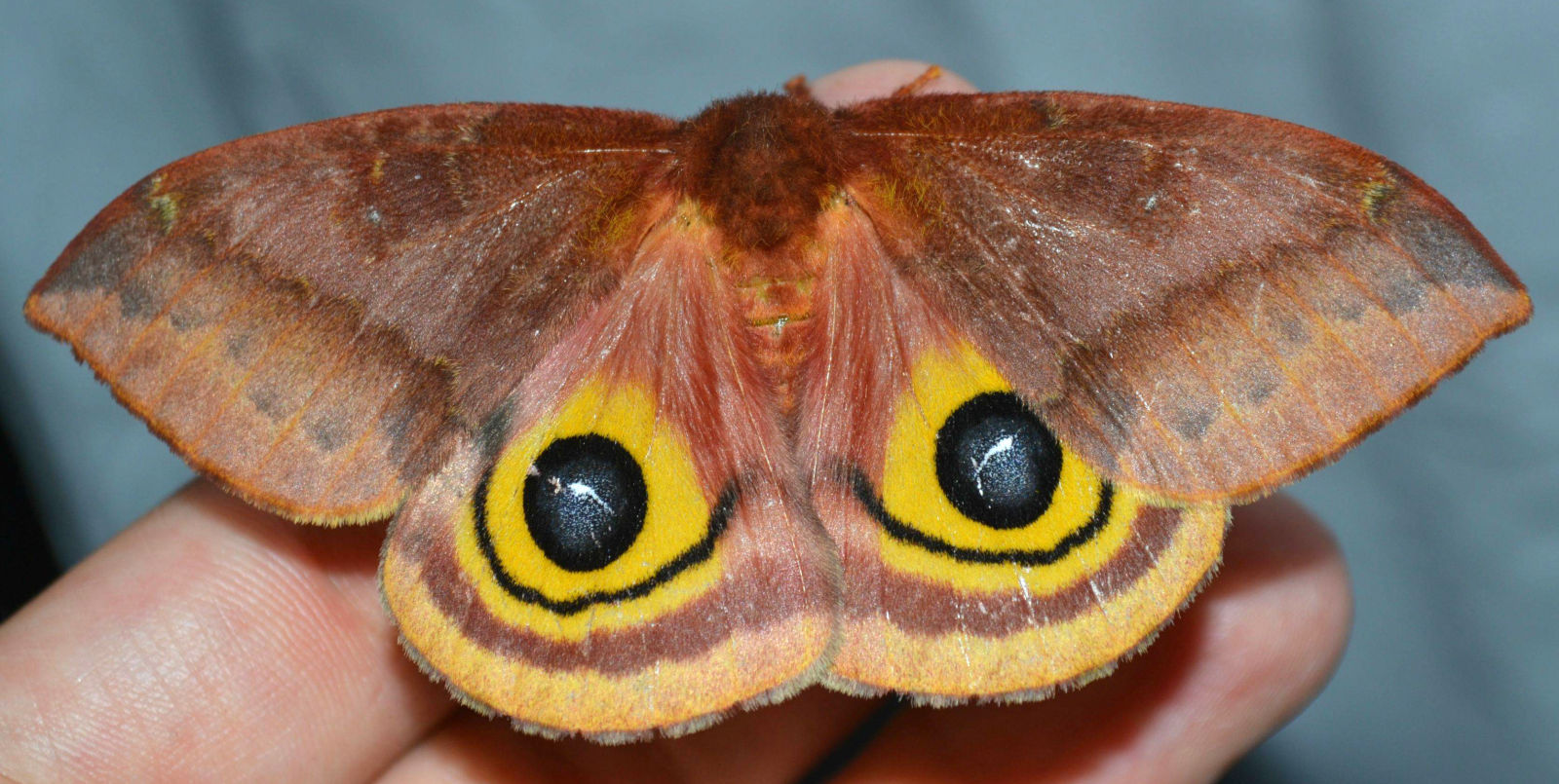
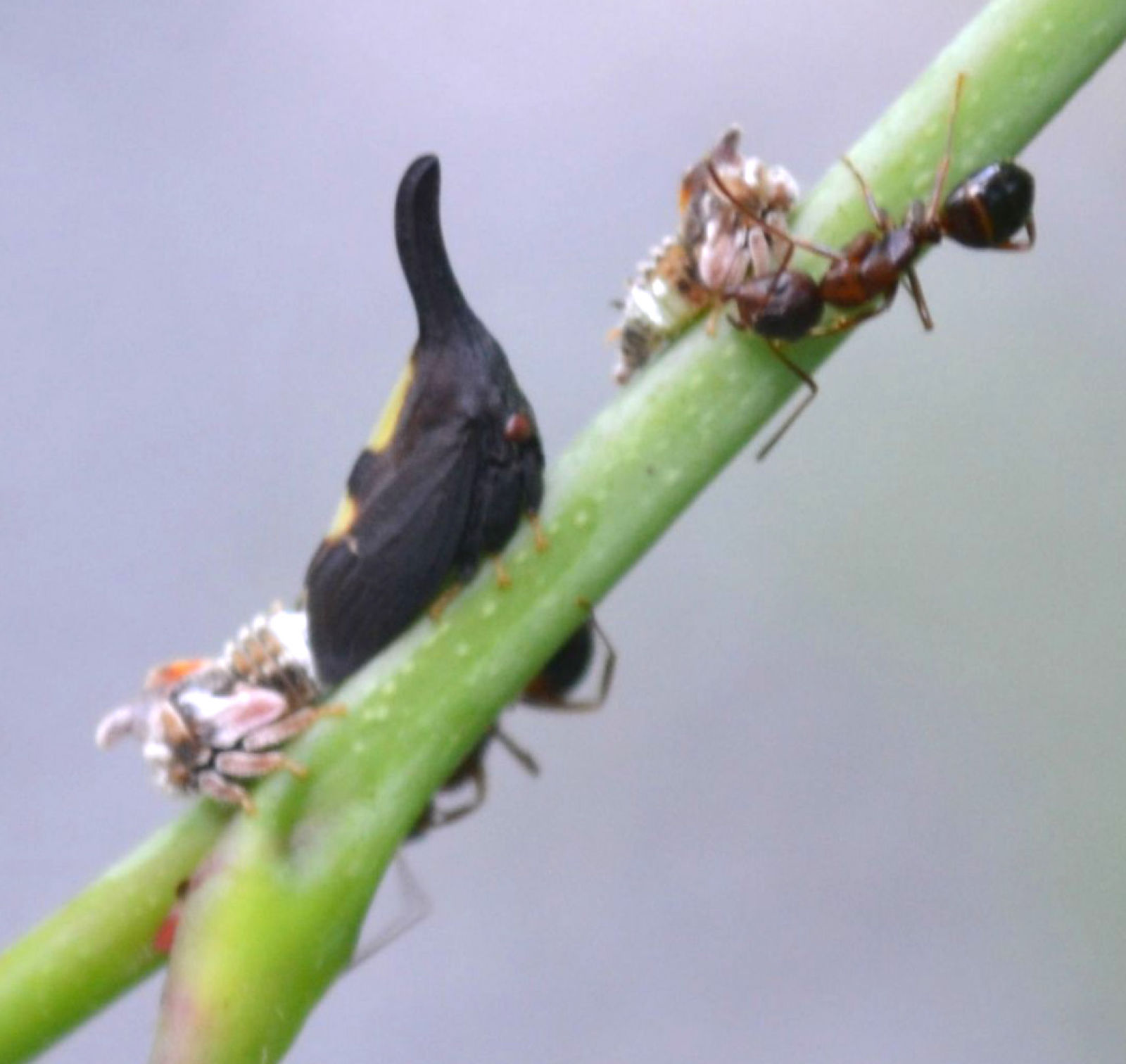
Attendees were among the first to see printed copies of "A review of the Planthoppers (Hemiptera: Fulgoroidea) of the United States,” by Bartlett, O’Brien, and Wilson. "Hot off the press," this impressive and richly illustrated volume includes: a checklist of the 12 families, 167 genera, and 914 species occurring in the contiguous United States, plus 5 further genera (26 species) occurring in Canada and Alaska; keys to the families and genera; summaries of distribution; and an update to Metcalf’s bibliography. Another hot topic of discussion was the status of the genus Campylenchia, recently placed as a junior synonym of Enchenopa (Strümpel and Strümpel 2014a), but supported as a distinct genus in a prior molecular study (Lin, Danforth, and Wood 2004a). Attending systematists noted the need for sound phylogenetic analyses, as well as an examination of evidence from studies of life history, behavior, immatures, male mating calls, and host plant associations.
Participants collected a variety of insects at lights in the evenings. Images © Copyright 2014, by Luis Camacho.
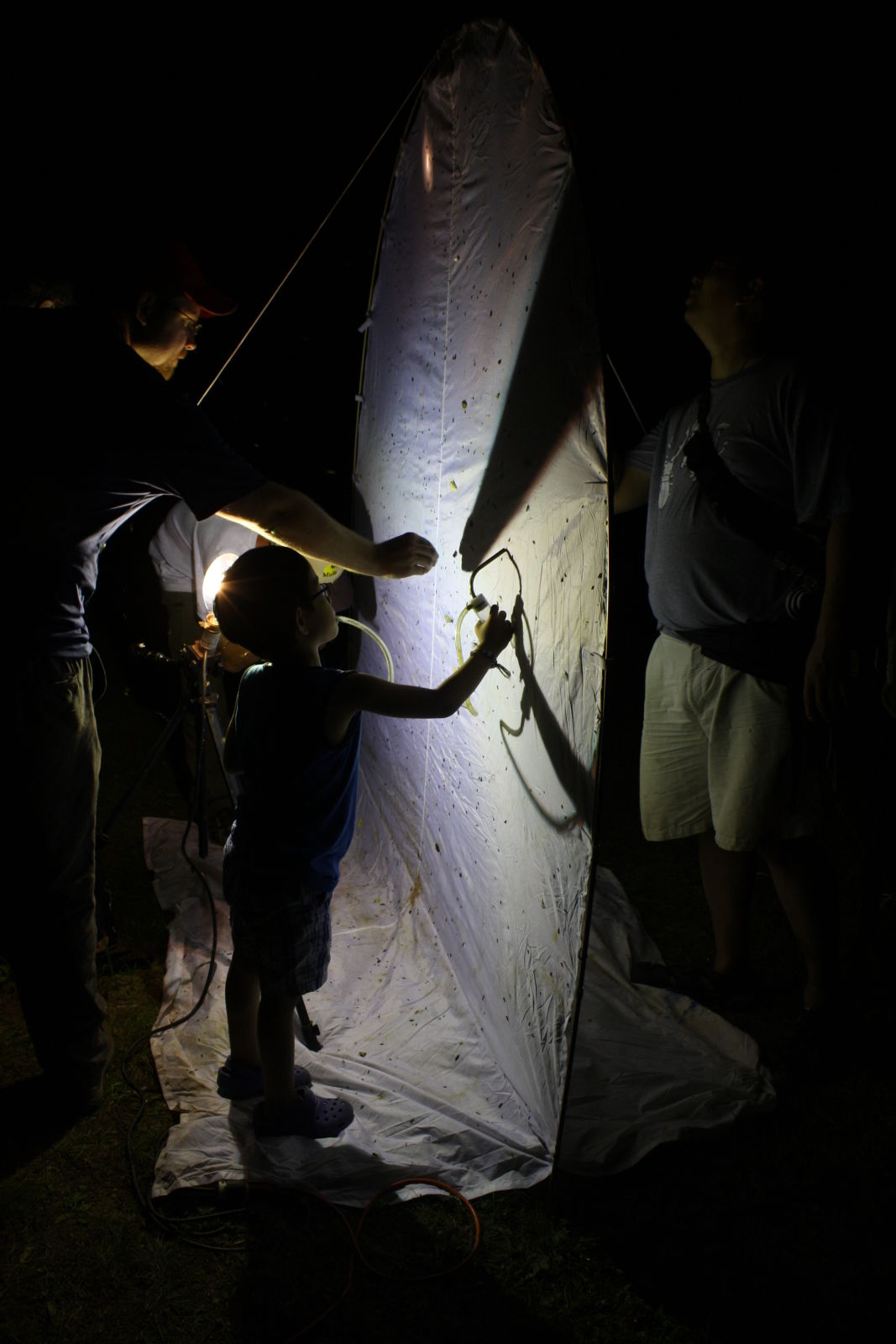
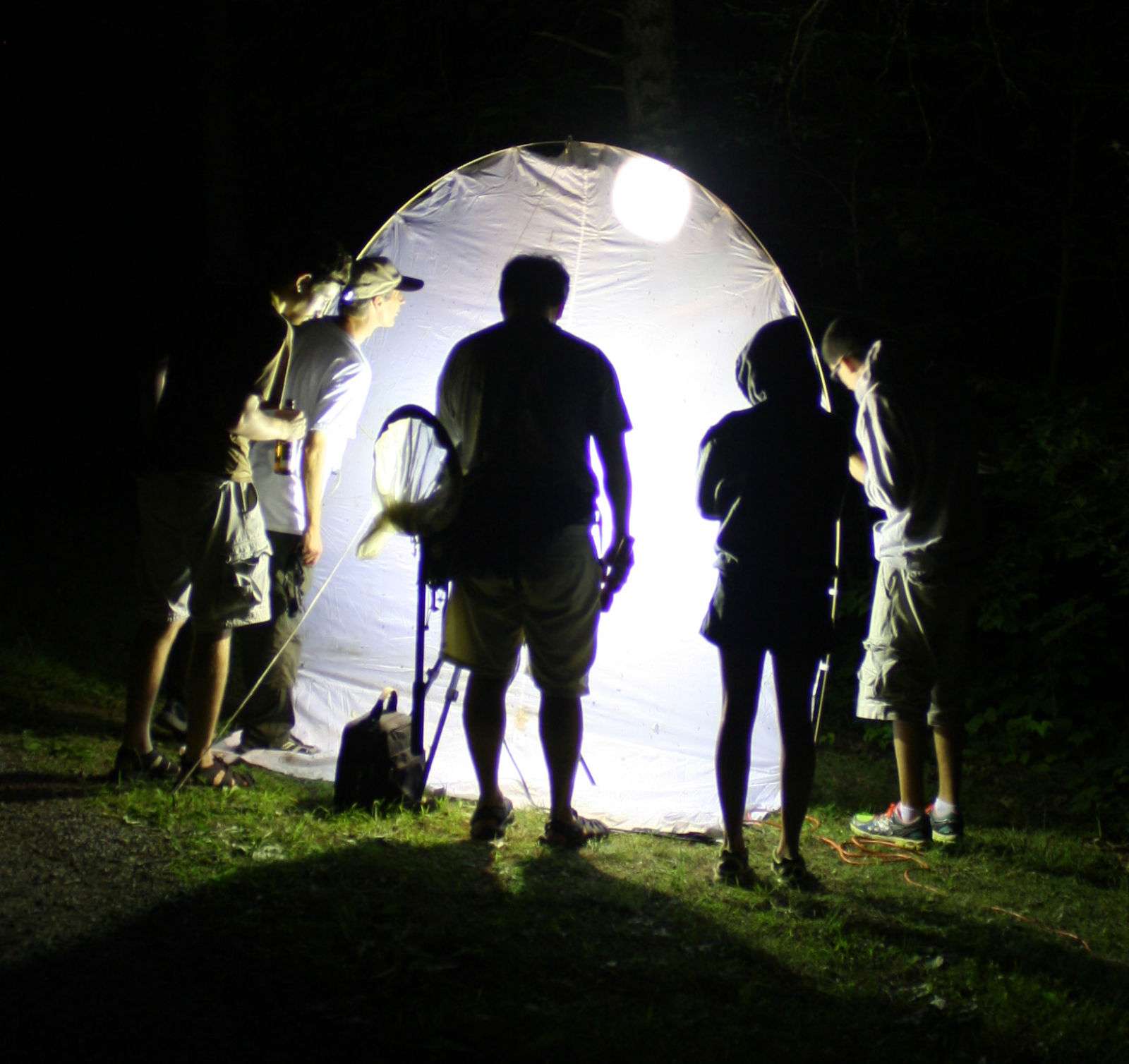
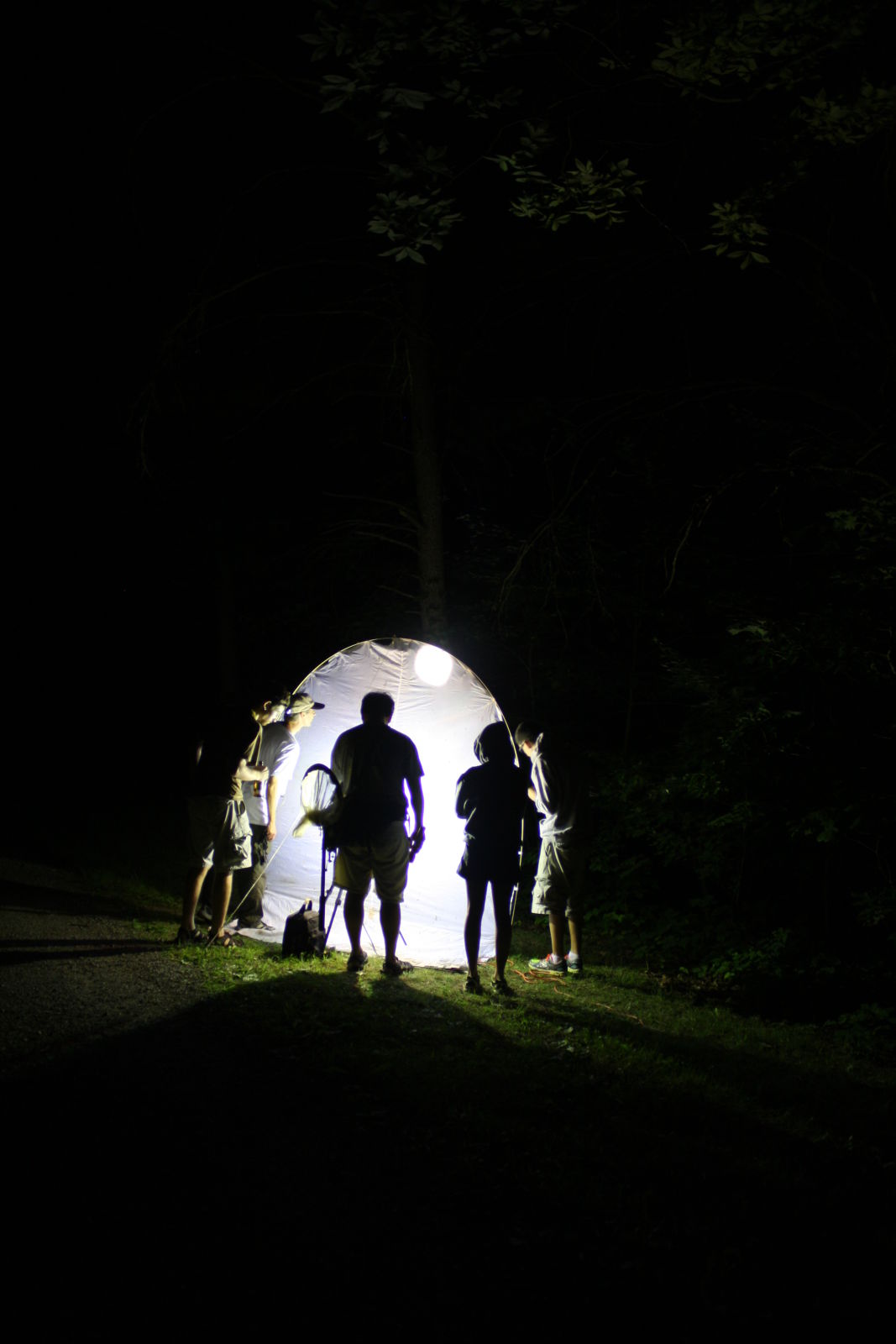
This year’s gathering was purposely timed in order to sample species that occur a little later in the collecting season. Thus some later season species were found including a few immatures of the tribe Telamonini. Recognizing the importance of features of immatures in treehopper systematics, Stu McKamey is preparing an identification key to the nymphs of the New World tribes and genera, while Matt Wallace is focusing on the nymphs of the Telamonini. As it stands, the 2015 Gathering will likely be scheduled for early June. We hope to announce the final dates 2 or 3 months before the event.









Attendees were among the first to see printed copies of "A review of the Planthoppers (Hemiptera: Fulgoroidea) of the United States,” by Bartlett, O’Brien, and Wilson. "Hot off the press," this impressive and richly illustrated volume includes: a checklist of the 12 families, 167 genera, and 914 species occurring in the contiguous United States, plus 5 further genera (26 species) occurring in Canada and Alaska; keys to the families and genera; summaries of distribution; and an update to Metcalf’s bibliography. Another hot topic of discussion was the status of the genus Campylenchia, recently placed as a junior synonym of Enchenopa (Strümpel and Strümpel 2014a), but supported as a distinct genus in a prior molecular study (Lin, Danforth, and Wood 2004a). Attending systematists noted the need for sound phylogenetic analyses, as well as an examination of evidence from studies of life history, behavior, immatures, male mating calls, and host plant associations.
Participants collected a variety of insects at lights in the evenings. Images © Copyright 2014, by Luis Camacho.



This year’s gathering was purposely timed in order to sample species that occur a little later in the collecting season. Thus some later season species were found including a few immatures of the tribe Telamonini. Recognizing the importance of features of immatures in treehopper systematics, Stu McKamey is preparing an identification key to the nymphs of the New World tribes and genera, while Matt Wallace is focusing on the nymphs of the Telamonini. As it stands, the 2015 Gathering will likely be scheduled for early June. We hope to announce the final dates 2 or 3 months before the event.
Dysnycritus and the new genus Allodrillus (Membracidae: Heteronotinae)
2014-08-15
Evangelista, O.; Flórez-V, C.; Sakakibara, A. M. 2014a. The identity of the treehopper genus Dysnycritus Fowler, with descriptions of new related taxa (Homoptera: Membracidae: Heteronotinae). Zootaxa 3847(4): 495-532.
[Dysyncritus is redefined to include only D. intectus Fowler. Allodrilus, n. gen., includes 8 spp. (7 new). Nomenclatural changes involve species moved from Dysyncritus to Smiliorachis (resulting in 2 new combinations and a new synonymy) and to Allodrilus (1 new combination). This richly illustrated work includes a key to the males of Allodrilus.]
[Dysyncritus is redefined to include only D. intectus Fowler. Allodrilus, n. gen., includes 8 spp. (7 new). Nomenclatural changes involve species moved from Dysyncritus to Smiliorachis (resulting in 2 new combinations and a new synonymy) and to Allodrilus (1 new combination). This richly illustrated work includes a key to the males of Allodrilus.]
Another Dimension to Treehopper Subsociality
2014-08-25
Camacho, L.; Keil, C.; Dangles, O. 2014a. Factors influencing egg parasitism in sub-social insects: insights from the treehopper Alchisme grossa (Hemiptera, Auchenorrhyncha, Membracidae). Ecological Entomology 39(1): 58–65.
This work explores the impact of maternal care on egg-parasitism in A. grossa. Females of this treehopper guard their egg masses, using their bodies and ponota to cover the eggs. Moreover, females actively ward off egg parasites by fanning their wings and kicking with their club-shaped hind legs. Camacho et al. found that increased numbers of females aggregated on a single host plant lower the risk and levels of egg parasitism through a “herd dilution effect.” The impact of possible cooperation among egg-guarding females adds another dimension to subsociality in the treehopper tribe Hoplophorionini.
This work explores the impact of maternal care on egg-parasitism in A. grossa. Females of this treehopper guard their egg masses, using their bodies and ponota to cover the eggs. Moreover, females actively ward off egg parasites by fanning their wings and kicking with their club-shaped hind legs. Camacho et al. found that increased numbers of females aggregated on a single host plant lower the risk and levels of egg parasitism through a “herd dilution effect.” The impact of possible cooperation among egg-guarding females adds another dimension to subsociality in the treehopper tribe Hoplophorionini.
Pyrgonota bifoliata: a Species Complex
2014-08-26
Su, Y.-C.; Wang, J.-F.; Villanueva, R. J. T.; Nuñeza, O. M.; Lin, C.-P. 2014a. Hopping out of Mindanao: Miocene-Pliocene geological processes and cross-island dispersal as major drivers of diversity for Philippine treehoppers. Journal of Biogeography 41(7): 1277-1290.
Work on the biogeographical history of Pyrgonota bifoliata suggests that Miocene-Pliocene geological events and related cross-island dispersal contributed to species diversity in the Philippines. Using phylogenetic reconstruction based on two genes (mitochondrial cytochrome c oxidase 1 subunit [cox1] and nuclear wingless [wg]), the authors found evidence of nine cryptic species that form the Pyrgonota bifoliata species complex.
Work on the biogeographical history of Pyrgonota bifoliata suggests that Miocene-Pliocene geological events and related cross-island dispersal contributed to species diversity in the Philippines. Using phylogenetic reconstruction based on two genes (mitochondrial cytochrome c oxidase 1 subunit [cox1] and nuclear wingless [wg]), the authors found evidence of nine cryptic species that form the Pyrgonota bifoliata species complex.
Immatures and Host Plants of Telamonine Treehoppers
2014-10-24
Wallace, M. S. 2014a. The host plants of the Telamonini treehoppers (Hemiptera: Membracidae: Smiliinae) and the first diagnoses of nymphs for 14 species. Zootaxa 3878 (2): 146–166.
Owing to their cryptic shapes and coloration, nymphs of the treehopper tribe Telamonini (with 68 species) closely resemble parts of the plants on which they feed and develop. Wallace’s work provides the first comprehensive list of telamonine host plants along with useful morphological diagnoses and color photos for identifying the fifth instar nymphs of 15 species. The cryptic nymph of Archasia belfragei, below, is hidden in plain view (photo © 2013, by Matthew S. Wallace).
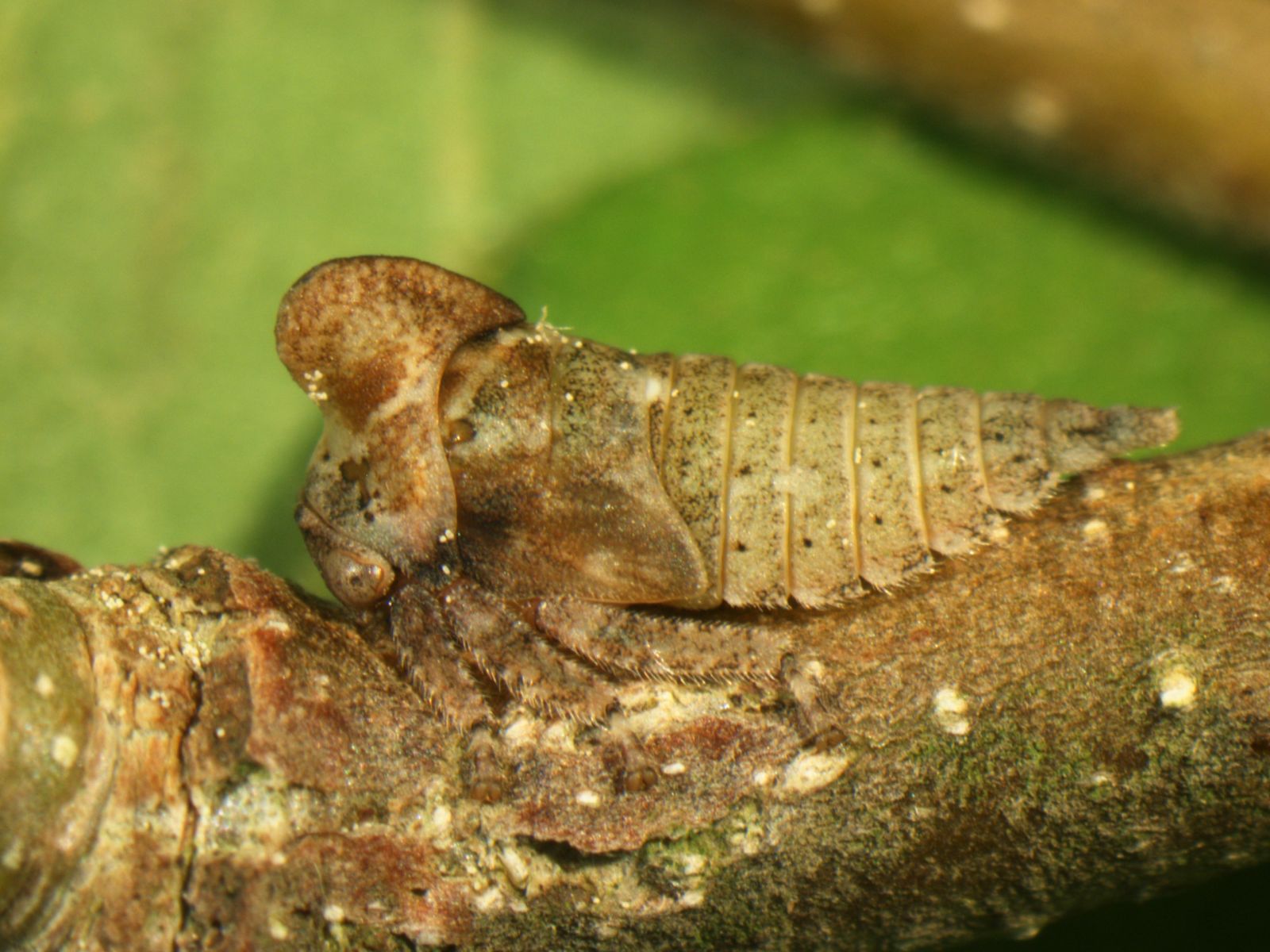
Members of this tribe are recorded from 80 host plant species in 41 genera and 22 families. The total number of hosts species/treehopper ranges from a single host (in 12 telamonine species) to 29 different hosts (in Telamona monticola). Indeed, many telamonines are recorded from more than one plant genus. The genus Quercus serves as a host for 45 of the tribe's 68 species.
Owing to their cryptic shapes and coloration, nymphs of the treehopper tribe Telamonini (with 68 species) closely resemble parts of the plants on which they feed and develop. Wallace’s work provides the first comprehensive list of telamonine host plants along with useful morphological diagnoses and color photos for identifying the fifth instar nymphs of 15 species. The cryptic nymph of Archasia belfragei, below, is hidden in plain view (photo © 2013, by Matthew S. Wallace).

Members of this tribe are recorded from 80 host plant species in 41 genera and 22 families. The total number of hosts species/treehopper ranges from a single host (in 12 telamonine species) to 29 different hosts (in Telamona monticola). Indeed, many telamonines are recorded from more than one plant genus. The genus Quercus serves as a host for 45 of the tribe's 68 species.
Master of Science Thesis on the Membracidae of Colombia
2014-11-20
González Mozo, L. C. 2014. Sinopsis de Membracidae (Hemiptera: Membracoidea) de Colombia, relacionados con ecosistemas agrícolas. Maestria en Ciencias Agrarias--Entomología, Universidade Nacional de Colombia, Bogotá, Colombia. [iv] + viii + 145 pp. [M.S. thesis; available online]
Wild, Weird, and Wired
2014-12-10
Check out treehopper facts, images, videos, and sounds featured in Absurd Creature of the Week: This Is an Actual Insect. This Is Not a Joke, by Matt Simon (Wired.com: 5 December 2014).
Membracid Types at the Museu de Zoologia da Universidade de São Paulo
2014-12-15
Evangelista, O.; Santos, G. I. M. dos; Lamas, C. E. 2014a. An annotated catalogue of the Membracidae types in the Museu de Zoologia da Universidade de São Paulo, Brazil (Hemiptera: Auchenorrhyncha: Cicadomorpha). Zootaxa 3895(1): 1–30.
This useful catalogue documents 106 primary and 171 secondary membracid types held at the Museu de Zoologia da Universidade de São Paulo (MZSP). These specimens represent 82 nominal species in 17 treehopper tribes (8 subfamilies). The authors include notes on taxonomy, extensive literature sources, and for each type: precise label data and notes on the condition of the preserved material.
This useful catalogue documents 106 primary and 171 secondary membracid types held at the Museu de Zoologia da Universidade de São Paulo (MZSP). These specimens represent 82 nominal species in 17 treehopper tribes (8 subfamilies). The authors include notes on taxonomy, extensive literature sources, and for each type: precise label data and notes on the condition of the preserved material.
Colombian Membracidae: 474 Species in 116 Genera
2015-01-15
Flórez-V., C.; Wolff, M. I.; Cardona-Duque, J. 2015a. Contribution to the taxonomy of the family Membracidae Rafinesque (Hemiptera: Auchenorrhyncha) in Colombia. Zootaxa 3910 (1): 1–261. [in English with Spanish abstract]
With color images, diagnoses, and a key for identifying the membracid genera of Colombia, this publication increases the numbers of membracids reported for that country to 116 genera and 474 species. This research was based on the literature, field collections and observations (2011 to 2014), and the examination 3744 specimens held in ten entomological collections in Colombia. The authors provide data on biology and distribution for each genus and also highlight features differentiating the genera Anobilia and Stilbophora (Smiliinae: Tragopini), referring six species from the former to the latter as new combinations.
With color images, diagnoses, and a key for identifying the membracid genera of Colombia, this publication increases the numbers of membracids reported for that country to 116 genera and 474 species. This research was based on the literature, field collections and observations (2011 to 2014), and the examination 3744 specimens held in ten entomological collections in Colombia. The authors provide data on biology and distribution for each genus and also highlight features differentiating the genera Anobilia and Stilbophora (Smiliinae: Tragopini), referring six species from the former to the latter as new combinations.
New Telamonine Treehopper from Costa Rica: Mutilifolia nishidai
2015-01-23
Wallace, M. S. 2015a. A striking new treehopper genus Mutilifolia (Hemiptera: Membracidae: Smiliinae: Telamonini), from Costa Rica. Zootaxa 3914 (1): 83–88.
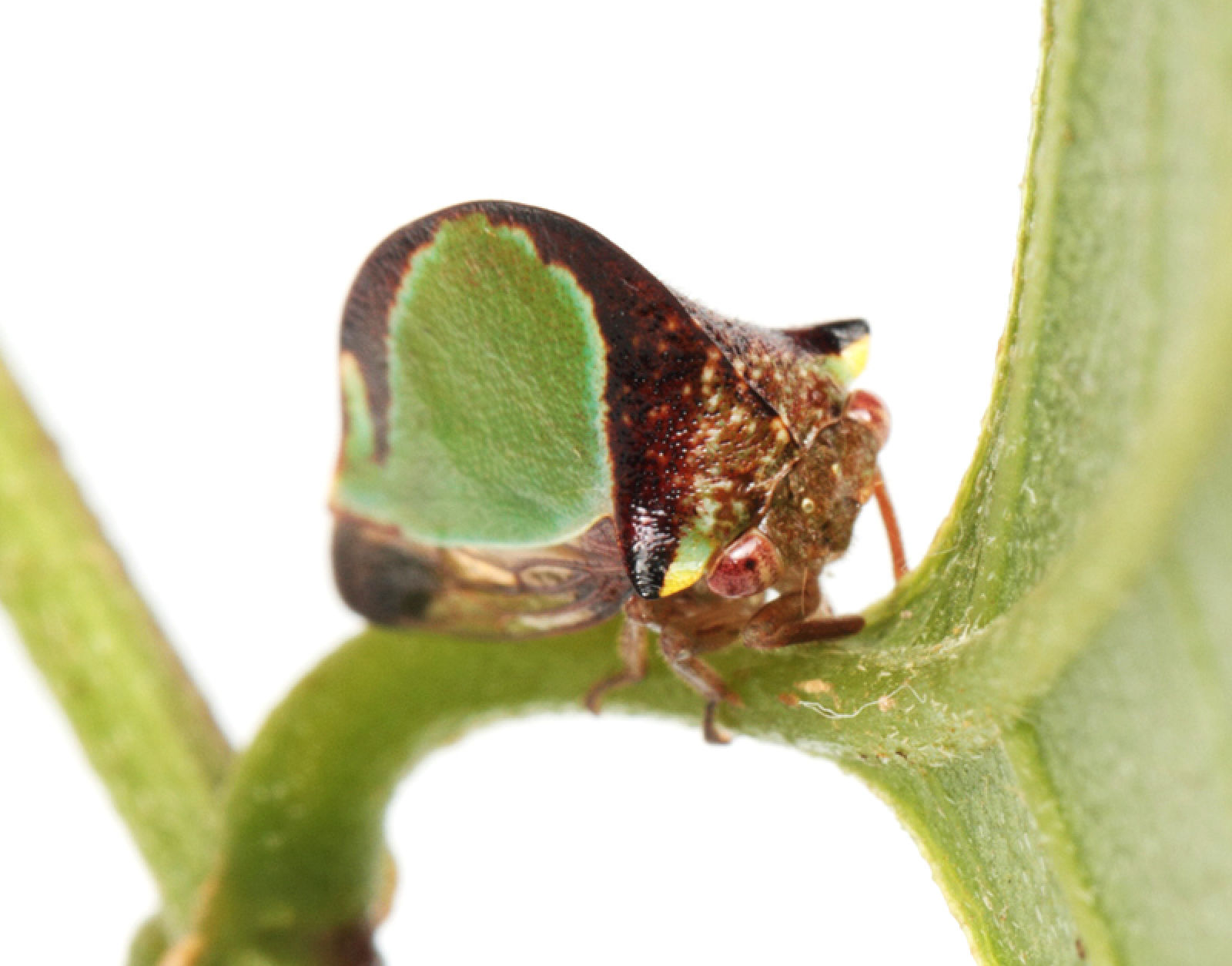
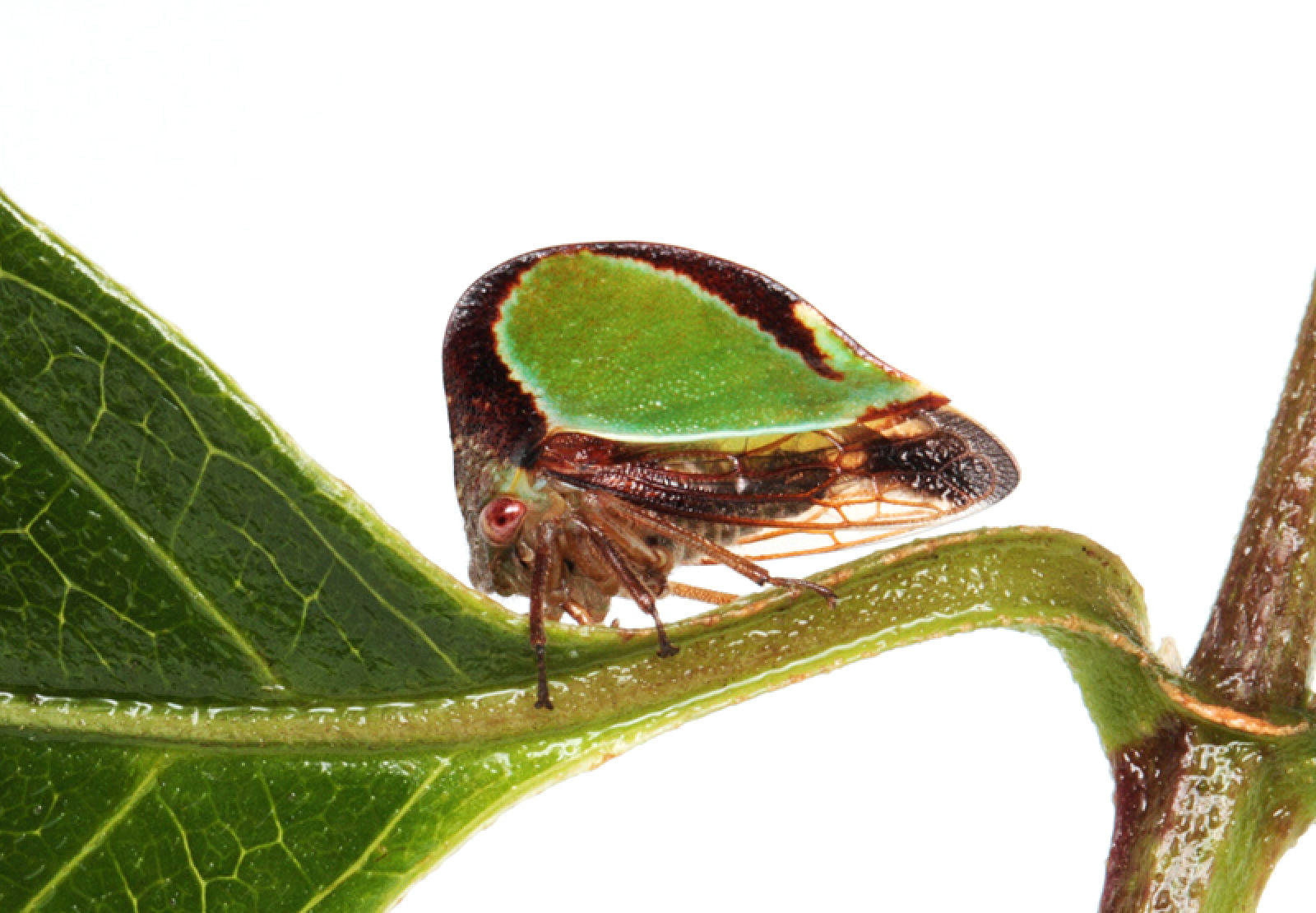
© 2015, Kenji Nishida
The new genus and species Mutilifolia nishidai differs from those of all known telamonine genera in bearing two recurved teeth on the male style clasp. The species is named in honor of treehopper enthusiast Kenji Nishida, who collected the type material at the Monteverde Biological Station in the highlands of Costa Rica. Kenji regularly contributes exceptional photos of treehoppers to this Website, including the images above. The pronotum of Mutilifolia--folicaceous, highly elevated, largely green--is similar to that in species of Antianthe, Archasia, and Hemicardiacus.


© 2015, Kenji Nishida
The new genus and species Mutilifolia nishidai differs from those of all known telamonine genera in bearing two recurved teeth on the male style clasp. The species is named in honor of treehopper enthusiast Kenji Nishida, who collected the type material at the Monteverde Biological Station in the highlands of Costa Rica. Kenji regularly contributes exceptional photos of treehoppers to this Website, including the images above. The pronotum of Mutilifolia--folicaceous, highly elevated, largely green--is similar to that in species of Antianthe, Archasia, and Hemicardiacus.
Neotropical Treehoppers: Recent Discoveries
2015-02-09
Sakakibara, A. M. 2014. A new species of Oeda (Hemiptera: Membracidae: Stegaspidinae) from Madre de Dios, Peru. Zoologia 31 (6): 557–560. [available online]
This work describes a new Peruvian treehopper, Oeda (Oeda) mielkei.
Lencioni-Neto, F.; Sakakibara, A. M. 2014 . Registro da ocorrência de Enchenopa beebei (Haviland) (Hemiptera, Membracidae) para o Brasil. [Registration of occurrence of Enchenopa beebei (Haviland) for Brazil.] Revista Univap (São José dos Campos-SP-Brasil) 20 (35): 86-92. [available online]
Enchenopa beebei (Haviland, 1925), previously known from Guiana, is reported from remnants of the Atlantic Forest, State of São Paulo, Brazil.
This work describes a new Peruvian treehopper, Oeda (Oeda) mielkei.
Lencioni-Neto, F.; Sakakibara, A. M. 2014 . Registro da ocorrência de Enchenopa beebei (Haviland) (Hemiptera, Membracidae) para o Brasil. [Registration of occurrence of Enchenopa beebei (Haviland) for Brazil.] Revista Univap (São José dos Campos-SP-Brasil) 20 (35): 86-92. [available online]
Enchenopa beebei (Haviland, 1925), previously known from Guiana, is reported from remnants of the Atlantic Forest, State of São Paulo, Brazil.
Plea for Care in Pronouncing Treehopper Names
2015-03-31
It has come to our attention that the careless pronunciation of certain treehopper names may offend or confuse workers here and abroad. We are not talking about George Willis Kirkaldy’s generic names for many insects, such as “Ohchisme, Dolichisme, Elachisme, Florichisme, Marichisme, Nanichisme, Peggichisme, and Polychisme,” all of which are considered sweet because the suffix “-chisme” (Greek) is pronounced “kiss-me”--nor even his treehopper genus “Alchisme,” which was perhaps more provocative when first proposed in 1904. Rather we refer to the common American pronunciation of the genus “Heranice,” which, if carelessly pronounced, may sound just as offensive as the usual American pronunciation of the name of the seventh planet from the sun. Here, we endorse the Portuguese pronunciation, in which the initial “H” is silent and the final “ce” is pronounced like the English word “see.”
In contrast, Spanish speakers would do well to Anglicize the unfortunate genus name “Llanquihuea” (based on Llanquihue, a province in Chile), thus not pronouncing the double “L” as a “Y.” Apparently, in Spanish this name sounds either hilarious or vulgar, depending on one’s point of view.
To reduce the large number of useless petitions to the International Commission on Zoological Nomenclature requesting the suppression of these names, we urge workers to preserve the dignity of treehoppers by pronouncing their names with care, decency, and good taste.
--Treehopper Specialists’ Declaration of 1 April 2015
In contrast, Spanish speakers would do well to Anglicize the unfortunate genus name “Llanquihuea” (based on Llanquihue, a province in Chile), thus not pronouncing the double “L” as a “Y.” Apparently, in Spanish this name sounds either hilarious or vulgar, depending on one’s point of view.
To reduce the large number of useless petitions to the International Commission on Zoological Nomenclature requesting the suppression of these names, we urge workers to preserve the dignity of treehoppers by pronouncing their names with care, decency, and good taste.
--Treehopper Specialists’ Declaration of 1 April 2015
23rd Annual Treehopper Gathering: 5-7 June 2015, Little Orleans, Maryland
2015-04-07
Join the 2015 Treehopper Gathering, set for 5 to 7 June (arrive Friday, depart Sunday), at the Little Orleans Campground, Little Orleans, Maryland. This casual get-together provides a pleasant opportunity to meet, swap stories, and collect with others passionate about treehoppers and related insects.
To reserve a campsite with our group or to obtain further information, contact Charles Bartlett. Advanced registration with Charles is essential to assure that you have a campsite.
Participants are expected to provide their own tents, food, and camping gear, and to share in the cost of the group campground registration and the group meal provided on Saturday evening. Bring your collecting vials, insect nets, unidentified specimens, cameras, macro lens, and bathing suits!
To reserve a campsite with our group or to obtain further information, contact Charles Bartlett. Advanced registration with Charles is essential to assure that you have a campsite.
Participants are expected to provide their own tents, food, and camping gear, and to share in the cost of the group campground registration and the group meal provided on Saturday evening. Bring your collecting vials, insect nets, unidentified specimens, cameras, macro lens, and bathing suits!
False Records of Telamona in South America
2015-04-15
McKamey, S. H.; Wallace, M. S. 2015a. The identity of three South American “telamonine” treehoppers (Hemiptera: Membracidae). Proceedings of the Entomological Society of Washington 117(1): 22-26.
Telamona ruificarinata Fowler, from Colombia, is referred to the genus Alchisme, with A. insolita Creão-Duarte and Sakakibara as a new junior synonym. Also, two species of Telamona described from Brazil–T. celsa Goding and T. turritella Buckton–are confirmed to be junior synonyms of the Nearctic species T. monticola (Fabricius) and Heliria praealta Fowler, respectively, their original type-locality data being incorrect.
Telamona ruificarinata Fowler, from Colombia, is referred to the genus Alchisme, with A. insolita Creão-Duarte and Sakakibara as a new junior synonym. Also, two species of Telamona described from Brazil–T. celsa Goding and T. turritella Buckton–are confirmed to be junior synonyms of the Nearctic species T. monticola (Fabricius) and Heliria praealta Fowler, respectively, their original type-locality data being incorrect.
Biodiversity Heritage Library Holds Broomfield’s 1971 & 1976 Works on Treehoppers
2015-04-20
Broomfield, P. S. 1971a. A catalogue of the membracid types (Homoptera: Membracidae) in the British Museum (Natural History). Bulletin of the British Museum (Natural History), Entomology 25(8):325-386. [available online]
Broomfiled, P. S. 1976a. A revision of the genus Amastris (Homoptera: Membracidae). Bulletin of the British Museum (Natural History), Entomology 33(4): 347-460. [available online]
Broomfiled, P. S. 1976a. A revision of the genus Amastris (Homoptera: Membracidae). Bulletin of the British Museum (Natural History), Entomology 33(4): 347-460. [available online]
Spiny Hopperling
2015-05-01
This spiny treehopper nymph is one of Katja Seltmann’s new series of bug inspired drawings. We hope it makes you smile.
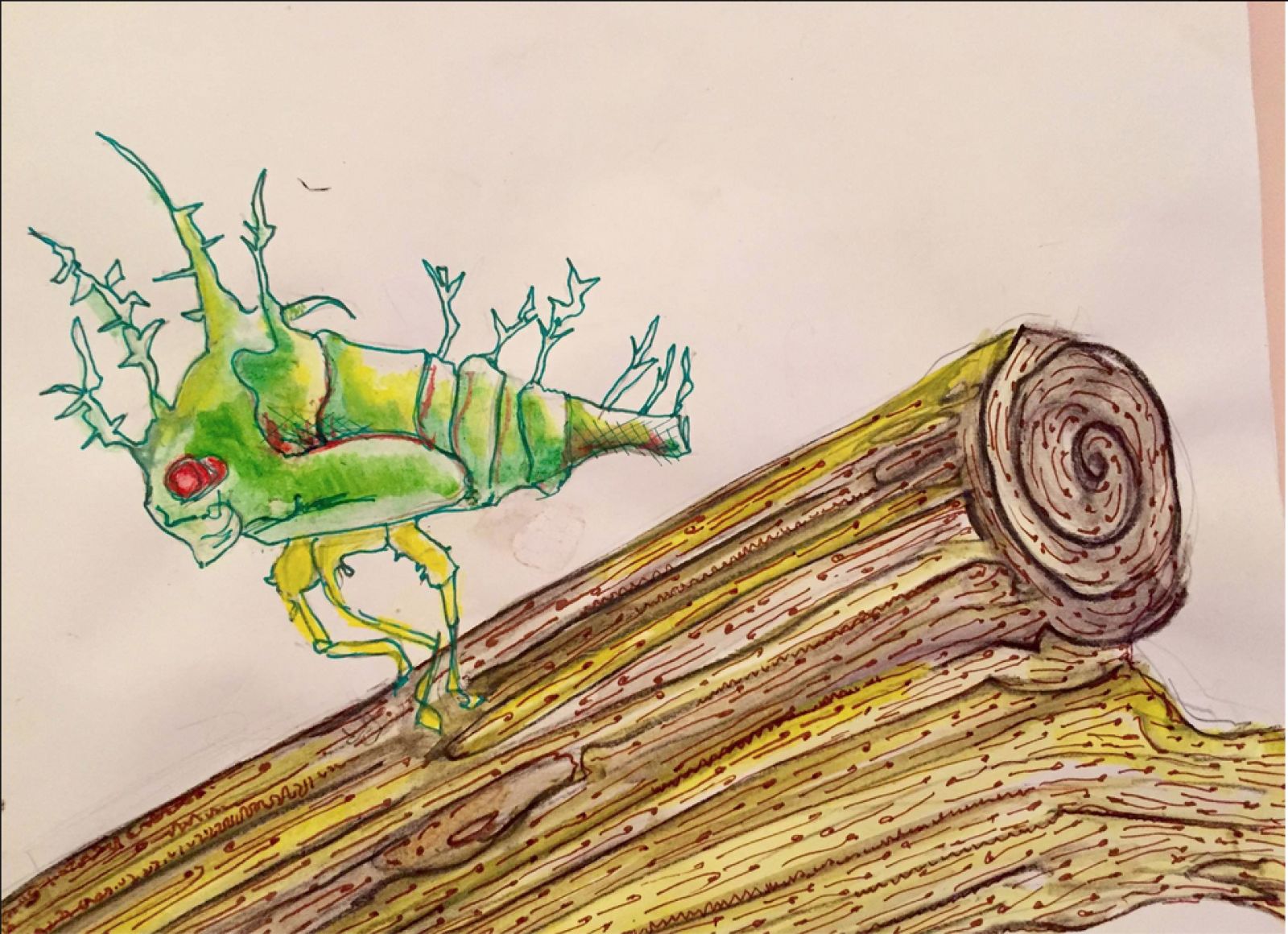
![]()
Copyright © 2015, by Katja Seltmann.

Copyright © 2015, by Katja Seltmann.
Updates of Treehopper Photographers and Other Collaborators
2015-05-12
We gratefully acknowledge the many generous individuals who provide digital images of treehoppers or assist in identifying images for us. While most of these collaborators are already included in our Acknowledgments, we list below new supporters since our last update. The most recent image contributed is this stunning photo of a Membracis species [identification revised on 26 May 2015], taken in Brazil by Weiwei Zhang.
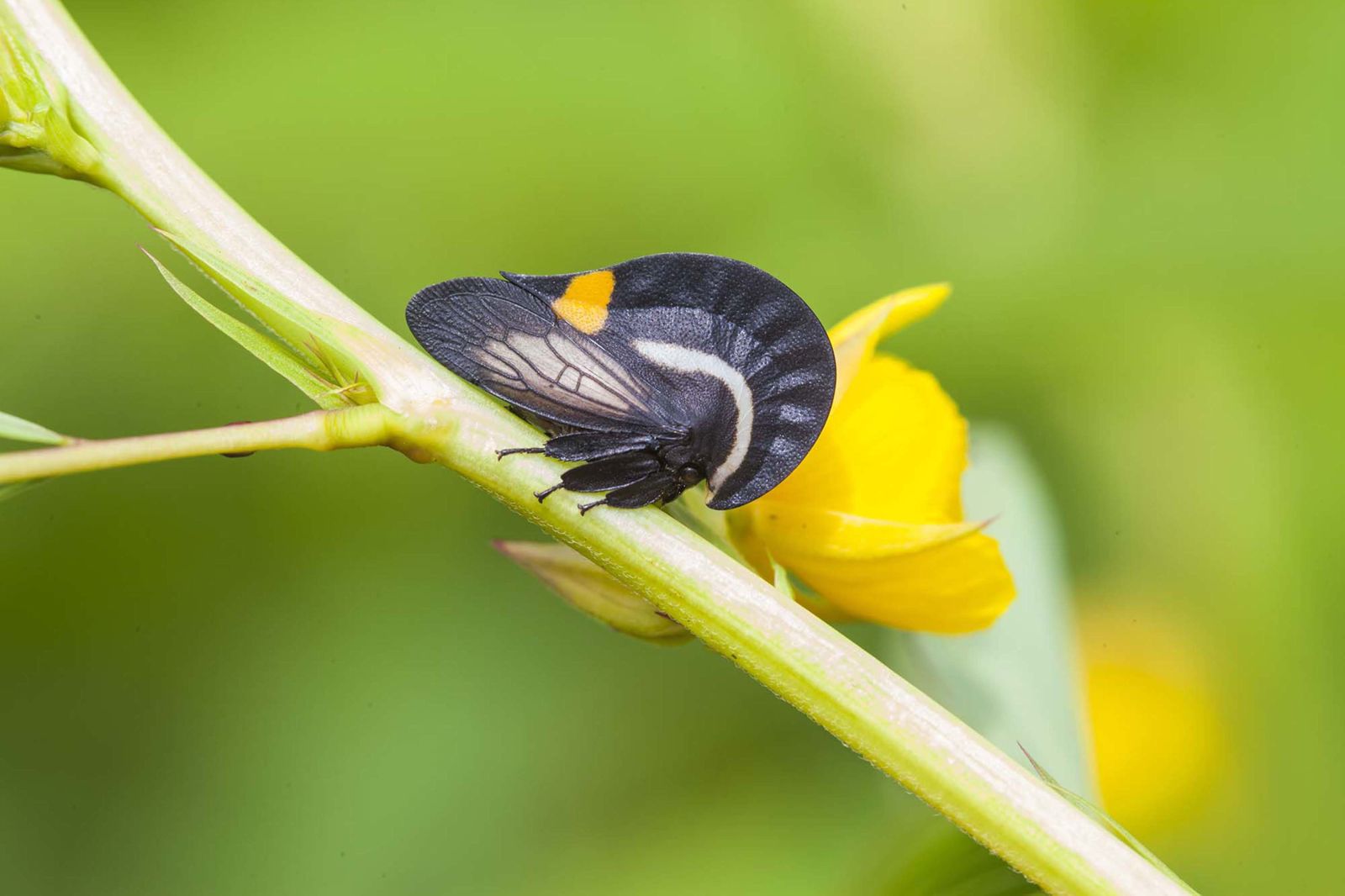
![]()
© 2015, by Weiwei Zhang
Collaborating photographers: Matthew A. Bertone (Department of Entomology, NCSU, Raleigh); Adam J. Bell (University at Albany, SUNY, Albany, New York); Robert E. Clark (Wesleyan University, Connecticut); Ashley M. Dennison (East Stroudsburg University, Pennsylvania); Olaf H. H. Mielke (Universidade Federal do Paraná, Curitiba-PR, Brazil); Dale Lee Denham-Logsdon (Dalesmicro, Toluca, State of Mexico, Mexico); Camilo Flórez-Valencia (Universidad de Antioquia, Colombia); Gustavo F. Morejón J. (Cuenca, Ecuador); Eli S. Wyman (American Museum of Natural History, New York); Weiwei Zhang (Chongqing, China). Other collaborators: Dawn J. Flynn (Schiele Museum of Natural History, Gastonia, North Carolina); Ai-Ping Liang (Key Laboratory of Zoological Systematics and Evolution, Chinese Academy of Sciences, Beijing).
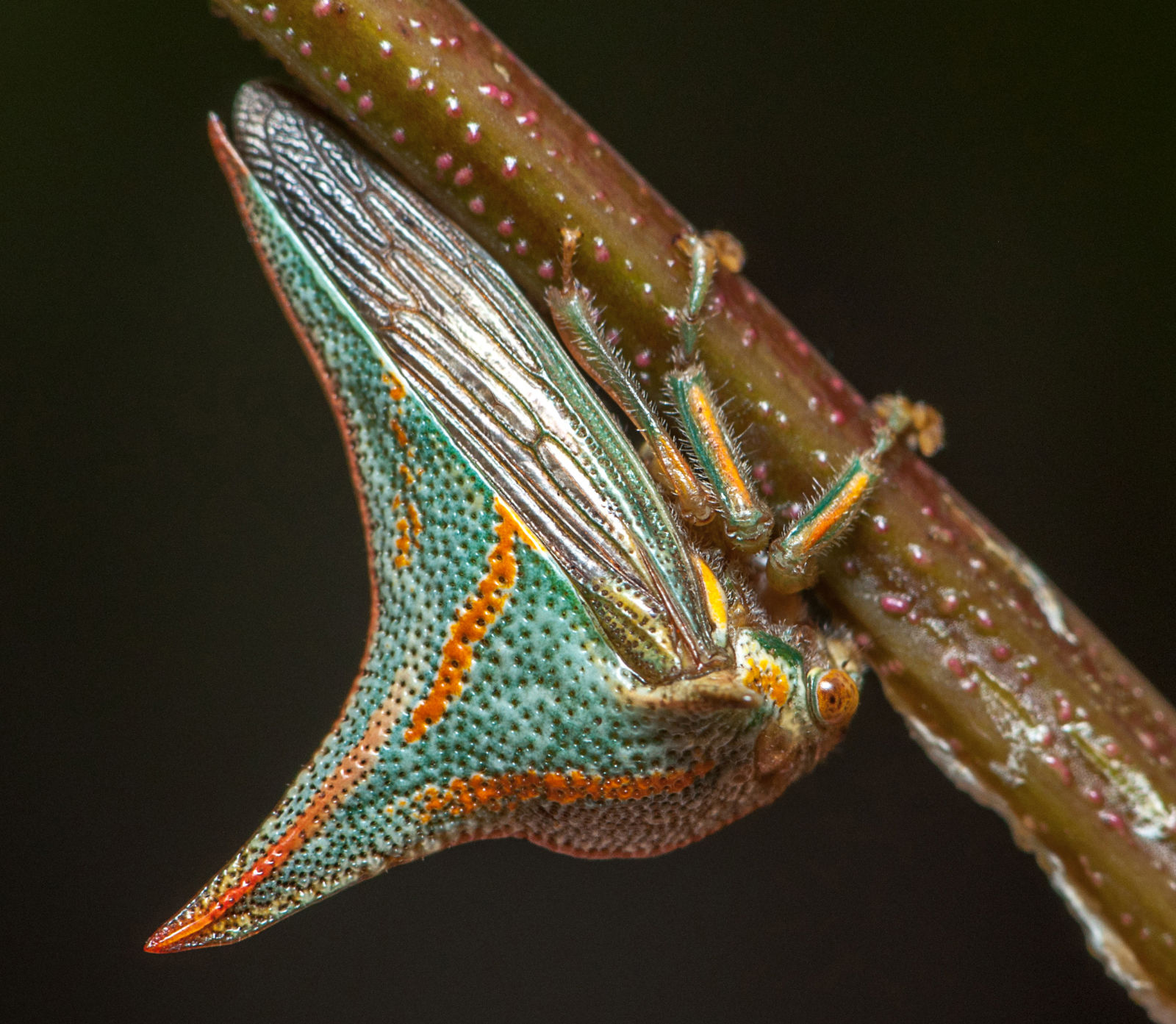
![]()
Umbonia crassicornis (Amyot and Serville) © 2013, by Matthew A. Bertone

© 2015, by Weiwei Zhang
Collaborating photographers: Matthew A. Bertone (Department of Entomology, NCSU, Raleigh); Adam J. Bell (University at Albany, SUNY, Albany, New York); Robert E. Clark (Wesleyan University, Connecticut); Ashley M. Dennison (East Stroudsburg University, Pennsylvania); Olaf H. H. Mielke (Universidade Federal do Paraná, Curitiba-PR, Brazil); Dale Lee Denham-Logsdon (Dalesmicro, Toluca, State of Mexico, Mexico); Camilo Flórez-Valencia (Universidad de Antioquia, Colombia); Gustavo F. Morejón J. (Cuenca, Ecuador); Eli S. Wyman (American Museum of Natural History, New York); Weiwei Zhang (Chongqing, China). Other collaborators: Dawn J. Flynn (Schiele Museum of Natural History, Gastonia, North Carolina); Ai-Ping Liang (Key Laboratory of Zoological Systematics and Evolution, Chinese Academy of Sciences, Beijing).

Umbonia crassicornis (Amyot and Serville) © 2013, by Matthew A. Bertone
Reminder: June 2015 Treehopper Gathering in Little Orleans, Maryland
2015-05-12
The 2015 Treehopper Gathering will be 5 to 7 June (arrive Friday, depart Sunday), at the Little Orleans Campground, Little Orleans, Maryland. To reserve a campsite with our group or to obtain further information, contact Charles Bartlett. Advanced registration with Charles is essential to assure that you have a campsite. Participants are expected to provide their own tents, food, and camping gear, and to share in the cost of the group campground registration and the group meal provided on Saturday evening.
2015 Treehopper Aggregation at Little Orleans, Maryland
2015-06-17
The 23rd Annual Treehopper Gathering (5 to 7 June, Little Orleans, Maryland) brought together treehopper enthusiasts from Delaware, Florida, Kansas, Maryland, New York, North Carolina, Pennsylvania, South Carolina, and South Dakota.
Fig. 1. Group photo of 2015 attendees., left to right (b= back; f = front): Charles Bartlett, Ruth Moscovitchf, Vinton Thompson, Mark Rothschild, Kelley Tilmon, Andrew Shortb, Dennis Kopp, Stuart McKameyf, Adam Bellb, Anthony Gonzon, Nate Nazdrowiczf, Lawrence Barringerb, Anthony Deczynski, Ashley Kennedyf, Yuri Park, Lewis Deitzb, Alexis Park, Duncan Parkf.
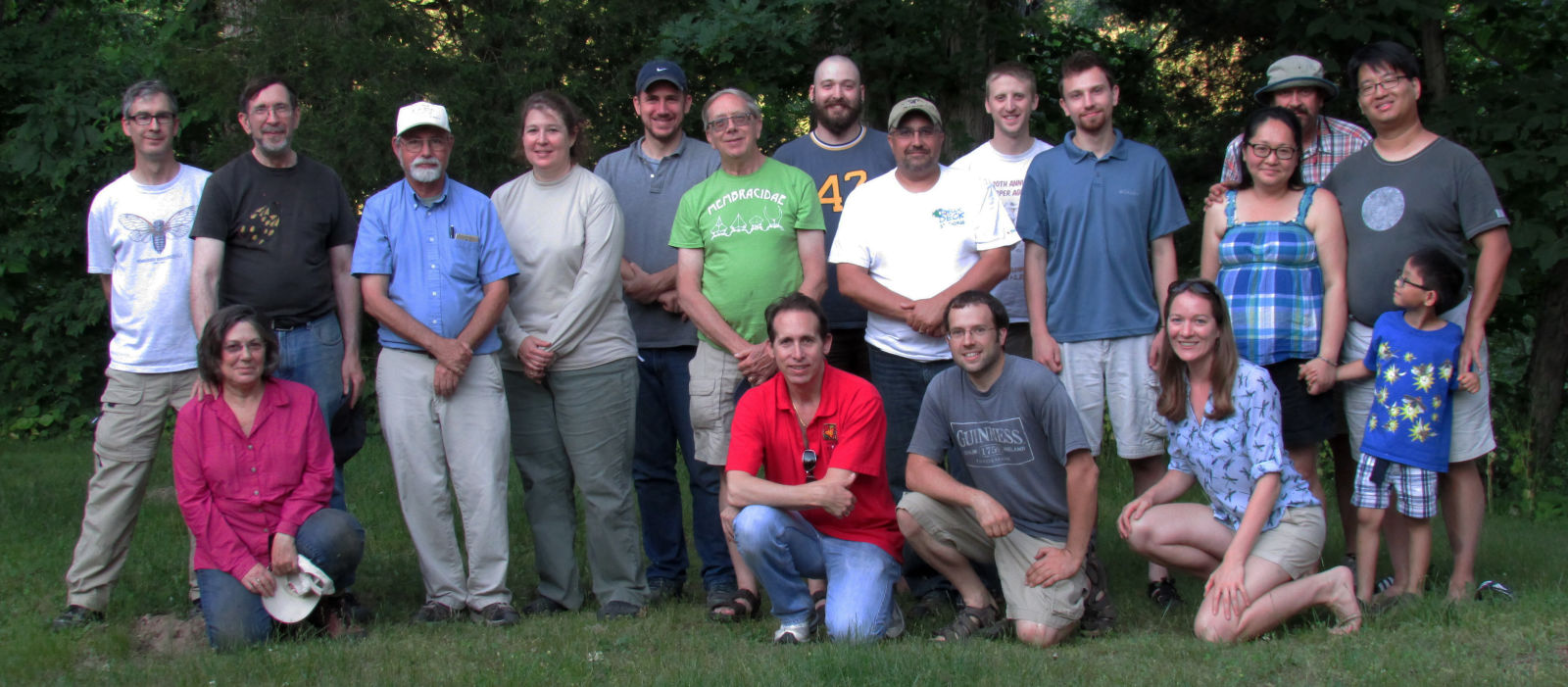
© Copyright 2015, by Nate Nazdrowicz.
The pleasant weather was slightly cooler than usual for early June, perfect for camping, socializing, and collecting in the woods of western Maryland. Our Saturday evening feast, always a highlight of the weekend, featured turkey (deep fried), steak, venison (all prepared by Anthony Gonzon), and teriyaki chicken (prepared by Yuri Park), as well as salads, various veggies (including baked potatoes and sweet potatoes), and desserts. Between meals, picnic tables were generally cluttered with drawers, boxes, and vials of treehoppers and other insects, including fresh insects being processed, hundreds of preserved specimens to be lent, returned, or donated to attendees or others at their home institutions, and an incredible display of treehoppers that Mark Rothschild collected this spring. (See photos 2-3).
While Vinton Thompson was off collecting spittlebugs, his wife Ruth Moscovitch sketched the valley view from Saint Patrick’s, a church surrounded by the Little Orleans Campground. Near this church, vines of Virginia creeper host a spectacular treehopper, Telamona ampelopsidis. (See photos 4-6).
Figs. 2-7. 2, Adam Bell (left to right), Andrew Short, Charles Bartlett, and Lawrence Barringer collecting at the group campsite. 3, Charles Bartlett, Anthony Deczynski, and Lawrence Barringer under the picnic shelter. 4, Ruth Moscovitch with her sketch from Saint Patrick’s Church. 5. Saint Patrick’s Catholic Church and historic cemetery where a number of Irish workers involved in the construction of the C&O Canal are buried. 6, Telamona ampelopsidis, a handsome treehopper that feeds on Virginia creeper, Parthenocissus quinquefolia (L.) Planchon. 7. Unexplained stick figures composed of small, dead wooden twigs tied together with waxed and unwaxed dental floss.
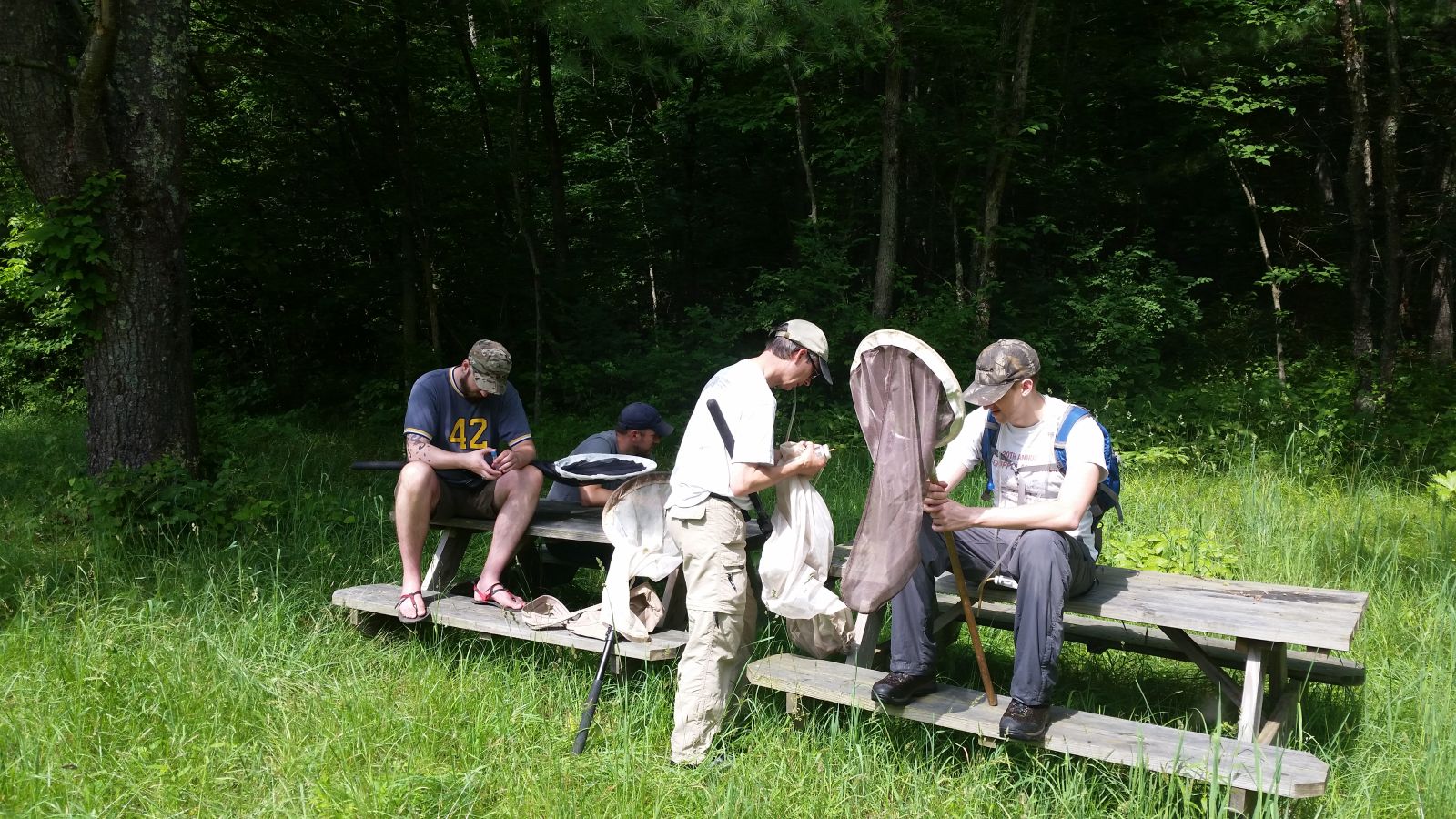
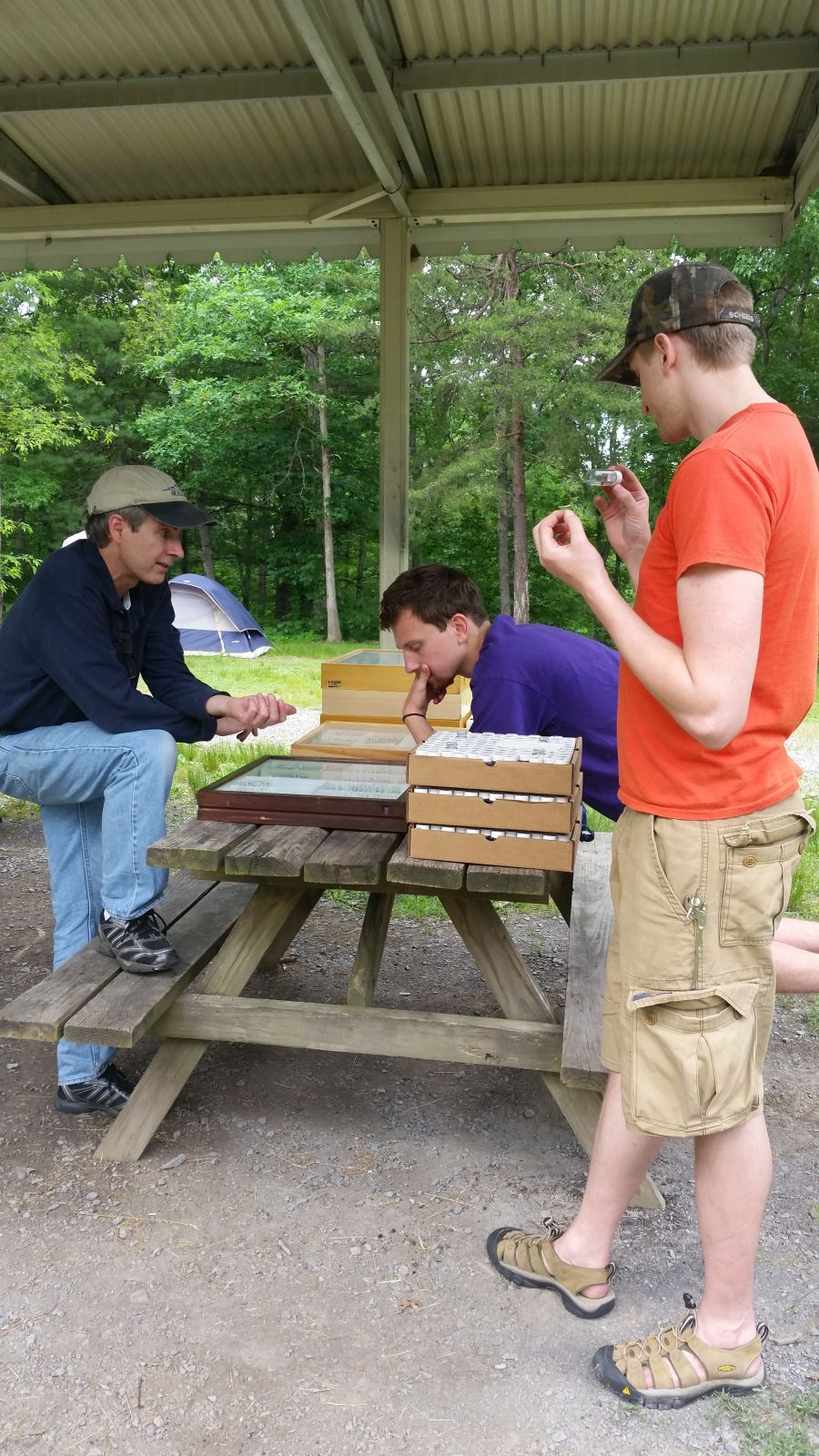
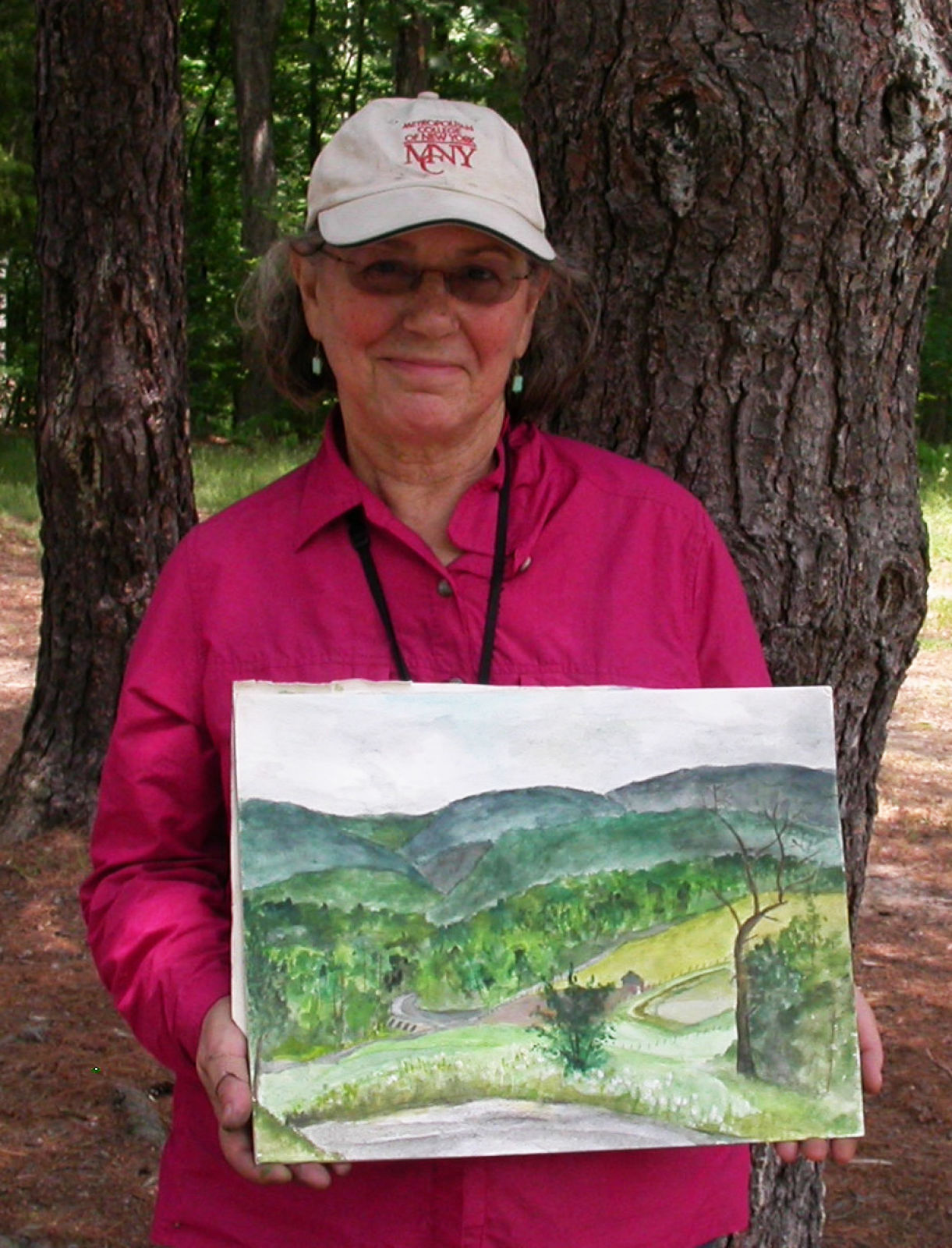
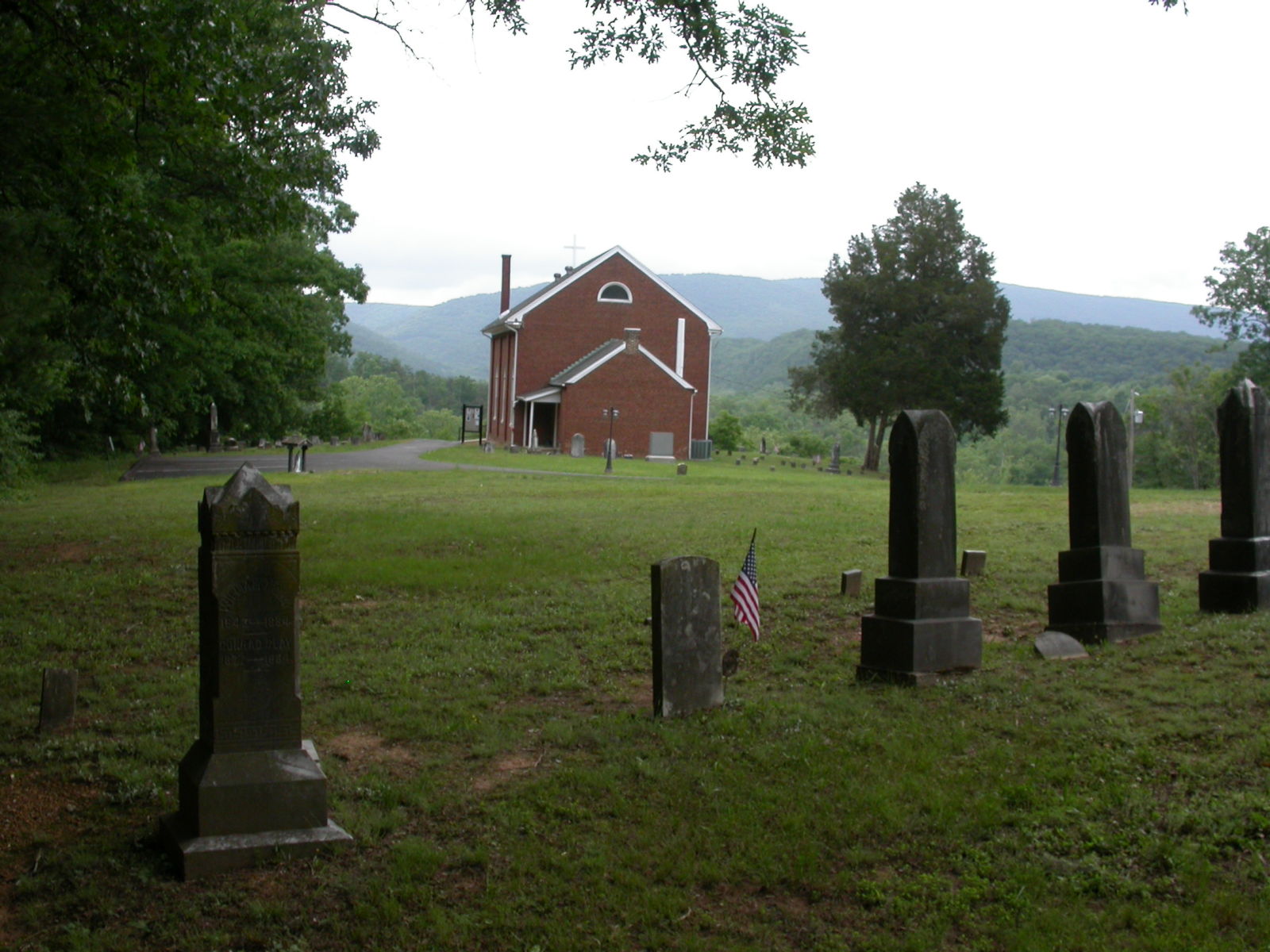
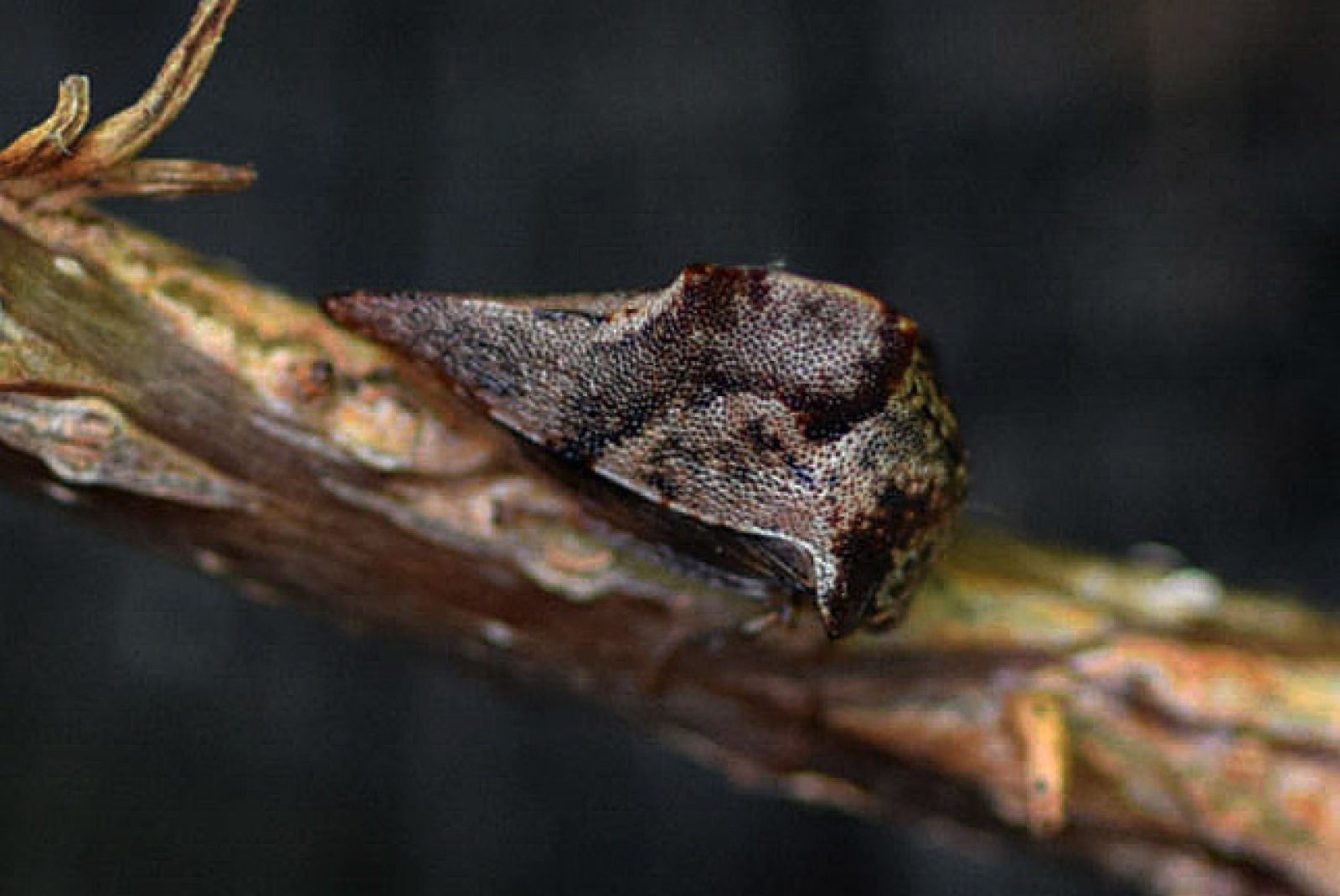
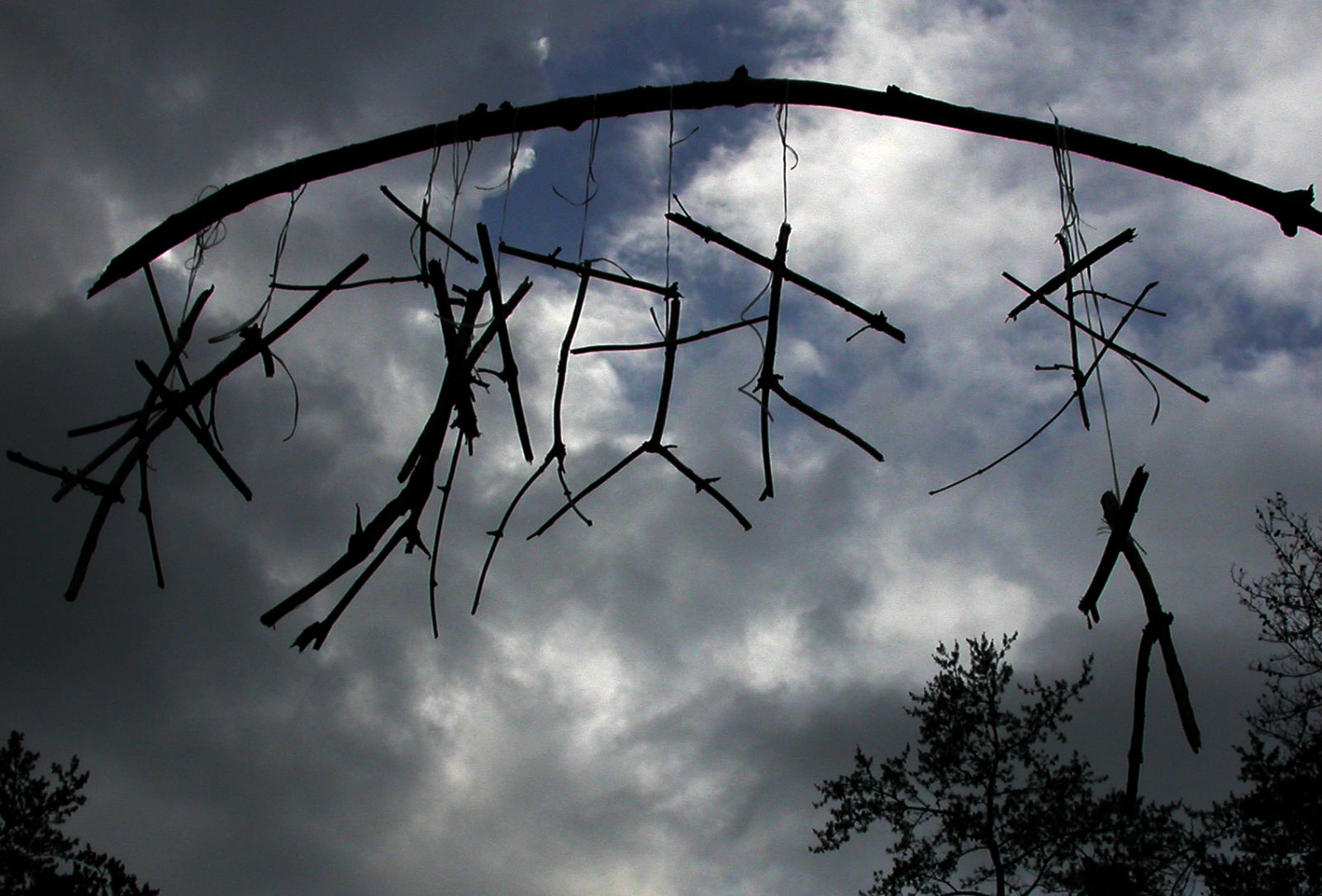
© Copyrights 2015, by Ashley Kennedy (photos 2 and 3), Lewis L. Deitz (photos 4, 5, and 7), and Mark J. Rothschild (photo 6).
Little Orleans is not far from Burkittsville, Maryland, where the terrifying movie “The Blair Witch Project” was allegedly filmed. This year, as in 2000 (following the film’s release in 1999), witchy stick figures mysteriously appeared around our campsite (Fig. 7), even in the absence of our beloved colleague and occasional mischief-maker Matt Wallace. Unlike the horror film, the Treehopper Gathering ended happily and without incident.
The 2016 Gathering will likely be scheduled for early June. We hope to announce the final dates 2 or 3 months before the event.
Fig. 1. Group photo of 2015 attendees., left to right (b= back; f = front): Charles Bartlett, Ruth Moscovitchf, Vinton Thompson, Mark Rothschild, Kelley Tilmon, Andrew Shortb, Dennis Kopp, Stuart McKameyf, Adam Bellb, Anthony Gonzon, Nate Nazdrowiczf, Lawrence Barringerb, Anthony Deczynski, Ashley Kennedyf, Yuri Park, Lewis Deitzb, Alexis Park, Duncan Parkf.

© Copyright 2015, by Nate Nazdrowicz.
The pleasant weather was slightly cooler than usual for early June, perfect for camping, socializing, and collecting in the woods of western Maryland. Our Saturday evening feast, always a highlight of the weekend, featured turkey (deep fried), steak, venison (all prepared by Anthony Gonzon), and teriyaki chicken (prepared by Yuri Park), as well as salads, various veggies (including baked potatoes and sweet potatoes), and desserts. Between meals, picnic tables were generally cluttered with drawers, boxes, and vials of treehoppers and other insects, including fresh insects being processed, hundreds of preserved specimens to be lent, returned, or donated to attendees or others at their home institutions, and an incredible display of treehoppers that Mark Rothschild collected this spring. (See photos 2-3).
While Vinton Thompson was off collecting spittlebugs, his wife Ruth Moscovitch sketched the valley view from Saint Patrick’s, a church surrounded by the Little Orleans Campground. Near this church, vines of Virginia creeper host a spectacular treehopper, Telamona ampelopsidis. (See photos 4-6).
Figs. 2-7. 2, Adam Bell (left to right), Andrew Short, Charles Bartlett, and Lawrence Barringer collecting at the group campsite. 3, Charles Bartlett, Anthony Deczynski, and Lawrence Barringer under the picnic shelter. 4, Ruth Moscovitch with her sketch from Saint Patrick’s Church. 5. Saint Patrick’s Catholic Church and historic cemetery where a number of Irish workers involved in the construction of the C&O Canal are buried. 6, Telamona ampelopsidis, a handsome treehopper that feeds on Virginia creeper, Parthenocissus quinquefolia (L.) Planchon. 7. Unexplained stick figures composed of small, dead wooden twigs tied together with waxed and unwaxed dental floss.






© Copyrights 2015, by Ashley Kennedy (photos 2 and 3), Lewis L. Deitz (photos 4, 5, and 7), and Mark J. Rothschild (photo 6).
Little Orleans is not far from Burkittsville, Maryland, where the terrifying movie “The Blair Witch Project” was allegedly filmed. This year, as in 2000 (following the film’s release in 1999), witchy stick figures mysteriously appeared around our campsite (Fig. 7), even in the absence of our beloved colleague and occasional mischief-maker Matt Wallace. Unlike the horror film, the Treehopper Gathering ended happily and without incident.
The 2016 Gathering will likely be scheduled for early June. We hope to announce the final dates 2 or 3 months before the event.
Recent Papers
2015-07-03
Harvey, A.; Wheeler, A. G., Jr. 2015a. Vanduzea segmentata (Fowler) (Hemiptera: Membracidae): seasonality and habits in the southeastern United States, with review of its U. S. distribution and host plants. Proceedings of the Entomological Society of Washington 117(2): 135-150.
The authors present a wealth of information on the life history and taxonomy of V. segmentata, including new host plant and state (Alabama and Georgia) records. Described from Neotropical Mexico (Guerrero, Tabasco, Veracruz), the species also occurs in Guatemala and Panama and was introduced to Hawaii (Harvey and Wheeler 2015a). Nearctic records now include: [? MEXICO (Nearctic): Nuevo León, Tamaulipas]; USA: Southwestern States: AZ, TX; Central & Eastern States: AL, FL, GA, LA (Deitz and Wallace 2012a; Harvey and Wheeler 2015a).
Hamilton, K. G. A. 2015a. Anatomy: the poor cousin of morphology. American Entomologist 61(2): 88-95.
This paper includes brief notes on Membracidae.
The authors present a wealth of information on the life history and taxonomy of V. segmentata, including new host plant and state (Alabama and Georgia) records. Described from Neotropical Mexico (Guerrero, Tabasco, Veracruz), the species also occurs in Guatemala and Panama and was introduced to Hawaii (Harvey and Wheeler 2015a). Nearctic records now include: [? MEXICO (Nearctic): Nuevo León, Tamaulipas]; USA: Southwestern States: AZ, TX; Central & Eastern States: AL, FL, GA, LA (Deitz and Wallace 2012a; Harvey and Wheeler 2015a).
Hamilton, K. G. A. 2015a. Anatomy: the poor cousin of morphology. American Entomologist 61(2): 88-95.
This paper includes brief notes on Membracidae.
A Newly Described Pest of Soybeans in Brazil
2015-07-14
Two species of the genus Ceresa are associated with soybeans in Brazil: Ceresa brunnicornis (Germar 1835) from the southern region and Ceresa atlantica Andrade 2015, n. sp., from the east and northeast (Andrade 2015a). The latter species has been called the “soybean buffalo treehopper” in the applied entomological literature (Zanella 2007a). Andrade (2015a), who formally described this economically significant treehopper, kindly provided an original map (below), which summarizes the known distribution of C. atlantica in northeastern Brazil. [Map © 2015, by Gabriel Simões de Andrade]
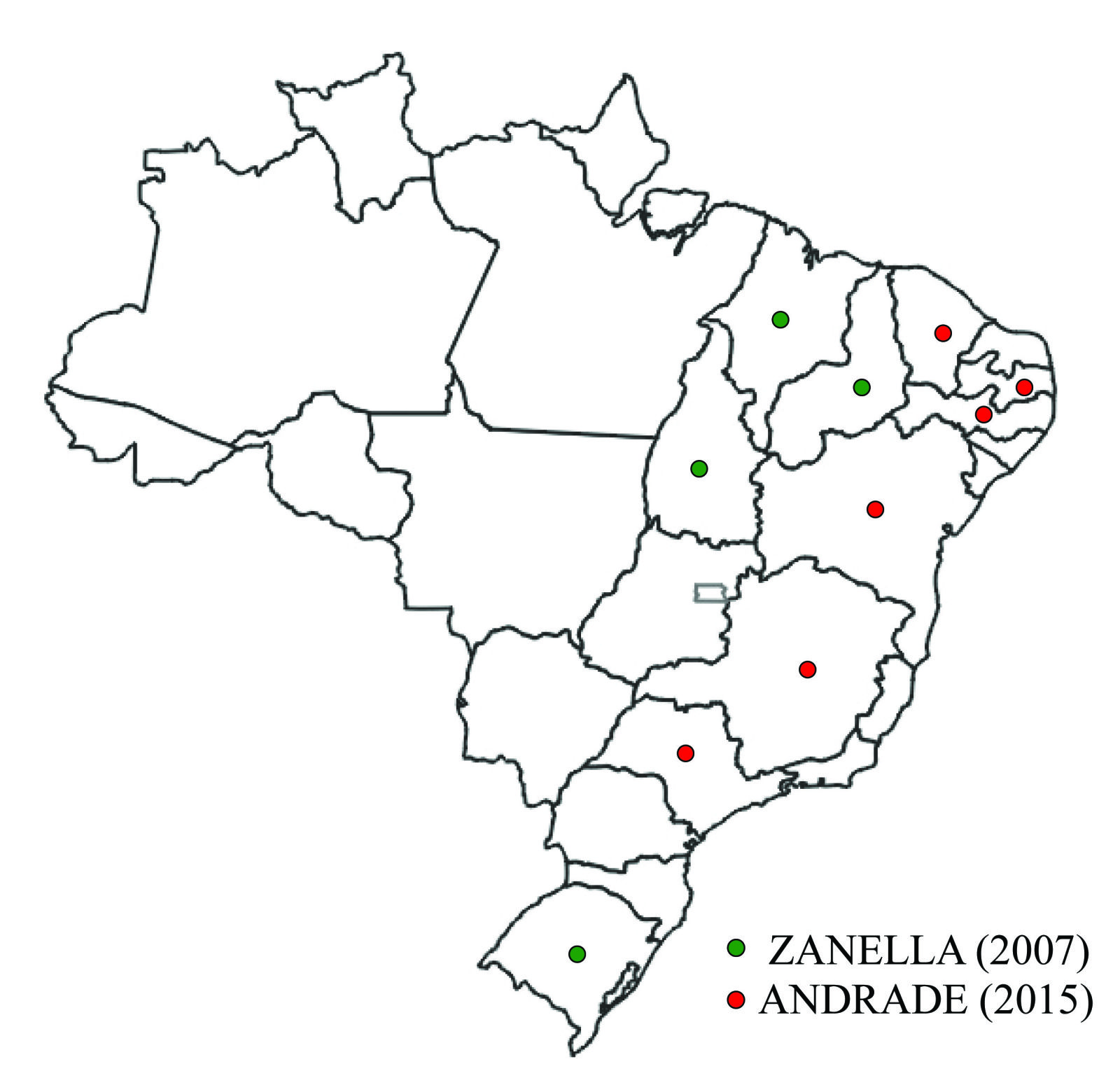
Andrade, G. S. de. 2015a. A new species of Ceresa Amyot & Serville (Hemiptera: Membracidae) associated with soy culture in Brazil. Entomological News 125 (1): 47-51.
Zanella, M. 2007a. Búfalos na soja. Cultivar Grandes Culturas 97: 24-26.

Andrade, G. S. de. 2015a. A new species of Ceresa Amyot & Serville (Hemiptera: Membracidae) associated with soy culture in Brazil. Entomological News 125 (1): 47-51.
Zanella, M. 2007a. Búfalos na soja. Cultivar Grandes Culturas 97: 24-26.
Accessing the Archives of Early Literature on Treehoppers
2015-07-31
Z. P. Metcalf used unique bibliographic identifiers (author, year plus letter suffix) for works cited throughout his catalogues and bibliographies of the Auchenorrhyncha, the insect suborder of Hemiptera that includes treehoppers. Covering works published through 1955, his identifiers were widely used by many subsequent workers and continue to be used on such online resources as the Treehoppers Website and the Planthopper Digital Library.
DrMetcalf and the Internet Archive. Using the searchable DrMetcalf database, one can easily expand Metcalf’s identifiers to full bibliographic citations that provide essential data for locating and viewing the publications. With journal articles, the full journal title, volume, and start page are often key to locating the publication (individual article titles and authors may or may not be indexed in databases). Indeed, hundreds of early publications, including rare books and obscure serials, are now available online through the Biodiversity Heritage Library and other resources of the Internet Archive.
Index to Treehopper Publications in the Digital Library for Pre-1940 Planthopper Literature. Thanks to the efforts of Charles Bartlett, more than 140 references on treehoppers (listed below by Metcalf’s identifiers) are currently available through the Digital Library for Pre-1940 Planthopper Literature: Amyot and Serville 1843a; Ashmead 1888a; Atkinson 1885b, 1886b; Baker 1924b; Ballou 1936b; Barber 1914a; Berg 1879e, 1880a, 1881b, 1883c, 1884d; Bergroth 1915a; Britton 1920a, 1938c; Buckton 1890a, 1891d; Burmeister 1835a; Costa Lima 1932a, 1936a; Crawford 1914a; Crevecoeur 1905a; Dallas 1867a (1954 reprint), 1870a (1954 reprint); Distant 1888a, 1908g, 1912b, 1914i, 1914j, 1916a; Dohrn 1859a; Dozier 1928a, 1931a; Fabricius 1775a, 1798a; Fallén 1826a; Fieber 1872a; Germar 1833a; Glover 1877a; Haupt 1929b; Hayes 1922a; Heidemann and Osborn 1917a; Henshaw 1903b; Herrich-Schaefer 1935a; Jensen-Haarup 1920a; Johnson 1930a; Johnson and Fox 1892a; Kershaw 1913e; Kershaw and Muir 1922a; Kirkaldy 1900b, 1900c, 1901a, 1901d, 1901e, 1902a, 1903b, 1903c, 1903d, 1904c, 1906c, 1907d, 1908d,1909c; Knowlton 1929b; Kusnezov 1829b; Leonard 1933b; Lethierry 1881b, 1881c, 1881d, 1881e, 1890a; Licent 1912a; Linné 1758a (1894 reprint [= Linnaeus 1758a]); Matsumura 1905a, 1936a, 1938a; Mayr 1884a; Melichar 1896a, 1903b, 1905a; Metcalf 1915a; Motschulsky 1863a; Muir 1926a; Osborn 1898a, 1900f, 1904a, 1909a, 1921a; 1922c, 1926e, 1929b, 1935a; Osborn and Drake 1922a; Oshanin 1908b, 1912a, 1913b; Perkins 1907a; Popenoe 1885a; Provancher 1889a, 1890b; Sabransky 1912a; Sahlberg 1871a; Say 1830a; Schmidt 1911b, 1924b, 1927a, 1931b; Smith 1890a; Spinola 1852a; Stål 1853b, 1854b, 1855a, 1859b, 1862b, 1862e, 1863a, 1866a, 1869a, 1870c; Uhler 1872a, 1876a; Valdes Ragues 1910a; Van Duzee 1890a, 1892d, 1893b, 1894e, 1905a, 1906a, 1907a, 1908b, 1909a, 1909c, 1912a, 1912b, 1914a, 1916a, 1917a, 1917b, 1923a, 1925b: Walker 1851a, 1858a, 1858b.
Speaking of “archives,” to retrieve prior Treehopper News items, go to the bottom right of the current “News,” click on “archive of past news,” and use the “find” option (such as "control + f") appropriate to your computer to search for a keyword (subject, taxon or author names) in our archives. For example, this news item may be retrieved using any of the author names listed above or other keywords such as "books," journals," "library," "literature," "publications," "references," "archives," and so forth.
DrMetcalf and the Internet Archive. Using the searchable DrMetcalf database, one can easily expand Metcalf’s identifiers to full bibliographic citations that provide essential data for locating and viewing the publications. With journal articles, the full journal title, volume, and start page are often key to locating the publication (individual article titles and authors may or may not be indexed in databases). Indeed, hundreds of early publications, including rare books and obscure serials, are now available online through the Biodiversity Heritage Library and other resources of the Internet Archive.
Index to Treehopper Publications in the Digital Library for Pre-1940 Planthopper Literature. Thanks to the efforts of Charles Bartlett, more than 140 references on treehoppers (listed below by Metcalf’s identifiers) are currently available through the Digital Library for Pre-1940 Planthopper Literature: Amyot and Serville 1843a; Ashmead 1888a; Atkinson 1885b, 1886b; Baker 1924b; Ballou 1936b; Barber 1914a; Berg 1879e, 1880a, 1881b, 1883c, 1884d; Bergroth 1915a; Britton 1920a, 1938c; Buckton 1890a, 1891d; Burmeister 1835a; Costa Lima 1932a, 1936a; Crawford 1914a; Crevecoeur 1905a; Dallas 1867a (1954 reprint), 1870a (1954 reprint); Distant 1888a, 1908g, 1912b, 1914i, 1914j, 1916a; Dohrn 1859a; Dozier 1928a, 1931a; Fabricius 1775a, 1798a; Fallén 1826a; Fieber 1872a; Germar 1833a; Glover 1877a; Haupt 1929b; Hayes 1922a; Heidemann and Osborn 1917a; Henshaw 1903b; Herrich-Schaefer 1935a; Jensen-Haarup 1920a; Johnson 1930a; Johnson and Fox 1892a; Kershaw 1913e; Kershaw and Muir 1922a; Kirkaldy 1900b, 1900c, 1901a, 1901d, 1901e, 1902a, 1903b, 1903c, 1903d, 1904c, 1906c, 1907d, 1908d,1909c; Knowlton 1929b; Kusnezov 1829b; Leonard 1933b; Lethierry 1881b, 1881c, 1881d, 1881e, 1890a; Licent 1912a; Linné 1758a (1894 reprint [= Linnaeus 1758a]); Matsumura 1905a, 1936a, 1938a; Mayr 1884a; Melichar 1896a, 1903b, 1905a; Metcalf 1915a; Motschulsky 1863a; Muir 1926a; Osborn 1898a, 1900f, 1904a, 1909a, 1921a; 1922c, 1926e, 1929b, 1935a; Osborn and Drake 1922a; Oshanin 1908b, 1912a, 1913b; Perkins 1907a; Popenoe 1885a; Provancher 1889a, 1890b; Sabransky 1912a; Sahlberg 1871a; Say 1830a; Schmidt 1911b, 1924b, 1927a, 1931b; Smith 1890a; Spinola 1852a; Stål 1853b, 1854b, 1855a, 1859b, 1862b, 1862e, 1863a, 1866a, 1869a, 1870c; Uhler 1872a, 1876a; Valdes Ragues 1910a; Van Duzee 1890a, 1892d, 1893b, 1894e, 1905a, 1906a, 1907a, 1908b, 1909a, 1909c, 1912a, 1912b, 1914a, 1916a, 1917a, 1917b, 1923a, 1925b: Walker 1851a, 1858a, 1858b.
Speaking of “archives,” to retrieve prior Treehopper News items, go to the bottom right of the current “News,” click on “archive of past news,” and use the “find” option (such as "control + f") appropriate to your computer to search for a keyword (subject, taxon or author names) in our archives. For example, this news item may be retrieved using any of the author names listed above or other keywords such as "books," journals," "library," "literature," "publications," "references," "archives," and so forth.
Francis Walker's Publications on Treehoppers
2015-08-05
English entomologist Francis Walker (1809–1874) described approximately 361 species of treehoppers; 199 of these are currently considered to represent valid species. Among treehopper enthusiasts, Walker is known for his works on the collections of the British Museum of Natural History (now the Natural History Museum), which holds many, but not all, of his types.
The following links to Walker’s treehopper publications in the Biodiversity Hertitage Library were compiled by Lewis L. Deitz and Matthew S. Wallace in July 2015: Walker 1851a; Walker 1851b; Walker 1852a; Walker 1857a; Walker 1857b; Walker 1858a; Walker 1858b; Walker 1859a; Walker 1860a; Walker 1862a; Walker 1868b; Walker 1868c; [Walker 1870a].
Enter “Francis Walker” in the author search box of the DrMetcalf database to view a full list of Walker’s works in Metcalf’s bibliography of the Auchenorrhyncha.
Note that "Walker 1870a," of Z. P. Metcalf and other authors, is an error for “Walker 1868b” and “Walker 1868c” (here designated to conform to Metcalf’s system of unique identifiers). Based on a published extract, Metcalf catalogued the new genera and species from this work as published in 1870, however, at least two bound copies of volume 10 of the Journal of the Linnean Society of London (Friedrich F. Tippmann's copy at North Carolina State University; also Smithsonian's copy) include an initial page indicating pp. 69-132 were published 7 Aug. 1868 (Walker 1868b), and pp. 133-196 were published 25 Sept. 1868 (Walker 1868c). For purposes of nomenclature, the new taxa included were thus described in 1868 (not 1870).
The following links to Walker’s treehopper publications in the Biodiversity Hertitage Library were compiled by Lewis L. Deitz and Matthew S. Wallace in July 2015: Walker 1851a; Walker 1851b; Walker 1852a; Walker 1857a; Walker 1857b; Walker 1858a; Walker 1858b; Walker 1859a; Walker 1860a; Walker 1862a; Walker 1868b; Walker 1868c; [Walker 1870a].
Enter “Francis Walker” in the author search box of the DrMetcalf database to view a full list of Walker’s works in Metcalf’s bibliography of the Auchenorrhyncha.
Note that "Walker 1870a," of Z. P. Metcalf and other authors, is an error for “Walker 1868b” and “Walker 1868c” (here designated to conform to Metcalf’s system of unique identifiers). Based on a published extract, Metcalf catalogued the new genera and species from this work as published in 1870, however, at least two bound copies of volume 10 of the Journal of the Linnean Society of London (Friedrich F. Tippmann's copy at North Carolina State University; also Smithsonian's copy) include an initial page indicating pp. 69-132 were published 7 Aug. 1868 (Walker 1868b), and pp. 133-196 were published 25 Sept. 1868 (Walker 1868c). For purposes of nomenclature, the new taxa included were thus described in 1868 (not 1870).
Carl Stål's Publications on Treehoppers
2015-08-11
Widely regarded as the leading hemipterist of his time, Swedish entomologist Carl Stål (1833–1878) described extraordinary numbers of treehoppers: 124 genera or subgenera, 199 species, and 1 subspecies. Even though a couple of Stål's genera later proved to be leafhoppers, 84 of his treehopper genera remain valid today, as well as 135 treehopper species, 2 subspecies (1 being a nominotypical subspecies), and his well known family group names Smiliinae, Smilini, and Tragopini. Stål published not only on various groups of Hemiptera, but also on beetles, hymenopterans, and orthopterans.
All of Stål's works on treehoppers listed here are currently in the Biodiversity Hertitage Library:Stål 1853b; Stål 1854b; Stål 1855a; Stål 1858a; Stål 1858b; Stål 1858f; Stål 1859b; Stål 1862b; Stål 1862e; Stål 1863c; Stål 1864a; Stål 1866a; Stål 1866c; Stål 1867a; Stål 1869a; Stål 1869c; Stål 1870c.
The HathiTrust Digital Library includes W. D. Funkhouser’s typewritten English translations of Stål 1864a (Funkhouser’s translation); Stål 1866a (Funkhouser’s translation); Stål 1866c (Funkhouser’s translation); Stål 1869c (Funkhouser’s translation).
Enter “Carl Stal” in the author search box of the DrMetcalf database to view a full list of Stål's works in Metcalf’s bibliography of the Auchenorrhyncha.
All of Stål's works on treehoppers listed here are currently in the Biodiversity Hertitage Library:Stål 1853b; Stål 1854b; Stål 1855a; Stål 1858a; Stål 1858b; Stål 1858f; Stål 1859b; Stål 1862b; Stål 1862e; Stål 1863c; Stål 1864a; Stål 1866a; Stål 1866c; Stål 1867a; Stål 1869a; Stål 1869c; Stål 1870c.
The HathiTrust Digital Library includes W. D. Funkhouser’s typewritten English translations of Stål 1864a (Funkhouser’s translation); Stål 1866a (Funkhouser’s translation); Stål 1866c (Funkhouser’s translation); Stål 1869c (Funkhouser’s translation).
Enter “Carl Stal” in the author search box of the DrMetcalf database to view a full list of Stål's works in Metcalf’s bibliography of the Auchenorrhyncha.
L. M. H. Fairmaire’s Publications on Treehoppers
2015-08-18
Although best known for his many contributions on Coleoptera (beetles), French entomologist
Léon Marc Herminie Fairmaire (1820-1906) worked also on the insect orders Hemiptera and Hymenoptera. His currently valid treehopper taxa include the genera Acutalis, Aconophora, Darnoides, Horiola, Ophiderma, and Smiliorachis and 177 species.
Fairmaire’s works on treehoppers are available online (either the original or a subsequently reprinted version) as follows: Fairmaire 1845a; Fairmaire 1846a; Fairmaire 1846b; Fairmaire 1846c; Fairmaire 1851a; Fairmaire 1855a [see Fairmaire 1885a, a reprint with the same pagination]; Fairmaire 1885a, [Plates 7-9]; Fairmaire and Signoret 1858a, [Plate XI]; Fairmaire and Signoret 1858b [this reprint of Fairmaire and Signoret 1858a (which see) differs in pagination].
Enter "Fairmaire" in the author search box of the DrMetcalf database to view a full list of Fairmaire’s works in Metcalf’s bibliography of the Auchenorrhyncha.
Fairmaire’s works on treehoppers are available online (either the original or a subsequently reprinted version) as follows: Fairmaire 1845a; Fairmaire 1846a; Fairmaire 1846b; Fairmaire 1846c; Fairmaire 1851a; Fairmaire 1855a [see Fairmaire 1885a, a reprint with the same pagination]; Fairmaire 1885a, [Plates 7-9]; Fairmaire and Signoret 1858a, [Plate XI]; Fairmaire and Signoret 1858b [this reprint of Fairmaire and Signoret 1858a (which see) differs in pagination].
Enter "Fairmaire" in the author search box of the DrMetcalf database to view a full list of Fairmaire’s works in Metcalf’s bibliography of the Auchenorrhyncha.
Good Vibrations Key To Insect Communication
2015-09-02
In its special series "Close Listening: Decoding Nature Through Sound," National Public Radio recently aired Good Vibrations Key To Insect Communication (Christopher Joyce and Bill McQuay, 27 August 2015). Highlighting the work of treehopper researcher Rex Cocroft and tree cricket researcher Laurel Symes, the link allows one to hear the original broadcast along with additional communications of treehoppers and tree crickets. For prior NPR broadcasts on treehopper communication, see our Sounds page and archive of past news: “Societies of Sound in the Amazon” (posted 2013-08-29).
Farewell Helonica, Rest in Peace
2015-09-03
Wallace, M. S. 2015b. Taxonomic changes in the treehopper genera Helonica Ball, Telamona Fitch, and Palonica Ball (Hemiptera: Membracidae; Smiliinae: Telamonini). Zootaxa 4007(2): 251-258.
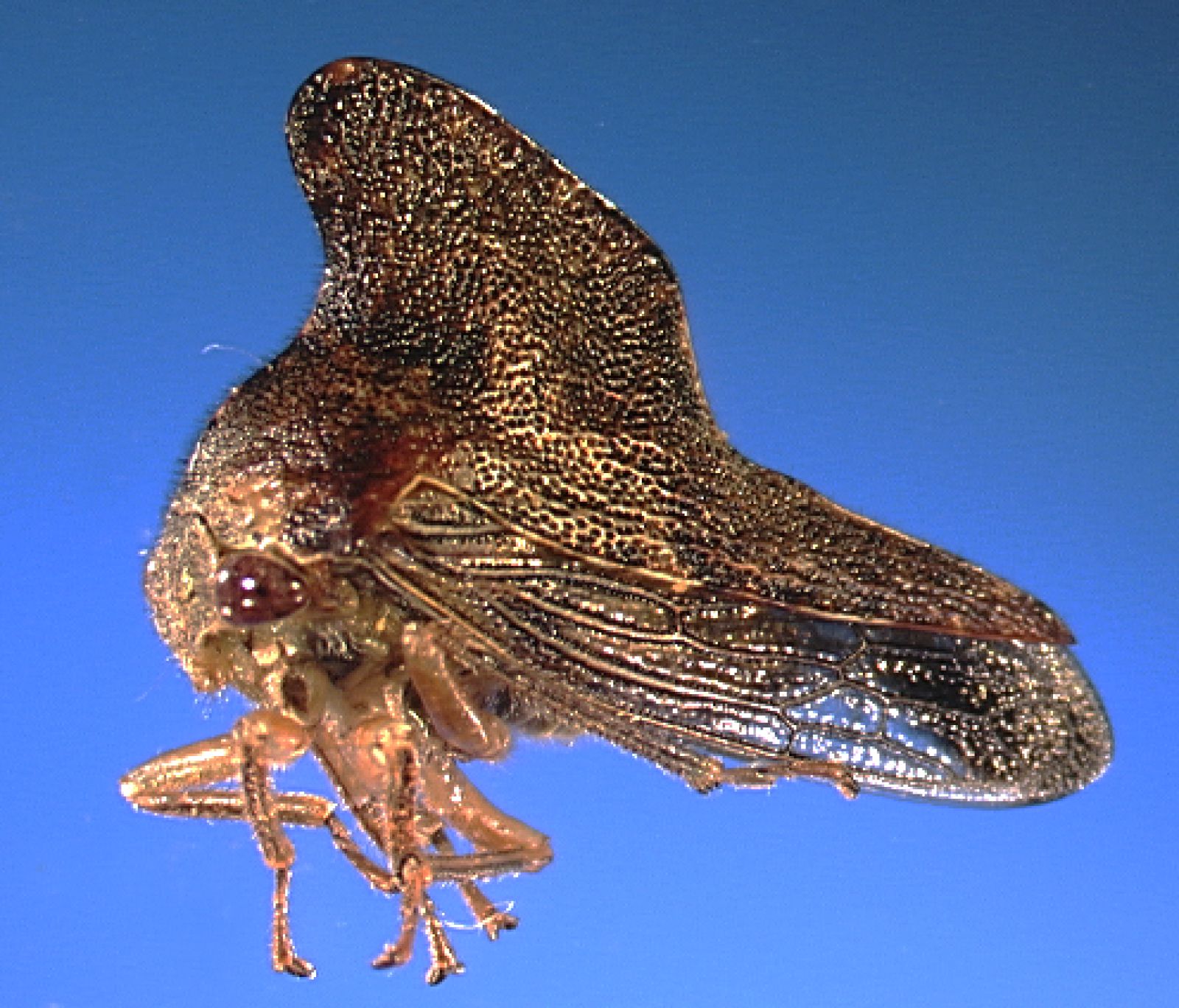 Telamona projecta Butler. © 2010, by Matthew S. Wallace
Telamona projecta Butler. © 2010, by Matthew S. Wallace
Wallace’s recent fingings: (1) placed Helonica as a junior synonym of Telamona ; (2) created the new combination Telamona excelsa (Fairmaire), with the new junior synonym T. unicolor Fitch; (3) reinstated Telamona projecta Butler as valid for the species formerly incorrectly identified as "Helonica excelsa" in the central and eastern United States (see figure, above); and (4) reinstated Palonica albidorsata (Fowler), new combination, as a valid species from Veracruz, Mexico.
As a consequence of these changes, Deitz and Wallace’s 2002 checklist of Nearctic species should be further updated as follows: p. 9, delete Helonica excelsa (Fairmaire 1846); p. 13, insert "Telamona excelsa (Fairmaire 1846): USA: Southwestern States: TX; Central & Eastern States: AL, AR, CT, DE, FL, IA, IL, IN, KS, KY, MA, MD, MI, MN, MO, NC, NE, NJ, NY, OH, OK, PA, TN, WI. CANADA: Central & Eastern Provinces: ON, QC. Fairmaire described this species from Mexico (no locality was specified, so this species may be endemic to the Nearctic or may also occur in Neotropical Mexico)"; insert "Telamona projecta Butler 1877: USA: Central & Eastern States: DE, IA, IL, MD, MO, NJ, NY, SC, TN"; delete Telamona unicolor Fitch 1851. For a prior update, see archive of past news: "Recent Papers" (posted 2015-07-03).
 Telamona projecta Butler. © 2010, by Matthew S. Wallace
Telamona projecta Butler. © 2010, by Matthew S. Wallace
Wallace’s recent fingings: (1) placed Helonica as a junior synonym of Telamona ; (2) created the new combination Telamona excelsa (Fairmaire), with the new junior synonym T. unicolor Fitch; (3) reinstated Telamona projecta Butler as valid for the species formerly incorrectly identified as "Helonica excelsa" in the central and eastern United States (see figure, above); and (4) reinstated Palonica albidorsata (Fowler), new combination, as a valid species from Veracruz, Mexico.
As a consequence of these changes, Deitz and Wallace’s 2002 checklist of Nearctic species should be further updated as follows: p. 9, delete Helonica excelsa (Fairmaire 1846); p. 13, insert "Telamona excelsa (Fairmaire 1846): USA: Southwestern States: TX; Central & Eastern States: AL, AR, CT, DE, FL, IA, IL, IN, KS, KY, MA, MD, MI, MN, MO, NC, NE, NJ, NY, OH, OK, PA, TN, WI. CANADA: Central & Eastern Provinces: ON, QC. Fairmaire described this species from Mexico (no locality was specified, so this species may be endemic to the Nearctic or may also occur in Neotropical Mexico)"; insert "Telamona projecta Butler 1877: USA: Central & Eastern States: DE, IA, IL, MD, MO, NJ, NY, SC, TN"; delete Telamona unicolor Fitch 1851. For a prior update, see archive of past news: "Recent Papers" (posted 2015-07-03).
iDigBio Portal for Specimen Data on Treehoppers
2015-09-08
Katja Seltmann alerts us that thousands of specimen records for North American treehoppers are now available online at the iDigBio Portal. Moreover, label data and images for millions of biological specimens are accessible through Integrated Digitized Biocollections (iDigBio), a resource funded by the National Science Foundation. Browsing the tutorial is recommended to make searches easier and more productive. Standard search results for treehopper species include a distribution map and a list of specimen records (view sample record for Carynota mera).
Using the Advance Search with " Membracidae" as the search term, Charles Bartlett found more than 113,000 specimen records, including some data not currently displayed in the standard search. These detailed records can be downloaded in a csv file sent to the email account one specifies. The specimen data, which in some cases include “host associations” or “host family,” arrive in a zipped folder that includes several files--the most useful of these, the 'occurrence' file, can be opened in Microsoft Excel. Because the file structure varied among institutions, persistence and patience may aid in reviewing the data.
Another approach for retrieving data from iDigBio is iDigBio API, an abstraction layer that allows reuse and mashup of aggregated data without a knowledge of the complexity of the back-end data storage.
Using the Advance Search with " Membracidae" as the search term, Charles Bartlett found more than 113,000 specimen records, including some data not currently displayed in the standard search. These detailed records can be downloaded in a csv file sent to the email account one specifies. The specimen data, which in some cases include “host associations” or “host family,” arrive in a zipped folder that includes several files--the most useful of these, the 'occurrence' file, can be opened in Microsoft Excel. Because the file structure varied among institutions, persistence and patience may aid in reviewing the data.
Another approach for retrieving data from iDigBio is iDigBio API, an abstraction layer that allows reuse and mashup of aggregated data without a knowledge of the complexity of the back-end data storage.
William Weeks Fowler's Contributions on Treehoppers and 10 Plates by Edwin Wilson
2015-09-13
William Weeks Fowler (1850-1922), an English entomologist and clergyman, is best known to hemipterists for his contributions to the Biologia Centrali-Americana. Among the many new treehopper taxa that Fowler described, 26 genera, 1 subgenus, 143 species, 4 subspecies, and the tribe Acutalini (Smiliinae) remain valid. Fowler’s sections of the Biologia Centrali-Americana include 10 extraordinary plates depicting treehoppers, all drawn and printed by Edwin Wilson, of Cambridge, England ("Introduction" to Insecta: Rhynchota: Hemiptera-Homoptera, Volume 2, Part 1). The highlighted plate numbers under the thumbnails below link to the corresponding plates in the Smithsonian Institution's copy of this work in the Biodiversity Heritage Library.
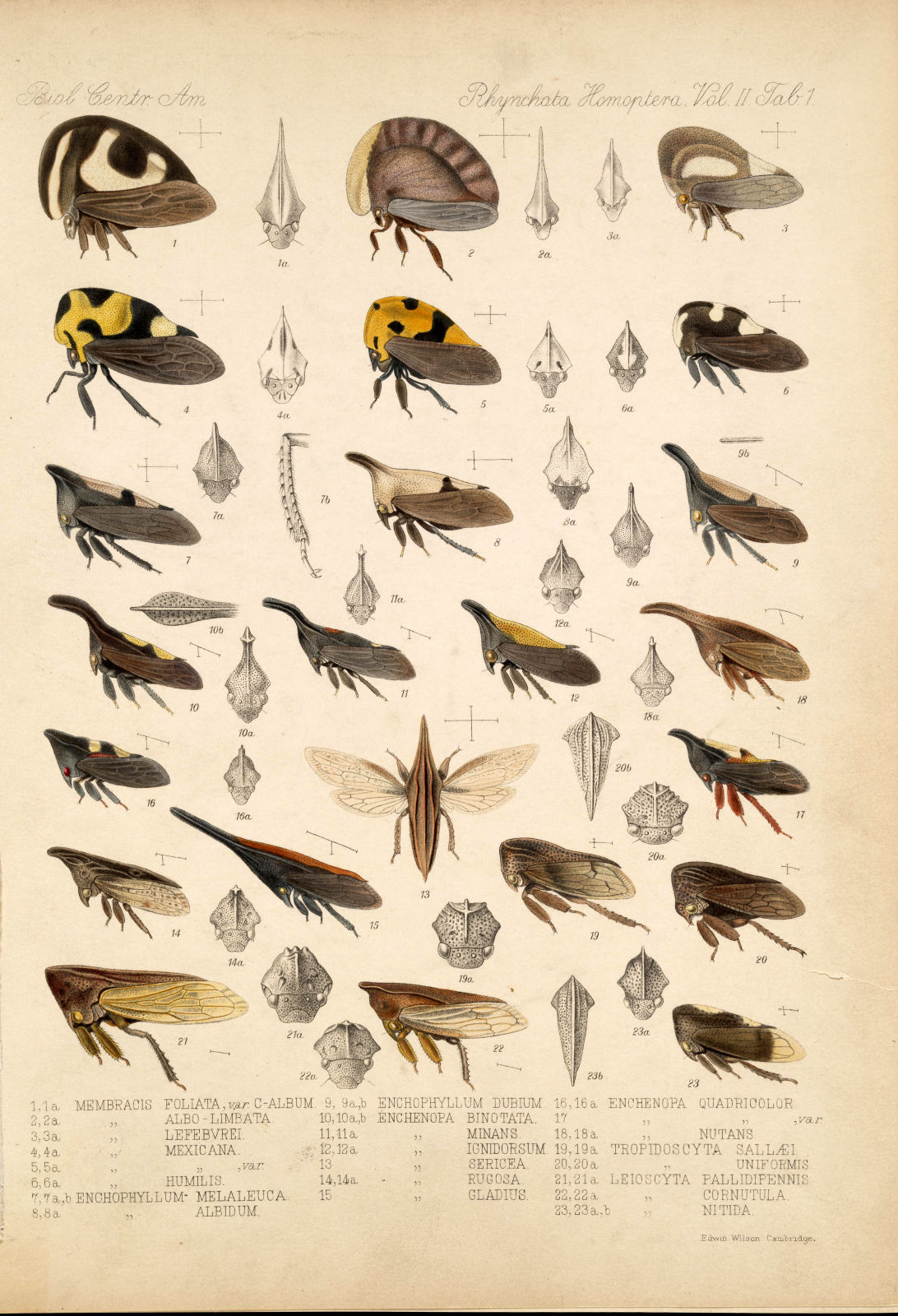
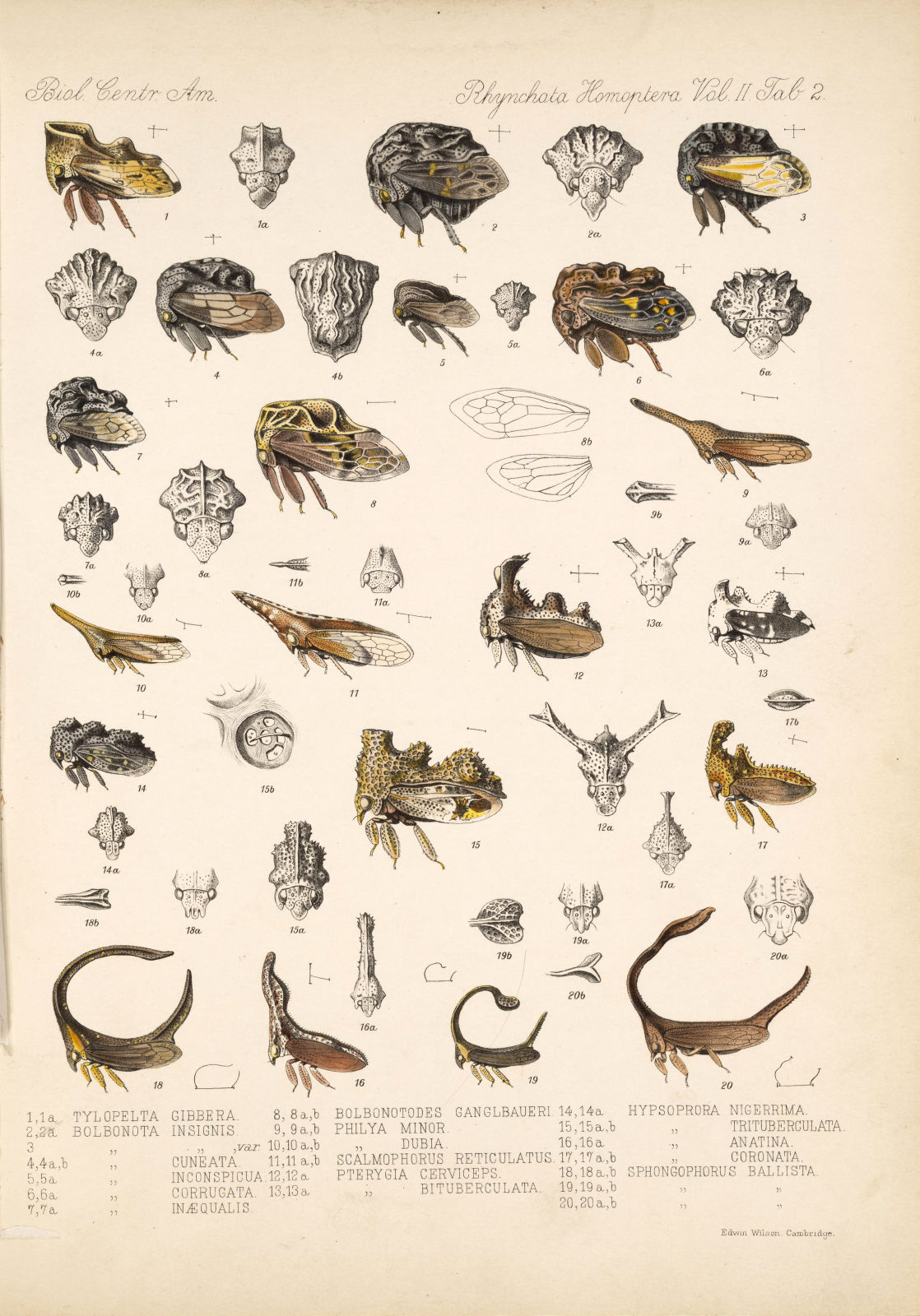
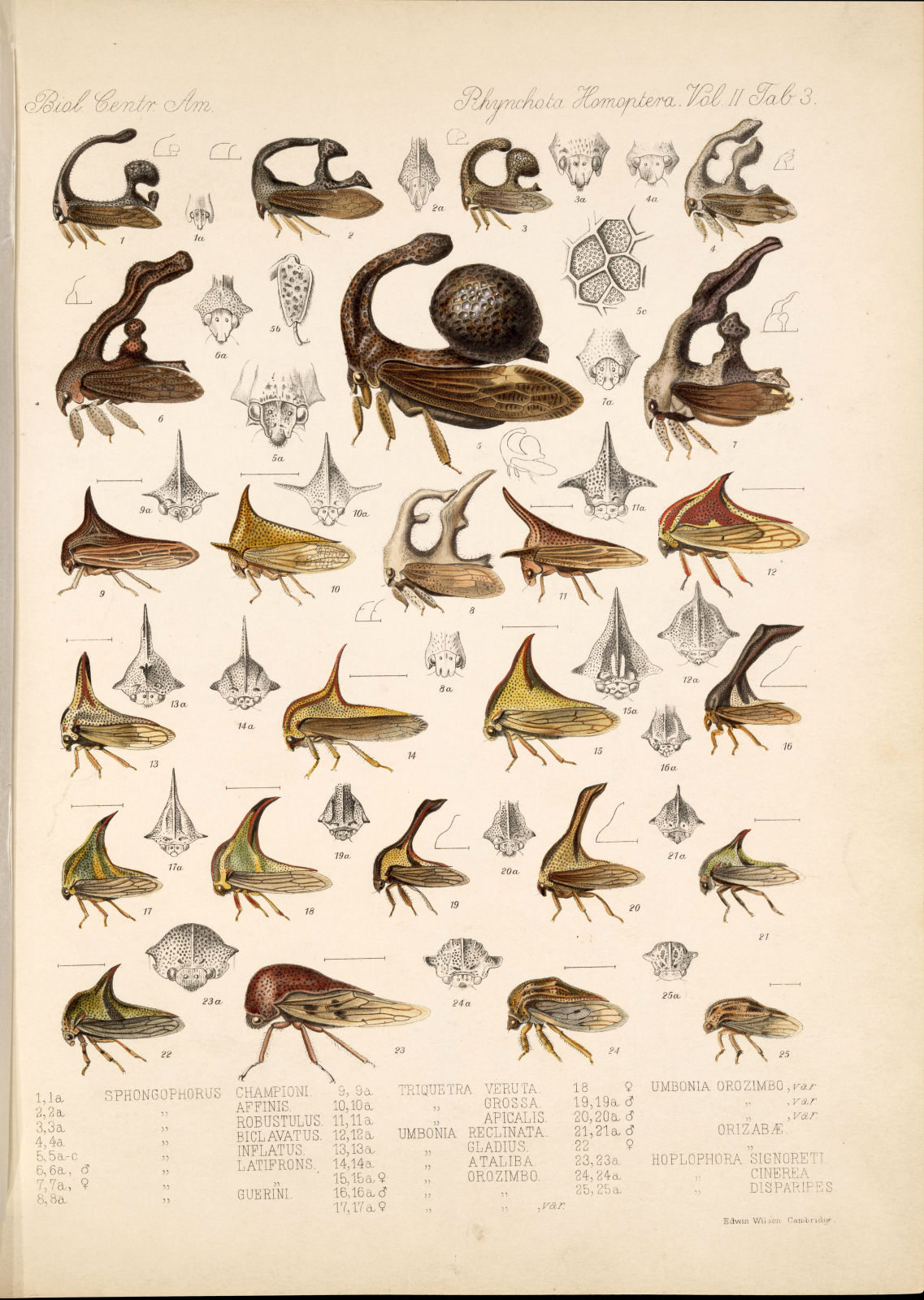
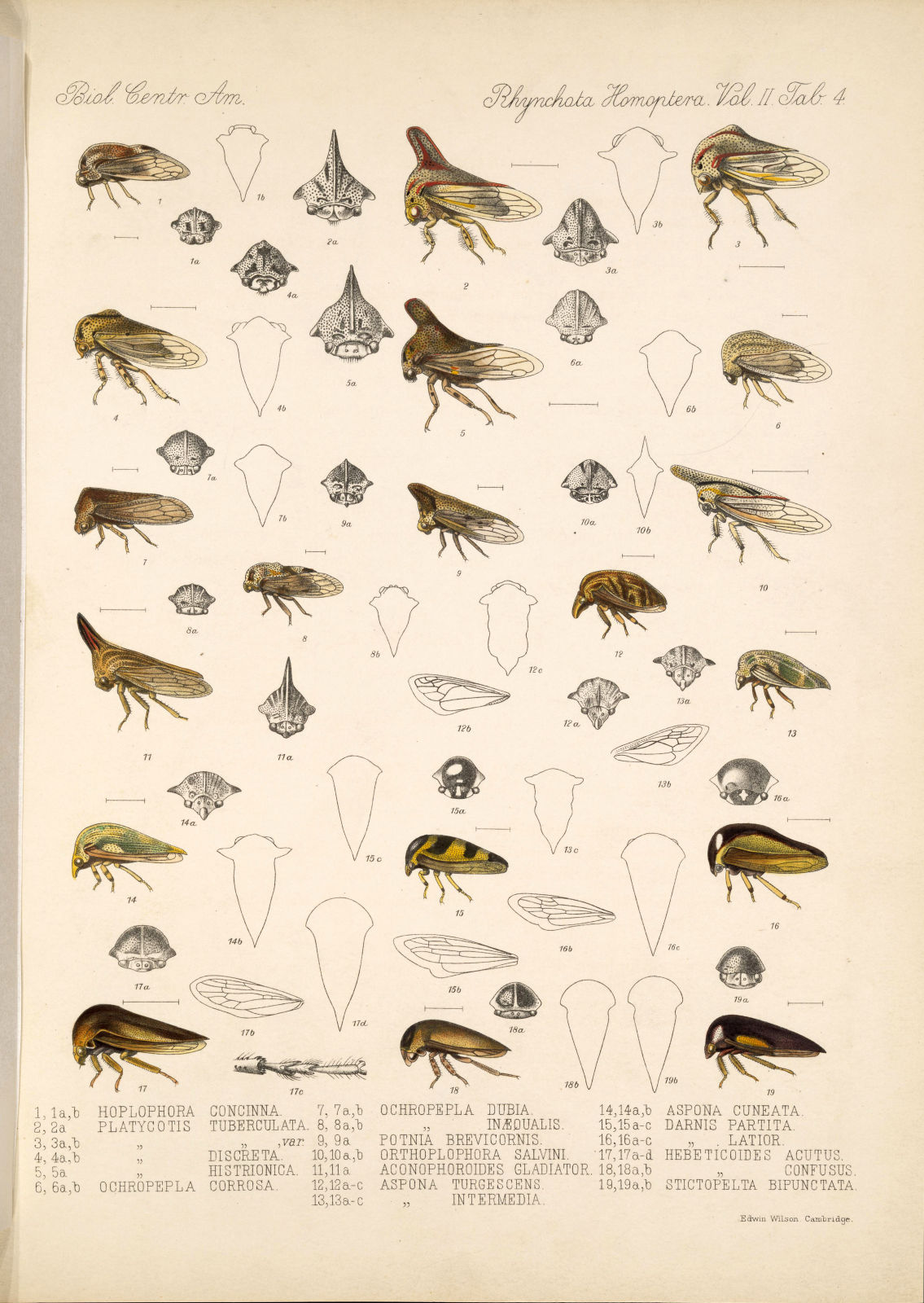
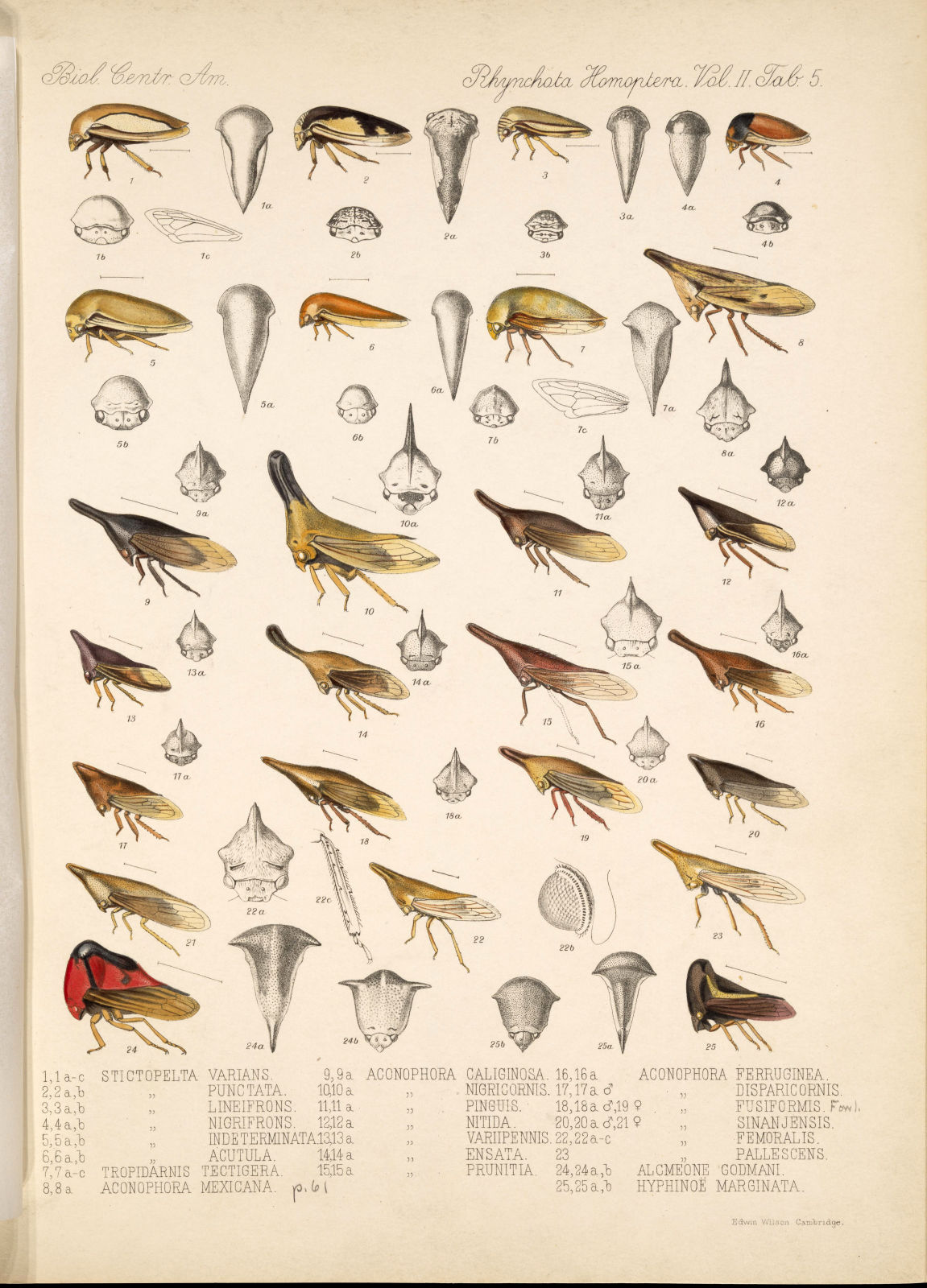
Plate 1 (Fowler 1894b). Plate 2 (Fowler 1894b). Plate 3 (Fowler 1894c). Plate 4 (Fowler 1894c). Plate 5 (Fowler 1895a).
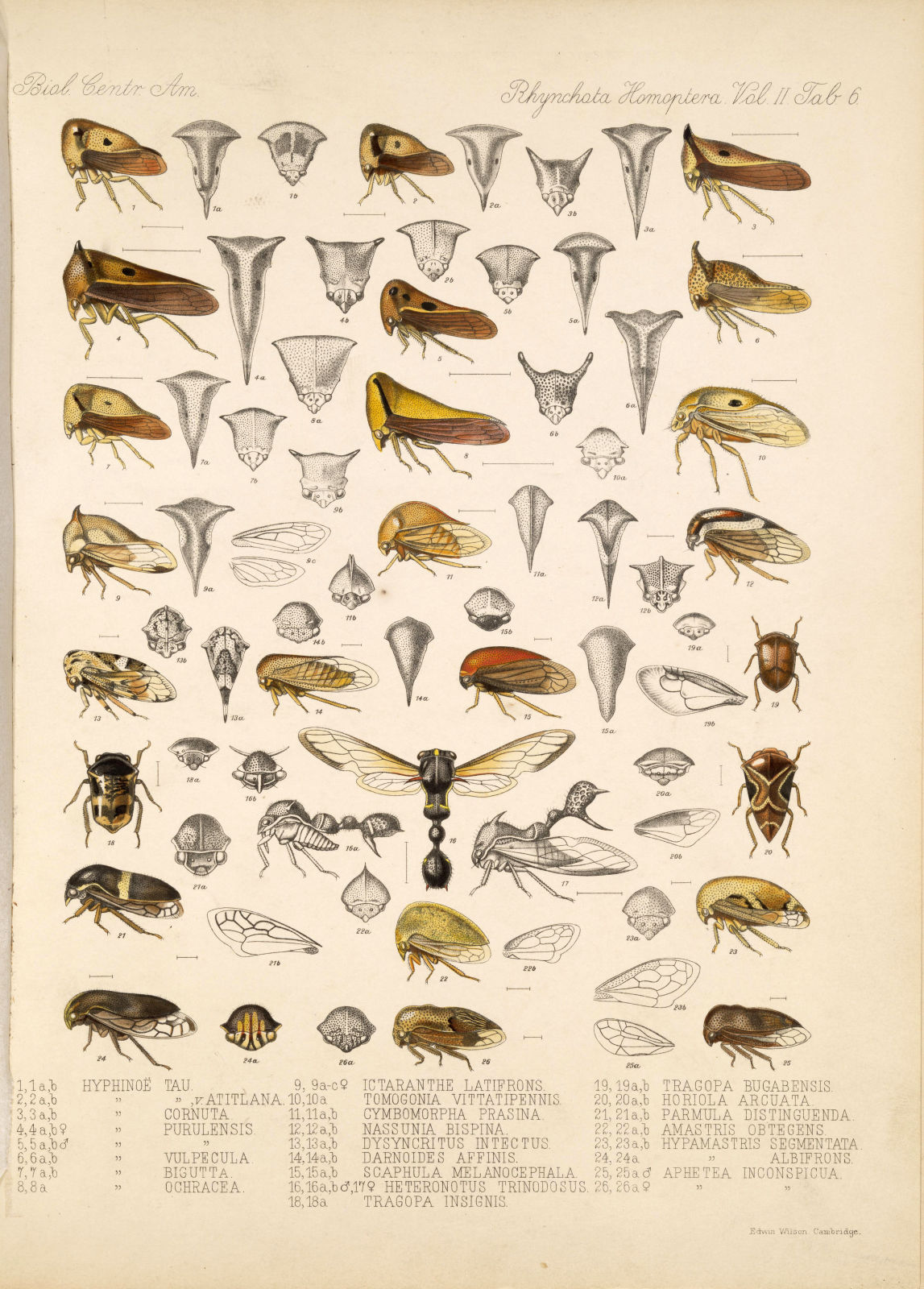
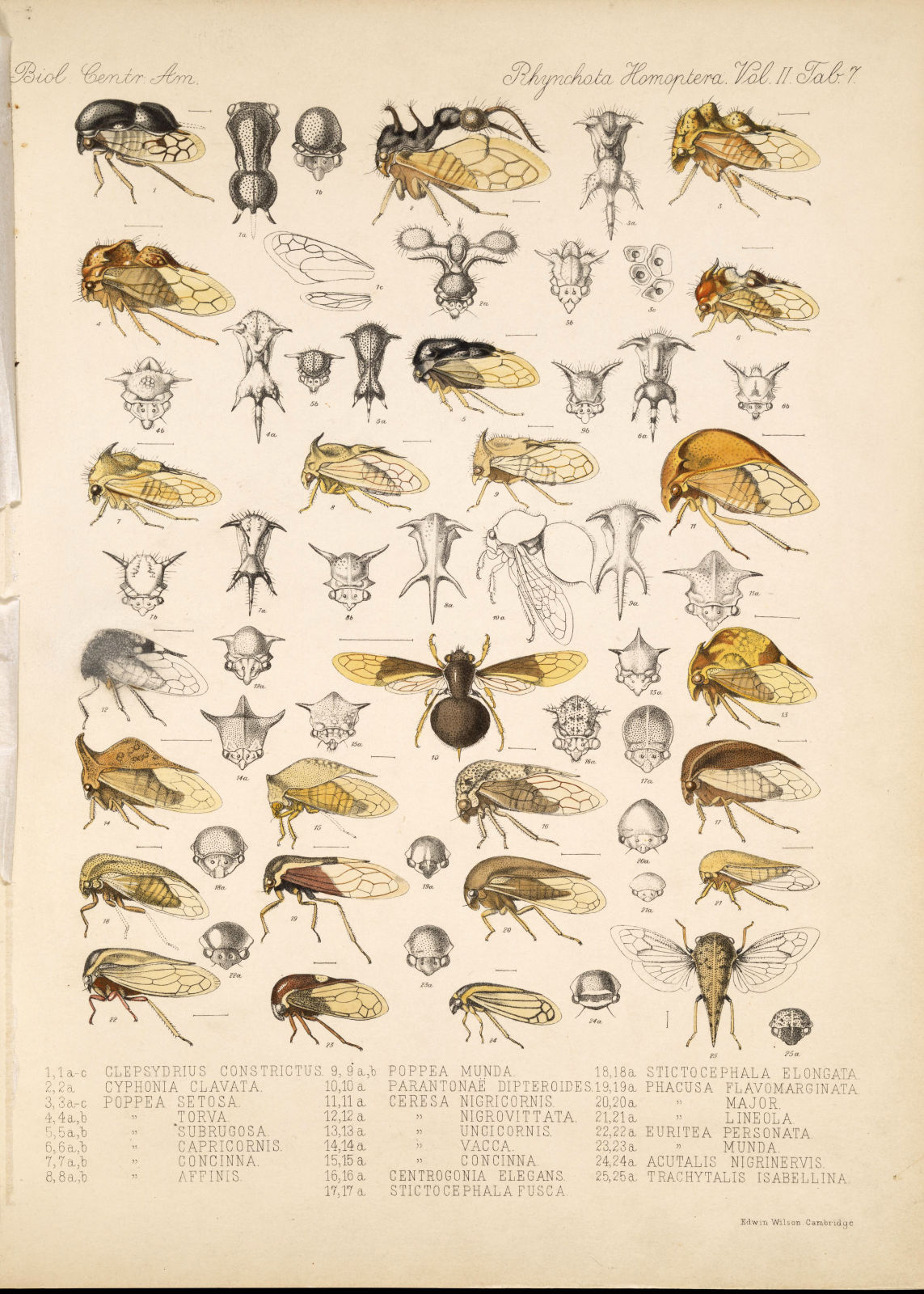

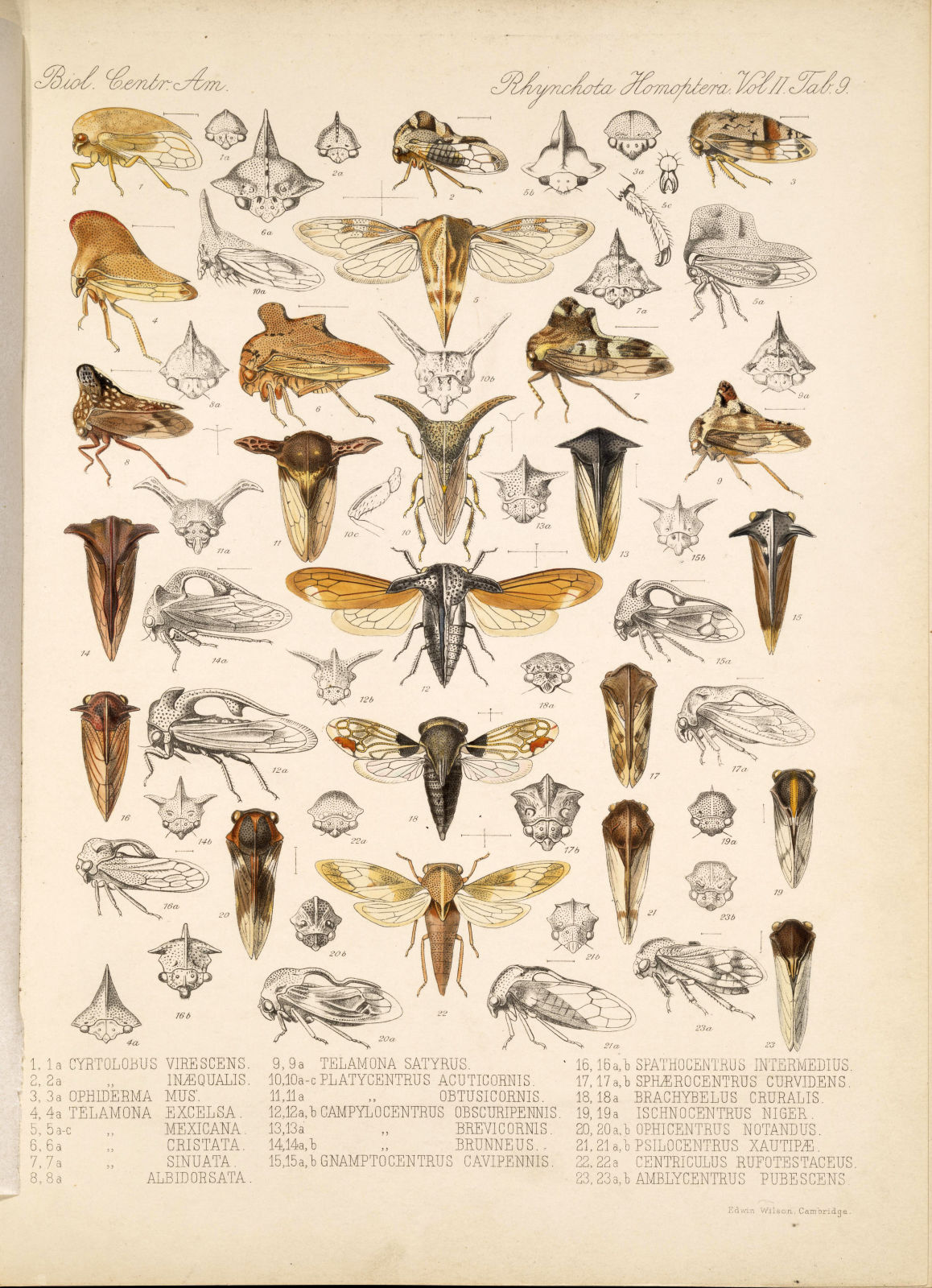
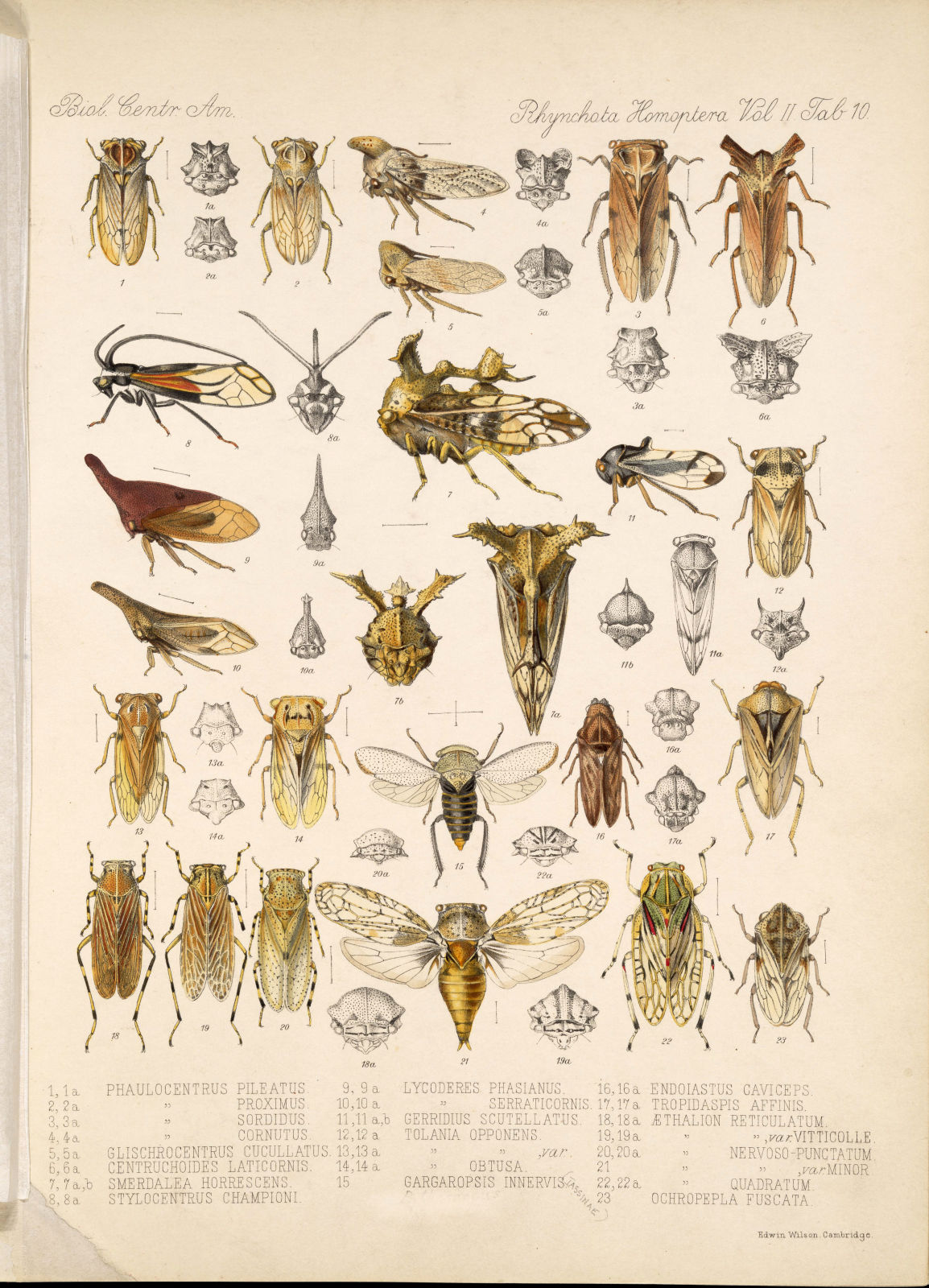
Plate 6 (Fowler 1895b). Plate 7 (Fowler 1895d). Plate 8 (Fowler 1895e). Plate 9 (Fowler 1896c). Plate 10 (Fowler 1896d)
All of W. W. Fowler's works on treehoppers listed here are in the public domain and accessible through the Biodiversity Heritage Library. The Biologia Centrali-Americana is also online at Electronic Biologia Centrali-Americana (© 2004, Smithsonian Institution Libraries). To generate a full bibliography of Fowler’s works on Auchenorrhyncha, enter “William Weeks Fowler” in the author search box of the DrMetcalf database. Fowler’s Treehopper Publications: Fowler 1894a; Fowler 1894b, Plate 1, Plate 2; Fowler 1894c, Plate 3, Plate 4; Fowler 1895a, Plate 5; Fowler 1895b, Plate 6; Fowler 1895c; Fowler 1895d, Plate 7; Fowler 1895e, Plate 8; Fowler 1895f; Fowler 1896b; Fowler 1896c, Plate 9; Fowler 1896d, Plate 10; Fowler 1896e; Fowler 1897a, Plate 11 [Cercopidae]; Fowler 1904a [see p. 81, note on Lycoderes and Membracidae]; Fowler 1909a Supplement [updates the preceding parts].





Plate 1 (Fowler 1894b). Plate 2 (Fowler 1894b). Plate 3 (Fowler 1894c). Plate 4 (Fowler 1894c). Plate 5 (Fowler 1895a).





Plate 6 (Fowler 1895b). Plate 7 (Fowler 1895d). Plate 8 (Fowler 1895e). Plate 9 (Fowler 1896c). Plate 10 (Fowler 1896d)
All of W. W. Fowler's works on treehoppers listed here are in the public domain and accessible through the Biodiversity Heritage Library. The Biologia Centrali-Americana is also online at Electronic Biologia Centrali-Americana (© 2004, Smithsonian Institution Libraries). To generate a full bibliography of Fowler’s works on Auchenorrhyncha, enter “William Weeks Fowler” in the author search box of the DrMetcalf database. Fowler’s Treehopper Publications: Fowler 1894a; Fowler 1894b, Plate 1, Plate 2; Fowler 1894c, Plate 3, Plate 4; Fowler 1895a, Plate 5; Fowler 1895b, Plate 6; Fowler 1895c; Fowler 1895d, Plate 7; Fowler 1895e, Plate 8; Fowler 1895f; Fowler 1896b; Fowler 1896c, Plate 9; Fowler 1896d, Plate 10; Fowler 1896e; Fowler 1897a, Plate 11 [Cercopidae]; Fowler 1904a [see p. 81, note on Lycoderes and Membracidae]; Fowler 1909a Supplement [updates the preceding parts].
Watch, Listen, Learn
2015-09-30
Delight in the sights and sounds of treehoppers in the wild:
Thornbug Treehopper Mother Defends Offspring from Predatory Stinkbug Nymph (© 2014, by Jennifer Hamel)
Treehoppers Communication (© 2013, by H. Carl Gerhardt)
See also our archive of past news: "Treehopper Videos" (posted 2012-12-13).
Thornbug Treehopper Mother Defends Offspring from Predatory Stinkbug Nymph (© 2014, by Jennifer Hamel)
Treehoppers Communication (© 2013, by H. Carl Gerhardt)
See also our archive of past news: "Treehopper Videos" (posted 2012-12-13).
“Cicadas' Charismatic Cousins” Featured at BugFest 2015
2015-10-01

Science comedian Brian Malow (left) and Auchenorrhyncha specialist Jason Cryan (center) in the Daily Planet Theater, BugFest 2015. Image © 2015, by Matt Zehr.
The North Carolina Museum of Natural Sciences, Raleigh, N. C., is host to BugFest, the largest celebration of insects anywhere. Year after year, this event attracts tens of thousands of insect enthusiasts. BugFest 2015 was held on 18 September 2015, and the focal insect was the "cicada." Treehopper aficionados will be pleased to learn that Jason Cryan provided balance to the program by highlighting membracids and other charming cicada relatives in his superb talk Cicadas' Charismatic Cousins.
Treehoppers: Under Appreciated or Keystone Taxa?
2015-10-02
Wagner, D. L.; Gagliardi, B. L. 2015a. Hairstreaks (and other insects) feeding at galls, honeydew, extrafloral nectaries, sugar bait, cars, and other routine substrates. American Entomologist 61(3): 160-167.
In their discussion of the importance of non-floral sugar resources (NFSRs) to hairstreak butterflies, moths, and "hordes" of other insects, entomologists Wagner and Gagliardi suggest these non-floral resources may exceed even flowers, as the primary source of carbohydrates for thousands of adult holometabolous insects. Thus, treehoppers and other honeydew-producing Hemiptera possibly play a far greater role in the population dynamics of insects than anyone previously recognized.
We conclude that treehoppers are indeed keystone taxa. In addition to being significant components of many ecosystems around the world, treehoppers increasingly serve as model organisms for studies of ecology, evolution, and behavior, and also bring joy to all who appreciate the beauty and diversity of the natural world. [L. L. Deitz and M. S. Wallace]
In their discussion of the importance of non-floral sugar resources (NFSRs) to hairstreak butterflies, moths, and "hordes" of other insects, entomologists Wagner and Gagliardi suggest these non-floral resources may exceed even flowers, as the primary source of carbohydrates for thousands of adult holometabolous insects. Thus, treehoppers and other honeydew-producing Hemiptera possibly play a far greater role in the population dynamics of insects than anyone previously recognized.
We conclude that treehoppers are indeed keystone taxa. In addition to being significant components of many ecosystems around the world, treehoppers increasingly serve as model organisms for studies of ecology, evolution, and behavior, and also bring joy to all who appreciate the beauty and diversity of the natural world. [L. L. Deitz and M. S. Wallace]
Immature Stages of New World Treehoppers: First Installment, Amastrini
2015-10-04
McKamey, S. H.; Wallner, A. M.; Porter, M. J. 2015a. Immatures of the New World treehopper tribe Amastrini (Hemiptera, Membracidae, Smiliinae) with a key to genera. ZooKeys 524: 65-87.
This open access publication is the first in a series intended to provide a guide to identifying the immatures of the New World treehopper genera. Although focused on the tribe Amastrini, this installment reviews prior studies on nymphal membracids in general and provides an overview of the morphological features used to describe them. Here, McKamey et al. provide the first descriptions of the immatures of 8 genera (of 11 total in the tribe), along with an illustrated key to the genera and observations on their biology. With 65 figures (many in color), this work is an essential resource for identifying nymphs of the tribe Amastrini.
Based on its distinct nymphal morphology, Vanduzea laeta nolina Ball is elevated to the rank of species: Vanduzea nolina, new status. Nymphal morphology is also used to support the recognition of Bajulata as a valid genus, distinct from Vanduzea.
We learn from the paper’s literature review that the earliest known study on treehopper immatures seems to have been completed between 1783 and 1794, by H. R. Scheller [published in 1869: Scheller 1869a, plates 8-10]. Nevertheless, even today the immatures of most membracid taxa remain to be described. Thus, we eagerly look forward to future papers by McKamey and associates that will describe the nymphs of additional New World genera and tribes.
This open access publication is the first in a series intended to provide a guide to identifying the immatures of the New World treehopper genera. Although focused on the tribe Amastrini, this installment reviews prior studies on nymphal membracids in general and provides an overview of the morphological features used to describe them. Here, McKamey et al. provide the first descriptions of the immatures of 8 genera (of 11 total in the tribe), along with an illustrated key to the genera and observations on their biology. With 65 figures (many in color), this work is an essential resource for identifying nymphs of the tribe Amastrini.
Based on its distinct nymphal morphology, Vanduzea laeta nolina Ball is elevated to the rank of species: Vanduzea nolina, new status. Nymphal morphology is also used to support the recognition of Bajulata as a valid genus, distinct from Vanduzea.
We learn from the paper’s literature review that the earliest known study on treehopper immatures seems to have been completed between 1783 and 1794, by H. R. Scheller [published in 1869: Scheller 1869a, plates 8-10]. Nevertheless, even today the immatures of most membracid taxa remain to be described. Thus, we eagerly look forward to future papers by McKamey and associates that will describe the nymphs of additional New World genera and tribes.
Guide to Treehopper Workers of the 1700s and Their Publications
2015-10-16
This guide provides access to virtual copies of most of the literature on treehoppers by scholars of the 1700s, including their further works into the 1800s. One exception is Pierre A. Latreille, whose 1796a work is listed here, but not his 24 additional references on treehoppers published during the 1800s. Also excluded here are workers, such as H. R. Scheller, whose first publication appeared after 1799. The earliest work listed here is Linnaeus’s (1746a: p. 202) description of his species number 641, subsequently named Centrotus cornutus Linnaeus, 1758. Owing to modern technology and awe-inspiring international collaboration, this collection of rare and priceless publications is at your fingertips.
Early contributions on treehoppers were sometimes published over a period of two or more years and subsequently bound into a single volume with a title page and introductory materials. Because of the principle of priority among taxonomic names, it is essential to establish the actual date of publication for each section of such works that describe new taxa (the section date may differ from that on the title page). Furthermore, the sequence of sections and placement of plates may vary among various bound copies of a work. In the absence of photography, illustrations were frequently produced from copper engravings (plates), and some were individually hand-colored, each plate being a unique work of art.
Selected early natural history plates with figures of treehoppers: 1, Coquebert 1799a: Pl. 8, Fig. 1; 2 , Coquebert 1799a: Pl. 9, Fig. 5; 3, Coquebert 1801a: Pl. 18, Figs. 1-10; 4, Coquebert 1804a: Pl. 21, Fig. 5; 5, Houttuyn 1766a: Pl. 81, Fig. 2; 6, Linnaeus 1761a: Pl. 2, Fig. 279; 7, Panzer 1798a: Pl. 50.19, Membracis cornutus; 8, Panzer 1798a: Pl. 50.20, Membracis genistae; 9, Donovan 1794a: Pl. 83; 10, Donovan 1820d: Hemiptera Pl. 3, C. spinosa, C. taurus; 11, Stoll 1788a: Pl. [28], Figs. 163, A, B, 165, D, 166, E, 169, H; 12, Sulzer 1761a: Pl. 10, Fig. 63; 13, Sulzer 1776a: Pl. 9, Fig. 6.
1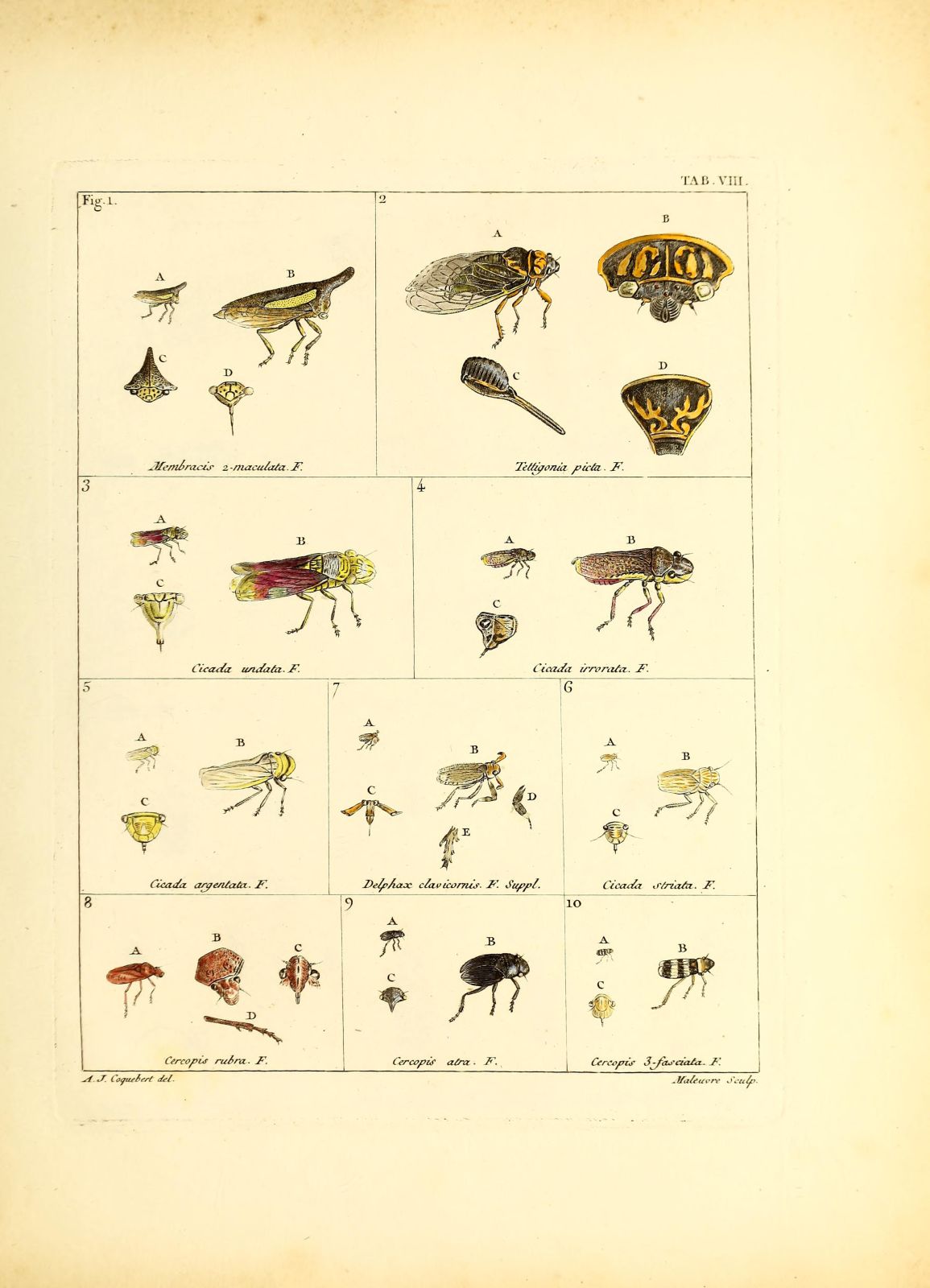 2
2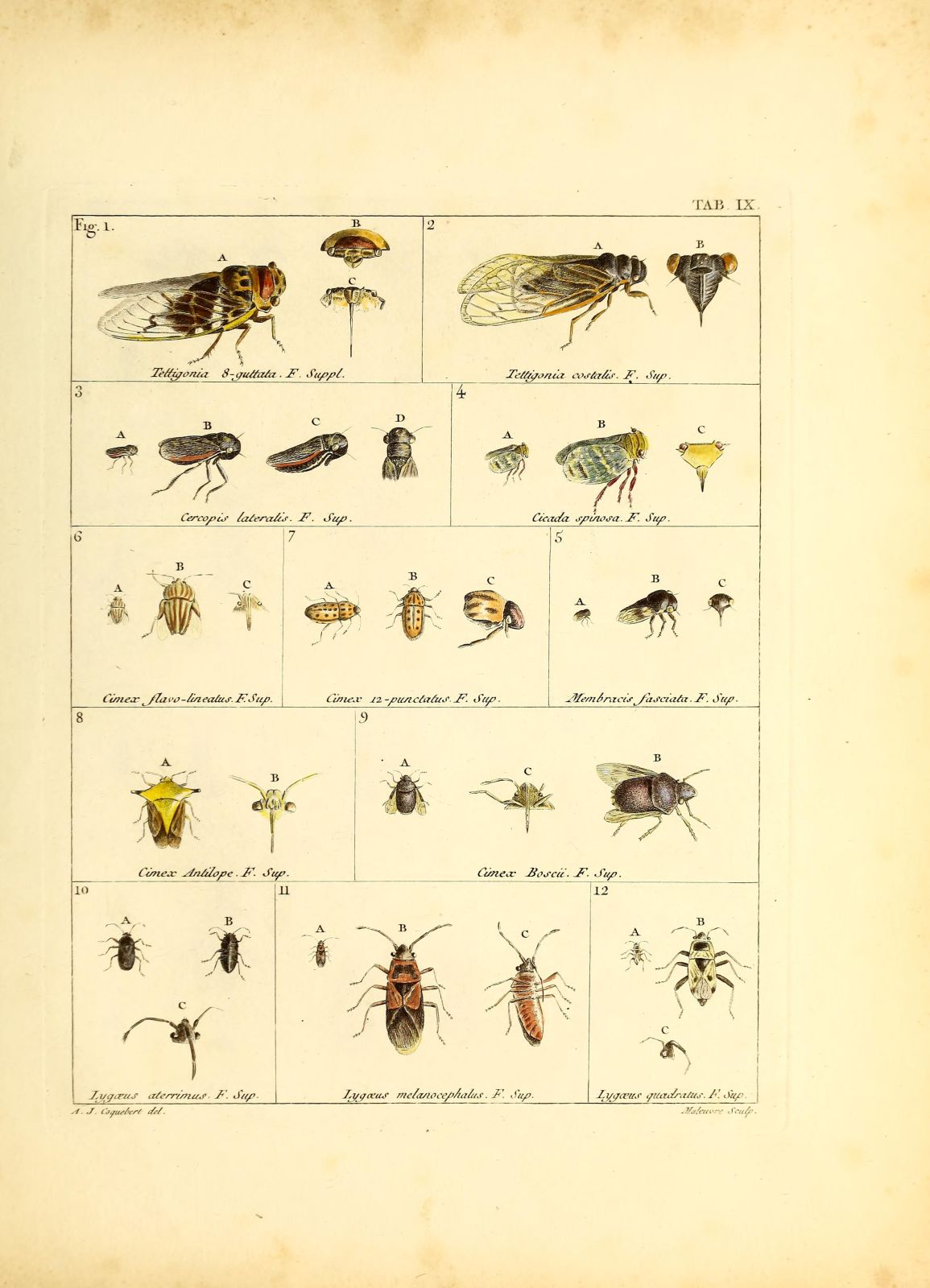 3
3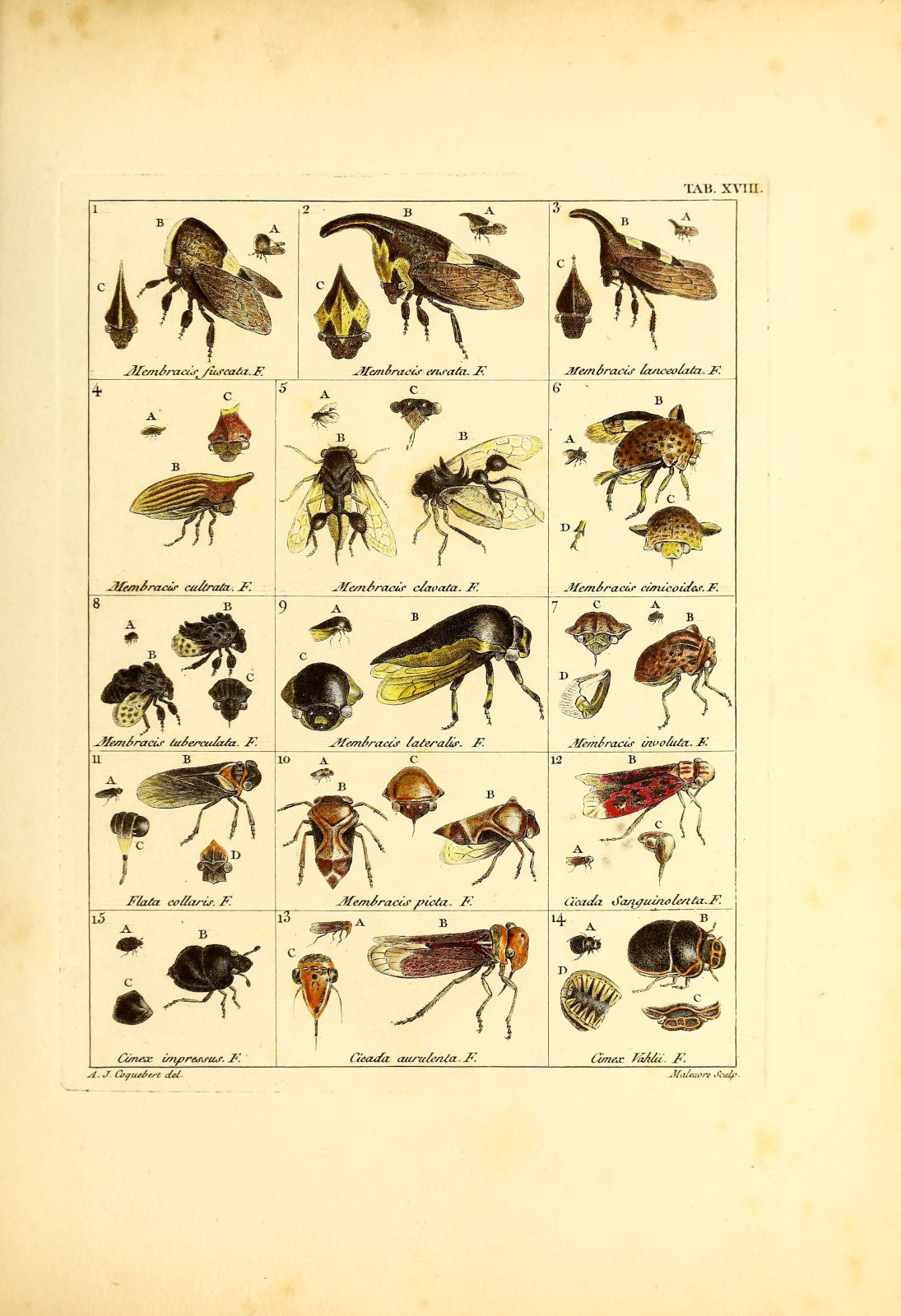 4
4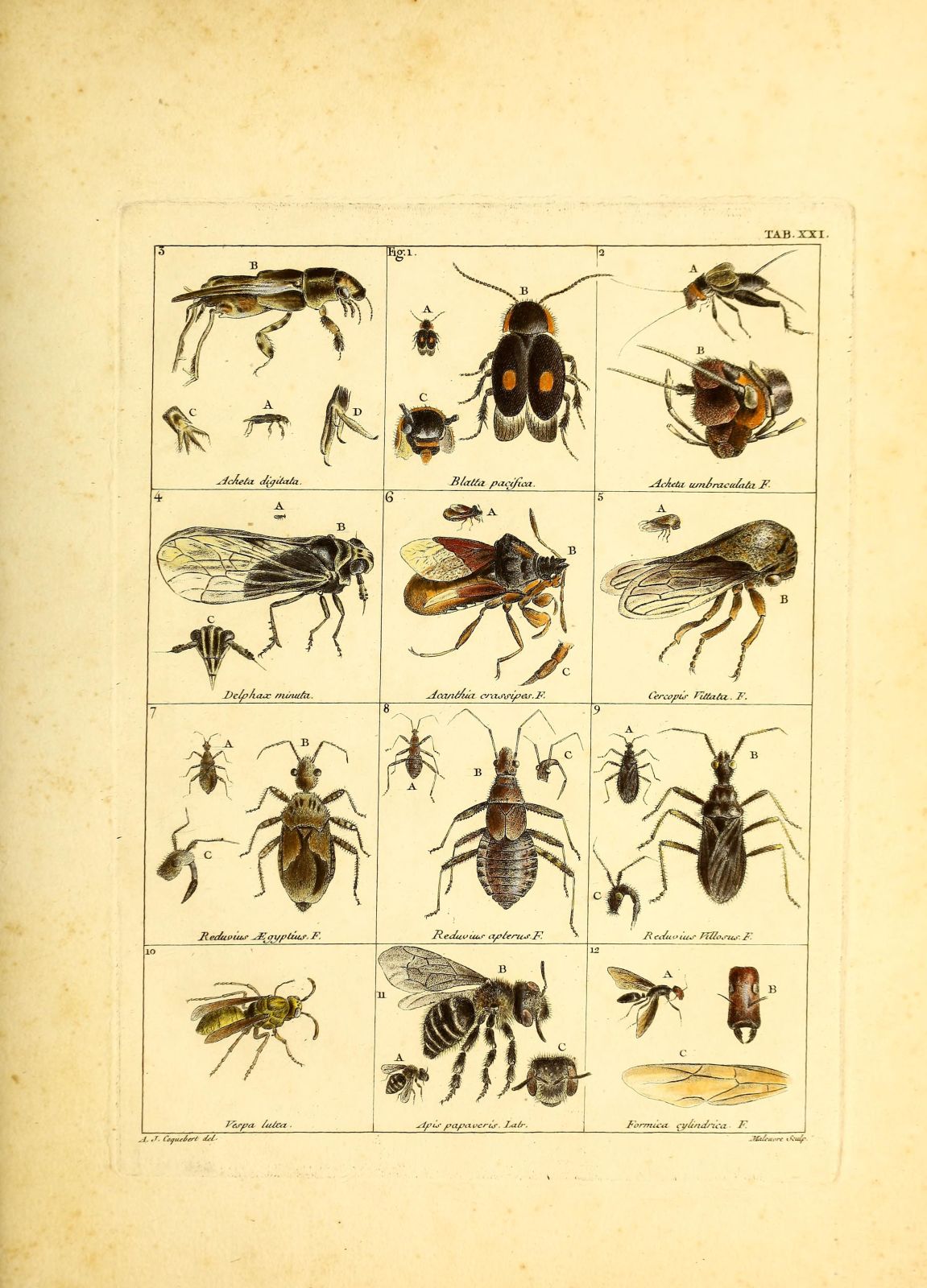
5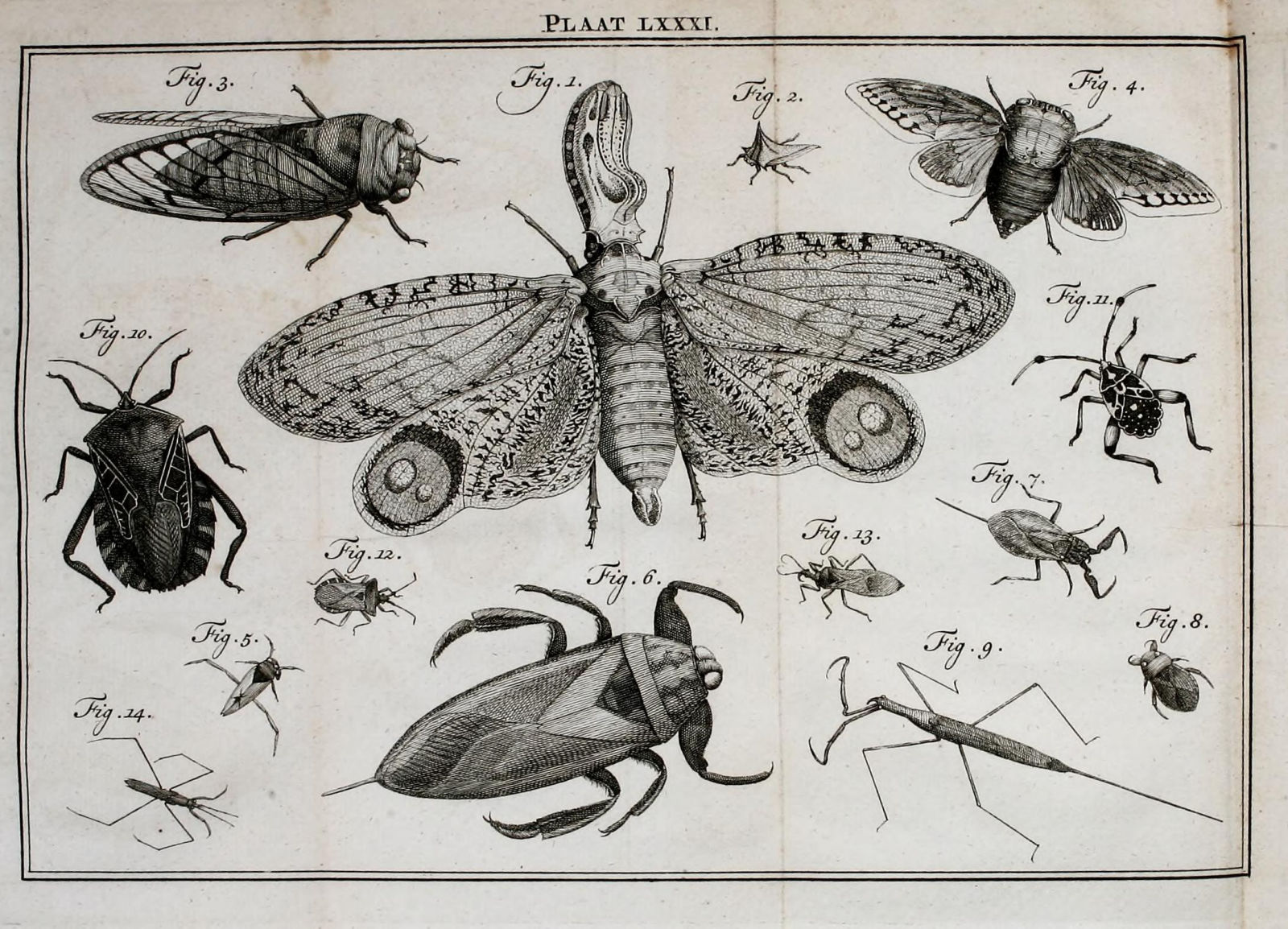 6
6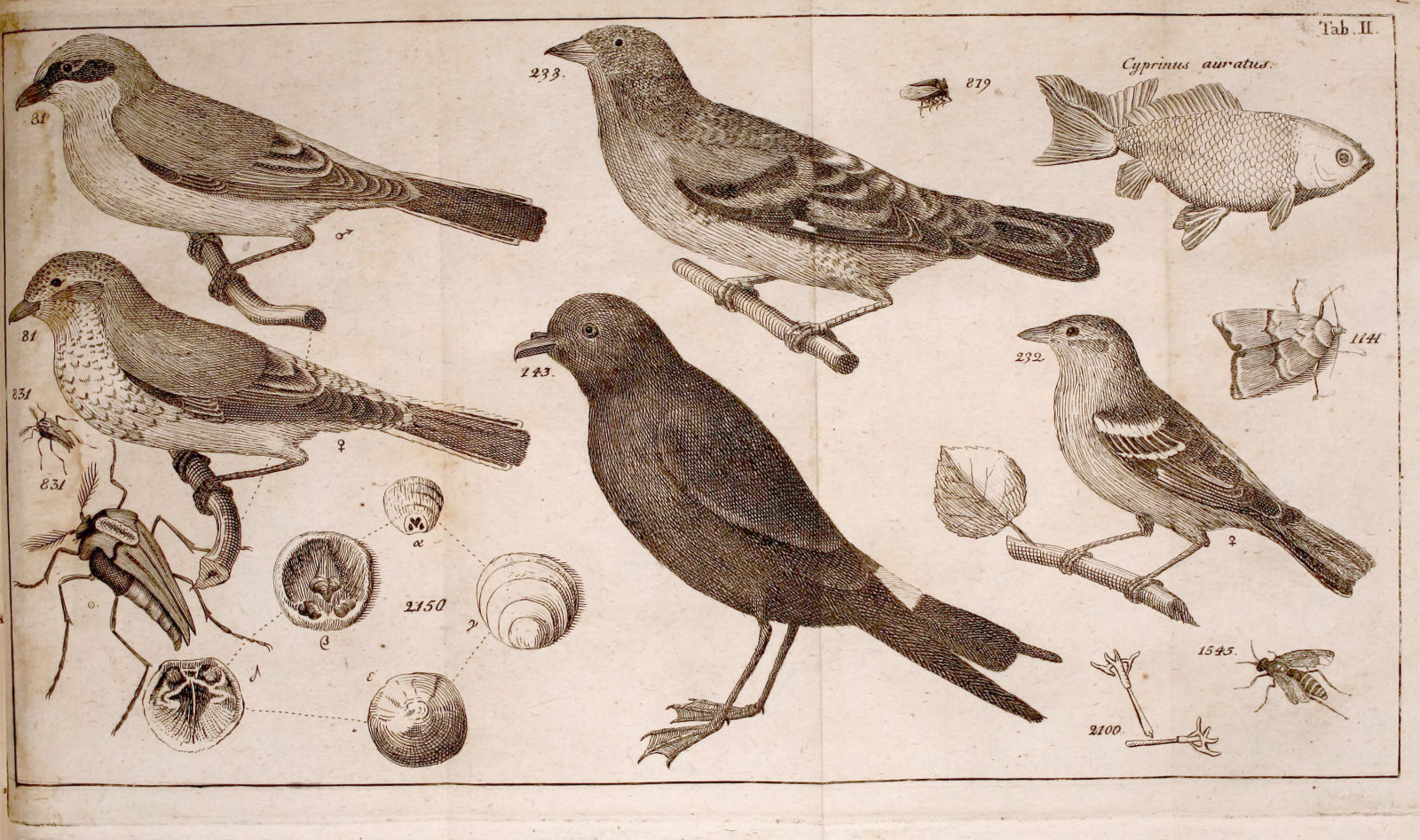 7
7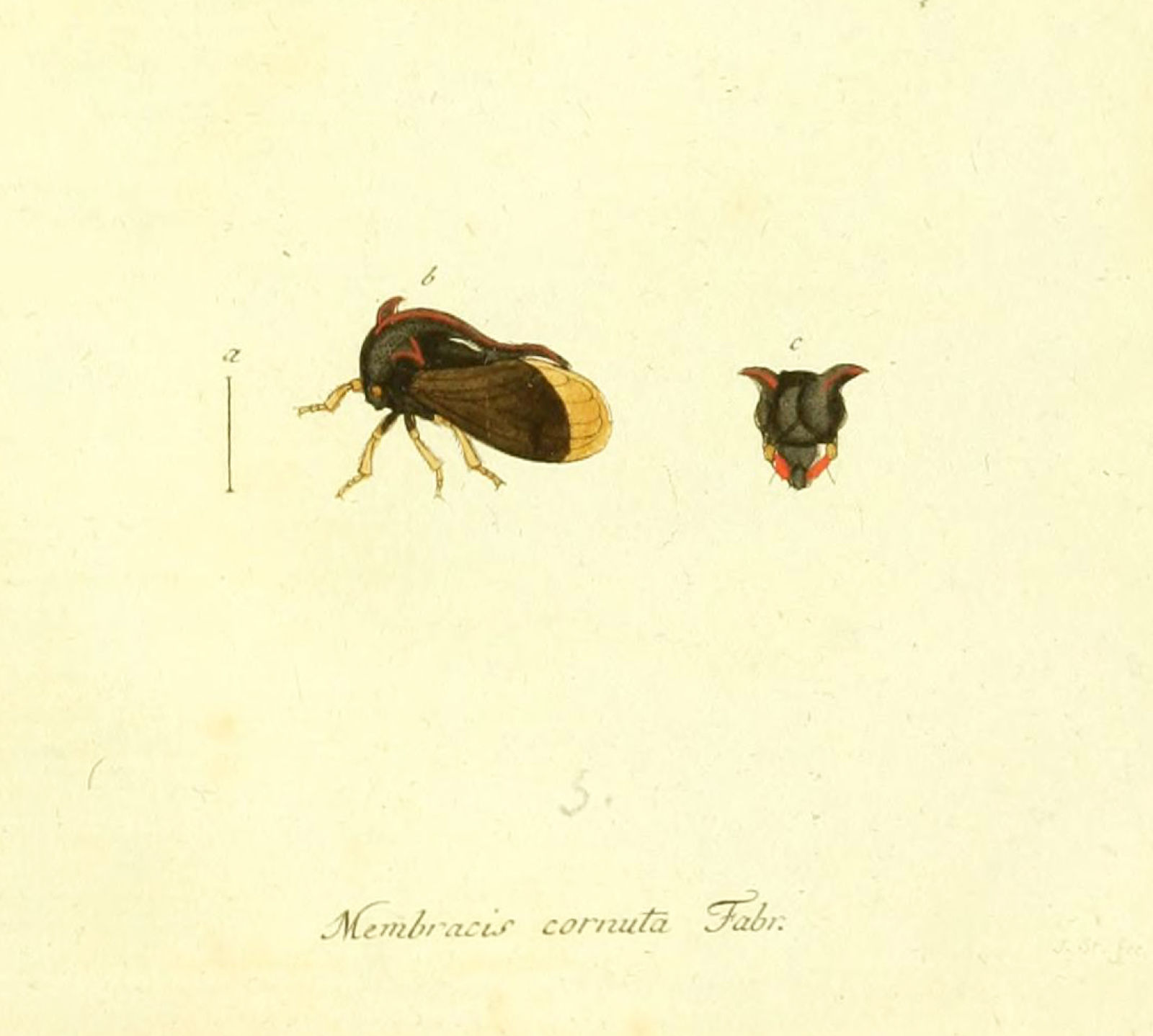 8
8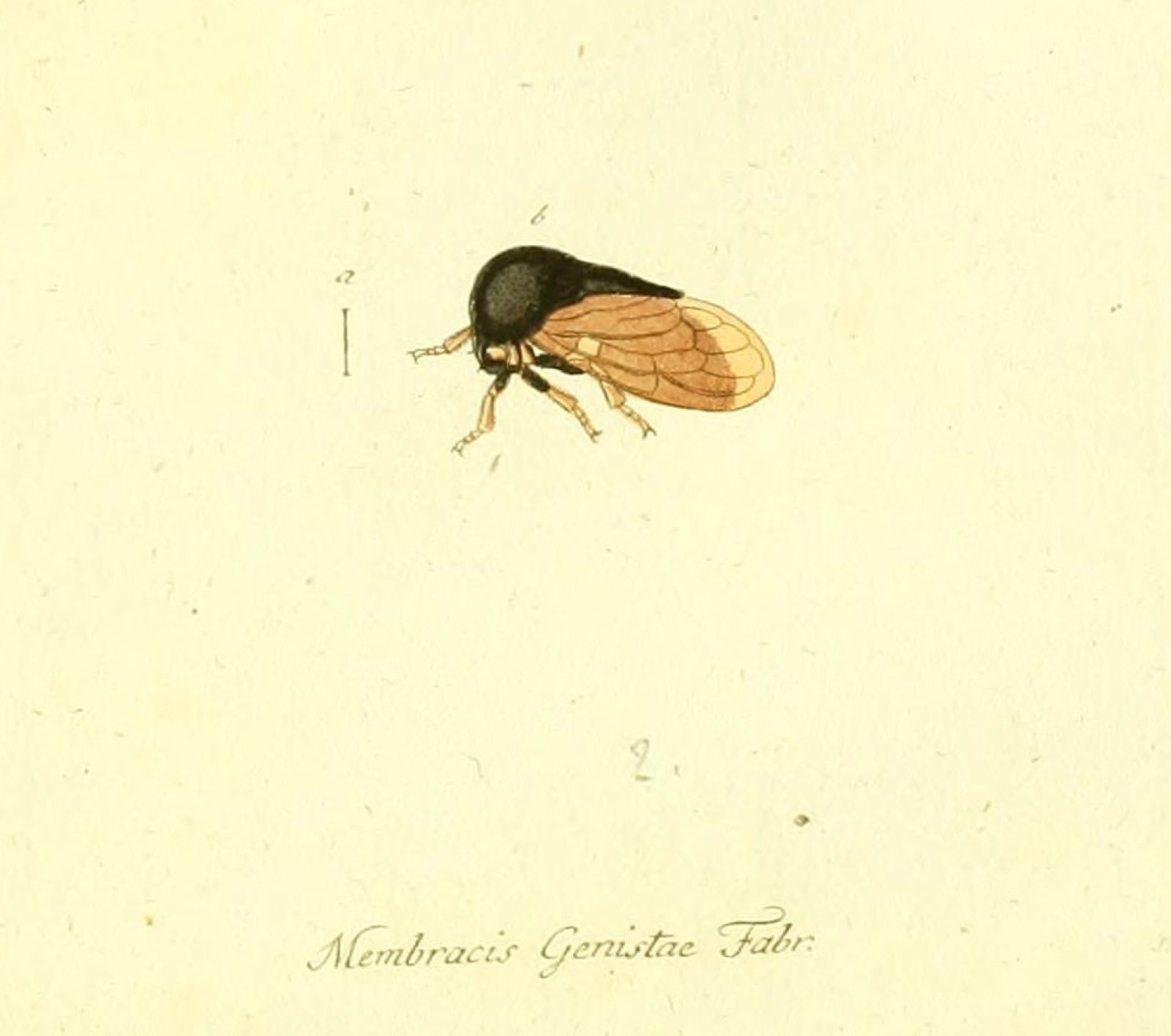 9
9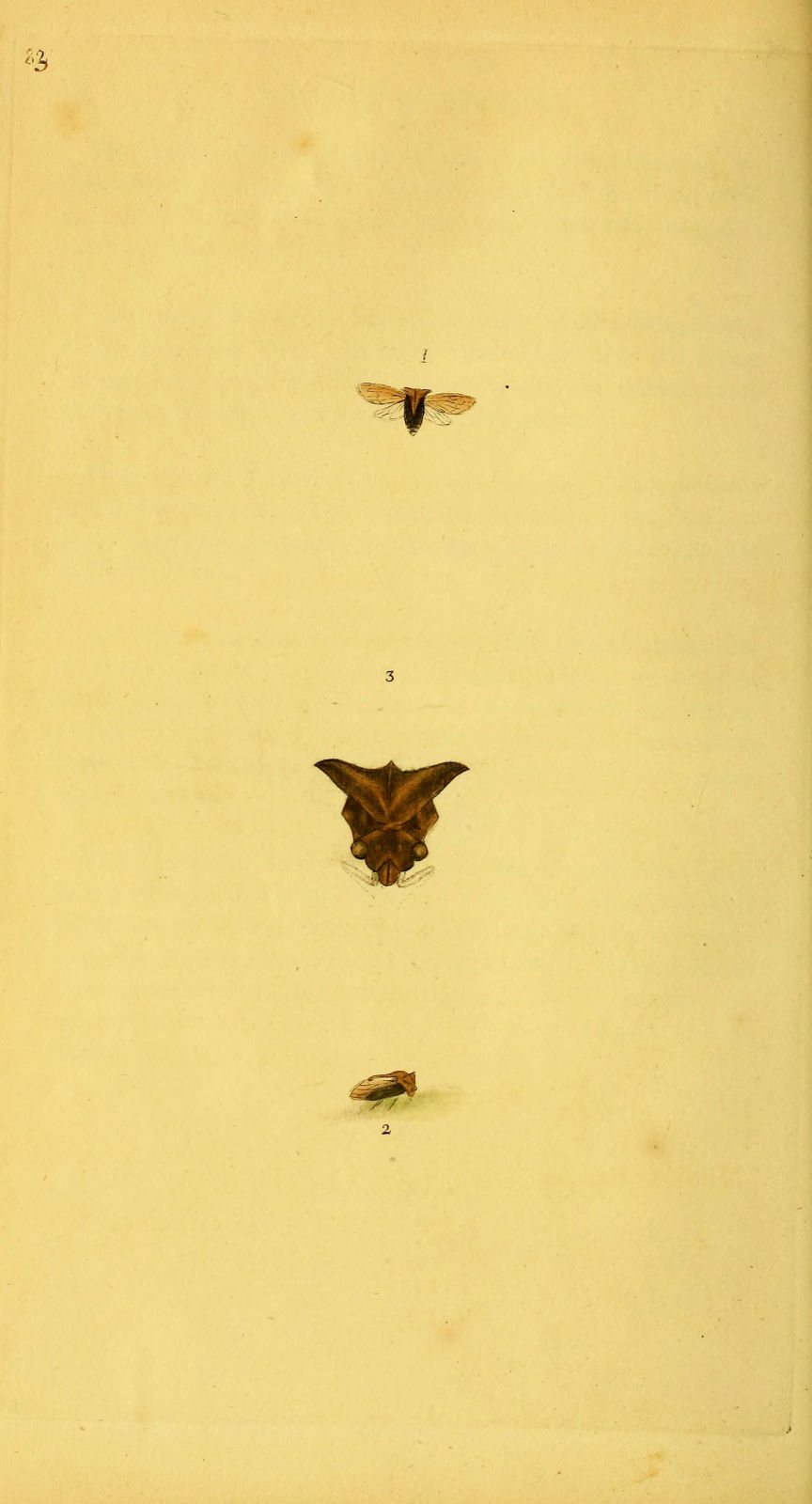
10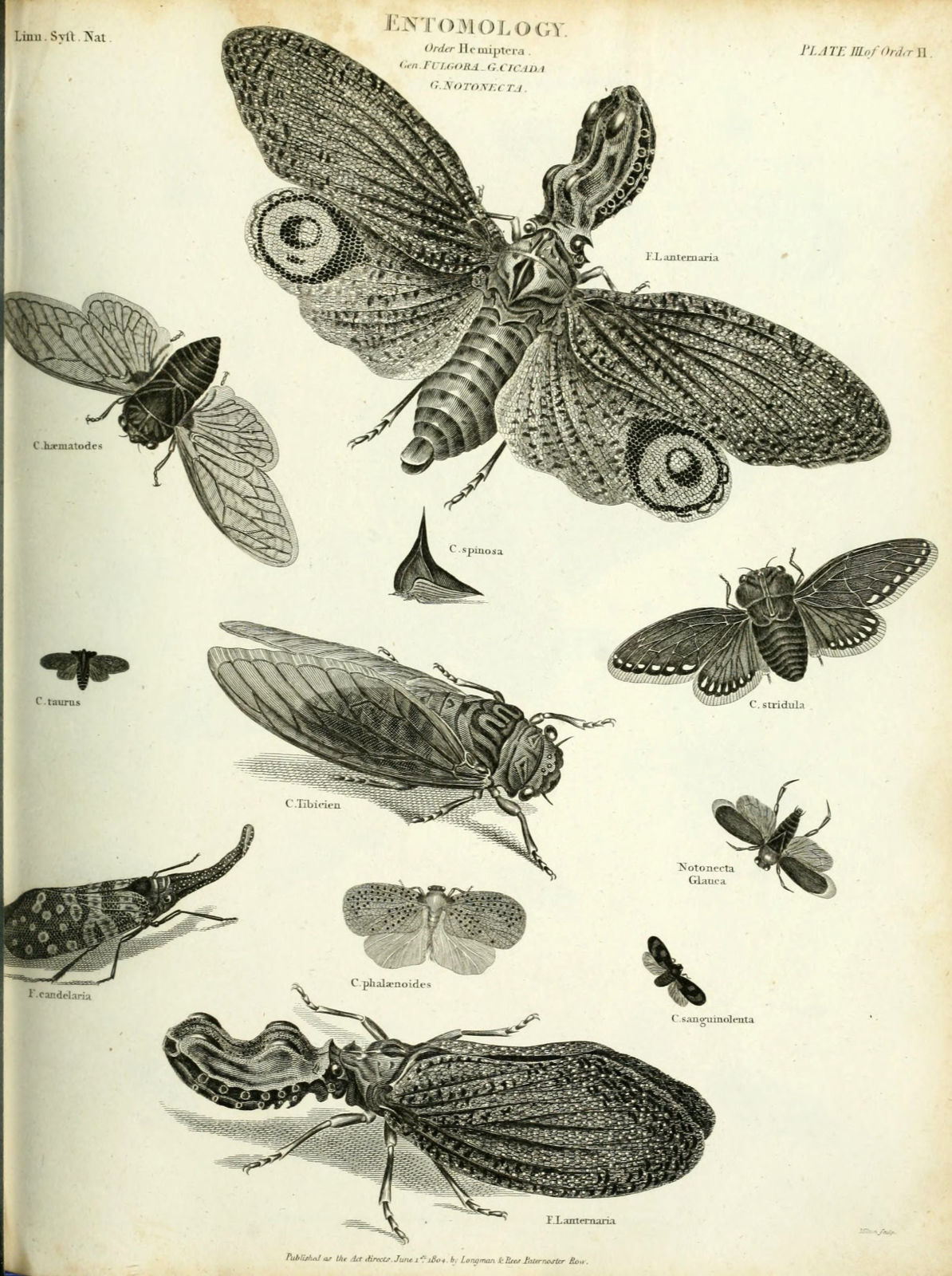 11
11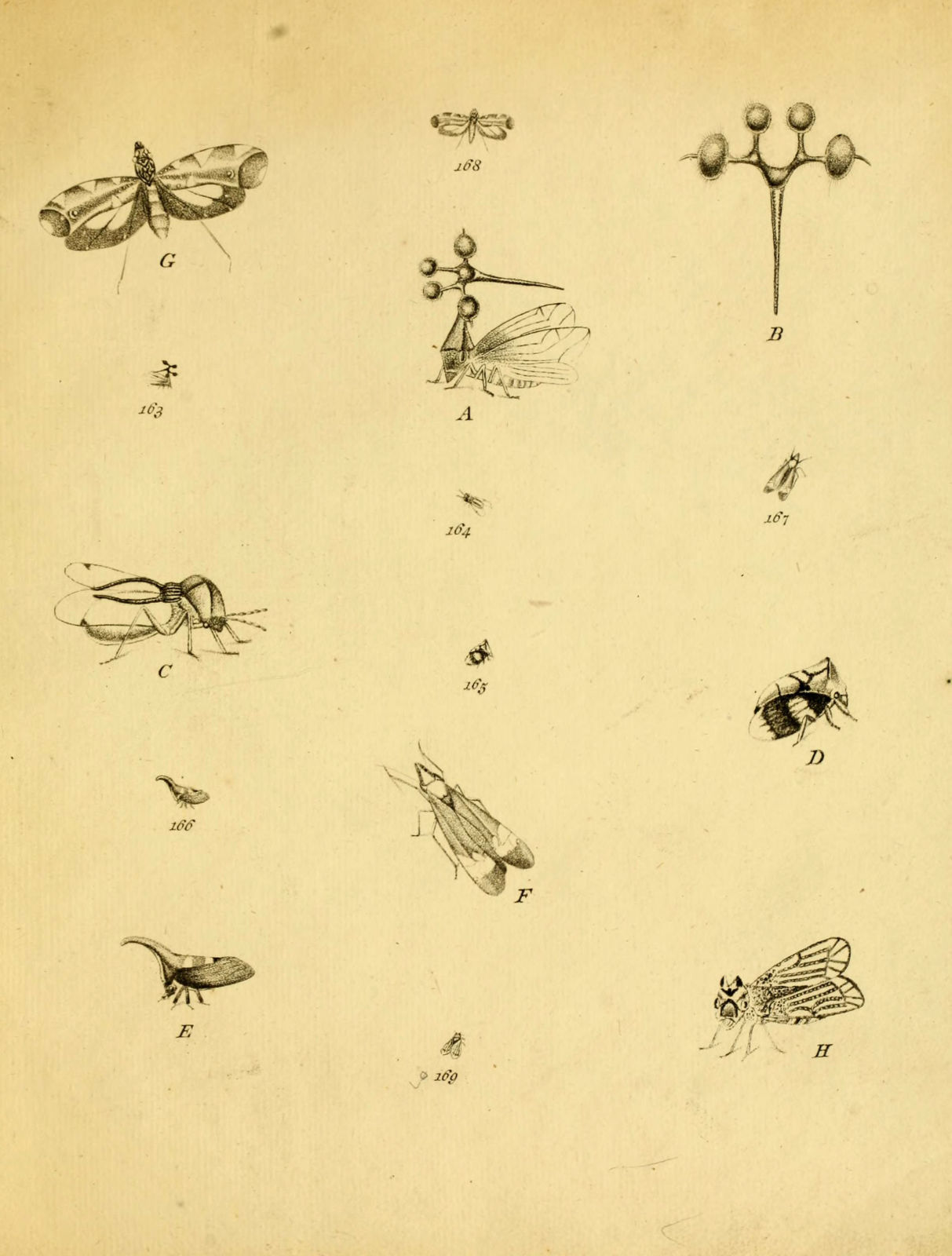 12
12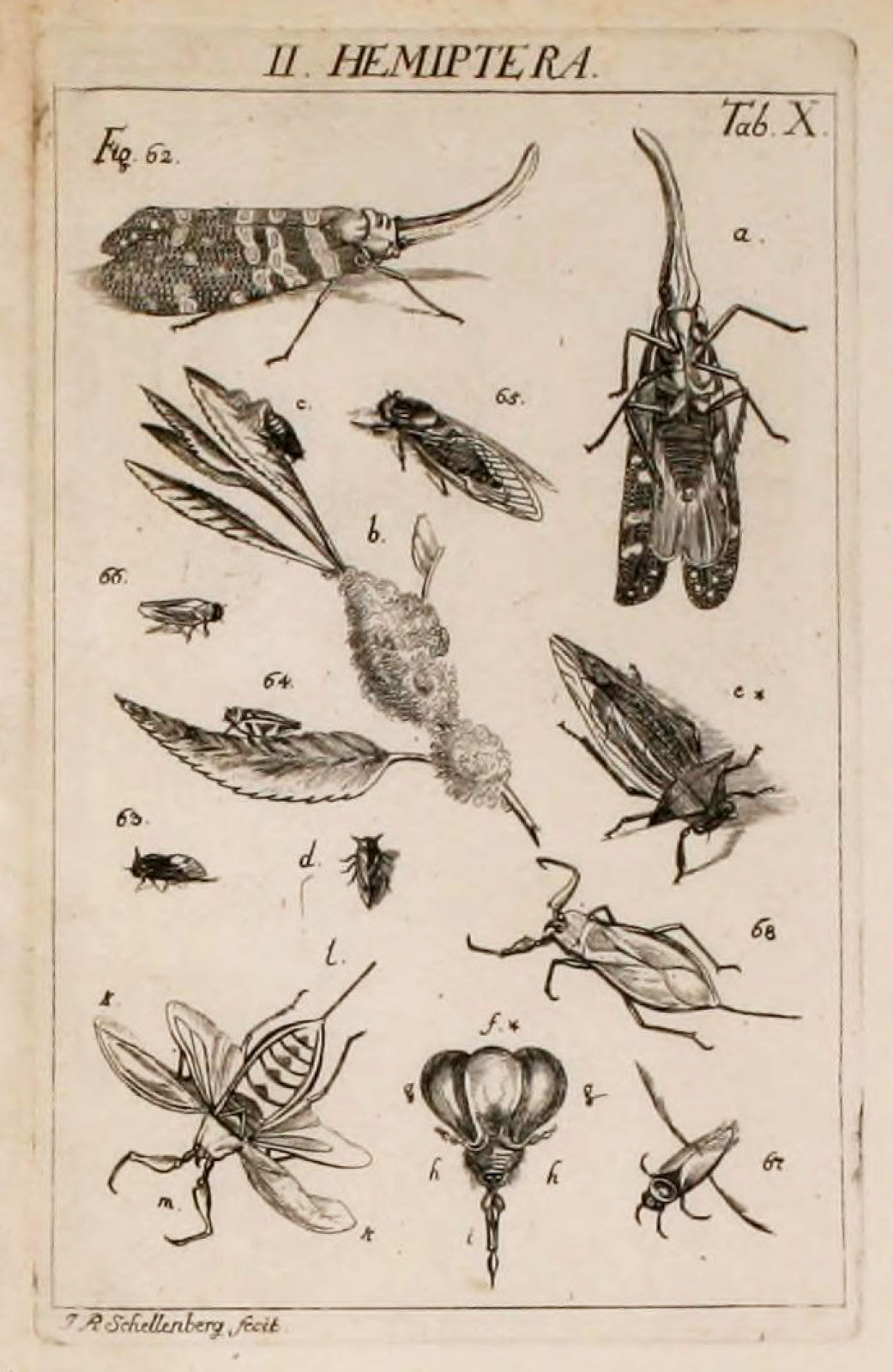 13
13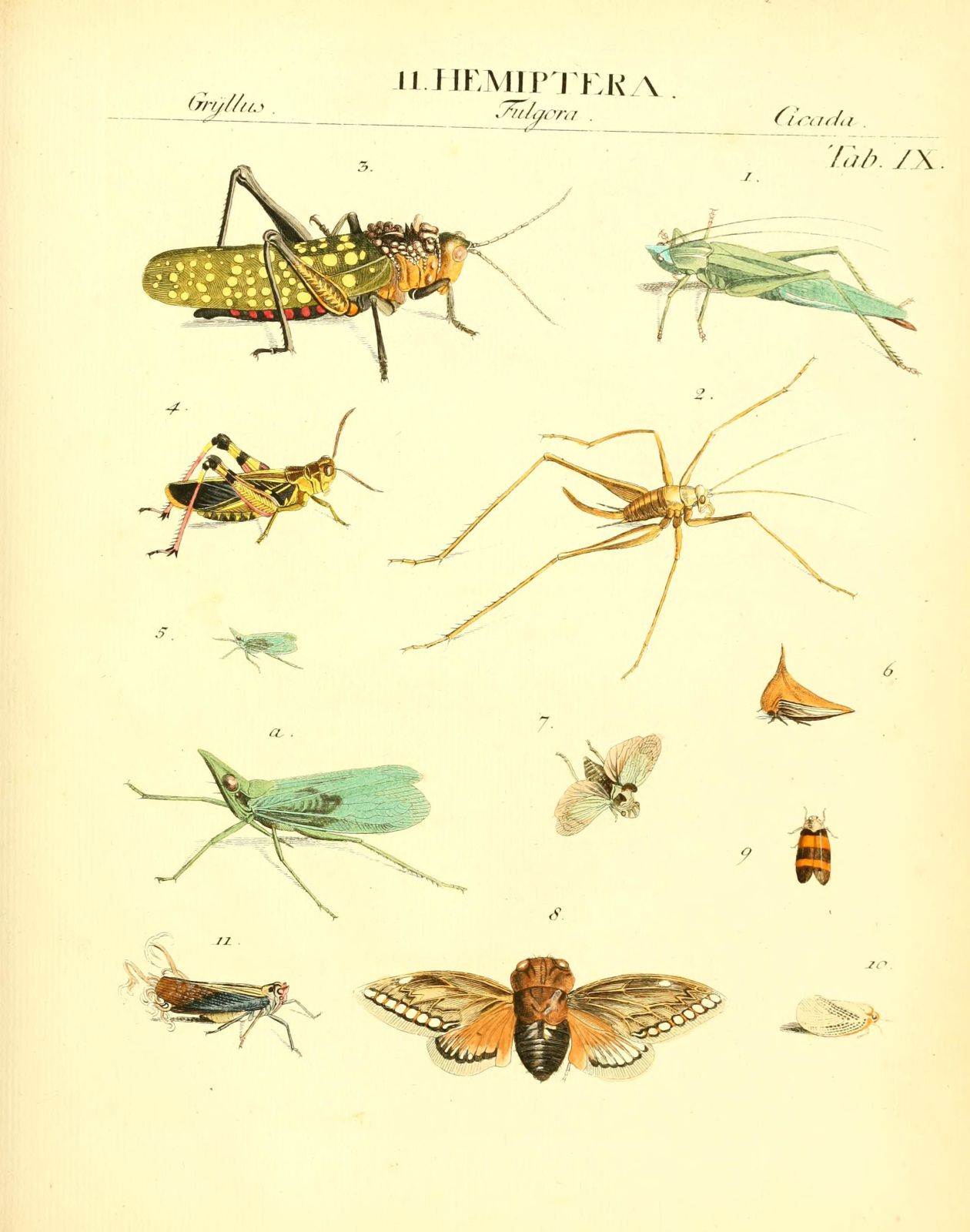
Z. P. Metcalf took care in establishing publication dates, and we follow his dates unless convincing evidence has come to our attention indicating a needed correction. In this regard, during the compilation of the present guide, we discovered Index Novus Litteraturae Entomologicae, an updated bibliography of the literature on entomology from the beginning until 1863, which appears to be a useful resource for verifying publication dates. To generate full citations for nearly all works published on Auchenorrhyncha during the 1700s, enter "17??" in the date search box of DrMetcalf.
The names of early authors often vary in spelling depending upon the language of the publication, thus variants are given in square brackets in the following list of Treehopper Workers of the 1700s: James [Jacque] Barbut; Johann Beckmann [Iohanne Beckmanno]; Nikolaus Joseph [Nicolaus Josephus] Brahm; Antoine Jean [Antoine-Jean, Antonius-Joannes, Antoine-Jean-Joseph, Jean Antoine] Coquebert [Coquebert de Montbret]; Charles [Caroli] De Geer; Charles [Carolo] Joseph De Villers [de Villers]; Edward Donovan; Johann [Iohannes, Jean, Johan, Johann, Johannes] Christian [Christianus, Chrtien] Fabricius; Johann Reinhold Forster [Joanne Reinholdo Forstero]; Antoine François [Francois, Francoise] Fourcroy [de Fourcroy]; Johann Kaspar [Caspar] Füssli [Fuessli, Fuesslins, Fuessly]; Étienne [Etienne] Louis Geoffroy; Michel Esprit Giorna; Johann Friedrich Gmelin; Johann August Ephraim Goeze; Laurens [Laurentius] Theodorus Gronovius; P. Höslin; Martin [Martinus] Houttuyn; Pierre André [Andre] Latreille; Anton August Heinrich Lichtenstein; Carolus Linnaeus [Carl von Linné]; Christian Friedrich Ludwig; Maria [María, Marie, Anna Maria] Sybilla [Sybille] Merian [de Merian]; Otto Frederik [Friedrich] Müller [Mueller]; Philipp Ludwig Statius Müller [Mueller]; Guillaume Antoine Olivier; Peter Simon Pallas; Georg Wolfgang Franz Panzer; Vincenzo Petagna; Erich [Erik] Pontoppidan; Anders Jåhan [Jahan] Retzius; Johann Jacob Römer [Roemer]; Pietro Rossi; Jacob [Jakob] Christian Schäffer [Schaeffer]; Franz von Paula [de Paula] von Schrank [Schrank]; Johann Christian Daniel von Schreber; Giovanni [Johannes, Ioannis] Antonio [Antonii] Scopoli; Caspar Stoll; Johann [Johan] Heinrich Sulzer; Carl Peter [Caroli Petri, Carolo Petro] Thunberg [Thvnberg]; Friedrich [Frederico] Weber; Thomas Pattinson Yeats; Johann Jacob [Iohannes I.] Zschach [Zschachii] and Nathanael Gottfried Leske [Leskeanum].
Publications on Treehoppers by Workers of the 1700s: Barbut 1783a, pl. 9 ; Beckmann 1772a; Brahm 1790a; Coquebert 1799a, pls. 8-9; Coquebert 1801a, pl. 18; Coquebert 1804a, pl. 21; De Geer 1773a [see pp. 158-328 and pl. 11, Fig. 23, image incomplete]; De Geer 1778a, [see pp. 158-228, Cigales], [plate 45]; De Villers 1789a; Donovan 1794a, pl. 83; Donovan 1820a, [see Cicada]; Donovan 1820d, Hemiptera pl. 3, C. spinosa, C. taurus; Fabricius 1775a; Fabricius 1777a; Fabricius 1781a; Fabricius 1787a; Fabricius 1794a; Fabricius 1798a; Fabricius 1803a; Forster 1771a; Fourcroy 1785a; Füssli 1775a; Geoffroy 1762a, pl. 9 ; Geoffroy 1764a; Geoffroy 1799a; Giorna 1791a; Gmelin 1789a; Goeze 1778a; Goeze 1780a [needed]; Gronovius 1764a, [see ICZN Opinion 261: rejected for nomenclatural purposes]; Höslin 1782a [needed]; Houttuyn 1766a, pl. 81; Latreille 1796a [24 treehopper publications in the 1800s are not listed here]; Lichtenstein 1796a, [see ICZN (1995) Opinion 1820, Bulletin Zoological Nomenclature 51: 283-285]; Linnaeus 1746a [Laurentii Slavii printing], [Lugundi Batavorum printing]; Linnaeus 1758a; Linnaeus 1761a, pl. 2; Linnaeus 1764a; Linnaeus 1767a [subsequent reprints of 1758a not listed here]; Ludwig 1799a; Merian 1771c; Müller, O. 1776a; Müller, P. L. S. 1774a [needed]; Olivier 1789a; Olivier 1792a; Olivier 1797a, pl. 109; Pallas 1766a, pl. 14; Pallas 1772a, pl. 1; Panzer 1798a, pls. 50.19-50.20; Panzer 1802a [needed]; Panzer 1804a; Petagna 1787a; Petagna 1792a, pl. 9; Petagna 1808a [needed]; Petagna 1820a [needed]; Pontoppidan 1762a [see p. 680, Hemiptera, and pl. 29 Cicada cornuta]; Retzius 1783a; Römer 1789a, pl. 9; Rossi 1792a, [see pp. 212-220, Rhyngota]; Rossi 1794a, [see p. 50, Ryngota]; Rossi 1807a, [see pp. 341-352, Rhyngota]; Schaeffer 1767a, pl. 96; Scheller 1869, [plates]; von Schrank 1781a; von Schrank 1801a; von Schreber 1759a; Scopoli 1763a; Scopoli 1777a; Stoll 1781a; Stoll 1788a, pls. 1-2, pls. 5-6, pl. 8, pls. 10-11, pls. 15-[19], pl. 21, pl. [28]; Stoll 1792a [German translation of 1788a]; Sulzer 1761a, [see pp. 94-98, 24-25 and pl. 10]; Sulzer 1776a, pl. 9; Thunberg 1789a; Thunberg 1791a; Thunberg 1822a [needed]; Weber 1795a, [see pp. 144-148, Rhyngota; Weber 1801a, [see pp. 112-115, Rhyngota]; Yeats 1773a; Zschach and Leske 1788a, [see pp. 115-117, Ryngota].
Please contact Lewis Deitz if you know of other works mentioning treehoppers printed prior to 1800 or if you can provide links to online copies of works marked here as “needed.”
Early contributions on treehoppers were sometimes published over a period of two or more years and subsequently bound into a single volume with a title page and introductory materials. Because of the principle of priority among taxonomic names, it is essential to establish the actual date of publication for each section of such works that describe new taxa (the section date may differ from that on the title page). Furthermore, the sequence of sections and placement of plates may vary among various bound copies of a work. In the absence of photography, illustrations were frequently produced from copper engravings (plates), and some were individually hand-colored, each plate being a unique work of art.
Selected early natural history plates with figures of treehoppers: 1, Coquebert 1799a: Pl. 8, Fig. 1; 2 , Coquebert 1799a: Pl. 9, Fig. 5; 3, Coquebert 1801a: Pl. 18, Figs. 1-10; 4, Coquebert 1804a: Pl. 21, Fig. 5; 5, Houttuyn 1766a: Pl. 81, Fig. 2; 6, Linnaeus 1761a: Pl. 2, Fig. 279; 7, Panzer 1798a: Pl. 50.19, Membracis cornutus; 8, Panzer 1798a: Pl. 50.20, Membracis genistae; 9, Donovan 1794a: Pl. 83; 10, Donovan 1820d: Hemiptera Pl. 3, C. spinosa, C. taurus; 11, Stoll 1788a: Pl. [28], Figs. 163, A, B, 165, D, 166, E, 169, H; 12, Sulzer 1761a: Pl. 10, Fig. 63; 13, Sulzer 1776a: Pl. 9, Fig. 6.
1
 2
2 3
3 4
4
5
 6
6 7
7 8
8 9
9
10
 11
11 12
12 13
13
Z. P. Metcalf took care in establishing publication dates, and we follow his dates unless convincing evidence has come to our attention indicating a needed correction. In this regard, during the compilation of the present guide, we discovered Index Novus Litteraturae Entomologicae, an updated bibliography of the literature on entomology from the beginning until 1863, which appears to be a useful resource for verifying publication dates. To generate full citations for nearly all works published on Auchenorrhyncha during the 1700s, enter "17??" in the date search box of DrMetcalf.
The names of early authors often vary in spelling depending upon the language of the publication, thus variants are given in square brackets in the following list of Treehopper Workers of the 1700s: James [Jacque] Barbut; Johann Beckmann [Iohanne Beckmanno]; Nikolaus Joseph [Nicolaus Josephus] Brahm; Antoine Jean [Antoine-Jean, Antonius-Joannes, Antoine-Jean-Joseph, Jean Antoine] Coquebert [Coquebert de Montbret]; Charles [Caroli] De Geer; Charles [Carolo] Joseph De Villers [de Villers]; Edward Donovan; Johann [Iohannes, Jean, Johan, Johann, Johannes] Christian [Christianus, Chrtien] Fabricius; Johann Reinhold Forster [Joanne Reinholdo Forstero]; Antoine François [Francois, Francoise] Fourcroy [de Fourcroy]; Johann Kaspar [Caspar] Füssli [Fuessli, Fuesslins, Fuessly]; Étienne [Etienne] Louis Geoffroy; Michel Esprit Giorna; Johann Friedrich Gmelin; Johann August Ephraim Goeze; Laurens [Laurentius] Theodorus Gronovius; P. Höslin; Martin [Martinus] Houttuyn; Pierre André [Andre] Latreille; Anton August Heinrich Lichtenstein; Carolus Linnaeus [Carl von Linné]; Christian Friedrich Ludwig; Maria [María, Marie, Anna Maria] Sybilla [Sybille] Merian [de Merian]; Otto Frederik [Friedrich] Müller [Mueller]; Philipp Ludwig Statius Müller [Mueller]; Guillaume Antoine Olivier; Peter Simon Pallas; Georg Wolfgang Franz Panzer; Vincenzo Petagna; Erich [Erik] Pontoppidan; Anders Jåhan [Jahan] Retzius; Johann Jacob Römer [Roemer]; Pietro Rossi; Jacob [Jakob] Christian Schäffer [Schaeffer]; Franz von Paula [de Paula] von Schrank [Schrank]; Johann Christian Daniel von Schreber; Giovanni [Johannes, Ioannis] Antonio [Antonii] Scopoli; Caspar Stoll; Johann [Johan] Heinrich Sulzer; Carl Peter [Caroli Petri, Carolo Petro] Thunberg [Thvnberg]; Friedrich [Frederico] Weber; Thomas Pattinson Yeats; Johann Jacob [Iohannes I.] Zschach [Zschachii] and Nathanael Gottfried Leske [Leskeanum].
Publications on Treehoppers by Workers of the 1700s: Barbut 1783a, pl. 9 ; Beckmann 1772a; Brahm 1790a; Coquebert 1799a, pls. 8-9; Coquebert 1801a, pl. 18; Coquebert 1804a, pl. 21; De Geer 1773a [see pp. 158-328 and pl. 11, Fig. 23, image incomplete]; De Geer 1778a, [see pp. 158-228, Cigales], [plate 45]; De Villers 1789a; Donovan 1794a, pl. 83; Donovan 1820a, [see Cicada]; Donovan 1820d, Hemiptera pl. 3, C. spinosa, C. taurus; Fabricius 1775a; Fabricius 1777a; Fabricius 1781a; Fabricius 1787a; Fabricius 1794a; Fabricius 1798a; Fabricius 1803a; Forster 1771a; Fourcroy 1785a; Füssli 1775a; Geoffroy 1762a, pl. 9 ; Geoffroy 1764a; Geoffroy 1799a; Giorna 1791a; Gmelin 1789a; Goeze 1778a; Goeze 1780a [needed]; Gronovius 1764a, [see ICZN Opinion 261: rejected for nomenclatural purposes]; Höslin 1782a [needed]; Houttuyn 1766a, pl. 81; Latreille 1796a [24 treehopper publications in the 1800s are not listed here]; Lichtenstein 1796a, [see ICZN (1995) Opinion 1820, Bulletin Zoological Nomenclature 51: 283-285]; Linnaeus 1746a [Laurentii Slavii printing], [Lugundi Batavorum printing]; Linnaeus 1758a; Linnaeus 1761a, pl. 2; Linnaeus 1764a; Linnaeus 1767a [subsequent reprints of 1758a not listed here]; Ludwig 1799a; Merian 1771c; Müller, O. 1776a; Müller, P. L. S. 1774a [needed]; Olivier 1789a; Olivier 1792a; Olivier 1797a, pl. 109; Pallas 1766a, pl. 14; Pallas 1772a, pl. 1; Panzer 1798a, pls. 50.19-50.20; Panzer 1802a [needed]; Panzer 1804a; Petagna 1787a; Petagna 1792a, pl. 9; Petagna 1808a [needed]; Petagna 1820a [needed]; Pontoppidan 1762a [see p. 680, Hemiptera, and pl. 29 Cicada cornuta]; Retzius 1783a; Römer 1789a, pl. 9; Rossi 1792a, [see pp. 212-220, Rhyngota]; Rossi 1794a, [see p. 50, Ryngota]; Rossi 1807a, [see pp. 341-352, Rhyngota]; Schaeffer 1767a, pl. 96; Scheller 1869, [plates]; von Schrank 1781a; von Schrank 1801a; von Schreber 1759a; Scopoli 1763a; Scopoli 1777a; Stoll 1781a; Stoll 1788a, pls. 1-2, pls. 5-6, pl. 8, pls. 10-11, pls. 15-[19], pl. 21, pl. [28]; Stoll 1792a [German translation of 1788a]; Sulzer 1761a, [see pp. 94-98, 24-25 and pl. 10]; Sulzer 1776a, pl. 9; Thunberg 1789a; Thunberg 1791a; Thunberg 1822a [needed]; Weber 1795a, [see pp. 144-148, Rhyngota; Weber 1801a, [see pp. 112-115, Rhyngota]; Yeats 1773a; Zschach and Leske 1788a, [see pp. 115-117, Ryngota].
Please contact Lewis Deitz if you know of other works mentioning treehoppers printed prior to 1800 or if you can provide links to online copies of works marked here as “needed.”
Units Used to Measure Insects Prior to the Metric System
2015-10-23
Be grateful that millimeters have largely replaced “lines” and “lunules” as units to measure treehoppers. By the way, a “lunule” is the white crescent-shaped area at the base of one’s fingernail--lunules vary in size and may even be absent in some individuals. More frequently, early entomological workers used “lines” as a unit of measurement, but the definition of a line varied among the English, French (ligne), and Germans (linie), and, in some instances, the definition varied even within a country. The Website www.coleoptera.com includes a brief overview of early entomological measurements. To convert some of the more commonly used "lines" to millimeters, see “Notes on the line as a unit of measurement,” p. 11, from von Hayek, 1973, Bulletin of the British Museum (Natural History), Entomology Supplement 20: 1-309.
Treehopper Publications of E. P. Van Duzee and L. B. Woodruff
2015-11-09
Most works on treehoppers by American entomologists Edward Payson Van Duzee (1861-1940) and Lewis Bartholomew Woodruff (1868-1925) are readily available online through the Biodiversity Heritage Library (BHL). Two of Woodruff’s papers (1923a, 1924a), not currently available at BHL, are accessible through the digital library JSTOR (see Options for Access). For detailed citations of the works by either author, enter his last name in the author search box of DrMetcalf. We note that "Van Duzee 1890a,” which seems to treat only extant leafhoppers, was apparently listed in Metcalf and Wade’s 1963 bibliography on treehoppers and fossil Auchenorrhyncha in error.
Hemipterist Edward P. Van Duzee described 3 treehopper genera (Idioderma, Tylocentrus, and Xantholobus), 43 species (36 now valid, including 2 that are also nominotypical subspecies) and 3 subspecies (2 now valid subspecies, 1 invalid). The California Academy of Sciences, where Van Duzee served as curator (1916-1940), holds his collection of Hemiptera (164,442 specimens). Van Duzee’s 1908a plates 1 and 2, below, show simple line drawings of representative North American treehoppers.
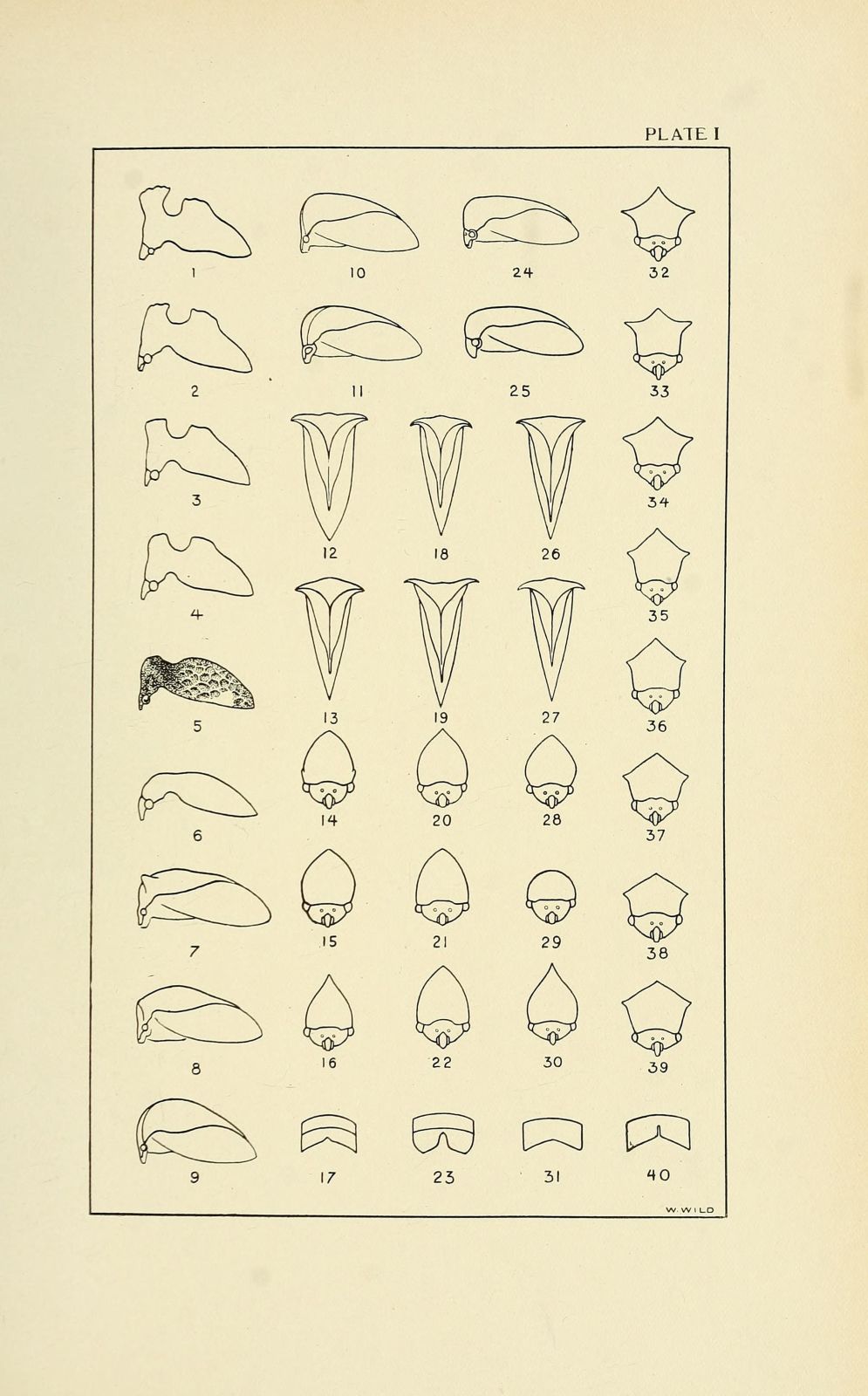
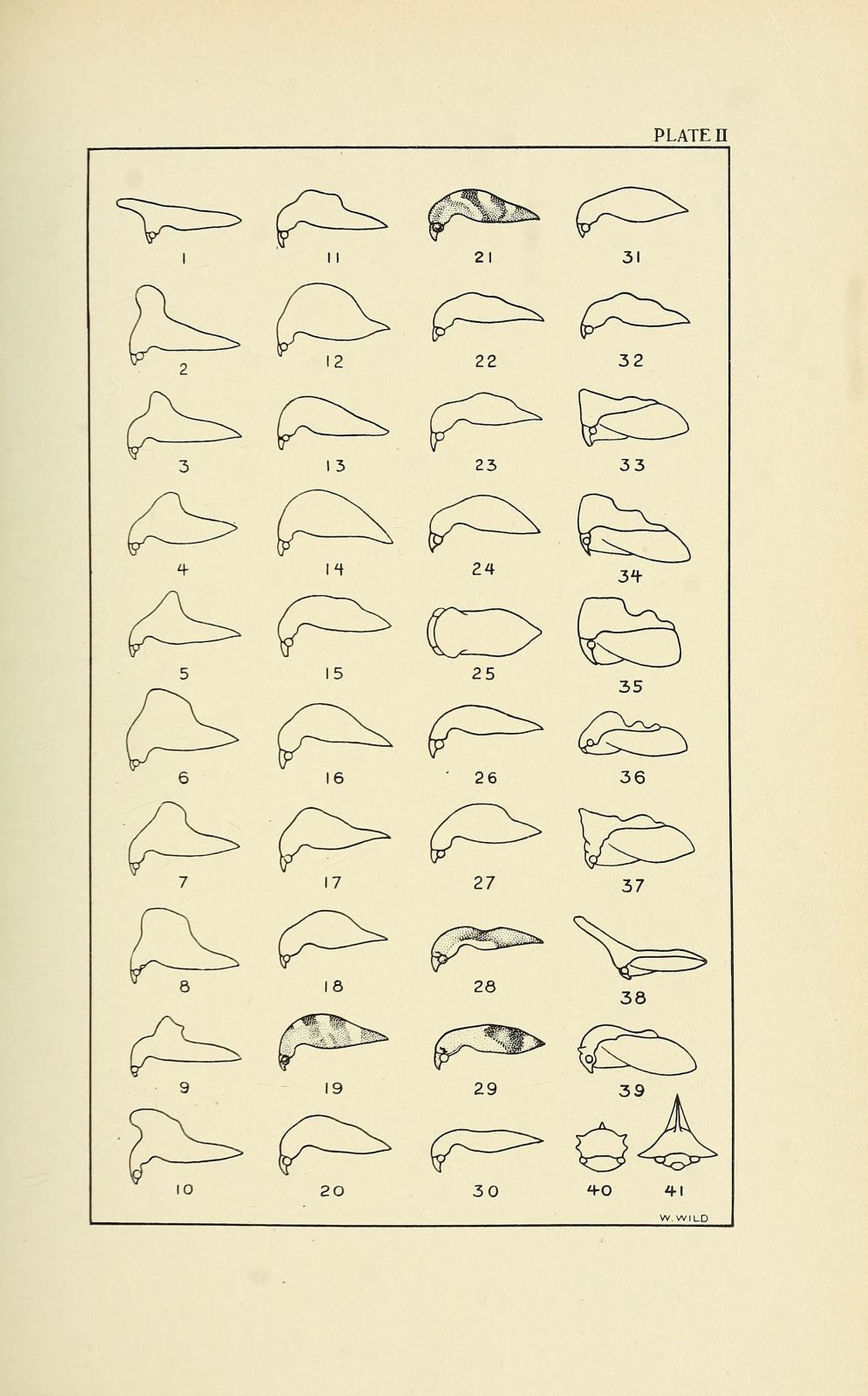
Van Duzee’s Treehopper Publications: Van Duzee 1889b; Van Duzee 1890c; Van Duzee 1892d; Van Duzee 1893b; Van Duzee 1894e; Van Duzee 1895e; Van Duzee 1905a; Van Duzee 1906a; Van Duzee 1907a; Van Duzee 1908a; Van Duzee 1908b; Van Duzee 1909a; Van Duzee 1909c; Van Duzee 1912a; Van Duzee 1912b; Van Duzee 1914a; Van Duzee 1914c; Van Duzee 1916a; Van Duzee 1916b; Van Duzee 1917a; Van Duzee 1917b; Van Duzee 1923a; Van Duzee 1925b.
Lewis B. Woodruff authored 18 treehopper species (16 now valid) and 2 subspecies (1 now elevated to species, 1 invalid), all belonging to the tribe Smiliini. See our news posting of 2012-09-14 [archive of past news], for further information on Woodruff, who at one time had a desk at the American Museum Natural History. The following plates are from Woodruff 1915a (pl. 4, figs. 1-5, now Atymna helena); fig. 6, now A. querci) and 1919a (pl. 23; Ophiderma spp. [Woodruff’s captions include some junior synonyms]).
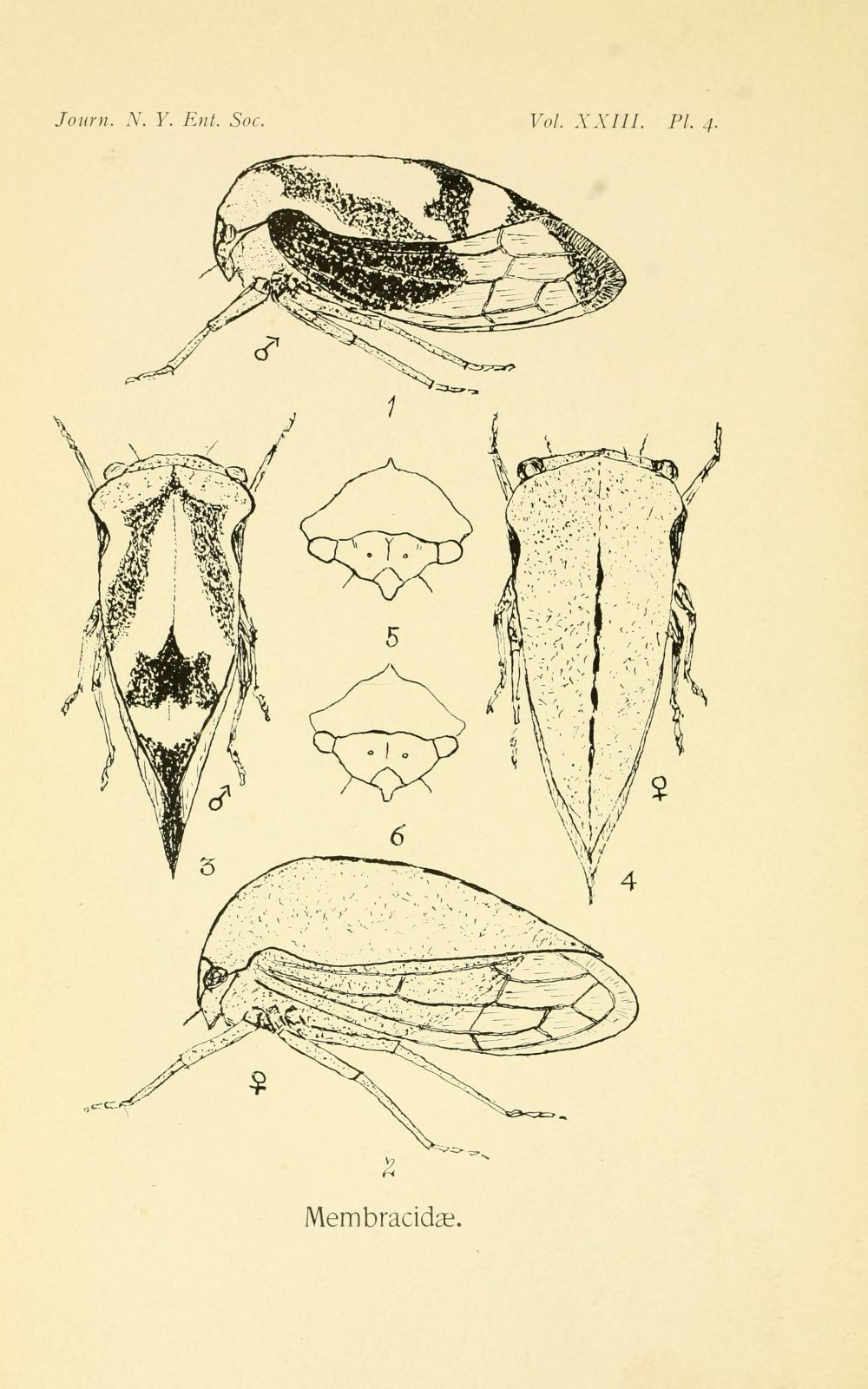
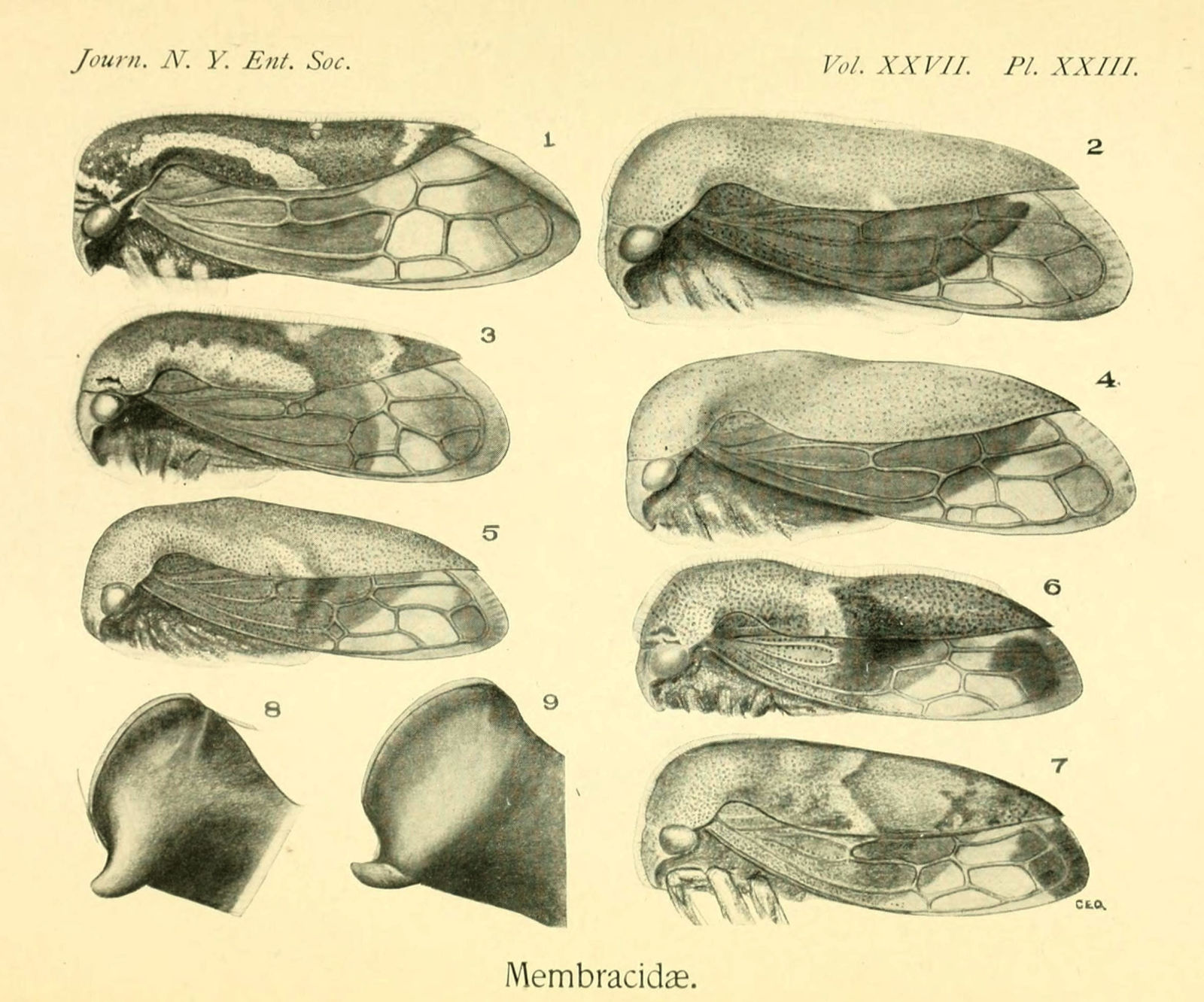
Woodruff’s Treehopper Publications: Woodruff 1915a; Woodruff 1919a; Woodruff 1920a; Woodruff 1923a; Woodruff 1924a.
[Compiled by Matthew S. Wallace and Lewis L. Deitz, 9 November 2015]
Hemipterist Edward P. Van Duzee described 3 treehopper genera (Idioderma, Tylocentrus, and Xantholobus), 43 species (36 now valid, including 2 that are also nominotypical subspecies) and 3 subspecies (2 now valid subspecies, 1 invalid). The California Academy of Sciences, where Van Duzee served as curator (1916-1940), holds his collection of Hemiptera (164,442 specimens). Van Duzee’s 1908a plates 1 and 2, below, show simple line drawings of representative North American treehoppers.


Van Duzee’s Treehopper Publications: Van Duzee 1889b; Van Duzee 1890c; Van Duzee 1892d; Van Duzee 1893b; Van Duzee 1894e; Van Duzee 1895e; Van Duzee 1905a; Van Duzee 1906a; Van Duzee 1907a; Van Duzee 1908a; Van Duzee 1908b; Van Duzee 1909a; Van Duzee 1909c; Van Duzee 1912a; Van Duzee 1912b; Van Duzee 1914a; Van Duzee 1914c; Van Duzee 1916a; Van Duzee 1916b; Van Duzee 1917a; Van Duzee 1917b; Van Duzee 1923a; Van Duzee 1925b.
Lewis B. Woodruff authored 18 treehopper species (16 now valid) and 2 subspecies (1 now elevated to species, 1 invalid), all belonging to the tribe Smiliini. See our news posting of 2012-09-14 [archive of past news], for further information on Woodruff, who at one time had a desk at the American Museum Natural History. The following plates are from Woodruff 1915a (pl. 4, figs. 1-5, now Atymna helena); fig. 6, now A. querci) and 1919a (pl. 23; Ophiderma spp. [Woodruff’s captions include some junior synonyms]).


Woodruff’s Treehopper Publications: Woodruff 1915a; Woodruff 1919a; Woodruff 1920a; Woodruff 1923a; Woodruff 1924a.
[Compiled by Matthew S. Wallace and Lewis L. Deitz, 9 November 2015]
Updates to Treehoppers Team Members and Collaborators
2015-11-19
We welcome graduate student Camilo Flórez-Valencia as the newest member of the Treehoppers "Taxa Content Team." A native of Colombia, Camilo is currently working towards his Master’s degree with Brazilian treehopper researcher Olivia Evangelista. One of Camilo's photos, a Colombian Anobilia, is shown below.
New collaborators include entomologists René Limoges and Stéphane Le Tirant (Montreal Insectarium, Montréal, Québec, Canada). Two of René’s recent treehopper photographs from Mindo, Ecuador, are featured below. See our Acknowledgments and archive of past news (posting of 2015-05-12), for further listings of Team Members and Collaborators.
1, Anobilia nigra, adult with nymphs and ant; 2, Alchisme adult with nymphs; 3, Aconophora female with egg mass. Image copyrights: 1, © 2015, by Camilo Flórez-Valencia; 2 and 3 © 2015, by René Limoges.
1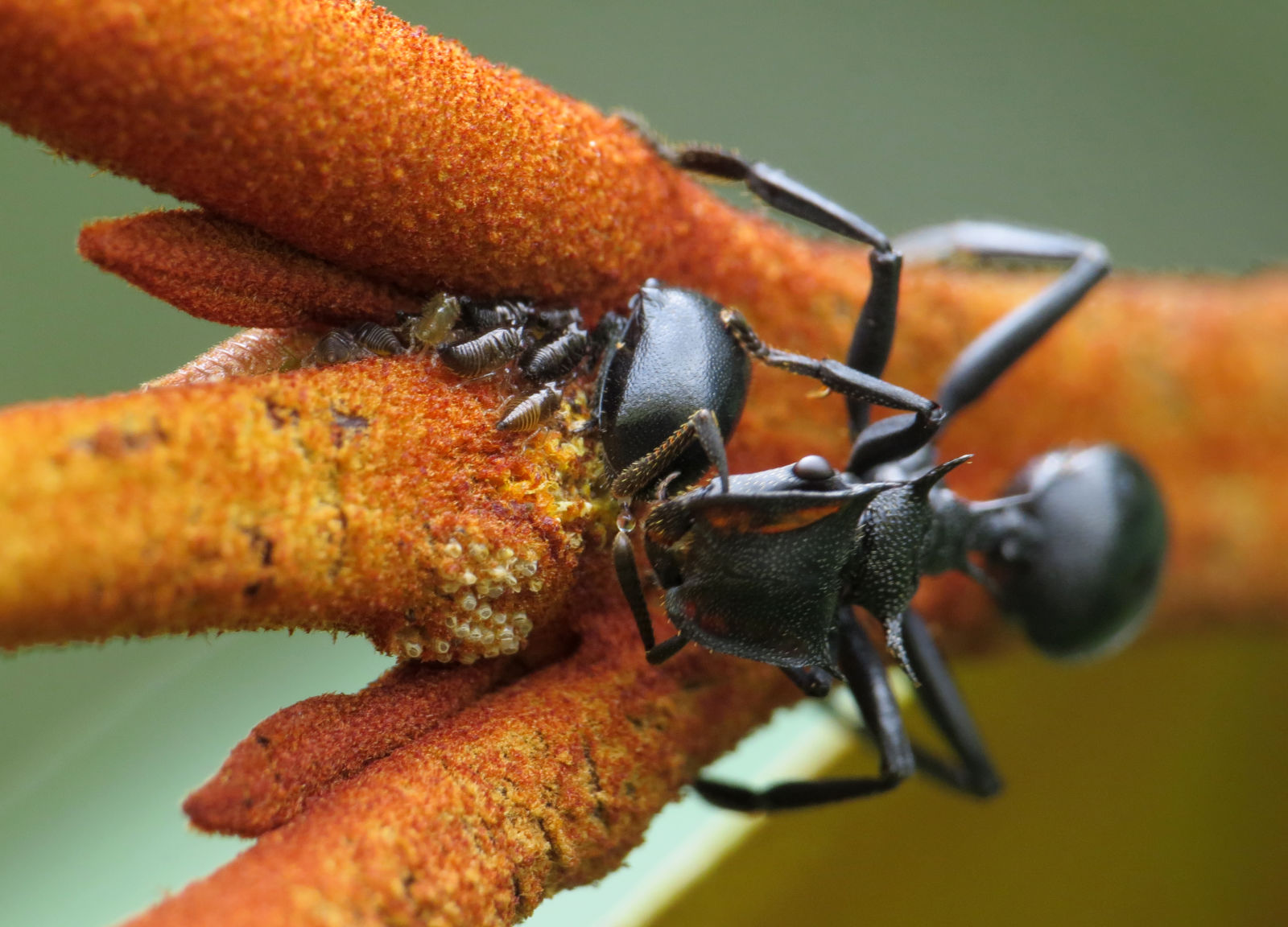 2
2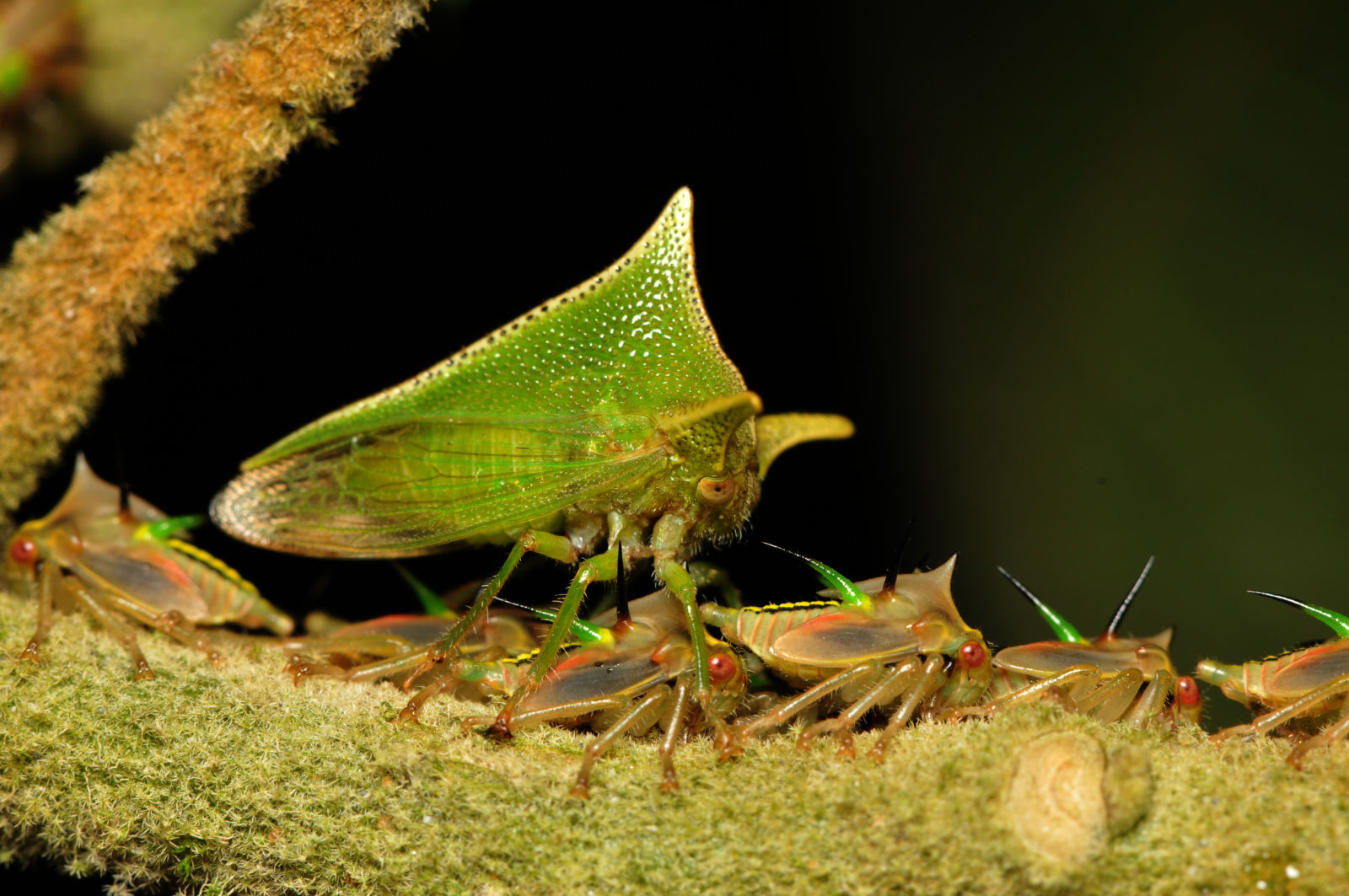 3
3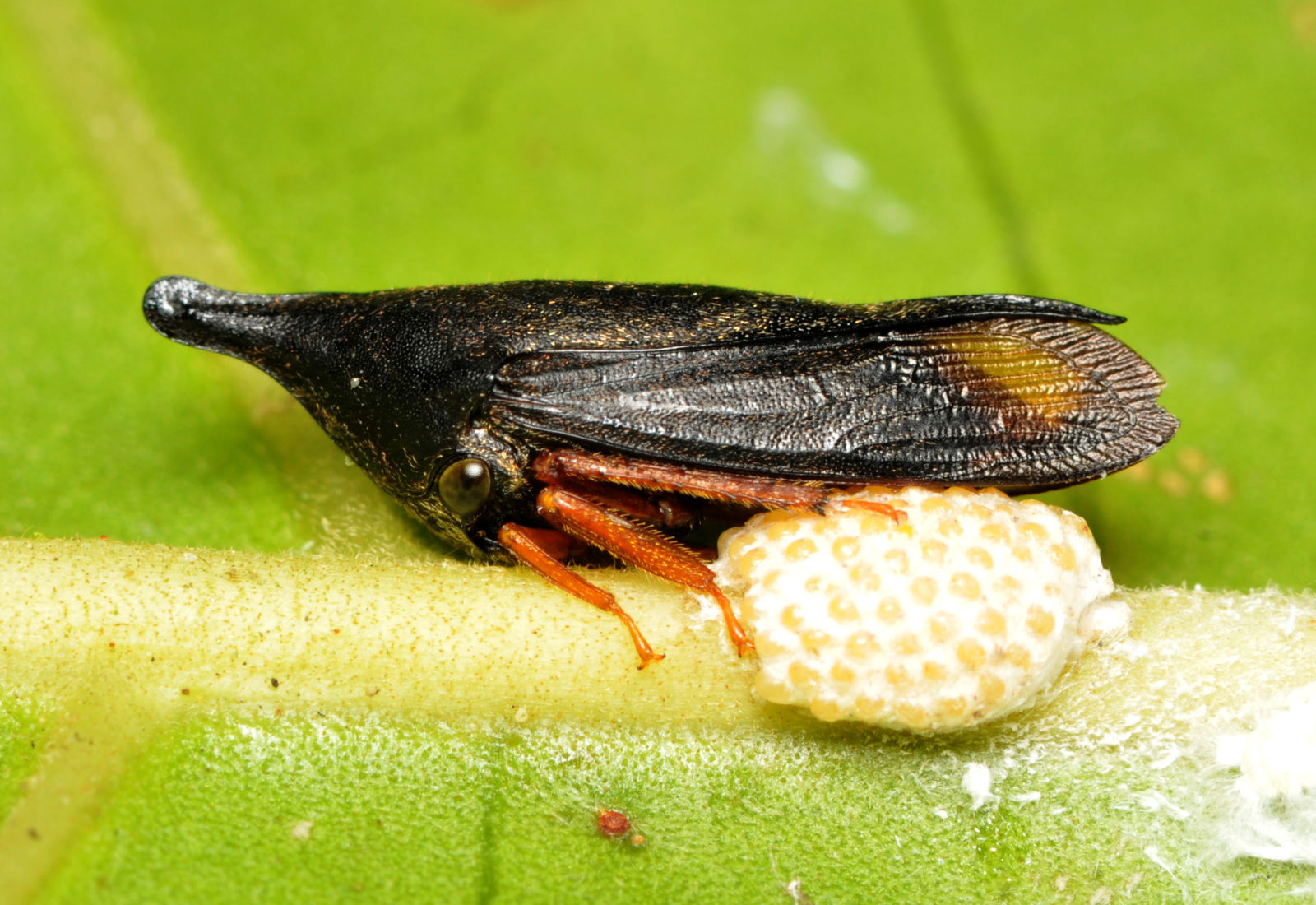
New collaborators include entomologists René Limoges and Stéphane Le Tirant (Montreal Insectarium, Montréal, Québec, Canada). Two of René’s recent treehopper photographs from Mindo, Ecuador, are featured below. See our Acknowledgments and archive of past news (posting of 2015-05-12), for further listings of Team Members and Collaborators.
1, Anobilia nigra, adult with nymphs and ant; 2, Alchisme adult with nymphs; 3, Aconophora female with egg mass. Image copyrights: 1, © 2015, by Camilo Flórez-Valencia; 2 and 3 © 2015, by René Limoges.
1
 2
2 3
3
New State Records of Treehoppers for Pennsylvania
2015-12-29
Barringer, L. E. 2015a. Occurrence of treehopper (Hemiptera: Membracidae) bycatch on purple panel traps and Lindgren funnel traps in Pennsylvania, with new state records. Great Lakes Entomologist 48(3-4): 172-185.
Surveys incorporating Lindgren funnel traps and purple panel traps in Pennsylvania (2009-2013) captured 57 native treehopper species, including four not previously reported for the state: Heliria gibberata Ball 1925, Palonica pyramidata (Uhler 1877), Telamona projecta Butler 1877, and Telamona westcotti Goding 1893. Barringer’s work suggests that, with proper site selection, Lindgren funnel traps may be especially useful in monitoring the seasonal distribution of treehoppers, particularly species in the tribes Smiliini and Telamonini.
Surveys incorporating Lindgren funnel traps and purple panel traps in Pennsylvania (2009-2013) captured 57 native treehopper species, including four not previously reported for the state: Heliria gibberata Ball 1925, Palonica pyramidata (Uhler 1877), Telamona projecta Butler 1877, and Telamona westcotti Goding 1893. Barringer’s work suggests that, with proper site selection, Lindgren funnel traps may be especially useful in monitoring the seasonal distribution of treehoppers, particularly species in the tribes Smiliini and Telamonini.
E. D. Ball’s Publications on Treehoppers
2016-01-19
American entomologist Elmer Darwin Ball (1870–1943) was a specialist on treehoppers and other Auchenorrhyncha. Born in Vermont, he graduated from Iowa State College (B.S., M.S.) and Ohio State University (Ph.D.). Working briefly as a school teacher, Ball had an energetic career with appointments across the U.S.: Albion Seminary (assistant principal), Iowa State College (taught entomology and zoology; later, department head), Colorado Agricultural College (taught entomology and zoology), Utah Agricultural College (professor), the United States Department of Agriculture, the Florida State Plant Board, and the University of Arizona (dean of the College of Agriculture; director of the Agricultural Experiment Station). Moreover, he also served as the State Entomologist of Wisconsin and as the Assistant Secretary of Agriculture. Ball’s extensive collection is now held by the National Museum of Natural History, Washington, D.C.
Regarding treehoppers, Ball described one subfamily (Stictocephalinae, now a junior synonym of the tribe Ceresini), 6 new genera (Bajulata, Bryantopsis, Grandolobus, Helonica, Palonica, and Telonaca–all remain valid), 58 new species (52 remain valid--3 are now also nominotypical subspecies), and 13 subspecies (all remain valid, including 1 elevated to species).
Plate 1 from Ball 1903a shows 9 new species he described in the genus Telamona: Fig. 1, T. extrema; 2, T. obsoleta [= T. westcotti]; 3, T. viridia [now in Palonica]; 4, T. ehrhorni [= Heliria sinuata]; 5, T. compacta; 6, T. decorata; 7, T. pruinosa [= T. collina]; 8, T. brevis [= Telamonanthe pulchella]; 9, T. pulchella [now in Telamonanthe].
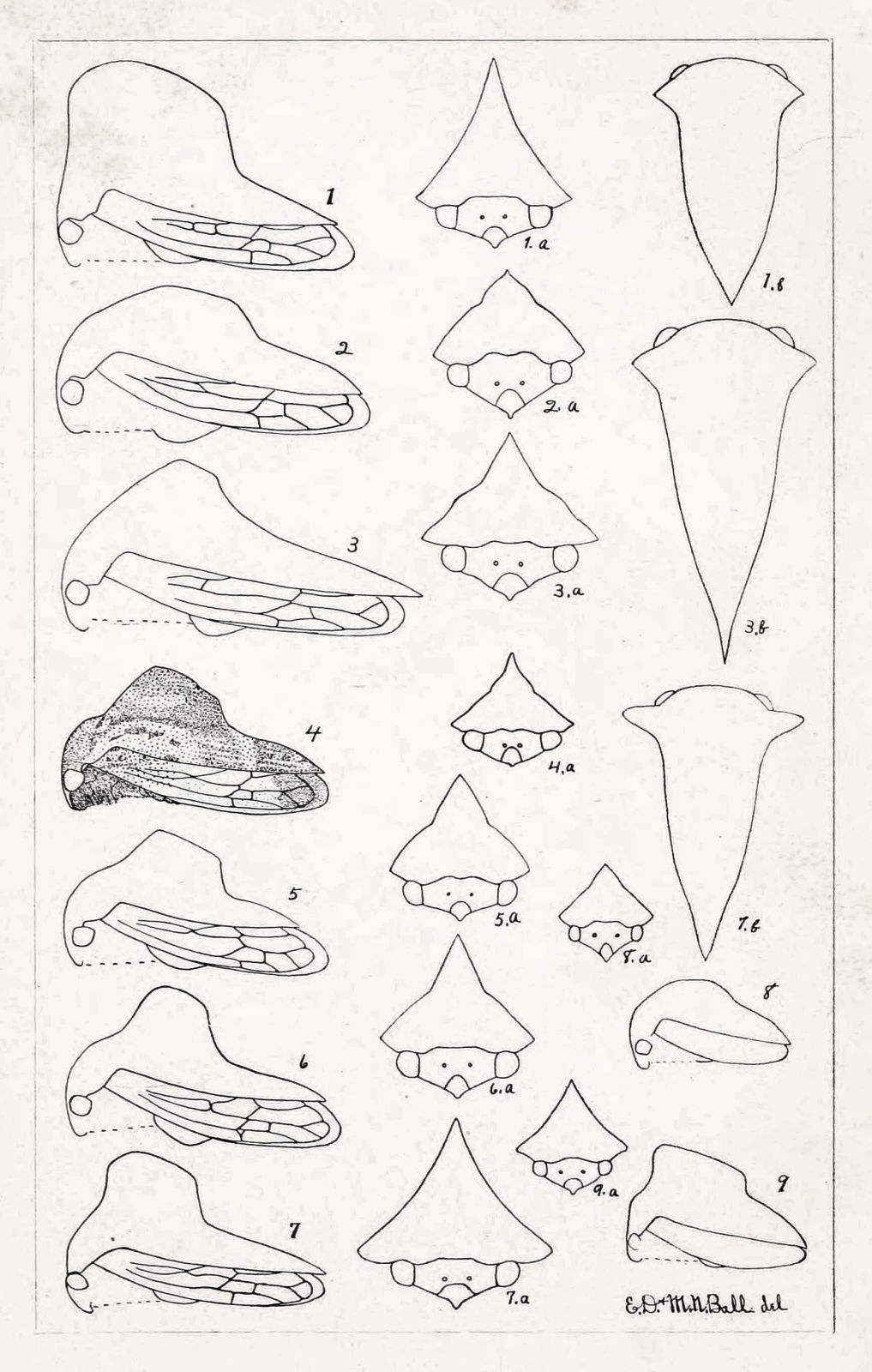
Publications of E. D. Ball. All but three of Ball’s works on treehoppers are currently available online through the Biodiversity Heritage Library: Ball 1903a; Ball 1905a; Ball 1915b; Ball 1918a; Ball 1920b; Ball 1925a; Ball 1931f [needed (monograph of the tribe Telamonini)]; Ball 1932b [needed (food plants of various groups)]; Ball 1932c; Ball 1933a; Ball 1937d; Osborn and Ball 1897a [needed (hemipteran fauna of Iowa)].
[Compiled by Matthew S. Wallace and Lewis L. Deitz]
Regarding treehoppers, Ball described one subfamily (Stictocephalinae, now a junior synonym of the tribe Ceresini), 6 new genera (Bajulata, Bryantopsis, Grandolobus, Helonica, Palonica, and Telonaca–all remain valid), 58 new species (52 remain valid--3 are now also nominotypical subspecies), and 13 subspecies (all remain valid, including 1 elevated to species).
Plate 1 from Ball 1903a shows 9 new species he described in the genus Telamona: Fig. 1, T. extrema; 2, T. obsoleta [= T. westcotti]; 3, T. viridia [now in Palonica]; 4, T. ehrhorni [= Heliria sinuata]; 5, T. compacta; 6, T. decorata; 7, T. pruinosa [= T. collina]; 8, T. brevis [= Telamonanthe pulchella]; 9, T. pulchella [now in Telamonanthe].

Publications of E. D. Ball. All but three of Ball’s works on treehoppers are currently available online through the Biodiversity Heritage Library: Ball 1903a; Ball 1905a; Ball 1915b; Ball 1918a; Ball 1920b; Ball 1925a; Ball 1931f [needed (monograph of the tribe Telamonini)]; Ball 1932b [needed (food plants of various groups)]; Ball 1932c; Ball 1933a; Ball 1937d; Osborn and Ball 1897a [needed (hemipteran fauna of Iowa)].
[Compiled by Matthew S. Wallace and Lewis L. Deitz]
2015 Stamps Feature Ecuadorian Treehoppers
2016-02-16
An Ecuadorian issue of stamps entitled "Membrácidos del Ecuador" features stunning images of treehoppers from Ecuador, taken by nature photographer Milan Kozánek of Bratislava, Slovakia. Eight species are represented including members of the Neotropical genera: Antianthe, Cyphonia, Guayaquila, Heteronotus, Membracis, Stegaspis, Thuris, and Tritropidia. For information on other "Treehoppers on Stamps", see our archive of past news dated 2014-02-25. Many thanks to Milan for sharing his wonderful treehopper images with the world and for bringing these stamps to our attention. We also thank Matt Bertone for assistance in preparing the figure below.
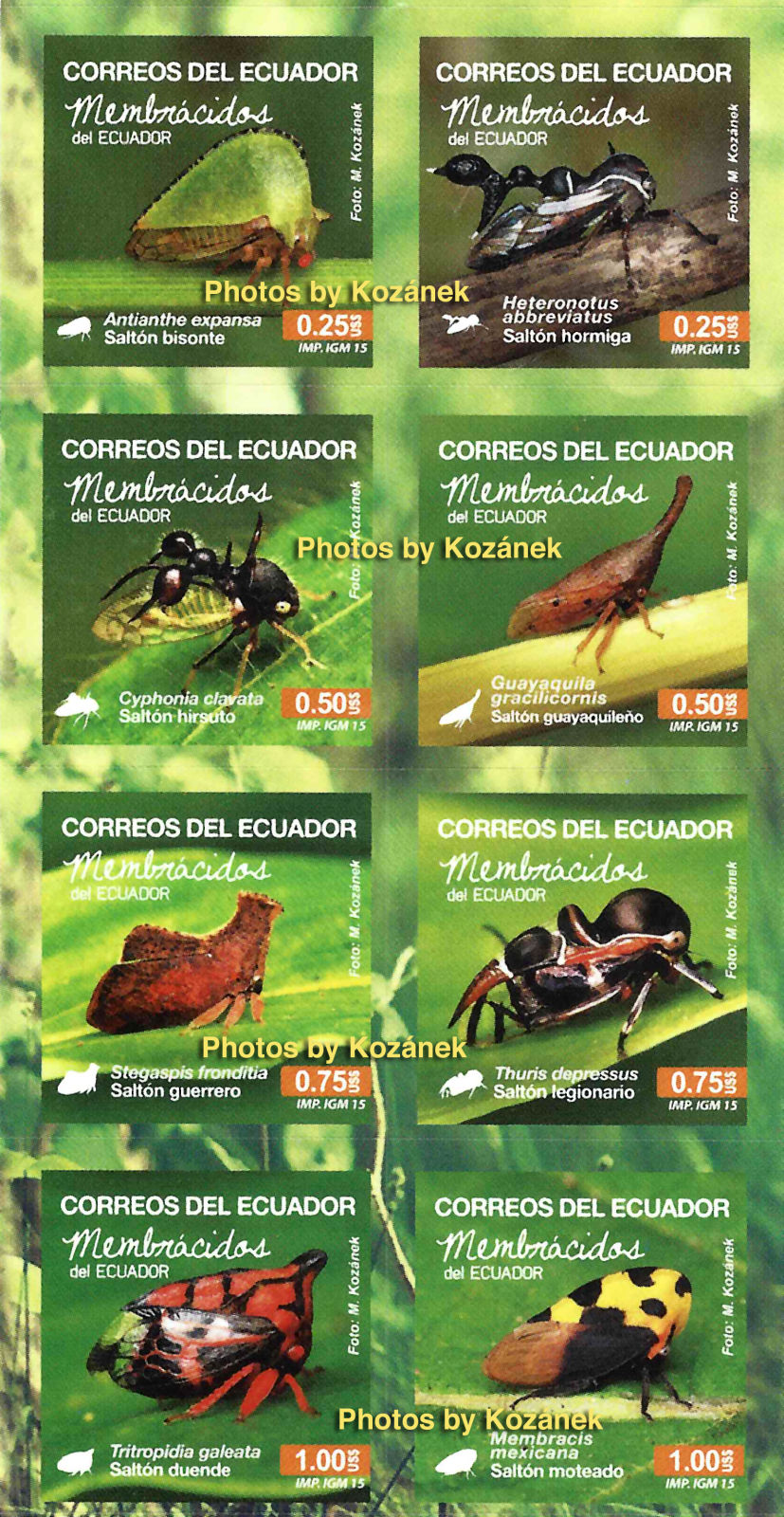

Immatures and Nomenclatural Changes in Thuridini
2016-02-18
McKamey, S. H.; Porter, M. J. 2016a. First immature of the New World treehopper tribe Thuridini (Hemiptera, Membracidae, Smiliinae) with a new synonym, a new combination, and a new country record. ZooKeys 557: 85-91. [available online]
This work adds Ecuador and Venezuela to the distribution of the genus Thuris (previously known from Brazil and Peru) and describes the late instar nymphs of T. binodosus (Goding), new combination [with T. depressus Sakakibara as its junior synonym]. The genus may be subsocial based on the observation of an aggregation consisting of four late instars along with four adults. Both nymphs and adults are illustrated.
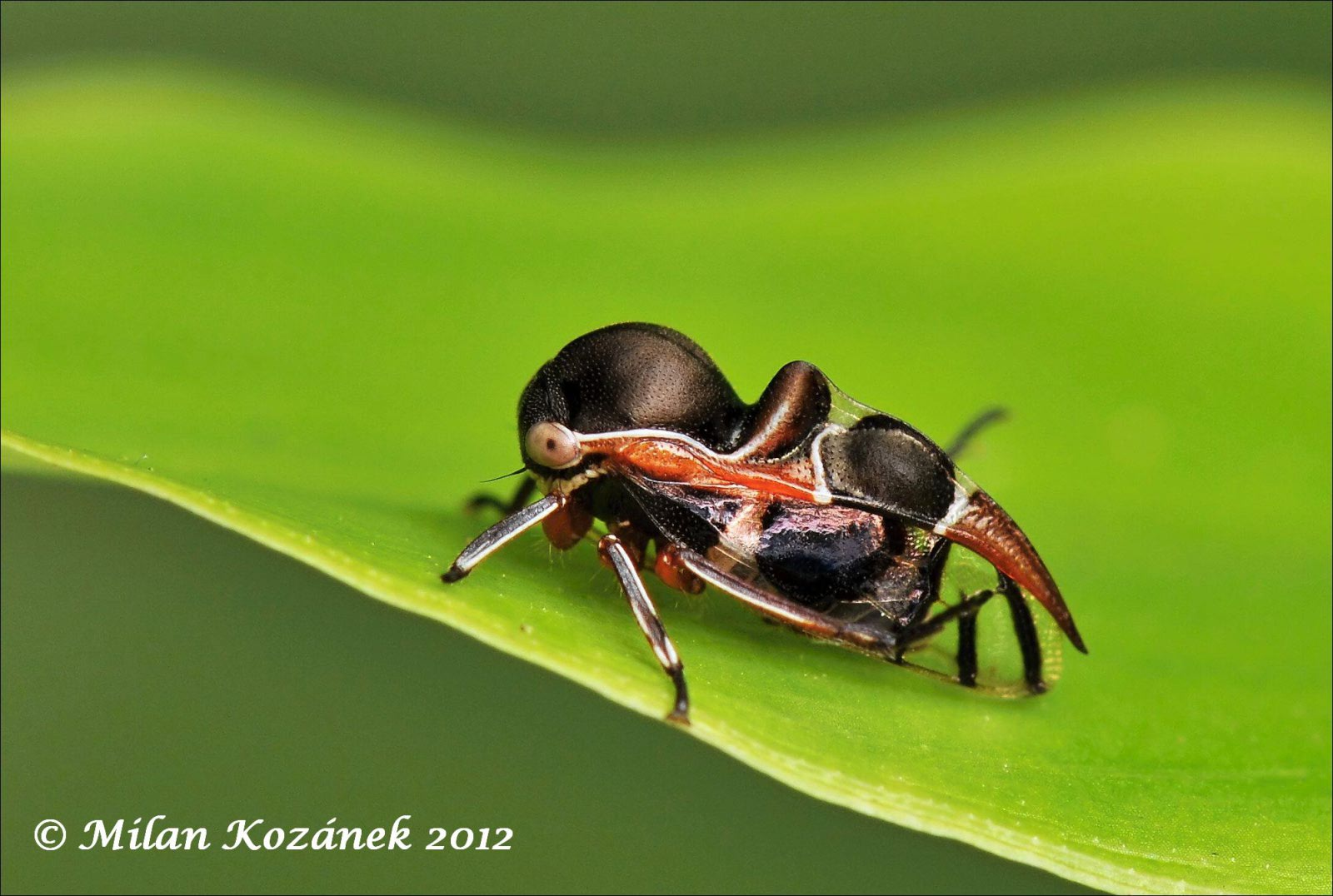 © 2012, by Milan Kozánek. Adult of Thuris binodosus (Goding).
© 2012, by Milan Kozánek. Adult of Thuris binodosus (Goding).
This work adds Ecuador and Venezuela to the distribution of the genus Thuris (previously known from Brazil and Peru) and describes the late instar nymphs of T. binodosus (Goding), new combination [with T. depressus Sakakibara as its junior synonym]. The genus may be subsocial based on the observation of an aggregation consisting of four late instars along with four adults. Both nymphs and adults are illustrated.
 © 2012, by Milan Kozánek. Adult of Thuris binodosus (Goding).
© 2012, by Milan Kozánek. Adult of Thuris binodosus (Goding).
Excluded from Treehopperdom
2016-02-24
At least 18 genera described as treehoppers have since been reassigned to various other insect groups ranging from pygmy grasshoppers to froghoppers, lacebugs, leafhoppers, and various groups of extinct Hemiptera. An example is the Afrotropical pygmy grasshopper genus Xerophyllum Fairmaire (1846a: pl. 4, figs. 10-12 [see below]) that superficially resembles members of the Neotropical treehopper genus Membracis. Thus, some genera listed in early catalogues of the family Membracidae may be missing in more recent listings for the group. Additionally, the genus Eteonus, although not initially described as a treehopper, was inadvertently listed as a membracid by Neave 1939b. The present summary directs users to the current status and placement of these bewildering genera that may seem to have vanished from treehopperdom.
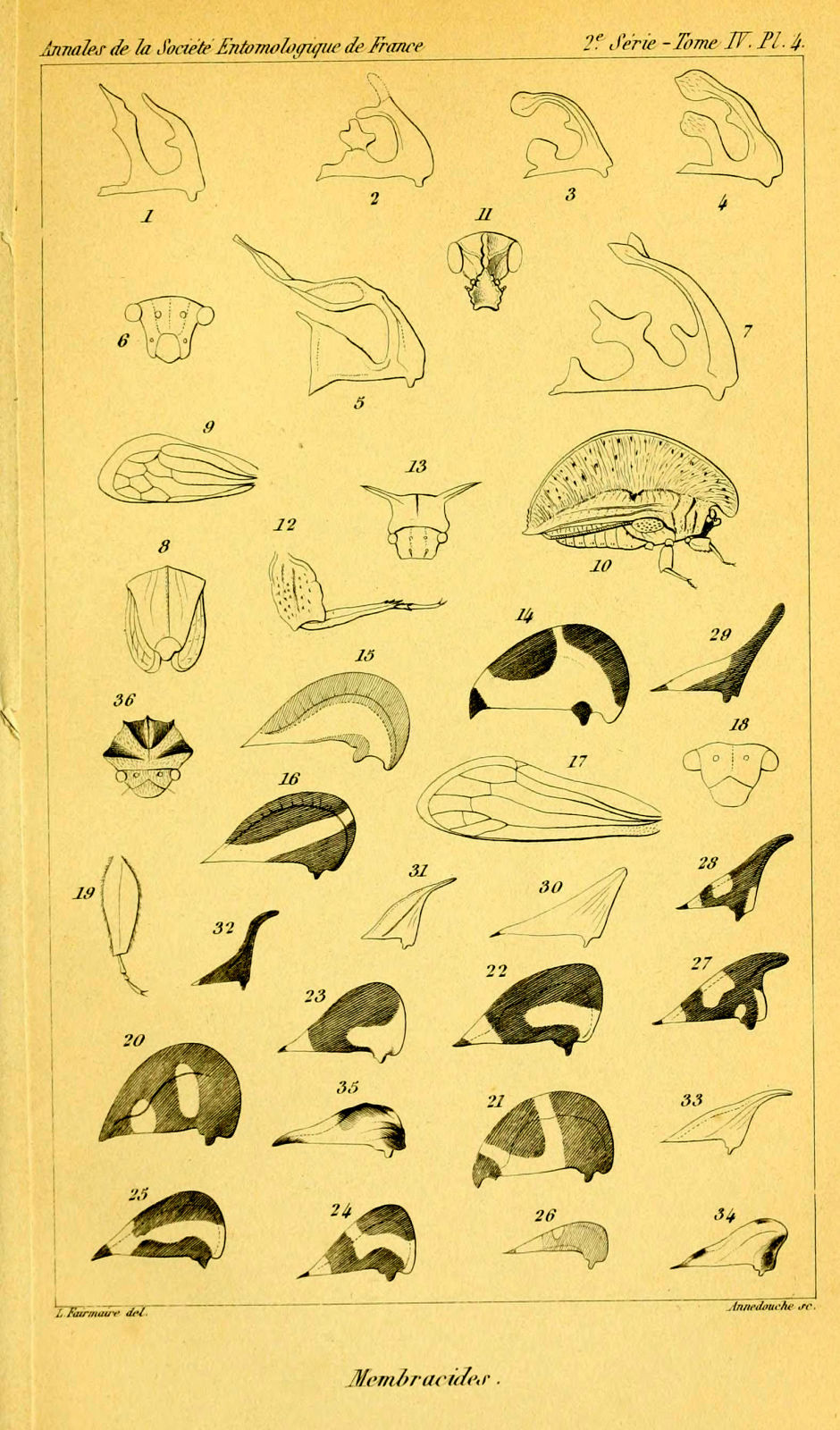
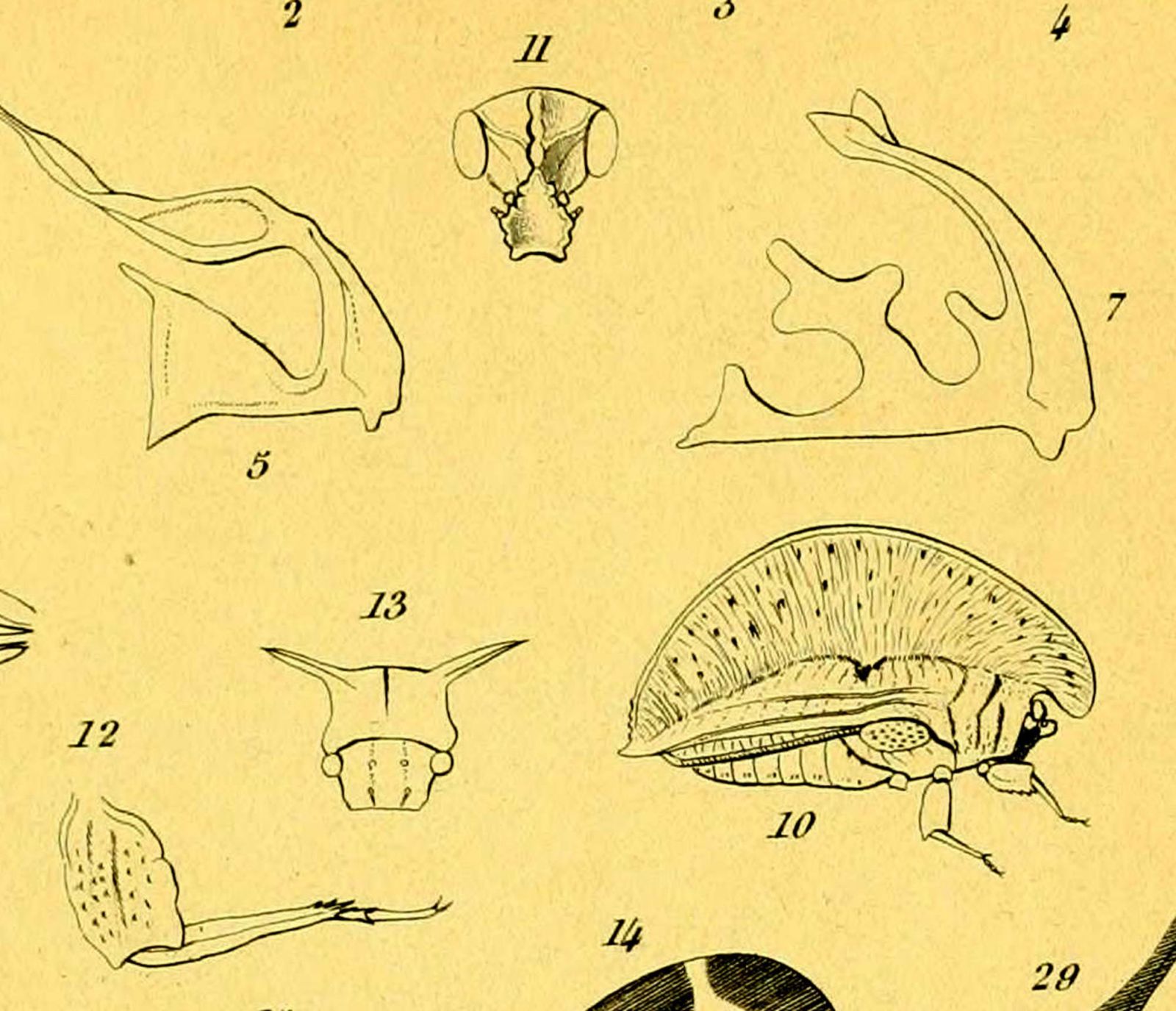
Left, Fairmaire 1846a: pl. 4. Right, details of figs. 10-12, Xerophyllum.
Absoluta Bekker-Migdisova 1962a: 92. Type species: Absoluta distincta Bekker-Migdisova. Status: valid genus (extinct Hemiptera: Coleorrhyncha). [McKamey 1998a].
Bohemania Stål 1855a: 97. Type species: Bohemania sobrina Stål. Status: junior synonym of Coloborrhis (Hemiptera: Cicadellidae: Ulopinae: Ulopini). [McKamey 1998a].
Cercopyllis Scudder 1890b: 470-472. Type species: Cercopyllis justiciae Scudder. Status: valid genus (extinct Insecta, incertae sedis). [McKamey 1998a].
Ceresopsis Bekker-Migdisova 1958a: 66. Type species: Ceresopsis costalis Bekker-Migdisova. Status: valid genus (extinct Hemiptera: Heteroptera). [McKamey 1998a].
Coloborrhis Germar 1836a: 73. Type species: Coloborrhis corticina Germar. Status: valid genus (Hemiptera: Cicadellidae: Ulopinae: Ulopini). [Funkhouser 1927f; Evans 1954a; Oman, Knight, and Nielson 1990a].
Darniopsis Bekker-Migdisova 1958a: 65. Type species: Darniopsis tragopea Bekker-Migdisova. Status: valid genus (extinct Hemiptera: Heteroptera). [McKamey 1998a].
Eteoneus Distant 1903c: 129. Type species: Serenfkia dilaia Distant. Status: valid genus (Hemiptera: Heteroptera: Tingidae (listed as a membracid in error by Neave 1939b)]. [Neave 1939b; Drake and Ruhoff 1960]
Eustollia Goding 1926a: 105. Type species: Cicada jubata Goding, a junior synonym of Type species: Proconia marmorata (Fabricius). Status: junior synonym of Proconia (Hemiptera: Cicadellidae: Cicadellinae: Proconiini). [Funkhouser 1927f; Oman, Knight, and Nielson 1990a].
Evryprosopum Stål 1853b: 267. Type species: Bohemania sobrina Stål. Status: junior synonym of Coloborrhis (Hemiptera: Cicadellidae: Ulopinae: Ulopini: Coloborrhis). [Funkhouser 1927f; Oman, Knight, and Nielson 1990a].
Euryprosopum Stål 1858a: 234. Status: error for Evryprosopum, a junior synonym of Coloborrhis (Hemiptera: Cicadellidae: Ulopinae: Ulopini: Coloborrhis). [Funkhouser 1927f; Oman, Knight, and Nielson 1990a].
Maguviopsis Bekker-Migdisova 1953a: 463. Type species: Maguviopsis kotchnevi Bekker-Migdisova. Status: valid genus (extinct Hemiptera: Cicadomorpha, incertae sedis). [McKamey 1998a].
Membracites Heer 1853b: 92. Type species: Membracites cristatus Heer. Status: valid genus (extinct Pterygota, incertae sedis). [McKamey 1998a].
Minuta Bekker-Migdisova 1958a: 64. Type species: Minuta heteropterata Bekker-Migdisova. Status: valid genus (extinct Hemiptera: Coleorrhyncha). [McKamey 1998a].
Narnia Walker 1870a: 192. Type species: Narnia rastrata Walker 1870a. Status: junior synonym of Machaerota (Hemiptera: Machaerotidae: Machaerotinae: Machaerotini); also a junior homonym of Narnia Stål, 1862 (Heteroptera: Coreidae). [Walker 1870a; Lallemand 1912a; Funkhouser 1927f; Metcalf 1960b; Wallace and Deitz 2004a (incorrectly listed as unplaced within Centrotinae)].
Porcorhinus Goding 1903a: 38. Type species: Porcorhinus mastersi Goding. Status: valid genus (Hemiptera: Cicadellidae: Ledrinae: Ledrini). [Funkhouser 1927f; Oman, Knight, and Nielson 1990a; Jones and Deitz 2009a].
Prolystra Oppenheim 1888a: 228. Type species: Prolystra lithographica Oppenheim. Status: valid genus (extinct Hemiptera: 'Homoptera', incertae sedis). [McKamey 1998a].
Sphongophoriella Bekker-Migdisova 1958a: 63. Type species: Sphongophoriella reticulata Bekker-Migdisova. Status: valid genus (extinct Hemiptera: Heteroptera). [McKamey 1998a].
Tegulicicada Lin 1986a: 62. Type species: Tegulicicada plana Lin. Status: valid genus (extinct Hemiptera: Coleorrhyncha: Karabasiidae). [McKamey 1998a].
Williamsiana Goding 1926a: 103. Type species: Williamsiana ferruginosa Goding, a junior synonym of Zyzzogeton haenschi Breddin. Status: junior synonym of Zyzzogeton (Hemiptera: Cicadellidae: Cicadellinae: Proconiini). [Funkhouser 1927f; Oman, Knight, and Nielson 1990a]
Xerophyllum Fairmaire 1846a: 242. Type species: Xerophyllum servillei Fairmaire. Status: valid genus (Orthoptera: Tetrigidae). [Funkhouser 1927f; Devriese 1999 (Belgian J. Entomol. 1:35)]
Compiled by Lewis L. Deitz, with thanks to Dmitry Dmitriev for pointing out the homonymy of Narnia.


Left, Fairmaire 1846a: pl. 4. Right, details of figs. 10-12, Xerophyllum.
Absoluta Bekker-Migdisova 1962a: 92. Type species: Absoluta distincta Bekker-Migdisova. Status: valid genus (extinct Hemiptera: Coleorrhyncha). [McKamey 1998a].
Bohemania Stål 1855a: 97. Type species: Bohemania sobrina Stål. Status: junior synonym of Coloborrhis (Hemiptera: Cicadellidae: Ulopinae: Ulopini). [McKamey 1998a].
Cercopyllis Scudder 1890b: 470-472. Type species: Cercopyllis justiciae Scudder. Status: valid genus (extinct Insecta, incertae sedis). [McKamey 1998a].
Ceresopsis Bekker-Migdisova 1958a: 66. Type species: Ceresopsis costalis Bekker-Migdisova. Status: valid genus (extinct Hemiptera: Heteroptera). [McKamey 1998a].
Coloborrhis Germar 1836a: 73. Type species: Coloborrhis corticina Germar. Status: valid genus (Hemiptera: Cicadellidae: Ulopinae: Ulopini). [Funkhouser 1927f; Evans 1954a; Oman, Knight, and Nielson 1990a].
Darniopsis Bekker-Migdisova 1958a: 65. Type species: Darniopsis tragopea Bekker-Migdisova. Status: valid genus (extinct Hemiptera: Heteroptera). [McKamey 1998a].
Eteoneus Distant 1903c: 129. Type species: Serenfkia dilaia Distant. Status: valid genus (Hemiptera: Heteroptera: Tingidae (listed as a membracid in error by Neave 1939b)]. [Neave 1939b; Drake and Ruhoff 1960]
Eustollia Goding 1926a: 105. Type species: Cicada jubata Goding, a junior synonym of Type species: Proconia marmorata (Fabricius). Status: junior synonym of Proconia (Hemiptera: Cicadellidae: Cicadellinae: Proconiini). [Funkhouser 1927f; Oman, Knight, and Nielson 1990a].
Evryprosopum Stål 1853b: 267. Type species: Bohemania sobrina Stål. Status: junior synonym of Coloborrhis (Hemiptera: Cicadellidae: Ulopinae: Ulopini: Coloborrhis). [Funkhouser 1927f; Oman, Knight, and Nielson 1990a].
Euryprosopum Stål 1858a: 234. Status: error for Evryprosopum, a junior synonym of Coloborrhis (Hemiptera: Cicadellidae: Ulopinae: Ulopini: Coloborrhis). [Funkhouser 1927f; Oman, Knight, and Nielson 1990a].
Maguviopsis Bekker-Migdisova 1953a: 463. Type species: Maguviopsis kotchnevi Bekker-Migdisova. Status: valid genus (extinct Hemiptera: Cicadomorpha, incertae sedis). [McKamey 1998a].
Membracites Heer 1853b: 92. Type species: Membracites cristatus Heer. Status: valid genus (extinct Pterygota, incertae sedis). [McKamey 1998a].
Minuta Bekker-Migdisova 1958a: 64. Type species: Minuta heteropterata Bekker-Migdisova. Status: valid genus (extinct Hemiptera: Coleorrhyncha). [McKamey 1998a].
Narnia Walker 1870a: 192. Type species: Narnia rastrata Walker 1870a. Status: junior synonym of Machaerota (Hemiptera: Machaerotidae: Machaerotinae: Machaerotini); also a junior homonym of Narnia Stål, 1862 (Heteroptera: Coreidae). [Walker 1870a; Lallemand 1912a; Funkhouser 1927f; Metcalf 1960b; Wallace and Deitz 2004a (incorrectly listed as unplaced within Centrotinae)].
Porcorhinus Goding 1903a: 38. Type species: Porcorhinus mastersi Goding. Status: valid genus (Hemiptera: Cicadellidae: Ledrinae: Ledrini). [Funkhouser 1927f; Oman, Knight, and Nielson 1990a; Jones and Deitz 2009a].
Prolystra Oppenheim 1888a: 228. Type species: Prolystra lithographica Oppenheim. Status: valid genus (extinct Hemiptera: 'Homoptera', incertae sedis). [McKamey 1998a].
Sphongophoriella Bekker-Migdisova 1958a: 63. Type species: Sphongophoriella reticulata Bekker-Migdisova. Status: valid genus (extinct Hemiptera: Heteroptera). [McKamey 1998a].
Tegulicicada Lin 1986a: 62. Type species: Tegulicicada plana Lin. Status: valid genus (extinct Hemiptera: Coleorrhyncha: Karabasiidae). [McKamey 1998a].
Williamsiana Goding 1926a: 103. Type species: Williamsiana ferruginosa Goding, a junior synonym of Zyzzogeton haenschi Breddin. Status: junior synonym of Zyzzogeton (Hemiptera: Cicadellidae: Cicadellinae: Proconiini). [Funkhouser 1927f; Oman, Knight, and Nielson 1990a]
Xerophyllum Fairmaire 1846a: 242. Type species: Xerophyllum servillei Fairmaire. Status: valid genus (Orthoptera: Tetrigidae). [Funkhouser 1927f; Devriese 1999 (Belgian J. Entomol. 1:35)]
Compiled by Lewis L. Deitz, with thanks to Dmitry Dmitriev for pointing out the homonymy of Narnia.
More Ecuadorian Treehopper Stamps
2016-03-03
Paul Freytag alerted us to another issue of stamps in the series "Membrácidos del Ecuador." This issue includes images of members of the genera: Adippe, Alchisme, Cladonota, Cyphonia, and Membracis, all taken by nature photographer Milan Kozánek.

For other treehoppers on stamps, see our archive of past news dated 2014-02-25 and 2016-02-16. We thank Matt Bertone for assistance in preparing the figure above.

For other treehoppers on stamps, see our archive of past news dated 2014-02-25 and 2016-02-16. We thank Matt Bertone for assistance in preparing the figure above.
Update on Treehopper Types at North Carolina State University
2016-03-07
Since our posting of 2014-02-03 titled "Membracid Types at North Carolina State University," links to NCSU's Insect Museum have been changed and the collection now holds type material of 49 membracid species. For primary types, the listing includes the original binomen, author(s), and literature citation, along with information quoted from the data labels. For some species, images of the type and its labels are available online, as shown below for the holotype of Aconophora elongata (photos Copyright © 2013, by Robert L. Blinn).


Aconophora elongata Dietrich In Dietrich & Deitz 1991. N. C. Agric. Res. Ser. Tech. Bull. 293:112.
Holotype: "PERU/Chancha/mayo; 21-vii-60/J. Salazar; on/Leguminosae; DIETRICH/RESEARCH/4-84-373c; HOLOTYPE/Aconophora/elongata/Dietrich"
Paratypes, 8: Peru


Aconophora elongata Dietrich In Dietrich & Deitz 1991. N. C. Agric. Res. Ser. Tech. Bull. 293:112.
Holotype: "PERU/Chancha/mayo; 21-vii-60/J. Salazar; on/Leguminosae; DIETRICH/RESEARCH/4-84-373c; HOLOTYPE/Aconophora/elongata/Dietrich"
Paratypes, 8: Peru
Gonoconophora Awareness Month
2016-04-01
This month we focus on the little known Brazilian genus Gonoconophora Fonseca 1950, which is of uncertain position within the subfamily Darninae (Deitz 1975). The genus is known only from the holotype of its type species – G. funkhouseri Fonseca – which is apparently lost (Evangelista, Santos, and Lamas, 2014a, Zootaxa 3895(1): 1–30). Consequently, everything we known of Gonoconophora is based on its original description by José Pinto Fonseca, 1950a, "Contribuição para o conhecimento dos membracídeos neotrópicos (V)" [Contribution to the knowledge of the Neotropical Membracidae (V)] (Arquivos do Instituto Biológico, São Paulo, 19: 111-116, Plate 8). Except as noted otherwise, the contents of the Arquivos do Instituto Biológico, São Paulo, are licensed under Creative Commons Attribution-NonCommercial 4.0 International (CC BY-NC 4.0). We here reproduce Fonseca’s 1950 original illustrations along with a generic diagnosis translated and modified from Fonseca’s original. Our hope is that increased awareness of Gonoconophora might lead to the discovery of additional material, either in collections or by stimulating efforts to find this treehopper in the wild.
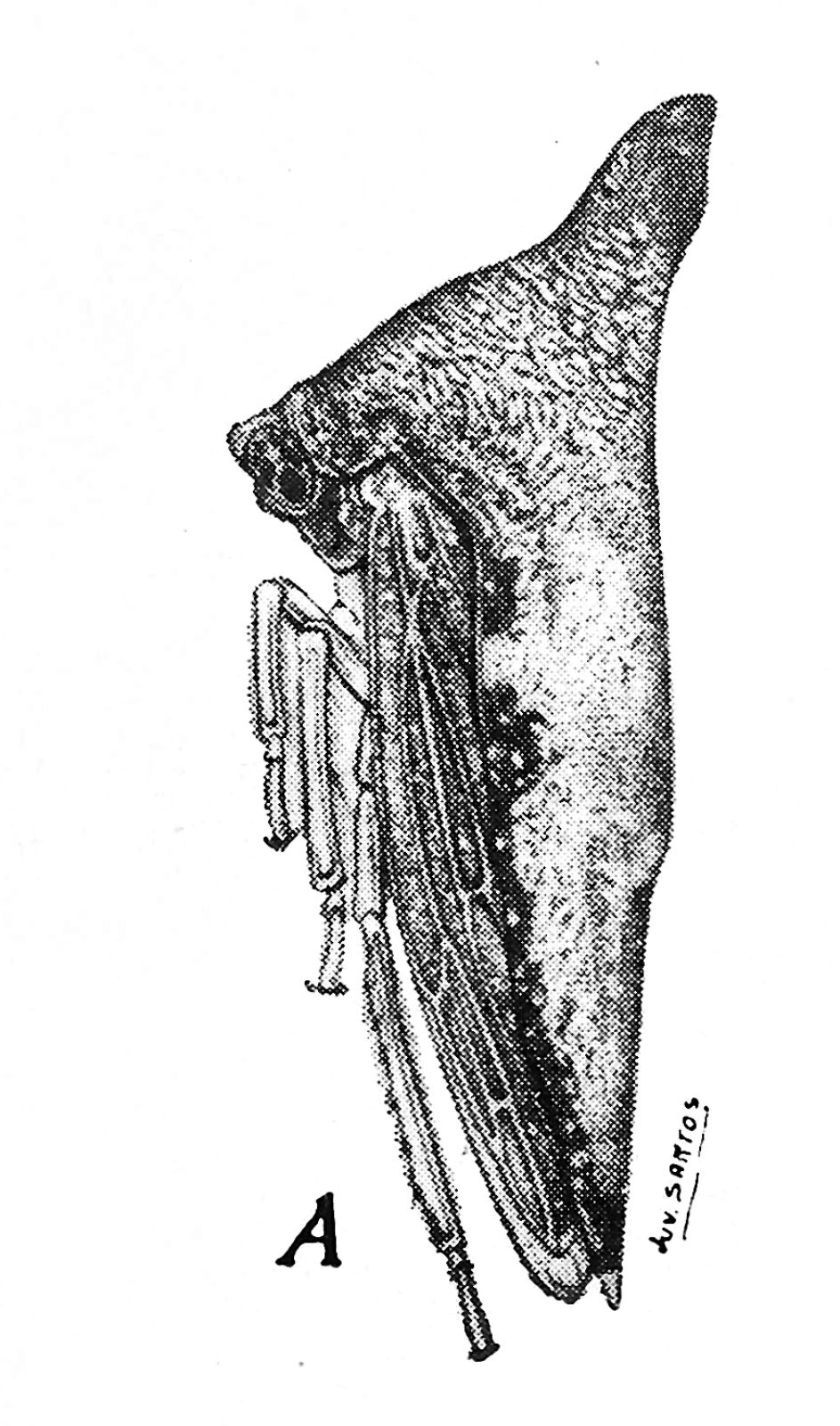
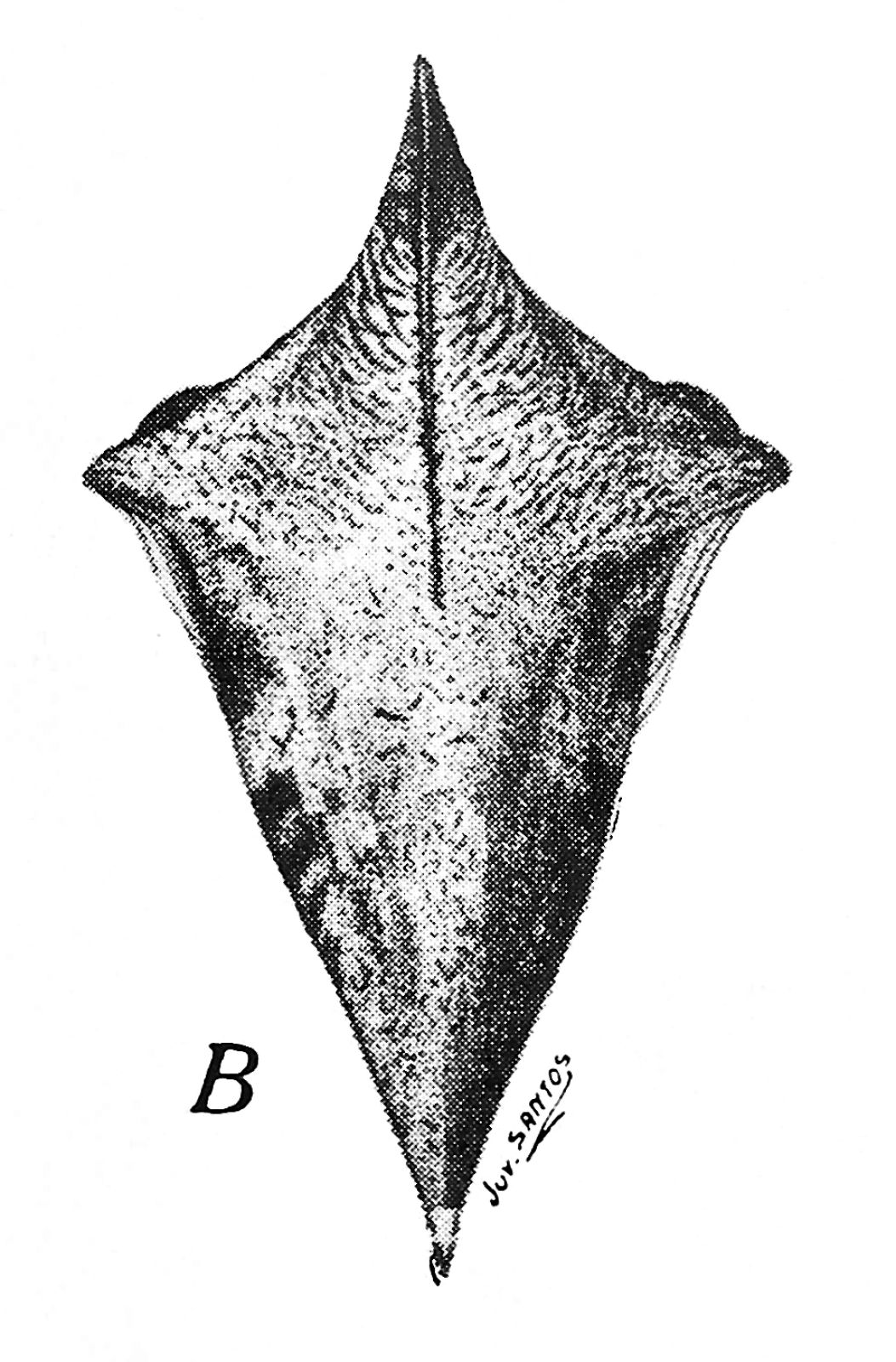
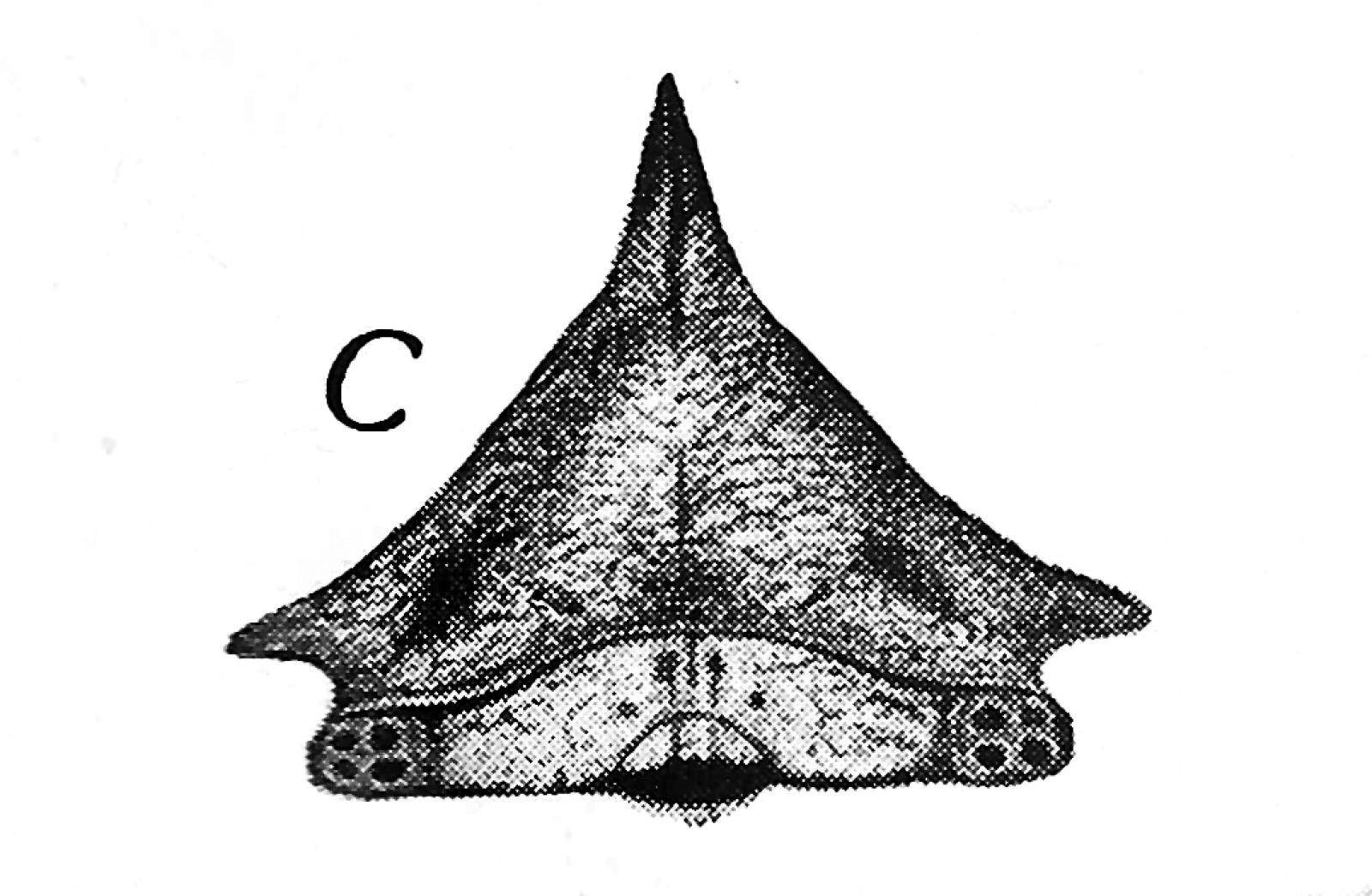
Gonoconophora funkhouseri Fonseca, female holotype. A, lateral aspect; B, dorsal aspect, C, anterior aspect. ©1950, by Arquivos do Instituto Biológico, São Paulo.
Diagnosis: Head transverse, more than four times broader than high. Forewing with five apical cells, in repose, half its width concealed by pronotum. Hind wing hyaline with four apical cells. Pronotum: humeral angles prominent, nearly acute apically; frontal horn directed anterodorsally, laterally compressed, without lateral keels; posterior process well developed, strongly spine-shaped apically, slightly surpassing apex of forewings in length. Body glabrous. Measurements (female holotype): overall length of pronotum 13mm (apex of anterior process to apex of anterior process); length from base of head to wing tip 8mm; between humeral angles 2mm.
Holotype (female): Onda Verde, State of São Paulo, Brazil, 20 January 1946, Frederico Lane (originally deposited in the Collection of the Department of Zoology, State of São Paulo, Brazil).
Prepared by Lewis L. Deitz and Olivia Evangelista.



Gonoconophora funkhouseri Fonseca, female holotype. A, lateral aspect; B, dorsal aspect, C, anterior aspect. ©1950, by Arquivos do Instituto Biológico, São Paulo.
Diagnosis: Head transverse, more than four times broader than high. Forewing with five apical cells, in repose, half its width concealed by pronotum. Hind wing hyaline with four apical cells. Pronotum: humeral angles prominent, nearly acute apically; frontal horn directed anterodorsally, laterally compressed, without lateral keels; posterior process well developed, strongly spine-shaped apically, slightly surpassing apex of forewings in length. Body glabrous. Measurements (female holotype): overall length of pronotum 13mm (apex of anterior process to apex of anterior process); length from base of head to wing tip 8mm; between humeral angles 2mm.
Holotype (female): Onda Verde, State of São Paulo, Brazil, 20 January 1946, Frederico Lane (originally deposited in the Collection of the Department of Zoology, State of São Paulo, Brazil).
Prepared by Lewis L. Deitz and Olivia Evangelista.
24th Annual Treehopper Aggregation: 3-5 June 2016, Little Orleans, Maryland
2016-04-04
Join the 2016 Treehopper Gathering, set for 3 to 5 June (arrive Friday, depart Sunday), at the Little Orleans Campground, Little Orleans, Maryland. Nicknamed “treehopper camp” by some, this casual event provides a pleasant opportunity to meet and collect with others passionate about treehoppers and related insects in scenic western Maryland. Participants are expected to provide their own tents, food, and camping gear, and to share in the cost of the group campground registration and the group meal provided on Saturday evening.
To reserve a campsite with our group or to obtain further information, contact Charles Bartlett. Advanced registration with Charles is essential to assure that you have a campsite.
Bring your collecting vials, insect nets, unidentified specimens, cameras, and bathing suits!
To reserve a campsite with our group or to obtain further information, contact Charles Bartlett. Advanced registration with Charles is essential to assure that you have a campsite.
Bring your collecting vials, insect nets, unidentified specimens, cameras, and bathing suits!
New Tex-Mex Treehopper Celebrates M. S. Wallace and Selena
2016-04-26
Music lovers and entomologists are abuzz with news of Selenacentrus wallacei, new treehopper genus and species, recently described from Texas and northern Mexico by Brendan O. Morris and Christopher H. Dietrich (2016, "Hidden in plain sight: a remarkable new genus of Nearctic treehoppers (Hemiptera: Membracidae)," Annals of the Entomological Society of America [advance access published 29 March 2016; DOI: http://dx.doi.org/10.1093/aesa/saw008]. The new genus name honors Selena Quintanilla, beloved Queen of Tenjano [or Tex-Mex] music. The species name honors esteemed treehopper specialist Matthew S. Wallace. Additional work is needed to clarify the phylogenetic position of this new membracid relative to other taxa within the subfamily Centrotinae. The treehopper feeds on a few members of the plant family Fabaceae (Prosopis, Pithecellobium, and Acacia).
1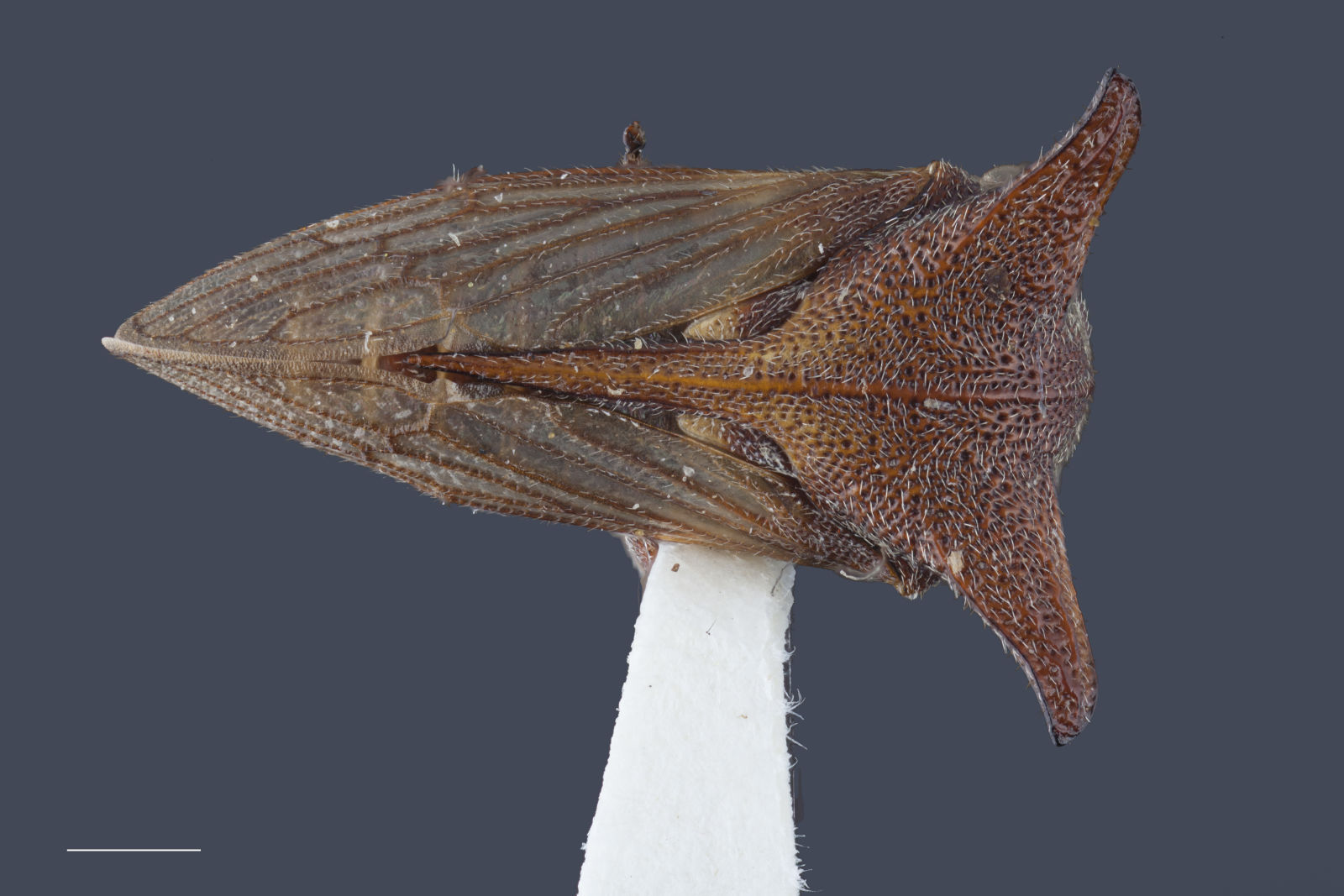 2
2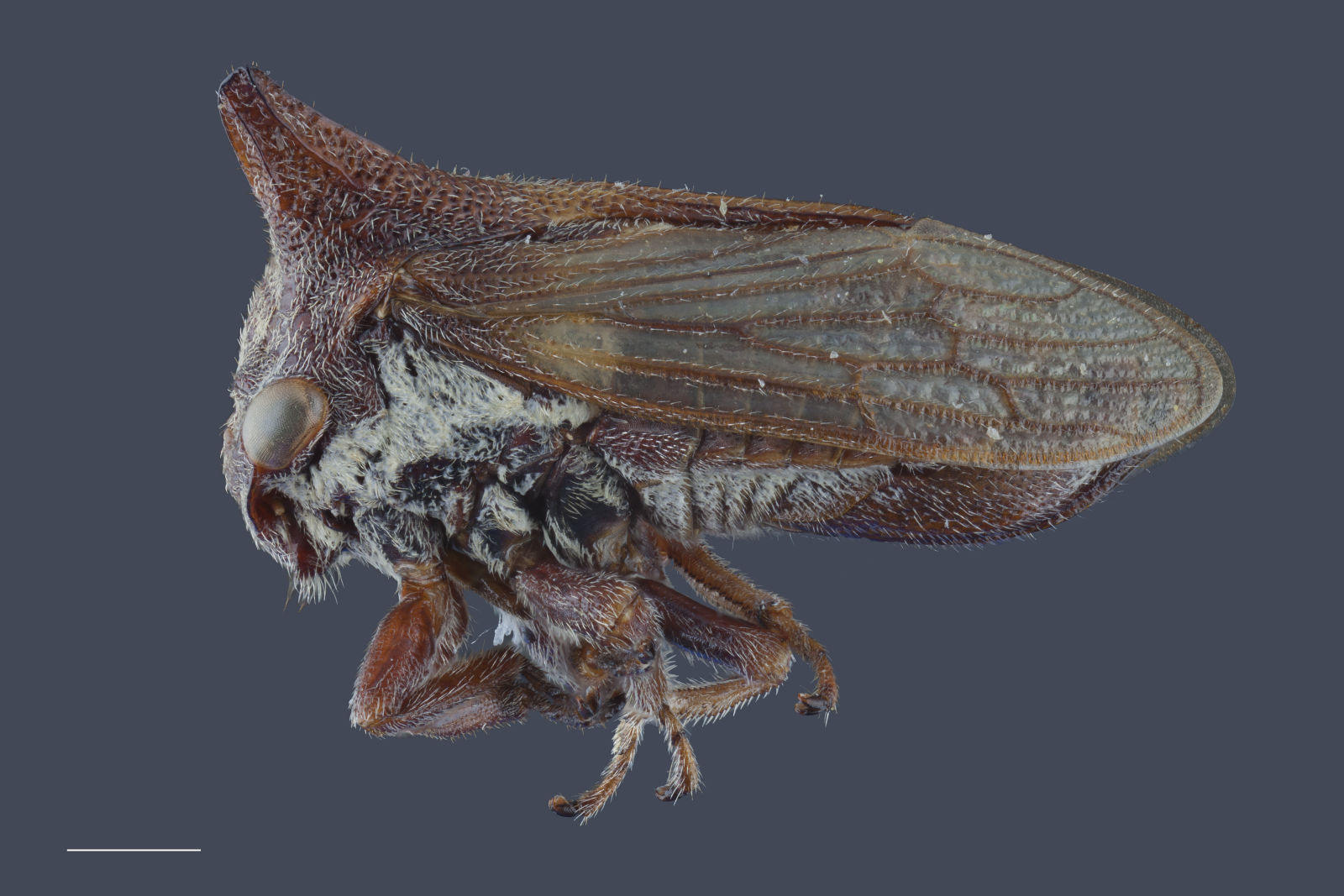 3
3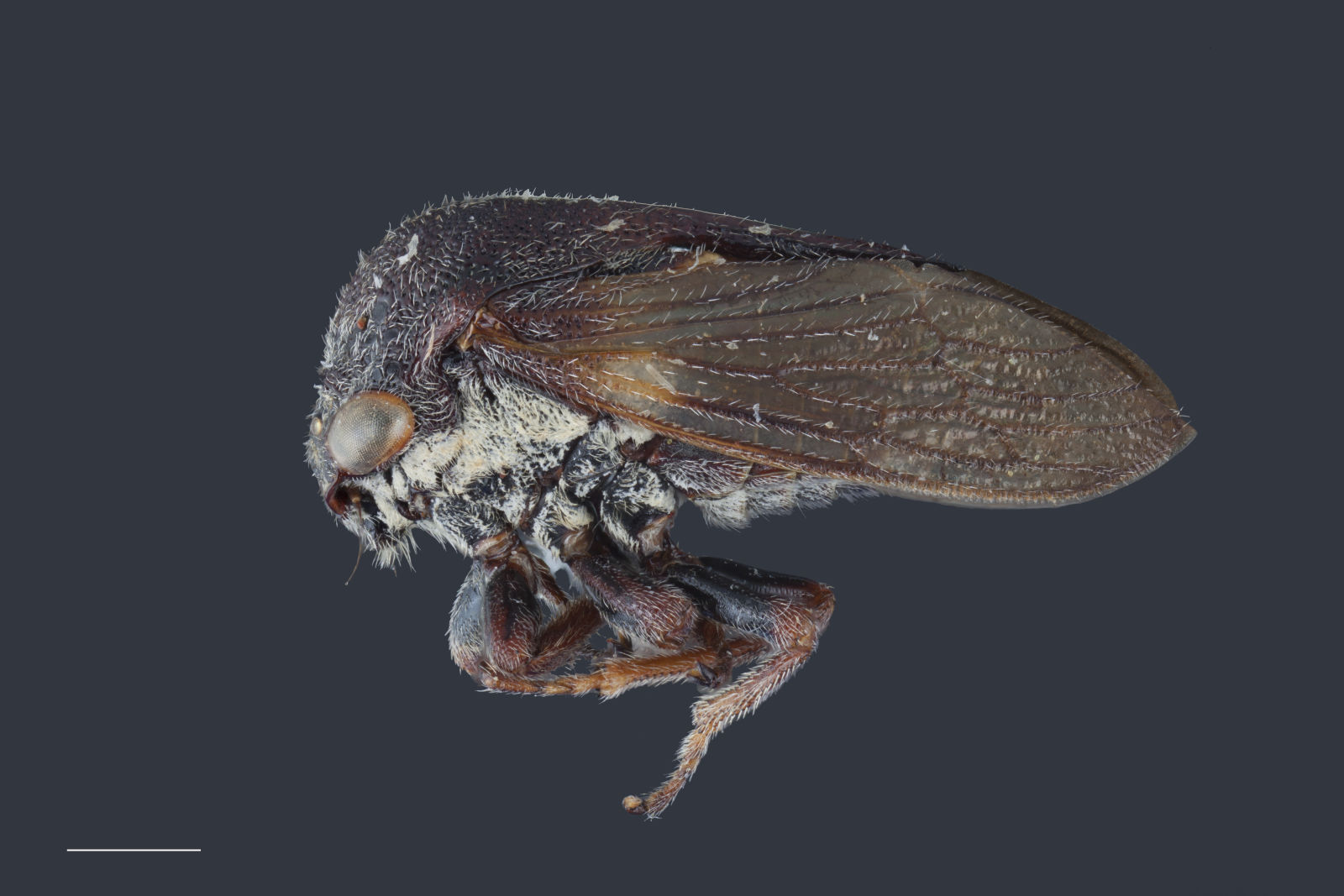 4
4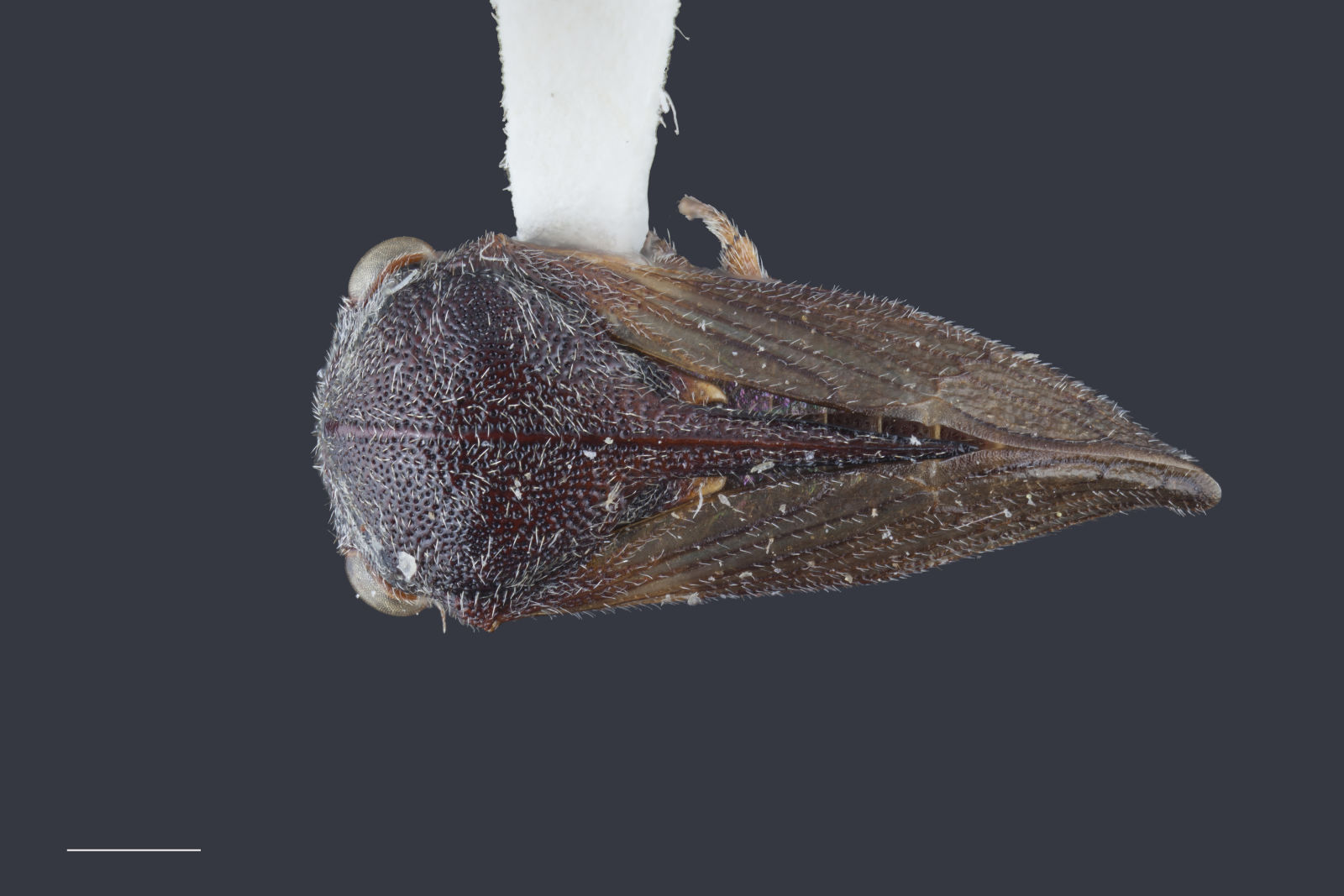
© 2016, by Brendan O. Morris. Selenacentrus wallacei Morris and Dietrich. 1-2, female; 3-4 male.
Read more at EntomologyToday, Science Daily, and Phy.org.
1
 2
2 3
3 4
4
© 2016, by Brendan O. Morris. Selenacentrus wallacei Morris and Dietrich. 1-2, female; 3-4 male.
Read more at EntomologyToday, Science Daily, and Phy.org.
Celebrating 1 May 1885: Z. P. Metcalf’s Birth
2016-05-03
Below we feature a clever plaque presented to Dr. Zeno Payne Metcalf on his 65th birthday by the “Membracids” (friends, faculty, students, and family at NC State University). Among the distinguished signatories is Virginia Wade, who assisted in compiling Metcalf’s invaluable catalogue of the Auchenorrhyncha. Although Metcalf died on 5 January 1956, his legend lives on as documented on the NCSU Libraries’ Website "DrMetcalf: a Resource on Cicadas, Leafhoppers, Planthoppers, Spittlebugs, and Treehoppers." We thank Micou M. Browne (Metcalf’s grandson) for sharing this long forgotten historical plaque with all who treasure treehoppers and Metcalf’s remarkable contributions.
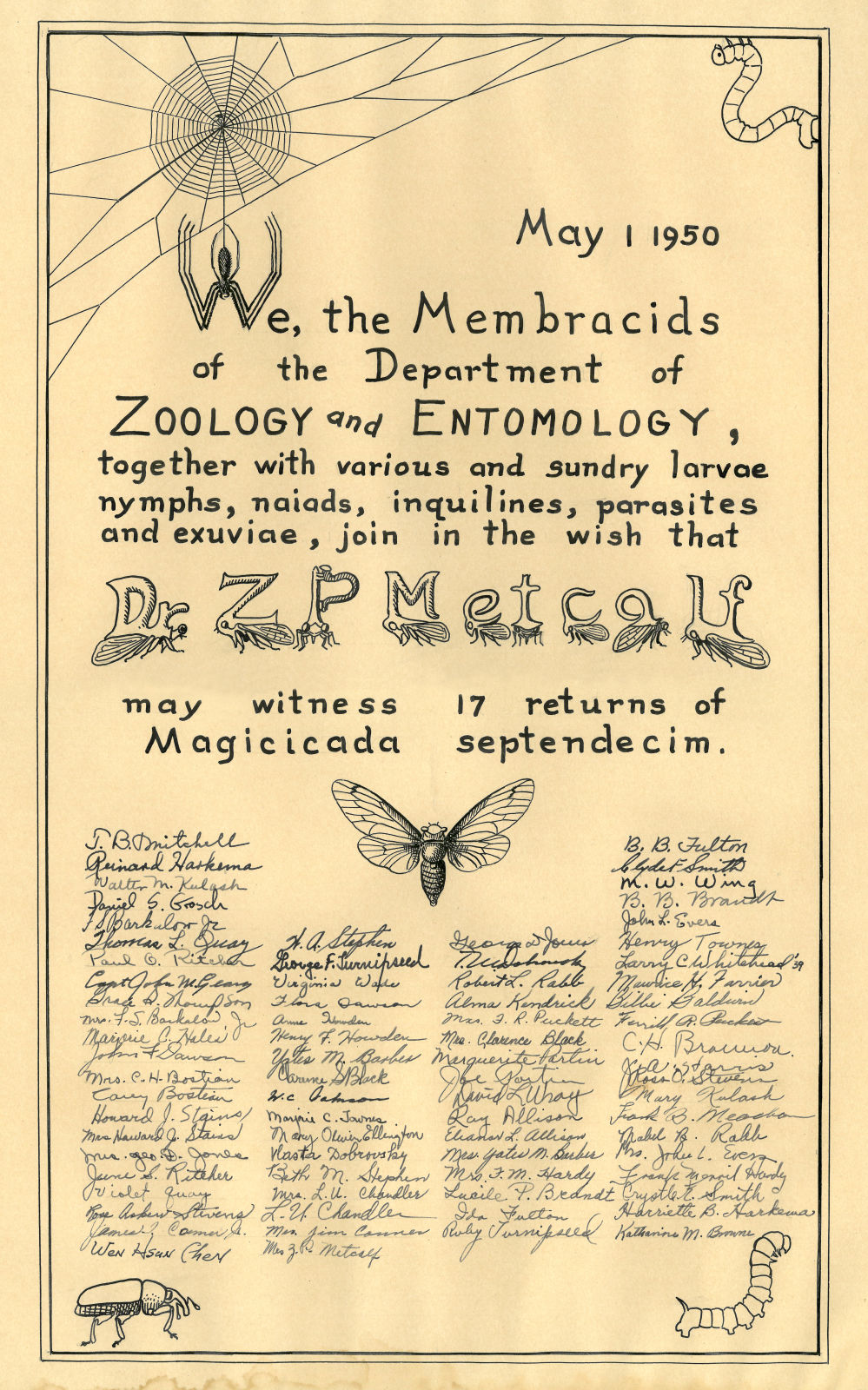 © Copyright 1950, by the Membracids. Facsimile by Matthew A. Bertone.
© Copyright 1950, by the Membracids. Facsimile by Matthew A. Bertone.
 © Copyright 1950, by the Membracids. Facsimile by Matthew A. Bertone.
© Copyright 1950, by the Membracids. Facsimile by Matthew A. Bertone.
Funkhouser’s 1951 “Homoptera Fam. Membracidae.” Genera Insectorum, Fascicle 208
2016-05-17
With great pleasure, we provide a Biodiversity Heritage Library link to “Funkhouser 1951a,” William D. Funkhouser’s final and most comprehensive contribution (of many) on treehoppers. Although the classification and nomenclature are out-of-date for many taxa, this remains a valuable reference. Funkhouser’s Plates 1-27 precede fascicle 209 on Diptera by E. Séguy in this online copy.
Short Film Featuring Animated Treehoppers
2016-06-10
Treehopper fans, enjoy this wonderful animation entitled Invisible Nature: Code of the Treehopper, produced for the Cal Academy! It stars Enchenopa and Umbonia, as personified by Rafa Rodriguez and Carol Miles, with some background and recordings provided by Rex Cocroft.
Notes and Photos from the 24th Annual Treehopper Gathering
2016-06-20
Treehopper enthusiasts representing 10 of the 50 States, as well as China, Colombia, and Russia, attended the 24th Annual Treehopper Gathering, 5 to 7 June 2016, Little Orleans, Maryland. Attendees (photo 1, left to right) included: Dmitry Dmitriev, Ashley Kennedy, Charles Bartlett, Andrew Short, Nate Nazdrowicz, Anthony Gonzon, Yang Wang, Anthony Deczynski, Laura Catalina González-Mozo, Matt Wallace, Lawrence Barringer, Dawn Flynn, Vlad Dmitriev, Lewis Deitz, Jason Owens, Mark Rothschild, Kelley Tilmon, Karen McGowan, Kerry McGowan, Stuart McKamey, Hava Amsbury, Dennis Kopp, Eli Wyman, and, in photo 2, Felipe Gonzalez-Mozo (he napped during the group photos).
1
2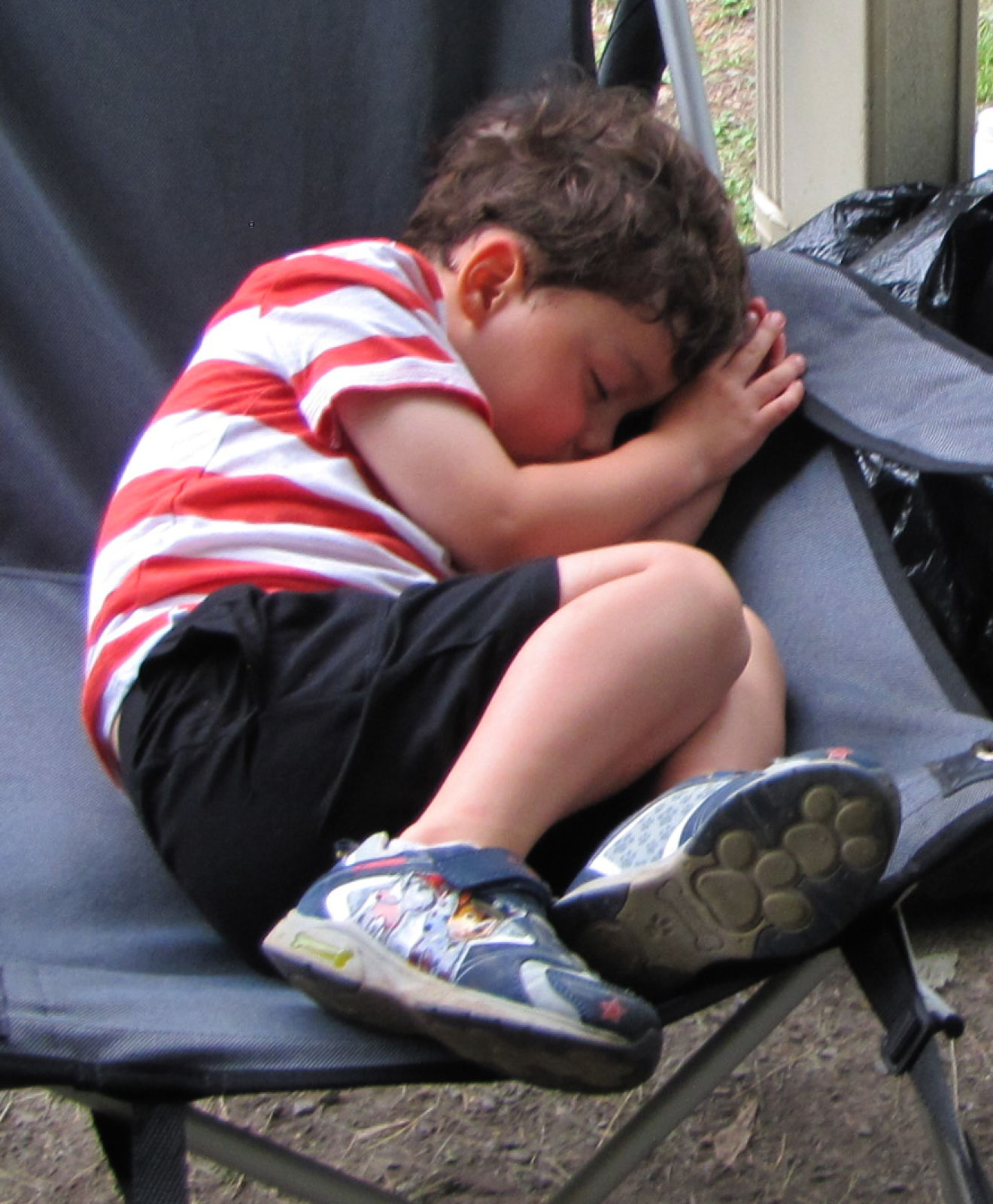 Photos 1-2 © Copyright 2016, by Dmitry Dmitriev.
Photos 1-2 © Copyright 2016, by Dmitry Dmitriev.
Aside from one torrential downpour, the weather was fine. As usual, base camp activities centered around the picnic shelter and ranged from treehopper mounting, sorting, and identification (photo 3 [left to right Laura G.-M., Stu McK., and Yang W.]) to lending and exchanging specimens, trading literature, socializing, playing Frisbee, showing off prized treehopper t-shirts (photo 4, shirt presented to Dennis K. from friends at North Dakota State University, 1990), and enjoying the Saturday evening feast of meats and veggies (photos 5-7: 5, Charles B. grilling steak; 6, Ashley K. grilling veggies; 7, Anthony G. smiling over his fried turkey). An exciting development was that Dmitry Dmitriev (Illinois Natural History Survey, Champaign) will be collaborating with our existing Treehoppers Teams to assist in developing the Treehoppers Database in TaxonWorks. Thus, Dmitry is now officially part of our Taxa Content Team, Nomenclatural Database Team, and References Database Team.
3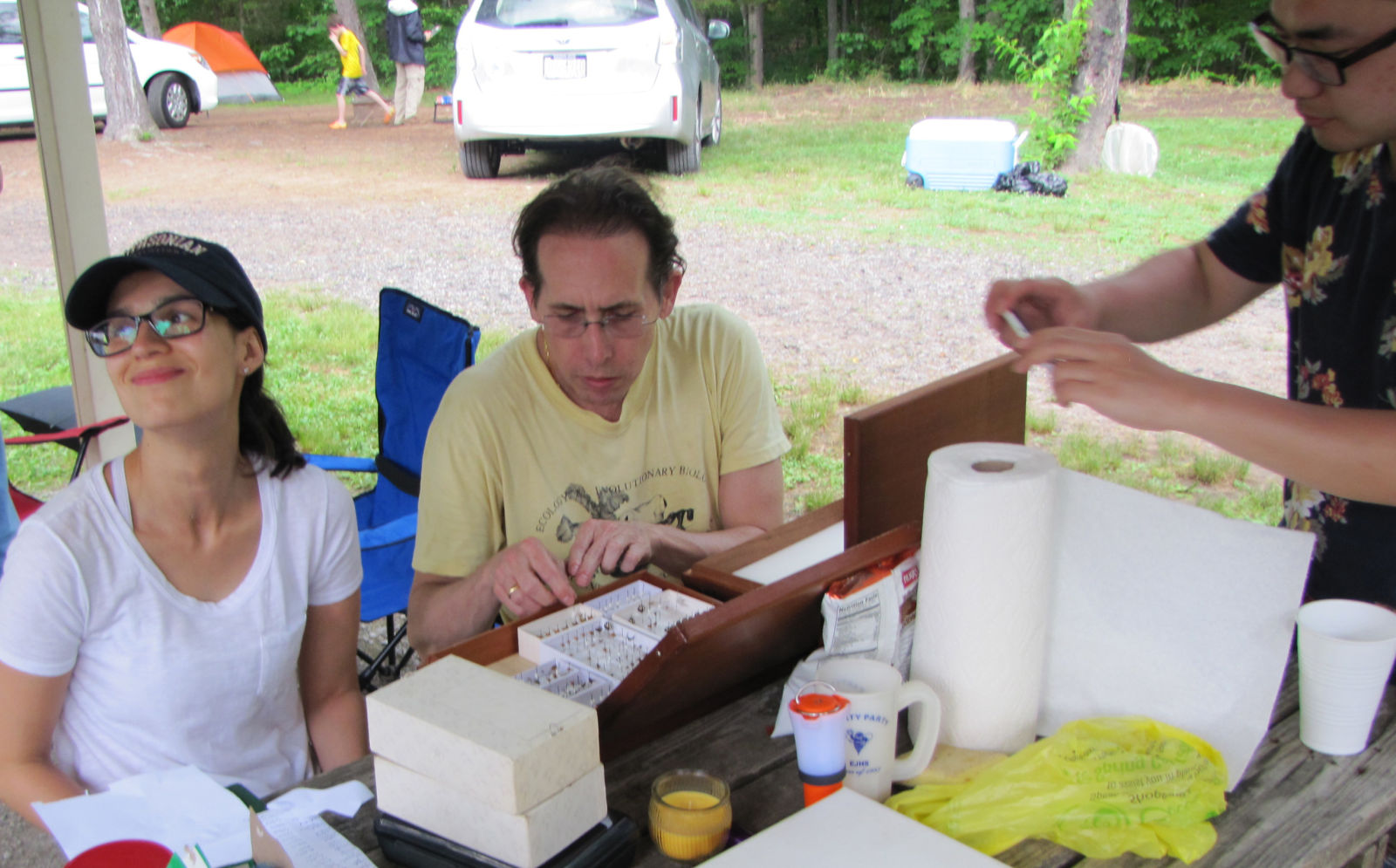 4
4 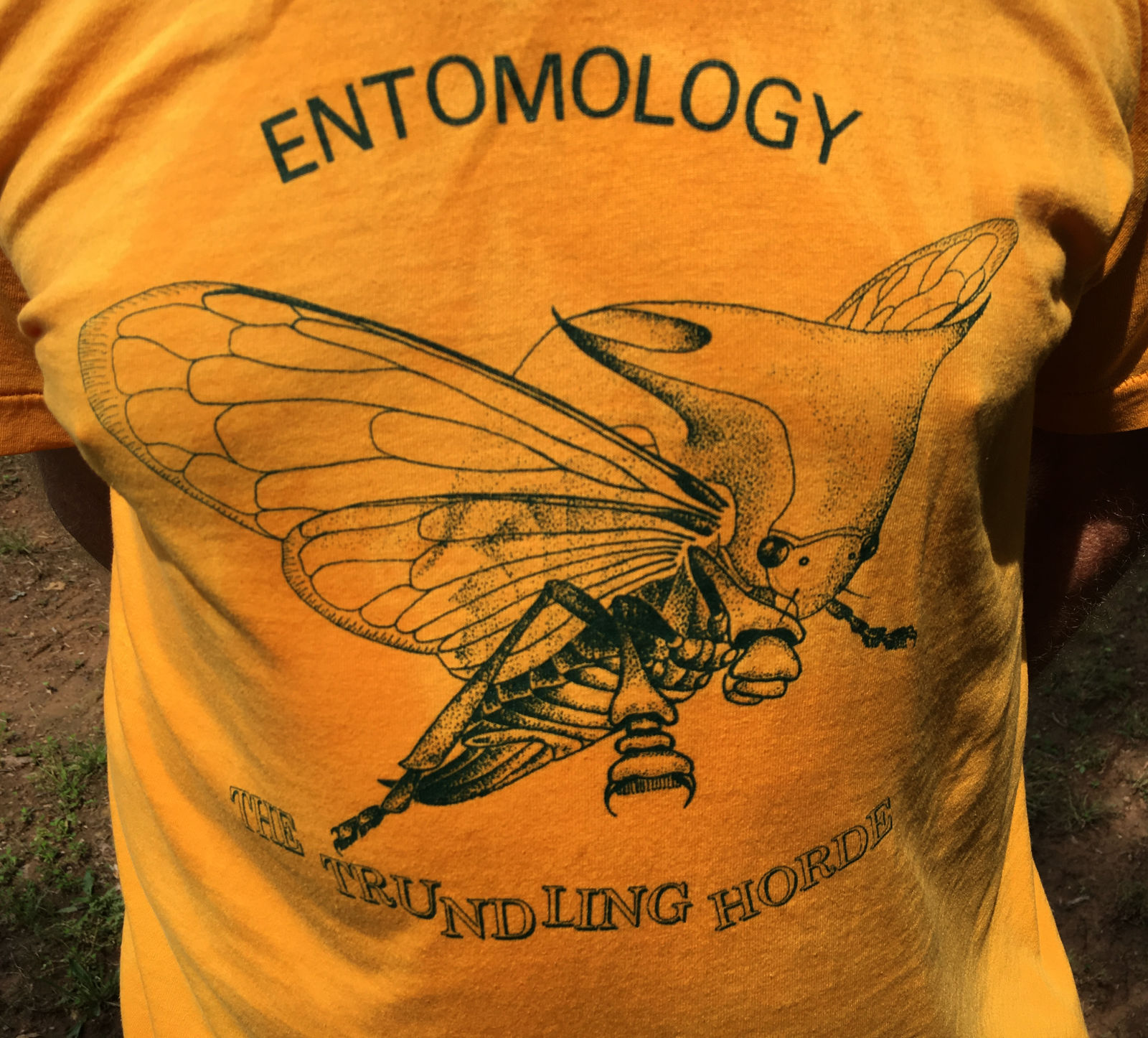 5
5 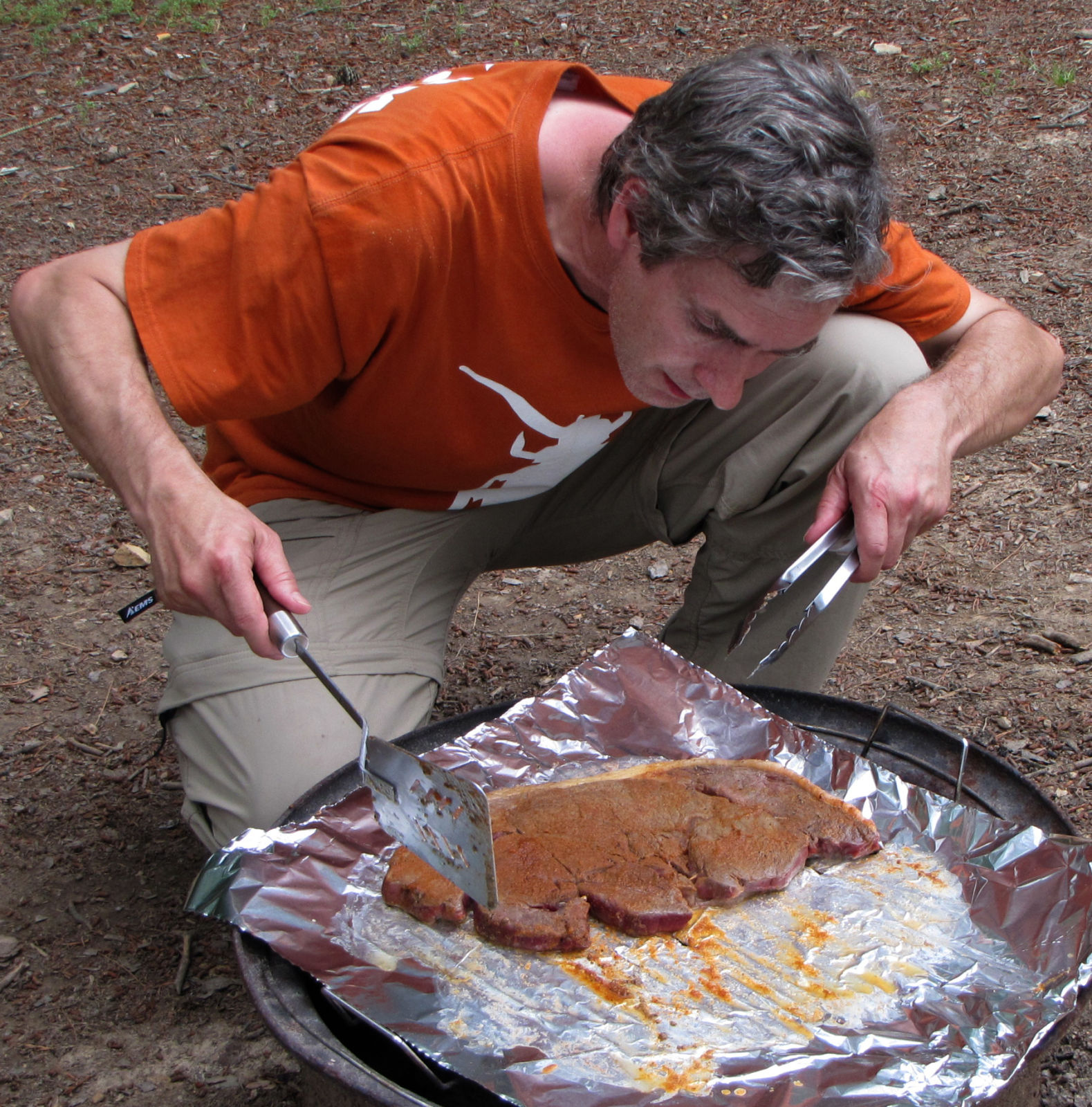
6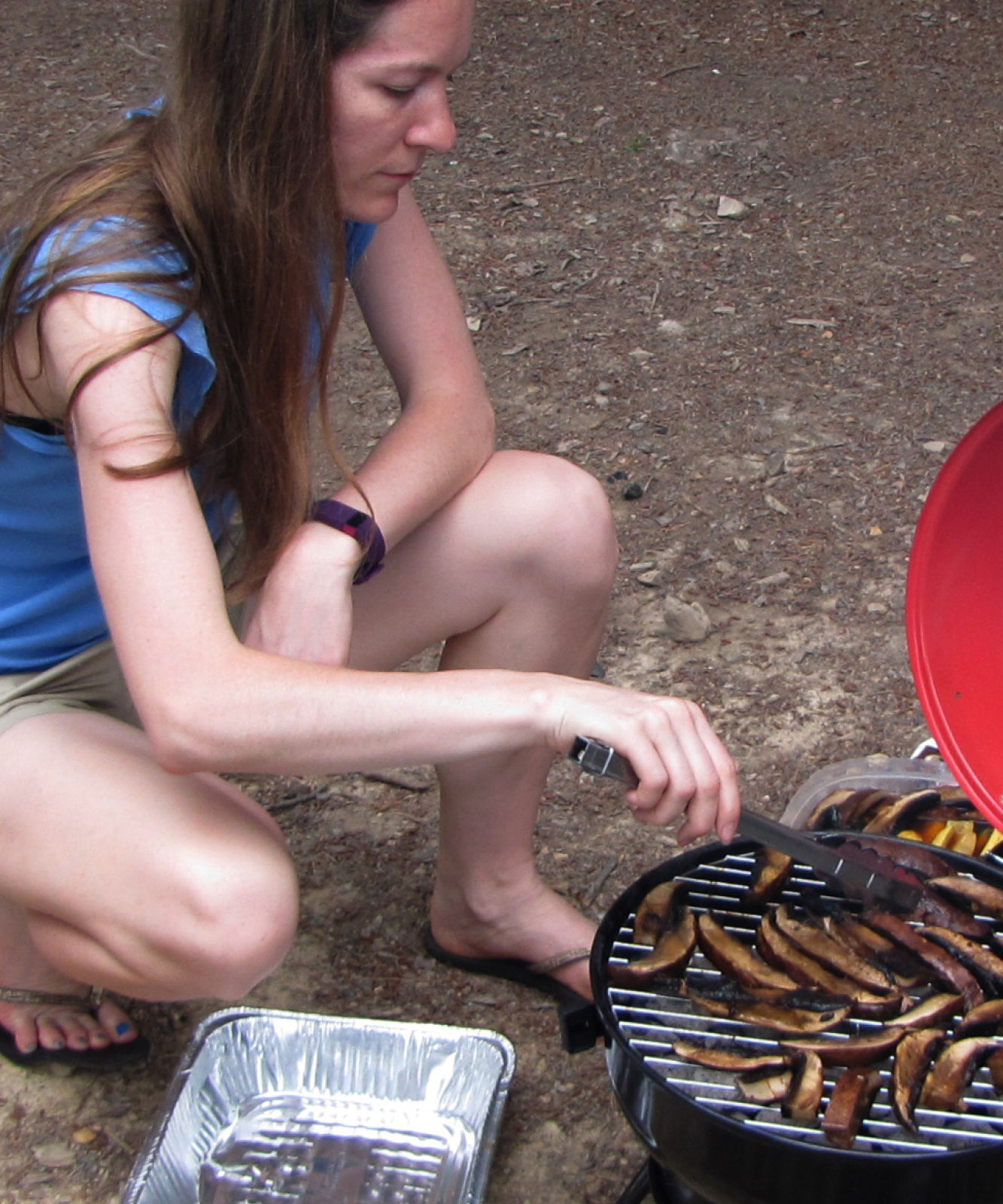 7
7 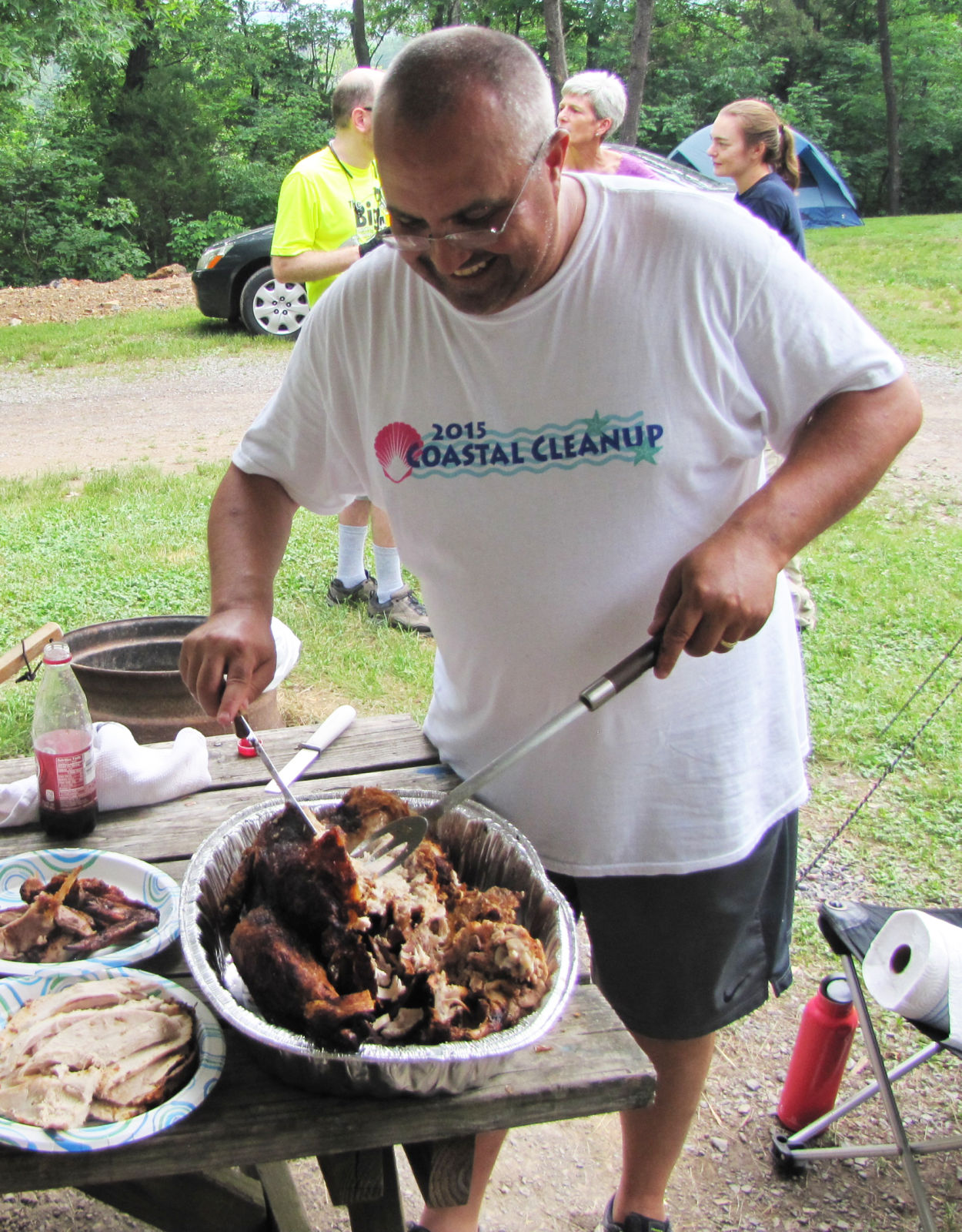
Photos © Copyright 2016: 3, 5-7 by Dmitry Dmitriev, 4, by Lewis Deitz.
Many participants also had fun collecting (photos 8-11: 8, Dmitry D.; 9, Matt W. with beating sheet and Vlad D. with sweep net; 10, Mark R., Kerry McG., and Karen McG.) and exploring areas around the campground (photo 11, Vlad D. and Yang W. at Fifteen Mile Creek). Notably, Matt W. collected his first nymph of Heliria excelsa, which he reared to the adult stage, thus filling a significant gap in his ongoing research on the nymphs of the tribe Telamonini. Among numerous other specimens collected were Telamona ampelopsidis [male] (photo 12), Entylia carinata (13), and a fine-looking nymph of the genus Glossonotus (photo 14).
8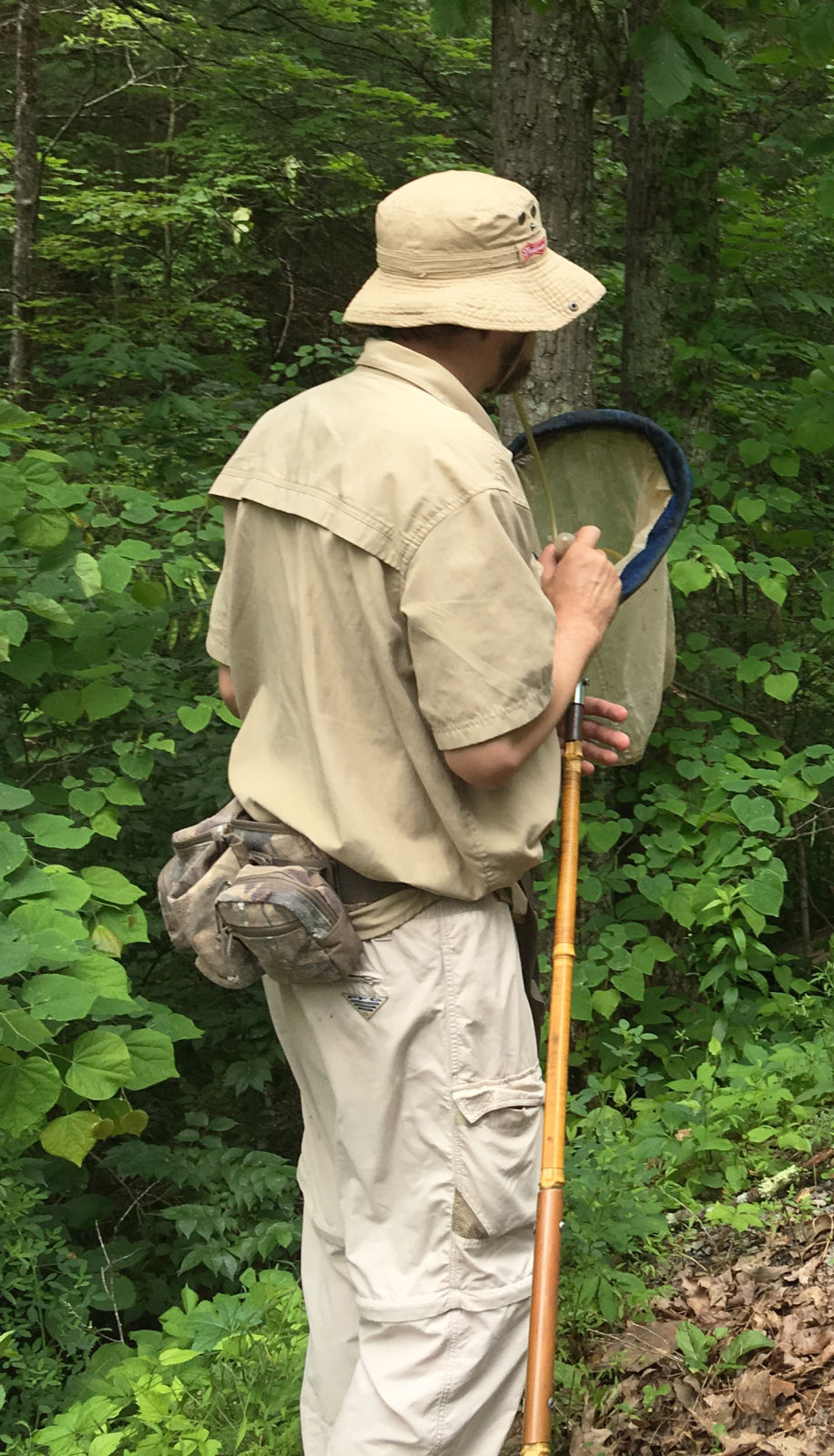 9
9 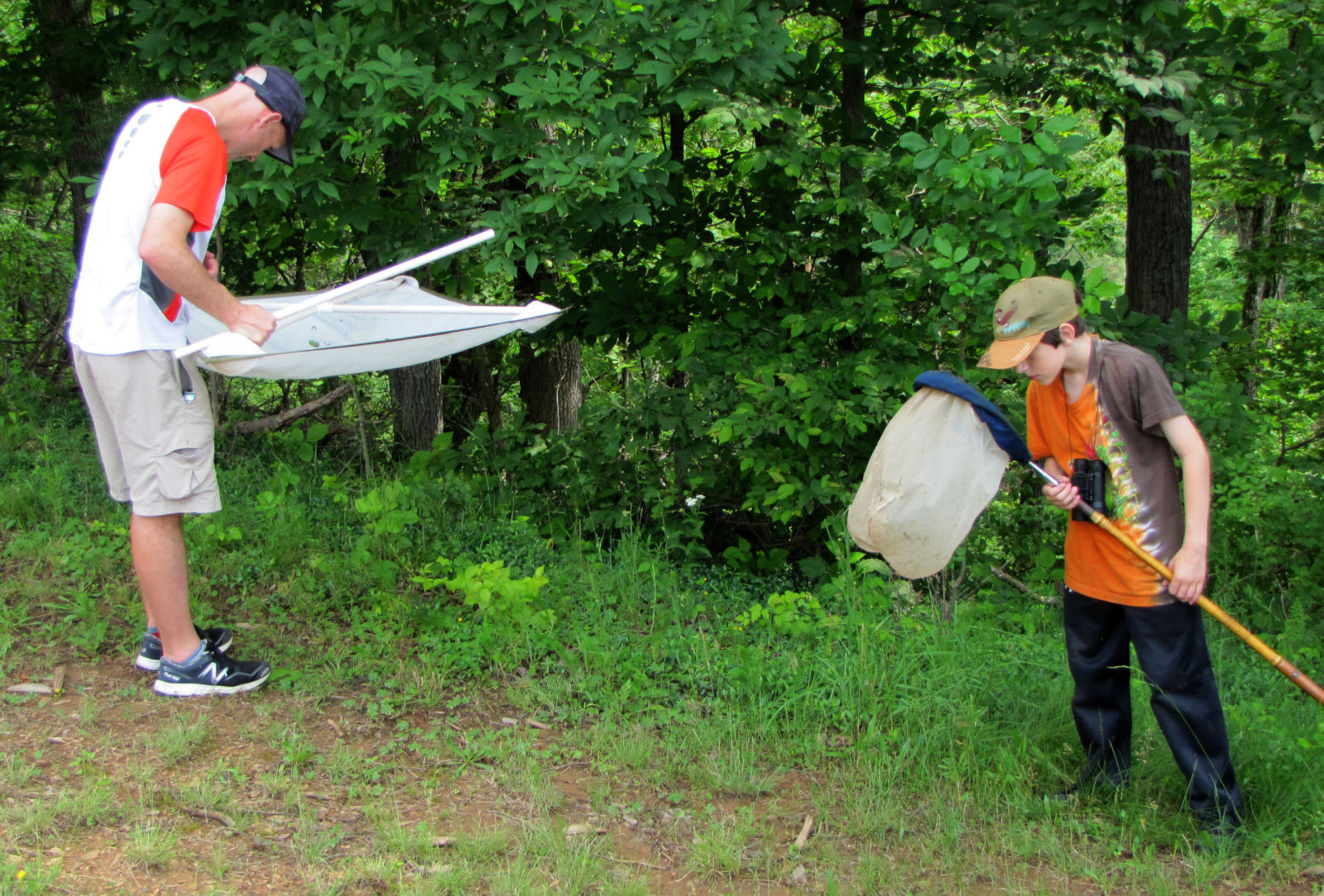 10
10 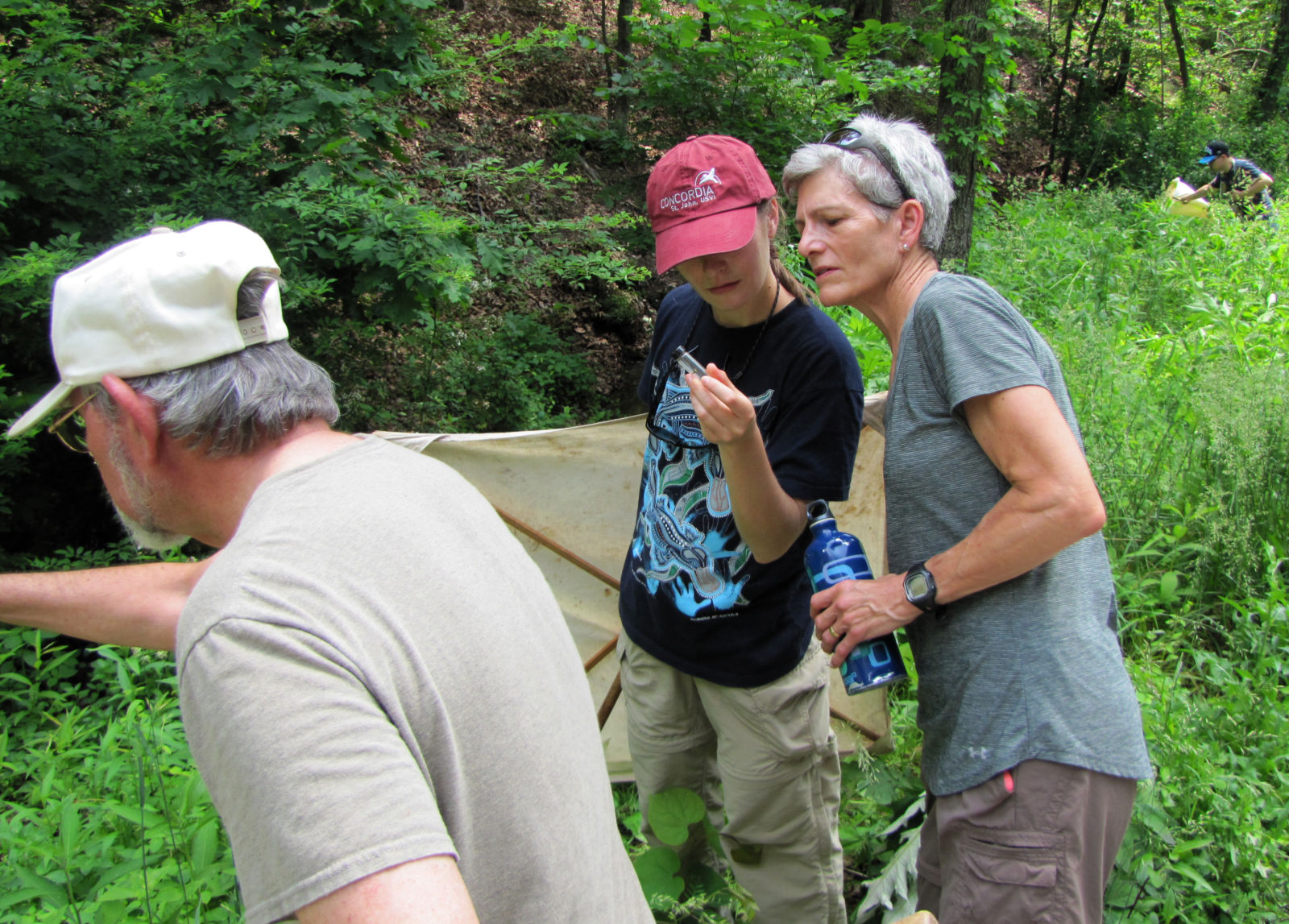
11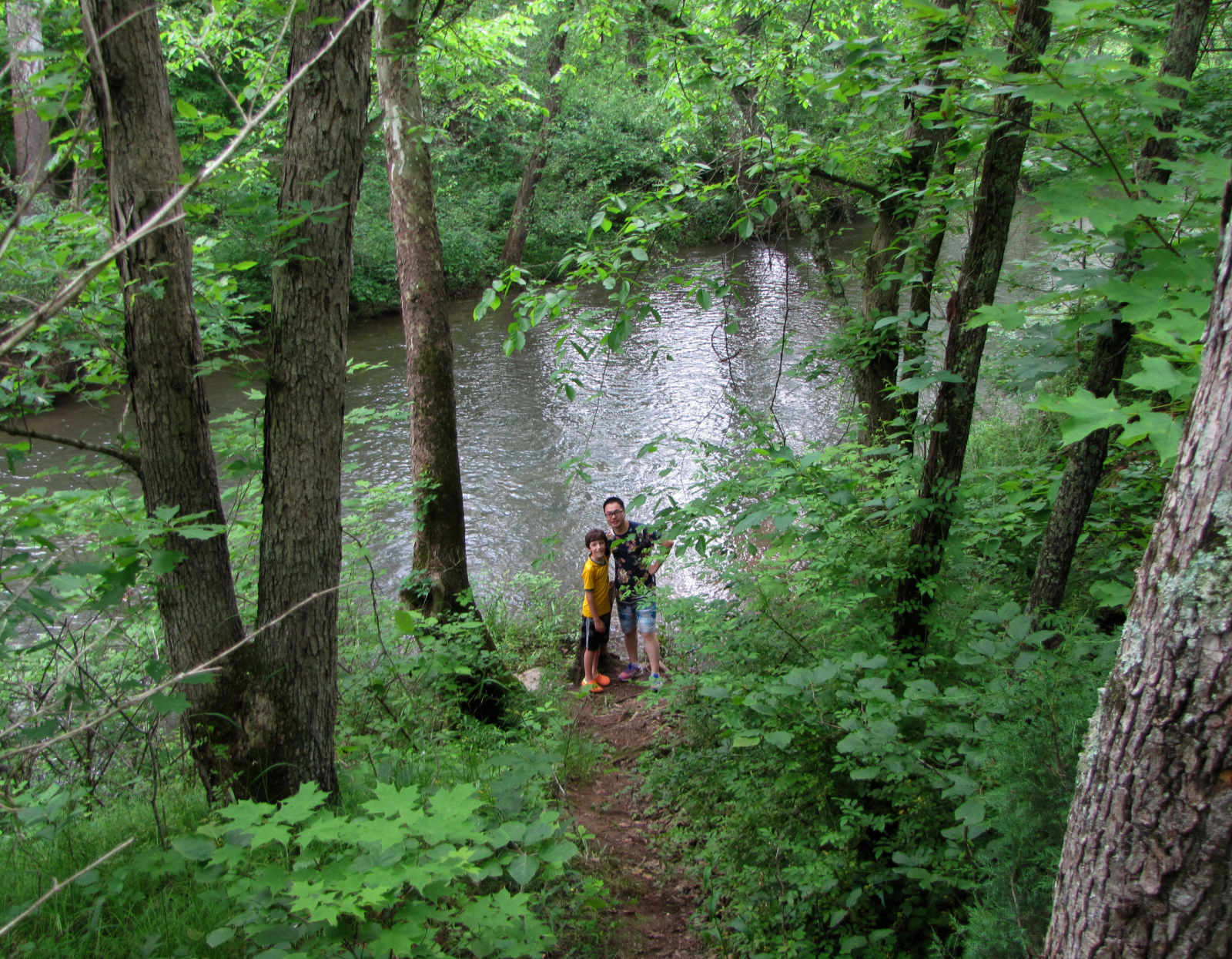
12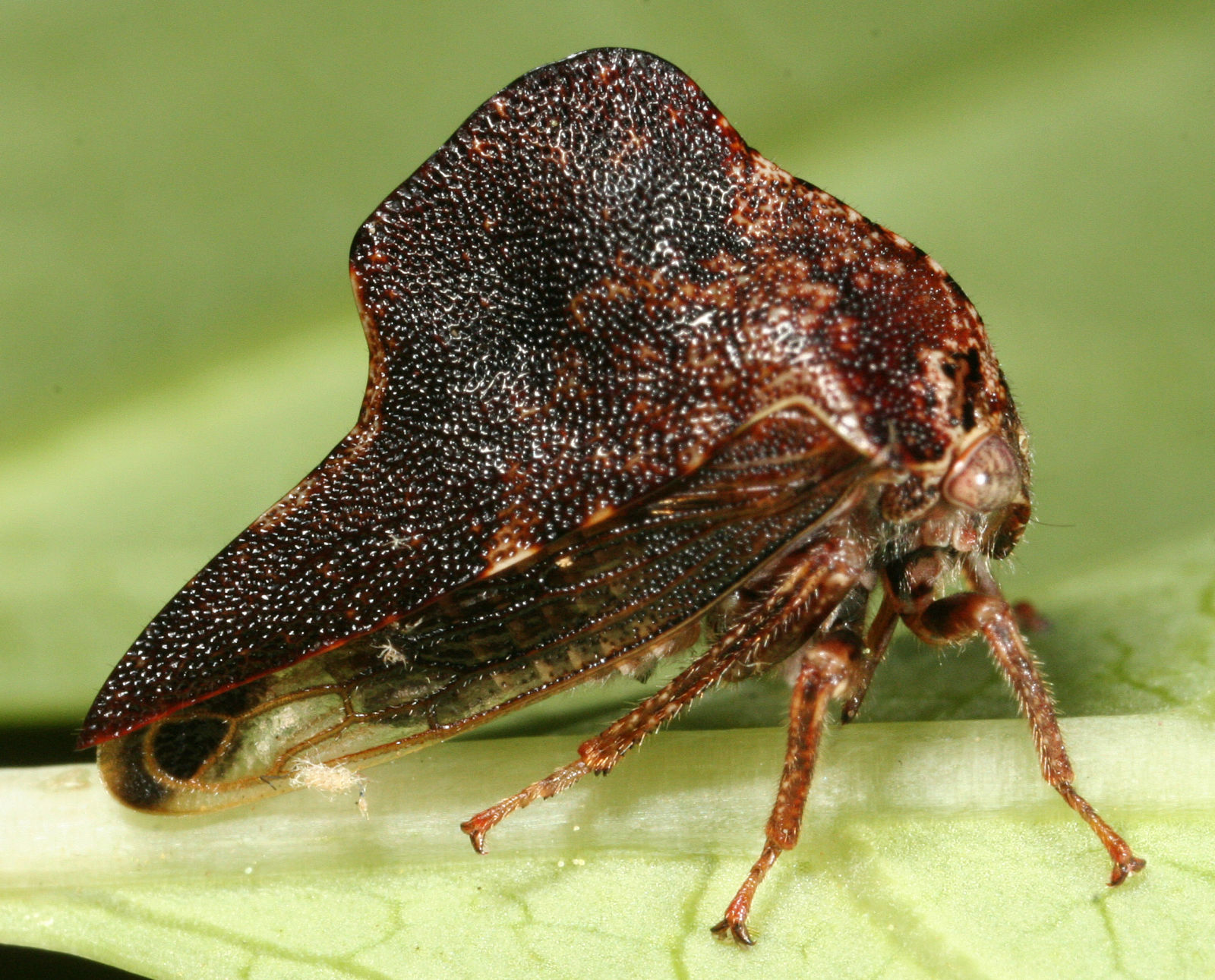 13
13 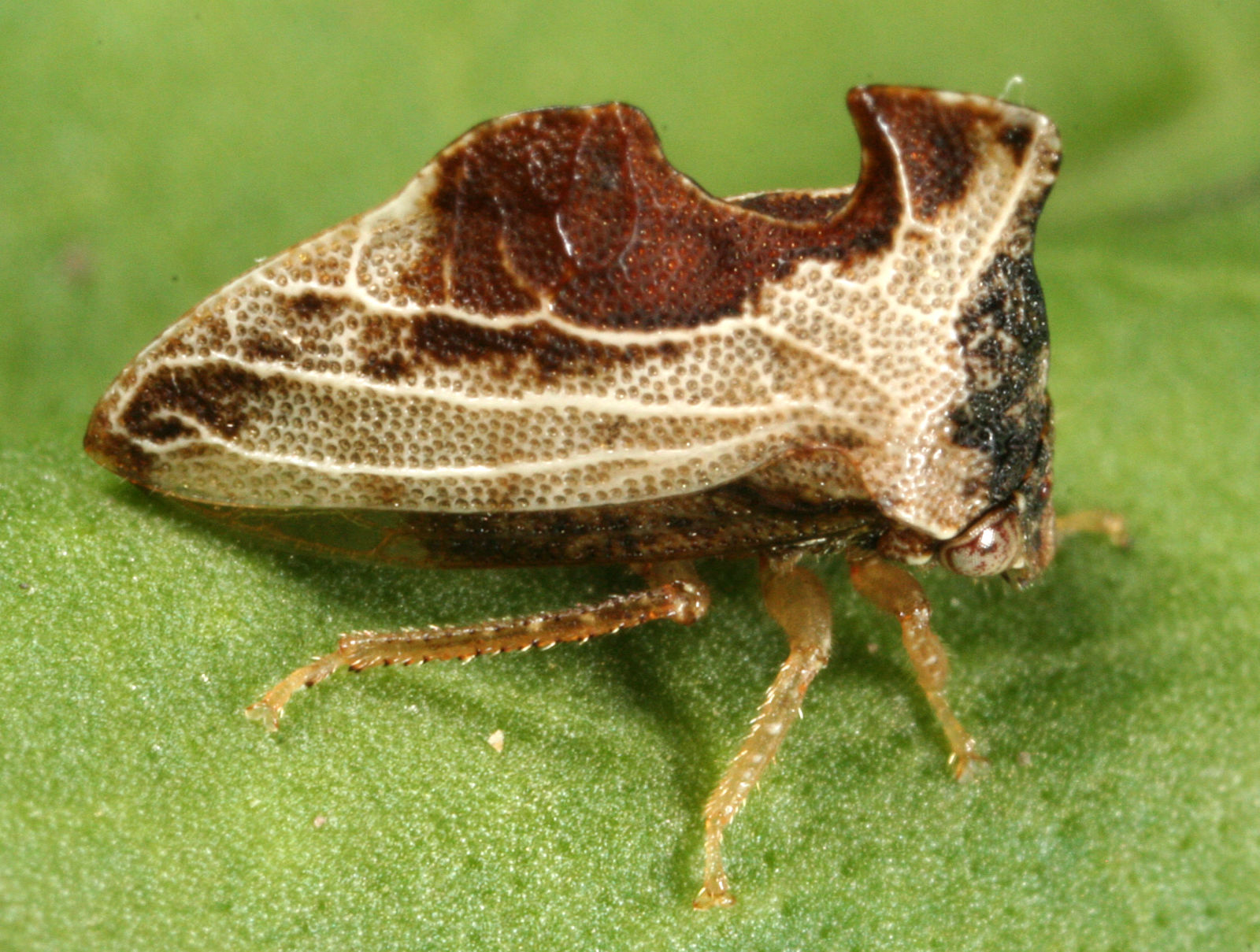 14
14 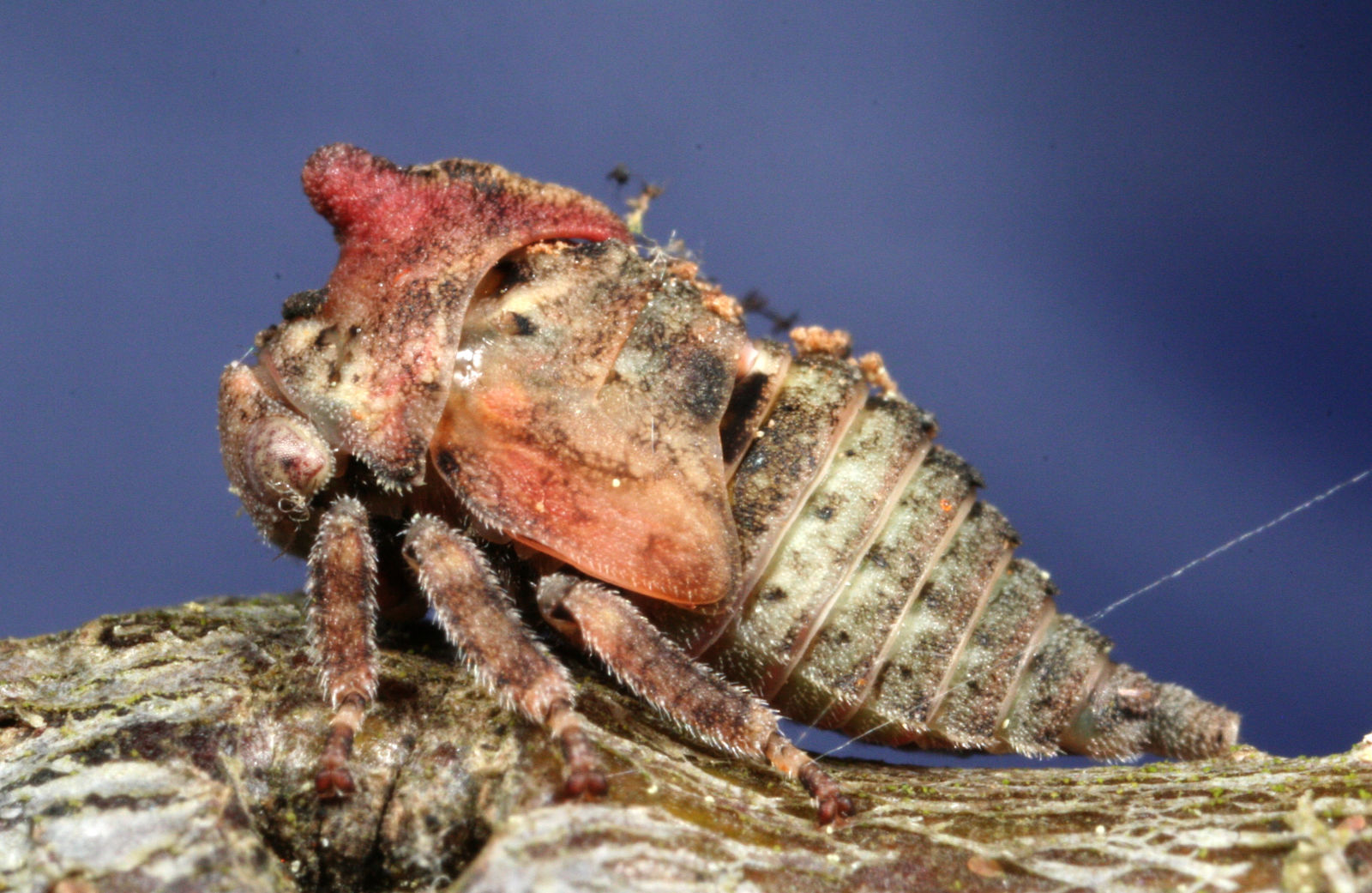
© Copyrights 2016, by Dennis Kopp (photo 8), Dmitry Dmitriev (photos 9-11). Photos 12-14, by Stuart McKamey, are NOT IN COPYRIGHT.
Because 2017 will mark our 25th Annual Treehopper Gathering, we will likely extend next year’s gathering by an extra day or two! We hope to announce the final dates 2 or 3 months before the event, most likely it will include the first weekend of June. Already folks are thinking about special t-shirt designs to celebrate our Silver Anniversary.
1

2
 Photos 1-2 © Copyright 2016, by Dmitry Dmitriev.
Photos 1-2 © Copyright 2016, by Dmitry Dmitriev.
Aside from one torrential downpour, the weather was fine. As usual, base camp activities centered around the picnic shelter and ranged from treehopper mounting, sorting, and identification (photo 3 [left to right Laura G.-M., Stu McK., and Yang W.]) to lending and exchanging specimens, trading literature, socializing, playing Frisbee, showing off prized treehopper t-shirts (photo 4, shirt presented to Dennis K. from friends at North Dakota State University, 1990), and enjoying the Saturday evening feast of meats and veggies (photos 5-7: 5, Charles B. grilling steak; 6, Ashley K. grilling veggies; 7, Anthony G. smiling over his fried turkey). An exciting development was that Dmitry Dmitriev (Illinois Natural History Survey, Champaign) will be collaborating with our existing Treehoppers Teams to assist in developing the Treehoppers Database in TaxonWorks. Thus, Dmitry is now officially part of our Taxa Content Team, Nomenclatural Database Team, and References Database Team.
3
 4
4  5
5 
6
 7
7 
Photos © Copyright 2016: 3, 5-7 by Dmitry Dmitriev, 4, by Lewis Deitz.
Many participants also had fun collecting (photos 8-11: 8, Dmitry D.; 9, Matt W. with beating sheet and Vlad D. with sweep net; 10, Mark R., Kerry McG., and Karen McG.) and exploring areas around the campground (photo 11, Vlad D. and Yang W. at Fifteen Mile Creek). Notably, Matt W. collected his first nymph of Heliria excelsa, which he reared to the adult stage, thus filling a significant gap in his ongoing research on the nymphs of the tribe Telamonini. Among numerous other specimens collected were Telamona ampelopsidis [male] (photo 12), Entylia carinata (13), and a fine-looking nymph of the genus Glossonotus (photo 14).
8
 9
9  10
10 
11

12
 13
13  14
14 
© Copyrights 2016, by Dennis Kopp (photo 8), Dmitry Dmitriev (photos 9-11). Photos 12-14, by Stuart McKamey, are NOT IN COPYRIGHT.
Because 2017 will mark our 25th Annual Treehopper Gathering, we will likely extend next year’s gathering by an extra day or two! We hope to announce the final dates 2 or 3 months before the event, most likely it will include the first weekend of June. Already folks are thinking about special t-shirt designs to celebrate our Silver Anniversary.
Publications on New World Treehoppers from 2016
2016-08-09
Benassi, V. L. R. M.; Valente, F. I.; Souza, C. A. S.; Benassi, A. C.; Sakakibara, A. M. 2016a. Biodiversidade e sazonalidade de cigarrinhas (Hemiptera: Membracidae) em cacaueiros. EntomoBrasilis 9(1): 41-46. [available online; in Portuguese, with English abstract].
This study lists and illustrates 30 membracid species associated with Theobroma cacao in Linhares, Espirito Santo State, Brazil. Seasonality data are given for 5 of 8 species confirmed to feed on cacao. Horiola picta was by far the most abundant species.
Creão-Duarte, A. J.; Sakakibara, A. M. 2016a. Two new species of Sundarion (Hemiptera: Membracidae: Darninae) and taxonomic notes on two congeneric taxa. Zoologia 22(1):1-7.
Published online March 2016, this work includes: Sundarion flavopiceum and S. marmoratum n. spp.; S. compressicornis (Fairmaire, 1846), n. comb.; and notes on S. notable de Souza [Evangelista de Souza] and Rothéa.
Flynn, D. J.; Wheeler, A. G., Jr. 2016a. Micrutalis pallens Fowler (Hemiptera: Membracidae): first U.S. records, host-plant association, description of male, and redescription of female. Proceedings of the Entomological Society of Washington 118(3):345-353.
This paper extends the distribution of M. pallens to the Nearctic region, with records on Thurber’s desert honeysuckle (Acanthaceae: Anisacanthus thurberi) in Arizona and New Mexico. Prior reports of this treehopper were all from the Neotropics (Argentina, Guatemala, Guyana, Mexico, Panama, and Venezuela). M. pallens is compared to five other species Micrutalis reported from the Southwest.
Morris, B. O.; Dietrich, C. H. 2016a. Hidden in plain sight: a remarkable new genus of Nearctic treehoppers (Hemiptera: Membracidae). Annals of the Entomological Society of America 109(3): 488-494. [in English, with Spanish abstract].
First published online, this paper describing Selenacentrus wallacei, new genus and species, is now available in the print version of the journal. This treehopper occurs on a few members of the plant family Fabaceae (Prosopis, Pithecellobium, and Acacia) in Texas and northern Mexico.
Pinto, C. F.; Salinas, S.; Flores-Prado, L.; Echeverría, J.; Niemeyer, H. M. 2016a. Sequestration of tropane alkaloids from Brugmansia suaveolens (Solanaceae) by the treehopper Alchisme grossa (Hemiptera: Membracidae). Biochemical Systematics and Ecology 66: 161-165.
Both adult males and females of A. grossa sequester tropane alkaloids from the host B. suaveolens.
Wallace, M. S. 2016a. Telamona barbata Van Duzee 1908, reinstated junior synonym of T. decorata Ball 1903, and their respective lectotype designations (Hemiptera: Membracidae). Proceedings of the Entomological Society of Washington 118(3): 477-479.
Wallace designates, compares, and illustrates the male lectotypes.
Wheeler, A. G., Jr. 2016a. Thelia bimaculata (F.) and Vanduzea arquata (Say) (Hemiptera: Membracidae) in the southern Appalachians: new hosts in Robinia (Fabaceae) and nymphal use of abandoned cavities of the locust twig borer. Proceedings of the Entomological Society of Washington 118(3): 436-449.
Wheeler provides extensive field observations of these membracids in the Appalachians of North Carolina, South Carolina, and Tennessee.
This study lists and illustrates 30 membracid species associated with Theobroma cacao in Linhares, Espirito Santo State, Brazil. Seasonality data are given for 5 of 8 species confirmed to feed on cacao. Horiola picta was by far the most abundant species.
Creão-Duarte, A. J.; Sakakibara, A. M. 2016a. Two new species of Sundarion (Hemiptera: Membracidae: Darninae) and taxonomic notes on two congeneric taxa. Zoologia 22(1):1-7.
Published online March 2016, this work includes: Sundarion flavopiceum and S. marmoratum n. spp.; S. compressicornis (Fairmaire, 1846), n. comb.; and notes on S. notable de Souza [Evangelista de Souza] and Rothéa.
Flynn, D. J.; Wheeler, A. G., Jr. 2016a. Micrutalis pallens Fowler (Hemiptera: Membracidae): first U.S. records, host-plant association, description of male, and redescription of female. Proceedings of the Entomological Society of Washington 118(3):345-353.
This paper extends the distribution of M. pallens to the Nearctic region, with records on Thurber’s desert honeysuckle (Acanthaceae: Anisacanthus thurberi) in Arizona and New Mexico. Prior reports of this treehopper were all from the Neotropics (Argentina, Guatemala, Guyana, Mexico, Panama, and Venezuela). M. pallens is compared to five other species Micrutalis reported from the Southwest.
Morris, B. O.; Dietrich, C. H. 2016a. Hidden in plain sight: a remarkable new genus of Nearctic treehoppers (Hemiptera: Membracidae). Annals of the Entomological Society of America 109(3): 488-494. [in English, with Spanish abstract].
First published online, this paper describing Selenacentrus wallacei, new genus and species, is now available in the print version of the journal. This treehopper occurs on a few members of the plant family Fabaceae (Prosopis, Pithecellobium, and Acacia) in Texas and northern Mexico.
Pinto, C. F.; Salinas, S.; Flores-Prado, L.; Echeverría, J.; Niemeyer, H. M. 2016a. Sequestration of tropane alkaloids from Brugmansia suaveolens (Solanaceae) by the treehopper Alchisme grossa (Hemiptera: Membracidae). Biochemical Systematics and Ecology 66: 161-165.
Both adult males and females of A. grossa sequester tropane alkaloids from the host B. suaveolens.
Wallace, M. S. 2016a. Telamona barbata Van Duzee 1908, reinstated junior synonym of T. decorata Ball 1903, and their respective lectotype designations (Hemiptera: Membracidae). Proceedings of the Entomological Society of Washington 118(3): 477-479.
Wallace designates, compares, and illustrates the male lectotypes.
Wheeler, A. G., Jr. 2016a. Thelia bimaculata (F.) and Vanduzea arquata (Say) (Hemiptera: Membracidae) in the southern Appalachians: new hosts in Robinia (Fabaceae) and nymphal use of abandoned cavities of the locust twig borer. Proceedings of the Entomological Society of Washington 118(3): 436-449.
Wheeler provides extensive field observations of these membracids in the Appalachians of North Carolina, South Carolina, and Tennessee.
An Alarm Signal to Guard Treehopper Eggs Against Mymarids?
2016-10-28
Miranda, X. 2016a. Egg-guarding behavior of the treehopper Ennya chrysura (Hemiptera: Membracidae): female aggregations, egg parasitism, and a possible substrate-borne alarm signal. Revista de Biologia Tropical 64(3): 1209-1222. [available online]
Substrate-borne signals produced by females of E. chrysura while guarding their egg masses against parasitism may alert neighboring females of an attack, thus lowering the overall rate of parasitism by certain mymarid wasps. Miranda observed that under natural conditions females tend to deposit their eggs close to other egg-guarding females. Also, in the laboratory, females exposed to playbacks of another female’s disturbance signal react more quickly and defensively to a tactile stimulus.
Substrate-borne signals produced by females of E. chrysura while guarding their egg masses against parasitism may alert neighboring females of an attack, thus lowering the overall rate of parasitism by certain mymarid wasps. Miranda observed that under natural conditions females tend to deposit their eggs close to other egg-guarding females. Also, in the laboratory, females exposed to playbacks of another female’s disturbance signal react more quickly and defensively to a tactile stimulus.
First Treehopper in Niue
2016-11-11
Wallace, M. S.; Anderson, D.; Deitz, L. L. 2016a. Antianthe expansa (Germar): first treehopper (Hemiptera: Membracidae) recorded from Pacific Island Nation of Niue. Proceedings of the Entomological Society of Washington 118(4):650-653.
1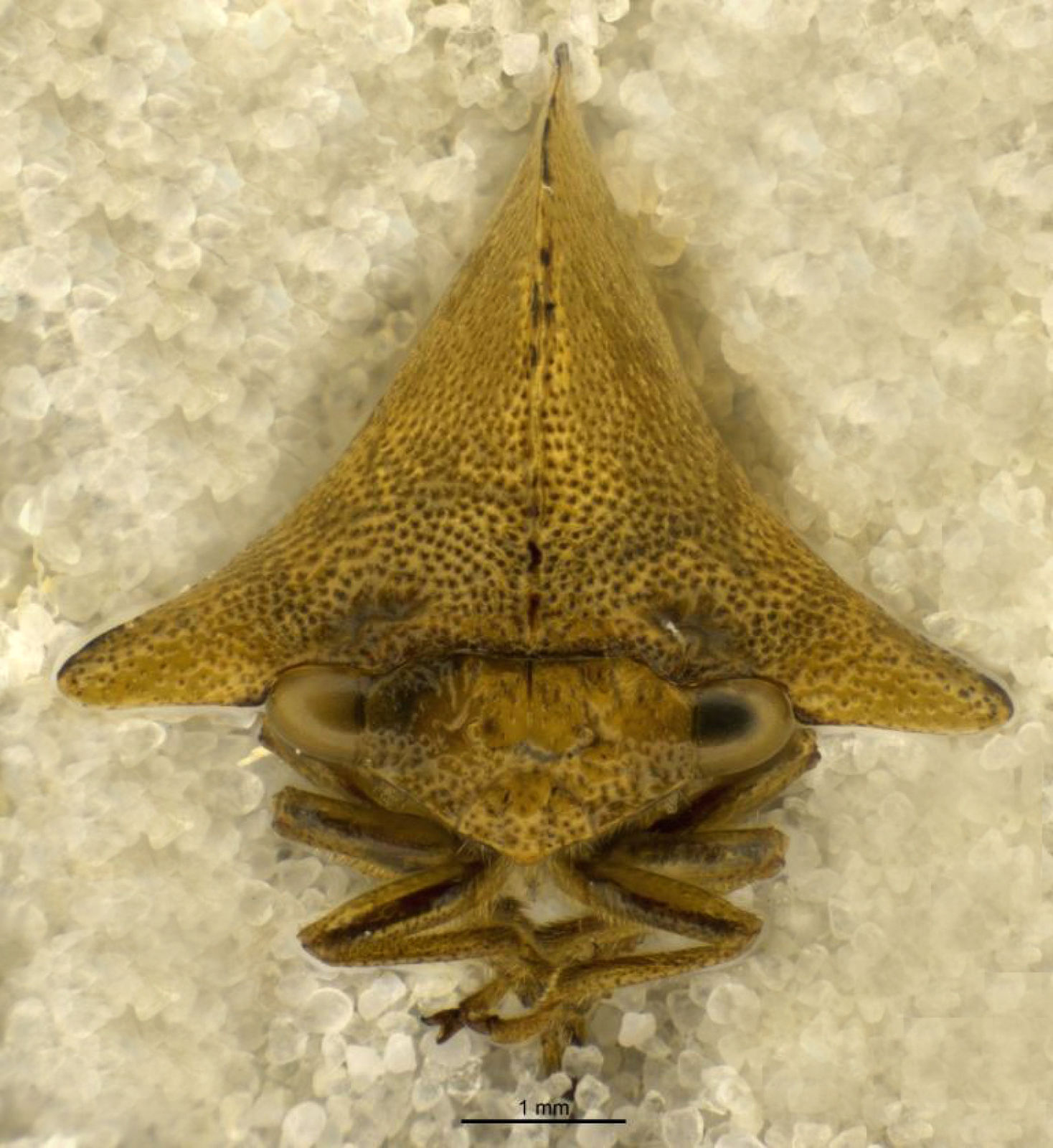 2
2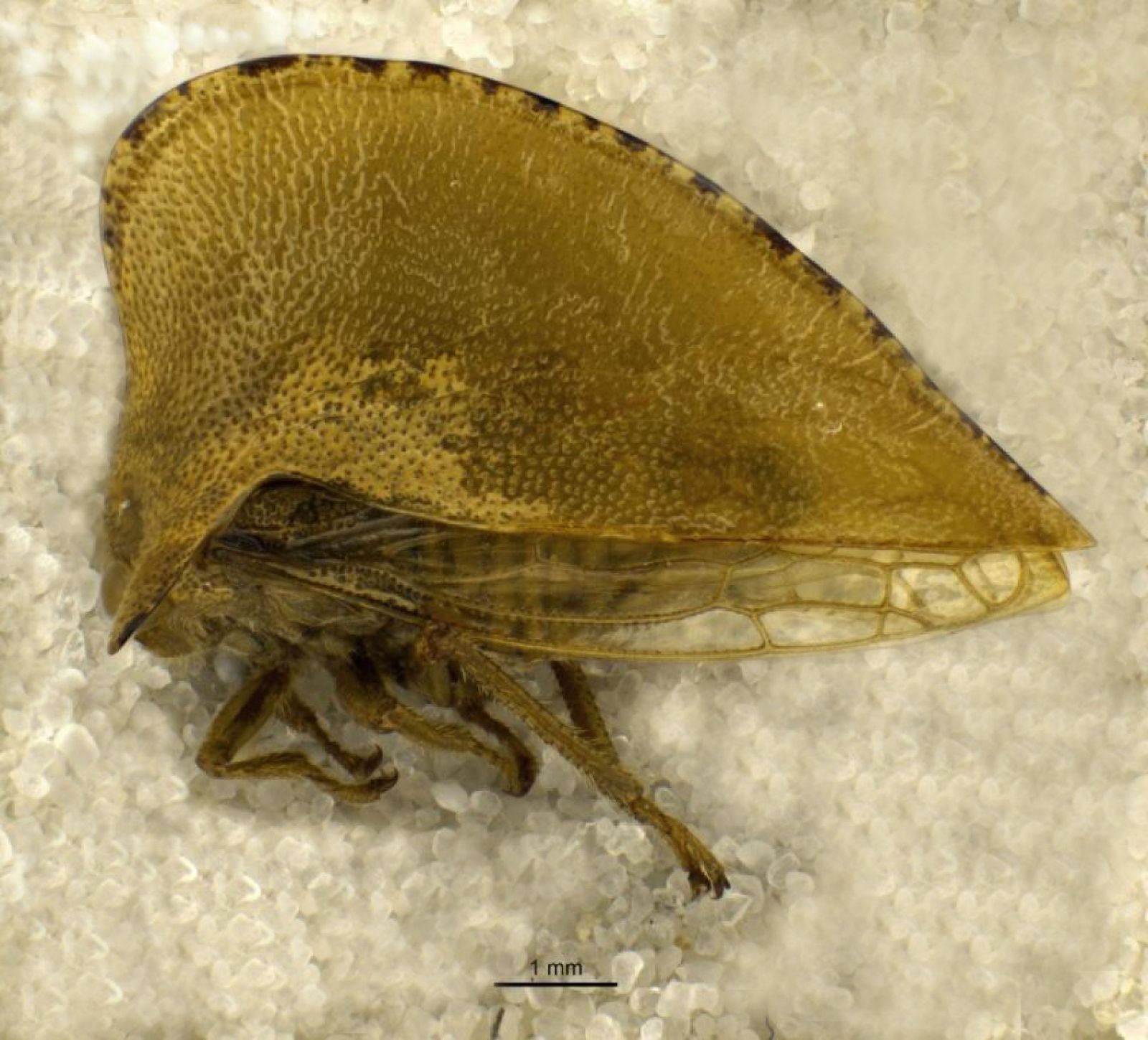 3
3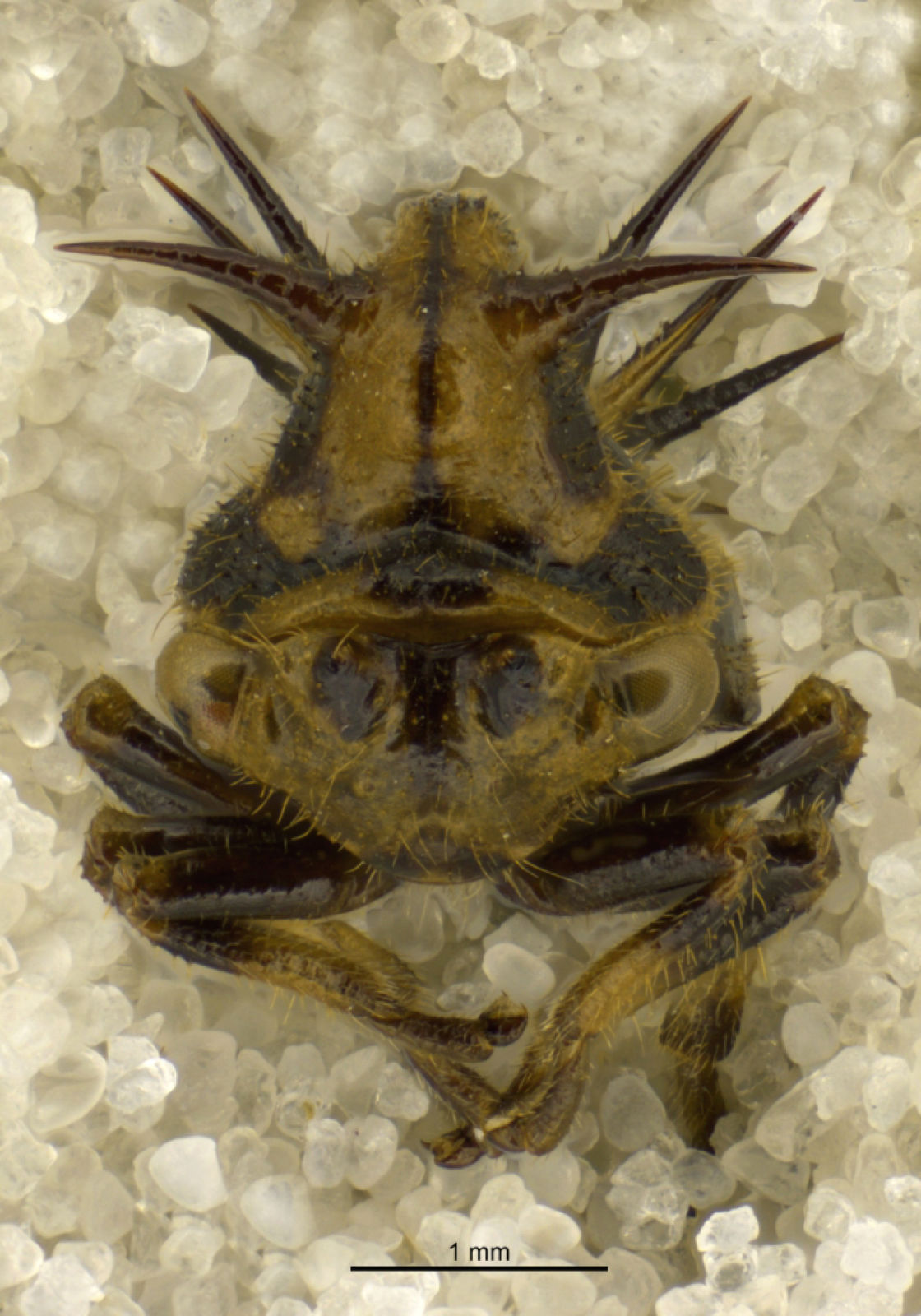 4
4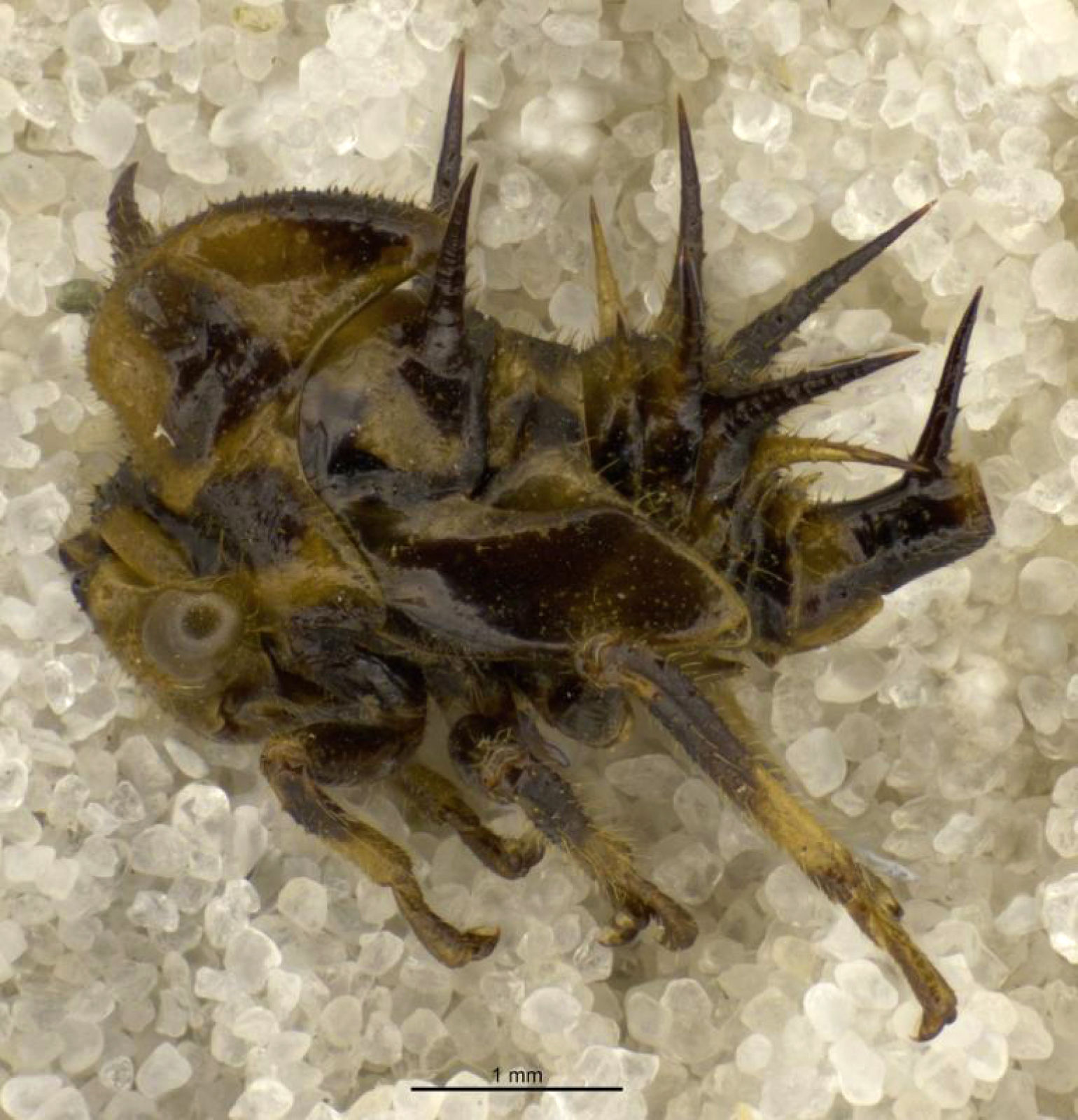
Vouchers of Antianthe expansa collected in Niue, 21 January 1996, on tomatoes: 1-2, adult (1, anterior; 2, lateral), 3-4 nymph (3, anterior; 4, lateral).
This work documents Antianthe expansa (Figs. 1-4) on tomatoes in Niue, however, a prior record from Hawaii and an unconfirmed report from Tonga are also discussed. Thus, this New World treehopper is reported not only from the Neotropical and Nearctic regions, but also in the Oceanic region.
1
 2
2 3
3 4
4
Vouchers of Antianthe expansa collected in Niue, 21 January 1996, on tomatoes: 1-2, adult (1, anterior; 2, lateral), 3-4 nymph (3, anterior; 4, lateral).
This work documents Antianthe expansa (Figs. 1-4) on tomatoes in Niue, however, a prior record from Hawaii and an unconfirmed report from Tonga are also discussed. Thus, this New World treehopper is reported not only from the Neotropical and Nearctic regions, but also in the Oceanic region.
Chinese Version of Maruyama's "Treehoppers: Incredible Insects""
2016-12-08
Chung-Ping Lin informs us a Chinese version of Maruyama’s book "Treehoppers: Incredible Insects" is being published this month (December 2016; ISBN:9789864431885). A few Taiwanese species have been added to the earlier edition (see archive of treehopper news: “Maruyama's 2011 book "Treehoppers: Incredible Insects," dated: 2012-08-03).
Photos by Shoyo Sato, New Collaborator
2017-03-07
We here feature six photos by Shoyo Sato (Boston University, Boston, Massachusetts), a new collaborator on our Treehoppers Team. Shoyo captured these and other treehopper images in Ecuador, while working as a teaching fellow with Kelly Swing in late 2016.
1 2
2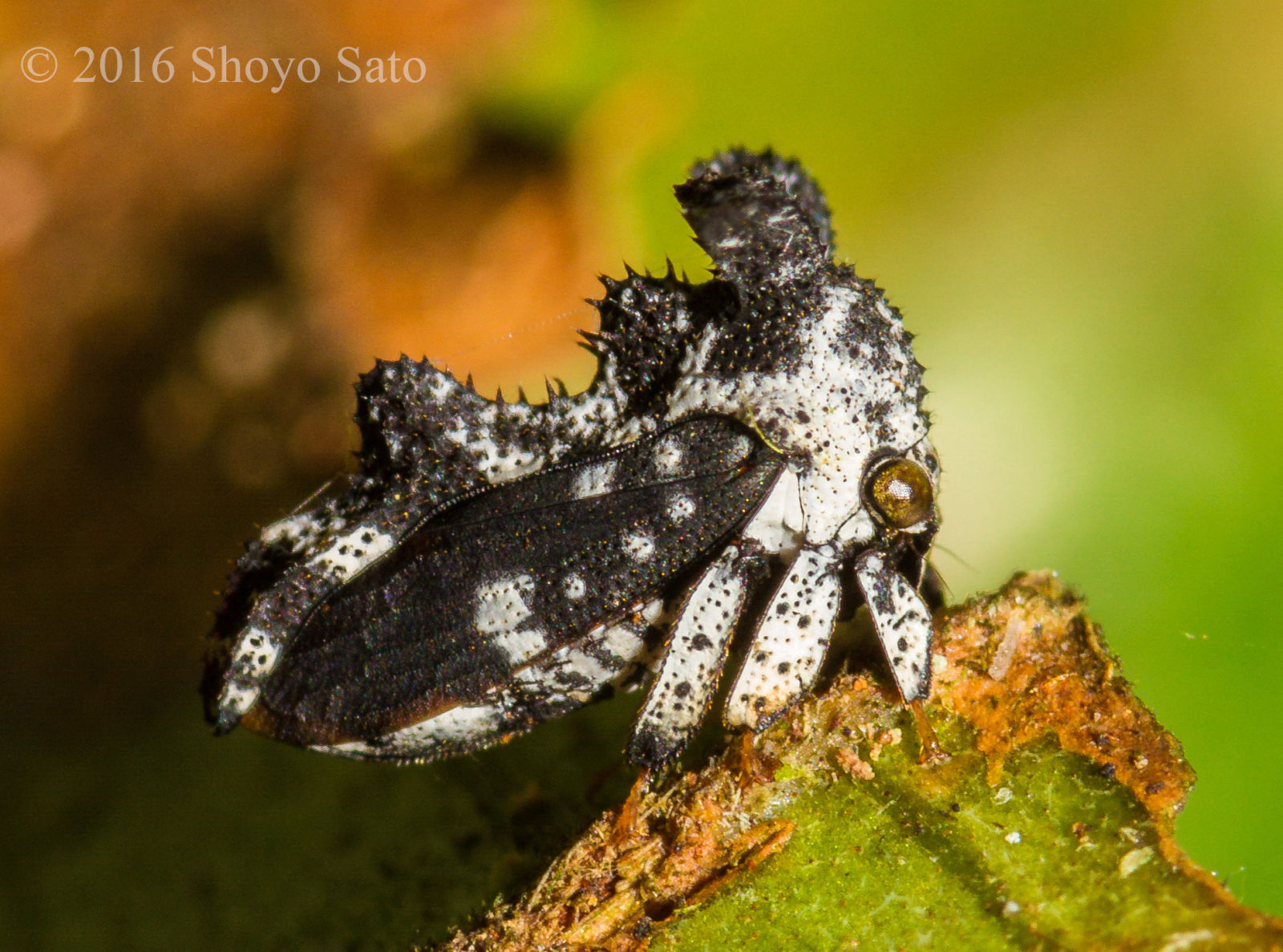 3
3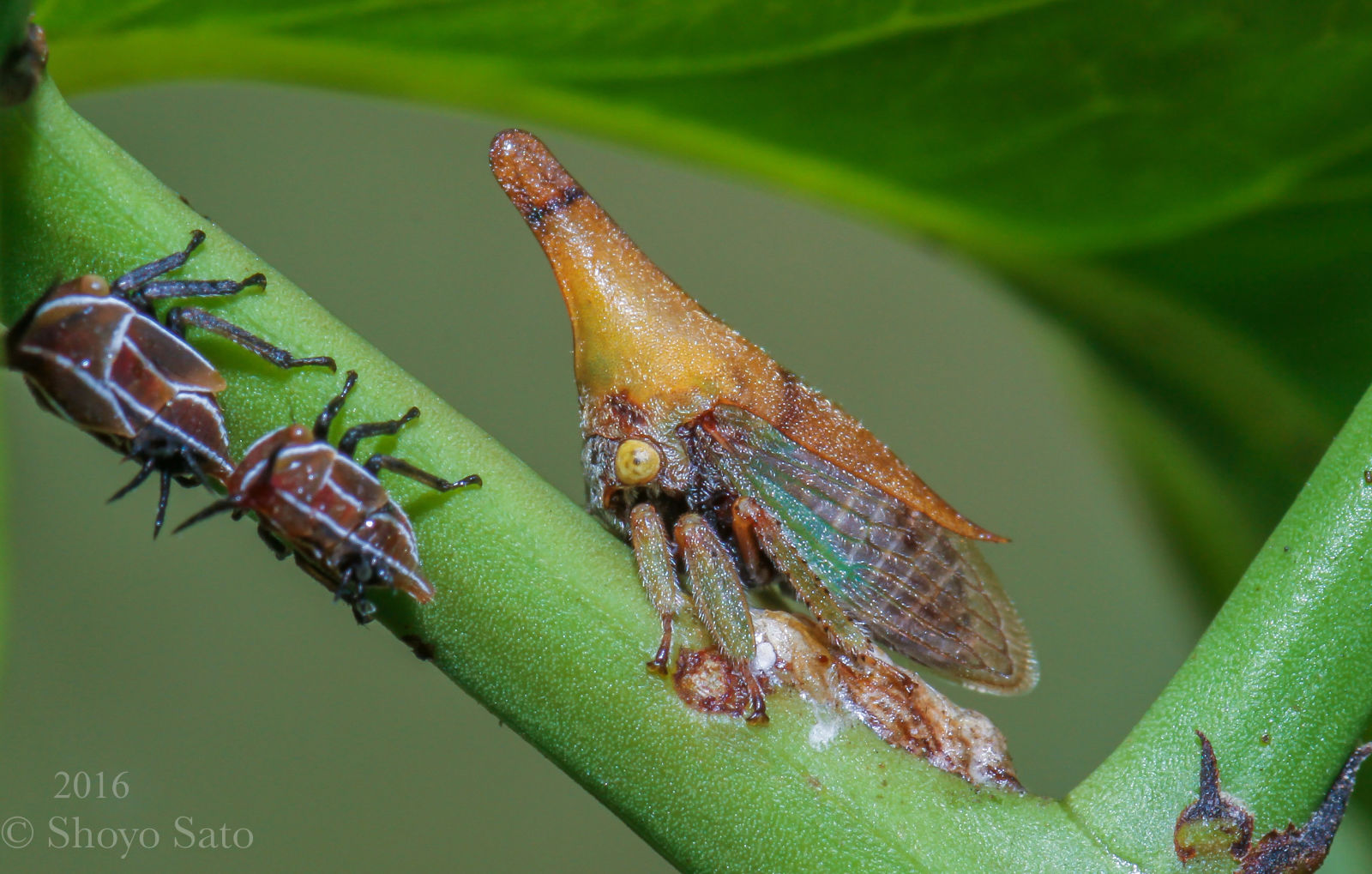
4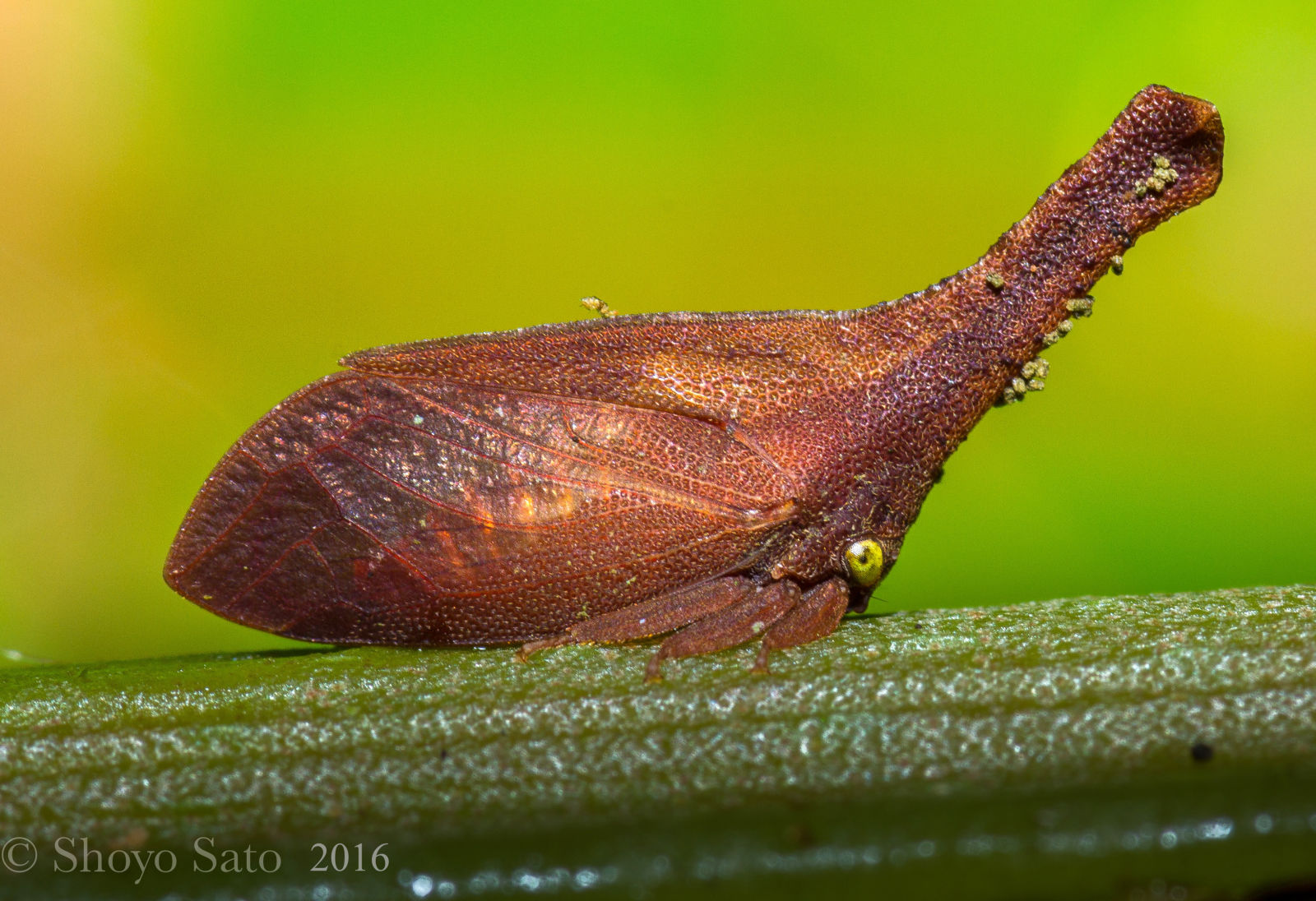 5
5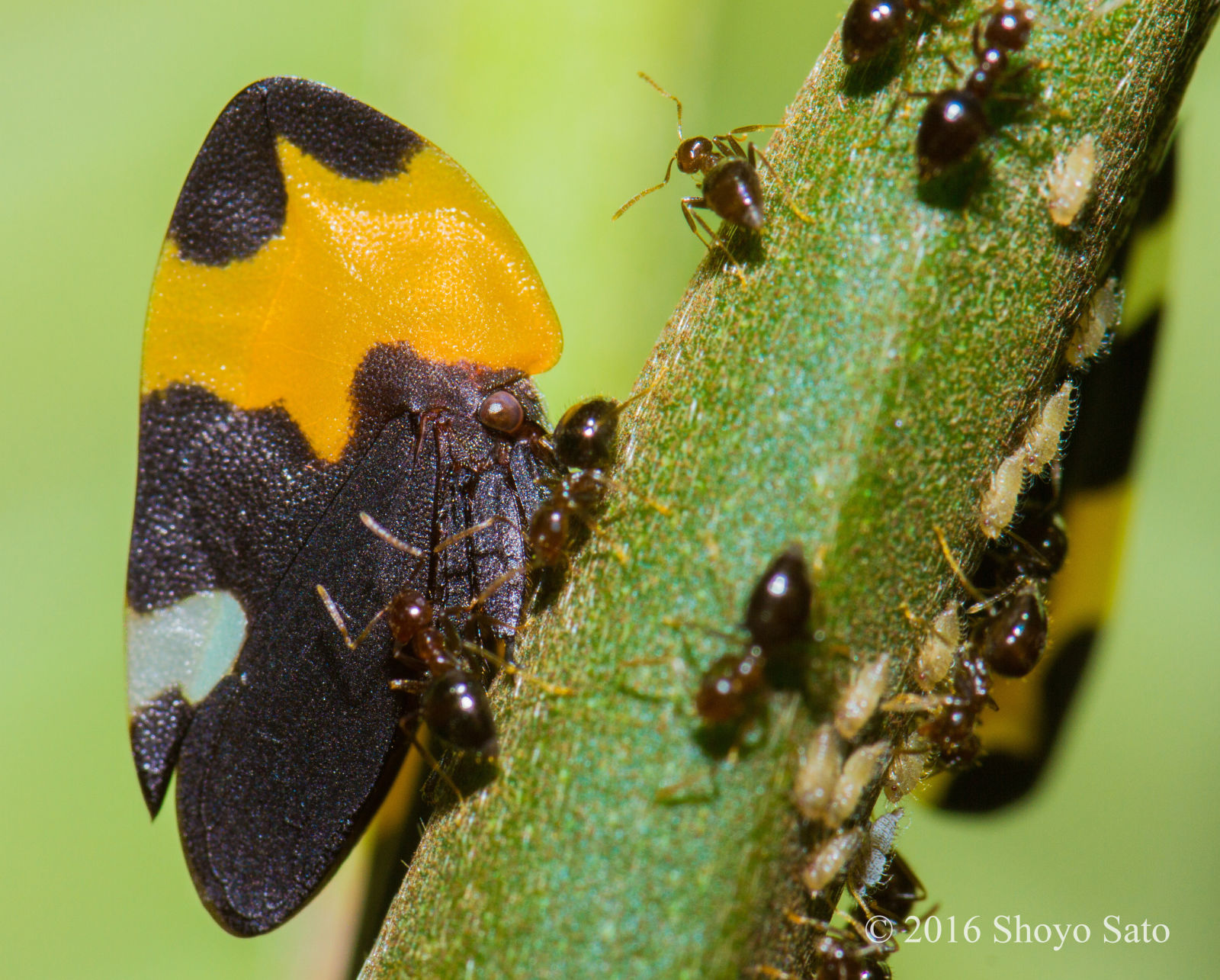 6
6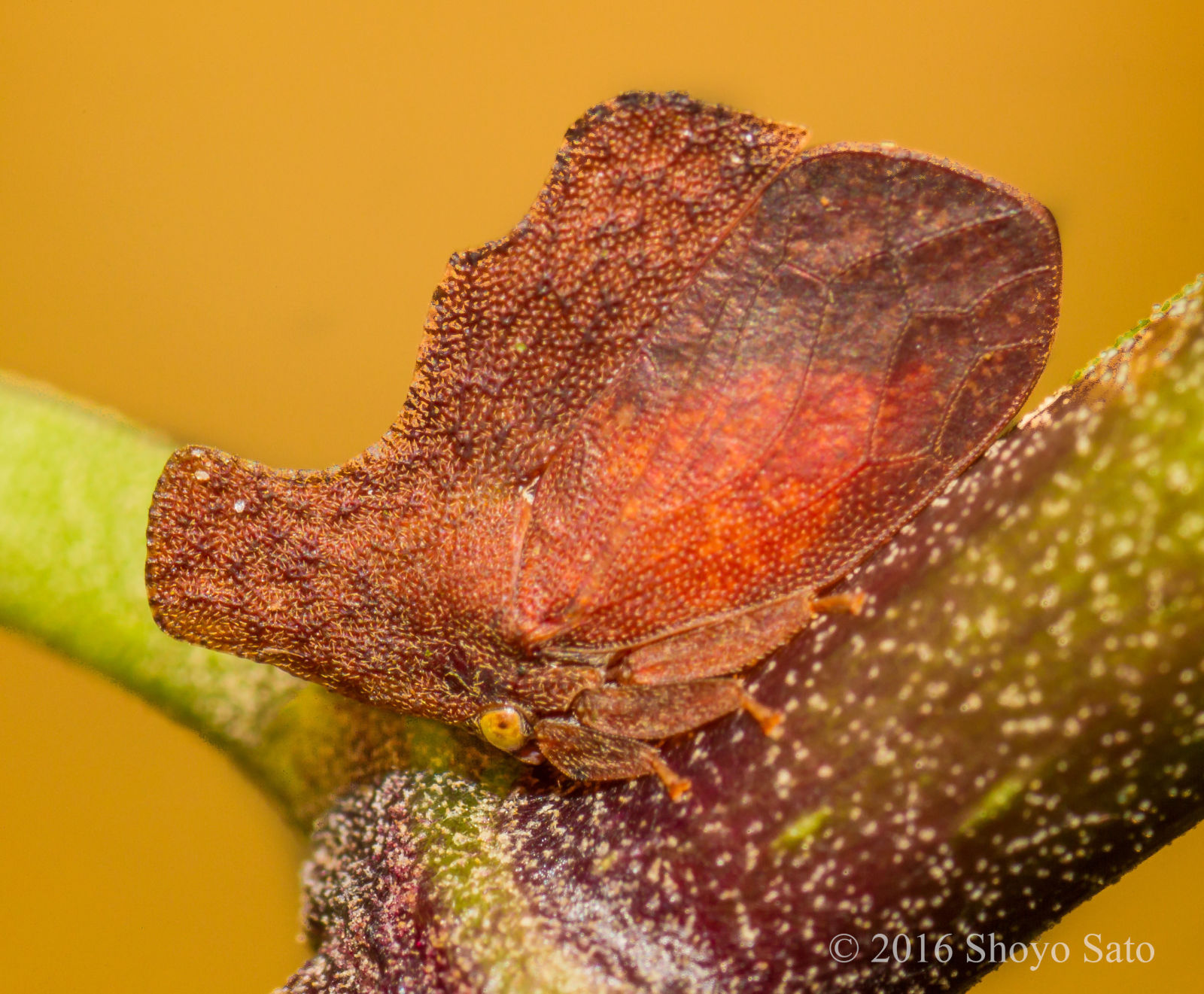
1, Lophyraspis with ant; 2, Notocera; 3, Guayaquila mackameyi with nymphs; 4, Lycoderides phasianus; 5, Phyllotropis cingulata with nymphs and ants; 6, Stegaspis fronditia.
1
 2
2 3
3
4
 5
5 6
6
1, Lophyraspis with ant; 2, Notocera; 3, Guayaquila mackameyi with nymphs; 4, Lycoderides phasianus; 5, Phyllotropis cingulata with nymphs and ants; 6, Stegaspis fronditia.
Evidence from Treehoppers (Hemiptera: Membracidae) of Climate Change?
2017-03-28
Disclaimer. The "Officially Approved” abstract, below, is reproduced precisely as received from an "undisclosed source." We are unable to confirm or deny the data and results reported therein. Thus, any opinions, findings, and conclusions or recommendations expressed in this abstract are strictly those of its unknown author(s) and do not necessarily reflect the views of this Website or any person (living or deceased) or any known institution or agency. Readers are free to draw their own conclusions based on the evidence, however, the proposed date of release (1 April 2017) is somewhat suspicious.
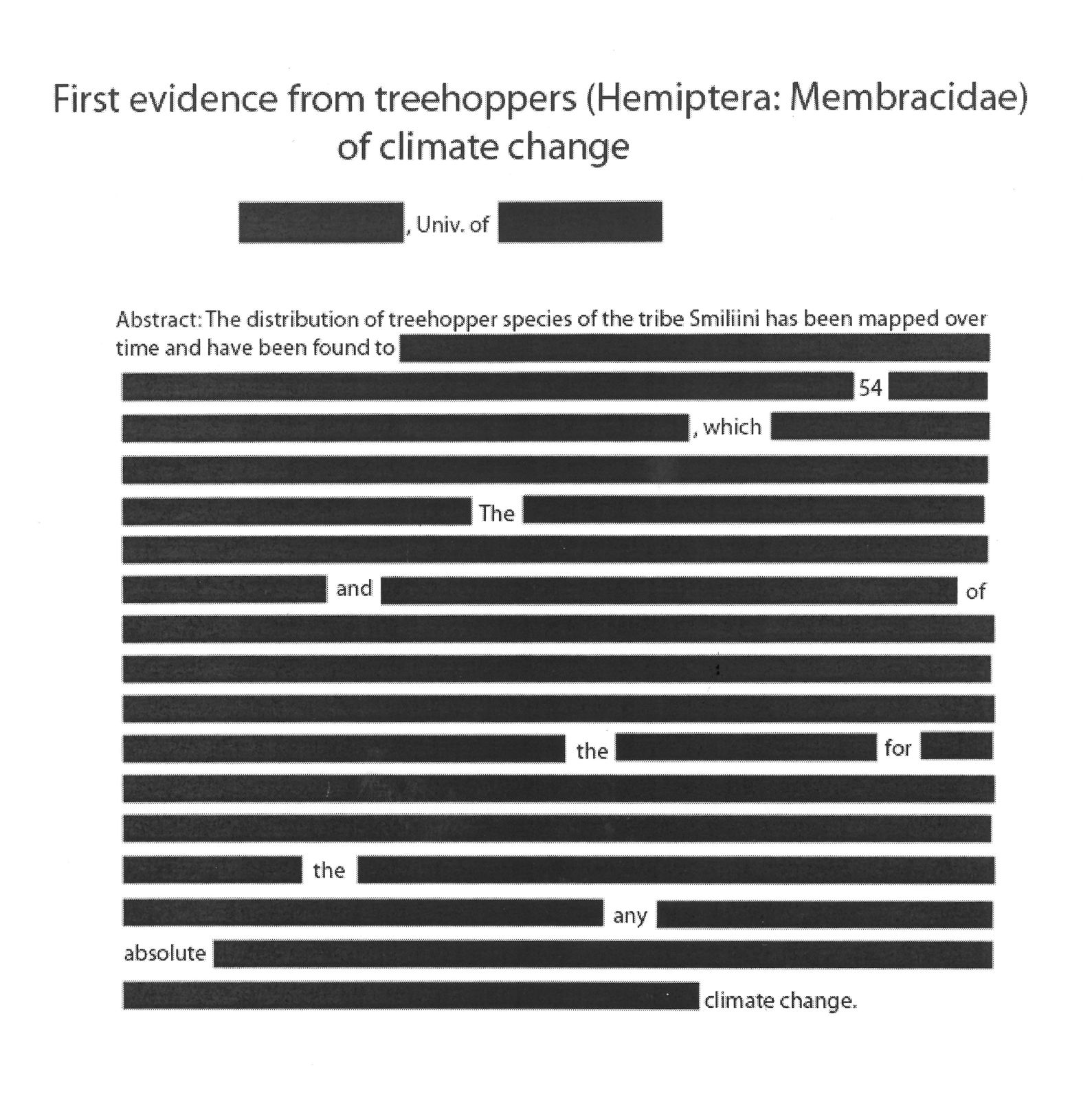

Celebrate the 25th Annual Treehopper Aggregation: 1-4 June 2017, Little Orleans, Maryland
2017-04-06
Join us for the 2017 Treehopper Gathering set for 1 June to 4 June (arrive Thursday, depart Sunday), at the Little Orleans Campground, Little Orleans, Maryland. We note that by popular demand, an extra day is added to this year’s aggregation. Located in scenic western Maryland, this event offers a relaxed, casual setting to meet and collect with others passionate about treehoppers and other insects.
Participants are expected to provide their own tents, food, and camping gear, and to share in the cost of the group campground registration and the group meal provided on Saturday evening.
To reserve a campsite with our group or to obtain further information, contact Charles Bartlett. Advanced registration with Charles is essential to assure that you have a campsite.
Bring your collecting and camping gear, camera, unidentified treehopper specimens, and a bathing suit!
Participants are expected to provide their own tents, food, and camping gear, and to share in the cost of the group campground registration and the group meal provided on Saturday evening.
To reserve a campsite with our group or to obtain further information, contact Charles Bartlett. Advanced registration with Charles is essential to assure that you have a campsite.
Bring your collecting and camping gear, camera, unidentified treehopper specimens, and a bathing suit!
World Hemiptera Day, 21 April
2017-04-20
Thierry Bourgoin, Chair of the International Auchenorrhyncha Society, reminds us that World Hemiptera Day, 21 April, is a great time to promote the 15th International Auchenorrhyncha Congress (IAC) and the 10th International Workshop on Leafhoppers and Planthoppers of Economic Importance, 9-15 July 2017, in Mendes, Rio de Janeiro, Brazil--the first IAC in South America.
On 21 April, join our colleagues worldwide in celebrating the rich diversity in hemipteran forms, biologies, behaviors, ecologies, and interactions with human society. We are especially pleased that the World Hemiptera Day logo, created by Jacek Szwedo, features a handsome treehopper.
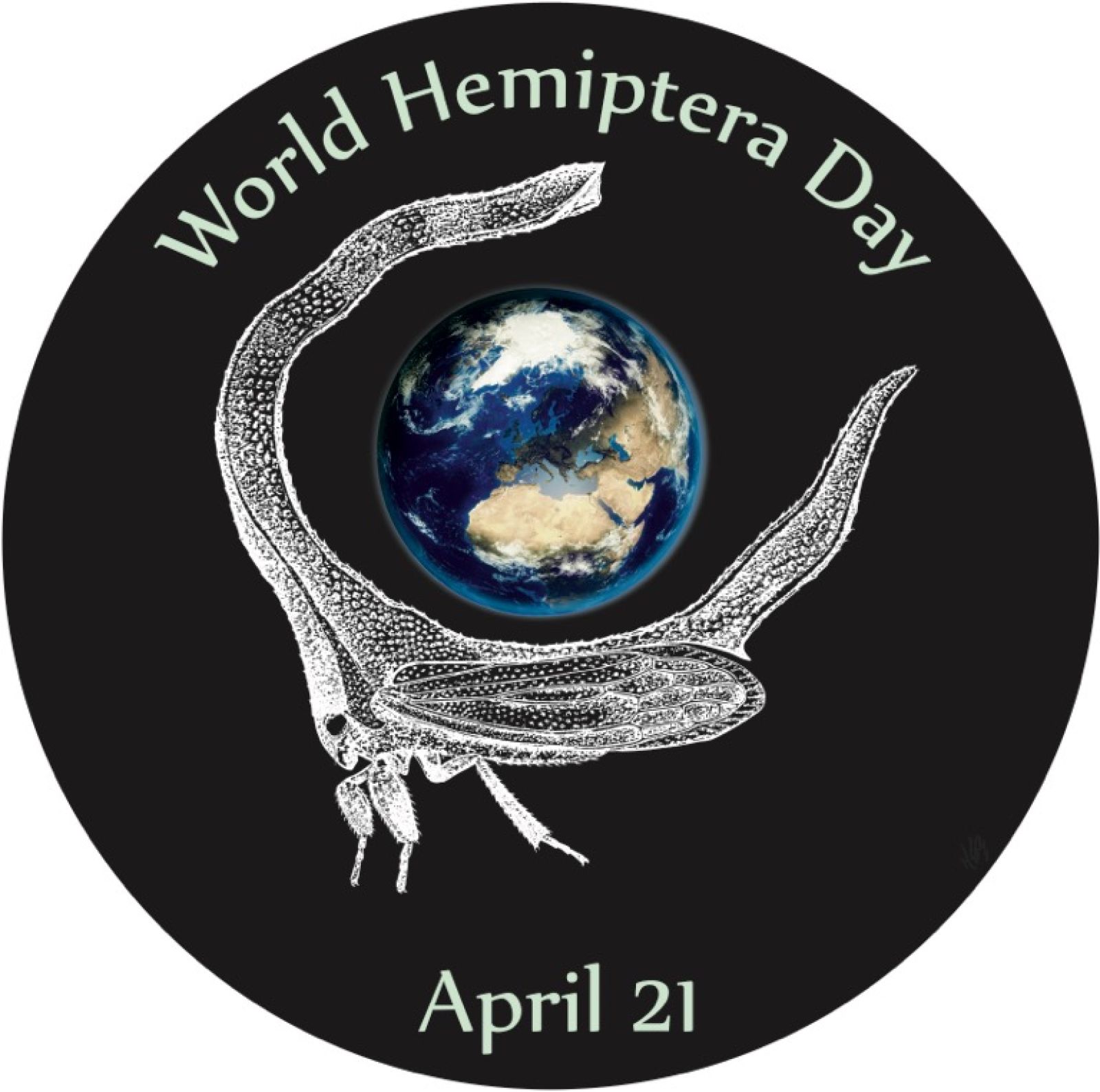 © 2016, Jacek Szwedo, CC license: by_nc_sa_3_0.
© 2016, Jacek Szwedo, CC license: by_nc_sa_3_0.
On 21 April, join our colleagues worldwide in celebrating the rich diversity in hemipteran forms, biologies, behaviors, ecologies, and interactions with human society. We are especially pleased that the World Hemiptera Day logo, created by Jacek Szwedo, features a handsome treehopper.
 © 2016, Jacek Szwedo, CC license: by_nc_sa_3_0.
© 2016, Jacek Szwedo, CC license: by_nc_sa_3_0.
New Research on the Majestic Treehopper Subfamily Heteronotinae
2017-04-25
Evangelitsa, O.; Sakakibara, A. M.; Cryan, J. R.; Urban, J. M. 2017a. A phylogeny of the treehopper subfamily Heteronotinae reveals convergent pronotal traits (Hemiptera: Auchenorrhyncha: Membracidae). Systematic Entomology 42: 410-428.
This work includes a phylogenetic reconstruction of relationships within the Heteronotinae based on DNA nucleotide sequence data from 5 nuclear and 2 mitochondrial genes for an extensive sampling of 9 of 10 genera currently placed in this subfamily. Furthermore, mapping selected morphological traits of the pronotum on the resulting phylogeny suggested repeated acquisitions of similar traits. Many of these pronotal traits apparently arose independently within the genus Heteronotus. Overall, the data support the monophyly of the subfamily (excluding Darnoides) and five of its included genera, but also suggest the existence of new undescribed genera as well a species complex with Heteronotus delineatus. At the species level, one new combination is proposed and one original combination is reinstated.
This work includes a phylogenetic reconstruction of relationships within the Heteronotinae based on DNA nucleotide sequence data from 5 nuclear and 2 mitochondrial genes for an extensive sampling of 9 of 10 genera currently placed in this subfamily. Furthermore, mapping selected morphological traits of the pronotum on the resulting phylogeny suggested repeated acquisitions of similar traits. Many of these pronotal traits apparently arose independently within the genus Heteronotus. Overall, the data support the monophyly of the subfamily (excluding Darnoides) and five of its included genera, but also suggest the existence of new undescribed genera as well a species complex with Heteronotus delineatus. At the species level, one new combination is proposed and one original combination is reinstated.
Festschrift Celebrating the Career of Albino Morimasa Sakakibara: Zootaxa 4281(1)
2017-07-10
Just in time for the 15th International Auchenorrhyncha Congress in Rio de Janeiro, Brazil (9-15 July 2017), a special issue of Zootaxa is hot off the presses to celebrate the prolific and impressive career of esteemed Brazilian hemipterist Albino M. Sakakibara. This Festschrift (dated 22 June 2017) includes 23 original taxonomic works in honor of Dr. Sakakibara. The Foreword from the Editors (Evangelista, Takiya, and Dietrich 2017b) presents an overview of Sakakibara's extraordinary contributions on the Auchenorrhyncha. It includes a bibliography of his works and a list of 33 patronyms dedicated to him (see, for example, representatives of the treehopper genus Sakakibarella, below). We agree with the editors who conclude that A. M. Sakakibara "will inspire generations of young taxonomists to come."
Evangelista, O.; Takiya, D. M.; Dietrich, C. H. 2017b. The art and science of describing nature's surrealists: Foreword from the Editors. Zootaxa 4281(1): 5-21. [in Evangelista, O.; Takiya, D. M.; Dietrich, C. H. (eds.). 2017a. The art and science of describing nature's surrealists: Festschrift Celebrating the Career of Albino Morimasa Sakakibara.] This editorial foreword is available online.
1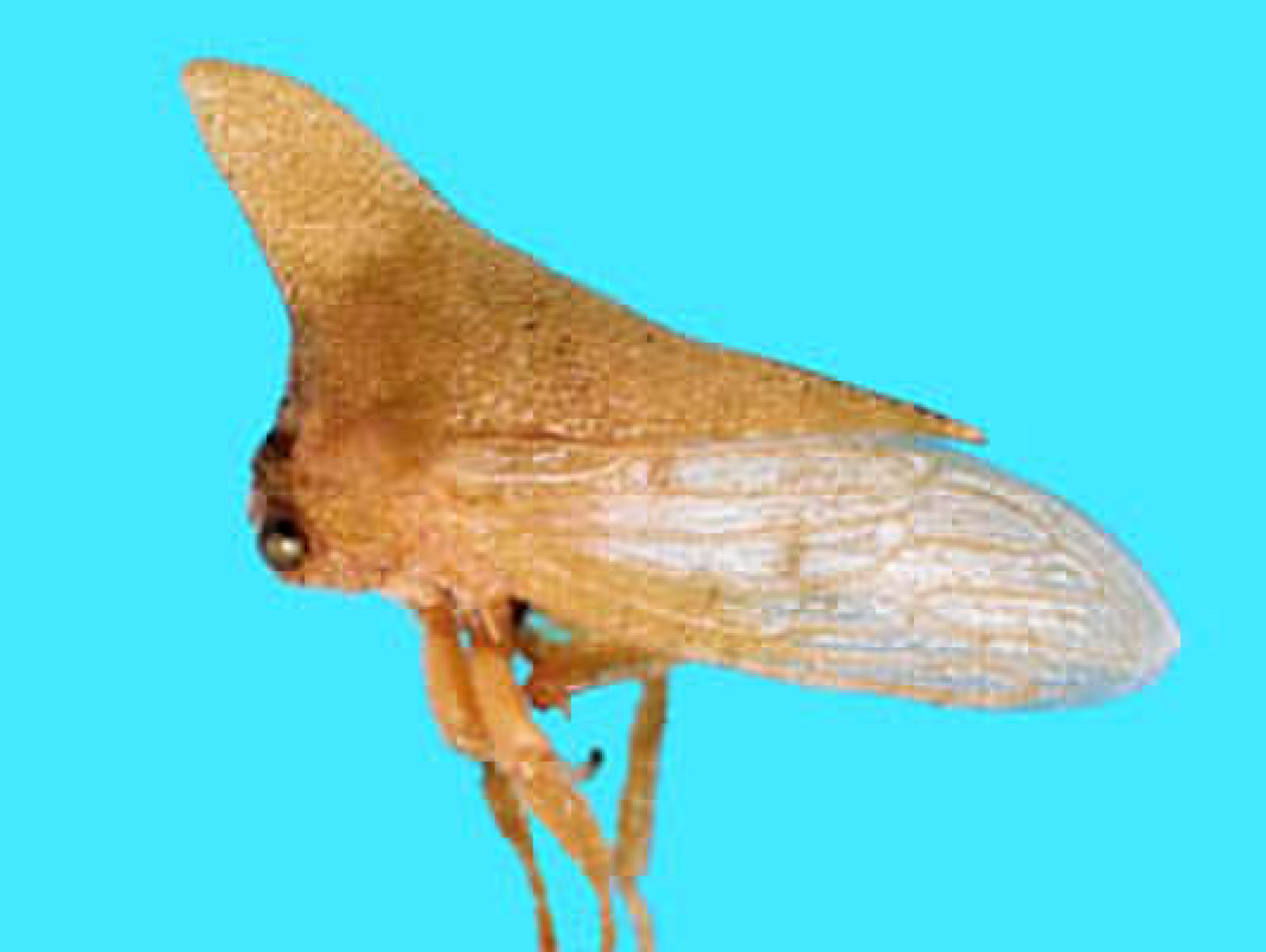 2
2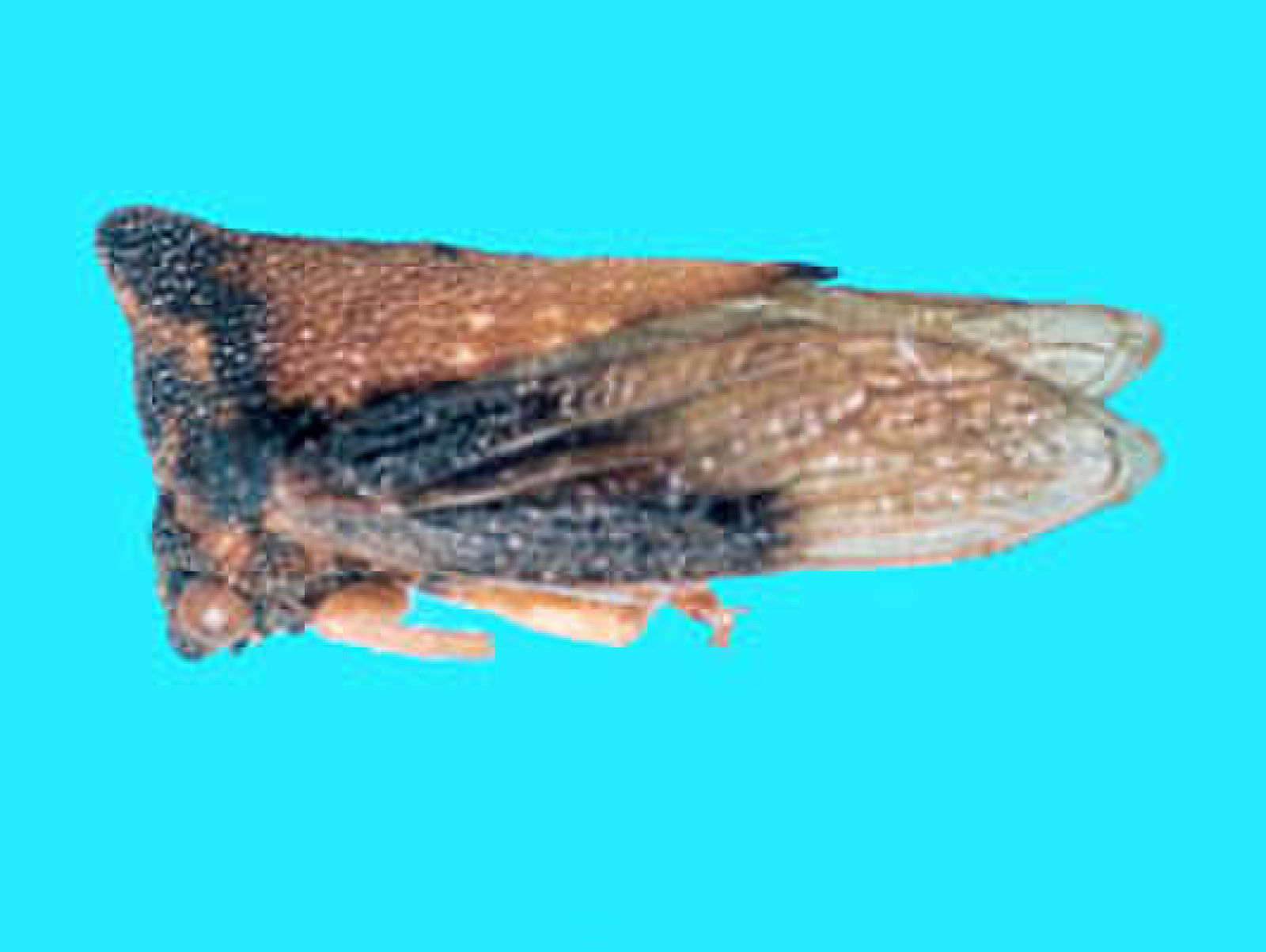
Figures 1-2. 1, Sakakibarella elongata Creão-Duarte; 2, S. seminigra Creão-Duarte. (Images © 2006, by Albino M. Sakakibara).
Dr. Sakakibara is especially well known for his many outstanding works on Neotropical treehoppers as documented in the bibliography of his works up to April 2017 (Evangelista et al. 2017a, pp. 17-21). Eight original taxonomic publications in the 2017 Festschrift treat treehoppers:
Flórez-V., C.; Evangelista, O. 2017a. New species in the treehopper genus Bocydium Latreille, with description of nymphal stages and observations on their natural history. Zootaxa 4281: 22-57. [in The art and science of describing nature's surrealists: Festschrift Celebrating the Career of Albino Morimasa Sakakibara] This work presents an illustrated key to the 20 species of Bocyidium, including 6 n. spp. described by the first author: B. bilobum, B. hadronotum, B. mae, B. sakakibarai, B. sanmiguelense and B. tatamaense; also B. cubitale Richter, 1954, is placed a junior synonym of B. bulliferum Goding, 1930.
Creão-Duarte, A. J.; Cabral, V. A.; Lourenço, A. 2017a. A new species of Lycoderes Sakakibara [sic] (Hemiptera, Membracidae, Stegaspidinae) from Brazil. Zootaxa 4281(1): 58-62. [in The art and science of describing nature's surrealists: Festschrift Celebrating the Career of Albino Morimasa Sakakibara] Lycoderes albinoi, n. sp., is described and illustrated--thus 18 valid species are recognized for the genus Lycoderes Germar [sensu Sakakibara 2013a].
Dietrich, C, H. 2017a. A new treehopper genus and species from Puerto Rico (Hemiptera: Membracidae: Stegaspidinae) with notes on other Caribbean Membracidae. Zootaxa 4281(1): 63-69. [in The art and science of describing nature's surrealists: Festschrift Celebrating the Career of Albino Morimasa Sakakibara] Bortinctolania, n. gen., and B. sakakibarai, n. sp., are described and placed as incertae sedis within the subfamily Stegaspidinae. A key is provided to those Caribbean genera that lack a posterior pronotal process and are placed incertae sedis either within Membracidae (genus Togotolania) or within Stegaspidinae (3 genera).
Gaiani, M. A. 2017a. Problematode: an enigmatic new genus of Membracidae (Hemiptera with two new species from Venezuela. [in The art and science of describing nature's surrealists: Festschrift Celebrating the Career of Albino Morimasa Sakakibara] Problematode, n. gen. (incertae sedis within the family Membracidae), is described to include P. sakakibarai and P. inerme, n. spp., from the Coastal Montane Forests of Venezuela.
Creão-Duarte, A. J.; Rothéa, R. R. A. D.; Lourenço, A.; Cabral, V. A.; Evangelista, O. 2017a. Two rema[r]kable new species of Notocera Amyot and Serville, 1843 (Hemiptera, Membracidae, Hypsoprorini) from the Brazilian Caatinga. Zootaxa 4281(1): 77-89. [in The art and science of describing nature's surrealists: Festschrift Celebrating the Career of Albino Morimasa Sakakibara] This work describes and illustrates Notocera colavitei Creão-Duarte and Rothéa, n. sp., and N. sakakibarai Creão-Duarte and Lourenço, n. sp.
Camacho, L. F.; Flórez-V, C.; Evangelista, O. 2017a. Notes on the genus Sakakibarella Creão-Duarte with description of three new species (Membracidae: Membracinae: Hoplophorionini). Zootaxa 4281(1): 90-107. [in The art and science of describing nature's surrealists: Festschrift Celebrating the Career of Albino Morimasa Sakakibara] This work presents a key to the 7 species of Sakakibarella, including 3 n. spp. described by Flórez-V and Camacho from Colombia: S. albinoi, S. crassa, S. santaceciliae.
Gonzalez-Mozo, L.; McKamey, S. H.; Ware, J. L.; Hamilton, G. 2017a Two new species of Darnini (Hemiptera: Membracidae) from Colombia and Peru. Zootaxa 4281(1): 108-114. [in The art and science of describing nature's surrealists: Festschrift Celebrating the Career of Albino Morimasa Sakakibara] Cyphotes colombiensis, n. sp., from Colombia, and Hypheodana sakakibarai, n. sp., from Peru, are described and illustrated.
McKamey, S. H. 2017a. Two new species of unusual Ceresini (Hemiptera: Membracidae: Smiliinae). Zootaxa 4281(1): 115-119. [in The art and science of describing nature's surrealists: Festschrift Celebrating the Career of Albino Morimasa Sakakibara] Cyphonia sakakibarai, n. sp., from Brazil, and Poppea unispina, n. sp., from Costa Rica, are described and illustrated.
Evangelista, O.; Takiya, D. M.; Dietrich, C. H. 2017b. The art and science of describing nature's surrealists: Foreword from the Editors. Zootaxa 4281(1): 5-21. [in Evangelista, O.; Takiya, D. M.; Dietrich, C. H. (eds.). 2017a. The art and science of describing nature's surrealists: Festschrift Celebrating the Career of Albino Morimasa Sakakibara.] This editorial foreword is available online.
1
 2
2
Figures 1-2. 1, Sakakibarella elongata Creão-Duarte; 2, S. seminigra Creão-Duarte. (Images © 2006, by Albino M. Sakakibara).
Dr. Sakakibara is especially well known for his many outstanding works on Neotropical treehoppers as documented in the bibliography of his works up to April 2017 (Evangelista et al. 2017a, pp. 17-21). Eight original taxonomic publications in the 2017 Festschrift treat treehoppers:
Flórez-V., C.; Evangelista, O. 2017a. New species in the treehopper genus Bocydium Latreille, with description of nymphal stages and observations on their natural history. Zootaxa 4281: 22-57. [in The art and science of describing nature's surrealists: Festschrift Celebrating the Career of Albino Morimasa Sakakibara] This work presents an illustrated key to the 20 species of Bocyidium, including 6 n. spp. described by the first author: B. bilobum, B. hadronotum, B. mae, B. sakakibarai, B. sanmiguelense and B. tatamaense; also B. cubitale Richter, 1954, is placed a junior synonym of B. bulliferum Goding, 1930.
Creão-Duarte, A. J.; Cabral, V. A.; Lourenço, A. 2017a. A new species of Lycoderes Sakakibara [sic] (Hemiptera, Membracidae, Stegaspidinae) from Brazil. Zootaxa 4281(1): 58-62. [in The art and science of describing nature's surrealists: Festschrift Celebrating the Career of Albino Morimasa Sakakibara] Lycoderes albinoi, n. sp., is described and illustrated--thus 18 valid species are recognized for the genus Lycoderes Germar [sensu Sakakibara 2013a].
Dietrich, C, H. 2017a. A new treehopper genus and species from Puerto Rico (Hemiptera: Membracidae: Stegaspidinae) with notes on other Caribbean Membracidae. Zootaxa 4281(1): 63-69. [in The art and science of describing nature's surrealists: Festschrift Celebrating the Career of Albino Morimasa Sakakibara] Bortinctolania, n. gen., and B. sakakibarai, n. sp., are described and placed as incertae sedis within the subfamily Stegaspidinae. A key is provided to those Caribbean genera that lack a posterior pronotal process and are placed incertae sedis either within Membracidae (genus Togotolania) or within Stegaspidinae (3 genera).
Gaiani, M. A. 2017a. Problematode: an enigmatic new genus of Membracidae (Hemiptera with two new species from Venezuela. [in The art and science of describing nature's surrealists: Festschrift Celebrating the Career of Albino Morimasa Sakakibara] Problematode, n. gen. (incertae sedis within the family Membracidae), is described to include P. sakakibarai and P. inerme, n. spp., from the Coastal Montane Forests of Venezuela.
Creão-Duarte, A. J.; Rothéa, R. R. A. D.; Lourenço, A.; Cabral, V. A.; Evangelista, O. 2017a. Two rema[r]kable new species of Notocera Amyot and Serville, 1843 (Hemiptera, Membracidae, Hypsoprorini) from the Brazilian Caatinga. Zootaxa 4281(1): 77-89. [in The art and science of describing nature's surrealists: Festschrift Celebrating the Career of Albino Morimasa Sakakibara] This work describes and illustrates Notocera colavitei Creão-Duarte and Rothéa, n. sp., and N. sakakibarai Creão-Duarte and Lourenço, n. sp.
Camacho, L. F.; Flórez-V, C.; Evangelista, O. 2017a. Notes on the genus Sakakibarella Creão-Duarte with description of three new species (Membracidae: Membracinae: Hoplophorionini). Zootaxa 4281(1): 90-107. [in The art and science of describing nature's surrealists: Festschrift Celebrating the Career of Albino Morimasa Sakakibara] This work presents a key to the 7 species of Sakakibarella, including 3 n. spp. described by Flórez-V and Camacho from Colombia: S. albinoi, S. crassa, S. santaceciliae.
Gonzalez-Mozo, L.; McKamey, S. H.; Ware, J. L.; Hamilton, G. 2017a Two new species of Darnini (Hemiptera: Membracidae) from Colombia and Peru. Zootaxa 4281(1): 108-114. [in The art and science of describing nature's surrealists: Festschrift Celebrating the Career of Albino Morimasa Sakakibara] Cyphotes colombiensis, n. sp., from Colombia, and Hypheodana sakakibarai, n. sp., from Peru, are described and illustrated.
McKamey, S. H. 2017a. Two new species of unusual Ceresini (Hemiptera: Membracidae: Smiliinae). Zootaxa 4281(1): 115-119. [in The art and science of describing nature's surrealists: Festschrift Celebrating the Career of Albino Morimasa Sakakibara] Cyphonia sakakibarai, n. sp., from Brazil, and Poppea unispina, n. sp., from Costa Rica, are described and illustrated.
25 Years of Membrasketeers: The Silver Anniversary Aggregation (1-4 June 2017)
2017-07-24
The early June weather at Little Orleans, Maryland, was perfect for the Silver Anniversary of the Annual Treehopper Gathering. Participants (Fig.1) celebrated by feasting, socializing, collecting insects for research or fun (Fig. 2), swimming, hiking, and other activities. A celebratory T-shirt (Figs. 3-4), designed by Matt Bertone and Kelley Tilmon to commemorate the occasion, lists scores of dedicated attendees from prior years, including two (Bartlett and Deitz) who attended all 25 gatherings.
Fig. 1. The 40 attendees for 2017 included (left to right: b= back; f= front): Hova Amsbury, Eli Wyman, bAnthony T. Gonzon, Tyler Hagerty, bAndrew Short, Abby Clarke, bJim Liebherr, Ashley Kennedy, fCera Fisher, Devan George, bJamie Zahniser, Becca Robertson, Matt Wallace, bThomas Fisher, Stuart McKamey, Ann Hajek, bSteve Toth, Dawn Flynn (wearing our 2012 T shirt), Jason Owens, Mark Rothschild, bLewis Deitz, Kelley Tilmon, fNate Nazdrowicz (wore the same shirt also in group photos for 2013, 2014, 2015, and 2016), Charles Bartlett, bLawrence Barringer, bAnthony Deczynski, Shawn T. Dash, bBrian Wiegmann, Laura Catalina Gonzalez Mozo (barely visible), Penelope Park held by Yuri Park, fFelipe Gonzalez Mozo, bMicah Fletcher, fDuncan Park, Sarah Kocher, fAlexis Park, bEthan Whitecotton, Ellie (the dog attendee) held by Katrina Dash, and Tiffany Le Ngoc. [Photo © 2017, by Ethan Whitecotton (more E.W. images).]
1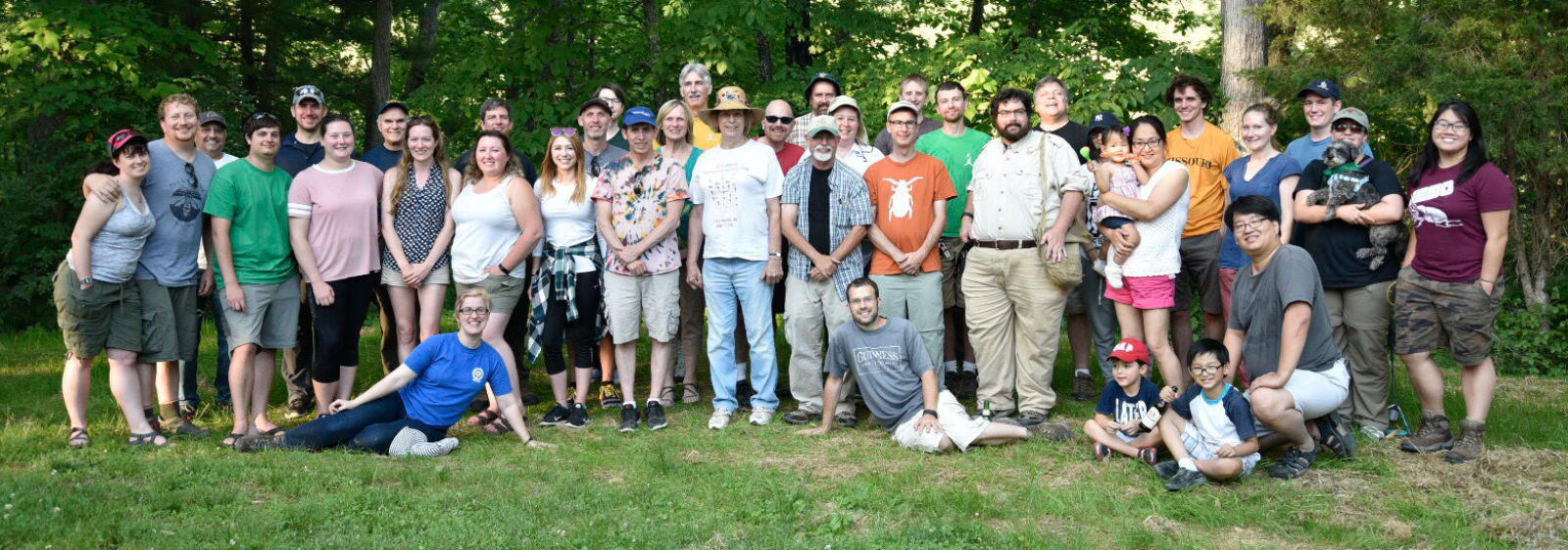
Figs. 2-4. 2, Black lights attract the strangest critters (photo © 2017, by Eli S. Wyman). 3-4, Celebratory T-shirt (photos © 2017, by Matthew A. Bertone): 3, front. 4, back.
2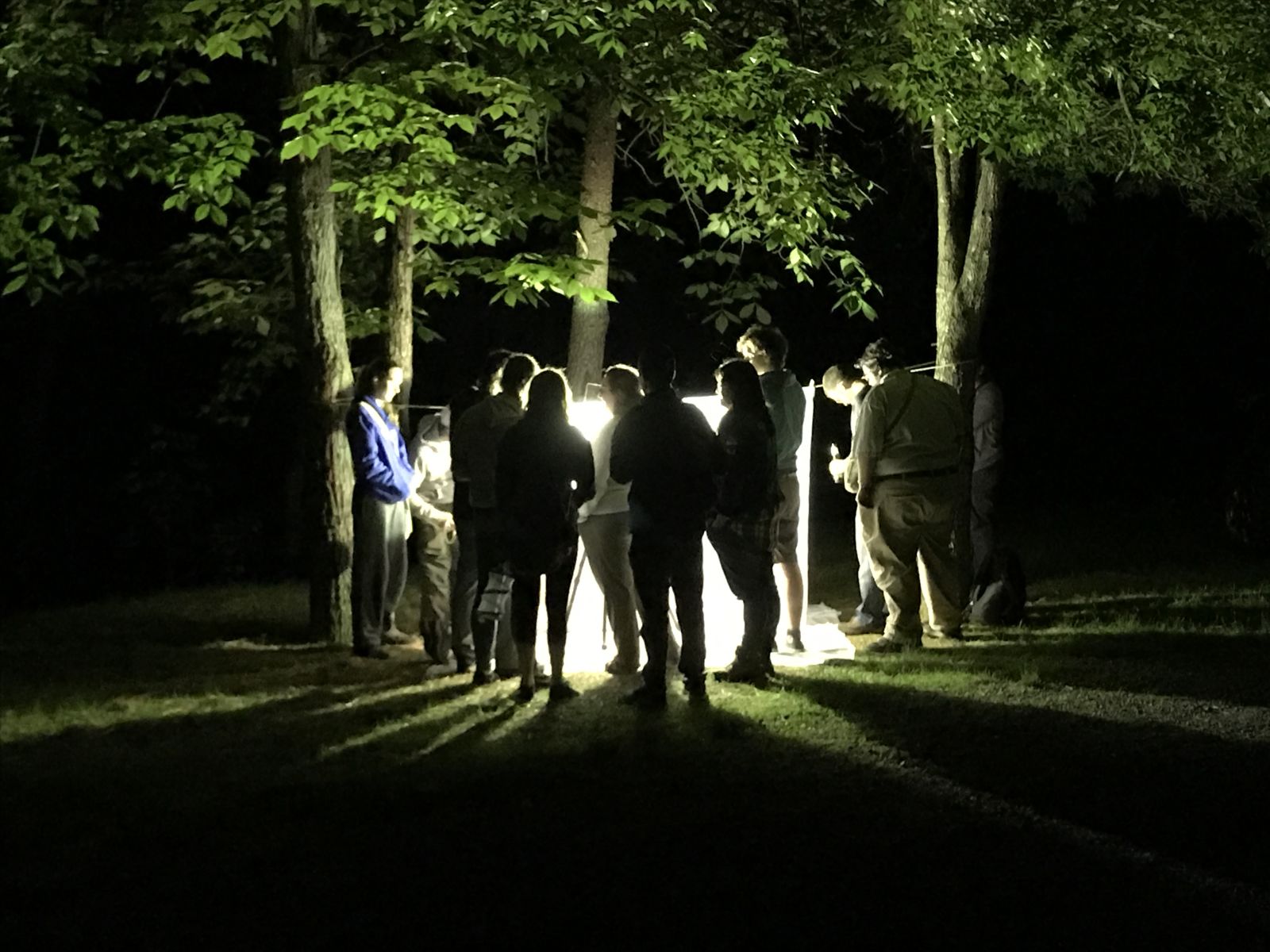
3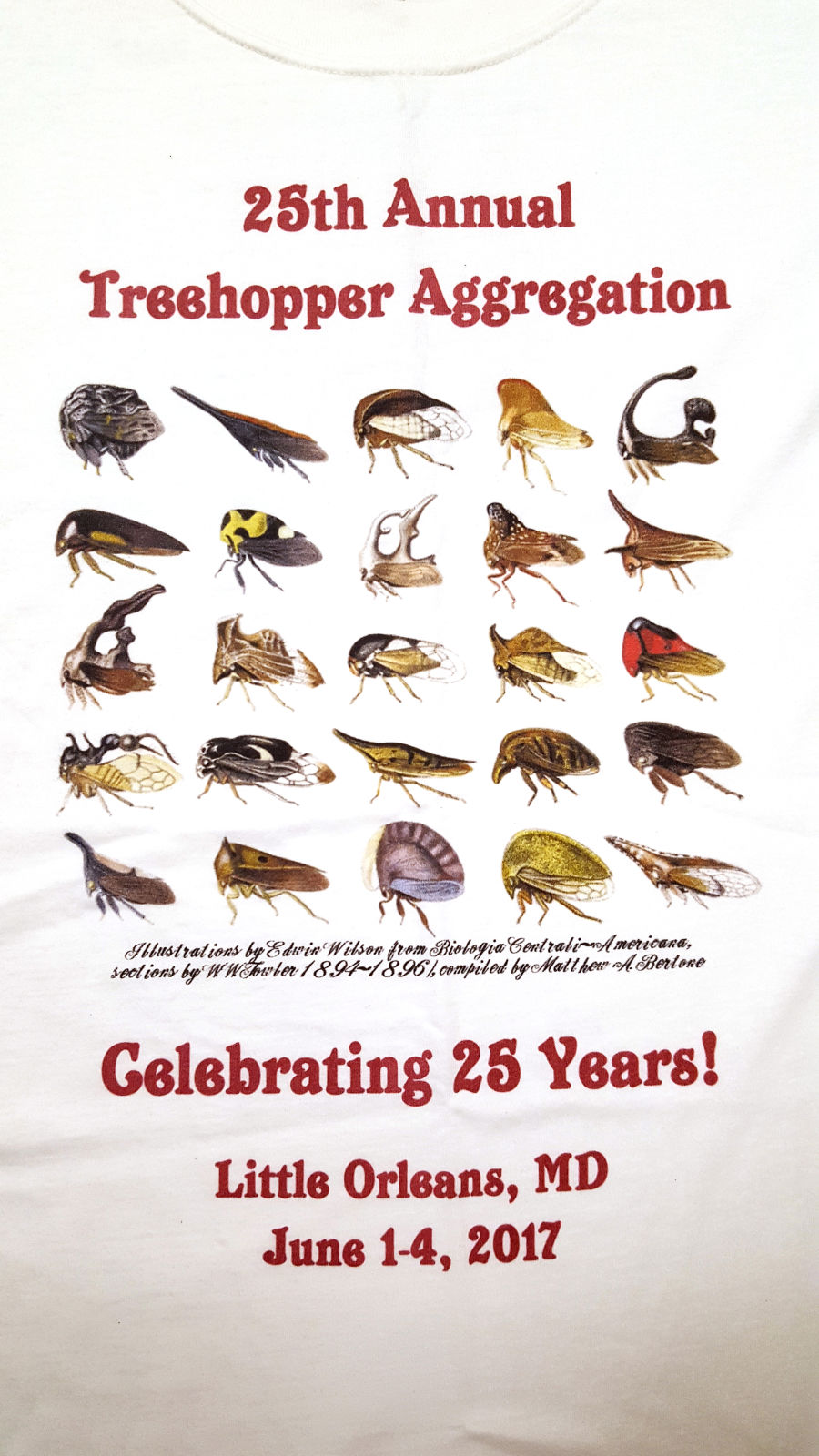 4
4 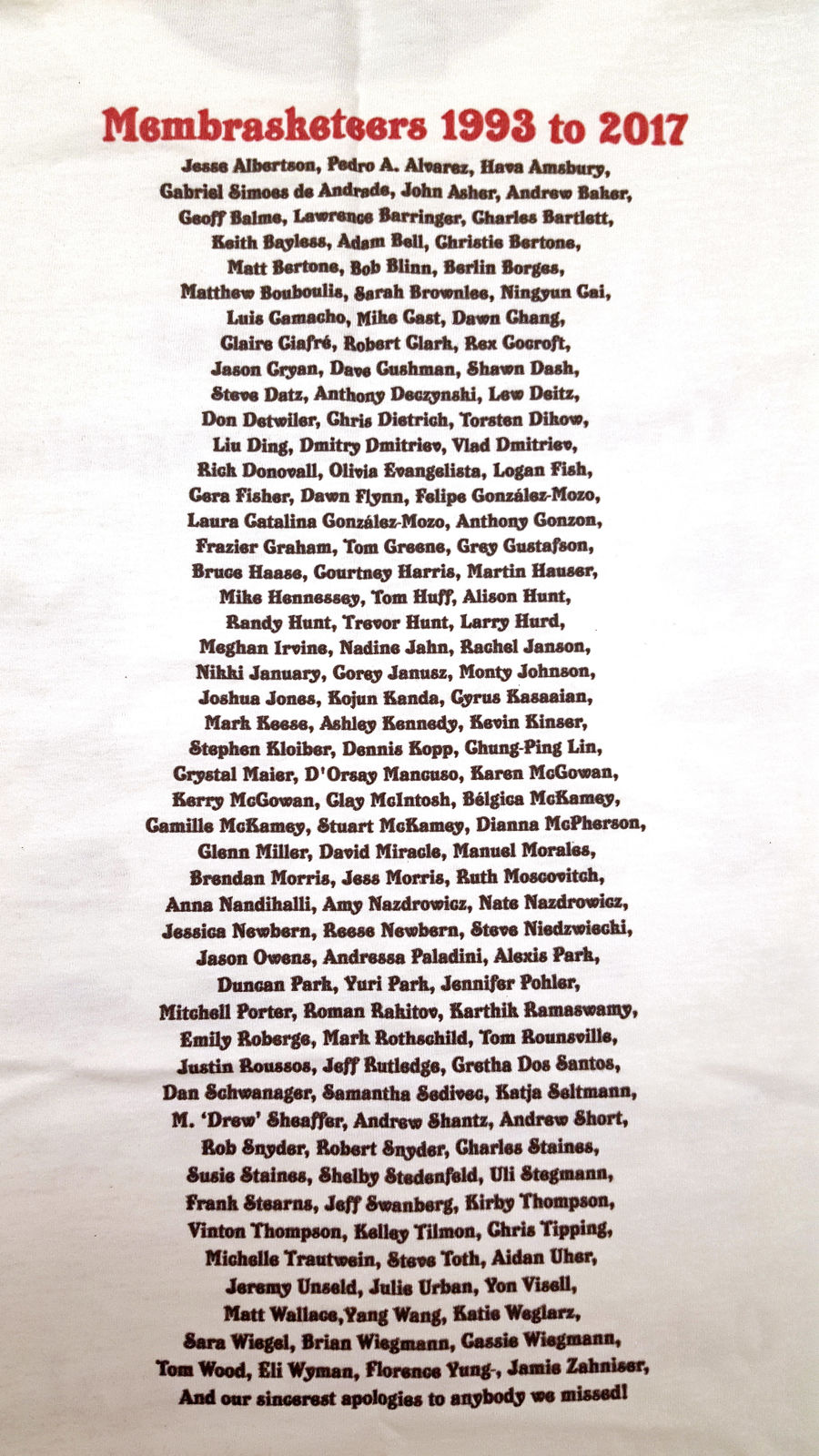
Notable finds among treehoppers were needed immatures for projects on the tribe Telamonini (Matt Wallace) and an elusive species in the Enchenopa binotata complex (Mark Rothschild). Also many specimens were identified, swapped, lent, or donated among the attendees. Adding the icing to the cake, Stuart McKamey made available thousands of astonishing high resolution images of primary types of treehopper species held by U.S. National Museum of Natural History, which we plan to add to the Treehoppers Website overtime (Fig. 5-12). For nearly all of the types, images of the anterior, dorsal and lateral aspects are represented, along with photos of the specimen labels. We are grateful to Stuart for sharing these images. As shown below, each image is worth a thousand words.
Figs. 5-12. Lateral aspects of selected holotypes in the tribe Stegaspidini held by the U.S. National Museum of Natural History, Washington, D.C. [Photos by Gary Oulette, NOT_IN_COPYRIGHT (USNM 2017)]. 5, Flexocentrus brunneus Funkhouser 1930 [= F. felinus (Haviland 1925)]. 6, Lycoderes luteus Funkhouser 1940 [now Lycoderides luteus (Funkhouser 1940)]. 7, Lycoderes (Lycoderides) nathanieli Cryan in Cryan and Deitz 1999 [now Lycoderides nathanieli (Cryan in Cryan and Deitz 1999)]. 8, Lycoderes triangulata Funkhouser 1919 [now Lycoderides triangulata (Funkhouser 1919)]. 9, Stegaspis viridis Funkhouser 1915 [= S. bracteata (Fabricius 1787)]. 10, Stylocentrus rubrinigris Funkhouser 1940. 12, Umbelligerus peruviensis Deitz 1975. 12, Umbelligerus stockwelli Flynn 2014.
5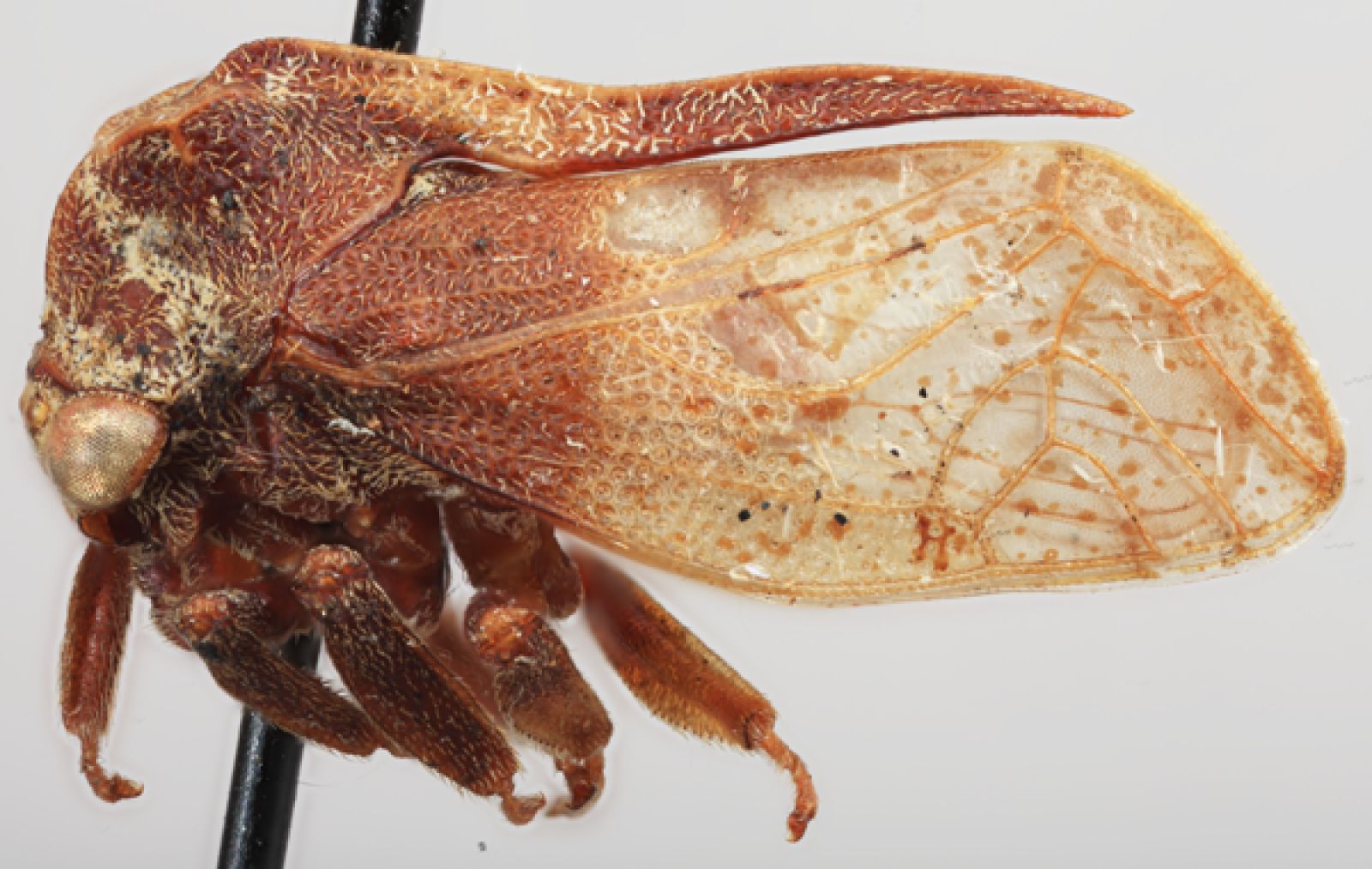 6
6 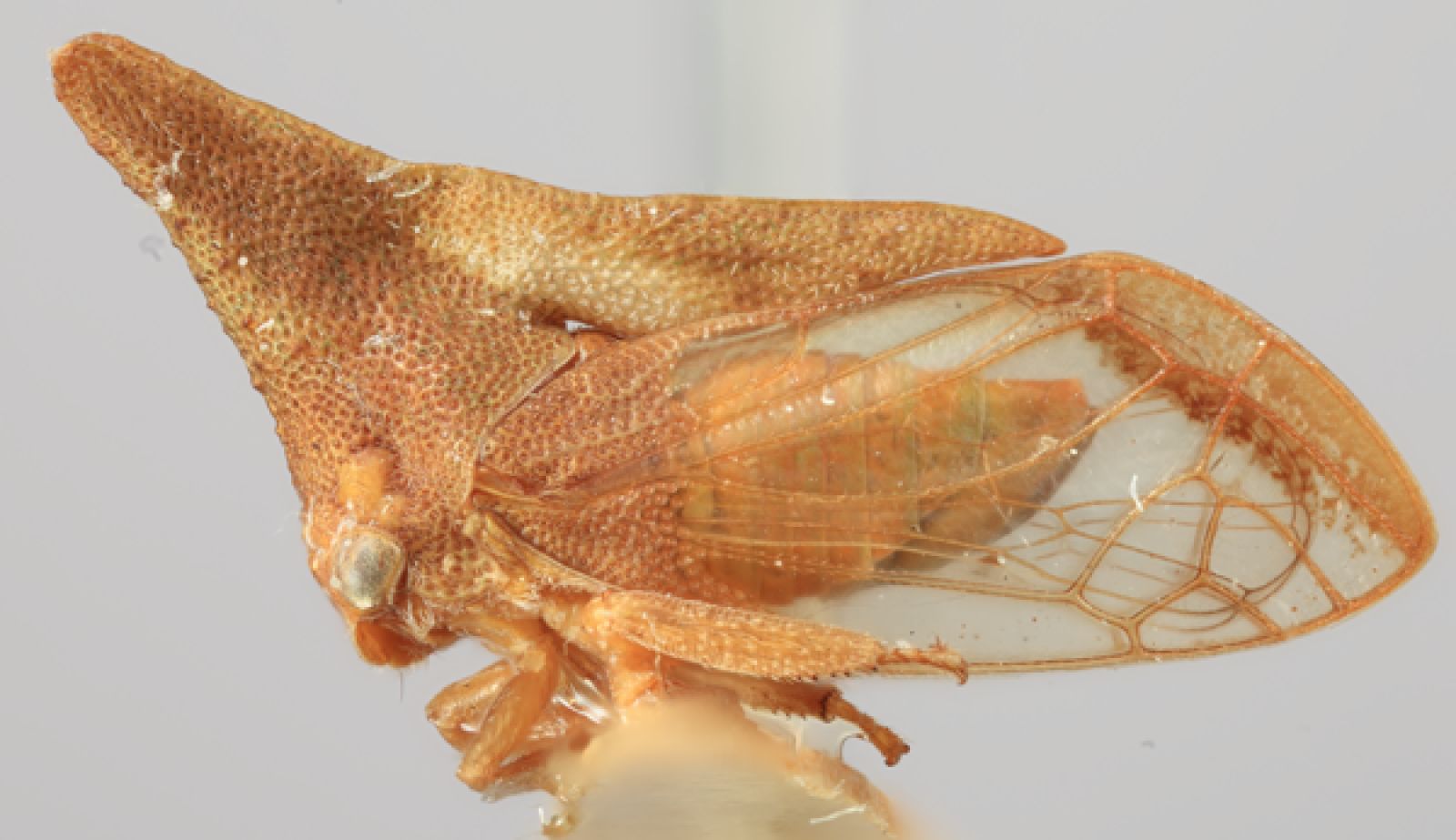
7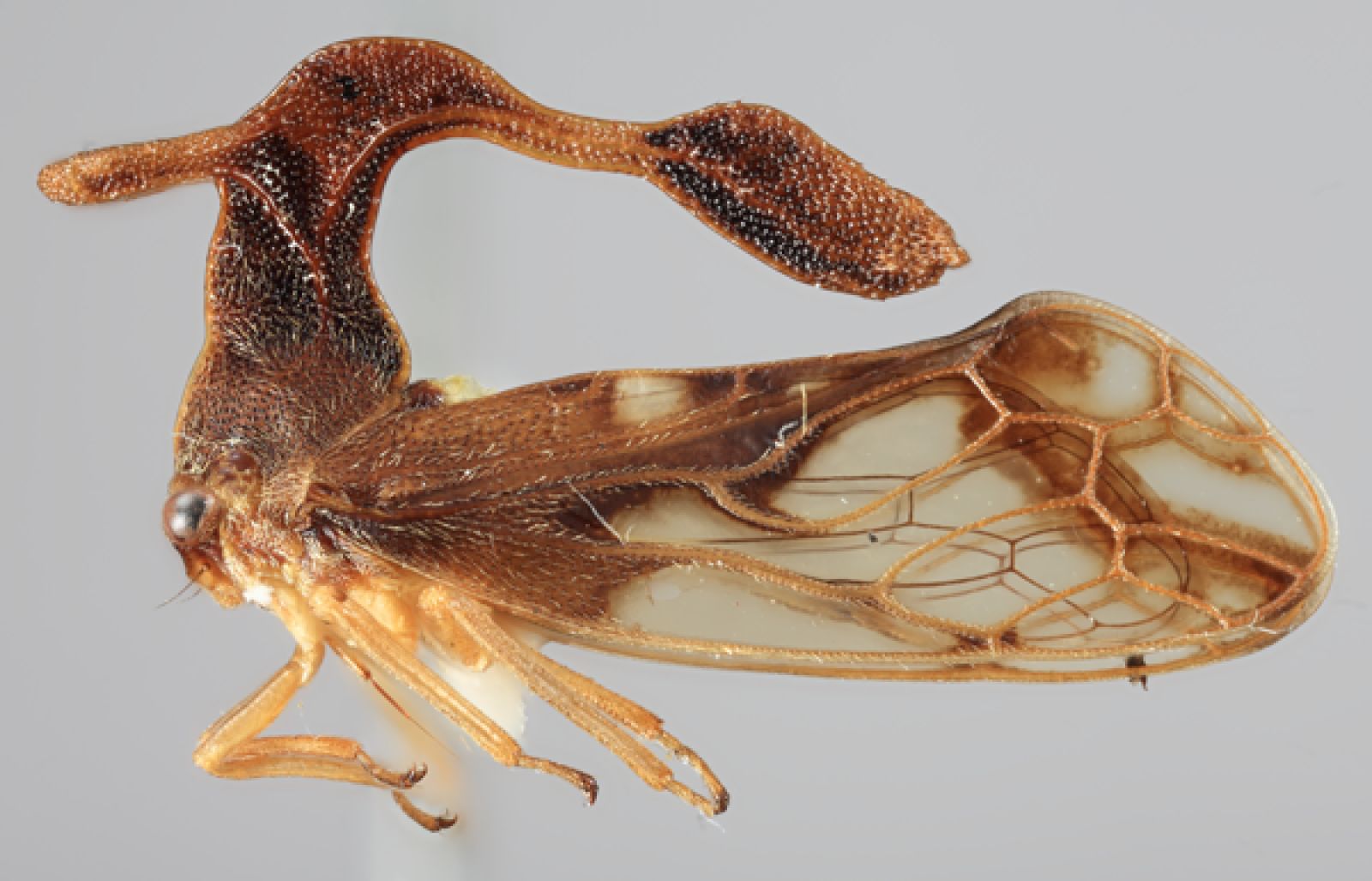 8
8 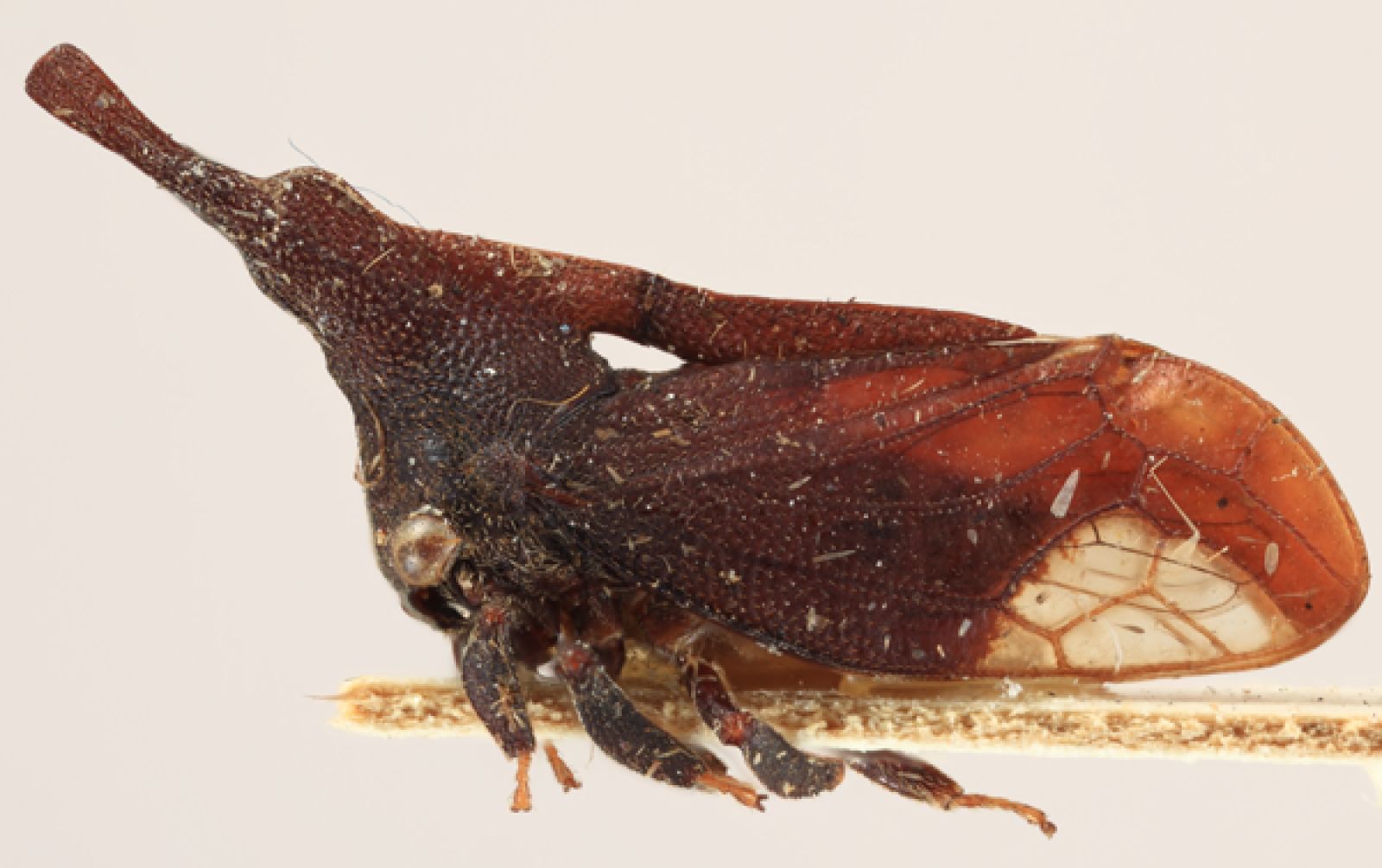
9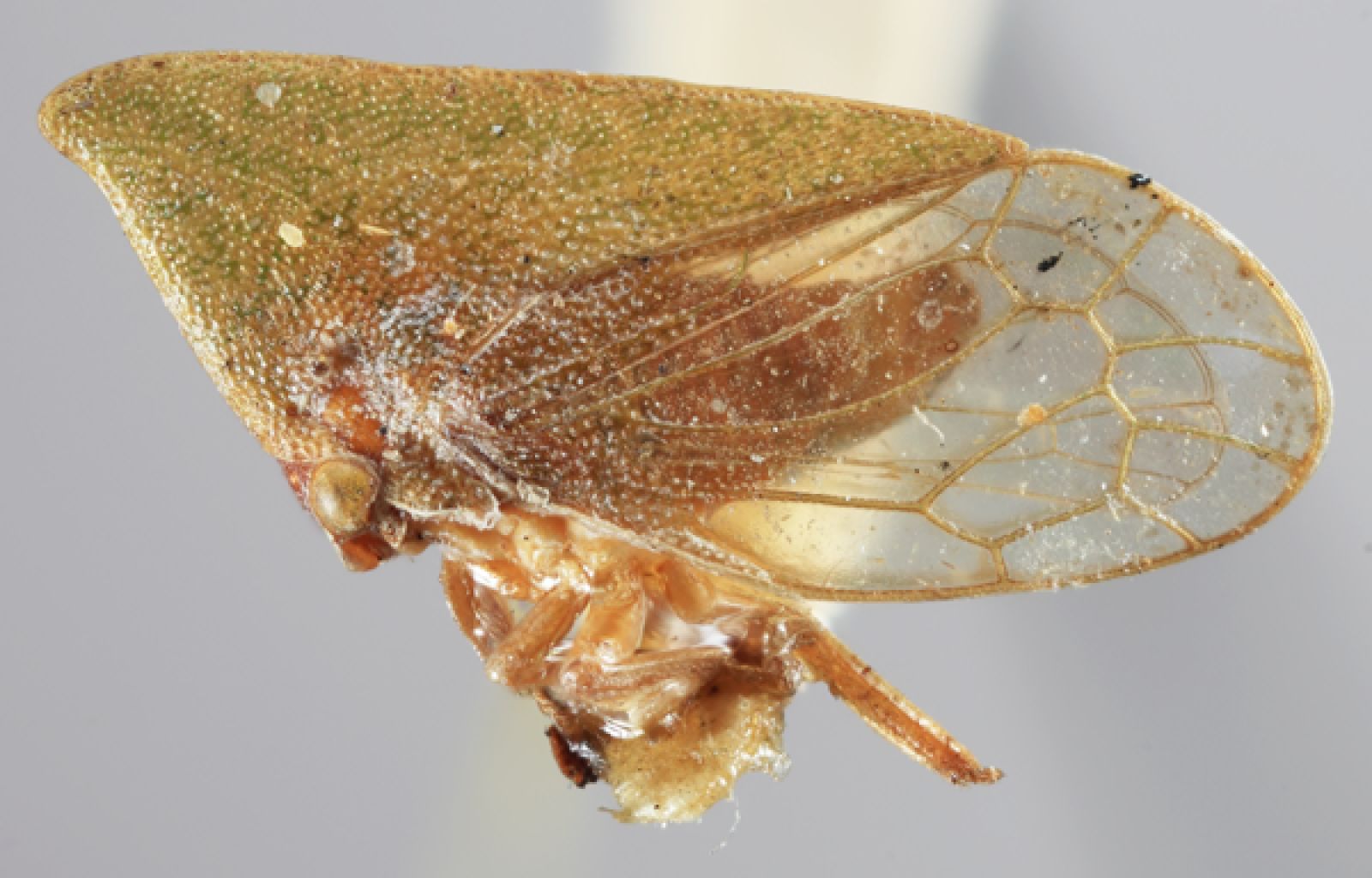 10
10 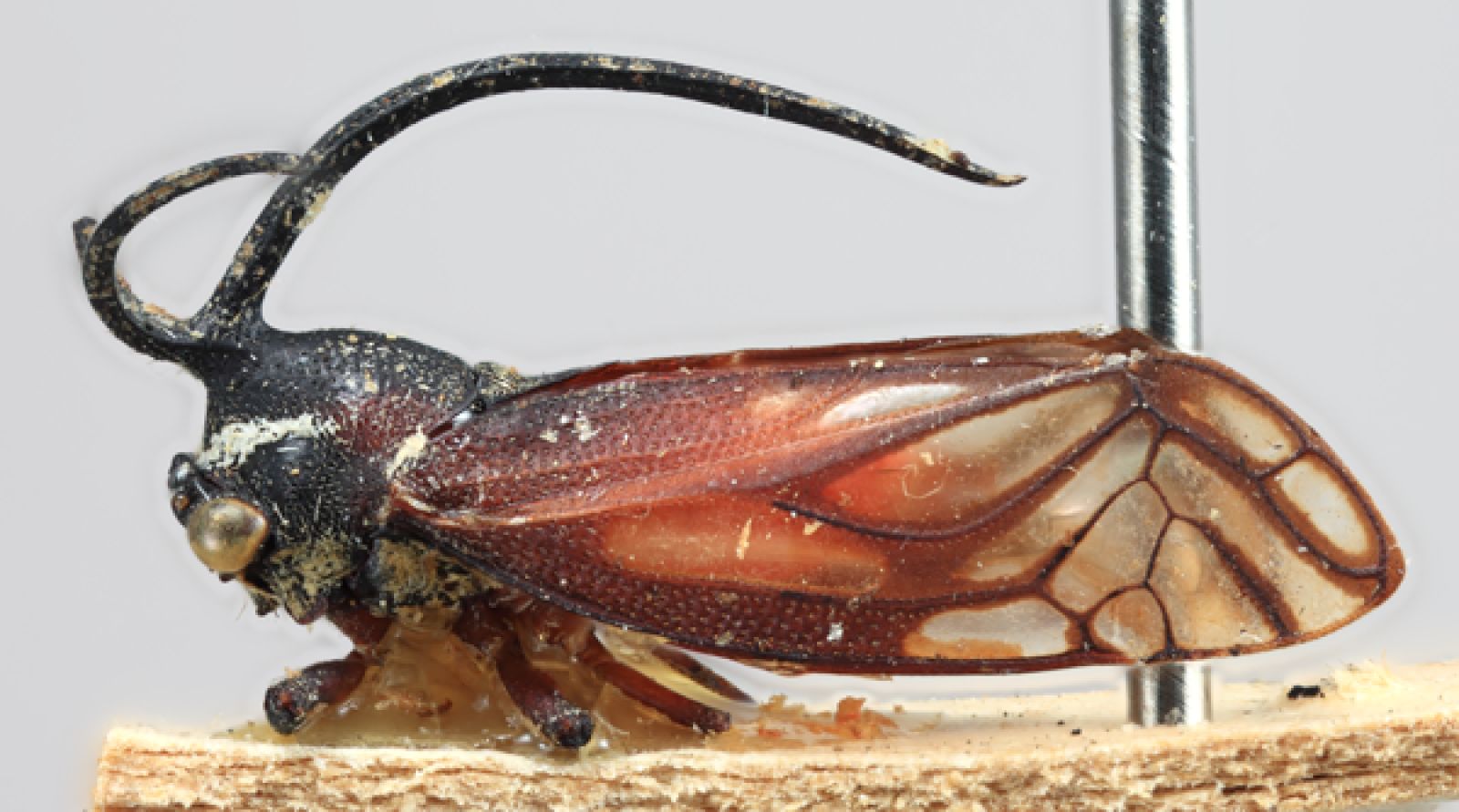
11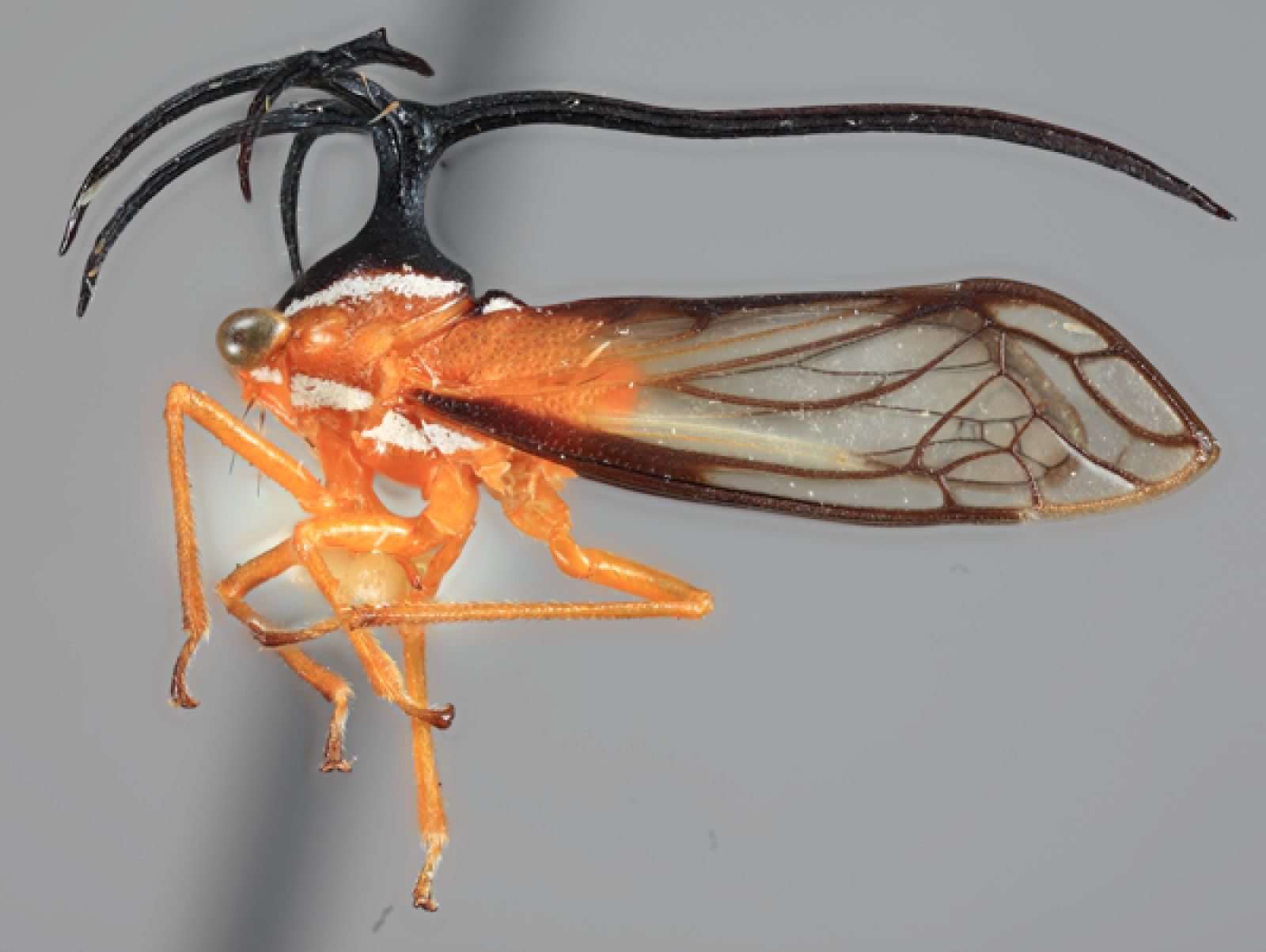 12
12 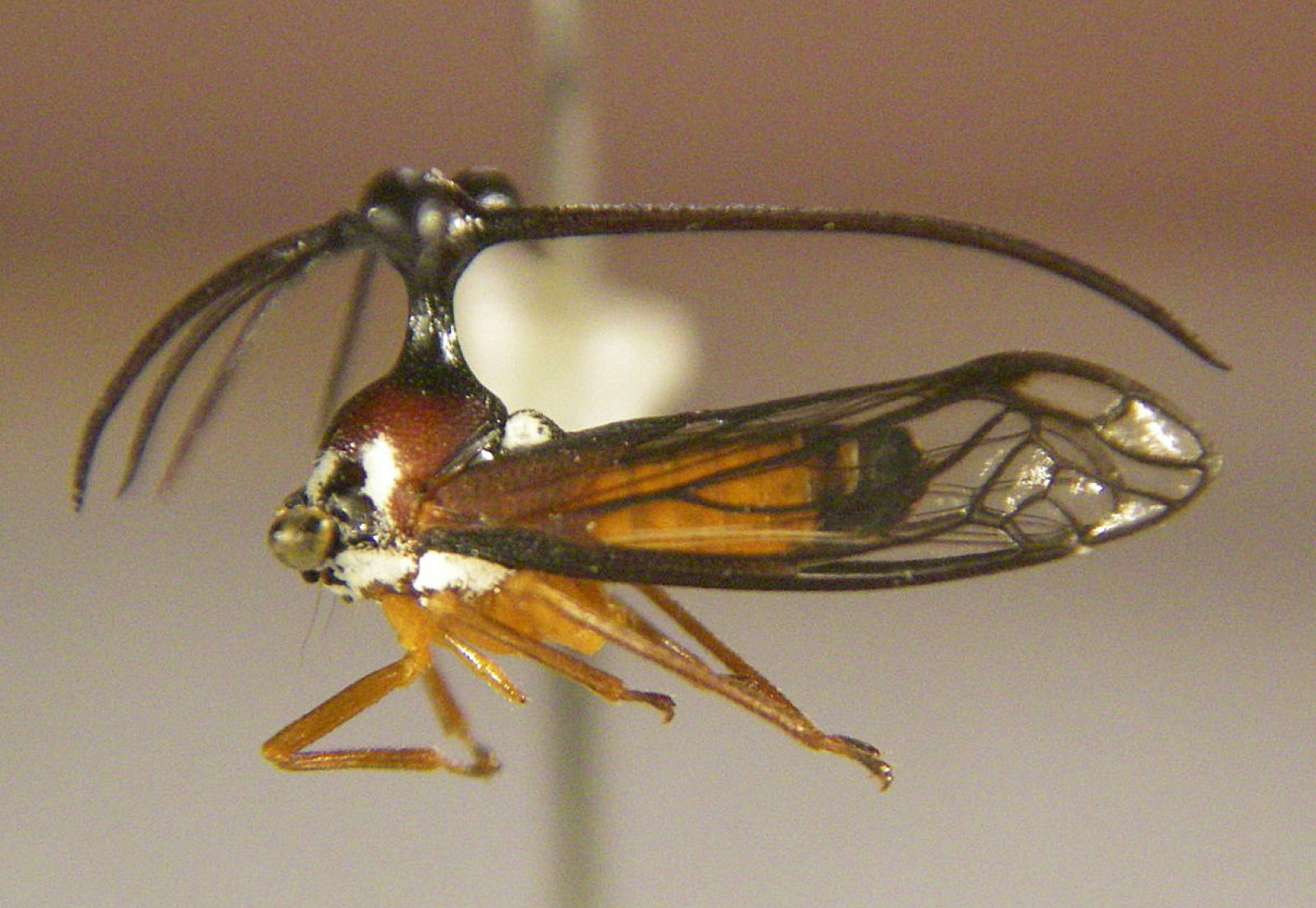
Fig. 1. The 40 attendees for 2017 included (left to right: b= back; f= front): Hova Amsbury, Eli Wyman, bAnthony T. Gonzon, Tyler Hagerty, bAndrew Short, Abby Clarke, bJim Liebherr, Ashley Kennedy, fCera Fisher, Devan George, bJamie Zahniser, Becca Robertson, Matt Wallace, bThomas Fisher, Stuart McKamey, Ann Hajek, bSteve Toth, Dawn Flynn (wearing our 2012 T shirt), Jason Owens, Mark Rothschild, bLewis Deitz, Kelley Tilmon, fNate Nazdrowicz (wore the same shirt also in group photos for 2013, 2014, 2015, and 2016), Charles Bartlett, bLawrence Barringer, bAnthony Deczynski, Shawn T. Dash, bBrian Wiegmann, Laura Catalina Gonzalez Mozo (barely visible), Penelope Park held by Yuri Park, fFelipe Gonzalez Mozo, bMicah Fletcher, fDuncan Park, Sarah Kocher, fAlexis Park, bEthan Whitecotton, Ellie (the dog attendee) held by Katrina Dash, and Tiffany Le Ngoc. [Photo © 2017, by Ethan Whitecotton (more E.W. images).]
1

Figs. 2-4. 2, Black lights attract the strangest critters (photo © 2017, by Eli S. Wyman). 3-4, Celebratory T-shirt (photos © 2017, by Matthew A. Bertone): 3, front. 4, back.
2

3
 4
4 
Notable finds among treehoppers were needed immatures for projects on the tribe Telamonini (Matt Wallace) and an elusive species in the Enchenopa binotata complex (Mark Rothschild). Also many specimens were identified, swapped, lent, or donated among the attendees. Adding the icing to the cake, Stuart McKamey made available thousands of astonishing high resolution images of primary types of treehopper species held by U.S. National Museum of Natural History, which we plan to add to the Treehoppers Website overtime (Fig. 5-12). For nearly all of the types, images of the anterior, dorsal and lateral aspects are represented, along with photos of the specimen labels. We are grateful to Stuart for sharing these images. As shown below, each image is worth a thousand words.
Figs. 5-12. Lateral aspects of selected holotypes in the tribe Stegaspidini held by the U.S. National Museum of Natural History, Washington, D.C. [Photos by Gary Oulette, NOT_IN_COPYRIGHT (USNM 2017)]. 5, Flexocentrus brunneus Funkhouser 1930 [= F. felinus (Haviland 1925)]. 6, Lycoderes luteus Funkhouser 1940 [now Lycoderides luteus (Funkhouser 1940)]. 7, Lycoderes (Lycoderides) nathanieli Cryan in Cryan and Deitz 1999 [now Lycoderides nathanieli (Cryan in Cryan and Deitz 1999)]. 8, Lycoderes triangulata Funkhouser 1919 [now Lycoderides triangulata (Funkhouser 1919)]. 9, Stegaspis viridis Funkhouser 1915 [= S. bracteata (Fabricius 1787)]. 10, Stylocentrus rubrinigris Funkhouser 1940. 12, Umbelligerus peruviensis Deitz 1975. 12, Umbelligerus stockwelli Flynn 2014.
5
 6
6 
7
 8
8 
9
 10
10 
11
 12
12 
Links to Works by Laurens Theodorus Gronovius and Carl Stål
2017-07-26
Under our news item entitled "Guide to Treehopper Workers of the 1700s and Their Publications" (dated 2015-10-16), the work listed as "Gronovius 1762a [needed]" is available online through the Biodiversity Heritage Library, but should read "Gronovius 1764a." This work includes descriptions of various species of "Cicada", including Membracis foliata (as Cicada foliacea), p. 181, but was rejected for nomenclatural purposes see ICZN Opinion 261. An update has also been made in our original news item.
Under our news item "Carl Stål's Publications on Treehoppers" (dated 2015-08-11) a number of broken links are corrected here, as well as in the original news item, which gives further useful information. Stål's works on treehoppers available in the Biodiversity Hertitage Library include: Stål 1853b; Stål 1854b; Stål 1855a; Stål 1858a; Stål 1858b; Stål 1858f; Stål 1859b; Stål 1862b; Stål 1862e; Stål 1863c; Stål 1864a; Stål 1866a; Stål 1866c; Stål 1867a; Stål 1869a; Stål 1869c; Stål 1870c.
Under our news item "Carl Stål's Publications on Treehoppers" (dated 2015-08-11) a number of broken links are corrected here, as well as in the original news item, which gives further useful information. Stål's works on treehoppers available in the Biodiversity Hertitage Library include: Stål 1853b; Stål 1854b; Stål 1855a; Stål 1858a; Stål 1858b; Stål 1858f; Stål 1859b; Stål 1862b; Stål 1862e; Stål 1863c; Stål 1864a; Stål 1866a; Stål 1866c; Stål 1867a; Stål 1869a; Stål 1869c; Stål 1870c.
Florida Treehoppers: Collaborator Update
2017-07-31
To our listings of collaborators in the Treehoppers Acknowledgments and Archive of Past News, we here add Lyle J. Buss (Entomology and Nematology Department, University of Florida, Gainesville). Lyle provided many excellent photos of Florida treehoppers, including the selection of live shots shown below. Treehoppers team member Mark J. Rothschild identified the species.
On viewing Lyle’s images of Telamona salvini (Figs. 1-3), one entomologist declared: "They have better camouflage than the U.S. Army!"
Figs. 1-9. 1-3, Telamona salvini, a female photographed against different backgrounds. 4, Smilia fasciata female. 5, Cyrtolobus dixianus female. 6, C. tuberosus female. 7, Archasia belfragei, male. 8, Ophiderma definita female. 9, Telonaca alta male.
1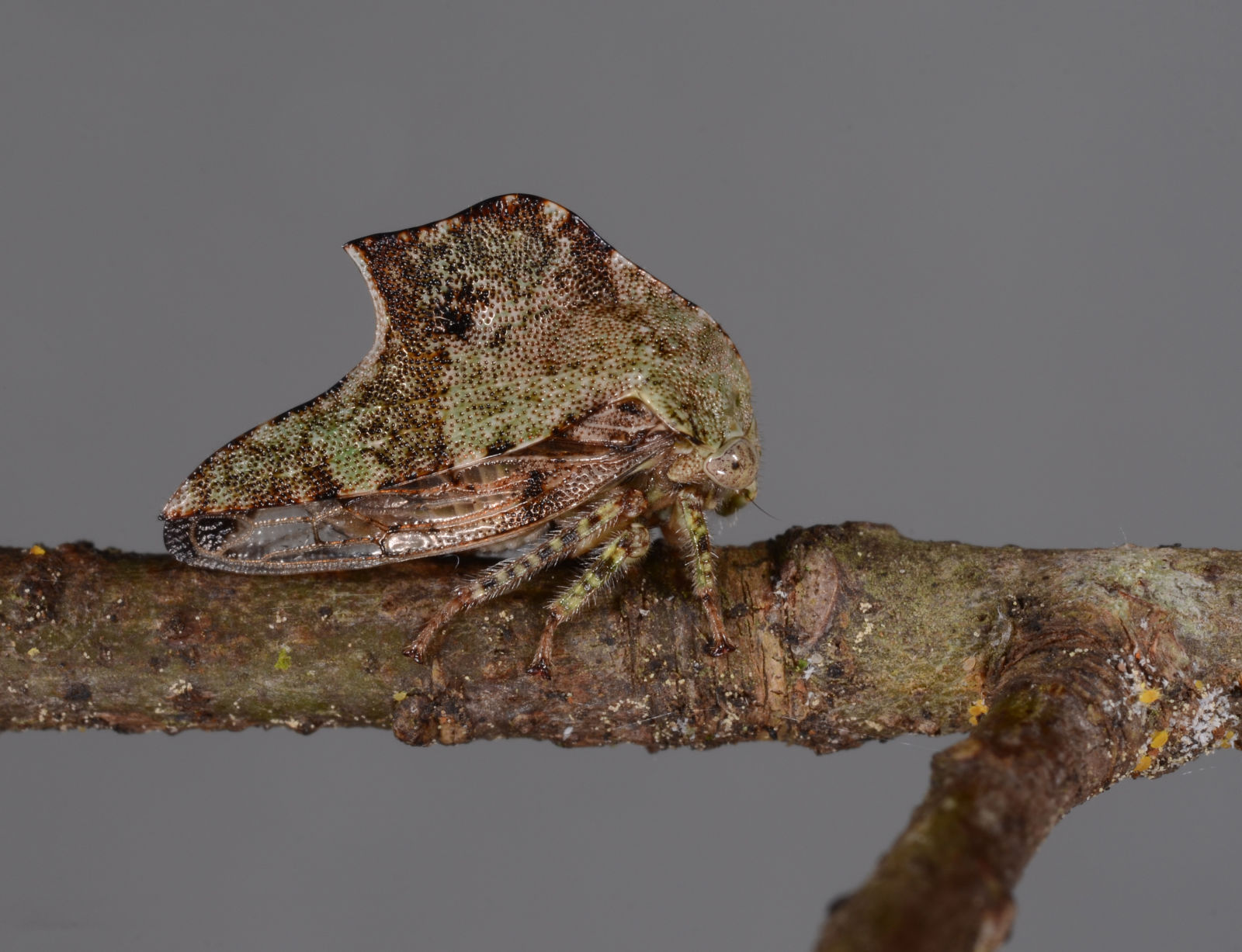 2
2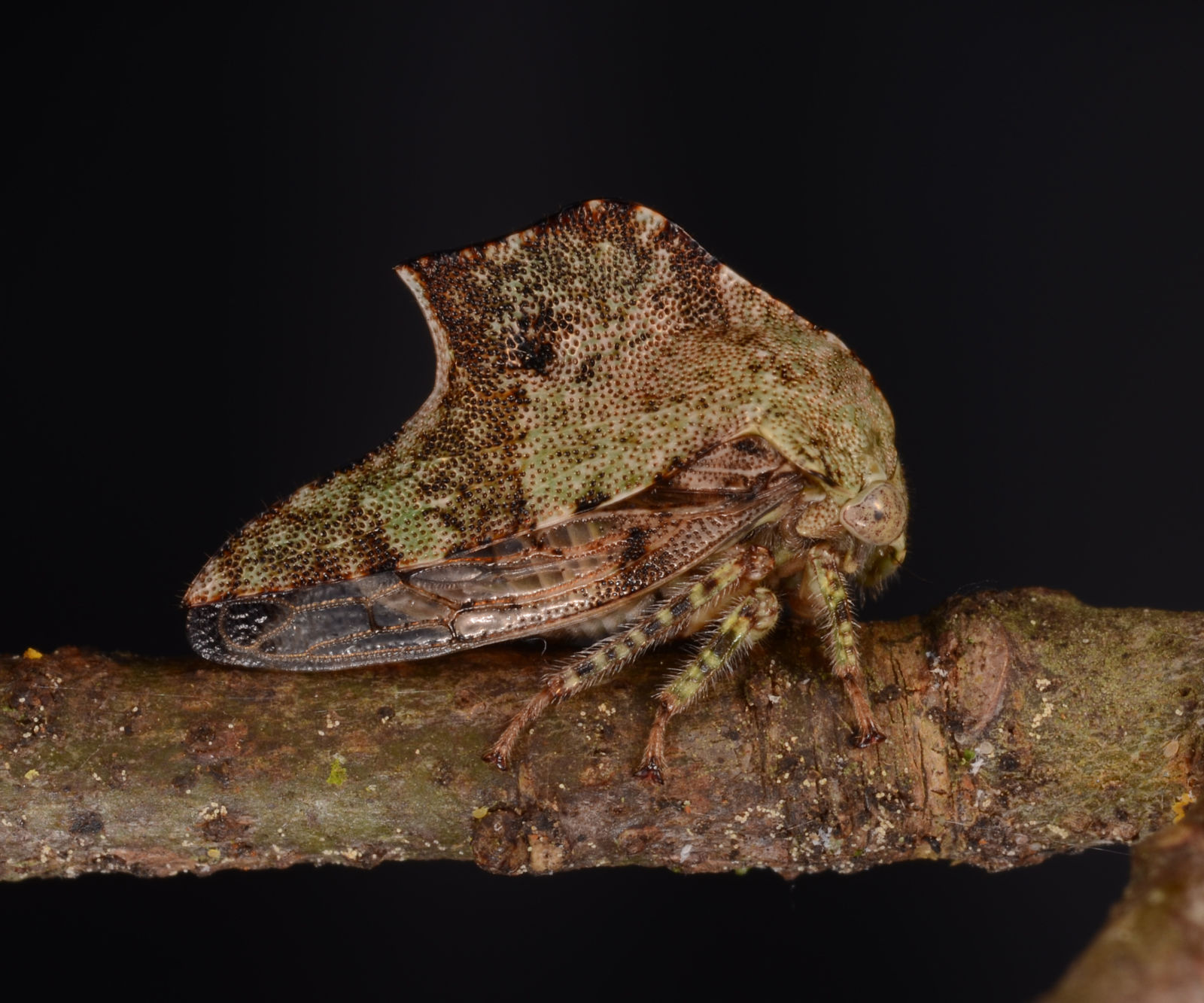 3
3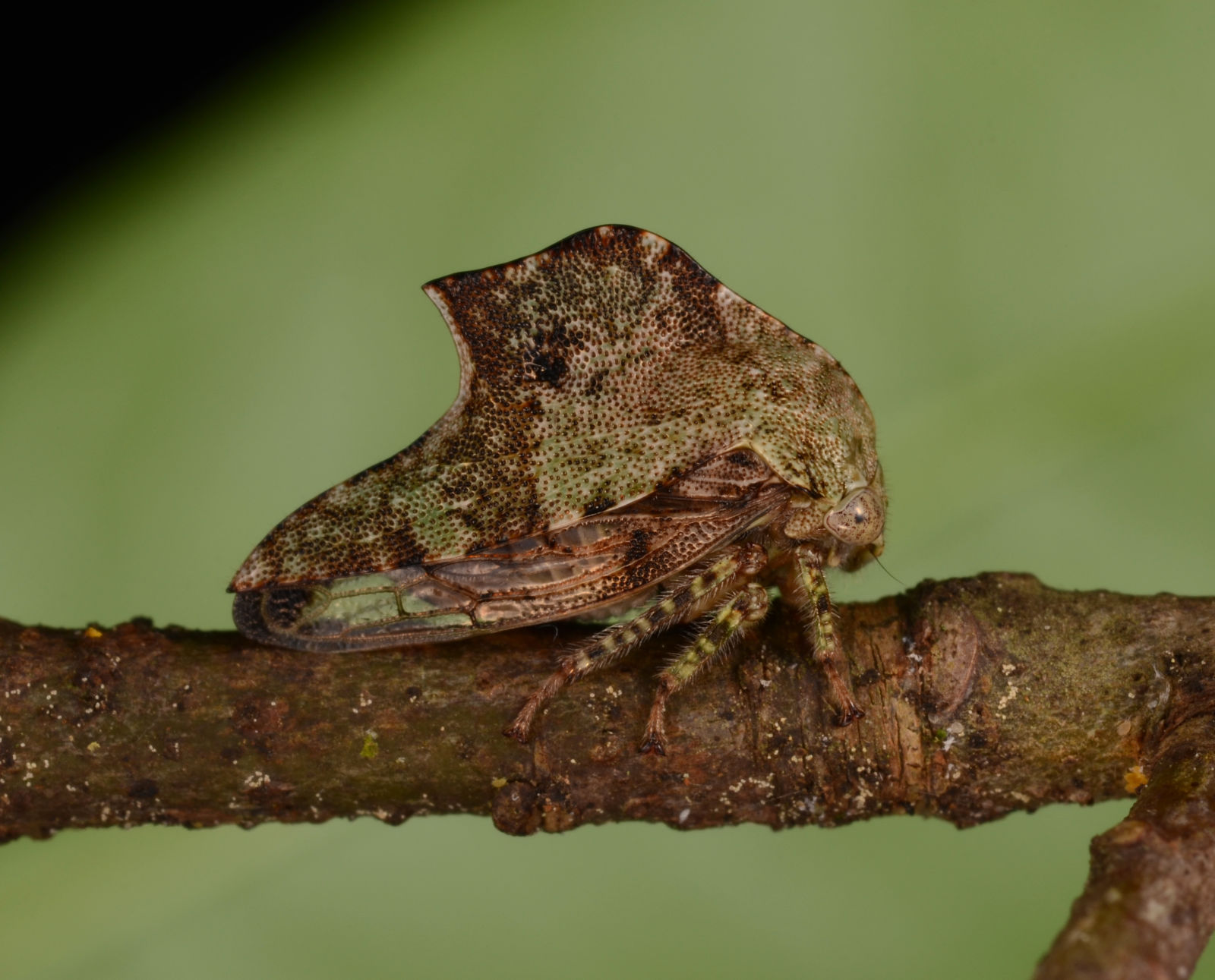
4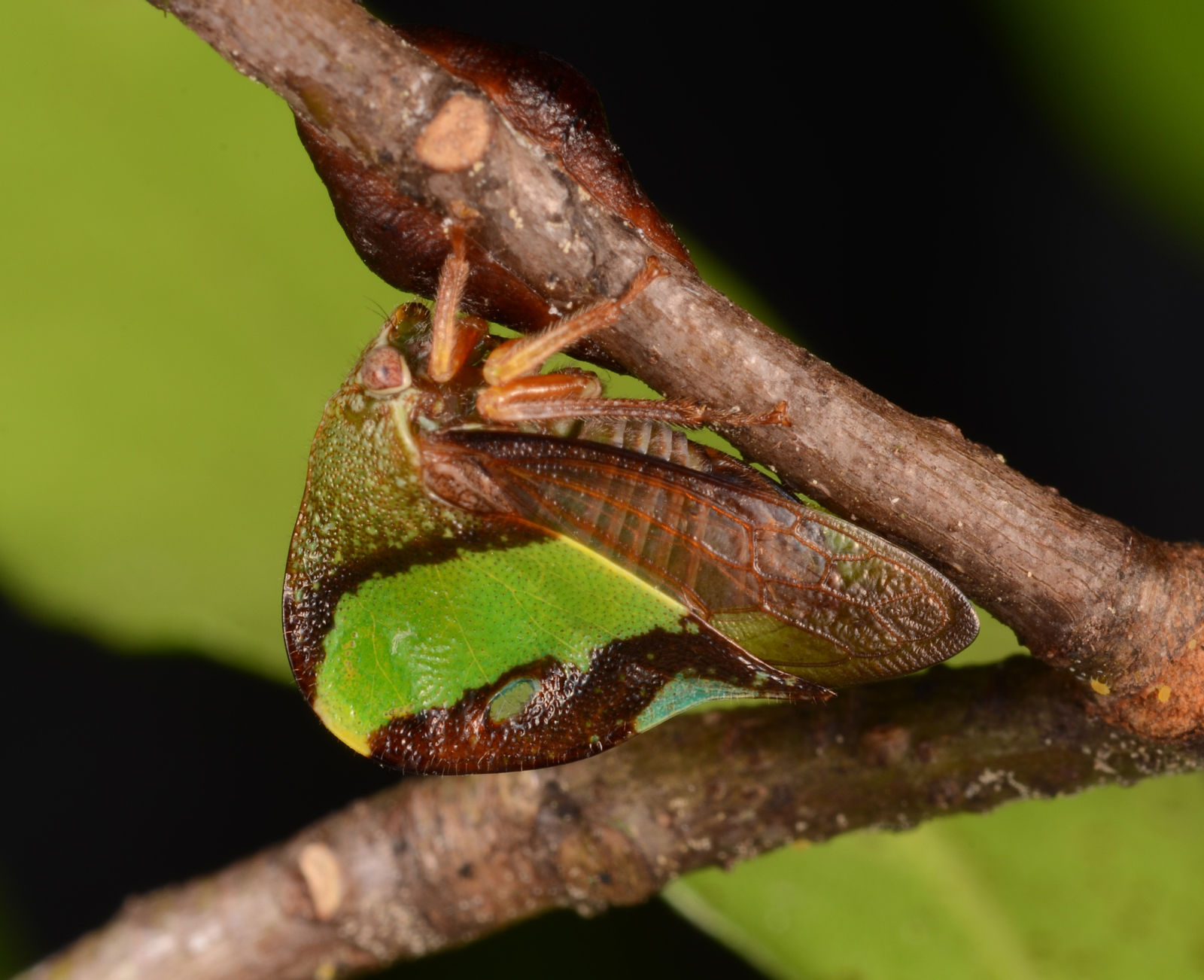 5
5 6
6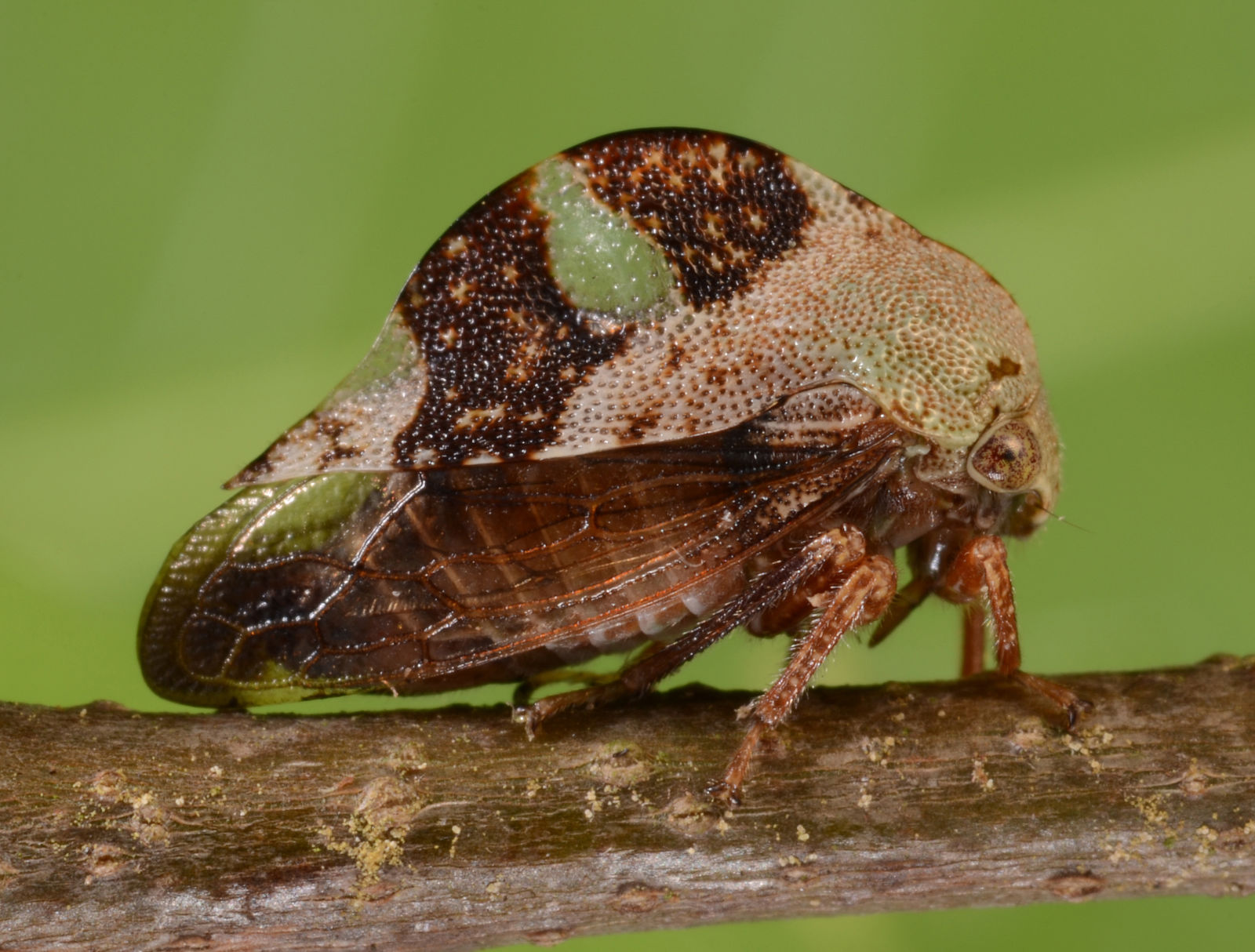
7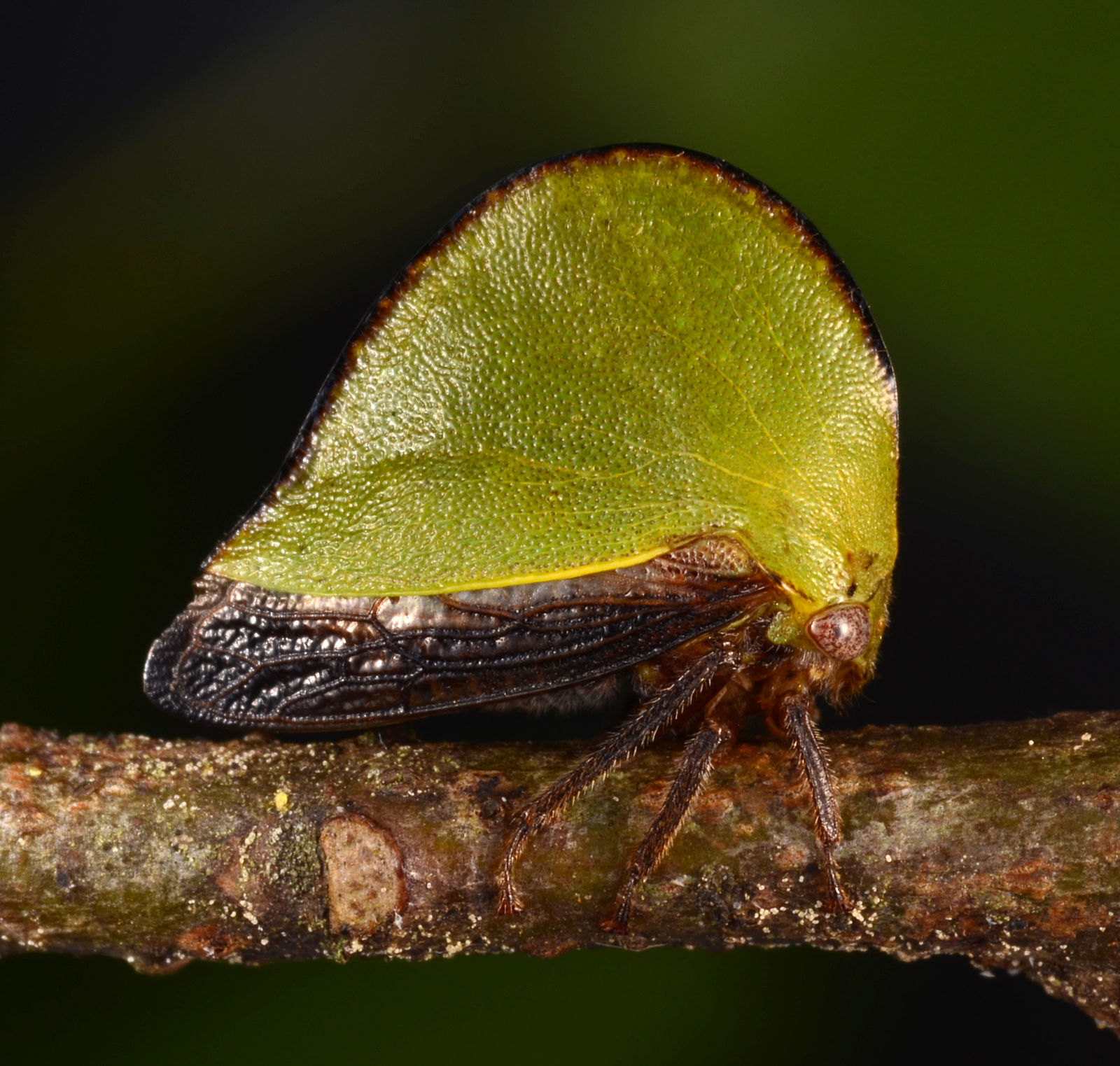 8
8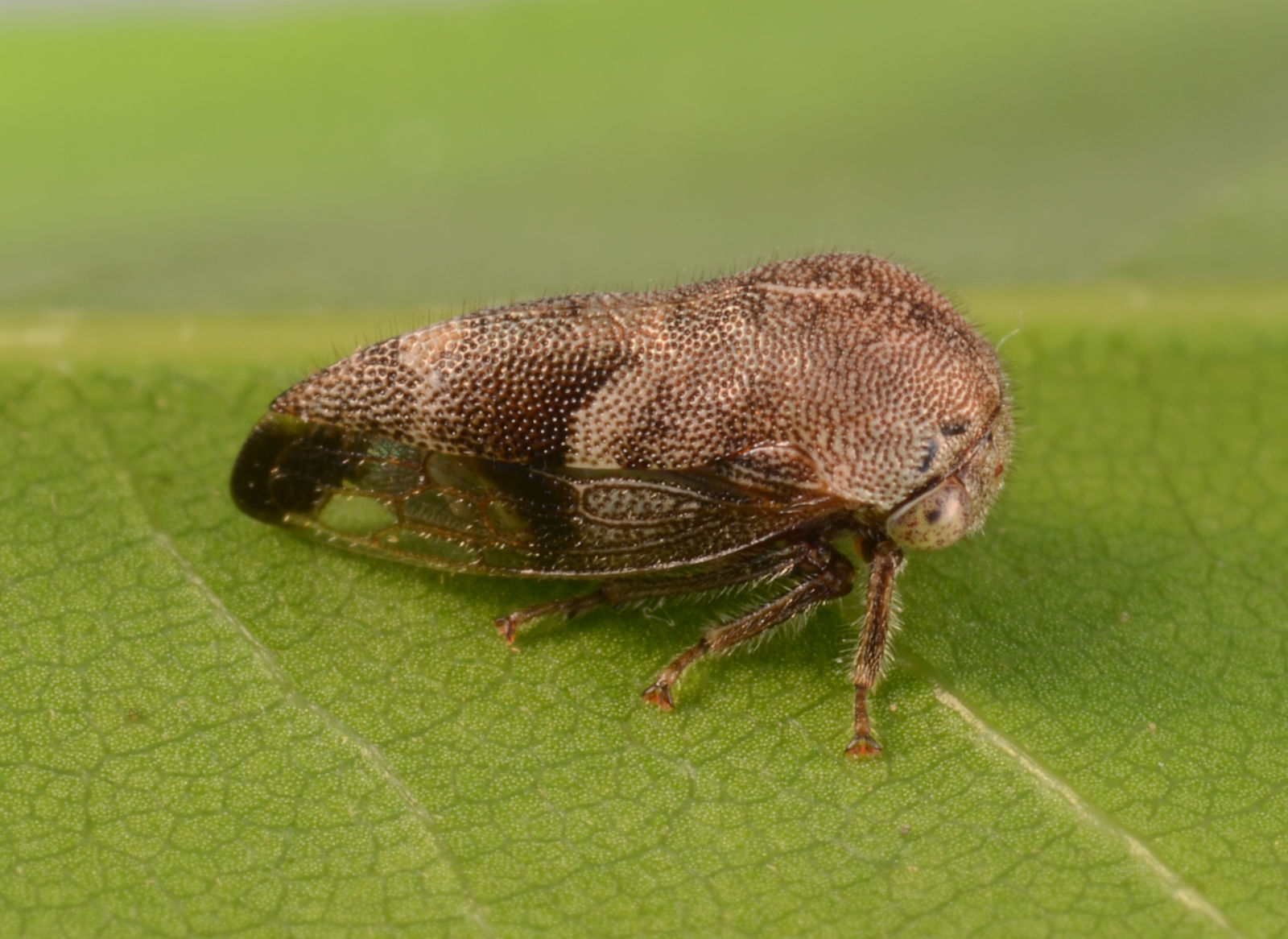 9
9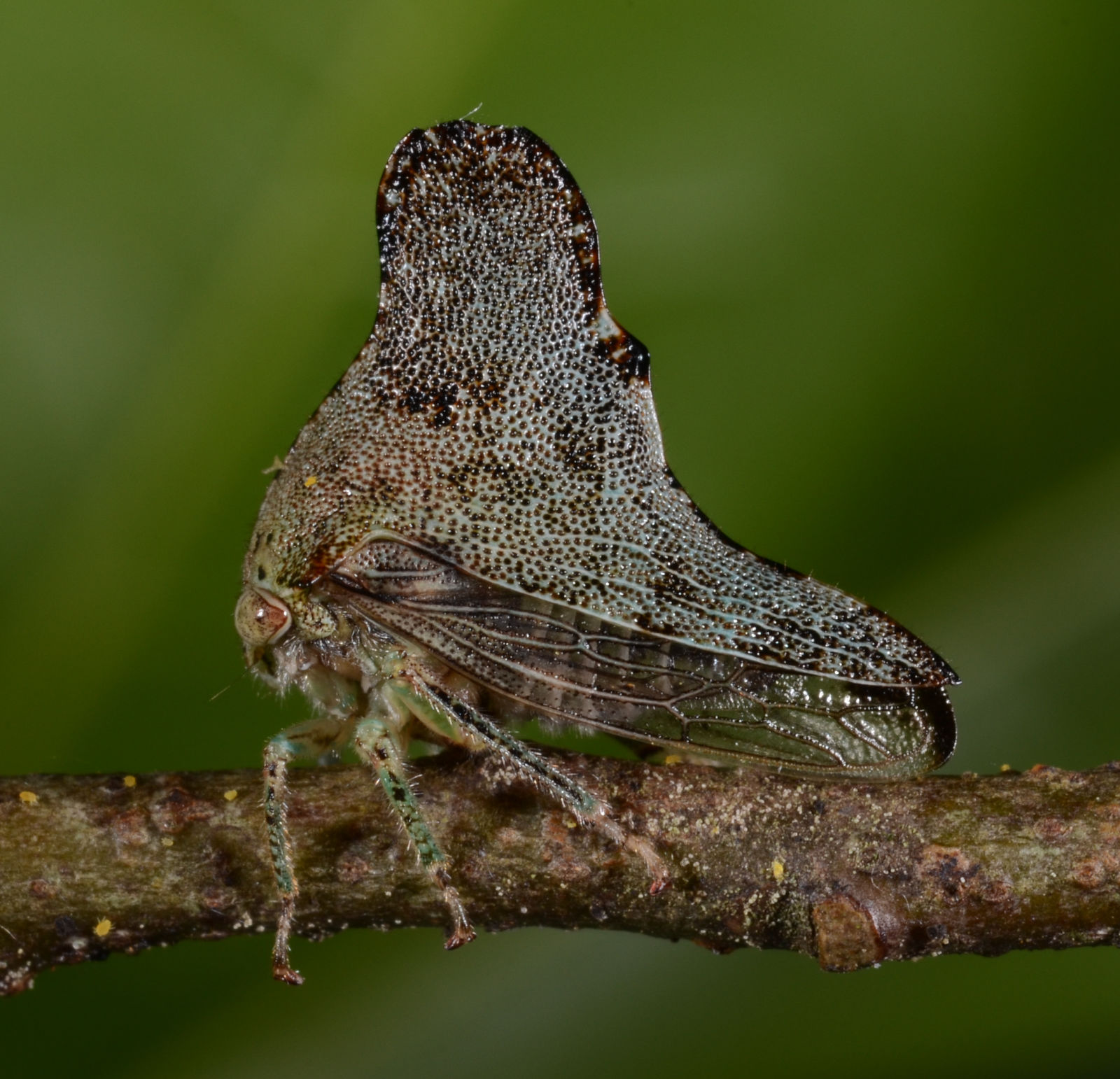
Photos © 2017, by University of Florida, Entomology & Nematology Dept. (Lyle J. Buss).
On viewing Lyle’s images of Telamona salvini (Figs. 1-3), one entomologist declared: "They have better camouflage than the U.S. Army!"
Figs. 1-9. 1-3, Telamona salvini, a female photographed against different backgrounds. 4, Smilia fasciata female. 5, Cyrtolobus dixianus female. 6, C. tuberosus female. 7, Archasia belfragei, male. 8, Ophiderma definita female. 9, Telonaca alta male.
1
 2
2 3
3
4
 5
5 6
6
7
 8
8 9
9
Photos © 2017, by University of Florida, Entomology & Nematology Dept. (Lyle J. Buss).
Flynnia, a new genus of Thuridini, and erroneous records of South American members of the tribe Smiliini
2017-08-30
McKamey, S. H. 2017b. The identity of three South American "smiliine " treehoppers (Hemiptera, Membracidae) and related taxonomic changes in Thuridini. ZooKeys 678:65-72. [available online.]
The new genus Flynnia (Membracidae: Smiliinae: Thuridini) is named in honor of treehopper worker Dawn Flynn; its type species--Ophiderma fascipennis Funkhouser (Figs. 1-3)--is known from Bolivia and Ecuador. Thelia planeflava Fairmaire, from Brazil, is placed incertae sedis within the tribe Polyglyptini (Smillinae). Atymna pilosa Funkhouser, from Peru, is placed in the genus Amastris (Smiliinae: Amastrini). Cyrtolobus (Atymna) atromarginata Goding, from Ecuador, is placed in the genus Antianthe (unplaced within Smiliinae).
Figs 1-3. Flynnia fascipennis (Funkhouser), male holotype (USNM). 1, anterior aspect; 2, lateral; 3, dorsal.
1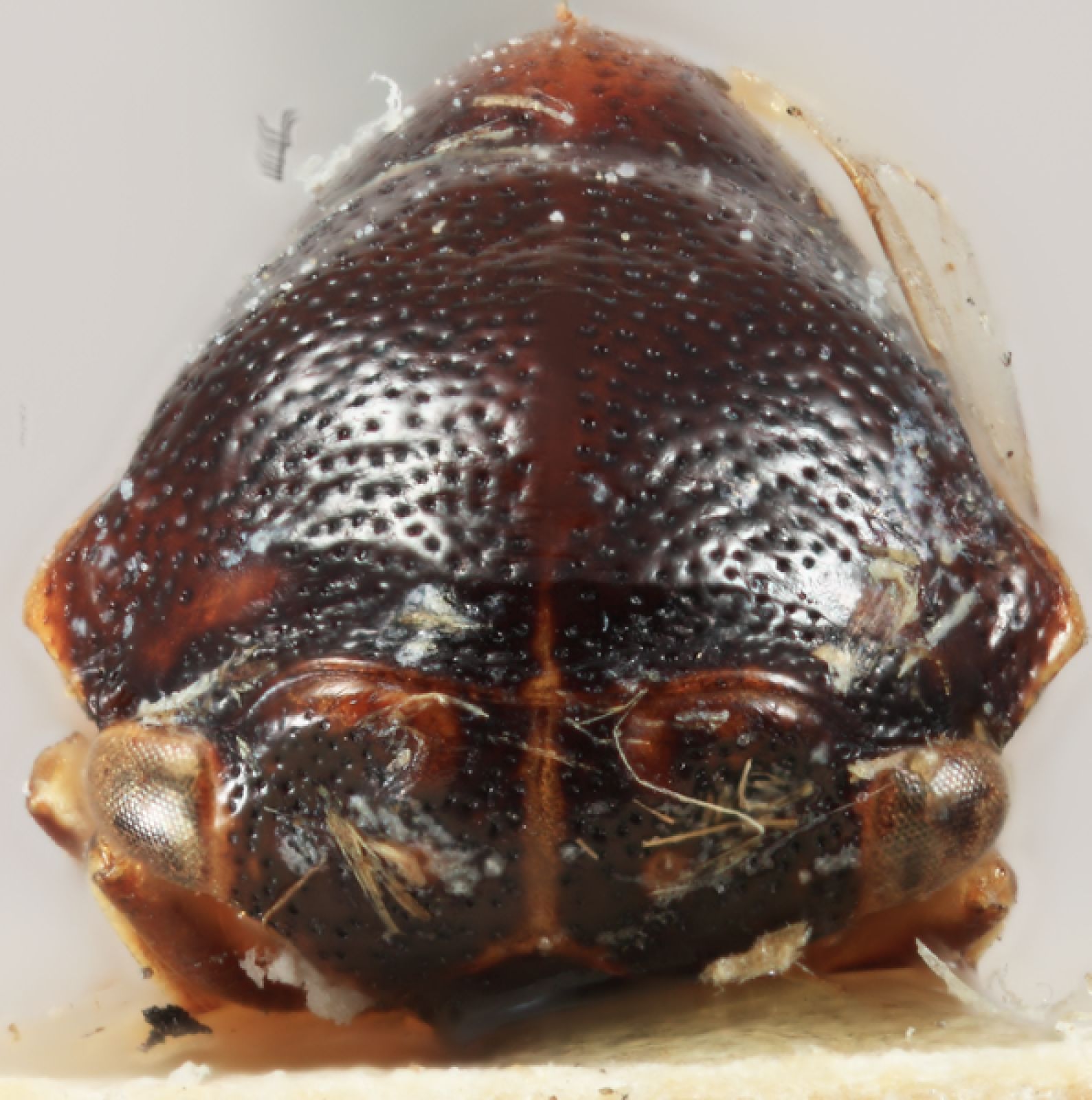 2
2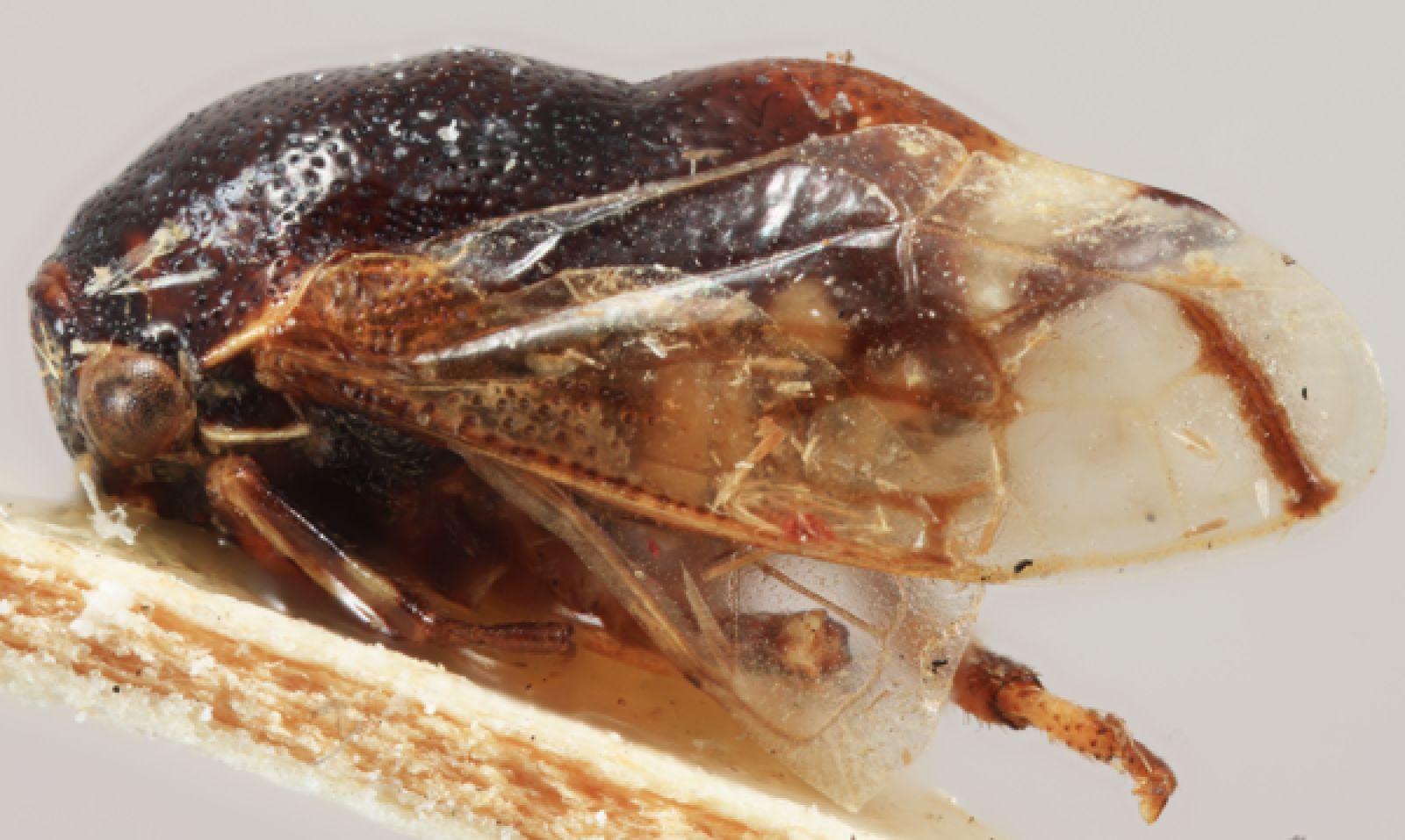 3
3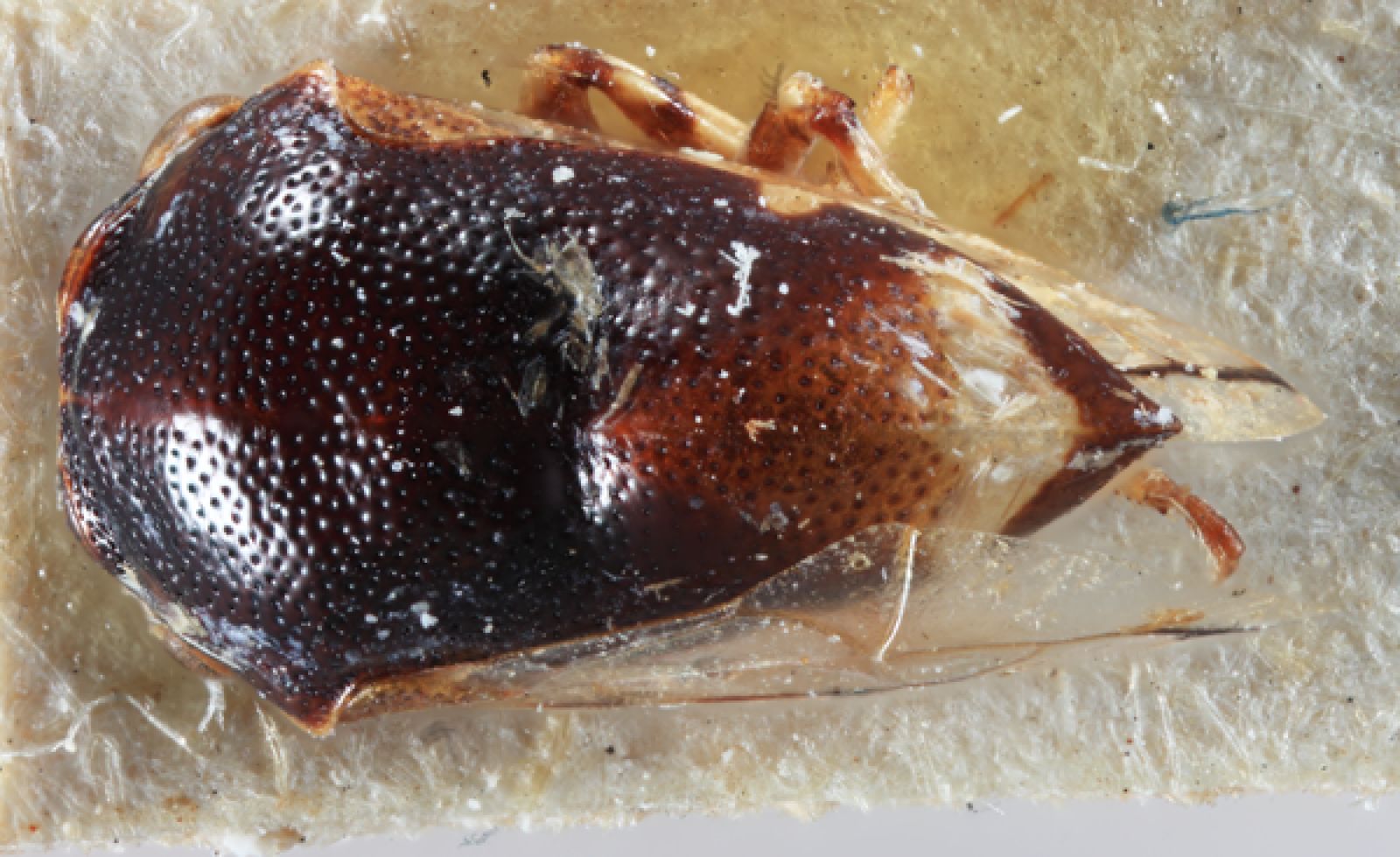
The new genus Flynnia (Membracidae: Smiliinae: Thuridini) is named in honor of treehopper worker Dawn Flynn; its type species--Ophiderma fascipennis Funkhouser (Figs. 1-3)--is known from Bolivia and Ecuador. Thelia planeflava Fairmaire, from Brazil, is placed incertae sedis within the tribe Polyglyptini (Smillinae). Atymna pilosa Funkhouser, from Peru, is placed in the genus Amastris (Smiliinae: Amastrini). Cyrtolobus (Atymna) atromarginata Goding, from Ecuador, is placed in the genus Antianthe (unplaced within Smiliinae).
Figs 1-3. Flynnia fascipennis (Funkhouser), male holotype (USNM). 1, anterior aspect; 2, lateral; 3, dorsal.
1
 2
2 3
3
J. A. Ramos Collection of Treehoppers and Other Auchenorrhyncha
2017-08-31
On 21 August 2017, the North Carolina State University Insect Museum received the personal Auchenorrhyncha collection of the late entomologist José A. Ramos (portrait below). Donated to NCSU by his son Dr. Stuart Ramos, this collection includes approximately 50,000 specimens of cicadas, leafhoppers, planthoppers, spittle bugs, and treehoppers from the Caribbean Islands and Central and South America. Dr. J. A. Ramos, an alumnus of NC State, earned both his M.S. (1945) and Ph.D. (1956) at State, working under the direction of Zeno P. Metcalf and later Clyde F. Smith. The J. A. Ramos collection of Auchenorrhyncha was previously housed at the University of Puerto Rico at Mayaqüez. At NCSU, it joins the excellent Auchenorrhyncha collections of Zeno P. Metcalf, Wilhelm Wagner, and David A. Young.
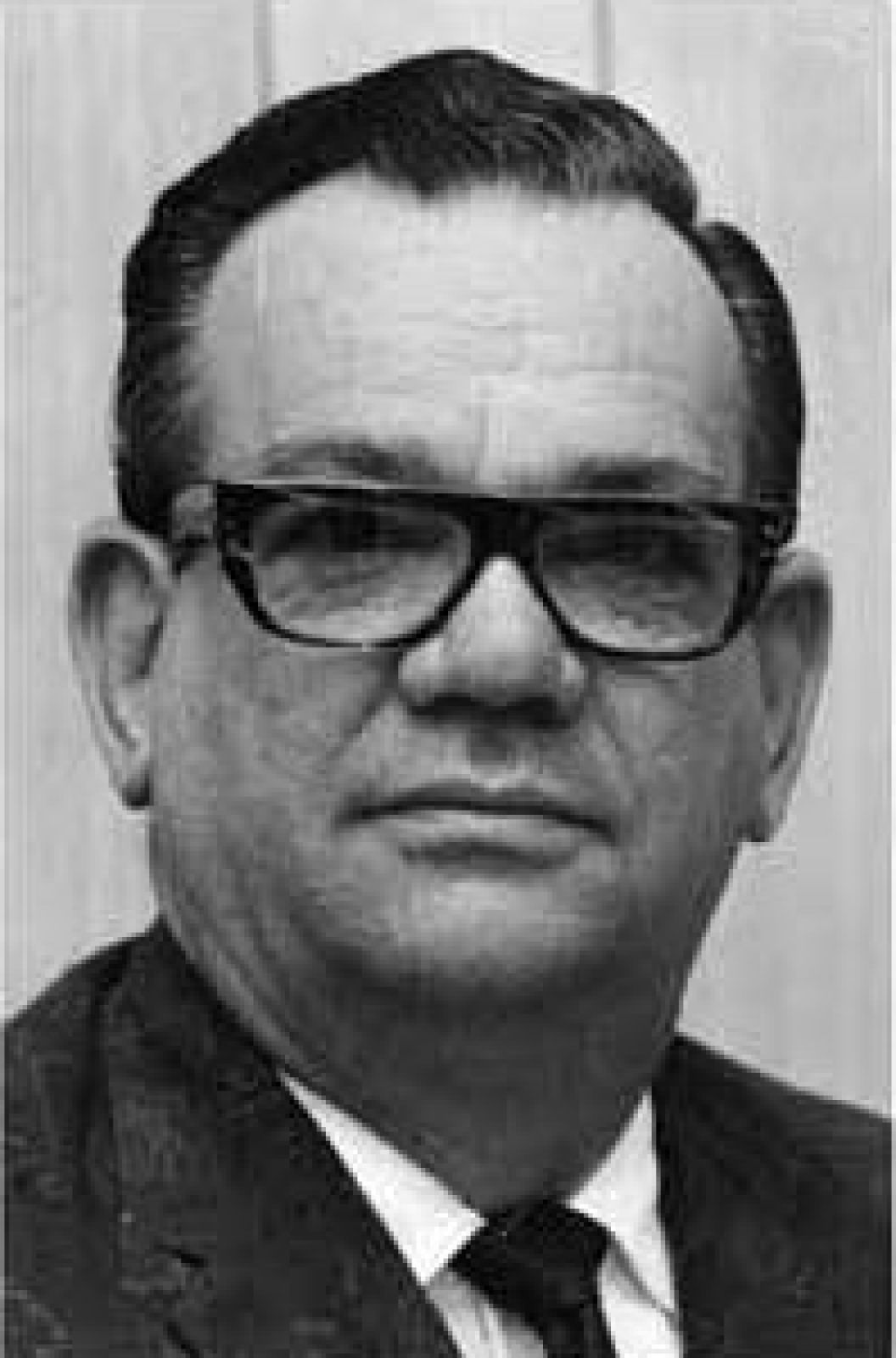 José Andrés Ramos Alemar (1915-1989)
José Andrés Ramos Alemar (1915-1989)
Treehopper Publications by José A. Ramos
Ramos, J. A. 1947a. The insects of Mona Island (West Indies). The Journal of Agriculture of the University of Puerto Rico 30: 1-74, Plates 1-2. [notes on Paradarnoides spp., including P. danforthi, n. sp.; based on Ramos 1945 (unpublished Master’s thesis, State College of Agriculture and Engineering of the University of North Carolina, Raleigh)]
Ramos, J. A. 1956a. Review of the auchenorhynchous [sic] Homoptera of Puerto Rico. Part III. Kinnaridae, Cercopidae, Membracidae and Cicadidae. Dissertation Abstracts 16(4): 62. [abstract of Ramos 1956 (unpublished dissertation, North Carolina State College, Raleigh); dissertation published as Ramos 1957a]
Ramos, J. A. 1957a. A review of the auchenorhynchous [sic] Homoptera of Puerto Rico. The Journal of Agriculture of the University of Puerto Rico 41(1):38-117. [with Spanish summary; Antillotolania, Deiroderes, Jibarita, and Spathenotus, n. gen., and 9 n. spp. of Membracidae]
Ramos, J. A. 1979a. Membracidae de la República Dominicana (Homoptera: Auchenorhyncha). Universidad de Puerto Rico (Mayagüez), Estación Experimental Agrícola Boletin 260: 1-71. [in Spanish with English summary; Monobeloides n. gen., and 17 n. spp. in various genera]
Ramos, J. A. 1988a. Zoogeography of the auchenorrhynchous Homoptera of the Greater Antilles (Hemiptera). pp. 61-70. In Liebherr, J. K. (ed.). Zoogeography of Caribbean Insects. Cornell University Press, Ithaca, New York. xii + 285 pp. [notes on Membracidae; lists 26 genera, p. 64]
Ramos, J. A. 1990a (dated 1989). New West Indian Membracidae (Homoptera: Auchenorrhyncha). Caribbean Journal of Science 25(3-4): 153-163. [notes on 10 n. spp. in 6 genera; publication dated 1989, but "Mailed February 1990”].
 José Andrés Ramos Alemar (1915-1989)
José Andrés Ramos Alemar (1915-1989)
Treehopper Publications by José A. Ramos
Ramos, J. A. 1947a. The insects of Mona Island (West Indies). The Journal of Agriculture of the University of Puerto Rico 30: 1-74, Plates 1-2. [notes on Paradarnoides spp., including P. danforthi, n. sp.; based on Ramos 1945 (unpublished Master’s thesis, State College of Agriculture and Engineering of the University of North Carolina, Raleigh)]
Ramos, J. A. 1956a. Review of the auchenorhynchous [sic] Homoptera of Puerto Rico. Part III. Kinnaridae, Cercopidae, Membracidae and Cicadidae. Dissertation Abstracts 16(4): 62. [abstract of Ramos 1956 (unpublished dissertation, North Carolina State College, Raleigh); dissertation published as Ramos 1957a]
Ramos, J. A. 1957a. A review of the auchenorhynchous [sic] Homoptera of Puerto Rico. The Journal of Agriculture of the University of Puerto Rico 41(1):38-117. [with Spanish summary; Antillotolania, Deiroderes, Jibarita, and Spathenotus, n. gen., and 9 n. spp. of Membracidae]
Ramos, J. A. 1979a. Membracidae de la República Dominicana (Homoptera: Auchenorhyncha). Universidad de Puerto Rico (Mayagüez), Estación Experimental Agrícola Boletin 260: 1-71. [in Spanish with English summary; Monobeloides n. gen., and 17 n. spp. in various genera]
Ramos, J. A. 1988a. Zoogeography of the auchenorrhynchous Homoptera of the Greater Antilles (Hemiptera). pp. 61-70. In Liebherr, J. K. (ed.). Zoogeography of Caribbean Insects. Cornell University Press, Ithaca, New York. xii + 285 pp. [notes on Membracidae; lists 26 genera, p. 64]
Ramos, J. A. 1990a (dated 1989). New West Indian Membracidae (Homoptera: Auchenorrhyncha). Caribbean Journal of Science 25(3-4): 153-163. [notes on 10 n. spp. in 6 genera; publication dated 1989, but "Mailed February 1990”].
"Smithsonian Insider" Features Treehoppers
2017-08-31
Barrat, J. 2017a. Beautiful and bizarre, treehoppers suck sap and can spread disease. Smithsonian Insider (Animals, Earth Science, Plants, Q & A, Research News, Science & Nature Animals): 28 August 2017. [online publication]
See this popular article about treehoppers and USDA Systematic Entomology Laboratory scientist Stuart McKamey, a dedicated researcher and member of our Treehoppers Team.
See this popular article about treehoppers and USDA Systematic Entomology Laboratory scientist Stuart McKamey, a dedicated researcher and member of our Treehoppers Team.
New Collaborator and Links to Checklists with Treehopper Images
2017-09-12
To our lists of collaborators (see Treehoppers Acknowledgments and Archive of Past News), we add Todd F. Elliott (School of Environmental & Rural Sciences, University of New England, New South Wales, Australia).
Figs. 1-2. Todd took these wonderful photos of Anchon speciosum Capener in the Dja Biosphere Reserve in Cameroon; our team member Dawn Flynn identified the treehopper to species.
1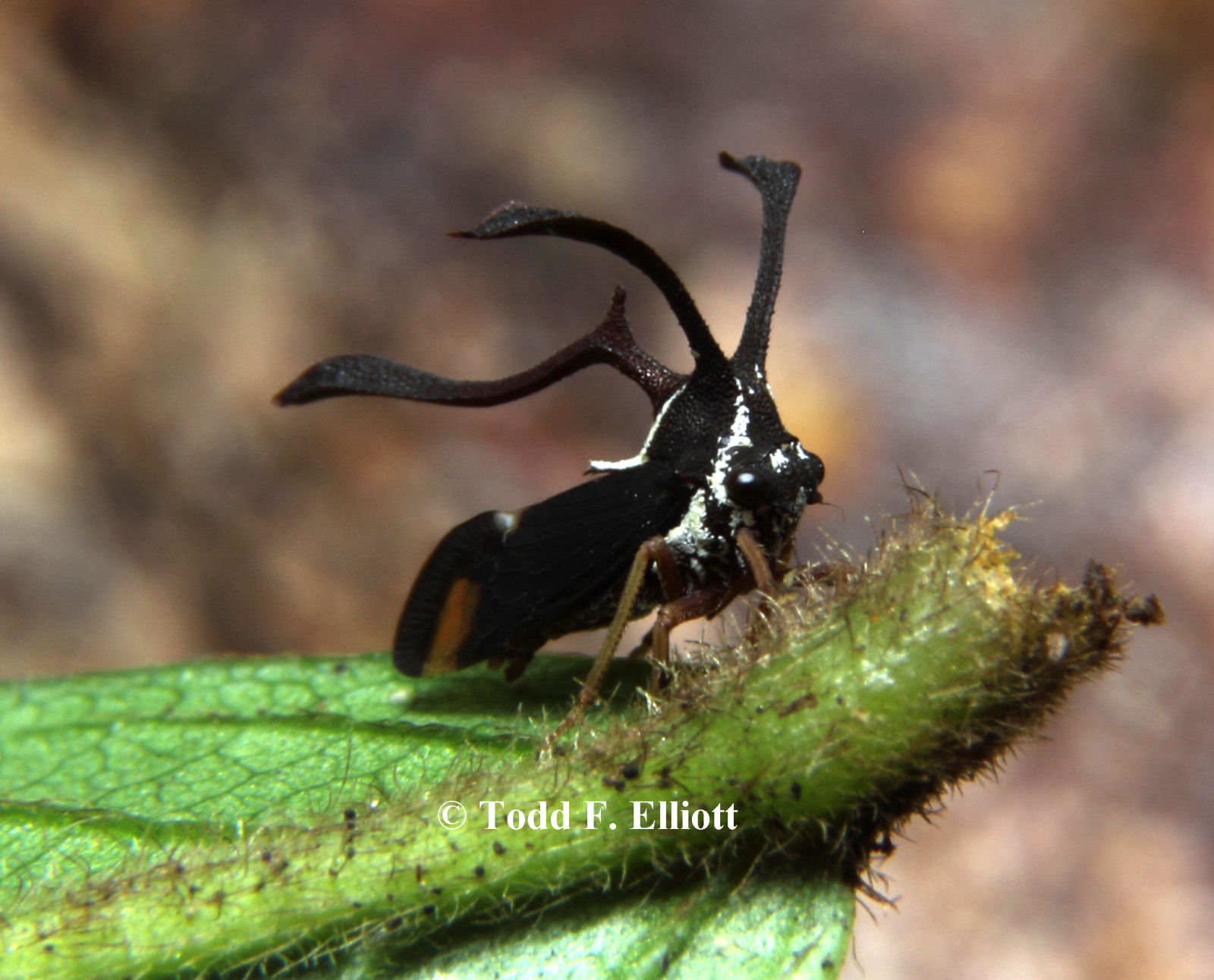 2
2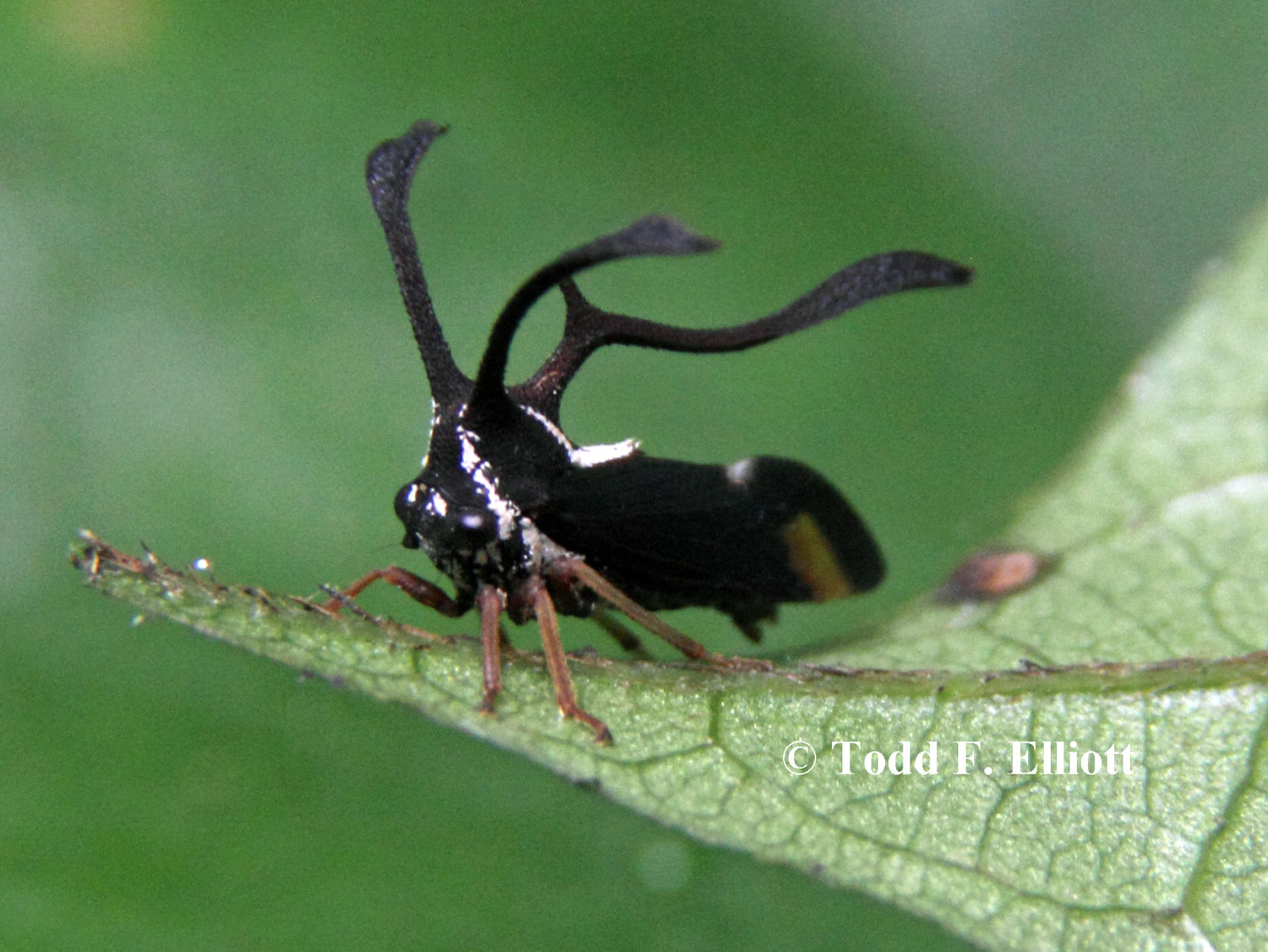 Images © 2017, by Todd F. Elliott
Images © 2017, by Todd F. Elliott
Speaking of treehopper images, among the growing number of online resources on treehoppers are the following illustrated checklists for Florida, North Carolina, Signapore, and Texas. Nicky Bay’s treehopper images from Signapore are exceptionally stunning.
Figs. 1-2. Todd took these wonderful photos of Anchon speciosum Capener in the Dja Biosphere Reserve in Cameroon; our team member Dawn Flynn identified the treehopper to species.
1
 2
2 Images © 2017, by Todd F. Elliott
Images © 2017, by Todd F. Elliott
Speaking of treehopper images, among the growing number of online resources on treehoppers are the following illustrated checklists for Florida, North Carolina, Signapore, and Texas. Nicky Bay’s treehopper images from Signapore are exceptionally stunning.
About Ants and Treehoppers
2017-10-26
Many treehopper species benefit from interactions with ants that provide "house cleaning" services and sometimes protect the hoppers from predators in exchange for honeydew secreted by the hoppers. The images below show ants tending adults of Stilbophora luteimaculata (Fig. 1: © 2007, by Kelly Swing) and immatures of Bolbonota (Fig. 2: © 2013, by Kenji Nishida).
1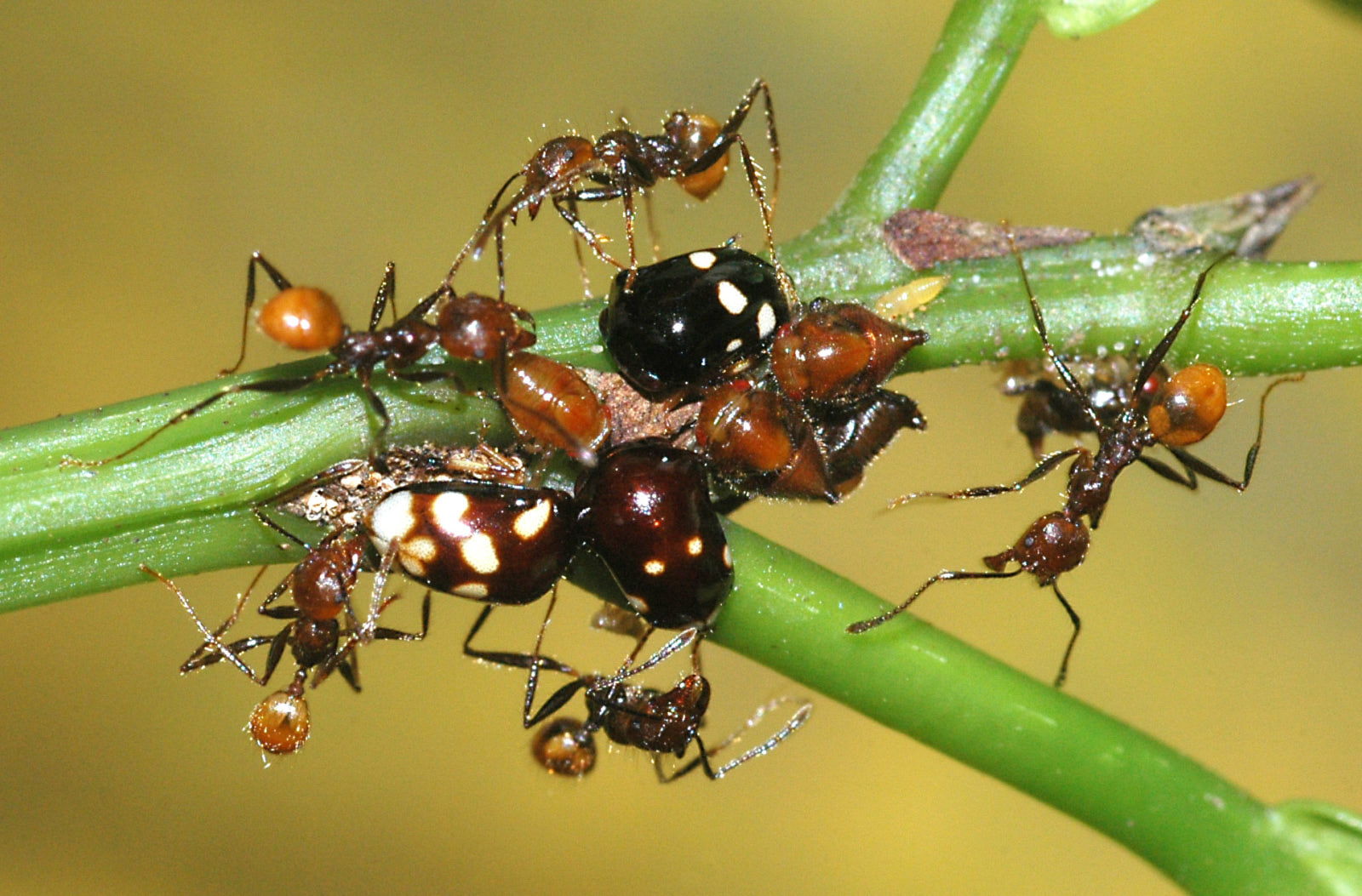 2
2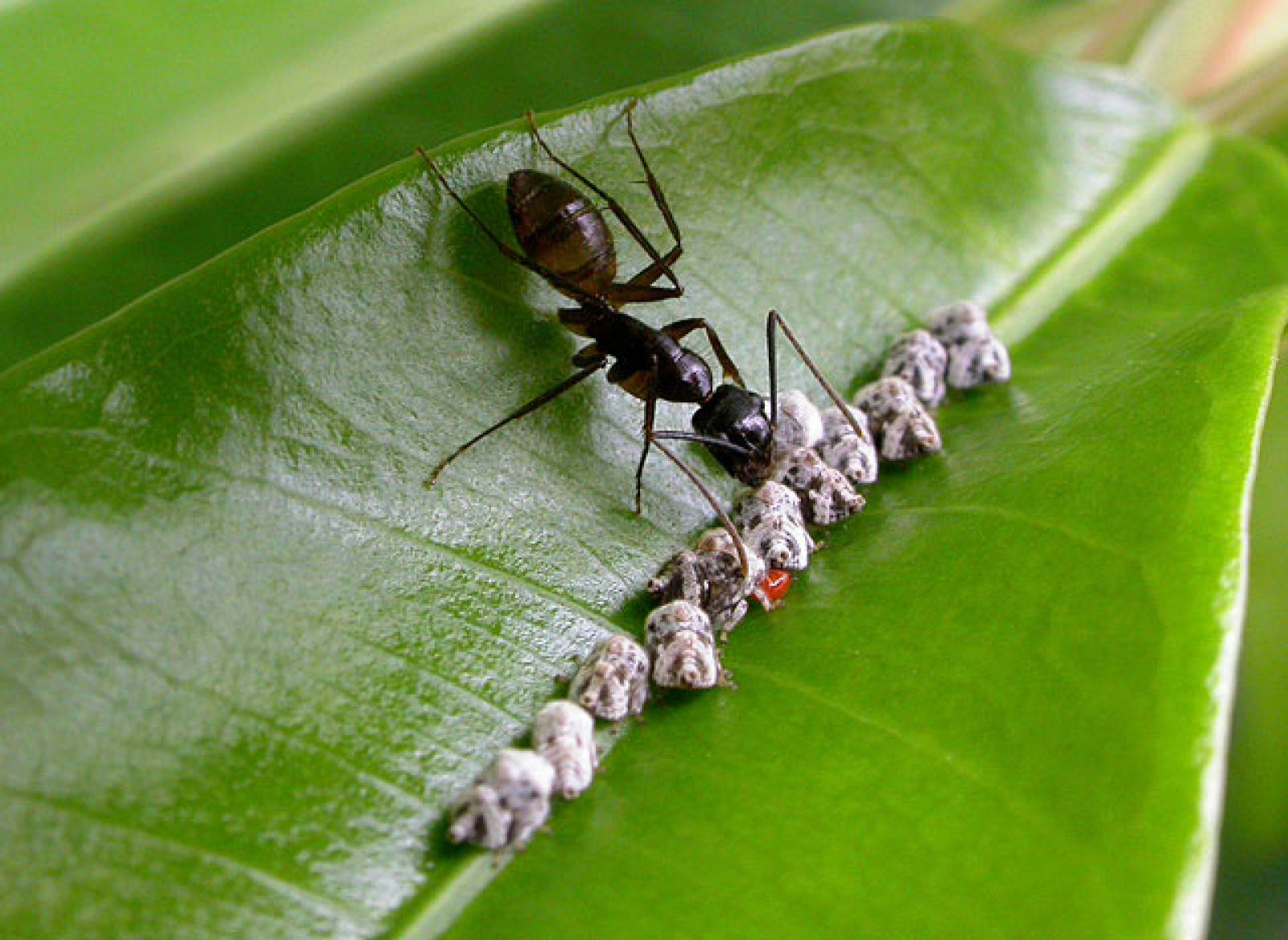
To learn more about the relationships among ants and treehoppers, check out these blogs (with videos) at “Wild about Ants:” Ants Tending the Aster Hopper Publilia concava and Well-Guarded Treehoppers.
1
 2
2
To learn more about the relationships among ants and treehoppers, check out these blogs (with videos) at “Wild about Ants:” Ants Tending the Aster Hopper Publilia concava and Well-Guarded Treehoppers.
Phylogeny and Divergence Time Estimates within the Membracoidea
2017-11-15
Dietrich, C. H.; Allen, J. M.; Lemmon, A. R.; Lemmon, E. M.; Takiya, D. M.; Evangelista, O.; Walden, K. K. O.; Grady, P. G. S.; Johnson, K. P. 2017a. Anchored hybrid enrichment-based phylogenomics of leafhoppers and treehoppers (Hemiptera: Cicadomorpha: Membracoidea). Insect Systematics and Diversity 1(1): 57–72. [available online]
DNA from 388 loci and more than 99,000 aligned nucleotide positions were used to estimate phylogenetic relationships among 138 taxa representing all major lineages of the superfamily Membracoidea (leafhoppers and treehoppers). In agreement with several previous studies, this work indicates leafhoppers (family Cicadellidae) are paraphyletic with respect to treehoppers (families Aetalionidae, Melizoderidae, and Membracidae). Treehopper taxa represented in the analyses included 2 aetalionid genera (2 tribes), 1 melizoderid genus, and 39 membracid genera (32 tribes). Divergence time estimates suggest the lineage comprising the treehopper families arose during the Cretaceous. Within Membracidae, the authors found strong support for two major sister lineages: one with all treehoppers in which the pronotum extends posteriorly over the scutellum, but does not conceal it–and the other with nearly all treehoppers in which the pronotum entirely conceals the scutellum (but none with the scutellum concealed only in part).
DNA from 388 loci and more than 99,000 aligned nucleotide positions were used to estimate phylogenetic relationships among 138 taxa representing all major lineages of the superfamily Membracoidea (leafhoppers and treehoppers). In agreement with several previous studies, this work indicates leafhoppers (family Cicadellidae) are paraphyletic with respect to treehoppers (families Aetalionidae, Melizoderidae, and Membracidae). Treehopper taxa represented in the analyses included 2 aetalionid genera (2 tribes), 1 melizoderid genus, and 39 membracid genera (32 tribes). Divergence time estimates suggest the lineage comprising the treehopper families arose during the Cretaceous. Within Membracidae, the authors found strong support for two major sister lineages: one with all treehoppers in which the pronotum extends posteriorly over the scutellum, but does not conceal it–and the other with nearly all treehoppers in which the pronotum entirely conceals the scutellum (but none with the scutellum concealed only in part).
Zoom in on Germar's Collection: Updated Link
2017-12-07
Zoomable digital images of the Ernst Friedrich Germar Collection are available online thanks to the curators of the Benedict Dybowski Zoological Museum (Lviv National University, Ukraine). For a number of years, this historically significant collection was thought to have been destroyed in World War II. A revised link to this collection is provided here and on our 4 March 2012 news item on Germar's Collection.
Neoproterpia, Replacement Name for Proterpia, and Other Nomenclatural Changes
2018-01-09
Dmitriev, D. A.; Deitz, L. L. 2017a. Nomenclatural
changes in the family Membracidae (Hemiptera, Auchenorrhyncha,
Membracoidea). Zootaxa 4365(1):94–98. [available
online]
The authors provide replacement names for a preoccupied genus name and
three preoccupied species names, along with other nomenclatural changes.
Host Shifts and Evolutionary Plasticity in the Enchenopa binotata Complex
2018-02-05
Hsu, Y.-H.; Cocroft, R. B.; Synder, R. L.; Lin, C.-P. 2018a. You stay, but I hop: host shifting near and far co-dominated the evolution of Enchenopa treehoppers. Ecology and Evolution 2018: 1-13. [available online]
The authors compared reconstructions of the evolutionary history of the E. binotata complex, a group of phytophagous treehoppers with high host fidelity, to the phylogeny of their host plants. The objective was to determine if patterns of Enchenopa evolution closely tracked host plant phylogeny or if speciation to novel, more distantly related host plants was likewise common. The findings suggested that members of the complex primarily shifted between distant and intermediately related host plants regardless of host phylogeny. Moreover, this complex includes treehoppers that feed on hosts belonging to at least eight different plant orders.
The authors compared reconstructions of the evolutionary history of the E. binotata complex, a group of phytophagous treehoppers with high host fidelity, to the phylogeny of their host plants. The objective was to determine if patterns of Enchenopa evolution closely tracked host plant phylogeny or if speciation to novel, more distantly related host plants was likewise common. The findings suggested that members of the complex primarily shifted between distant and intermediately related host plants regardless of host phylogeny. Moreover, this complex includes treehoppers that feed on hosts belonging to at least eight different plant orders.
New Collaborator in French Guiana
2018-02-05
The Treehoppers Team welcomes Jérémie Lapèze (Société Entomologique Antilles Guyane, Montjoly, French Guiana) as a new collaborator. Jérémie, who has a Master’s level internship in "Tropical Biology and Ecology," is sharing images from his research on the treehoppers of French Guiana. Shown below are species of Cymbomorpha (image 1), Bolbonota (2), Anchistrotus (3), and Membracis (4). To zoom in on these images, see our corresponding taxon page for each genus. We are most grateful to Jérémie and all other collaborators who contribute to the Treehoppers database and resources.
1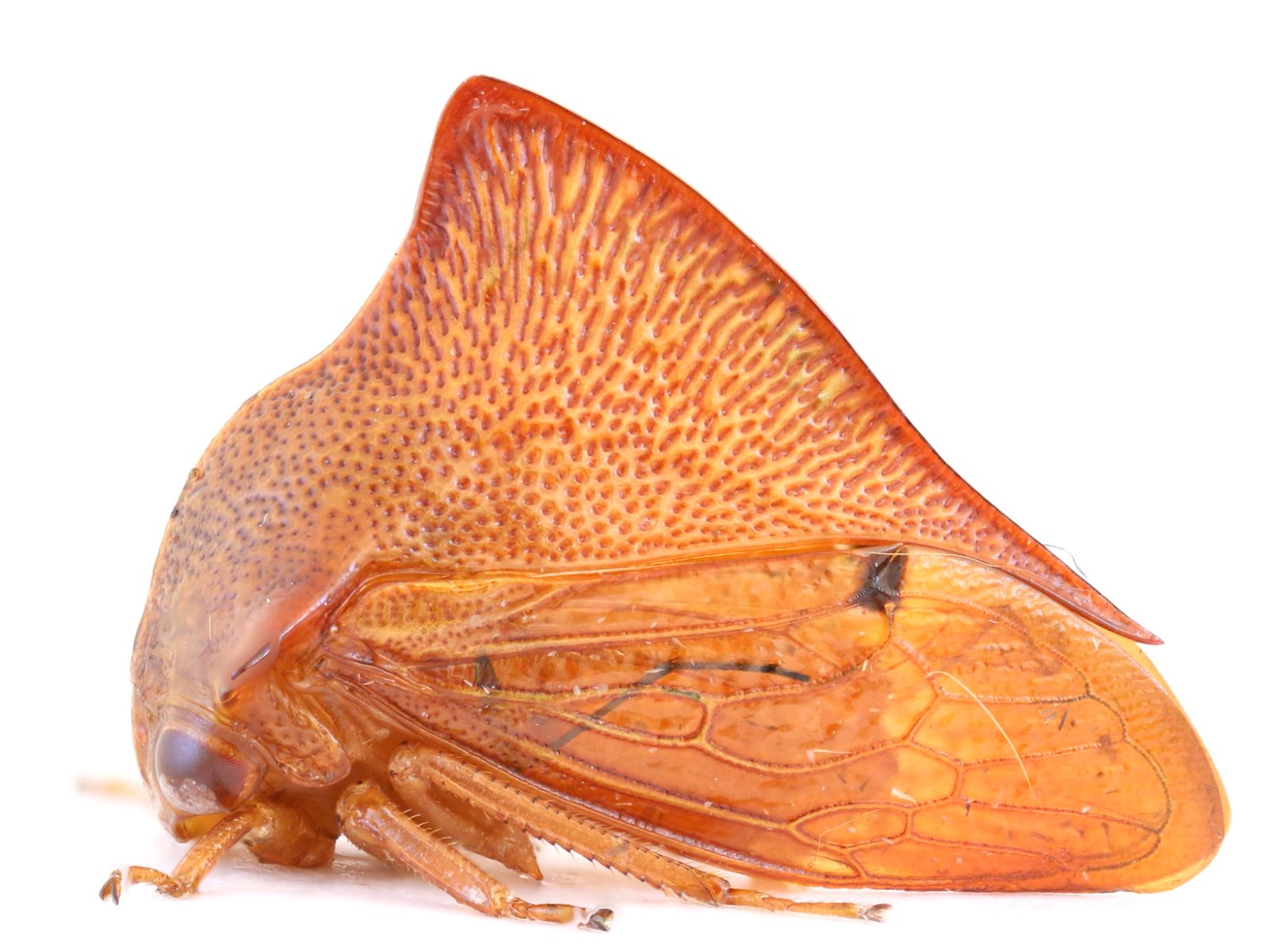 2
2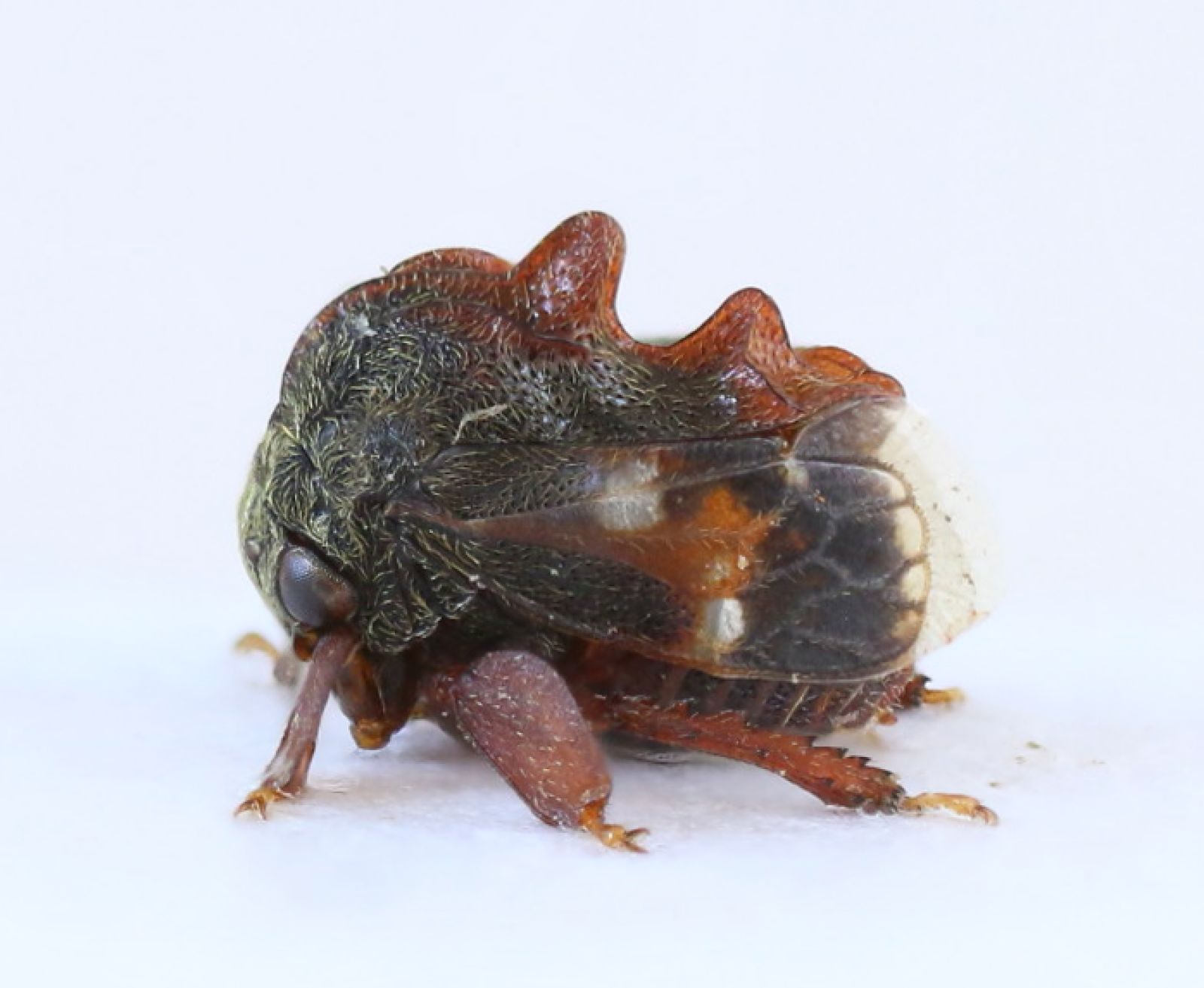
3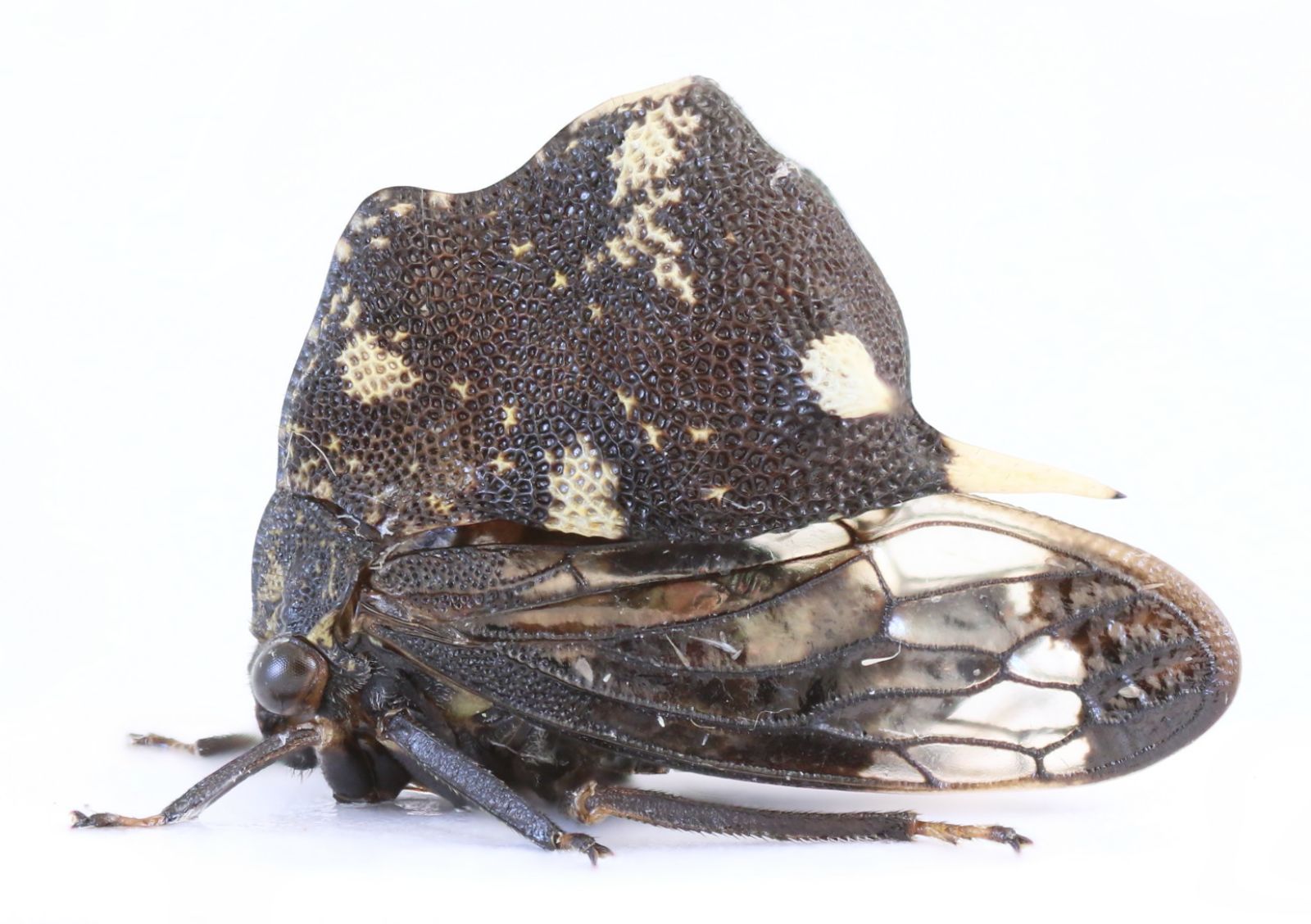 4
4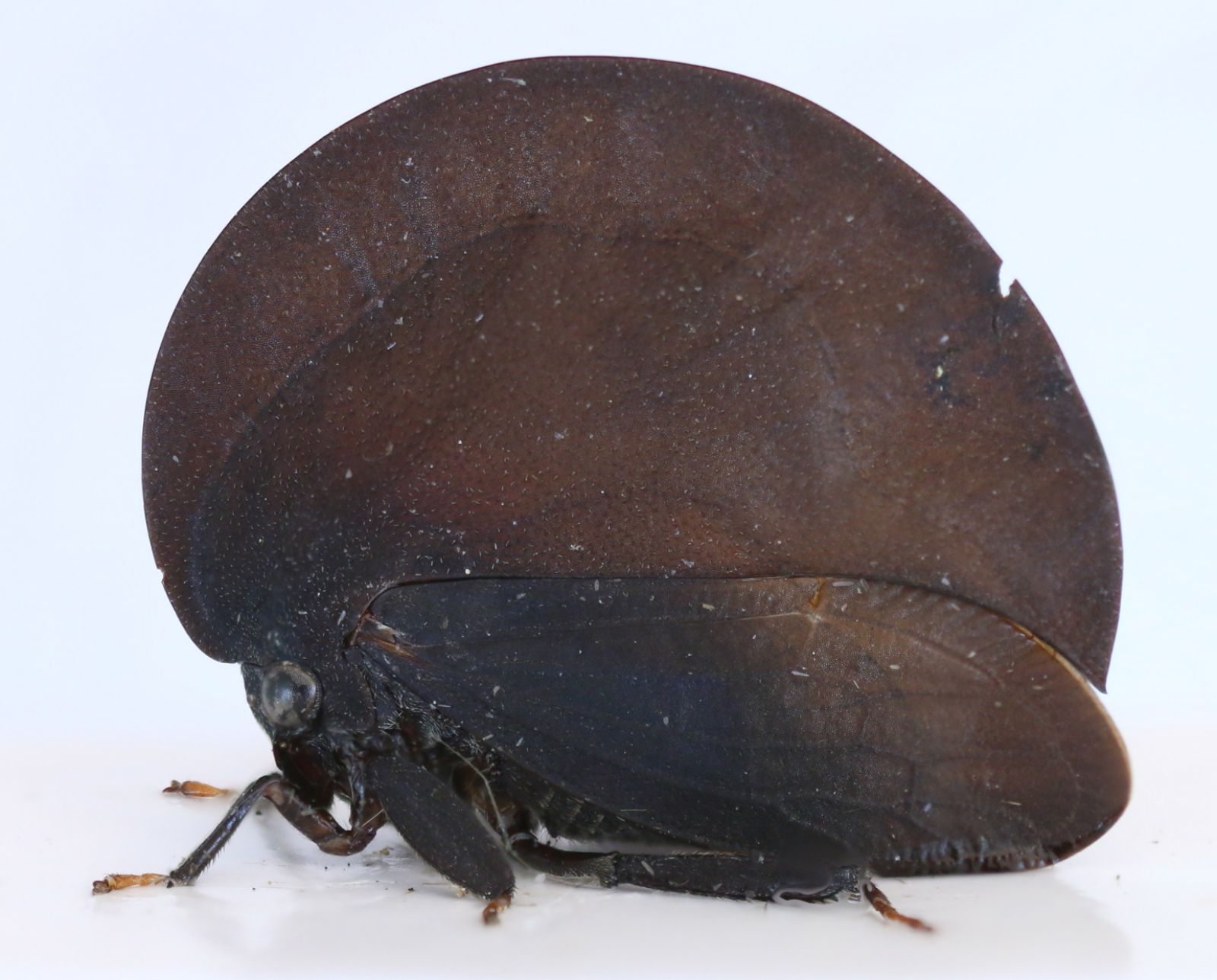
© Copyright 2018, Jérémie Lapèze.
1
 2
2
3
 4
4
© Copyright 2018, Jérémie Lapèze.
Invasion of Bocydium Treehoppers
2018-04-04
Please remain calm! Recent rumors (1 April 2018) of Bocydium
treehoppers invading Japan are highly “inflated.” We believe these accounts may be traced to the incredible Japanese balloon artist Masayoshi Matsumoto (see also: instagram isopresso treehopper balloon and twitter isopresso treehopper balloon).
"There's a Million of Them!... Hurry! Get Inside!"
2018-04-11
Witness frantic video footage of treehoppers besieging a Dallas family and their car. The mood quickly swings from amazement and laughter to horror and panic. Filmed during a time of such excitement, it is not surprising that the images of many individual treehoppers are a bit out of focus; however, Mark Rothschild, a member of our Treehoppers Team, believes specimens of Smilia camelus (Fig. 1) are well represented, along with perhaps a few S. fasciata, Cyrtolobus tuberosus, and probably C. fenestratus. But fear not! We suspect no one was seriously injured in this extraordinary encounter. The video is from a posting entitled "Treehoppers" (by Mike Merchant, 9 April 2018) on the Texas A& M AgriLife Extension Blog: "Insects in the City." Closeup images of the four species listed here can be seen on the checklist of Texas treehoppers, as well as on our genus pages for Cyrtolobus and and Smilia.
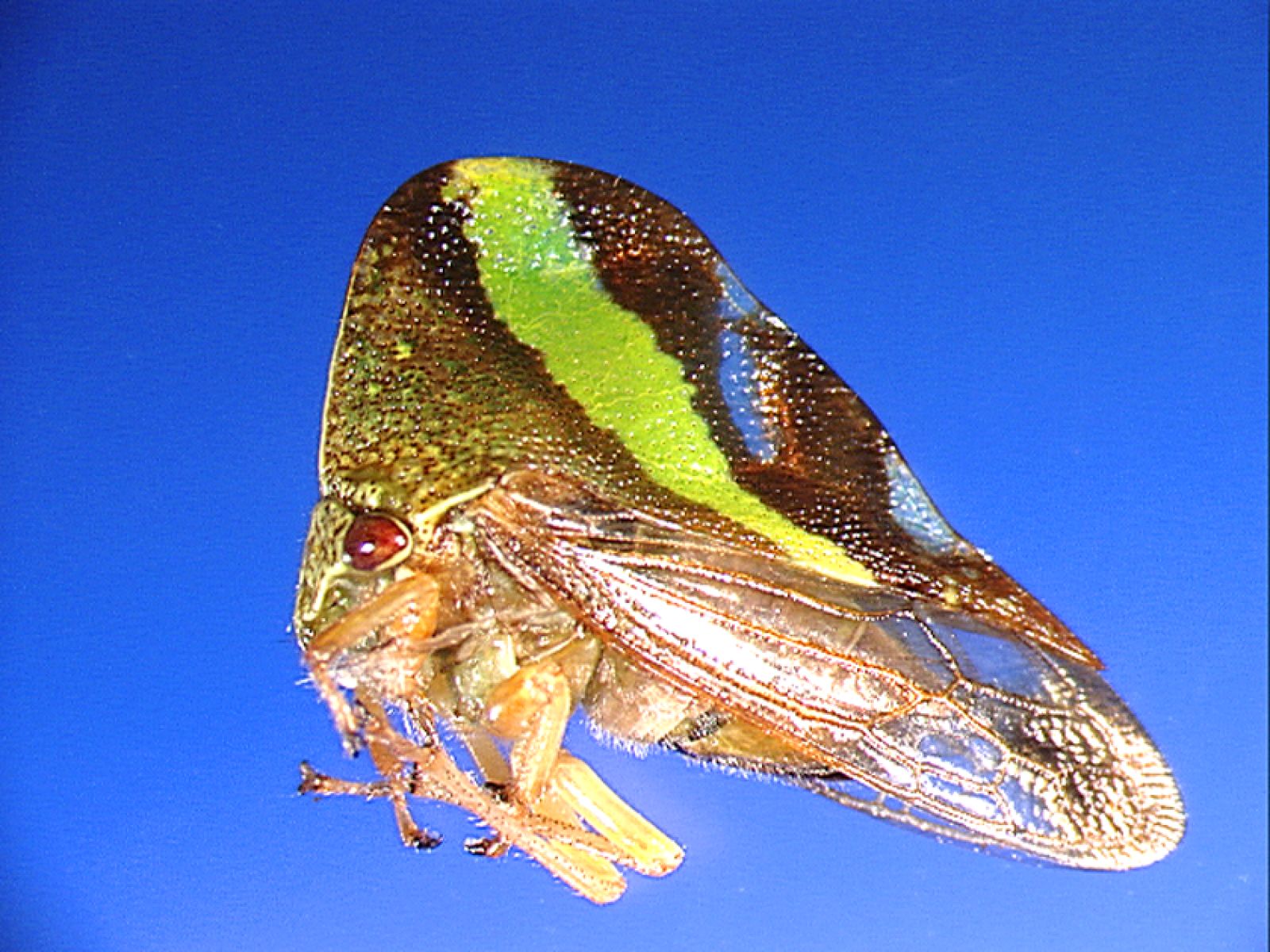
Fig. 1. Smilia camelus, female. © 2015, by Matthew S. Wallace and Lewis L. Deitz.

Fig. 1. Smilia camelus, female. © 2015, by Matthew S. Wallace and Lewis L. Deitz.
Join the 26th Annual Treehopper Gathering, Little Orleans, Maryland, 31 May to 3 June 2018
2018-04-16
The 2018 Treehopper Gathering is arranged for the first weekend in June, Little Orleans Campground, Little Orleans, Maryland. Most activities will begin on Friday, 1 June, and end Sunday morning, 3 June, but attendees are welcome to set up their tents and start collecting treehoppers on Thursday, 31 May. “Treehopper Camp,” as old timers call it, provides a casual opportunity to meet and collect with others passionate about treehoppers and related insects in scenic western Maryland. Located in the Upper Potomac River valley, the campground occupies 222 acres of beautiful woodlands. At least 56 treehopper species (in 23 genera) have been collected in this vicinity.
To reserve a campsite with our group or to obtain further information, contact Charles Bartlett. Advanced registration with Charles is essential to assure that you have a campsite. Participants are expected to provide their own tents, food, and camping gear, and to share in the cost of the group campground registration and the group meal provided on Saturday evening. Bring your collecting vials, insect nets, unidentified specimens, cameras, and bathing suits! Don’t forget to flaunt your treehopper t-shirts.
To reserve a campsite with our group or to obtain further information, contact Charles Bartlett. Advanced registration with Charles is essential to assure that you have a campsite. Participants are expected to provide their own tents, food, and camping gear, and to share in the cost of the group campground registration and the group meal provided on Saturday evening. Bring your collecting vials, insect nets, unidentified specimens, cameras, and bathing suits! Don’t forget to flaunt your treehopper t-shirts.
"Animals of Costa Rica": Images of 107 Treehopper Species
2018-04-16
Treehoppers collaborator Gernot Kunz has released a new app titled "Animals of Costa Rica" that has 107 photos of treehoppers (105 membracids; 2 aetalionids) plus several hundreds more of related groups such as leafhoppers, planthoppers, and spittlebugs. Many other insects, as well as crustaceans, amphibians, reptiles, birds, and mammals found in Costa Rica are also featured. Below are screen shots from the app showing (1) the title page, (2) several Costa Rican treehoppers, and (3) the page leading to treehoppers and related groups.
1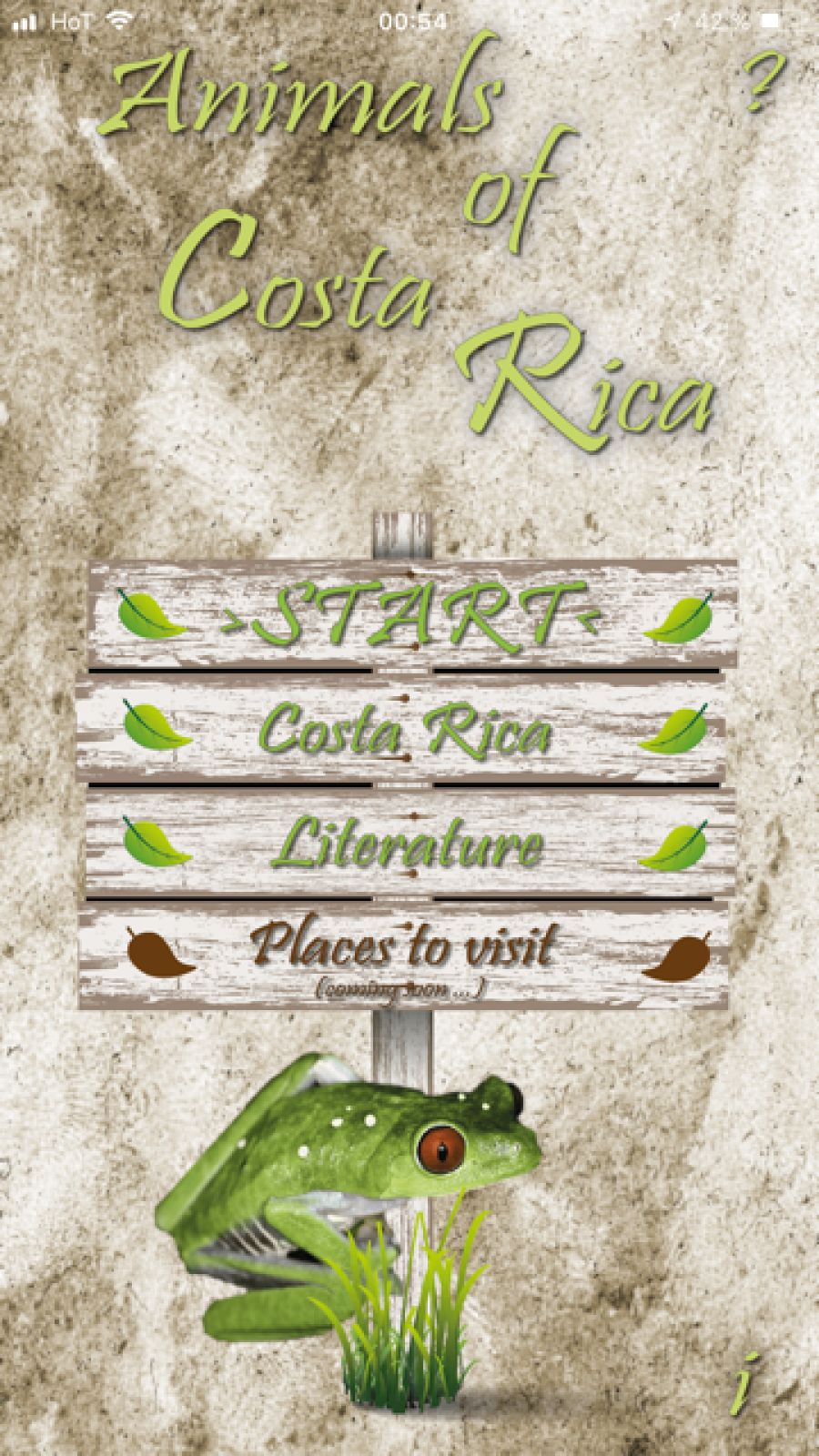 2
2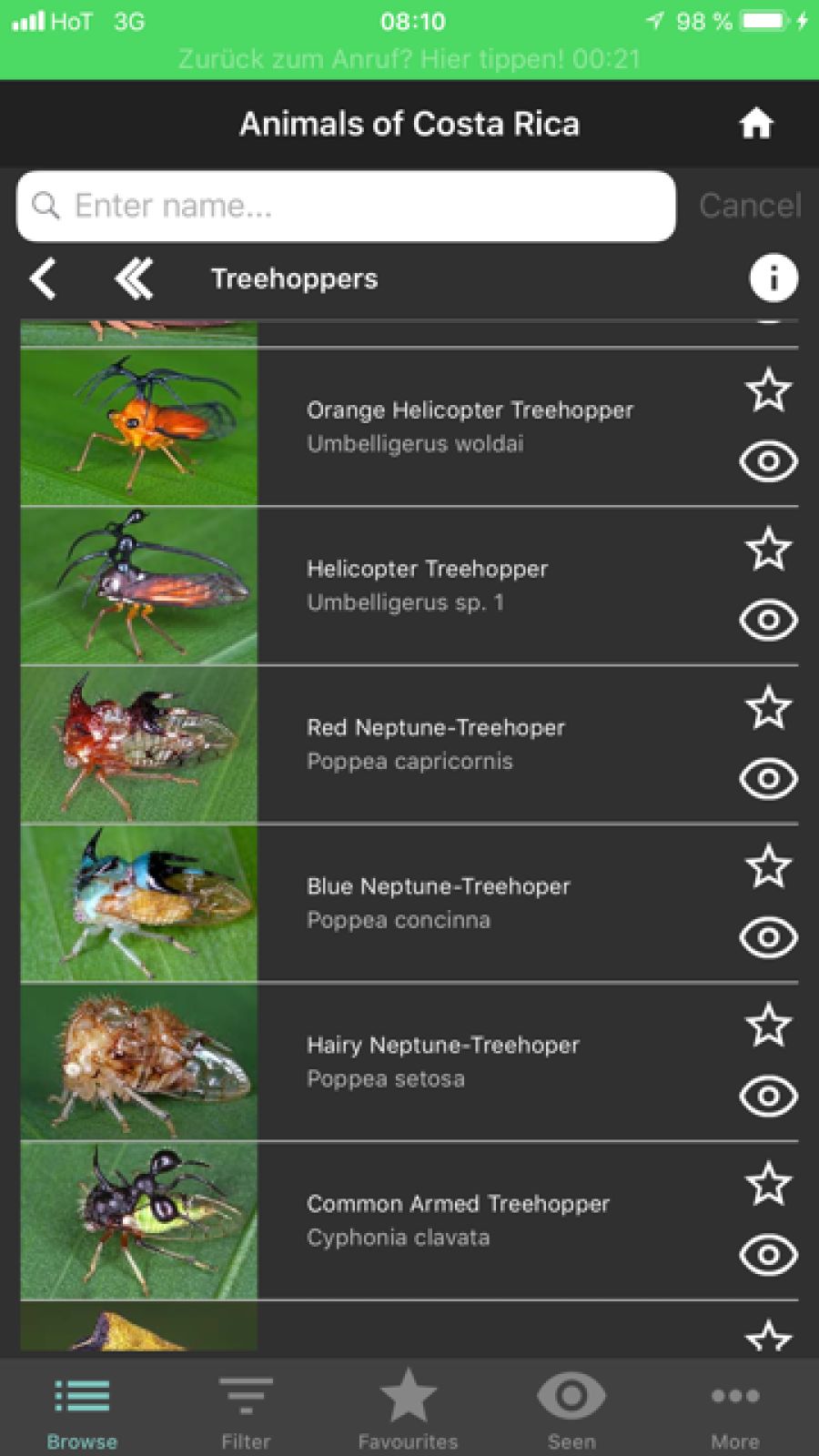 3
3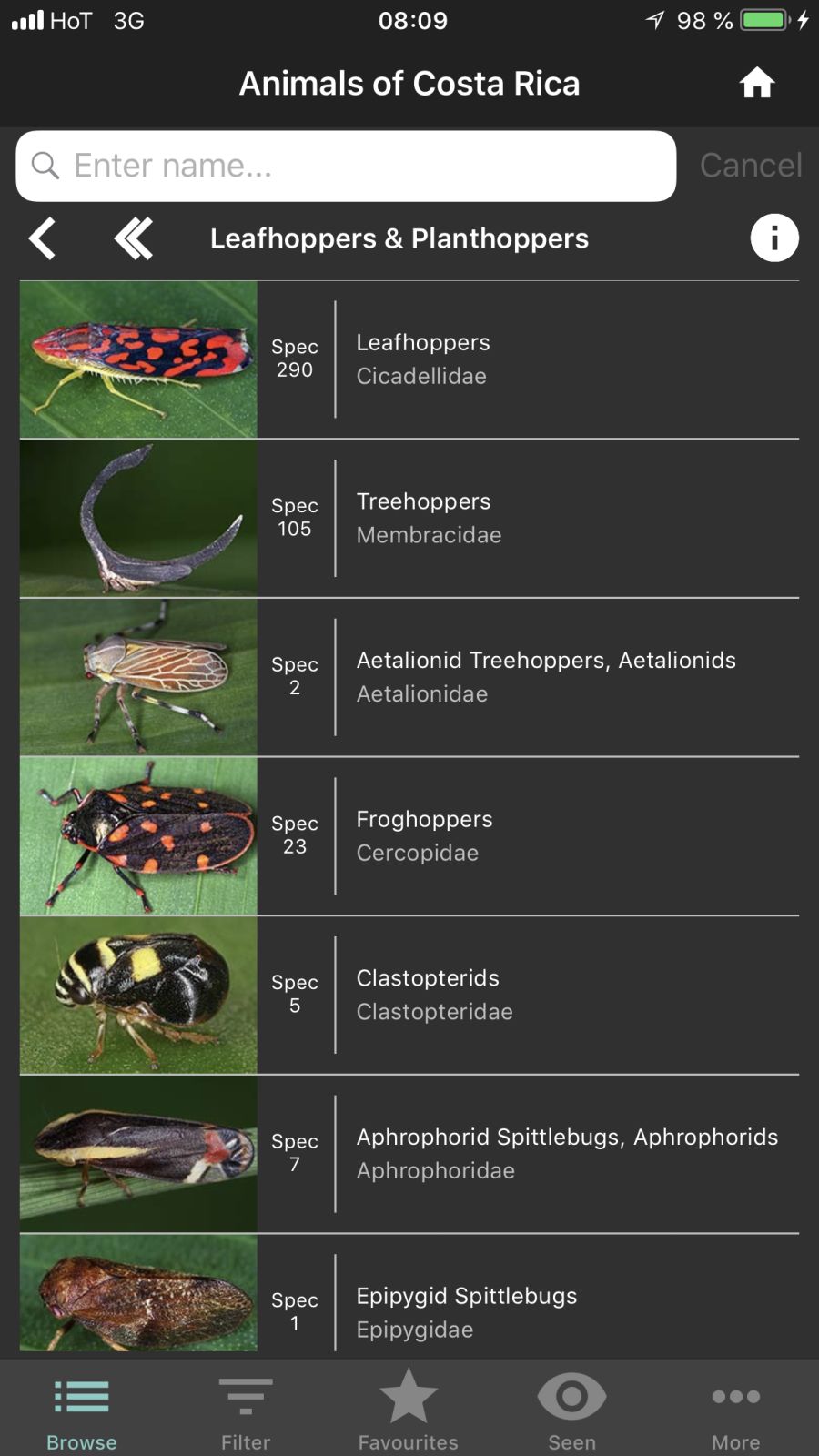
Screen shots from "Animals of Costa Rica" © Copyright 2018, by Guernot Kunz
1
 2
2 3
3
Screen shots from "Animals of Costa Rica" © Copyright 2018, by Guernot Kunz
Kenji Nishida’s Treehopper Postings on "Web National Geographic Japan"
2018-04-30
Below are links to postings in "Daily Life Centered on Insects" with treehopper images by "exploratory entomologist" Kenji Nishida. These 31 items are on the free Website "Web National Geographic Japan". Although the online texts are in Japanese, scientific names are also provided. We are most grateful to Kenji for compiling the index below, including English translations of his titles. To advance through items with more than one page, click "2" or ">" [the "next" button]. The online photos and text are under the following copyrights: ©National Geographic Society. ©National Geographic Partners, LLC. ©Nikkei National Geographic Inc. All rights reserved. Kenji also frequently contributes wonderful images to the Treehoppers project as one of our early collaborators.
#149 The mysterious treehopper nymph became adult and is a new species
#148 For three years, searching for mysterious spiny treehopper nymphs
#140 The rain tells rainy season, the forest tinted in gold
#139 The moment when gorgeous pronotum comes out
#138 Bizarre treehopper, having “Takekoptaa”
#137 Wasps chewed and came out from live treehopper nymphs (movies available)
#136 Treehoppers that resemble caterpillar-droppings
#135 Pop-art treehoppers
#132 Polyglypta treehoppers make leaves wilt
#131 Elongated treehoppers, Polyglypta
#129 Honeydew of “Konpeitou” candy-looking treehoppers
#127 Treehoppers sing love songs
#124 Rare species! Moss-mimicking treehopper
#121 Face of witch? Treehopper photo gallery
#120 Thinking of the meaning of strange forms of treehoppers
#119 Red treehopper, Blue treehopper, Yellow treehopper
#118 Met with a huge treehopper in a vegetable farm
#117 By rearing, it became a “Kuramatengu” treehopper
#116 Mother treehopper carefully looking after her eggs
#113 Bathroom insect photo studio
#94 Molting shells have enlightened their hidden life style
#Extra The name of the new species is Mutilifolia nishidai
#79 The camera I have been using for more than 12 years
#76 Scientists discuss enthusiastically until finding out the name of a treehopper
#45 Nishida’s style white background photography
#34 “Odd” insects are also found in Japan!
#28 “Odd” insects
#16 Didn’t know that eggplant is so popular!
#12 Rain, Rain, Rain! Who’s merrymaking?
#4 Rainy season has come! What’s falling down from the ceiling?
#1 Kenji Nishida is an exploratory entomologist.
#149 The mysterious treehopper nymph became adult and is a new species
#148 For three years, searching for mysterious spiny treehopper nymphs
#140 The rain tells rainy season, the forest tinted in gold
#139 The moment when gorgeous pronotum comes out
#138 Bizarre treehopper, having “Takekoptaa”
#137 Wasps chewed and came out from live treehopper nymphs (movies available)
#136 Treehoppers that resemble caterpillar-droppings
#135 Pop-art treehoppers
#132 Polyglypta treehoppers make leaves wilt
#131 Elongated treehoppers, Polyglypta
#129 Honeydew of “Konpeitou” candy-looking treehoppers
#127 Treehoppers sing love songs
#124 Rare species! Moss-mimicking treehopper
#121 Face of witch? Treehopper photo gallery
#120 Thinking of the meaning of strange forms of treehoppers
#119 Red treehopper, Blue treehopper, Yellow treehopper
#118 Met with a huge treehopper in a vegetable farm
#117 By rearing, it became a “Kuramatengu” treehopper
#116 Mother treehopper carefully looking after her eggs
#113 Bathroom insect photo studio
#94 Molting shells have enlightened their hidden life style
#Extra The name of the new species is Mutilifolia nishidai
#79 The camera I have been using for more than 12 years
#76 Scientists discuss enthusiastically until finding out the name of a treehopper
#45 Nishida’s style white background photography
#34 “Odd” insects are also found in Japan!
#28 “Odd” insects
#16 Didn’t know that eggplant is so popular!
#12 Rain, Rain, Rain! Who’s merrymaking?
#4 Rainy season has come! What’s falling down from the ceiling?
#1 Kenji Nishida is an exploratory entomologist.
Z. P. Metcalf Collection of Literature on Auchenorrhyncha
2018-06-12
Dear Colleagues,
We would like to make you aware of an exciting resource that is available to you at the Special Collections Research Center at NCSU Libraries in Raleigh, North Carolina. The Zeno Payne Metcalf Entomology Research Collection is an outstanding resource for scholars. The link to the finding aid is: https://www.lib.ncsu.edu/findingaids/mc00220 and the link to the associated database for individual publications is: http://metcalf.lib.ncsu.edu/metcalf/.
If you would like to make an appointment to view any materials in person, or to request a copy of a publication remotely, please email us at: library_specialcollections@ncsu.edu. We typically need 2-3 business days to pull selected materials from off-site storage. More information about visiting the Special Collections Research Center is at: https://www.lib.ncsu.edu/scrc/using-materials.
Finally, we are pleased to let you know that low-resolution copies (PDFs) only cost 50 cents per page, but, if you bring a camera (no flash allowed) or cell phone, you can take photographs at no cost in the Special Collections Reading Room. If you are unable to visit in person, we can still provide low-resolution copies (PDFs) to you for the fees outlined above. For security reasons, arrangements to pay using a major credit card (preferred) or bank transfer should be made by telephone. Copyright law applies (see: https://www.lib.ncsu.edu/scrc/copyright).
If you have any further questions about the Metcalf materials or copyright, please don't hesitate to contact us at: library_specialcollections@ncsu.edu.
Sincerely, Gwynn Thayer, Acting Department Head, Special Collections Research Center
We would like to make you aware of an exciting resource that is available to you at the Special Collections Research Center at NCSU Libraries in Raleigh, North Carolina. The Zeno Payne Metcalf Entomology Research Collection is an outstanding resource for scholars. The link to the finding aid is: https://www.lib.ncsu.edu/findingaids/mc00220 and the link to the associated database for individual publications is: http://metcalf.lib.ncsu.edu/metcalf/.
If you would like to make an appointment to view any materials in person, or to request a copy of a publication remotely, please email us at: library_specialcollections@ncsu.edu. We typically need 2-3 business days to pull selected materials from off-site storage. More information about visiting the Special Collections Research Center is at: https://www.lib.ncsu.edu/scrc/using-materials.
Finally, we are pleased to let you know that low-resolution copies (PDFs) only cost 50 cents per page, but, if you bring a camera (no flash allowed) or cell phone, you can take photographs at no cost in the Special Collections Reading Room. If you are unable to visit in person, we can still provide low-resolution copies (PDFs) to you for the fees outlined above. For security reasons, arrangements to pay using a major credit card (preferred) or bank transfer should be made by telephone. Copyright law applies (see: https://www.lib.ncsu.edu/scrc/copyright).
If you have any further questions about the Metcalf materials or copyright, please don't hesitate to contact us at: library_specialcollections@ncsu.edu.
Sincerely, Gwynn Thayer, Acting Department Head, Special Collections Research Center
Photos of the 26th Annual Treehopper Aggregation: 1-3 June 2018, Little Orleans, Maryland
2018-06-20
Although the rained poured more than a little, especially at the night, this year’s Treehopper Gathering will go down as another great success as documented in the photos below, all kindly provided by Matt Bertone.
Fig. 1. The 23 participants for 2018 were from left to right: Nate Nazdrowicz, Katie Weglare, Vinton Thompson, Anthony T. Gonzon, Dawn Flynn, Mark Rothschild, Lewis Deitz, Charles Bartlett, Matt Wallace, Daniel Wilczek, Stuart McKamey, Lawrence Barringer, Celeste Copay, Ashley Kennedy, Matt Bertone, Laura Veru, Lee Coats, Becca Robertson, Anthony Deczynski, Devan George, Tyler Hagerty, Abby Clarke, and [Brandon Ruhe, not present for photo]. Designer T-shirts: Nate wore the same shirt also in group photos for 2013, 2014, 2015, 2016, and 2017; Vinton sported a shirt from the 12th International Auchenorrhyncha Congress & 5th International Workshop on Leafhoppers and Planthoppers of Economic Importance, University of California, Berkeley, August 2005; Dawn and Charles flaunted shirts celebrating, respectively, the 20th (2012) and 25th (2017) Anniversaries of our Annual Treehopper Gathering. (Photo Copyright © 2018, by Matthew A. Bertone.)
1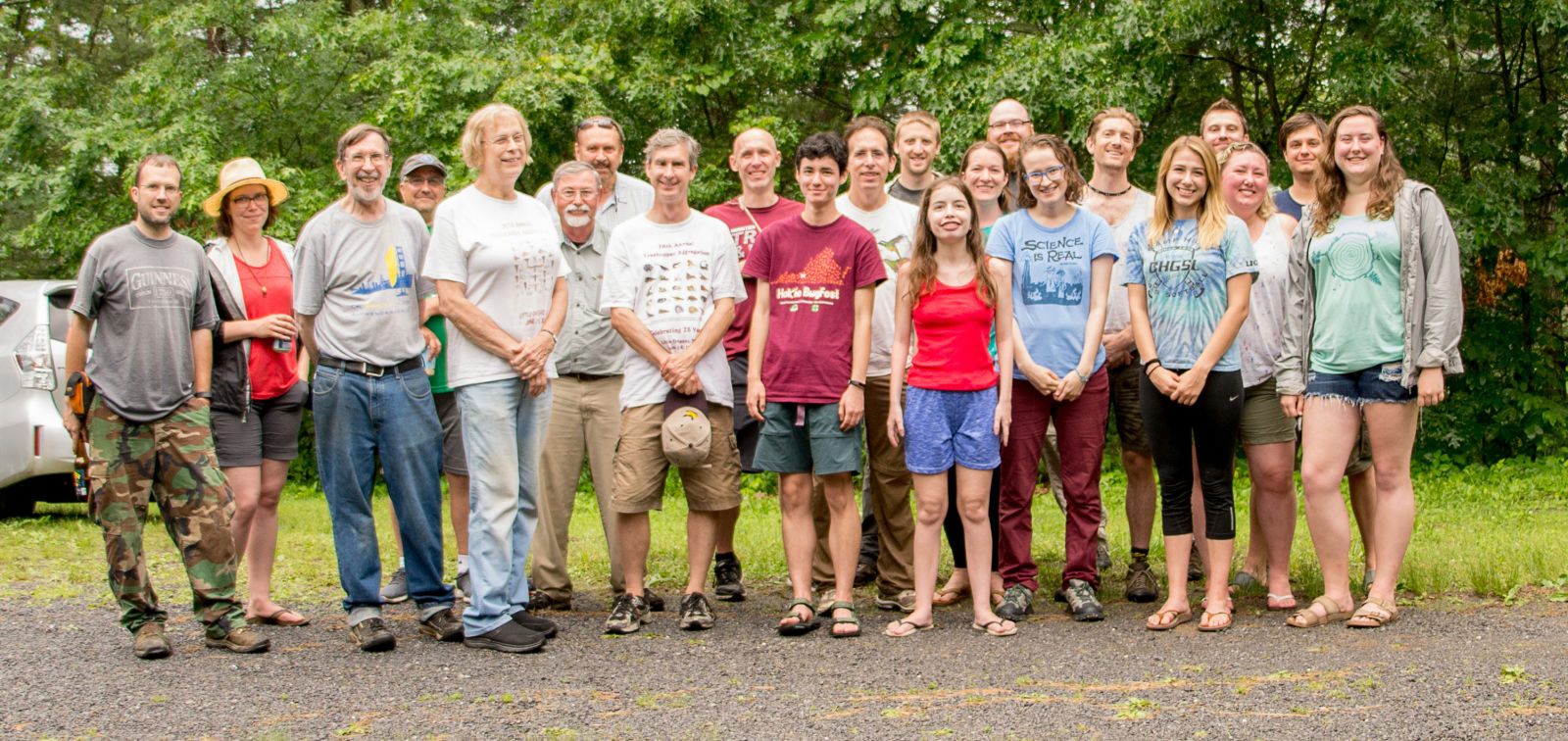
Lots of treehoppers (Figs. 2, Telamona decorata and 3, Cyrtolobus inermis) and other biological specimens were collected (Figs. 4, Becca with Io moth, 5, insect collectors, 6 Abby with Luna moth), photographed (Figs. 7, dustywing, 8, cup fungus, 9, giant thrips, 10, black fish fly,11, xystodemid millipede, 12, metallic wood borer,, 13, gall midge, 14, bracket fungus, 15, orange patched smoky moth), identified, swapped, lent, or donated among group participants. (Photos Copyright © 2018, by Matthew A. Bertone.)
2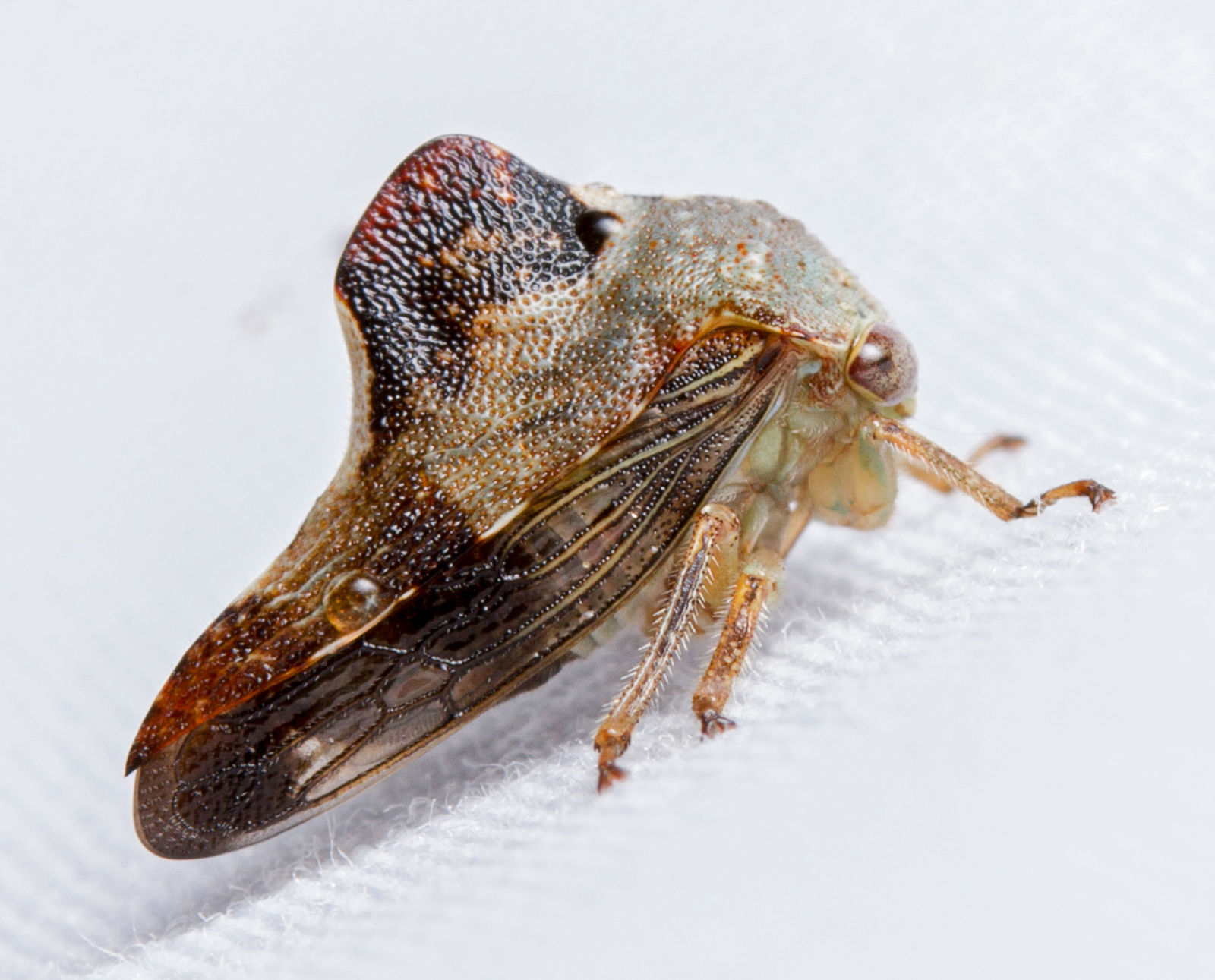 3
3 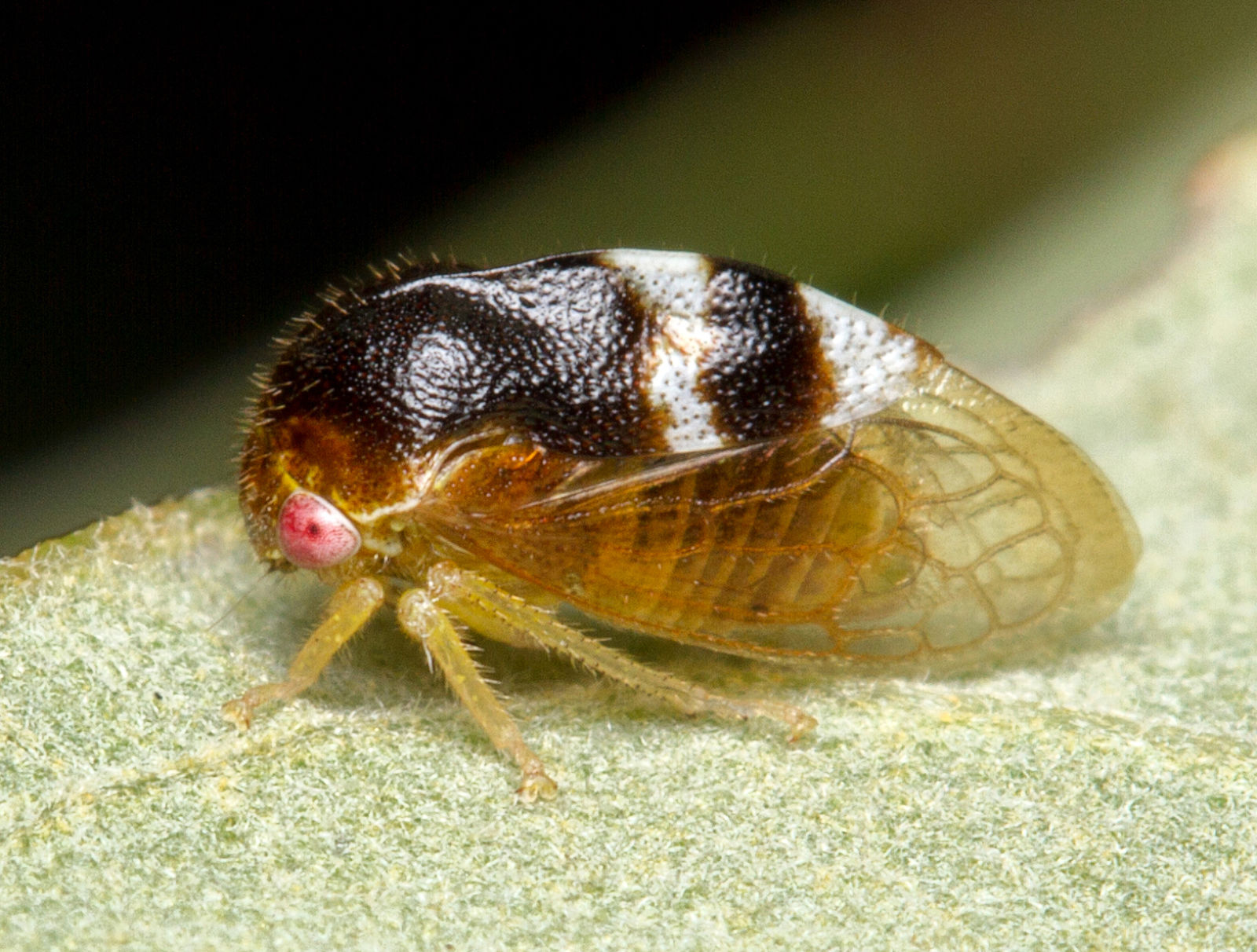
4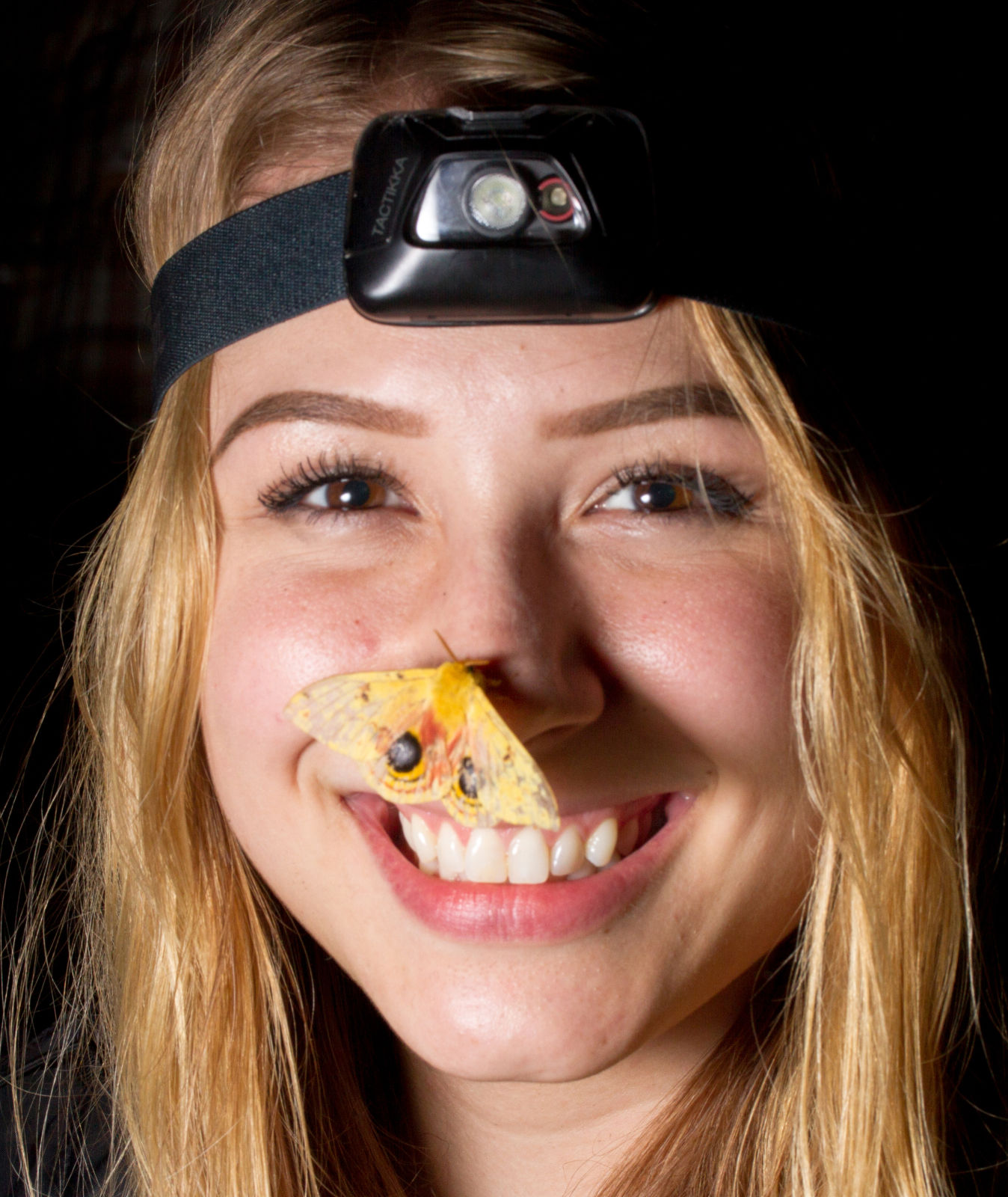 5
5 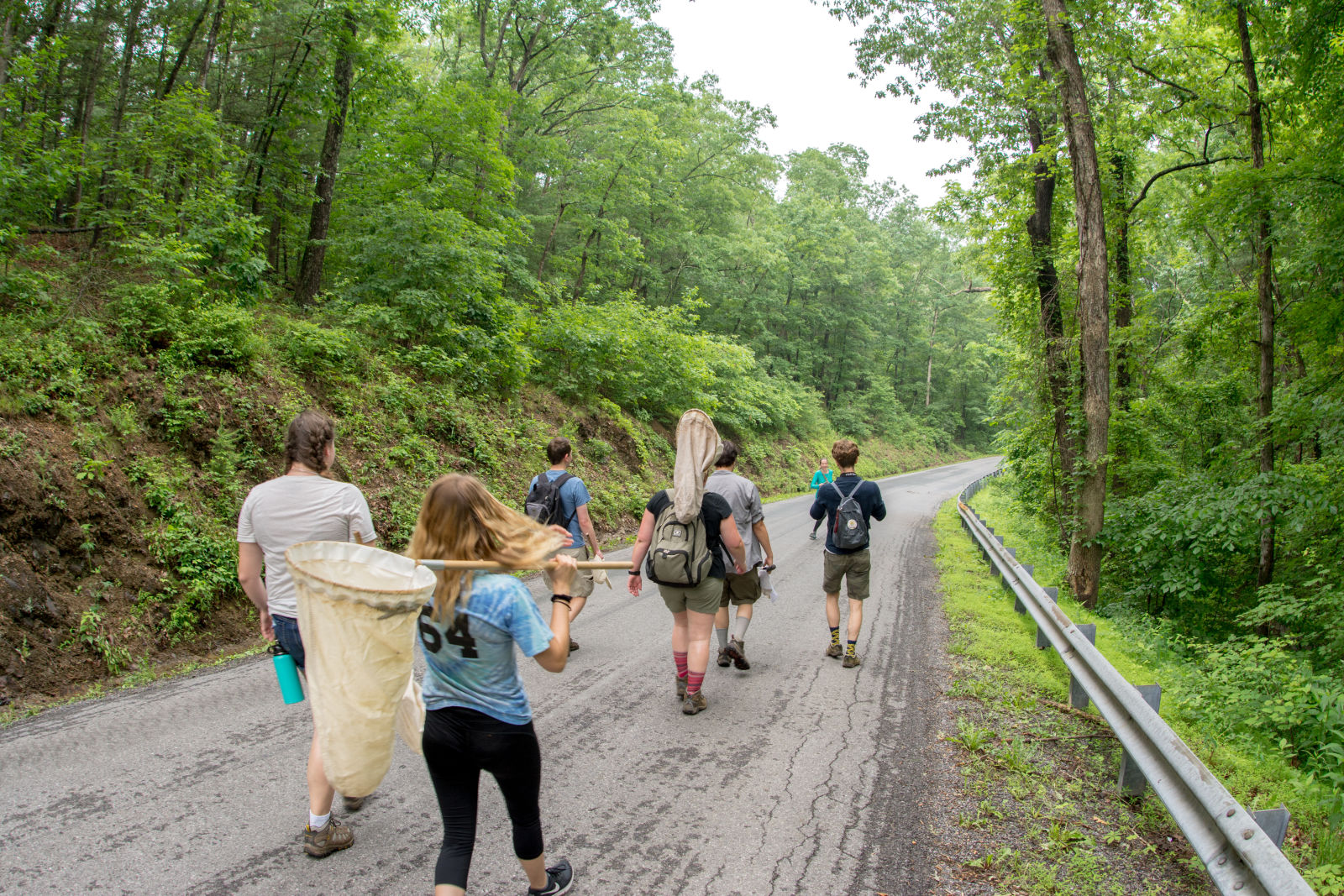 6
6 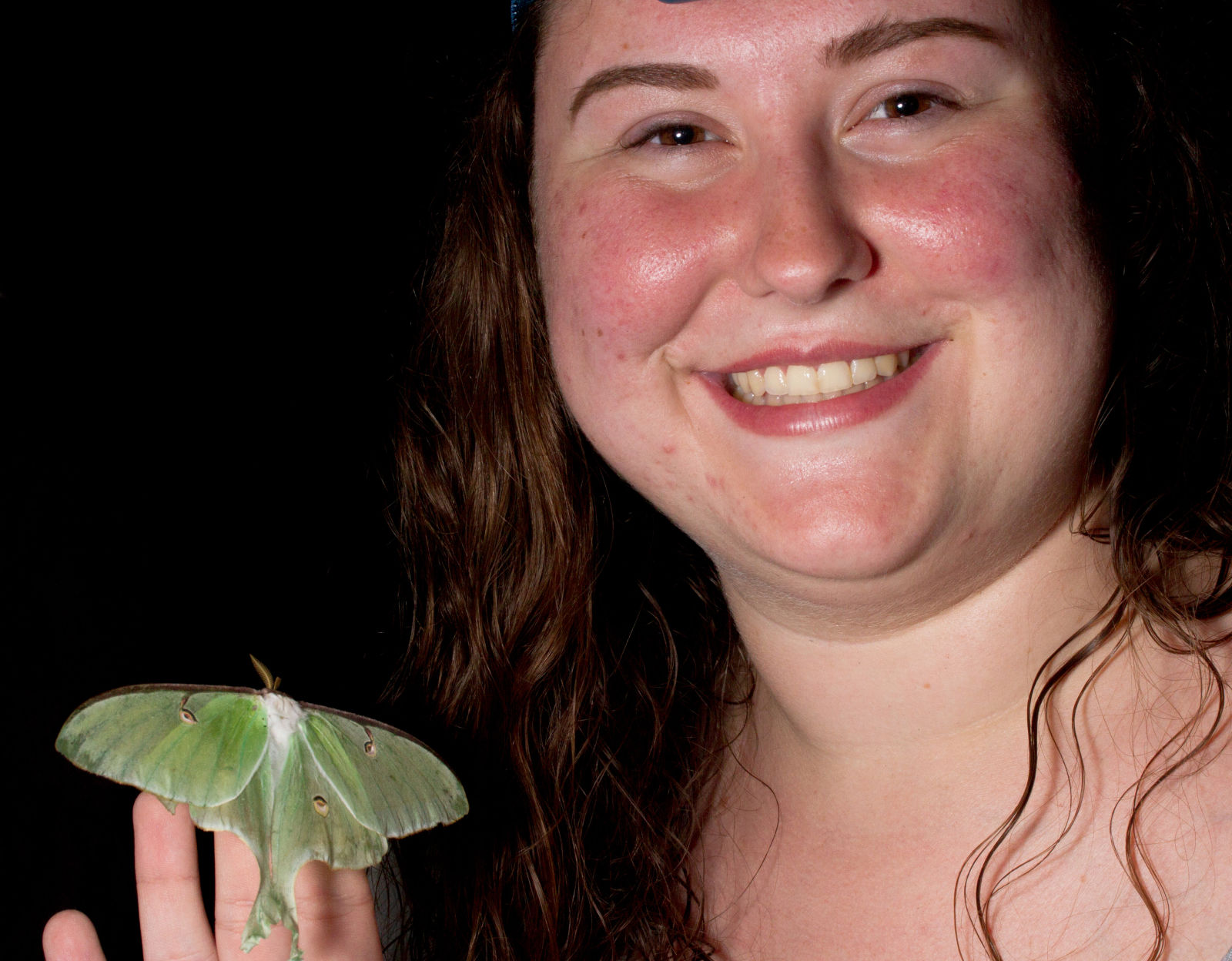
7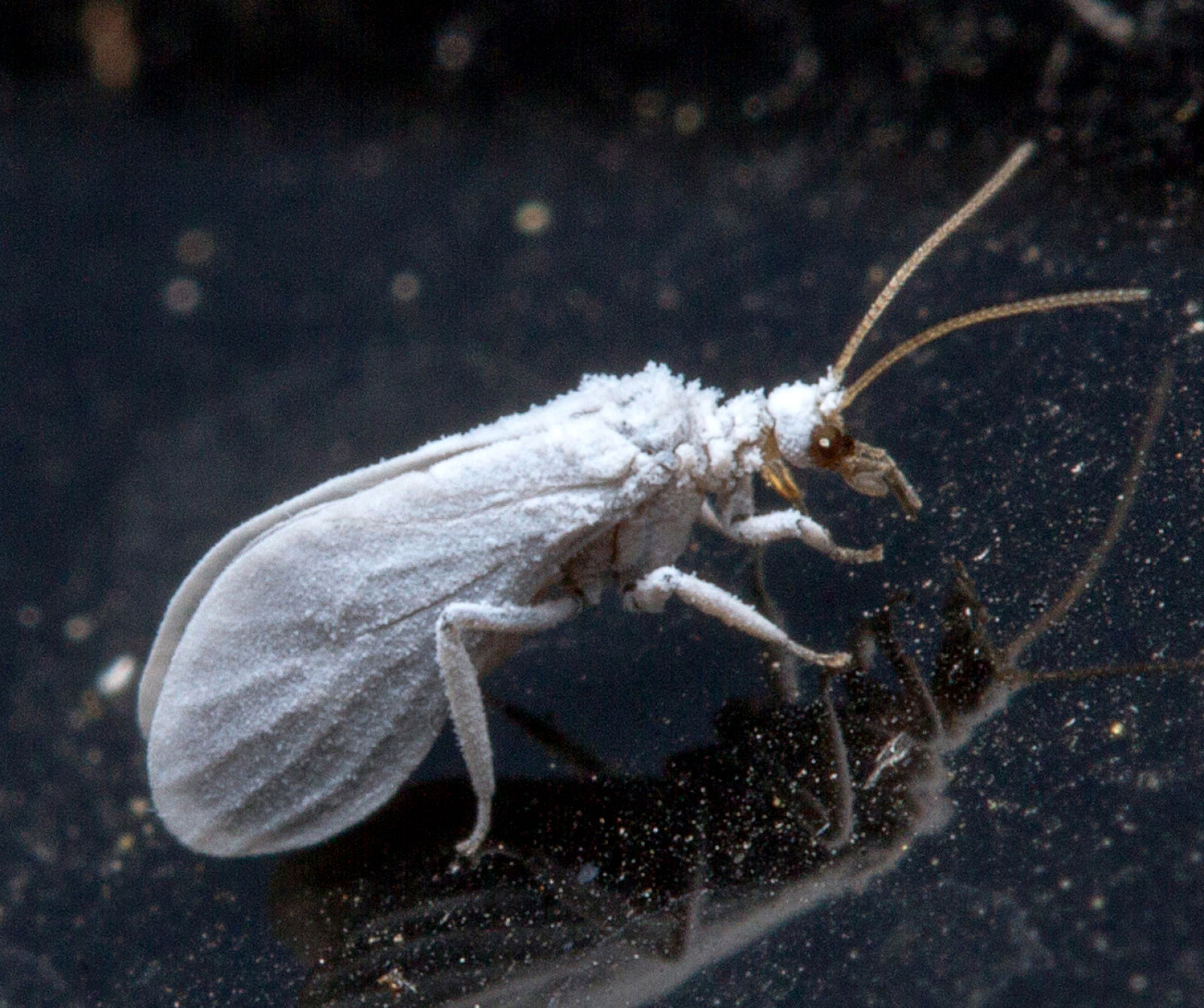 8
8 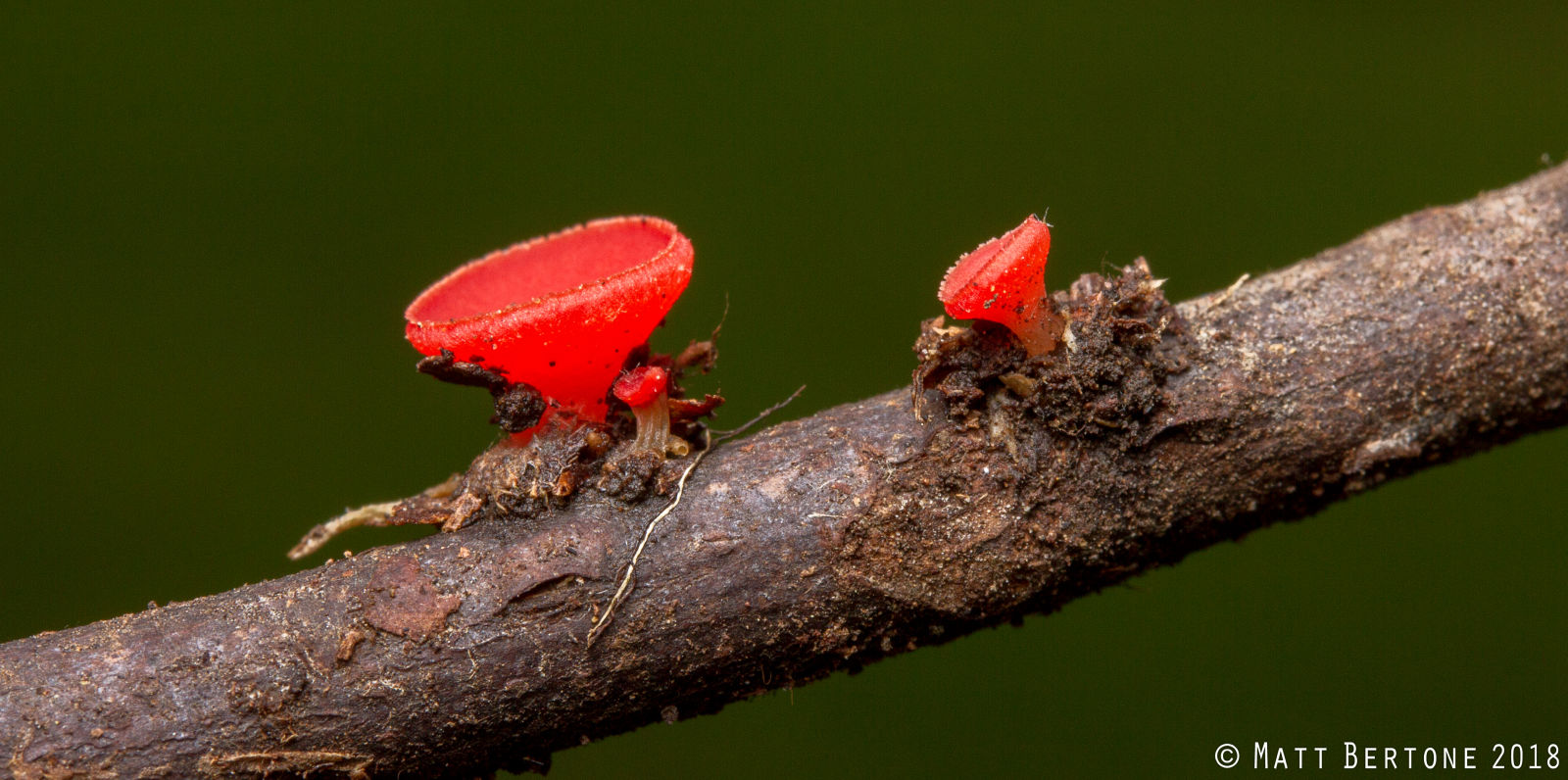 9
9 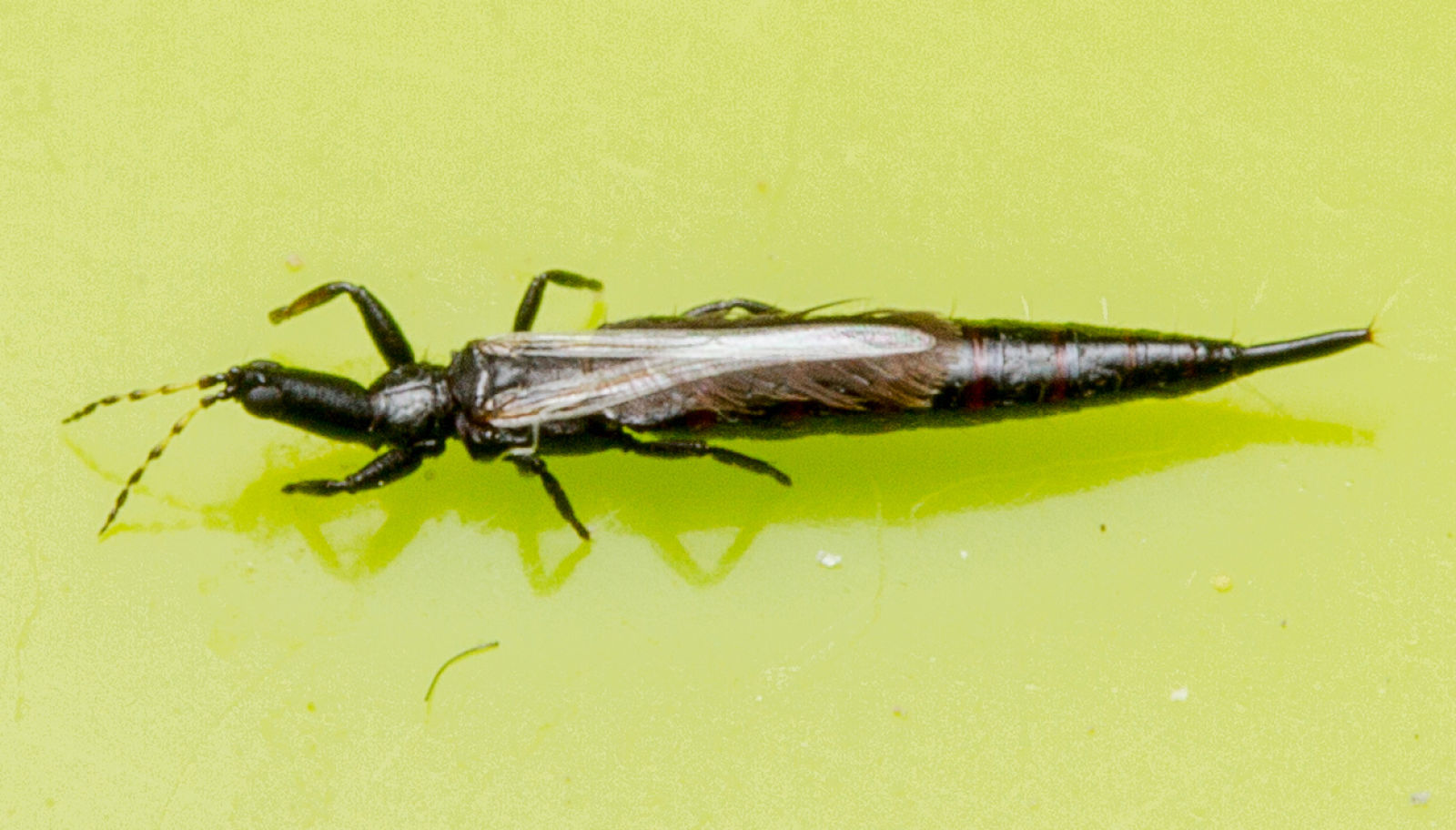
10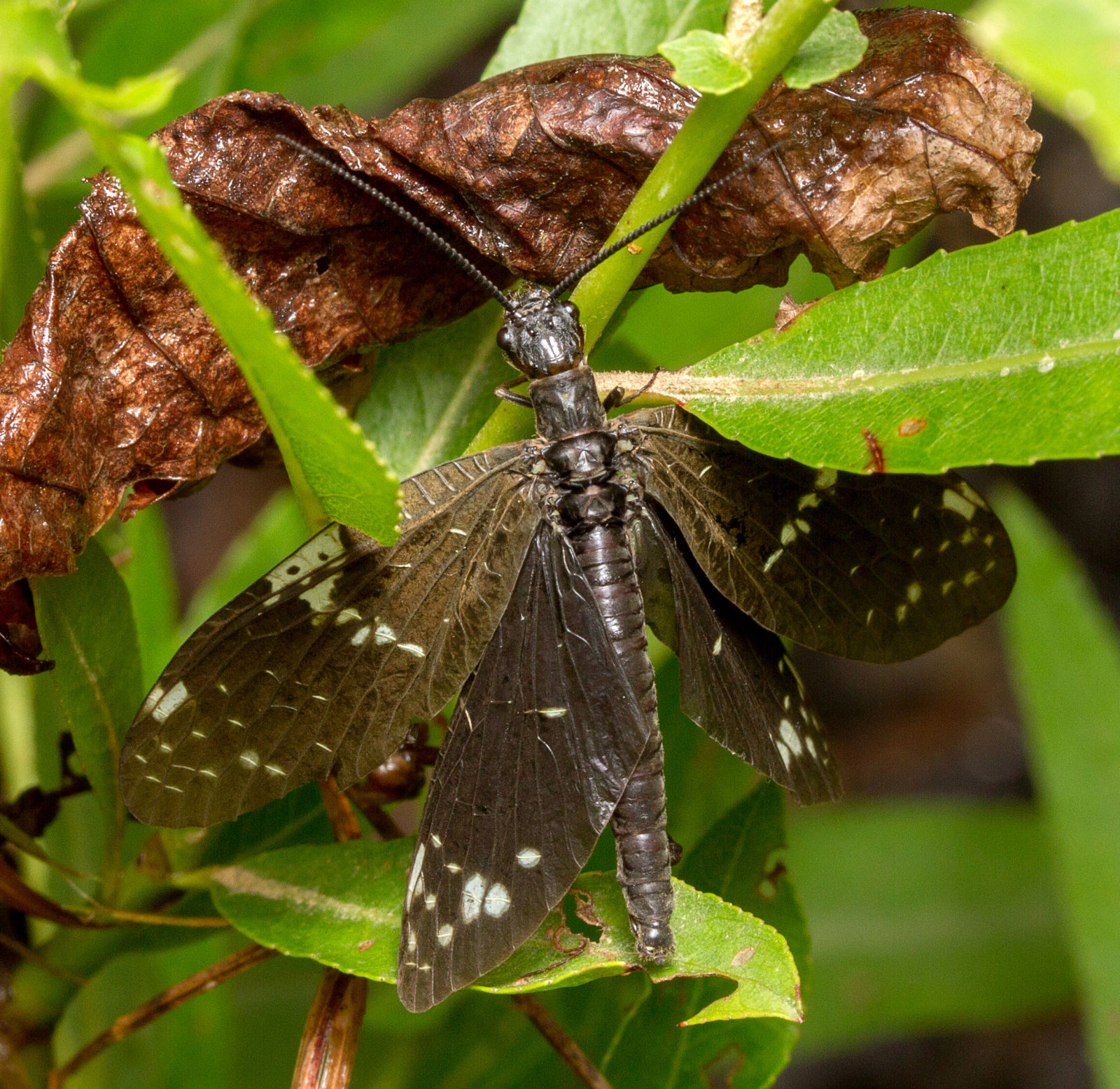 11
11 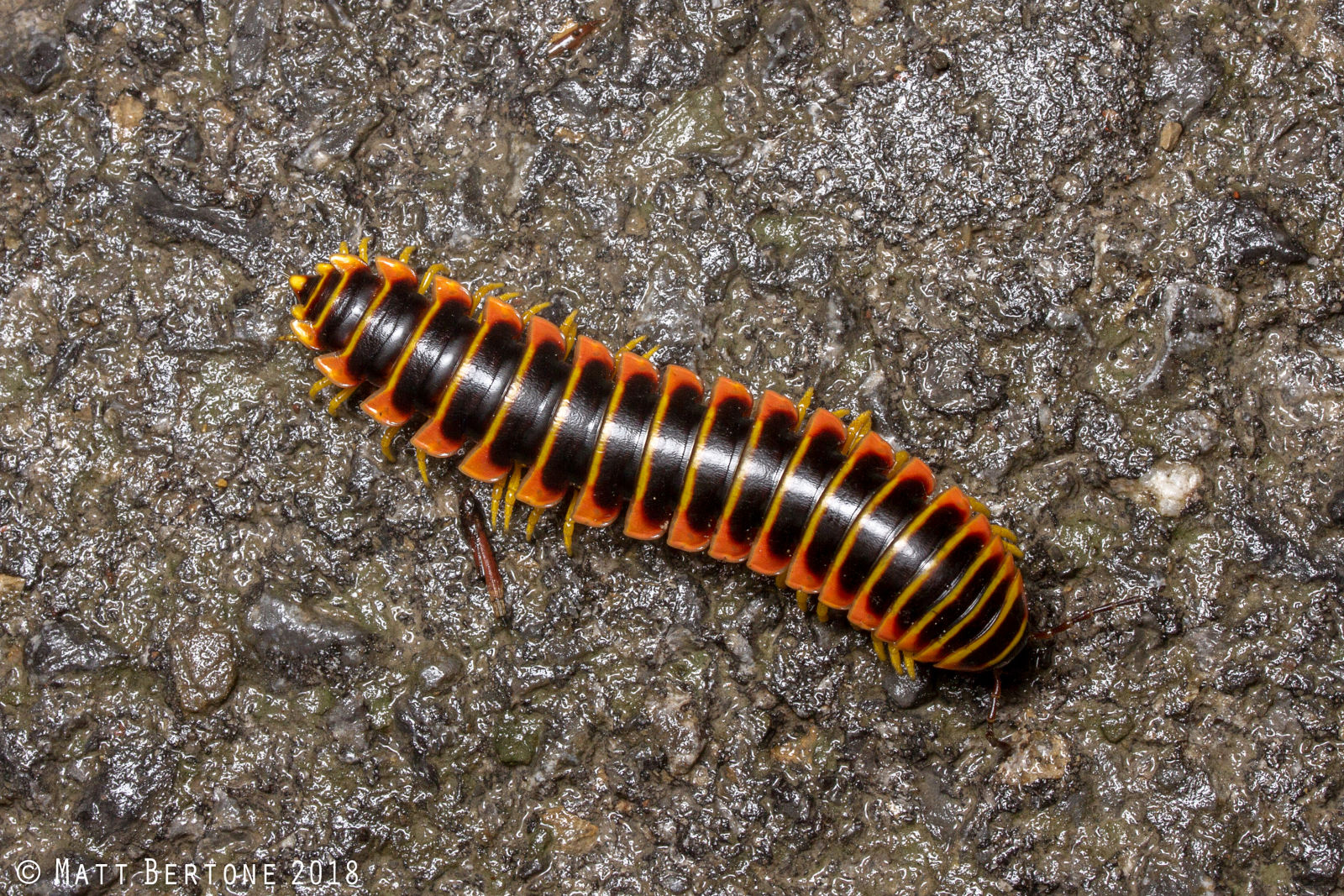 12
12 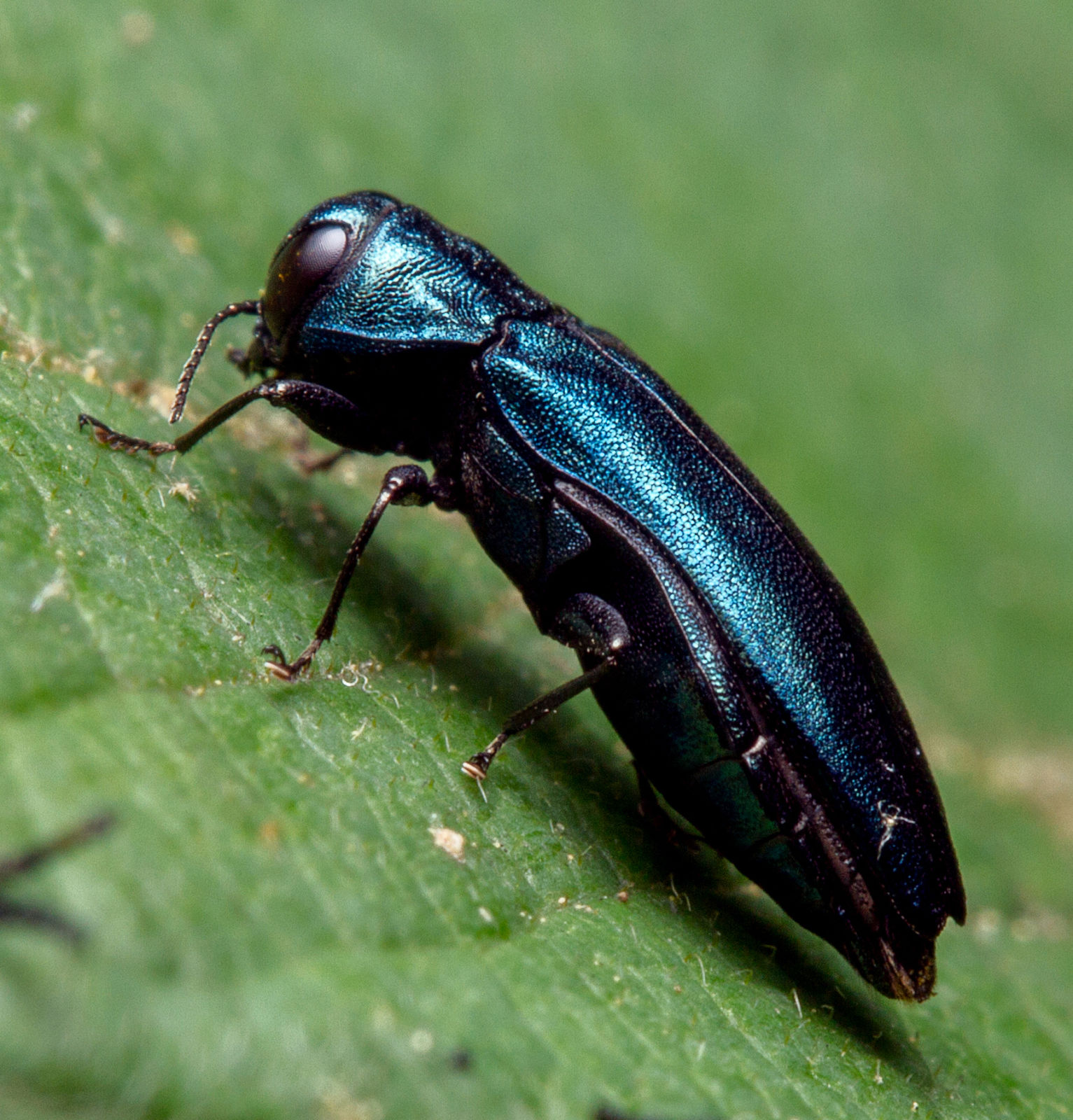
13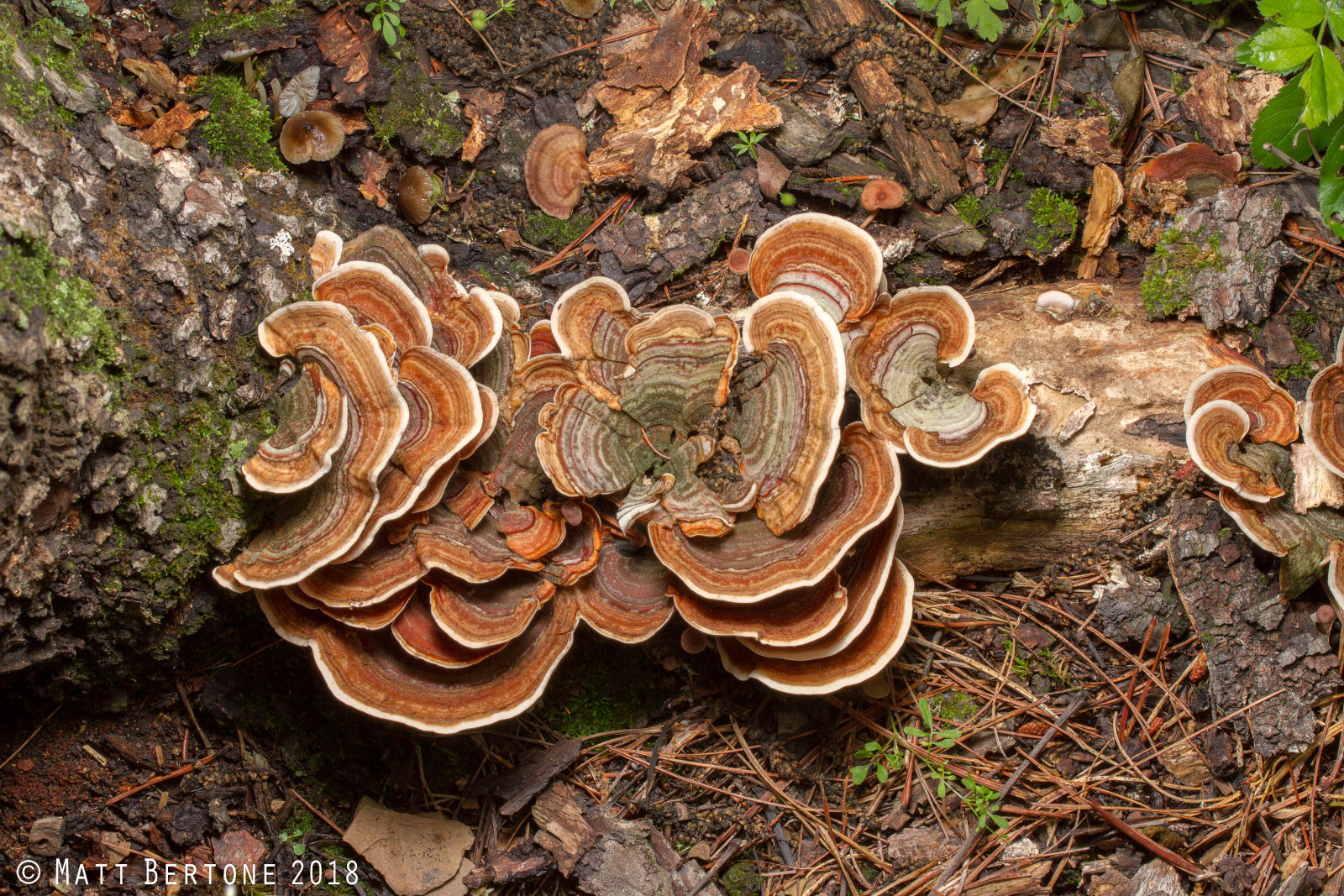 14
14 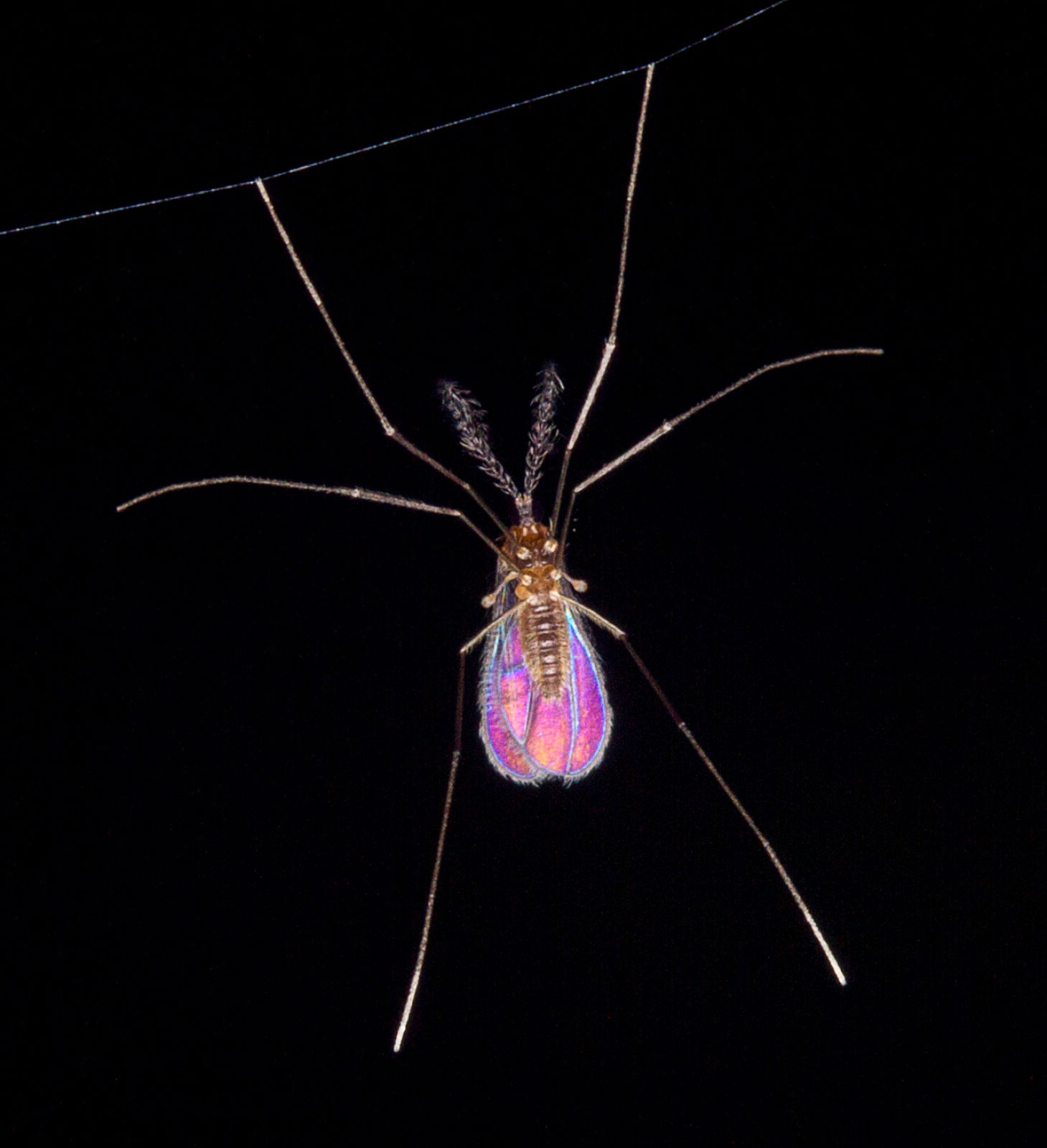 15
15 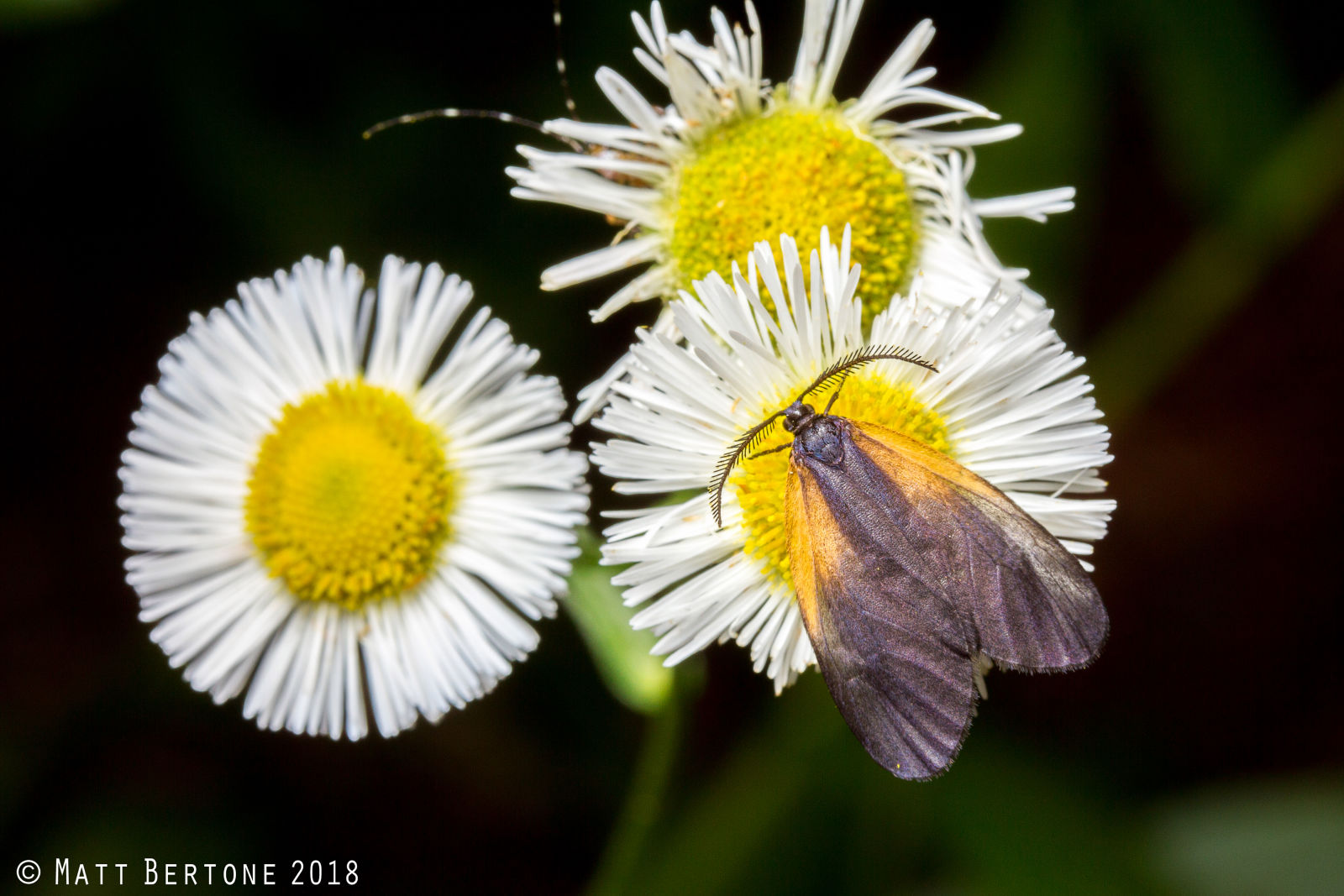
Other activities included feasting (Fig. 16, dedicated group organizer Charles Bartlett cleaning up after our group dinner), relaxing (Fig. 17), socializing, catching up on various research projects, swimming, hiking, and collecting fossils (Figs. 18-20). For more photos of the Gathering, see Matt Bertone’s images at activities and floral and fauna. (Photos Copyright © 2018, by Matthew A. Bertone.)
16 17
17 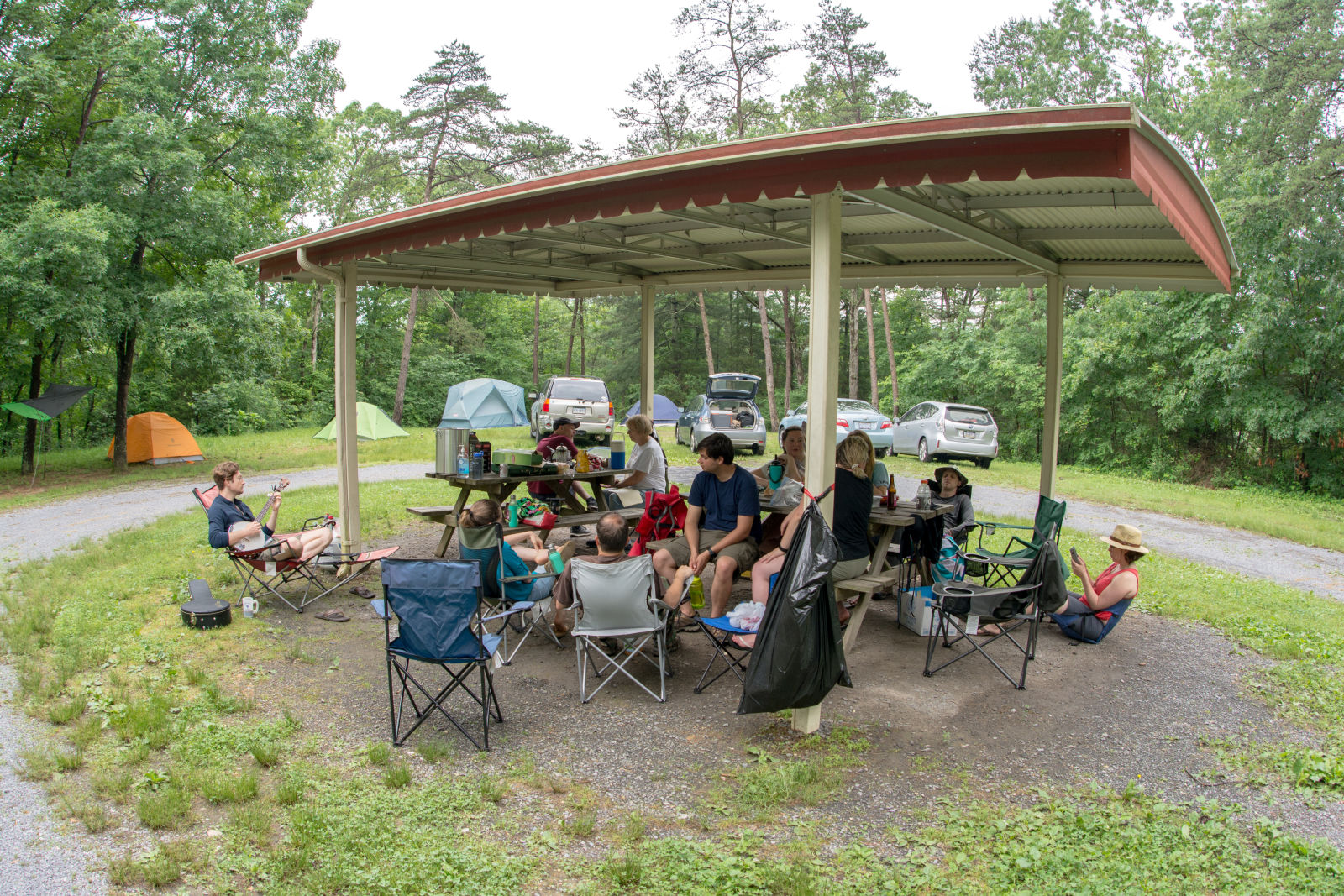
18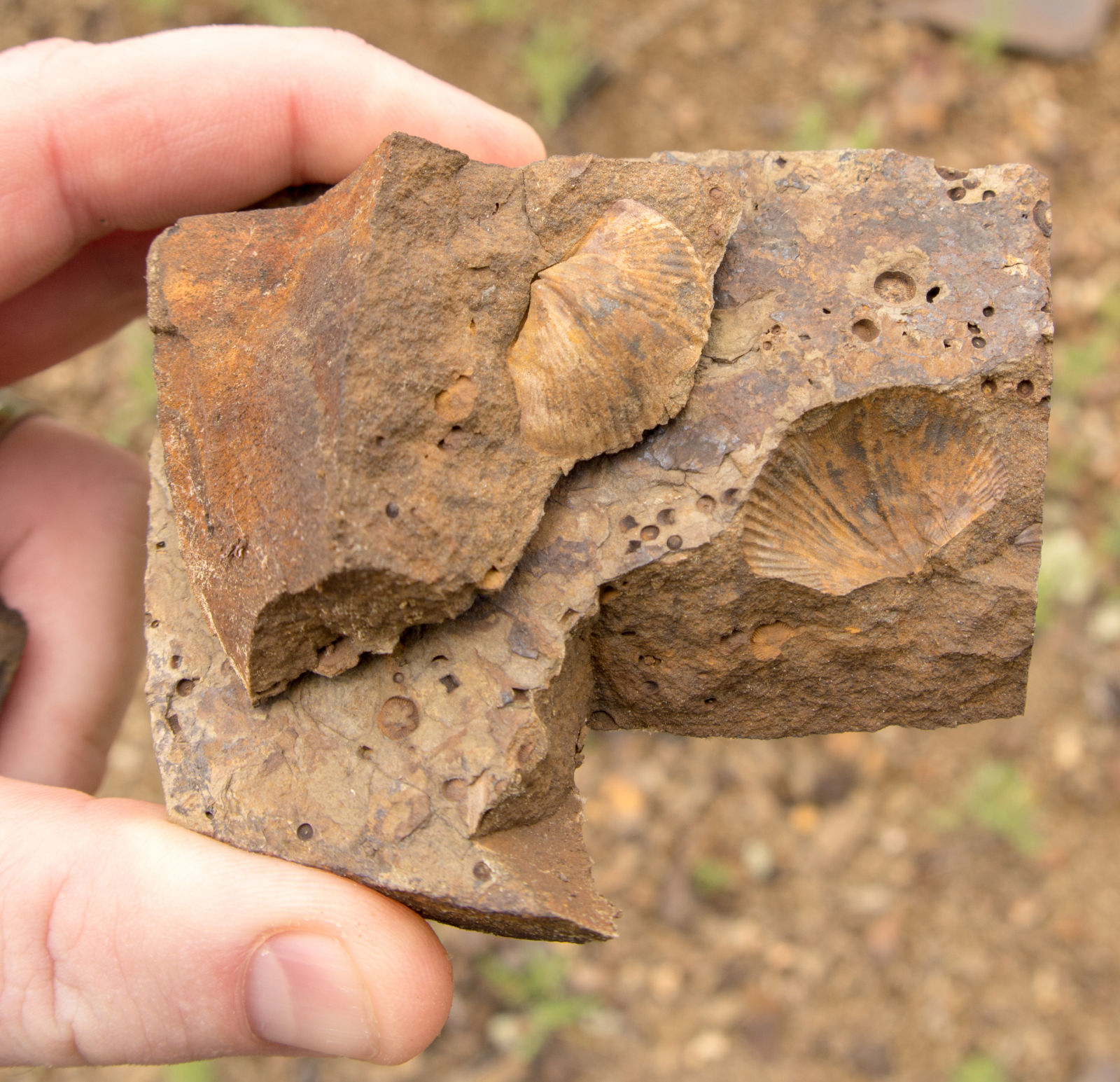 19
19 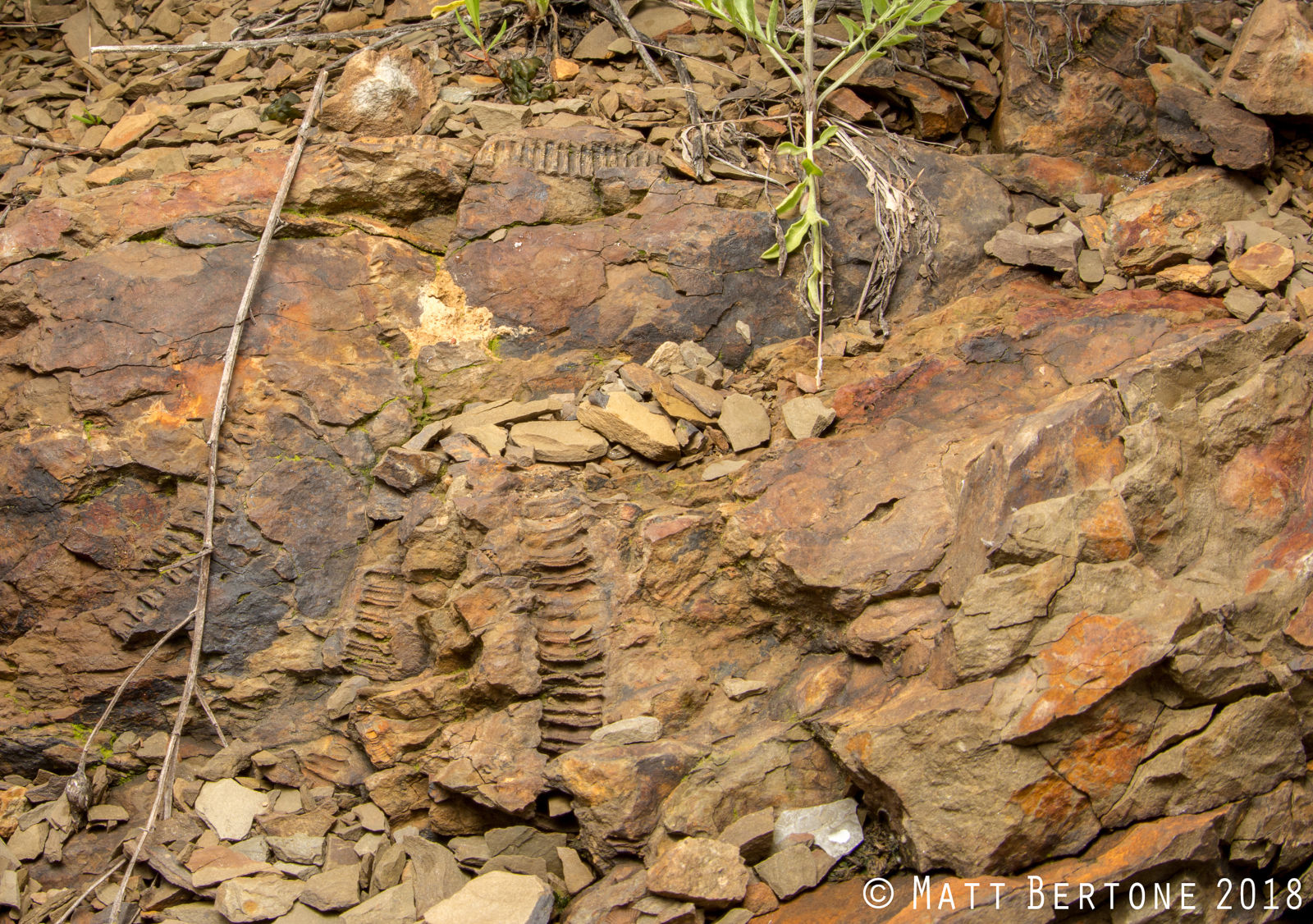 20
20 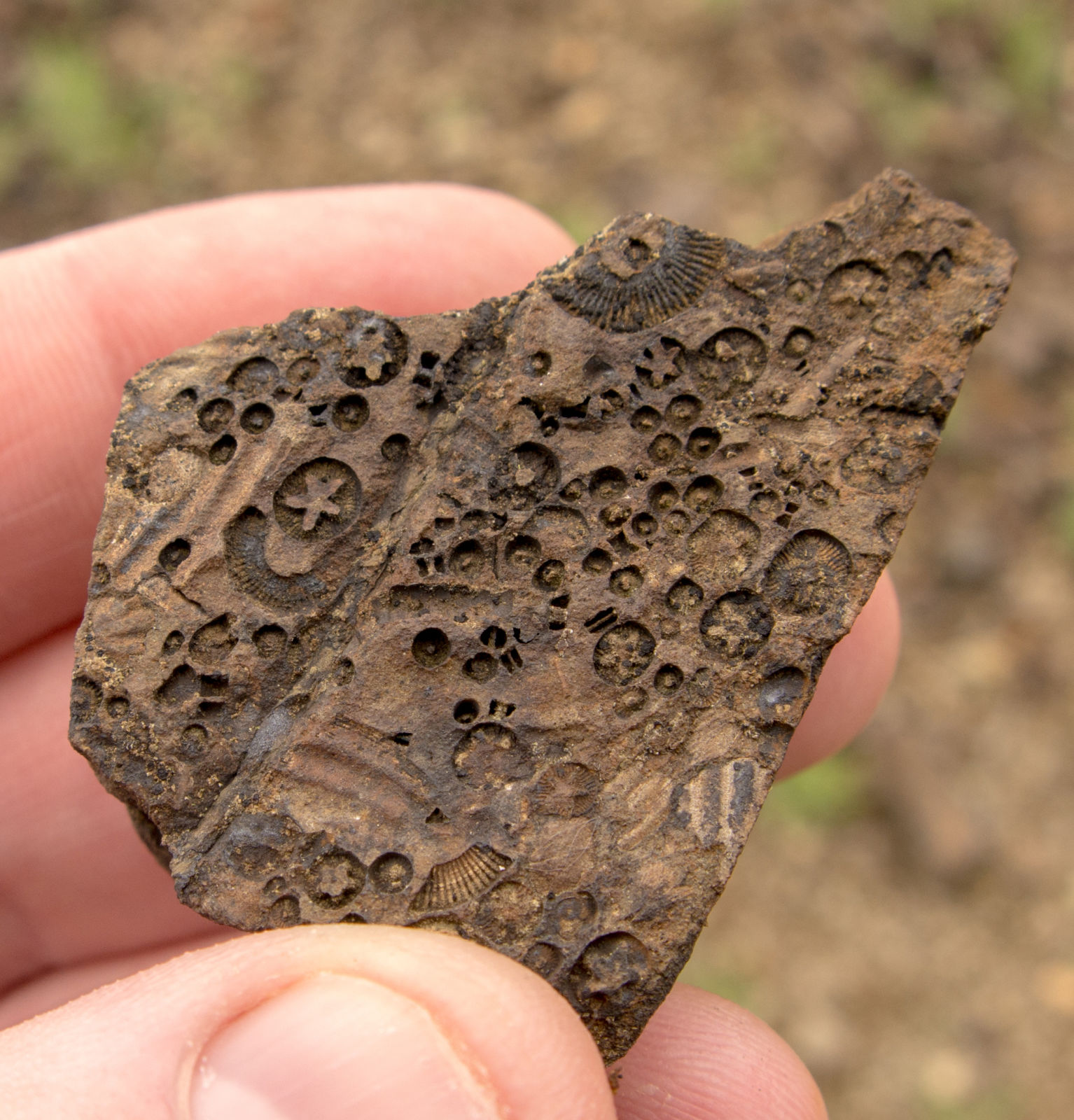
Fig. 1. The 23 participants for 2018 were from left to right: Nate Nazdrowicz, Katie Weglare, Vinton Thompson, Anthony T. Gonzon, Dawn Flynn, Mark Rothschild, Lewis Deitz, Charles Bartlett, Matt Wallace, Daniel Wilczek, Stuart McKamey, Lawrence Barringer, Celeste Copay, Ashley Kennedy, Matt Bertone, Laura Veru, Lee Coats, Becca Robertson, Anthony Deczynski, Devan George, Tyler Hagerty, Abby Clarke, and [Brandon Ruhe, not present for photo]. Designer T-shirts: Nate wore the same shirt also in group photos for 2013, 2014, 2015, 2016, and 2017; Vinton sported a shirt from the 12th International Auchenorrhyncha Congress & 5th International Workshop on Leafhoppers and Planthoppers of Economic Importance, University of California, Berkeley, August 2005; Dawn and Charles flaunted shirts celebrating, respectively, the 20th (2012) and 25th (2017) Anniversaries of our Annual Treehopper Gathering. (Photo Copyright © 2018, by Matthew A. Bertone.)
1

Lots of treehoppers (Figs. 2, Telamona decorata and 3, Cyrtolobus inermis) and other biological specimens were collected (Figs. 4, Becca with Io moth, 5, insect collectors, 6 Abby with Luna moth), photographed (Figs. 7, dustywing, 8, cup fungus, 9, giant thrips, 10, black fish fly,11, xystodemid millipede, 12, metallic wood borer,, 13, gall midge, 14, bracket fungus, 15, orange patched smoky moth), identified, swapped, lent, or donated among group participants. (Photos Copyright © 2018, by Matthew A. Bertone.)
2
 3
3 
4
 5
5  6
6 
7
 8
8  9
9 
10
 11
11  12
12 
13
 14
14  15
15 
Other activities included feasting (Fig. 16, dedicated group organizer Charles Bartlett cleaning up after our group dinner), relaxing (Fig. 17), socializing, catching up on various research projects, swimming, hiking, and collecting fossils (Figs. 18-20). For more photos of the Gathering, see Matt Bertone’s images at activities and floral and fauna. (Photos Copyright © 2018, by Matthew A. Bertone.)
16
 17
17 
18
 19
19  20
20 
Two New Publications: the Diversity of Auchenorrhyncha and a New Species of Telamona
2018-08-26
Bartlett, C. R; Deitz, L. L.; Dmitriev, D. A.; Sanborn, A. F.; Soulier-Perkins, A.; Wallace, M. S. 2018a. The diversity of the true hoppers (Hemiptera: Auchenorrhyncha). pp. 501-590; color plates 11.3-11.5. In Foottit, R. G.; Adler, P. H. (eds.). Insect Biodiversity: Science and Society, Vol 2. (1st edit.). John Wiley & Sons, Hoboken, New Jersey. xxxv + 987 pp. + 21 color plates. [Chapter 19 presents a detailed overview of the 34 families of the suborder Auchenorrhyncha (treehoppers, leafhopppers, planthoppers, froghoppers [or spittlebugs], and cicadas). With an extensive list of references and 19 figures (or groups of figures), the chapter also has a summary of data on life-history patterns in the family Membracidae, as well as recent counts of the numbers of genera and species for the higher taxa of Auchenorrhyncha (superfamilies, families, and subfamilies) known from each of the major zoogeographic regions. Worldwide, the suborder includes 43,024 extent species placed among 5,965 genera.]
Wallace, M. S. 2018a. A new species of Telamonini from the eastern United States and the taxonomic limits of Telamona salvini Distant (Hemiptera: Membracidae: Smiliinae). Proceedings of the Entomological Society of Washington 120(3): 605-615. [This well-illustrated work describes Telamona stephani, n. sp., from the eastern U.S., and clarifies the taxonomic limits of T. salvini Distant, known from Guatemala, and T. subfulcata Van Duzee, which is reinstated as a valid species from the eastern U.S. The new Telamona is named in honor of David L. Stephan (N.C. State University), who collected the holotype and allotype specimens.]
Wallace, M. S. 2018a. A new species of Telamonini from the eastern United States and the taxonomic limits of Telamona salvini Distant (Hemiptera: Membracidae: Smiliinae). Proceedings of the Entomological Society of Washington 120(3): 605-615. [This well-illustrated work describes Telamona stephani, n. sp., from the eastern U.S., and clarifies the taxonomic limits of T. salvini Distant, known from Guatemala, and T. subfulcata Van Duzee, which is reinstated as a valid species from the eastern U.S. The new Telamona is named in honor of David L. Stephan (N.C. State University), who collected the holotype and allotype specimens.]
The 1927 and 1965 Treehopper Catalogues and Related Resources Online
2018-10-25
Taxonomic catalogues of the world’s treehoppers include a series of three printed works: Funkhouser 1927f (coverage through at least 1923); Metcalf and Wade 1956a section 1; section 2 (first supplement: coverage through 1955); and McKamey 1998a (second supplement, coverage through at least 1994).
The first two works together cover the literature on treehoppers through 1955 and are now available online (see highlighting) through the Biodiversity Heritage Library (BHL). Users should be aware that for some taxa both works must be consulted for full coverage, the second work being a supplement. The scope of the third work, McKamey 1998a, is more narrowly focused on taxonomy than its two predecessors. It remains under copyright and is not online (but see other online resources, below).
Expanded literature citations for the publications on treehoppers listed in the 1965 catalogue are available by searching the database of "DrMetcalf: a Resource on Cicadas, Leafhoppers, Planthoppers, Spittlebugs, and Treehoppers." Many older publications are available online through the BHL.
For more recent information on treehopper taxa, we refer users to two online resources: Dmitriev’s "World Auchenorrhyncha Database": (Aetalionidae; Melizoderidae; Membracidae) and McKamey’s "Membracoidea of the World Database."
The first two works together cover the literature on treehoppers through 1955 and are now available online (see highlighting) through the Biodiversity Heritage Library (BHL). Users should be aware that for some taxa both works must be consulted for full coverage, the second work being a supplement. The scope of the third work, McKamey 1998a, is more narrowly focused on taxonomy than its two predecessors. It remains under copyright and is not online (but see other online resources, below).
Expanded literature citations for the publications on treehoppers listed in the 1965 catalogue are available by searching the database of "DrMetcalf: a Resource on Cicadas, Leafhoppers, Planthoppers, Spittlebugs, and Treehoppers." Many older publications are available online through the BHL.
For more recent information on treehopper taxa, we refer users to two online resources: Dmitriev’s "World Auchenorrhyncha Database": (Aetalionidae; Melizoderidae; Membracidae) and McKamey’s "Membracoidea of the World Database."
Treehopper Postdoctoral Position Available
2018-11-07
Cersa Fisher advises us that a postdoctoral position will begin in January 2019 (date negotiable) for an NSF-funded project at the University of Connecticut on the evolution of the treehopper pronotum. Link to full announcement.
First Report of Entylia carinata on the Root Crop “Yacon”
2018-11-08
Flynn, D.; Elliott, T. F.; Stanley, A. 2018a. New host record for Entylia carinata (Forster) (Hemiptera: Membracidae). Insecta Mundi 0664: 1-4. [available online]
Nymphs and adults of E. carinata are reported feeding on Smallanthus sonchifolius in Gaston County, North Carolina. Also known as yacon or Peruvian ground apple, this Andean root crop is now grown and marketed on a small scale in the United States. The paper also includes a list of prior host records for E. carinata.
Nymphs and adults of E. carinata are reported feeding on Smallanthus sonchifolius in Gaston County, North Carolina. Also known as yacon or Peruvian ground apple, this Andean root crop is now grown and marketed on a small scale in the United States. The paper also includes a list of prior host records for E. carinata.
Treehoppers Featured in "Ranger Rick"
2018-11-30
The current issue of the National Wildlife Federation’s magazine "Ranger Rick" features a popular article by Gerry Bishop entitled "Treehoppers." Created to inspire children to appreciate wildlife, "Ranger Rick" published a similar article by Kathleen Walsh some 30 years ago (1988). May treehoppers and Ranger Rick inspire us all to remain young at heart and enjoy the wonders of nature!
Bishop, G. 2018a. Treehoppers. Ranger Rick (National Wildlife Federation) 53(1): 14-19. [available online: Dec 2018/Jan 2019 issue] This popular article on treehoppers is illustrated with photos by Javier Aznar González de Rueda.
Walsh, K. 1988a. Treehoppers. Ranger Rick (National Wildlife Federation) 22(5): 2-8. This earlier popular article on treehoppers features photos of various genera by Kjell B. Sandved and Edward S. Ross.
Bishop, G. 2018a. Treehoppers. Ranger Rick (National Wildlife Federation) 53(1): 14-19. [available online: Dec 2018/Jan 2019 issue] This popular article on treehoppers is illustrated with photos by Javier Aznar González de Rueda.
Walsh, K. 1988a. Treehoppers. Ranger Rick (National Wildlife Federation) 22(5): 2-8. This earlier popular article on treehoppers features photos of various genera by Kjell B. Sandved and Edward S. Ross.
Review of the Neotropical Treehopper Subgenus Cladonota (Falculifera) McKamey
2019-01-29
Flynn, D. J. 2018a. Review of the genus Cladonota Stål (Hemiptera: Membracidae: Membracinae: Hypsoprorini) with keys, illustrations of adults, and known nymphs, and description of a new species from Costa Rica. I. Introduction and subgenus Falculifera McKamey. Proceedings of the Entomological Society of Washington 120(4): 725-747.
The first in a series of four papers reviewing the species of Cladonota, this work treats the subgenus Falculifera: C. apicalis, C. benitezi, C. bolivari, C. clavigera, C. luctuosa, and C. zeledoni, plus a new species from Costa Rica, C. rothschildi.
Treehoppers + Bioinspiration = Ingenious Designs
2019-02-08
Castaño, L. M. 2018a. De la morfosintaxis a la bioinspiración. Guía metodológica para abordar la bioinspiración desde la sintaxis formal. Universidad Nacional de Colombia. [in Spanish: English translation of the title: "From morphosyntax to bioinspiration. Methodological guide to approach bioinspiration from formal syntax."] Published online
The author, Lucas Marcel Castaño, developed this intriguing work based on Colombian treehoppers (Hemiptera: Membracidae) for his graduate program as an Industrial Designer. Using 14 species selected for their spectacular pronotal forms, he examined the morphometrics of each treehopper species following a precise methodological approach with the pure goal of bioinspiration.
Castaño classified treehopper pronotal morphologies using mathematical algorithms that provide both attractive results and contribute to an understanding of the complexity of the various forms: their surfaces, textures, concavities, and convexities. As the author says, these results are subjective, aimed at inspiring and enlightening readers. Each species is analyzed in various ways and reinterpreted in such applications as jewelry design. Castaño's results are truly inspiring.
The work is a fascinating exercise of creativity, with exquisite drawings and designs in 2D and 3D. It also brings Entomology to the general public, introducing readers to perhaps the most morphologically varied group of insects--the treehopper family Membracidae. Those already familiar with this group will see them through new eyes.>
[Review kindly provided by Treehoppers collaborator Pedro A. Álvarez]
“World’s Weirdest Insect”
2019-03-20
Writing on treehoppers in the March 2019 issue of National Geographic, Douglas Main begins with the line: “If there were a competition for the world’s weirdest insect, treehoppers would have a clear shot at first place.” This statement is well supported in Main’s popular article which includes many amazing photographs of Neotropical treehoppers by J. A. González de Rueda.
Main, D. 2019a. Treehoppers: the mini-monsters of the rainforest are masters of disguise–and full of surprises. National Geographic 235(3): [120-131 (includes foldout page)].
[available online]
Change in Plans: 27th Annual Treehopper Gathering?
2019-04-02
The 2019 Treehopper Gathering is arranged for mid December, in New Orleans, Louisiana? April Fool!
All joking aside, this years' gathering will be about a week later than in recent years: thus, 7-9 June 2019 (Friday to Sunday), but, as usual, it will be at the Little Orleans Campground, Little Orleans, Maryland. This yearly event provides a casual opportunity to meet and collect with others passionate about treehoppers and related insects in a beautiful 222-acre campground, located in the Upper Potomac River valley of western Maryland. More than 23 treehopper genera (56 species) have been collected in this area .
Join us! To reserve a campsite with our group or to obtain further information, contact Charles Bartlett. Advanced registration with Charles is essential to assure that you have a campsite. Participants are expected to provide their own tents, food, and camping gear, and to share in the cost of the group campground registration and the group meal provided on Saturday evening. Bring your collecting vials, insect nets, unidentified specimens, cameras, bathing suits, and your favorite t-shirts.
All joking aside, this years' gathering will be about a week later than in recent years: thus, 7-9 June 2019 (Friday to Sunday), but, as usual, it will be at the Little Orleans Campground, Little Orleans, Maryland. This yearly event provides a casual opportunity to meet and collect with others passionate about treehoppers and related insects in a beautiful 222-acre campground, located in the Upper Potomac River valley of western Maryland. More than 23 treehopper genera (56 species) have been collected in this area .
Join us! To reserve a campsite with our group or to obtain further information, contact Charles Bartlett. Advanced registration with Charles is essential to assure that you have a campsite. Participants are expected to provide their own tents, food, and camping gear, and to share in the cost of the group campground registration and the group meal provided on Saturday evening. Bring your collecting vials, insect nets, unidentified specimens, cameras, bathing suits, and your favorite t-shirts.
Treehoppers in the Museo de La Plata, Argentina
2019-05-07
Maciá, A.; Foieri, A., and Remes Lenicov, A. M. M. de. 2019a. Curatorial assessment and status of the general collection of Membracoidea and Cercopidea (Insecta, Hemiptera, Cicadomorpha) of the Museo de La Plata, Buenos Aires, Argentina. Curator the Museum Journal 62(2): 225-240. [Available online]
This work documents specimens of Aetalionidae (1 gen., 1 sp.), Melizoderidae (1 gen., 2 spp.), and Membracidae (29 gen., 58 spp.) in the collection with notes on the collection's history and type holdings in the family Membracidae.
This work documents specimens of Aetalionidae (1 gen., 1 sp.), Melizoderidae (1 gen., 2 spp.), and Membracidae (29 gen., 58 spp.) in the collection with notes on the collection's history and type holdings in the family Membracidae.
27th Treehopper Gathering, Little Orleans, Maryland, 7-9 June 2019
2019-05-15
Treehopper Alert! This years' gathering is scheduled for 7-9 June 2019 (Friday to Sunday) at the Little Orleans Campground, Little Orleans, Maryland. To join this event and meet others passionate about treehoppers, contact Charles Bartlett. Advanced registration with Charles is essential to assure that you have a campsite. Participants are expected to provide their own tents, food, and camping gear, and to share in the cost of the group campground registration and the group meal provided on Saturday evening.
“General Cataologue of the Homoptera” Online
2019-06-18
All sections of the “General Catalogue of the Homoptera” (including both W. D. Funkhouser’s and Z. P. Metcalf's contributions) are now available online at the Biodiversity Heritage Library: see BHL summary. Fascicle 1 treats Membracoidea sensu Metcalf [now treehopper families Aetalionidae, Melizoderidae, and Membracidae]; 2, 3, and 5 treat certain Heteroptera (Mesovelidae, Pyrrhocoridae, and Polyctenidae, respectively); 4, Fugloroidea; 6, Cicadelloidea sensu Metcalf [now families Cicadellidae and Myerslopiidae]; 7, Cercopoidea; and 8, Cicadoidea. For bringing this welcome news to our attention, we thank Susan Braxton, Prairie Research Institute Librarian, the Funk Agricultural, Consumer, and Environmental Sciences Library, Urbana, Illinois.
A Case for the X-files and Other Taxonomic Publications on New World Treehoppers: Cladonota (Cladonota), Eucyphonia, and Hebetica
2019-10-21
Flynn, D. 2019a. Review of the genus Cladonota Stål with keys, illustrations of adults, and description of a new species from Ecuador (Hemiptera: Membracidae: Membracinae: Hypsoprorini). II. Subgenus Cladonota Stål. Proceedings of the Entomological Society of Washington 121(3): 405-428.
This paper, second in a series on the genus Cladonota, presents a key to the 18 known species of the nominotypical subgenus, Cladonota (Cladonota), including C. (C.) erwini, n. sp., from Ecuador.
McKamey, S. H.; Sullivan-Beckers, L. 2019a. First record of the treehopper tribe Darnini (Hemiptera: Membracidae: Darninae) from eastern United States based on specimens of a new species excavated from Hoplosoides wasp nests. Proceedings of the Entomological Society of Washington 121(3): 449-460.
This work redefines the genera Hebetica and Stictopelta based on differences in forewing venation and presents a key to the five known species of Hebetica, including Hebetica sylviae, n. sp., from Kentucky.
As reported by Good Morning America and other online sources, the new species was discovered when 2-year old Sylvie, daughter of the second author, over-watered a flower bed with the result that adults of the bright green treehoppers, previously unknown to science, amazingly floated to the surface. But for the investigative skills of McKamey and Sullivan-Beckers, this surely could have been a case for special agents Mulder and Scully of the "X-files."
Rodríguez-Serrano, J.; Forero, D. 2019a. A remarkable new species of Eucyphonia (Hemiptera: Membracidae) from Boyacá, Colombia.
Eucyphonia festiva n. sp., associated with Piper sp. in Colombia, represents the first record of Eucyphonia from that country. All prior records of this treehopper genus are from Ecuador, Brazil, and Venezuela. In addition to the authors’ beautifully illustrated description of this new treehopper, they present a key to the nine known species of Eucyphonia.
This paper, second in a series on the genus Cladonota, presents a key to the 18 known species of the nominotypical subgenus, Cladonota (Cladonota), including C. (C.) erwini, n. sp., from Ecuador.
McKamey, S. H.; Sullivan-Beckers, L. 2019a. First record of the treehopper tribe Darnini (Hemiptera: Membracidae: Darninae) from eastern United States based on specimens of a new species excavated from Hoplosoides wasp nests. Proceedings of the Entomological Society of Washington 121(3): 449-460.
This work redefines the genera Hebetica and Stictopelta based on differences in forewing venation and presents a key to the five known species of Hebetica, including Hebetica sylviae, n. sp., from Kentucky.
As reported by Good Morning America and other online sources, the new species was discovered when 2-year old Sylvie, daughter of the second author, over-watered a flower bed with the result that adults of the bright green treehoppers, previously unknown to science, amazingly floated to the surface. But for the investigative skills of McKamey and Sullivan-Beckers, this surely could have been a case for special agents Mulder and Scully of the "X-files."
Rodríguez-Serrano, J.; Forero, D. 2019a. A remarkable new species of Eucyphonia (Hemiptera: Membracidae) from Boyacá, Colombia.
Eucyphonia festiva n. sp., associated with Piper sp. in Colombia, represents the first record of Eucyphonia from that country. All prior records of this treehopper genus are from Ecuador, Brazil, and Venezuela. In addition to the authors’ beautifully illustrated description of this new treehopper, they present a key to the nine known species of Eucyphonia.
Photos of the 27th Annual Treehopper Aggregation (7-9 June 2019, Little Orleans, Maryland, USA)
2019-11-13
The Annual Treehopper Gathering is still going strong after 27 years. For 26 consecutive years this gathering has been at the Little Orleans Campground in western Maryland. The first such aggregation, however, was at Tom Wood’s home near the University of Delaware (May 1993, with 10 attendees; see archive of past news: 2012-6-11: Fig. 2). The 2019 event had 26 participants (Figs. 1 and 2, below), including 3 attendees from the first gathering (Charles Bartlett, Lewis Deitz, and Kelley Tilmon). Figures 3 and 4 show some ways the group had fun.
Fig. 1. 27th Treehopper Aggregation, left to right: Front Row (seated): Cera Fisher, Laura Veru, Ashley Kennedy, Mark Rothschild, Becca Robertson. Back Rows (standing): Anna Kudla, Axel Berky, Dawn Flynn, Jason Owens, Kelley Tilmon, Dennis Kopp, Matt Wallace, Lewis Deitz, Charles Bartlett, Mike Hennessey, Anthony Deczynski, Thomas Fisher, Tyler Hagerty, Anthony Gonzon, Abby Clarke, Paige Cummins, Nate Nazdrowicz (who proudly wore his favorite T-shirt also in group photos for 2013, 2014, 2015, 2016, 2017, and 2018), Duncan Park, Alexis Park, Penny Park (held by Alexis), and Yuri Park. (Photo Copyright © 2019, by Becca Robertson)
1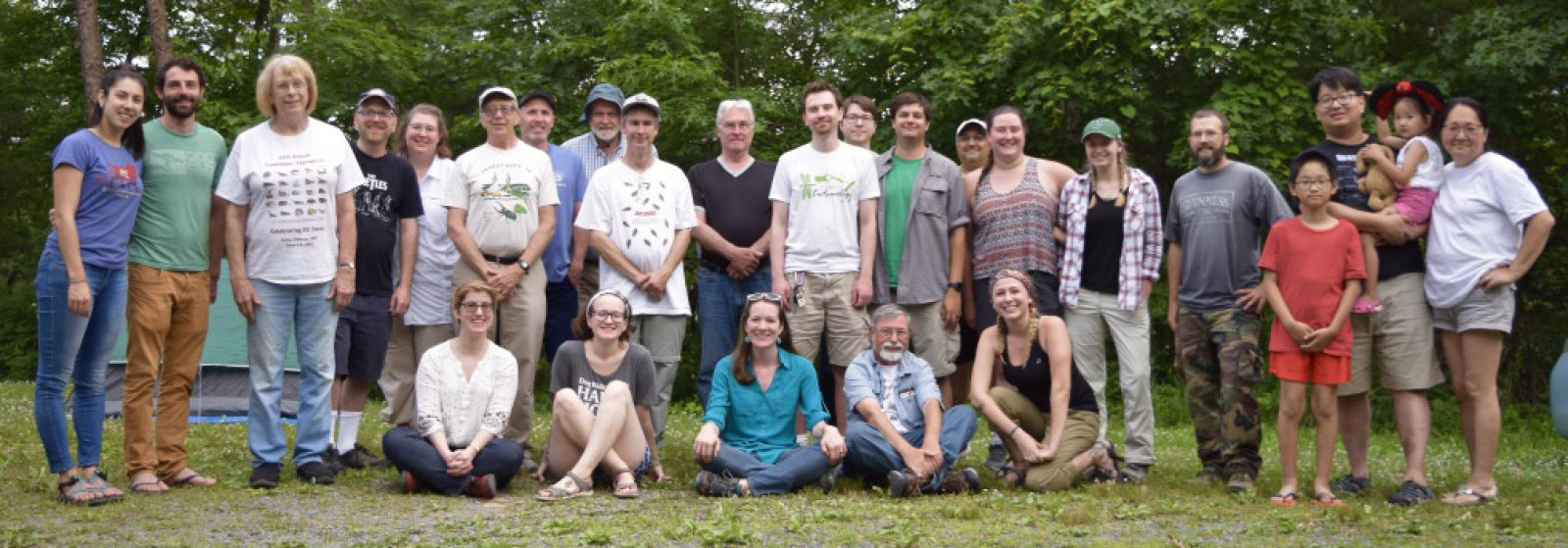
Fig. 2. Treehopper Aggregation in “alarm mode” to defend against predators. (Photo Copyright © 2019, by Becca Robertson). [LISTEN] Defensive signal of Umbonia nymphs (Membracidae: Membracinae: Hoplophorionini) alerting their mother to the presence of a predator. (Sound copyright © 2011, by Reginald B. Cocroft).
2
Figs. 3 and 4. 3, Roasting marsh mellows. 4, Hanging out with the "local fauna." (Photos Copyright © 2019, by Ashley Kennedy)
3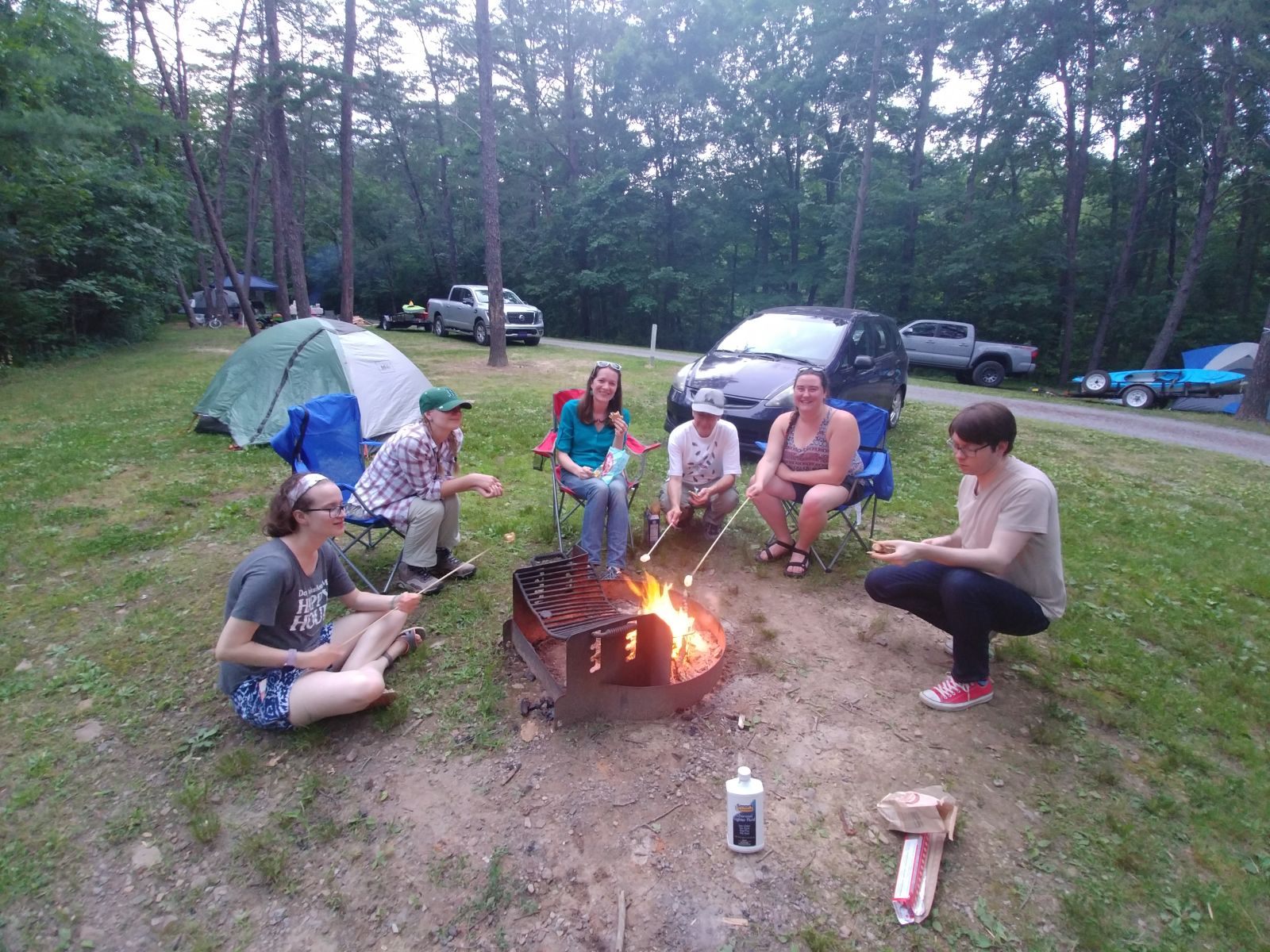 4
4 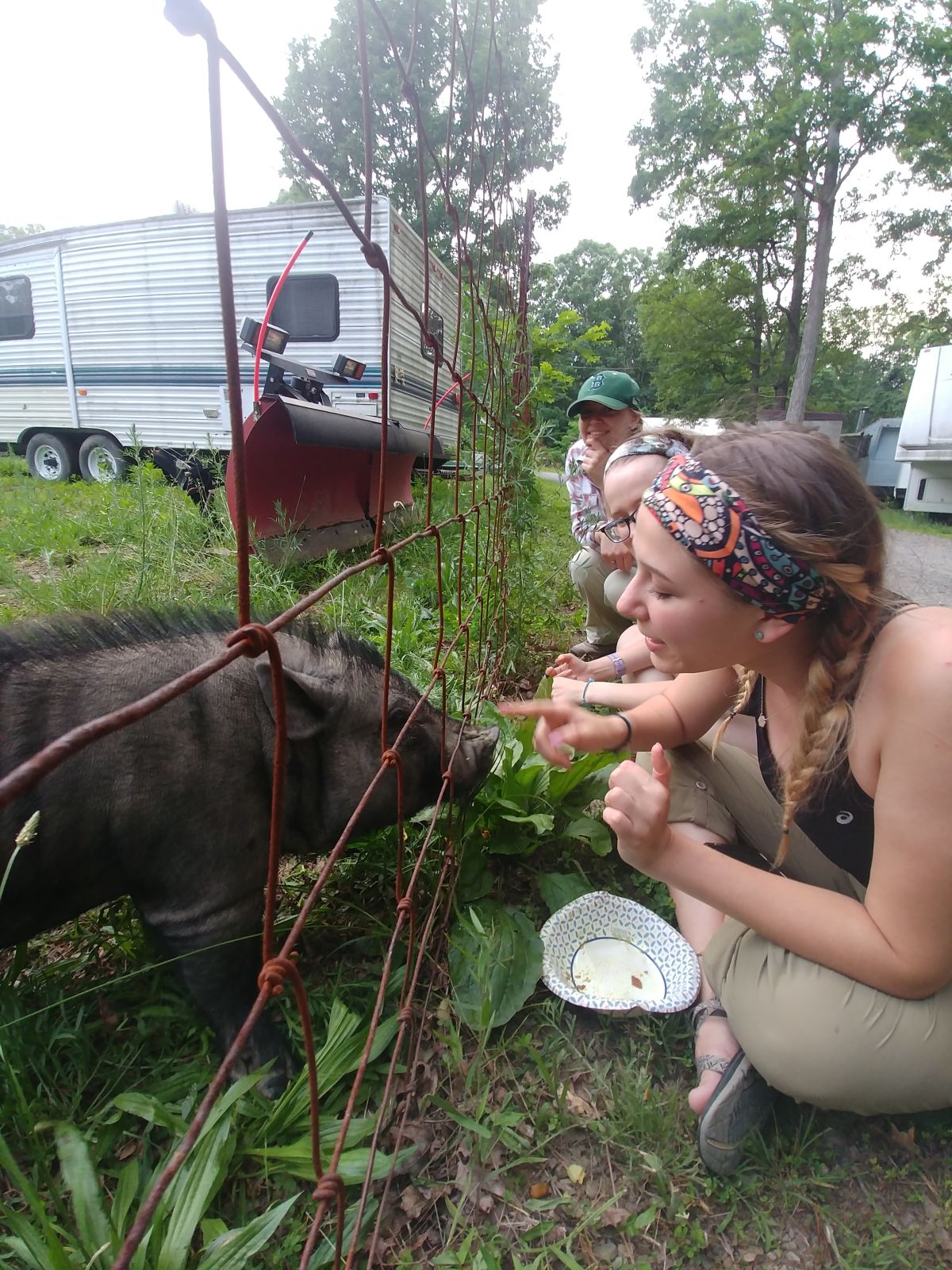
Fig. 1. 27th Treehopper Aggregation, left to right: Front Row (seated): Cera Fisher, Laura Veru, Ashley Kennedy, Mark Rothschild, Becca Robertson. Back Rows (standing): Anna Kudla, Axel Berky, Dawn Flynn, Jason Owens, Kelley Tilmon, Dennis Kopp, Matt Wallace, Lewis Deitz, Charles Bartlett, Mike Hennessey, Anthony Deczynski, Thomas Fisher, Tyler Hagerty, Anthony Gonzon, Abby Clarke, Paige Cummins, Nate Nazdrowicz (who proudly wore his favorite T-shirt also in group photos for 2013, 2014, 2015, 2016, 2017, and 2018), Duncan Park, Alexis Park, Penny Park (held by Alexis), and Yuri Park. (Photo Copyright © 2019, by Becca Robertson)
1

Fig. 2. Treehopper Aggregation in “alarm mode” to defend against predators. (Photo Copyright © 2019, by Becca Robertson). [LISTEN] Defensive signal of Umbonia nymphs (Membracidae: Membracinae: Hoplophorionini) alerting their mother to the presence of a predator. (Sound copyright © 2011, by Reginald B. Cocroft).
2

Figs. 3 and 4. 3, Roasting marsh mellows. 4, Hanging out with the "local fauna." (Photos Copyright © 2019, by Ashley Kennedy)
3
 4
4 
Remembering Treehopper Specialist Hans Strümpel (1935-2019)
2020-05-18
Husemann, M.; Evangelista,O.; Hartung, V.; Schliemann, H. 2020a. In memoriam of Prof. Dr. Hans Strümpel (14.11.1935-29.11.2019). Cicadina 19 (2020): 1-8. [Online publication, available in English or German]
This fitting tribute to esteemed entomologist Dr. Hans Strümpel reviews his professional career and achievements, with a bibliography of his publications, and a list of 47 new treehopper taxa (1 genus; 46 species) he described. Having served as the curator and head of the Entomology Department of the Zoological Museum Hamburg from 1977 to 2001, Professor Strümpel died on 29 November 2019. Although he will long be recognized internationally for his research on the systematics and evolution of the family Membracidae, his publications include also significant works on applied entomology and pest management, as well as comprehensive treatments of the hemipterous suborders Sternorrhyncha and Auchenorrhyncha. His devoted wife Renate, who frequently coauthored papers on treehoppers with him, passed in 2017.
Annotated list of Strümpel’s publications on Membracidae, by author(s), year, and suffix (as used in the Treehoppers Website) [numbers in square brackets refer to item numbers in the bibliography by [Husemann et al. 2020a, which includes full citations]
Strümpel, H. -- 1972a [# 31] phylogeny of Membracidae; 1972b [# 30] Notocera (1 n. sp.); 1973a [# 29] Sphongophorus (now Cladonota), (4 n. spp.); 1974a [#28] Tylopelta (2 n. spp.) ]; 1983a [#23] Homoptera; 1983b [#24] Anchistrotus; 1985a [#22] Neotropical Membracidae; 1986a [#20] immature Membracidae; 1988a [#17], Venezuelan Membracidae, Disconotus magnificus, n. gen. and sp. (now Tumecauda magnifica), Lycoderes (2 n. spp., now referred to Lycoderides and Stegapis), Adippe (1 n. sp.); 1988b [#19] Heteronotous ( 2 n. spp.); 1993a [#14] Membracidae immatures; 2003a [#7] Membracidae immatures; 2010a [#3], Auchenonorrhyncha.
Strümpel, H.; Strümpel, R. -- 1975a [#27] Leioscyta (4 n. spp.); 1978a [#26] Tritopidia (2. n. spp.); 1988a [#18] Venezelan Membracidae; 1991a [#16] Venezuelan Membracidae; 2006a [#6] Enchophyllum (5 n. spp); 2007a [#5] Enchenopa (1 n. sp.); 2014a [#2] Enchenopa (21 n. spp.).
[alternate search terms: Strumpel; Struempel]
This fitting tribute to esteemed entomologist Dr. Hans Strümpel reviews his professional career and achievements, with a bibliography of his publications, and a list of 47 new treehopper taxa (1 genus; 46 species) he described. Having served as the curator and head of the Entomology Department of the Zoological Museum Hamburg from 1977 to 2001, Professor Strümpel died on 29 November 2019. Although he will long be recognized internationally for his research on the systematics and evolution of the family Membracidae, his publications include also significant works on applied entomology and pest management, as well as comprehensive treatments of the hemipterous suborders Sternorrhyncha and Auchenorrhyncha. His devoted wife Renate, who frequently coauthored papers on treehoppers with him, passed in 2017.
Annotated list of Strümpel’s publications on Membracidae, by author(s), year, and suffix (as used in the Treehoppers Website) [numbers in square brackets refer to item numbers in the bibliography by [Husemann et al. 2020a, which includes full citations]
Strümpel, H. -- 1972a [# 31] phylogeny of Membracidae; 1972b [# 30] Notocera (1 n. sp.); 1973a [# 29] Sphongophorus (now Cladonota), (4 n. spp.); 1974a [#28] Tylopelta (2 n. spp.) ]; 1983a [#23] Homoptera; 1983b [#24] Anchistrotus; 1985a [#22] Neotropical Membracidae; 1986a [#20] immature Membracidae; 1988a [#17], Venezuelan Membracidae, Disconotus magnificus, n. gen. and sp. (now Tumecauda magnifica), Lycoderes (2 n. spp., now referred to Lycoderides and Stegapis), Adippe (1 n. sp.); 1988b [#19] Heteronotous ( 2 n. spp.); 1993a [#14] Membracidae immatures; 2003a [#7] Membracidae immatures; 2010a [#3], Auchenonorrhyncha.
Strümpel, H.; Strümpel, R. -- 1975a [#27] Leioscyta (4 n. spp.); 1978a [#26] Tritopidia (2. n. spp.); 1988a [#18] Venezelan Membracidae; 1991a [#16] Venezuelan Membracidae; 2006a [#6] Enchophyllum (5 n. spp); 2007a [#5] Enchenopa (1 n. sp.); 2014a [#2] Enchenopa (21 n. spp.).
[alternate search terms: Strumpel; Struempel]
Leaping in Slow Motion: Treehoppers and Related Groups
2020-07-08
Dr. Adrian Smith (Head, Evolutionary Biology & Behavior Research Lab, North Carolina Museum of Natural Sciences, Raleigh) just released a remarkable video documenting the hopping behavior of treehoppers and other groups of Auchenorrhyncha. Watch these insects leap at: https://youtu.be/8PW-0r4Fj4Y (Smith, A. 2020a. Jumping Hoppers in Slow Motion).
See also archive of past news “New Data on Jumping in Treehoppers" (2013-02-18).
See also archive of past news “New Data on Jumping in Treehoppers" (2013-02-18).
The 28th Annual Treehopper Aggregation Went Virtual (Saturday, 20 June 2020)
2020-07-14
Owing to the COVID-19 pandemic, the 28th Annual Treehopper Gathering was held virtually by way of Zoom Video Conferencing. Hosted by Kelley Tilmon, the meeting was nicknamed “ZoomOrleans” in honor of the Little Orleans Campground in western Maryland where we gathered for the preceding 26 years. Brood 1993, the first aggregation, was held near the University of Delaware. Because the meeting of Brood 2020 was virtual, some distant colleagues were able to join us for the first time, while others were sound asleep.
Fig. 1. Screenshot of Zoom Video Conference: 28th Annual Treehopper Gathering, Saturday, 20 June 2020. Participants: Lewis Deitz, Kelley Tilmon, Matt Wallace, Eduardo Savio, Nate Nazdrowicz [with his favorite frog and T-shirt], Vinton Thompson, Una and Jason Cryan, Camille [not in photo] and Stuart (Stu) McKamey, Mark Rothschild, Dennis Kopp, Kyle Kittelberger, Anthony Deczynski, Ashley Kennedy, Christopher (Chris) Dietrich, Kelly Swing, Charles Bartlett, Abigail (Abby) Clarke, Michael (Mike) Hennessey [no photo], and Jérémie Lapèze [joined us too late for the screenshot].
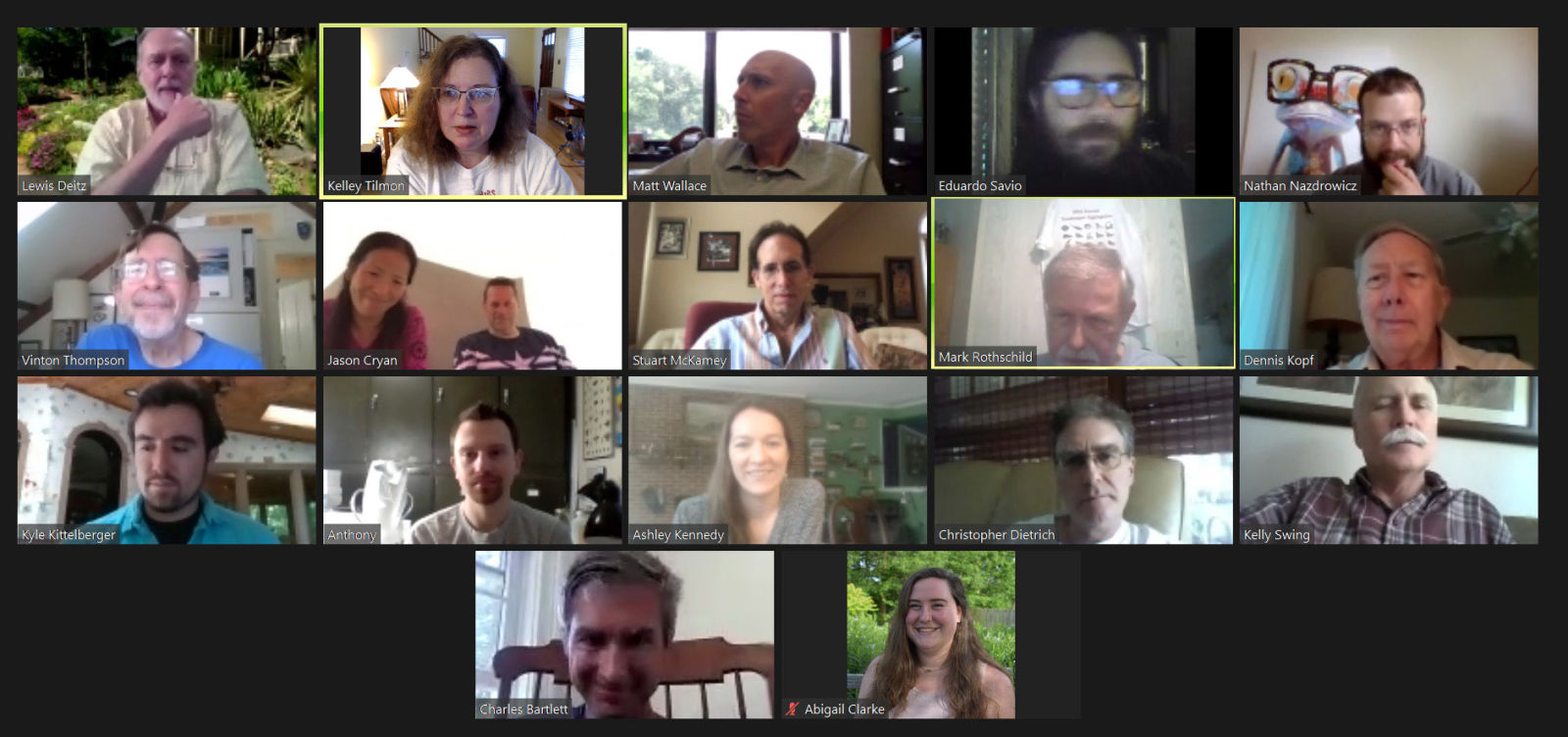
We are most grateful to Kelley Tilmon for herding the aggregation! She must have been a mother Umbonia in a former life.
Fig. 1. Screenshot of Zoom Video Conference: 28th Annual Treehopper Gathering, Saturday, 20 June 2020. Participants: Lewis Deitz, Kelley Tilmon, Matt Wallace, Eduardo Savio, Nate Nazdrowicz [with his favorite frog and T-shirt], Vinton Thompson, Una and Jason Cryan, Camille [not in photo] and Stuart (Stu) McKamey, Mark Rothschild, Dennis Kopp, Kyle Kittelberger, Anthony Deczynski, Ashley Kennedy, Christopher (Chris) Dietrich, Kelly Swing, Charles Bartlett, Abigail (Abby) Clarke, Michael (Mike) Hennessey [no photo], and Jérémie Lapèze [joined us too late for the screenshot].

We are most grateful to Kelley Tilmon for herding the aggregation! She must have been a mother Umbonia in a former life.
Wing-Patterning Genes Shape Treehopper Pronota
2020-07-15
Fisher, C. R.; Wegrzyn, J. L.; Jockusch, E. L. 2020a. Co-option of wing-patterning genes underlies the evolution of the treehopper helmet. Nature Ecology & Evolution 4: 250-260. [February 2020; online December 2019: DOI: 10.1038/s41559-019-1054-4]
For a popular overview of this fascinating study, see Wu, K. J. 2019a. Treehoppers’ Bizarre, Wondrous Helmets Use Wing Genes to Grow. [available online; smithsonianmag.com, 8 December 2019]. This review includes a link for viewing (but not downloading) the original publication by Fisher et al.
For a popular overview of this fascinating study, see Wu, K. J. 2019a. Treehoppers’ Bizarre, Wondrous Helmets Use Wing Genes to Grow. [available online; smithsonianmag.com, 8 December 2019]. This review includes a link for viewing (but not downloading) the original publication by Fisher et al.
Postdoctoral Scholar in Glassy-Winged Sharpshooter Genetics
2020-07-28
The Departments of Entomology and Botany & Plant Sciences at the University of California, Riverside, invite applicants for a Postdoctoral scholar to conduct research in the genetic manipulation of the glassy-winged sharpshooter (Homalodisca vitripennis) under the co-supervision of Dr. Peter Atkinson and Dr. Linda Walling. The announcement for this position indicates its purpose is to generate, using contemporary gene manipulation technologies, new approaches for the genetic control of the glassy-winged sharpshooter, a significant agricultural pest. The Treehopper Team adds that the skills and technologies gained in this postdoc would surely have much application to research on other leafhoppers (as well as treehoppers and related groups) in the future.
Recent Publications on the Genus Cladonota
2020-08-03
England, S. J.; Flynn, D. J.; Robert, D. 2020a. A new species of treehopper in the genus Cladonota Stål (Hemiptera: Membracidae: Membracinae: Hypsoprorini) from Costa Rica, with preliminary observations of its behaviour and natural history. Zootaxa 4750(4): 596-598. [available online]
This work provides an illustrated description and notes on the life history of Cladonota (Falculifera) rex England (in England, Flynn, and Robert), new species, from Costa Rica.
Fig. 1. Cladonota (Falculifera) rex, with ant. © Copyright 2020, by Sam J. England.
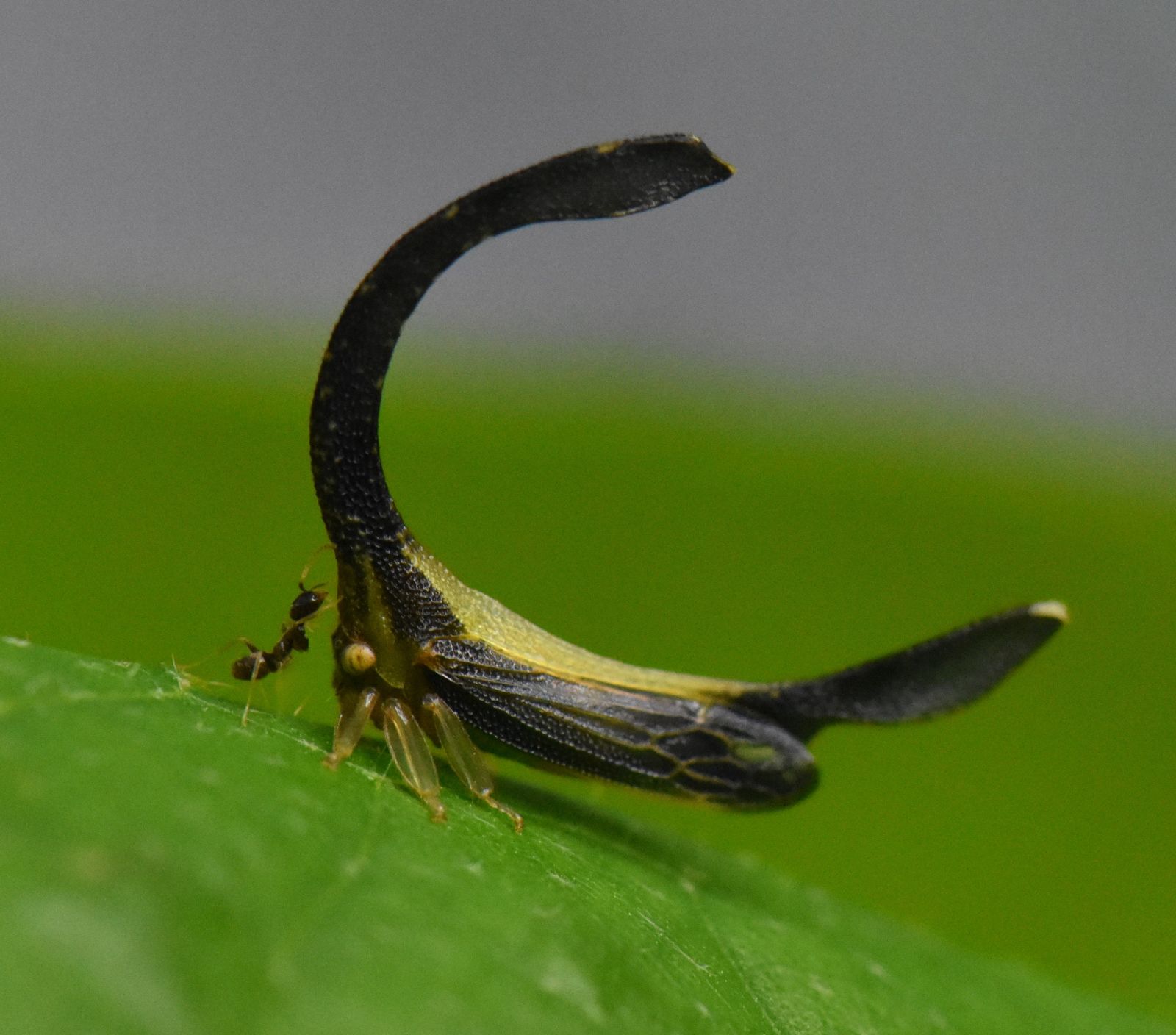
Flynn, D. J. 2020a. Review of the genus Cladonota Stål with keys, illustrations of adults, and description of four new species from Costa Rica, Honduras, [French Guiana], and Ecuador (Hemiptera: Membracidae: Membracinae; Hysoprorini [sic, for Hypsoprorini]). III. Subgenus Lecythifera Fowler. Proceedings of the Entomological Society of Washington 122(3): 604-631.
This publication, the third in a series of four on the genus Cladonota, treats the subgenus Cladonota (Lecythifera) Fowler, including 20 species (4 new) and a new synonymy for one species. The new species are: C. (L.). costaricensis [from Costa Rica (Fig. 2)], C. (L.). globonegra [Honduras (Fig. 3)], C. (L.). grisea [French Guiana (not listed in the paper’s title; Fig. 4)], and C. (L.). orellana [Ecuador (Fig. 5)]. Because the sexes are dimorphic in nearly all of the species, two illustrated keys are given (one to the known males and one to the known females). The abstract is given in English and Spanish.
Figs. 2-5. Cladonota (Lecythifera) spp.: 2 C. costaricensis,, 3 C. globonegra, 4 C. grisea, and 5 C. orellana. Images 2 and 5, © Copyright 2020, by Dawn J. Flynn; 3, © Copyright 2020, by Emily Phifer; and 4, © Copyright 2020, by Jérémie Lapèze.
2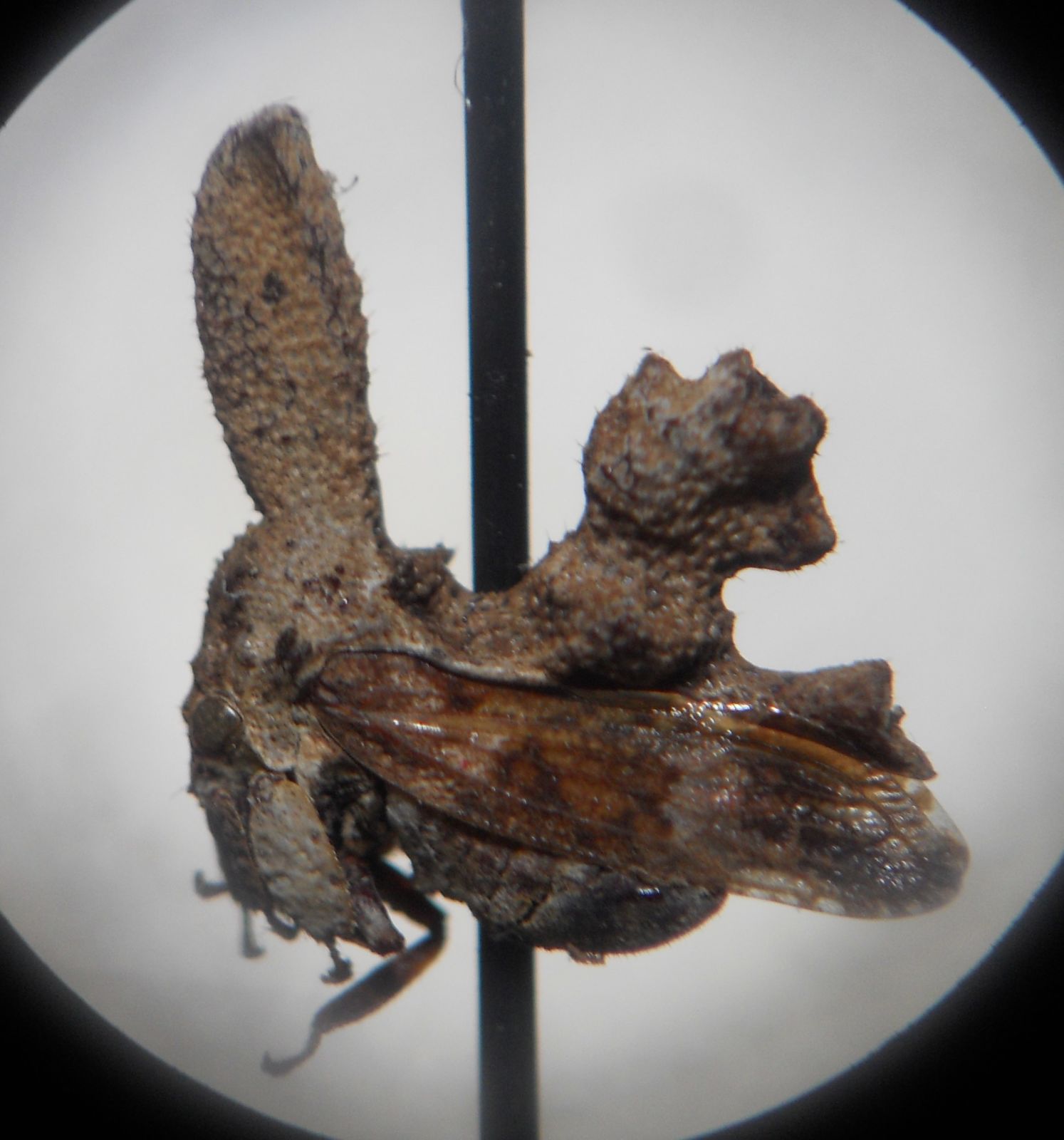 3
3 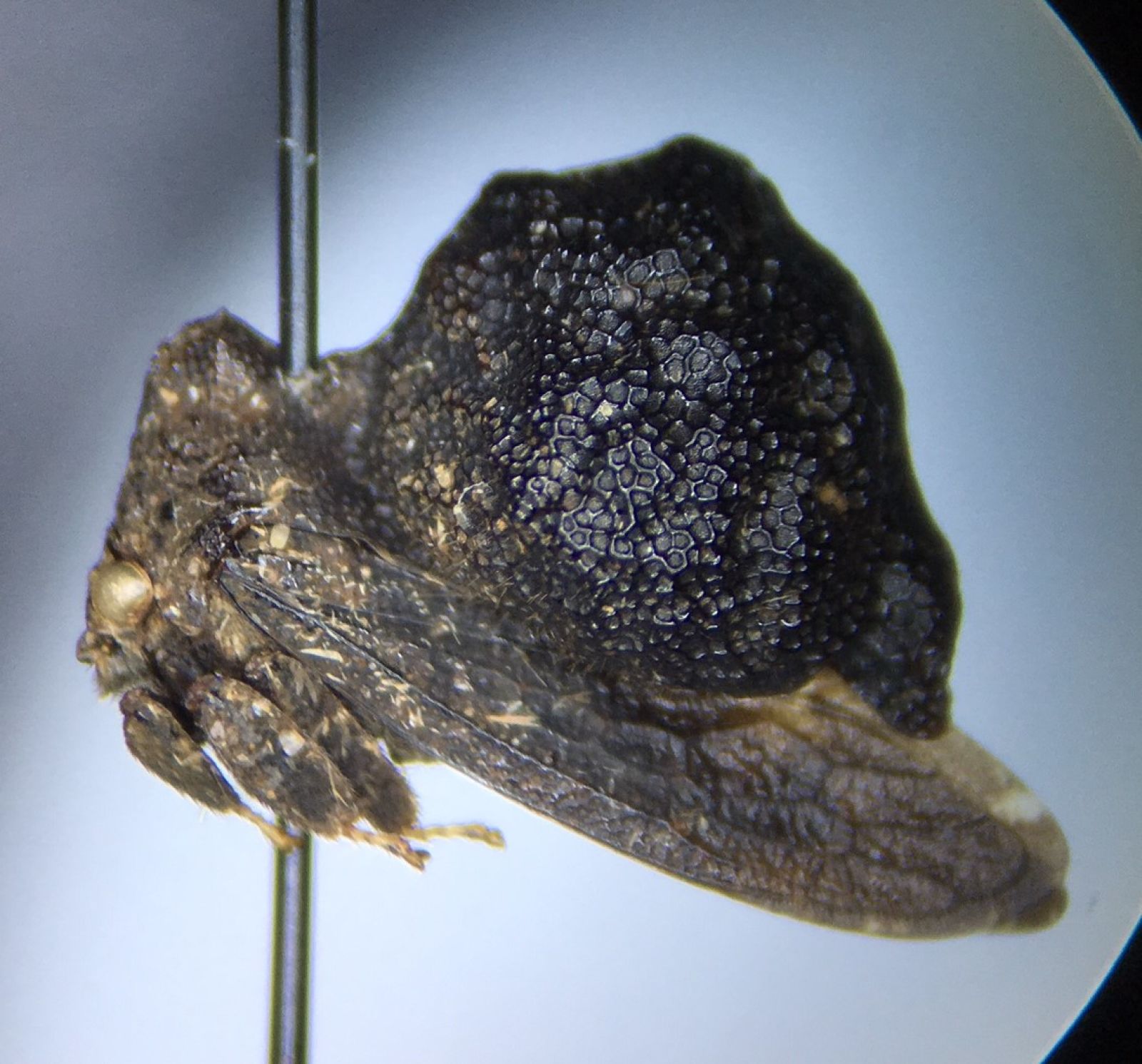 4
4 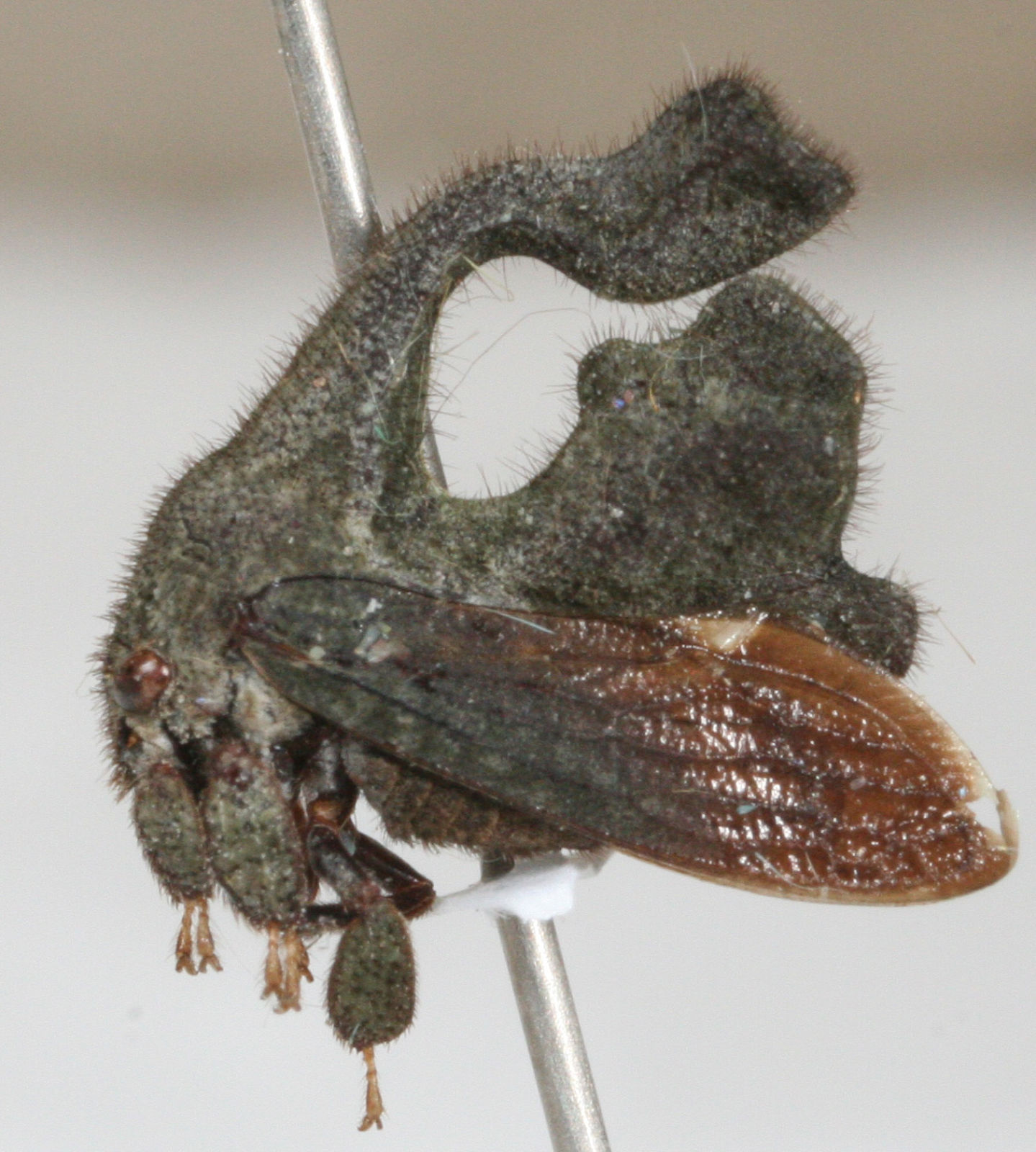 5
5 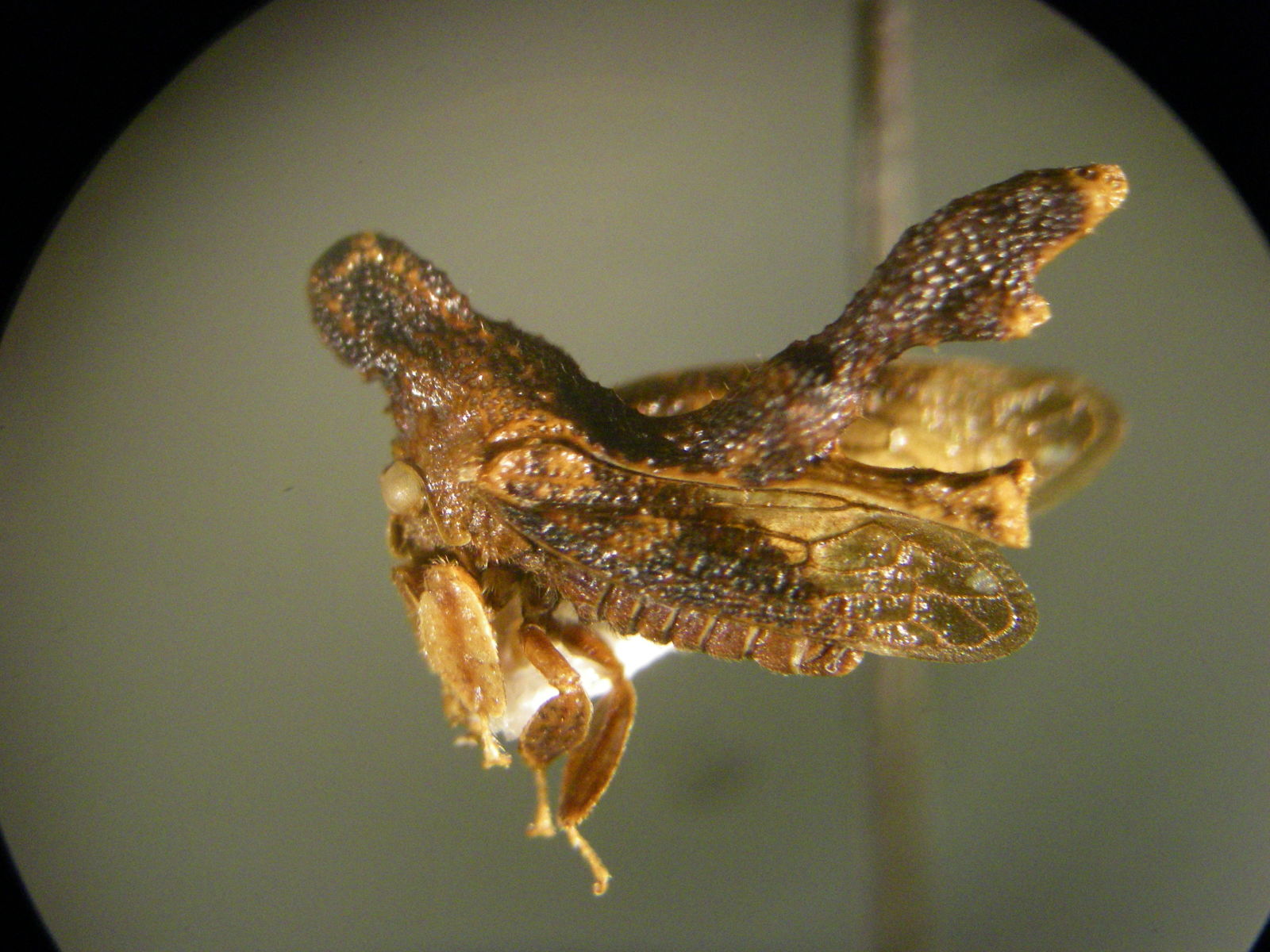
Pinkerton, M. G; Flynn, D. J.; Leavengood, J. M., Jr. 2020a. First report of Cladonota crassepunctata (Sakakibara, 1971) (Hemiptera: Membracidae: Membracinae: Hypsoprorini) in Paraguay. [= Primer reporte de Cladonota crassepunctata (Sakakibara, 1971) (Hemiptera: Membracidae: Membracinae: Hypsoprorini) en Paraguay]. Boletín del Museo Nacional de Historia Natural del Paraguay 24(1): 35-39.
Cladonota (Cladonota) crassepunctata, previously known only from Brazil, is recorded from San Ignacio, Paraguay. This represents the first published report of the genus Cladonota in Paraguay. The abstract is given in English and Spanish.
We are grateful to new collaborators Sam J. England, University of Bristol, England, and Emily Phifer, Reedy Creek Nature Preserve, Charlotte, North Carolina, for providing images of treehoppers used here and elsewhere on the Treehoppers Website.
This work provides an illustrated description and notes on the life history of Cladonota (Falculifera) rex England (in England, Flynn, and Robert), new species, from Costa Rica.
Fig. 1. Cladonota (Falculifera) rex, with ant. © Copyright 2020, by Sam J. England.

Flynn, D. J. 2020a. Review of the genus Cladonota Stål with keys, illustrations of adults, and description of four new species from Costa Rica, Honduras, [French Guiana], and Ecuador (Hemiptera: Membracidae: Membracinae; Hysoprorini [sic, for Hypsoprorini]). III. Subgenus Lecythifera Fowler. Proceedings of the Entomological Society of Washington 122(3): 604-631.
This publication, the third in a series of four on the genus Cladonota, treats the subgenus Cladonota (Lecythifera) Fowler, including 20 species (4 new) and a new synonymy for one species. The new species are: C. (L.). costaricensis [from Costa Rica (Fig. 2)], C. (L.). globonegra [Honduras (Fig. 3)], C. (L.). grisea [French Guiana (not listed in the paper’s title; Fig. 4)], and C. (L.). orellana [Ecuador (Fig. 5)]. Because the sexes are dimorphic in nearly all of the species, two illustrated keys are given (one to the known males and one to the known females). The abstract is given in English and Spanish.
Figs. 2-5. Cladonota (Lecythifera) spp.: 2 C. costaricensis,, 3 C. globonegra, 4 C. grisea, and 5 C. orellana. Images 2 and 5, © Copyright 2020, by Dawn J. Flynn; 3, © Copyright 2020, by Emily Phifer; and 4, © Copyright 2020, by Jérémie Lapèze.
2
 3
3  4
4  5
5 
Pinkerton, M. G; Flynn, D. J.; Leavengood, J. M., Jr. 2020a. First report of Cladonota crassepunctata (Sakakibara, 1971) (Hemiptera: Membracidae: Membracinae: Hypsoprorini) in Paraguay. [= Primer reporte de Cladonota crassepunctata (Sakakibara, 1971) (Hemiptera: Membracidae: Membracinae: Hypsoprorini) en Paraguay]. Boletín del Museo Nacional de Historia Natural del Paraguay 24(1): 35-39.
Cladonota (Cladonota) crassepunctata, previously known only from Brazil, is recorded from San Ignacio, Paraguay. This represents the first published report of the genus Cladonota in Paraguay. The abstract is given in English and Spanish.
We are grateful to new collaborators Sam J. England, University of Bristol, England, and Emily Phifer, Reedy Creek Nature Preserve, Charlotte, North Carolina, for providing images of treehoppers used here and elsewhere on the Treehoppers Website.
Taxonomic Changes in the Tribe Thuridini with a Key to Species
2020-08-12
McKamey, S. H. 2020a. Synonymy of Paraphetea Sakakibara and Creão-Durate and Flynnia McKamey (Hemiptera: Membracidae: Smillinae), with a reinstated combination, new distribution records, and a key to all species of Thuridini. Proceedings of the Entomological Society of Washington 122(3): 716-719.
In this publication the genus Paraphetea is referred to the tribe Thuridini, as a senior synonym of Flynnia, new synonymy. P. fascipennis is reinstated as valid and new distribution records are given for this species and P. gibbula. A key is given for identifying the two genera and four species of Thuridini.
In this publication the genus Paraphetea is referred to the tribe Thuridini, as a senior synonym of Flynnia, new synonymy. P. fascipennis is reinstated as valid and new distribution records are given for this species and P. gibbula. A key is given for identifying the two genera and four species of Thuridini.
How the Global COVID-19 Pandemic Inspired the Game "TreehopperGO"
2020-08-14
While living in Guatemala during the global COVID-19 pandemic, an ingenious Japanese father and his young sons invented the game "TreehopperGO" ("TsunozemiGO," in Japanese). With the onset of restrictions on business and travel, dad and sons found more time to explore the local environment, thus discovering the magnificent world of treehoppers and other small creatures around their house and in nearby natural areas. This family activity quickly became an obsession—a daily treasure hunt that involved not only locating different species, but also documenting their behaviors and life histories in video format using iPhone 7. In many aspects this game of collecting treehopper species resembles the game "PokémonGO," where players collect augmented reality creatures, or Pokémon, hidden at various physical locations.
Both "TreehopperGO" and "PokémonGO" are location-based games that promote physical activity, but, as our family in Guatemala observed, nature’s treehoppers are even more diverse and stranger in design than the Pokémon creatures that populate "PokemonGo." Launched in June 2020, "TreehopperGO" now has 25 videos and 157 subscribers. Additional features include "Treehoppers for Rainy Days" and "Making a Treehopper Garden."
We are grateful to the unnamed creators of "TreehopperGO" for sharing their joy in documenting the many treehoppers they discovered during this challenging pandemic. [Hint: Use "Google Translate" to convert excerpts of Japanese text to English. Some of the videos include English subtitles.]
Both "TreehopperGO" and "PokémonGO" are location-based games that promote physical activity, but, as our family in Guatemala observed, nature’s treehoppers are even more diverse and stranger in design than the Pokémon creatures that populate "PokemonGo." Launched in June 2020, "TreehopperGO" now has 25 videos and 157 subscribers. Additional features include "Treehoppers for Rainy Days" and "Making a Treehopper Garden."
We are grateful to the unnamed creators of "TreehopperGO" for sharing their joy in documenting the many treehoppers they discovered during this challenging pandemic. [Hint: Use "Google Translate" to convert excerpts of Japanese text to English. Some of the videos include English subtitles.]
Forgotten 1885 Publication Includes Treehoppers and Relatives of the Philippine Archipelago
2020-08-15
While using the Biodiversity Heritage Library, Charles Bartlett recently discovered the following work that was apparently unknown to Z. P Metcalf when preparing his extensive catalogues and bibliographies of the Auchenorrhyncha. Following Metcalf’s style of citations, this work would be Jordana y Morera 1885a: Jordana y Morera, Ramón. 1885. Bosquejo Geográfico é Histórico-Natural del Archipiélago Filipino. de Moreno y Rojas, Madrid. [xv]+461 pp.+ 12 plates. [available online; order Hemiptera starts on p. 293; treehopper species from 9 genera are listed under “Familia. — Jásidos” on pp. 301-302]
Lady Gaga's Treehopper
2020-09-14
Morris, B. O.; Dietrich, C. H. 2020a. An unusual new genus and species of centrotine treehopper (Hemiptera: Membracidae: Centrotinae) from Nicaragua. Zootaxa 4729(2):286-292. [https://doi.org/10.11646/zootaxa.4729.2.9]
This publication provides an illustrated description of Kaikaia gaga, new genus and species, from near the Pacific coast of Nicaragua. The genus Kaikaia is unplaced at the tribal level within the subfamily Centrotinae based on the authors’ comparison of its morphology to the genus Monobelus and members of the tribes Beaufortianini, Boocerini, Nessorhinini, and Platycentrini. Fig. 1, below, depicts the head and a portion of the adjoining pronotum of Kaikaia gaga superimposed on its namesake's body. Fig. 2, depicts the lateral, anterior, and dorsal aspects of the female holotype of Kaikaia gaga. Images © Copyright 2020, by Brendan O. Morris.
1 2
2 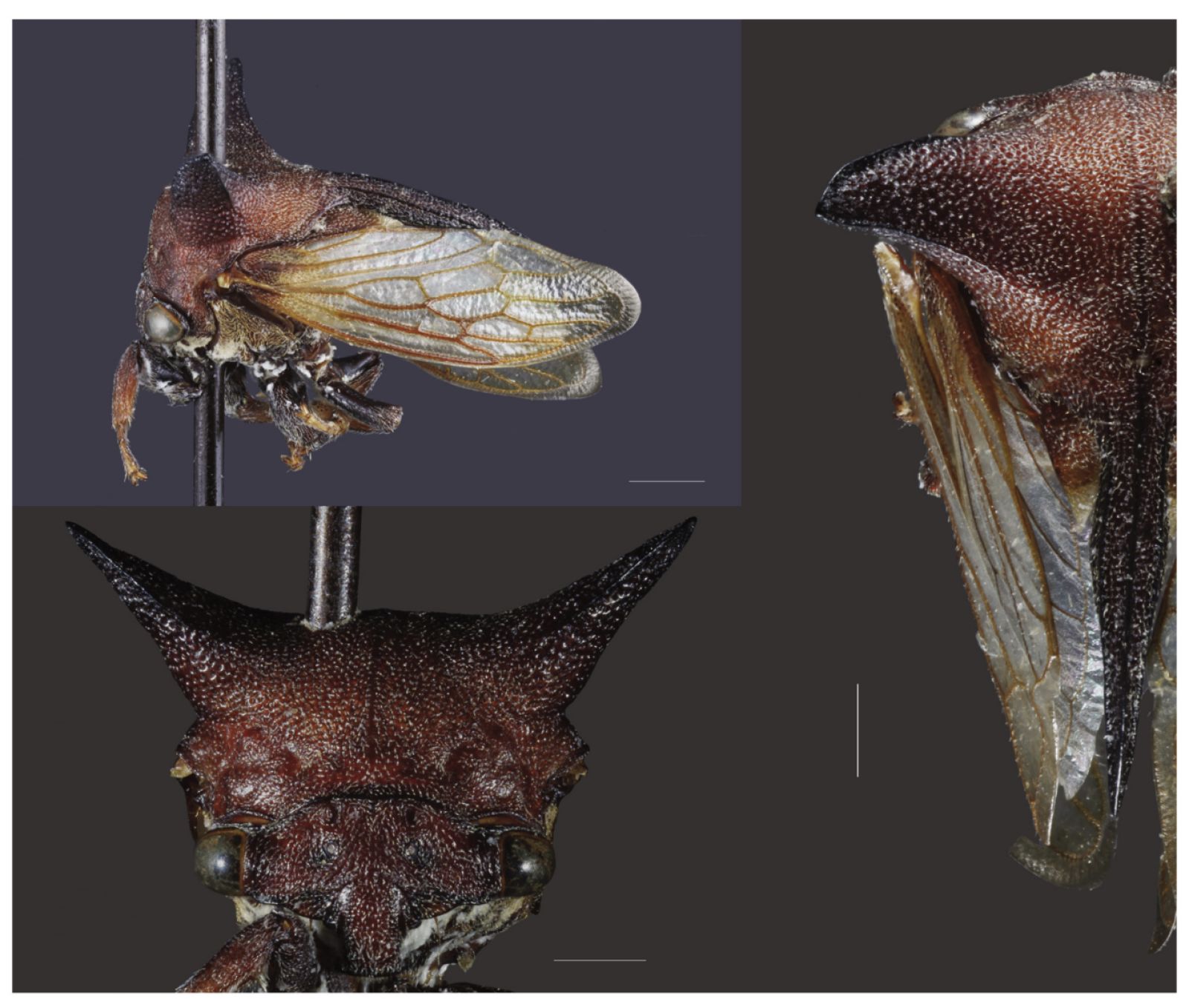
The species name, which honors Lady Gaga, generated immense interest in the world of pop culture. The new treehopper not only made the Washington Post’s comics (19 April 2020), but was also featured in numerous online sources including: Andrew, S. 2020; There's a new insect named for Lady Gaga, and it's every bit as otherworldly as the pop diva. Cable News Network; Dish Nation. 2020. A bug is born! A new insect species is named after Lady Gaga; Duffy, N. 2020. There’s a new insect named after Lady Gaga, and we want your stupid bug, bug. PinkNews; Garrand, D. 2020a. New bug species named after Lady Gaga due to its "wacky fashion sense." CBS News; Jirak, J. 2020a. Lady Gaga: newly discovered bug named after pop icon. ComicBook; Katz, B. 2020. Insect with ‘wacky fashion sense’ named after Lady Gaga. Smithsonian Mag; Liberal Arts & Sciences at Illinois. 2020. Illinois researcher names new treehopper species after Lady Gaga; Liver News. 2020. New bug species named after Lady Gaga due to its "wacky fashion sense;" Maicki, S. 2020. A newly discovered insect species in Nicaragua was just named after Lady Gaga. The Fader; NFK Editors. Treehopper insect named after Lady Gaga. News for Kids; Reed, R. 2020. Lady Gaga: newly discovered insect species named after singer. RollingStone; Reilly, N. 2020. New insect species with "wacky fashion sense" named after Lady Gaga. NME; and Yates, D. 2020. Grad student names new treehopper species after Lady Gaga. Illinois News Bureau.
This publication provides an illustrated description of Kaikaia gaga, new genus and species, from near the Pacific coast of Nicaragua. The genus Kaikaia is unplaced at the tribal level within the subfamily Centrotinae based on the authors’ comparison of its morphology to the genus Monobelus and members of the tribes Beaufortianini, Boocerini, Nessorhinini, and Platycentrini. Fig. 1, below, depicts the head and a portion of the adjoining pronotum of Kaikaia gaga superimposed on its namesake's body. Fig. 2, depicts the lateral, anterior, and dorsal aspects of the female holotype of Kaikaia gaga. Images © Copyright 2020, by Brendan O. Morris.
1
 2
2 
The species name, which honors Lady Gaga, generated immense interest in the world of pop culture. The new treehopper not only made the Washington Post’s comics (19 April 2020), but was also featured in numerous online sources including: Andrew, S. 2020; There's a new insect named for Lady Gaga, and it's every bit as otherworldly as the pop diva. Cable News Network; Dish Nation. 2020. A bug is born! A new insect species is named after Lady Gaga; Duffy, N. 2020. There’s a new insect named after Lady Gaga, and we want your stupid bug, bug. PinkNews; Garrand, D. 2020a. New bug species named after Lady Gaga due to its "wacky fashion sense." CBS News; Jirak, J. 2020a. Lady Gaga: newly discovered bug named after pop icon. ComicBook; Katz, B. 2020. Insect with ‘wacky fashion sense’ named after Lady Gaga. Smithsonian Mag; Liberal Arts & Sciences at Illinois. 2020. Illinois researcher names new treehopper species after Lady Gaga; Liver News. 2020. New bug species named after Lady Gaga due to its "wacky fashion sense;" Maicki, S. 2020. A newly discovered insect species in Nicaragua was just named after Lady Gaga. The Fader; NFK Editors. Treehopper insect named after Lady Gaga. News for Kids; Reed, R. 2020. Lady Gaga: newly discovered insect species named after singer. RollingStone; Reilly, N. 2020. New insect species with "wacky fashion sense" named after Lady Gaga. NME; and Yates, D. 2020. Grad student names new treehopper species after Lady Gaga. Illinois News Bureau.
New Images for Five Genera
2020-09-16
Thanks to members of the Treehoppers Team and various collaborators, we have recently added new images to our taxon pages for the genera Bocydium, Borinctolania, Cladonota (Faculifera) and C. (Lecythifera), Kaikaia, and Problematode. We welcome new collaborator L. Brian Stauffer, who contributed a terrific image of Kaikaia. Brian is the Director of Photography for the Office of Public Affairs, University of Illinois at Urbana-Champaign.
New Species of Stylocentrus from Ancient Dominican Amber
2020-09-29
Wang, H.; Zhang, X.; Shih, C.; Dong, R.: Yao, Y. 2020a. A new species of Membracidae (Hemiptera: Cicadomorpha: Membracoidea) from Dominican amber. Historical Biology (an International Journal of Paleobiology): DOI: 10.1080/08912963.2020.1803300 [published online; pagination: 1-5]
A fossilized treehopper from Cenozoic Dominican amber--Stylocentrus hui Wang, Zhang & Yao in Wang, Zhang, Shih, Dong, and Yao 2020, n. sp.--is described and illustrated. This species, belonging to the tribe Stegaspidini (Membracidae: Stegaspidinae), is based on a well preserved adult male from the northern mountain range (Cordillera Septentrional, between the cities of Puerto Plata and Santiago) of the Dominican Republic. Based on the fossil record and the current distribution of membracids, the authors concluded that: (1) the family Membracidae originated in the Neotropics after the Cretaceous–Palaeogene mass extinction, and (2) the enlarged, complex membracid pronotum originated no later than the Miocene. They also noted that while other membracid specimens are known from Dominican amber, this is the first to be formally described. As indicated by McKamey (1998a), prior fossils described as membracids have subsequently been referred to Heteroptera, Coleorrhyncha, or Incertae Sedis.
A fossilized treehopper from Cenozoic Dominican amber--Stylocentrus hui Wang, Zhang & Yao in Wang, Zhang, Shih, Dong, and Yao 2020, n. sp.--is described and illustrated. This species, belonging to the tribe Stegaspidini (Membracidae: Stegaspidinae), is based on a well preserved adult male from the northern mountain range (Cordillera Septentrional, between the cities of Puerto Plata and Santiago) of the Dominican Republic. Based on the fossil record and the current distribution of membracids, the authors concluded that: (1) the family Membracidae originated in the Neotropics after the Cretaceous–Palaeogene mass extinction, and (2) the enlarged, complex membracid pronotum originated no later than the Miocene. They also noted that while other membracid specimens are known from Dominican amber, this is the first to be formally described. As indicated by McKamey (1998a), prior fossils described as membracids have subsequently been referred to Heteroptera, Coleorrhyncha, or Incertae Sedis.
Elegant Mask for Treehopper Enthusiasts
2020-10-30
Stuart McKamey, aficionado of “all things treehopper,” discovered a fashionable entomological face-covering that features our favorite insects, front and center, among other interesting insects. View the “Insects 2 Mask,” by designer Michaela Grove, at: https://www.redbubble.com/i/mask/Insects-2-by-Salocin/32568218.9G0D8.
Dennis D. Kopp (1943-2020)
2020-12-18
Treehopper researchers are mourning the unexpected passing of beloved entomologist Dennis Kopp on 11 December 2020. Dennis’ exceptionally productive career involved many public service and leadership roles in entomological research, education and Extension programs.
In 2010, he was elected a Fellow of the Entomological Society of America, and the society’s website features an impressive summary of his achievements at both the state and national levels (https://www.entsoc.org/fellows/kopp). Especially notable among Dennis’ publications on the Membracidae (listed below) are major works on the treehoppers of Missouri and the systematics of the tribe Ceresini.
The calm sound of his voice, the twinkle in his eyes, and the cheerfulness of his ever-supportive personality will be missed greatly and affectionately by those who knew him.
D. D. Kopp’s publications on treehoppers
Deitz, L. L. Kopp, D. D. 1987a. Bibliography of the Membracoidea (Homoptera: Aetalionidae, Biturritiidae, Membacidae, and Nicomiidae) 1956-1980. North Carolina Agricultural Research Service Technical Bulletin 284: [-ii] 1-39. [lists 1,031 references]
Dennis, C. J.; Kopp, D. D. 1969a. Membracidae: Cyrtolobus funkhouseri Woodruff. New records. Entomological News 80(6): 158.
Freytag, P. H.; Covell, C. V., Jr.; Kopp, D. D. 1981a. An annotated check list of the treehoppers (Homoptera: Membracidae) of Kentucky. Entomological News 92(4): 133–137.
Kopp, D. D. 1978a. A generic revision of the tribe Ceresini Goding, 1892 (Homoptera: Membracidae). Dissertation Abstracts International. (B) 38(10): 4630. [1977, Ph. D. dissertation, University of Missouri, Columbia, 170 pp.]
Kopp, D. D.; Tsai, J. H. 1983a. Systematics of the genus Idioderma Van Duzee (Homoptera: Membracidae) and biology of I. virescens Van Duzee. Annals of the Entomological Society of America 76(2): 149-157.
Kopp, D. D.; Yonke, T. R. 1970a. Treehoppers (Homoptera: Membracidae) of Tucker Prairie. Transactions of the Missouri Academy of Science 4: 72-75.
Kopp, D. D.; Yonke, T. R. 1970b. Annotated list of treehopper species (Homoptera: Membracidae) of Missouri and evaluation of collection methods. Transactions of the Missouri Academy of Science 4: 76-83. [correction in Kopp and Yonke 1971a]
Kopp, D. D.; Yonke, T. R. 1971a. Correction of Table 1 in "Annotated list of treehopper species (Homoptera: Membracidae) of Missouri and evaluation of collection methods." Transactions of the Missouri Academy of Science 5: 3-4.
Kopp, D. D.; Yonke, T. R. 1972a. Morphological observations on the alimentary canal of Entylia bactriana. Journal of the Kansas Entomological Society 45(1): 46-51.
Kopp, D. D.; Yonke, T. R. 1973a. The treehoppers of Missouri: Part 1. Subfamilies Centrotinae, Hoplophorioninae, and Membracinae (Homoptera: Membracidae). Journal of the Kansas Entomological Society 46(1): 42-64.
Kopp, D. D.; Yonke, T. R. 1973b. The treehoppers of Missouri: Part 2. Subfamily Smiliinae; tribes Acutalini, Ceresini, and Polyglyptini (Homoptera: Membracidae). Journal of the Kansas Entomological Society 46(2): 233-276.
Kopp, D. D.; Yonke, T. R. 1973c. The treehoppers of Missouri: Part 3. Subfamily Smiliinae; tribe Smiliini. Journal of the Kansas Entomological Society 46(3): 375-421.
Kopp, D. D.; Yonke, T. R. 1974a. The treehoppers of Missouri: Part 4. Subfamily Smiliinae; tribe Telamonini (Homoptera: Membracidae). Journal of the Kansas Entomological Society 47(1): 80-130.
Kopp, D. D.; Yonke, T. R. 1974b. William D. Funkhouser (1881-1948) bibliography and a list of names proposed. Entomological News 85(5-6): 131-145.
Kopp, D. D.; Yonke, T. R. 1977a. Taxonomic status of the buffalo treehopper and the name Ceresa bubalus. Annals of the Entomological Society of America 70(6): 901-905. [Stictocephala bisonia, new species]
Kopp, D. D.; Yonke, T. R. 1977b. Considerations on the higher classification of the family Membracidae (Hemiptera: Homoptera). Entomological Society of America, Proceedings of the North Central Branch 32: 29. [abstract]
Kopp, D. D.; Yonke, T. R. 1979a. A taxonomic review of the tribe Ceresini (Homoptera: Membracidae). Miscellaneous Publications of the Entomological Society of America 11(2): 1-97. [Hadrophallus, Amblyophallus, and Paraceresa, new genera; Penichrophorus richteri, replacement name for P. nigriventris (Richter, 1942), preoccupied; subgenus Eucyphonia Sakakibara, 1968, elevated to genus; also includes other taxonomic changes]
Quisenberry, S. S.; Yonke, T. R.; Kopp, D. D. 1978a. Key to the genera of certain immature treehoppers of Missouri with notes on their host plants (Homoptera: Membracidae). Journal of the Kansas Entomological Society 51(1): 109-122. [13 species illustrated]
Tsai, J. H.; Kopp, D. D. 1981a [dated 1980]. Life history, morphology, and taxonomy of Acutalis tartarea (Say) (Homoptera: Membracidae). Journal of the New York Entomological Society 88(3) 174–185.
In 2010, he was elected a Fellow of the Entomological Society of America, and the society’s website features an impressive summary of his achievements at both the state and national levels (https://www.entsoc.org/fellows/kopp). Especially notable among Dennis’ publications on the Membracidae (listed below) are major works on the treehoppers of Missouri and the systematics of the tribe Ceresini.
The calm sound of his voice, the twinkle in his eyes, and the cheerfulness of his ever-supportive personality will be missed greatly and affectionately by those who knew him.
D. D. Kopp’s publications on treehoppers
Deitz, L. L. Kopp, D. D. 1987a. Bibliography of the Membracoidea (Homoptera: Aetalionidae, Biturritiidae, Membacidae, and Nicomiidae) 1956-1980. North Carolina Agricultural Research Service Technical Bulletin 284: [-ii] 1-39. [lists 1,031 references]
Dennis, C. J.; Kopp, D. D. 1969a. Membracidae: Cyrtolobus funkhouseri Woodruff. New records. Entomological News 80(6): 158.
Freytag, P. H.; Covell, C. V., Jr.; Kopp, D. D. 1981a. An annotated check list of the treehoppers (Homoptera: Membracidae) of Kentucky. Entomological News 92(4): 133–137.
Kopp, D. D. 1978a. A generic revision of the tribe Ceresini Goding, 1892 (Homoptera: Membracidae). Dissertation Abstracts International. (B) 38(10): 4630. [1977, Ph. D. dissertation, University of Missouri, Columbia, 170 pp.]
Kopp, D. D.; Tsai, J. H. 1983a. Systematics of the genus Idioderma Van Duzee (Homoptera: Membracidae) and biology of I. virescens Van Duzee. Annals of the Entomological Society of America 76(2): 149-157.
Kopp, D. D.; Yonke, T. R. 1970a. Treehoppers (Homoptera: Membracidae) of Tucker Prairie. Transactions of the Missouri Academy of Science 4: 72-75.
Kopp, D. D.; Yonke, T. R. 1970b. Annotated list of treehopper species (Homoptera: Membracidae) of Missouri and evaluation of collection methods. Transactions of the Missouri Academy of Science 4: 76-83. [correction in Kopp and Yonke 1971a]
Kopp, D. D.; Yonke, T. R. 1971a. Correction of Table 1 in "Annotated list of treehopper species (Homoptera: Membracidae) of Missouri and evaluation of collection methods." Transactions of the Missouri Academy of Science 5: 3-4.
Kopp, D. D.; Yonke, T. R. 1972a. Morphological observations on the alimentary canal of Entylia bactriana. Journal of the Kansas Entomological Society 45(1): 46-51.
Kopp, D. D.; Yonke, T. R. 1973a. The treehoppers of Missouri: Part 1. Subfamilies Centrotinae, Hoplophorioninae, and Membracinae (Homoptera: Membracidae). Journal of the Kansas Entomological Society 46(1): 42-64.
Kopp, D. D.; Yonke, T. R. 1973b. The treehoppers of Missouri: Part 2. Subfamily Smiliinae; tribes Acutalini, Ceresini, and Polyglyptini (Homoptera: Membracidae). Journal of the Kansas Entomological Society 46(2): 233-276.
Kopp, D. D.; Yonke, T. R. 1973c. The treehoppers of Missouri: Part 3. Subfamily Smiliinae; tribe Smiliini. Journal of the Kansas Entomological Society 46(3): 375-421.
Kopp, D. D.; Yonke, T. R. 1974a. The treehoppers of Missouri: Part 4. Subfamily Smiliinae; tribe Telamonini (Homoptera: Membracidae). Journal of the Kansas Entomological Society 47(1): 80-130.
Kopp, D. D.; Yonke, T. R. 1974b. William D. Funkhouser (1881-1948) bibliography and a list of names proposed. Entomological News 85(5-6): 131-145.
Kopp, D. D.; Yonke, T. R. 1977a. Taxonomic status of the buffalo treehopper and the name Ceresa bubalus. Annals of the Entomological Society of America 70(6): 901-905. [Stictocephala bisonia, new species]
Kopp, D. D.; Yonke, T. R. 1977b. Considerations on the higher classification of the family Membracidae (Hemiptera: Homoptera). Entomological Society of America, Proceedings of the North Central Branch 32: 29. [abstract]
Kopp, D. D.; Yonke, T. R. 1979a. A taxonomic review of the tribe Ceresini (Homoptera: Membracidae). Miscellaneous Publications of the Entomological Society of America 11(2): 1-97. [Hadrophallus, Amblyophallus, and Paraceresa, new genera; Penichrophorus richteri, replacement name for P. nigriventris (Richter, 1942), preoccupied; subgenus Eucyphonia Sakakibara, 1968, elevated to genus; also includes other taxonomic changes]
Quisenberry, S. S.; Yonke, T. R.; Kopp, D. D. 1978a. Key to the genera of certain immature treehoppers of Missouri with notes on their host plants (Homoptera: Membracidae). Journal of the Kansas Entomological Society 51(1): 109-122. [13 species illustrated]
Tsai, J. H.; Kopp, D. D. 1981a [dated 1980]. Life history, morphology, and taxonomy of Acutalis tartarea (Say) (Homoptera: Membracidae). Journal of the New York Entomological Society 88(3) 174–185.
Publications on Treehoppers by Adachi et al. 2000a and Flynn and Gálvez 2021a
2021-04-17
Adachi, H.; Matsuda, K.; Nishida, K.; Hanson, P.; Kondo, S.; Gotoh, H. 2000a. Structure and development of the complex helmet of treehoppers (Insecta: Hemiptera: Membracidae). Zoological Letters 6, 3 (2020). Available online: https://doi.org/10.1186/s40851-020-00155-7.
This research on the morphogenesis of prothoracic structures in Antianthe expansa was based on micro-CT, scanning electron microscopy, and paraffin sections. It presents excellent illustrations, including supplemental videos of eclosion in the genera Antianthe, Bocydium, Cladonota, Poppea, and Umbonia.
Flynn, D. J.: Gálvez, J. E. B. 2021a. A new treehopper species of Cladonota (Stål) (Hemiptera: Membracidae: Membracinae: Hypsoprorini) from Mexico. Zootaxa 4948(4): 569-574.
Cladonota (Lecythifera) crucifixa Gálvez and Flynn in Flynn and Gálvez, n. sp., is illustrated and described from Puebla, Mexico. Its host plant is Euphorbia schlechtendalii, however, based on the manuscript, the host species name seems to be misspelled on the data labels. Both sexes of this new treehopper (Fig. l) resemble females of C. hoffmanni.

Figure 1. Cladonota (Lecythifera) crucifixa, female. Image © 2021, by Juan Enrique Benítez Gálvez (Puebla, Puebla, Mexico). We thank Enrique Gálvez for sharing this image as a new collaborator.
This research on the morphogenesis of prothoracic structures in Antianthe expansa was based on micro-CT, scanning electron microscopy, and paraffin sections. It presents excellent illustrations, including supplemental videos of eclosion in the genera Antianthe, Bocydium, Cladonota, Poppea, and Umbonia.
Flynn, D. J.: Gálvez, J. E. B. 2021a. A new treehopper species of Cladonota (Stål) (Hemiptera: Membracidae: Membracinae: Hypsoprorini) from Mexico. Zootaxa 4948(4): 569-574.
Cladonota (Lecythifera) crucifixa Gálvez and Flynn in Flynn and Gálvez, n. sp., is illustrated and described from Puebla, Mexico. Its host plant is Euphorbia schlechtendalii, however, based on the manuscript, the host species name seems to be misspelled on the data labels. Both sexes of this new treehopper (Fig. l) resemble females of C. hoffmanni.

Figure 1. Cladonota (Lecythifera) crucifixa, female. Image © 2021, by Juan Enrique Benítez Gálvez (Puebla, Puebla, Mexico). We thank Enrique Gálvez for sharing this image as a new collaborator.
David Stephan and His Telamona
2021-04-22
We are saddened to report the recent passing of David Leigh Stephan (1946-2021), for whom the Nearctic treehopper Telamona stephani is named (Wallace 2018a). Dave was an extraordinary naturalist, with an amazing knowledge of the North Carolina flora and fauna. For his entire career at North Carolina State University, he served as the chief insect identification specialist for the NC Plant Disease and Insect Clinic. Much admired as a naturalist and conservationist, Dave will be greatly missed.
It is most fitting that the beautiful treehopper shown below will forever remind us of our dear friend and colleague. David collected both the holotype (Fig. 1) and allotype (Fig. 2) at lights in Bladen County, North Carolina, however, this sexually dimorphic species occurs also in Delaware, Louisiana, Maryland, Pennsylvania, and Virginia (Wallace 2018a). Males differ from other species of Telamona in having a characteristic mottled coloration, a dark brown head and metopidium, and very lowly elevated pronotal projection. Little is known of the biology of this treehopper because most specimens were taken at lights.
1 2
2 
Figs. 1 and 2, Telamona stephani. 1, holotype, male. 2, allotype, female. Both specimens are at the NCSU Insect Collection. Photos © 2021, by Matthew A. Bertone.
Wallace, M. S. 2018a. A new species of Telamonini from the eastern United States and the taxonomic limits of Telamona salvini Distant (Hemiptera: Membracidae: Smiliinae). Proceedings of the Entomological Society of Washington 120(3):605-615.
It is most fitting that the beautiful treehopper shown below will forever remind us of our dear friend and colleague. David collected both the holotype (Fig. 1) and allotype (Fig. 2) at lights in Bladen County, North Carolina, however, this sexually dimorphic species occurs also in Delaware, Louisiana, Maryland, Pennsylvania, and Virginia (Wallace 2018a). Males differ from other species of Telamona in having a characteristic mottled coloration, a dark brown head and metopidium, and very lowly elevated pronotal projection. Little is known of the biology of this treehopper because most specimens were taken at lights.
1
 2
2 
Figs. 1 and 2, Telamona stephani. 1, holotype, male. 2, allotype, female. Both specimens are at the NCSU Insect Collection. Photos © 2021, by Matthew A. Bertone.
Wallace, M. S. 2018a. A new species of Telamonini from the eastern United States and the taxonomic limits of Telamona salvini Distant (Hemiptera: Membracidae: Smiliinae). Proceedings of the Entomological Society of Washington 120(3):605-615.
New Online Publication: Third Version of "Guide Illustré des Membracides de Guyane" by Jérémie Lapéze
2021-05-11
Lapèze, J. 2021a. Guide Illustré des Membracides de Guyane. Version 3. 142 digital pp. Available online: https://www.insecte.org/fichiers/Membracides_de_Guyane.pdf. [in French]
This beautiful and useful illustrated guide to the treehoppers of French Guiana includes, in the words of Jérémie Lapèze, “more species, more photos, more information.”
This beautiful and useful illustrated guide to the treehoppers of French Guiana includes, in the words of Jérémie Lapèze, “more species, more photos, more information.”
Join the 29th Annual Treehopper Gathering: a Socially Distanced Aggregation
2021-05-12
The 2021 Treehopper Gathering is arranged for 4-6 June 2021 at the Little Orleans Campground, Little Orleans, Maryland. This event provides a beautiful, casual setting to meet and collect with others passionate about treehoppers and related insects in the 222-acre campground, located in the Upper Potomac River valley of western Maryland. At least 23 treehopper genera (56 species) have been collected in this area.
To reserve a campsite with our group or to obtain further information, contact Charles Bartlett. Advanced registration with Charles is essential to assure that you have a campsite. Because of the pandemic, we strongly recommend that all attendees be fully vaccinated.
Participants are expected to provide their own tents, food, and camping gear, and to share in the cost of the group campground registration. Note that this year a socially distanced aggregation time is planned for Saturday evening, rather than the usual shared group meal. We hope to be able to view the documentary film The Love Bugs.
Bring your collecting vials, insect nets, unidentified specimens, cameras, bathing suits, a folding chair, and your favorite t-shirts. If you fear cicadas, you may also wish to bring a wearable pod to protect you from Brood X of 17-year cicadas. LOL!
To reserve a campsite with our group or to obtain further information, contact Charles Bartlett. Advanced registration with Charles is essential to assure that you have a campsite. Because of the pandemic, we strongly recommend that all attendees be fully vaccinated.
Participants are expected to provide their own tents, food, and camping gear, and to share in the cost of the group campground registration. Note that this year a socially distanced aggregation time is planned for Saturday evening, rather than the usual shared group meal. We hope to be able to view the documentary film The Love Bugs.
Bring your collecting vials, insect nets, unidentified specimens, cameras, bathing suits, a folding chair, and your favorite t-shirts. If you fear cicadas, you may also wish to bring a wearable pod to protect you from Brood X of 17-year cicadas. LOL!
The Socially Distanced Treehopper Aggregation of 2021
2021-08-16
The 29th Annual Treehopper Gathering was held 4-6 June 2021, at the Little Orleans Campground, Little Orleans, Maryland. The timing was fortunate because participants had time to become fully vaccinated against the COVID-19 virus before the gathering. Fourteen people and two "treehopper-curious" dogs attended this year (Figs. 1 and 2) and we had a lot of catching up to do.
1
2
Figs. 1-2. Group Photos. 1, fully masked and socially-distanced. 2, unmasked and less distanced (left to right in Fig. 2): Stuart McKamey, Lewis Deitz, Kelley Tilmon, Matthew Wallace, Andrew Short, Mark Rothschild, Eli Wyman, Hava Amsbury, Wil Winter, Dawn Flynn, Ashley Kennedy, Anthony Deczynski, and Jamie Zahniser, plus dogs "Shaggydog" (left) & "Delphine" (right) [Jason Owens is absent in Fig. 2, but is fourth from the left in Fig. 1]. (Figs. 1 & 2 © 2021, by Wil Winter and Ashley Kennedy).
Those attending were serenaded daily from dawn to dusk by periodical cicadas of Brood X at our campsite near Fifteenmile Creek that runs through the campground. The weather was pleasant with bright skies and butterflies. After the sunset on Saturday (5 June), with the aid of a portable generator, we watched "The Love Bugs" projected on a white sheet at our campsite. This charming documentary film features entomologists Lois and Charlie O’Brien, known widely for their work on planthoppers and weevils, respectively. Later, because the moon was in its waning crescent phase, treehoppers were especially abundant at various lights set up for night collecting. It was great to get together in person and catch up on happenings in the world of treehopperdom.
3
4 5
5 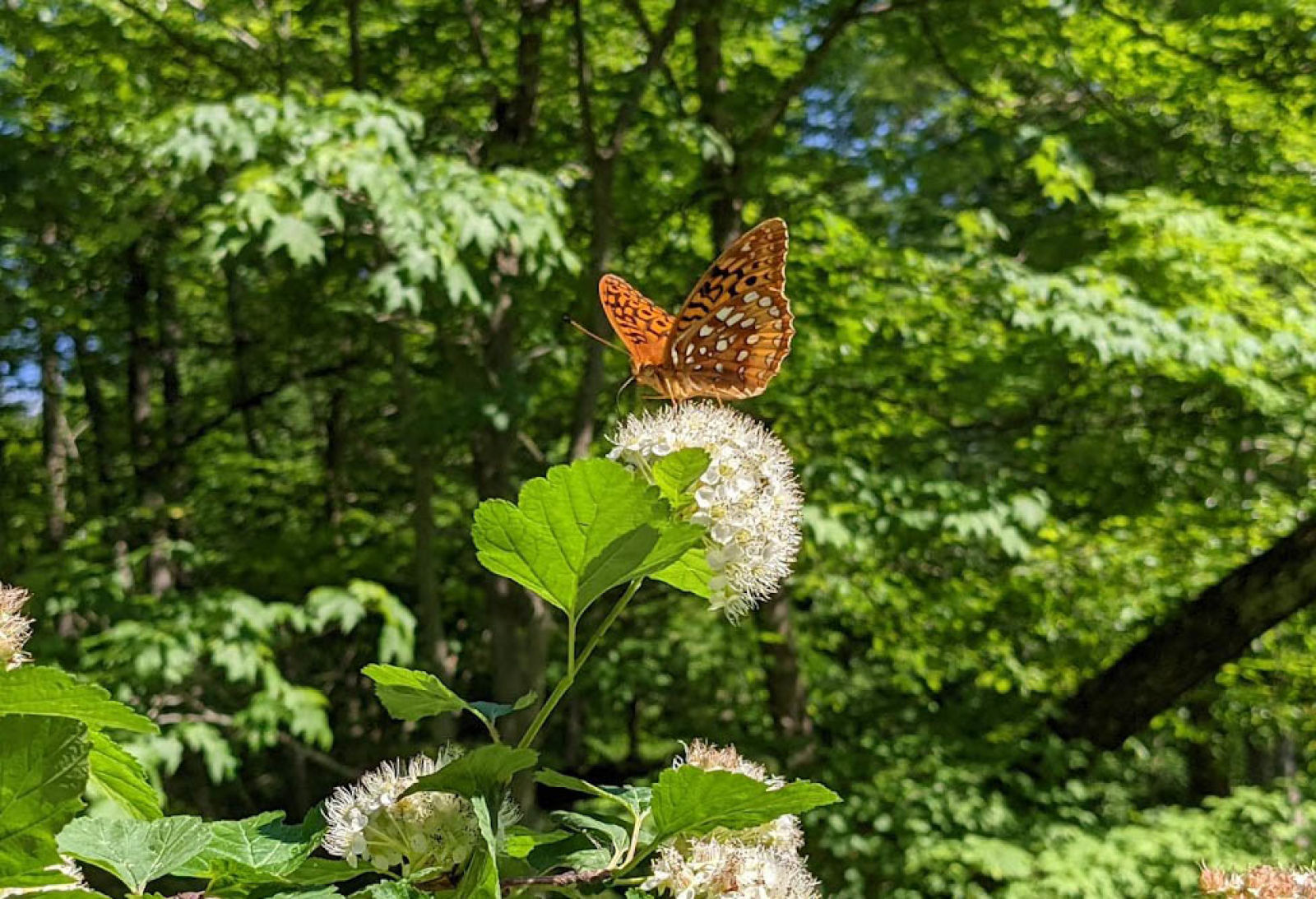 6
6 
7 8
8 
Figs. 3-8. Sights around the campground. 3, scenic view of Fifteenmile Creek. 4, wild stonecrop, Sedum ternatum, near the creek. 5, Great Spangled Fritillary butterfly visiting a flowering shrub. 6, Mark Rothschild collecting treehoppers at light. 7, Wil Winter collecting with Andrew Short at the creek. 8, baby snapping turtle. (Copyrights: Figs. 3-6, © 2021, by Matt Wallace; Figs. 7-8, © 2021, by Ashley Kennedy).
1

2

Figs. 1-2. Group Photos. 1, fully masked and socially-distanced. 2, unmasked and less distanced (left to right in Fig. 2): Stuart McKamey, Lewis Deitz, Kelley Tilmon, Matthew Wallace, Andrew Short, Mark Rothschild, Eli Wyman, Hava Amsbury, Wil Winter, Dawn Flynn, Ashley Kennedy, Anthony Deczynski, and Jamie Zahniser, plus dogs "Shaggydog" (left) & "Delphine" (right) [Jason Owens is absent in Fig. 2, but is fourth from the left in Fig. 1]. (Figs. 1 & 2 © 2021, by Wil Winter and Ashley Kennedy).
Those attending were serenaded daily from dawn to dusk by periodical cicadas of Brood X at our campsite near Fifteenmile Creek that runs through the campground. The weather was pleasant with bright skies and butterflies. After the sunset on Saturday (5 June), with the aid of a portable generator, we watched "The Love Bugs" projected on a white sheet at our campsite. This charming documentary film features entomologists Lois and Charlie O’Brien, known widely for their work on planthoppers and weevils, respectively. Later, because the moon was in its waning crescent phase, treehoppers were especially abundant at various lights set up for night collecting. It was great to get together in person and catch up on happenings in the world of treehopperdom.
3

4
 5
5  6
6 
7
 8
8 
Figs. 3-8. Sights around the campground. 3, scenic view of Fifteenmile Creek. 4, wild stonecrop, Sedum ternatum, near the creek. 5, Great Spangled Fritillary butterfly visiting a flowering shrub. 6, Mark Rothschild collecting treehoppers at light. 7, Wil Winter collecting with Andrew Short at the creek. 8, baby snapping turtle. (Copyrights: Figs. 3-6, © 2021, by Matt Wallace; Figs. 7-8, © 2021, by Ashley Kennedy).
A Case for the Commission: a Tribe of Treehoppers and a Tribe of Katydids Share Identical Names
2021-10-25
Deitz, L. L.; Cryan, J. R. 2021a. Case 3846 –Microcentrini Deitz, 1975 (Insecta, Hemiptera, Membracidae): proposed emendation of spelling to Microcentrusini to remove homonymy with Microcentrini Brunner von Wattenwyl, 1878 (Insecta, Orthoptera, Phaneropteridae). Bulletin of Zoological Nomenclature 78: 96-98.
Deitz and Cryan referred this case to International Commission on Zoological Nomenclature to resolve the homonymy of the treehopper tribe Microcentrini Deitz, 1975 and the katydid tribe Microcentrini Brunner von Wattenwyl, 1878. The ICZN acknowledged the receipt of this application in April (Bulletin 78: 2), preceding its publication in August (78: 96-98). Comments on this case for publication in the Bulletin (subject to editing) may be sent to the Secretariat, International Commission on Zoological Nomenclature, c/o Lee Kong Chian Natural History Museum, 2 Conservatory Drive, Singapore 117377, Republic of Singapore (e-mail: iczn@nus.edu.sg).
Deitz and Cryan referred this case to International Commission on Zoological Nomenclature to resolve the homonymy of the treehopper tribe Microcentrini Deitz, 1975 and the katydid tribe Microcentrini Brunner von Wattenwyl, 1878. The ICZN acknowledged the receipt of this application in April (Bulletin 78: 2), preceding its publication in August (78: 96-98). Comments on this case for publication in the Bulletin (subject to editing) may be sent to the Secretariat, International Commission on Zoological Nomenclature, c/o Lee Kong Chian Natural History Museum, 2 Conservatory Drive, Singapore 117377, Republic of Singapore (e-mail: iczn@nus.edu.sg).
Recent Contributions on Heteronotus, Micrutalis, and Stylocentrus
2021-11-29
Perger, R. 2021a. First reports of species-specific ant resemblance in heteronotine treehoppers (Hemiptera: Membracidae: Heteronotinae). Insecta Mundi: 0888:1-6. [Online publication].
This publication documents species-specific resemblance in females of the Bolivian treehopper Heteronotus fabulosus and workers of an associated giant turtle ant, Cephalotes atratus. Females of the treehopper (including multiple structural details of their shiny black, spiny pronota) appear to mimic an attending species of shiny black, spiny, turtle ant. Even though it does not sting, C. atratus, is a large, aggressive ant with intimidating spines, and thus an appropriately menacing model for such a mimetic relationship.
Wheeler, A. G., Jr.; Flynn, D. J. 2021a. First U.S. records of the mistletoe-associated Micrutalis discalis (Walker) (Hemiptera: Membracidae). Description of the male, and redescription of the female. Proceedings of the Entomological Society of Washington 123(3): 652-664.
The authors give the first US reports of M. discalis (Walker) from 5 counties in Arizona. This Micrutalis was originally described based on a single specimen lacking its abdomen (probably a female) from Veracruz, Mexico, in 1858. The present work provides a redescription of the female, along with the first descriptions of the male and the fifth instar based on adults and nymphs from desert mistletoe (Phoradendron californicum). Field observations suggest the species is bivoltine.
Updated Citation: Wang, Zhang, Shih, Dong & Yao (2020a) A new species of Membracidae (Hemiptera: Cicadomorpha: Membracoidea) from Dominican amber. On 2020-09-29, the Treehopper News listed this article based on the 2020 online version of the paper (6 August 2020). It is now also available in print form with the following date and pagination: Wang, H.; Zhang, X.; Shih, C.; Dong, R.; Yao, Y. 2021a. A new species of Membracidae (Hemiptera: Cicadomorpha: Membracoidea) from Dominican amber. Historical Biology 33(10), 2491-2495. [first published online in 2020]
This publication documents species-specific resemblance in females of the Bolivian treehopper Heteronotus fabulosus and workers of an associated giant turtle ant, Cephalotes atratus. Females of the treehopper (including multiple structural details of their shiny black, spiny pronota) appear to mimic an attending species of shiny black, spiny, turtle ant. Even though it does not sting, C. atratus, is a large, aggressive ant with intimidating spines, and thus an appropriately menacing model for such a mimetic relationship.
Wheeler, A. G., Jr.; Flynn, D. J. 2021a. First U.S. records of the mistletoe-associated Micrutalis discalis (Walker) (Hemiptera: Membracidae). Description of the male, and redescription of the female. Proceedings of the Entomological Society of Washington 123(3): 652-664.
The authors give the first US reports of M. discalis (Walker) from 5 counties in Arizona. This Micrutalis was originally described based on a single specimen lacking its abdomen (probably a female) from Veracruz, Mexico, in 1858. The present work provides a redescription of the female, along with the first descriptions of the male and the fifth instar based on adults and nymphs from desert mistletoe (Phoradendron californicum). Field observations suggest the species is bivoltine.
Updated Citation: Wang, Zhang, Shih, Dong & Yao (2020a) A new species of Membracidae (Hemiptera: Cicadomorpha: Membracoidea) from Dominican amber. On 2020-09-29, the Treehopper News listed this article based on the 2020 online version of the paper (6 August 2020). It is now also available in print form with the following date and pagination: Wang, H.; Zhang, X.; Shih, C.; Dong, R.; Yao, Y. 2021a. A new species of Membracidae (Hemiptera: Cicadomorpha: Membracoidea) from Dominican amber. Historical Biology 33(10), 2491-2495. [first published online in 2020]
Recent Publications on Symbiont–Pathogen Diversity in Membracidae and the Phylogeny of Centrotinae
2022-01-11
Salazar, M. M.; Pupo, M. T.; Brown, A. M. V. 2021a. Co-occurrence of
viruses, plant pathogens, and symbionts in an underexplored hemipteran clade. Frontiers in Cellular and Infection Microbiology 11:715998. [Online publication].
Research on 16 treehopper species revealed that this insect group offers a rich resource for studying symbiont–plant pathogen interactions, including potential primary and secondary insect symbionts, potential plant pathogens, and other microbes and viruses.
Yu, R.; Feng, L.; Dietrich, C.H.; Yuan, X. 2022a. Characterization, comparison of four new mitogenomes of Centrotinae (Hemiptera: Membracidae) and phylogenetic implications supports new synonymy. Life 2022, 12, 61. [Online publication].
This work examines phylogenetic relationships within the subfamily Centrotinae based on mitochondrial genome data, incorporating newly sequenced mitogenomes of Anchon lineatus, Anchon yunnanensis, Gargara genistae, and Tricentrus longivalvulatus. The authors’ resulting phylogenetic analyses support Wallace and Deitz’s (2004a) placement of the tribes Tricentrini and Antialcidini as junior synonyms of Gargarini.
Research on 16 treehopper species revealed that this insect group offers a rich resource for studying symbiont–plant pathogen interactions, including potential primary and secondary insect symbionts, potential plant pathogens, and other microbes and viruses.
Yu, R.; Feng, L.; Dietrich, C.H.; Yuan, X. 2022a. Characterization, comparison of four new mitogenomes of Centrotinae (Hemiptera: Membracidae) and phylogenetic implications supports new synonymy. Life 2022, 12, 61. [Online publication].
This work examines phylogenetic relationships within the subfamily Centrotinae based on mitochondrial genome data, incorporating newly sequenced mitogenomes of Anchon lineatus, Anchon yunnanensis, Gargara genistae, and Tricentrus longivalvulatus. The authors’ resulting phylogenetic analyses support Wallace and Deitz’s (2004a) placement of the tribes Tricentrini and Antialcidini as junior synonyms of Gargarini.
New Genus Wallaciana from Southeastern Australia
2022-03-20
Evangelista, O. 2021a. Wallaciana gen. nov. (Hemiptera: Membracidae), a new treehopper genus endemic to montane south-eastern Australia. Austral Entomology 40: 672-681.
Wallaciana, a new Australian genus, belongs to the treehopper tribe Terentiini. The genus includes the type species W. barringtonensis (Day), new combination (= Neocanthuchus barringtonensis Day), from New South Wales, and W. namadgi, new species (Figs. 1-3), from the Australian Capital Territory. Although the latter species is known only from the female, both species are thought to be sexually dimorphic and endemic to montane regions of southeastern Australia. Evangelista named Wallaciana in honor of membracid worker Matthew S. Wallace, for his significant contributions on many treehopper groups, including the tribe Terentiini.
1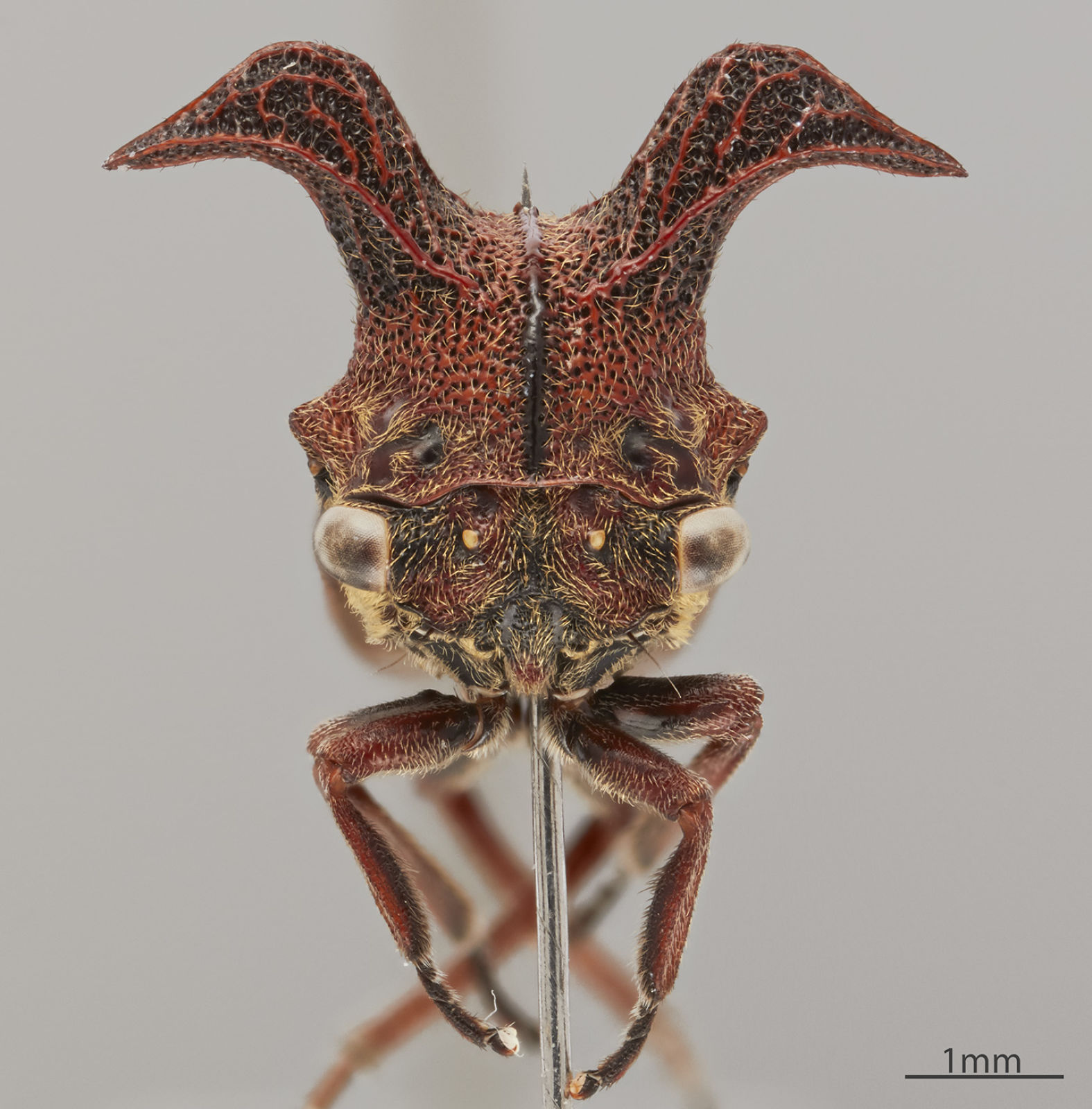 2
2 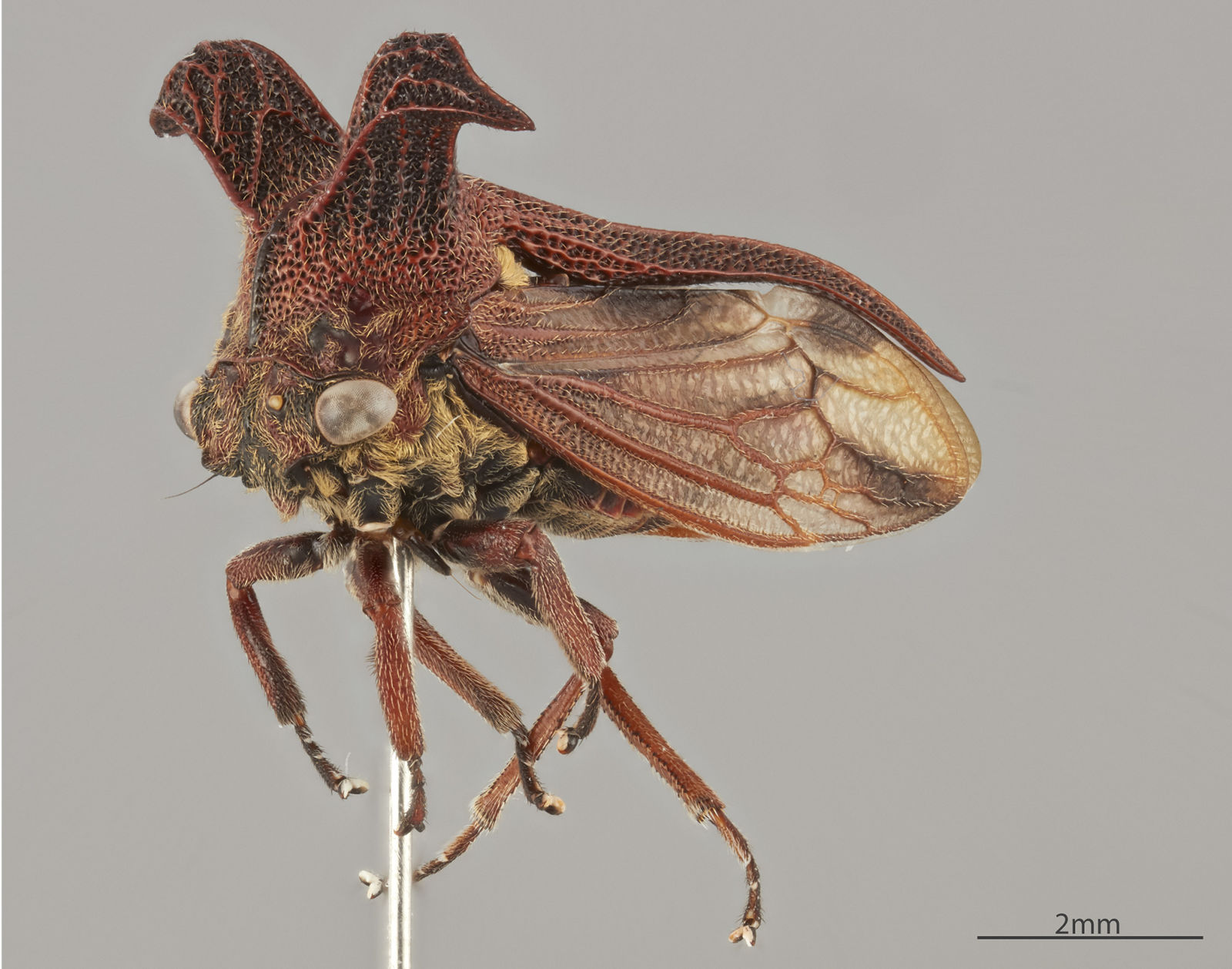 3
3 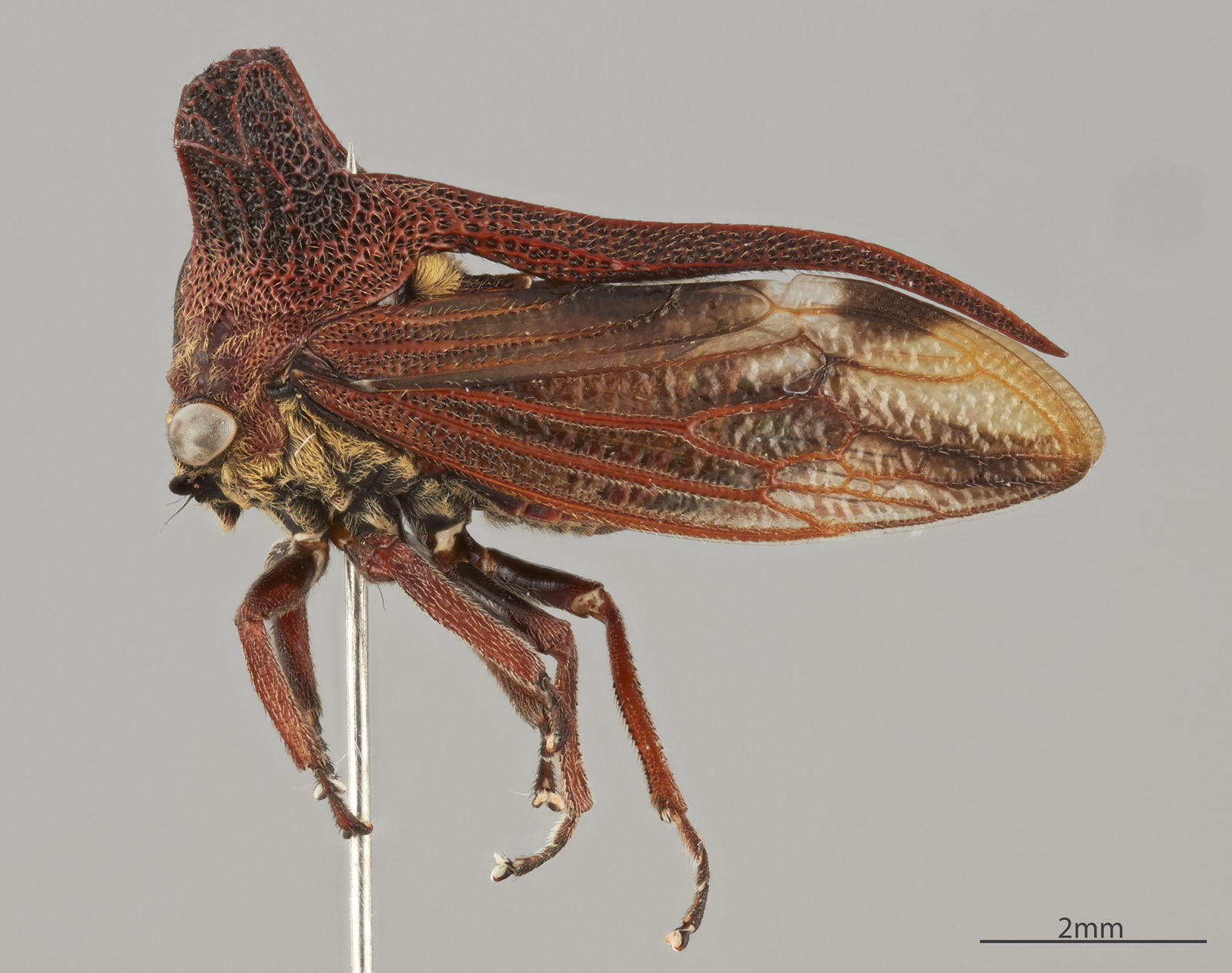
Figs. 1-3. Wallaciana namadgi Evangelista, new genus and species, holotype, female. 1, anterior aspect. 2. anterolateral aspect. 3. lateral aspect. (Images © 2021, by Olivia Evangelista).
Wallaciana, a new Australian genus, belongs to the treehopper tribe Terentiini. The genus includes the type species W. barringtonensis (Day), new combination (= Neocanthuchus barringtonensis Day), from New South Wales, and W. namadgi, new species (Figs. 1-3), from the Australian Capital Territory. Although the latter species is known only from the female, both species are thought to be sexually dimorphic and endemic to montane regions of southeastern Australia. Evangelista named Wallaciana in honor of membracid worker Matthew S. Wallace, for his significant contributions on many treehopper groups, including the tribe Terentiini.
1
 2
2  3
3 
Figs. 1-3. Wallaciana namadgi Evangelista, new genus and species, holotype, female. 1, anterior aspect. 2. anterolateral aspect. 3. lateral aspect. (Images © 2021, by Olivia Evangelista).
Male Calling Signals and Host Plant Data in the Gargara genistae Species Group
2022-03-25
Tishechkin, D. Y. 2022a. Review of the Gargara genistae (Fabricius, 1775) species group (Hemiptera: Membracidae) from Russia and adjacent territories. Zootaxa 5094(4): 573-586.
In Russia and adjacent regions of Kazakhstan and Central Asia, the Gargara genistae species group consists of three morphologically similar species: G. genistae, G. mongolica, and G. stepposa. Each species has a distinct pattern in its male calling signals, however, in practice, the three may be indistinguishable based on external morphology and features of the male genitalia. This paper illustrates variations in the male calling signals and provides data on host plant associations and distribution that may aid in the identification of these species.
In Russia and adjacent regions of Kazakhstan and Central Asia, the Gargara genistae species group consists of three morphologically similar species: G. genistae, G. mongolica, and G. stepposa. Each species has a distinct pattern in its male calling signals, however, in practice, the three may be indistinguishable based on external morphology and features of the male genitalia. This paper illustrates variations in the male calling signals and provides data on host plant associations and distribution that may aid in the identification of these species.
Cladonota (Cladonota) cryani Flynn, a New Treehopper Species from Bolivia
2022-04-22
Flynn, D. J. 2022a. A new species of Cladonota (Stål) (Hemiptera: Membracidae: Membracinae: Hypsoprorini) treehopper from Bolivia. Proceedings of the Entomological Society of Washington 123(4): 741-744.
The description of Cladonota (Cladonota) cryani, new species, from Bolivia, brings the number of species in the genus to 59. This species (Fig. 1) is named in honor of treehopper specialist Jason R. Cryan. The work also includes color photos of three other Cladonota species--C. (C.) lydieae, C. (Lecythifera) crucifixa, and C. (Falculifera) rex--described since the publication of Flynn’s (2018-2020) 4-part review of the genus and its subgenera.
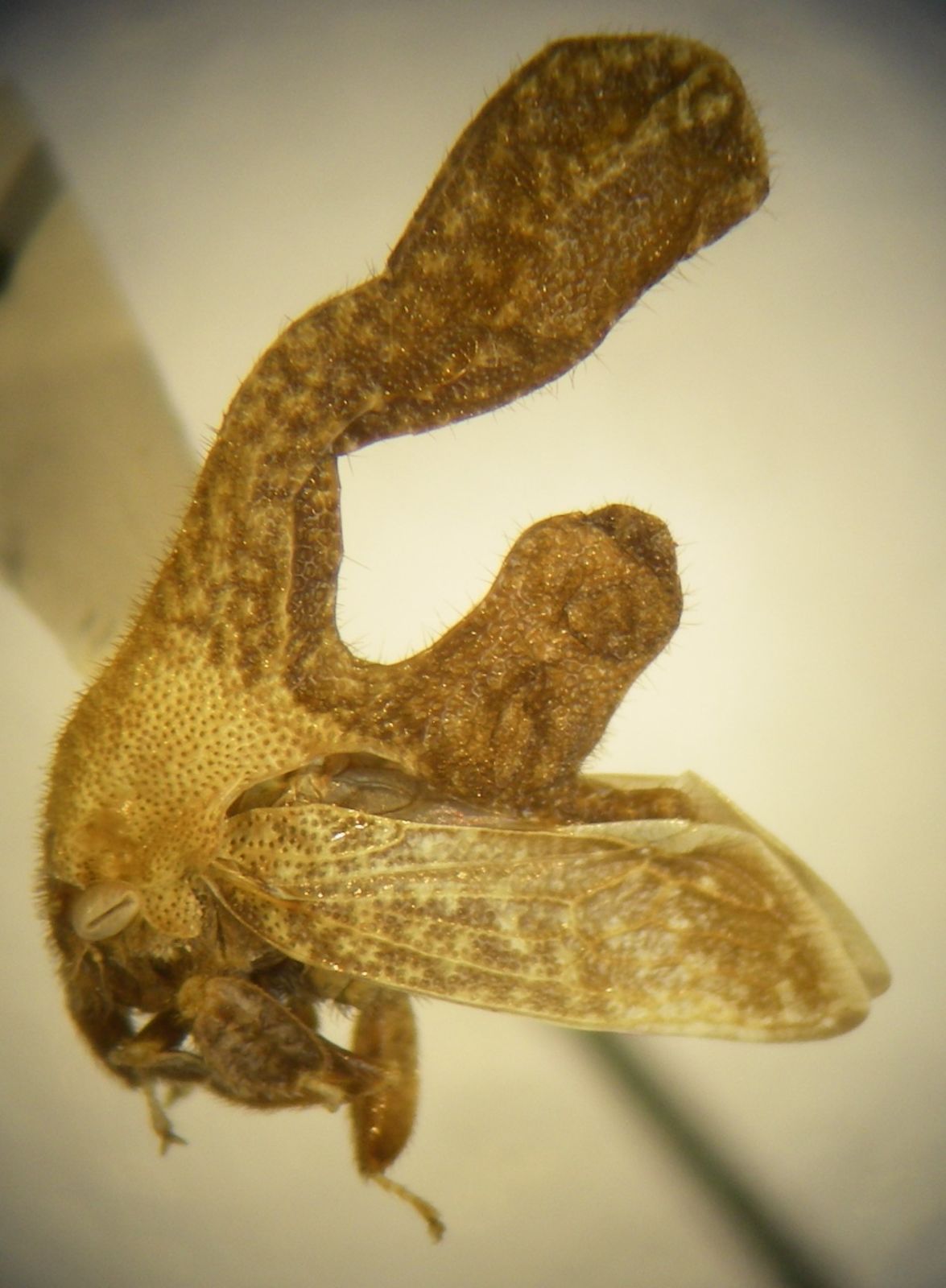
Figure 1. Cladonota (Cladonota) cryani Flynn 2022, male holotype. Image © 2007, by D. J. Flynn.
The description of Cladonota (Cladonota) cryani, new species, from Bolivia, brings the number of species in the genus to 59. This species (Fig. 1) is named in honor of treehopper specialist Jason R. Cryan. The work also includes color photos of three other Cladonota species--C. (C.) lydieae, C. (Lecythifera) crucifixa, and C. (Falculifera) rex--described since the publication of Flynn’s (2018-2020) 4-part review of the genus and its subgenera.

Figure 1. Cladonota (Cladonota) cryani Flynn 2022, male holotype. Image © 2007, by D. J. Flynn.
Celebrate the 30th Annual Treehopper Enthusiasts Aggregation
2022-05-02
The 2022 Treehopper Gathering is arranged for 3-5 June 2022 at the Ridge Rider Campground (formerly Little Orleans Campground), Little Orleans, Maryland. Join us to celebrate our 30th gathering of treehopper enthusiasts (the Membrasketeers) on the beautiful 222-acre Ridge Rider campground, located in the Upper Potomac River valley of western Maryland.
To reserve a campsite with our group or to obtain further information, contact Charles Bartlett. Because of the ongoing pandemic, we strongly recommend that all attendees be fully vaccinated and boosted.
Participants are expected to provide their own tents, food, and camping gear, and to share in the cost of the group campground registration and Saturday’s group meal. Bring your collecting vials, insect nets, unidentified specimens, cameras, bathing suits, a folding chair, and your favorite t-shirts.
To reserve a campsite with our group or to obtain further information, contact Charles Bartlett. Because of the ongoing pandemic, we strongly recommend that all attendees be fully vaccinated and boosted.
Participants are expected to provide their own tents, food, and camping gear, and to share in the cost of the group campground registration and Saturday’s group meal. Bring your collecting vials, insect nets, unidentified specimens, cameras, bathing suits, a folding chair, and your favorite t-shirts.
Immatures of the Treehopper Tribe Quadrinareini
2022-05-13
McKamey, S. H.; Wallner, A. M. 2022a. The immatures of the tribe Quadrinareini Deitz (Hemiptera: Membracidae: Smiliinae). Proceedings of the Entomological Society of Washington 123(4): 802-807.
The fifth instar nymphs of Quadrinarea, the only genus in the tribe Quadrinareini, are described and illustrated for the first time. They differ from other fifth instar treehopper nymphs in entirely lacking scoli or other dorsal or lateral protuberances; also their first metathoracic tarsomere is longer than the second metathoracic tarsomere. Although Quadrinarea was previously thought to be endemic to Jamaica (two species), McKamey and Wallner extend the distribution of the type species, Q. u-flava, to include Dominica and questionably Guyana.
The fifth instar nymphs of Quadrinarea, the only genus in the tribe Quadrinareini, are described and illustrated for the first time. They differ from other fifth instar treehopper nymphs in entirely lacking scoli or other dorsal or lateral protuberances; also their first metathoracic tarsomere is longer than the second metathoracic tarsomere. Although Quadrinarea was previously thought to be endemic to Jamaica (two species), McKamey and Wallner extend the distribution of the type species, Q. u-flava, to include Dominica and questionably Guyana.
Celebrating Treehoppers for 30 Years
2022-06-26
This year’s Annual Treehopper Gathering marked the group’s 30th Anniversary (Figs. 1-4). All except two of the group’s meetings were held in Little Orleans, Maryland, at the former Little Orleans Campground, recently renamed the Ridge Rider Campground. The first aggregation (brood 1993), was held near the University of Delaware, and the 28th aggregation (brood 2020), was held virtually by way of Zoom Video Conferencing because of the COVID-19 pandemic. The Treehoppers’ Archive of Past News documents the gatherings beginning in 2010, including the 20th Anniversary (see posting of 2012-06-11, which includes a photo of the first gathering in Delaware).
Fig. 1. 2022 Group Photo (left to right): Back (standing): Solomon Hendrix., Charles Bartlett, Anthony Deczynski, Stuart McKamey, Lewis Deitz, Dawn Flynn, Wil Winter, Kelley Tilmon, Matthew Wallace, Jason Owens, Lawrence Barringer, Mark Rothschild, Claire Ciafré; Front (kneeling): Nate Nazdrowicz, Ashley Kennedy, Anthony Gonzon; (Ashley’s friendly dogs lying down): Shaggydog and Delphine. Image © 2022, by Nate Nazdrowicz.
1
Fig. 2. Our limited edition, 30th Anniversary Treehopper Aggregation T-shirt, designed by Kelley Tilmon, incorporates an image of a female of Cladonota foliata on Sabicea sp. in French Guyana (© Frank Deschandol & Philippe Sabine; rights acquired from Biosphoto). Image © 2022, by Kelley Tilmon.
2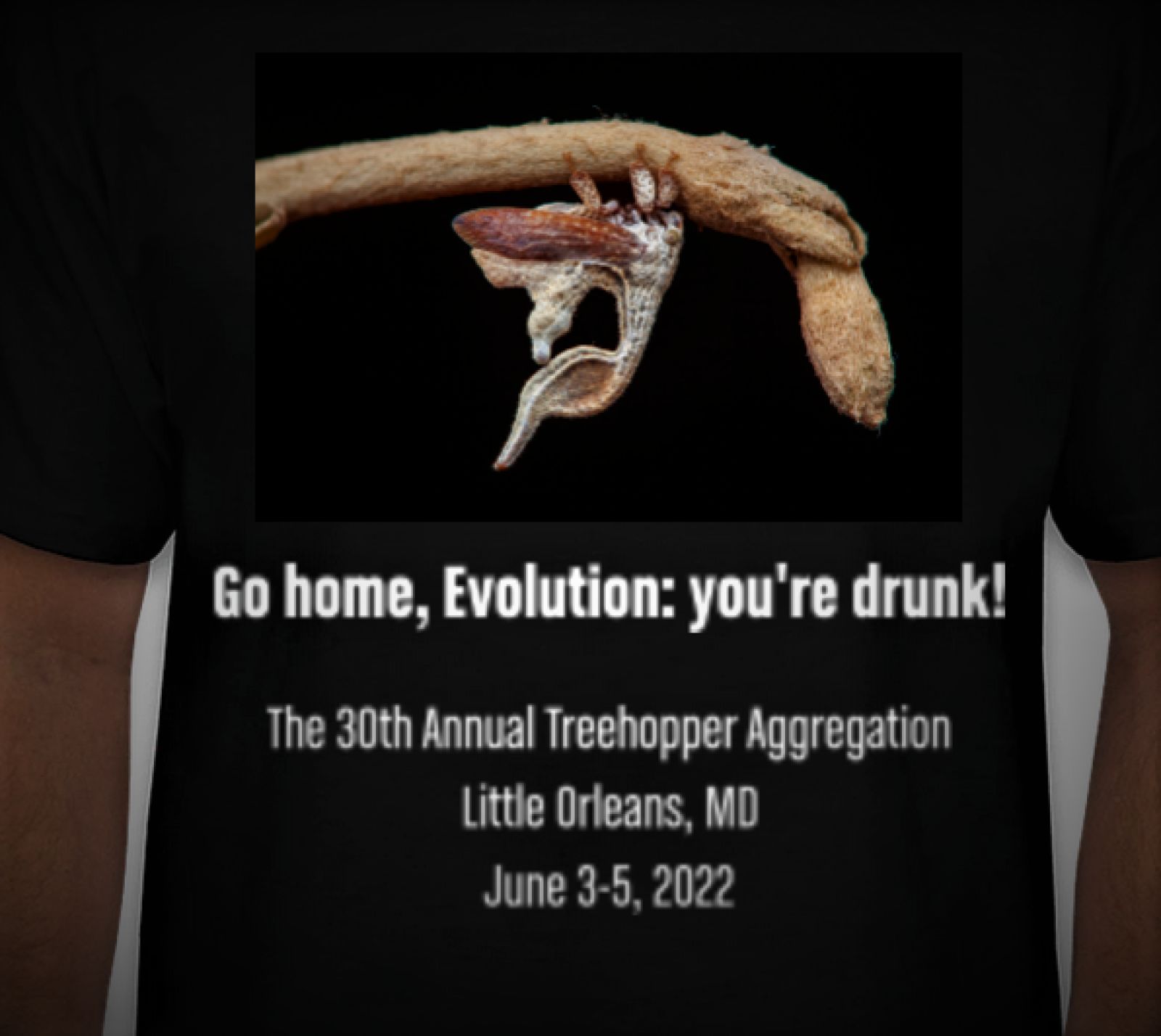
Figs. 3-4. Various attendees relaxing (3) and feasting (4) in the Ridge Rider Campground (formerly Little Orleans Campground). Images © 2022, by Dawn Flynn.
3 4
4 
Fig. 1. 2022 Group Photo (left to right): Back (standing): Solomon Hendrix., Charles Bartlett, Anthony Deczynski, Stuart McKamey, Lewis Deitz, Dawn Flynn, Wil Winter, Kelley Tilmon, Matthew Wallace, Jason Owens, Lawrence Barringer, Mark Rothschild, Claire Ciafré; Front (kneeling): Nate Nazdrowicz, Ashley Kennedy, Anthony Gonzon; (Ashley’s friendly dogs lying down): Shaggydog and Delphine. Image © 2022, by Nate Nazdrowicz.
1

Fig. 2. Our limited edition, 30th Anniversary Treehopper Aggregation T-shirt, designed by Kelley Tilmon, incorporates an image of a female of Cladonota foliata on Sabicea sp. in French Guyana (© Frank Deschandol & Philippe Sabine; rights acquired from Biosphoto). Image © 2022, by Kelley Tilmon.
2

Figs. 3-4. Various attendees relaxing (3) and feasting (4) in the Ridge Rider Campground (formerly Little Orleans Campground). Images © 2022, by Dawn Flynn.
3
 4
4 
An Open-Access Publication on Generic Names of Treehoppers and Other Auchenorrhyncha
2022-08-05
Dmitriev, D. A. 2022a. Etymology and Grammatical Gender of Generic Names in Auchenorrhyncha (Hemiptera). Illinois Natural History Survey Bulletin 43: 1-224. [ Available online]
Dmitry Dmitriev’s 224-page bulletin gives the etymology and gender of 8,921 genus-group names associated with the suborder Auchenorrhyncha. His “Introduction” includes: a guide to determining the gender and etymology of genera; much useful information for researchers proposing new generic names; and tables on (1) latinization rules for Greek letters, (2) common prefixes, and (3) common suffixes. This open-access resource will be invaluable not only to specialists on the Auchenorrhyncha, but also to researchers interested in zoological nomenclature in general.
Dmitry Dmitriev’s 224-page bulletin gives the etymology and gender of 8,921 genus-group names associated with the suborder Auchenorrhyncha. His “Introduction” includes: a guide to determining the gender and etymology of genera; much useful information for researchers proposing new generic names; and tables on (1) latinization rules for Greek letters, (2) common prefixes, and (3) common suffixes. This open-access resource will be invaluable not only to specialists on the Auchenorrhyncha, but also to researchers interested in zoological nomenclature in general.
New Publication on Centronodus prasinatus, n. sp., from French Guiana
2022-08-13
Lapèze, J. 2022a. Le genre Centronodus Funkhouser (Hemiptera : Membracidae : Centronodinae) en Guyane française et description d'une nouvelle espèce. [The genus Centronodus Funkhouser (Hemiptera : Membracidae : Centronodinae) in French Guiana and description of a new species.] Faunitaxys, AFCFF (Association française de Cartographie de la Faune et de la Flore) 10(37): 1-9. [Available online; in French with English abstract]
Centronodus prasinatus, n. sp., is described and illustrated from French Guiana. Although similar to C. denticulus and C. magnificus, the pronotum of C. prasinatus differs in having a pronounced, toothlike, anterodorsal process that is almost a high as the dorsal pronotal lobe; also the posterior pronotal process has a large greenish area basally. Other Centronodus reported from French Guiana are C. bilobatus, C. intermedius, and C. rochalimai. Lapèze (2022a) discusses variation in forewing venation (numbers of discoidal and apical cells) within species (and even single specimens) of Centronodus.
Centronodus prasinatus, n. sp., is described and illustrated from French Guiana. Although similar to C. denticulus and C. magnificus, the pronotum of C. prasinatus differs in having a pronounced, toothlike, anterodorsal process that is almost a high as the dorsal pronotal lobe; also the posterior pronotal process has a large greenish area basally. Other Centronodus reported from French Guiana are C. bilobatus, C. intermedius, and C. rochalimai. Lapèze (2022a) discusses variation in forewing venation (numbers of discoidal and apical cells) within species (and even single specimens) of Centronodus.
Morphogenesis in Membracidae: Distinguishing Mechanisms Related to Pronotal Size and Shape
2022-08-15
Kudla, A. M.; Miranda, X.; Nijhout, H. F. 2022a. The roles of growth regulation and appendage patterning genes in the morphogenesis of treehopper pronota. Proceedings of the Royal Society B (Biological Sciences) 289: 1-9. [Available online]
This publication by Kudla et al. (2022a) explores the hypothesis of Fisher, Wegrzyn, and Jockush (2020a) that the development of novel pronotal structures in the family Membracidae involved the co-opted expression of genes that are shared between the wings and pronotum. Noting that in membracids (but not in closely related groups), the pronota, as well as the wings, increase greatly in size during the later instars, Kudla et al. emphasize the need to differentiate genetic mechanisms regulating the pronotum’s size from those regulating its three-dimensional shape. In light of their findings, they conclude that a far greater knowledge of regulators upstream of the shared pronotal-wing genes is essential to establishing if co-option has indeed occurred during the “spectacular” evolution of the membracid pronotum.
This publication by Kudla et al. (2022a) explores the hypothesis of Fisher, Wegrzyn, and Jockush (2020a) that the development of novel pronotal structures in the family Membracidae involved the co-opted expression of genes that are shared between the wings and pronotum. Noting that in membracids (but not in closely related groups), the pronota, as well as the wings, increase greatly in size during the later instars, Kudla et al. emphasize the need to differentiate genetic mechanisms regulating the pronotum’s size from those regulating its three-dimensional shape. In light of their findings, they conclude that a far greater knowledge of regulators upstream of the shared pronotal-wing genes is essential to establishing if co-option has indeed occurred during the “spectacular” evolution of the membracid pronotum.
Notes on Philya ferruginosa, an Arizona Treehopper
2022-09-19
Wheeler, A. G.; Flynn, D. J.; Vitanza-Hedman, S.; Abela, A. J. 2022a. Philya ferruginosa (Goding) (Hemiptera: Membracidae): first host-plant record and description of the fifth instar of a seldom-collected treehopper. Proceedings of the Entomological Society of Washington 124(1): 164-173.
This publication presents new information on P. ferruginosa (Membracinae: Hypsoprorini), including: (1) its first host record (New Mexico locust: Robinia neomexicana, family Fabaceae), (2) its distribution within Arizona, (3) a description of its fifth instar nymphs, and (4) morphological features and photographs to distinguish its adults from those of P. californensis (known from California) and P. lowryi (known from south-central Mexico).
This publication presents new information on P. ferruginosa (Membracinae: Hypsoprorini), including: (1) its first host record (New Mexico locust: Robinia neomexicana, family Fabaceae), (2) its distribution within Arizona, (3) a description of its fifth instar nymphs, and (4) morphological features and photographs to distinguish its adults from those of P. californensis (known from California) and P. lowryi (known from south-central Mexico).
Nomenclature Changes in the tribe Membracini
2022-09-21
McKamey, S. H. 2022a. Notes on the New World treehopper genera Membracis Fabricius, Enchenopa Amyot and Serville, and closely related taxa (Hemiptera: Membracidae: Membracinae). Proceedings of the Entomological Society of Washington 124(1): 85-97.
Based on morphological features of adults and immatures, McKamey reviews and updates taxonomic research on the treehopper tribes Membracini (notably the genera Enchenopa, Enchophyllum, Folicarina, Leoscyta, Membracis, and Phyllotropis) and Talipedini. Nomenclatural acts in his publication include new combinations (3 species), reinstated combinations (2 species), a species reinstated as valid, and 3 species placed as “Membracini incertae sedis.” The 24 figures include the first published photographs of the nymphs of Folicarina and Phyllotropis as well as Germar’s holotype of Enchenopa monoceros.
Based on morphological features of adults and immatures, McKamey reviews and updates taxonomic research on the treehopper tribes Membracini (notably the genera Enchenopa, Enchophyllum, Folicarina, Leoscyta, Membracis, and Phyllotropis) and Talipedini. Nomenclatural acts in his publication include new combinations (3 species), reinstated combinations (2 species), a species reinstated as valid, and 3 species placed as “Membracini incertae sedis.” The 24 figures include the first published photographs of the nymphs of Folicarina and Phyllotropis as well as Germar’s holotype of Enchenopa monoceros.
New Treehoppers from the High Altitudes of the Andes
2022-10-25
Flórez-V, C.; Evangelista, O. 2021a. A revision of the treehopper genus Bubalopa Stål illuminates the systematics of Hyphinoini (Hemiptera: Auchenorrhyncha: Membracidae). Zootaxa 5052(4): 529-551.
[Endemic to the Northern Andes of Colombia and Venezuela, the genus Bubalopa and its three species (including B. iguaque, n. sp.) are illustrated and described in detail with identification keys and distribution maps. This publication includes a revised diagnosis of the tribe Hyphinoini, with a key to its five genera, and the first description of the nymphs of Hyphinoe obliqua and B. furcata. Hyphinoe punctorum) (recently included in Bubalopa) is placed as a junior synonym of Eualthe punctum.]
Flórez-V, C. 2022a. A new genus and a new species of treehopper (Hemiptera: Membracidae) from the páramo of Tatamá in Colombia. Zootaxa 5195(2): 143–154.
[The new genus Oropedium and its type species O. tatamaense, n. sp., from Colombia, are described and illustrated (see Figs. 1-3, below). The publication provides an illustrated key to the five tribes of the subfamily Membracinae as well as this new genus, which is of uncertain placement (incertae sedis) within Membracinae.]
Figs. 1-3. Oropedium tatamaense Flórez-V. 2022, recently described from Colombia: 1, male anterior; 2, live male in situ; 3, male, anterolateral aspect. Images © 2022, by Camilo Flórez-Valencia.



[Endemic to the Northern Andes of Colombia and Venezuela, the genus Bubalopa and its three species (including B. iguaque, n. sp.) are illustrated and described in detail with identification keys and distribution maps. This publication includes a revised diagnosis of the tribe Hyphinoini, with a key to its five genera, and the first description of the nymphs of Hyphinoe obliqua and B. furcata. Hyphinoe punctorum) (recently included in Bubalopa) is placed as a junior synonym of Eualthe punctum.]
Flórez-V, C. 2022a. A new genus and a new species of treehopper (Hemiptera: Membracidae) from the páramo of Tatamá in Colombia. Zootaxa 5195(2): 143–154.
[The new genus Oropedium and its type species O. tatamaense, n. sp., from Colombia, are described and illustrated (see Figs. 1-3, below). The publication provides an illustrated key to the five tribes of the subfamily Membracinae as well as this new genus, which is of uncertain placement (incertae sedis) within Membracinae.]
Figs. 1-3. Oropedium tatamaense Flórez-V. 2022, recently described from Colombia: 1, male anterior; 2, live male in situ; 3, male, anterolateral aspect. Images © 2022, by Camilo Flórez-Valencia.



More Neotropical Treehoppers from High Altitudes including Andinodarnis, a New Genus.
2022-11-07
Flórez-V, C.; Evangelista, O. 2022a. Andinodarnis gen. nov., a new treehopper genus from the Andes (Hemiptera: Membracidae: Darninae). Zootaxa 5200(1): 37–50. [In English with Spanish abstract]
The new genus Andinodarnis (tribe Darnini) of the Central and Northern Andes includes two species: A. pectoralis (Stål, 1869), n. comb. (= Tomogonia pectoralis Stål, 1869, Fig. 1, the type-species) and A. atromeris, n. sp. (Figs. 2-5). Further data are needed to determine their true host plants: the type-species, from Colombia, Ecuador, and Peru, was found on Piperaceae (Piper) and Solanaceae, while the new species, from Colombia, was found on Asteraceae (Erato vulcanica) and Acanthaceae. The publication includes keys, diagnoses, descriptions, and illustrations for identification, with notes on life history and distribution maps.
Figs. 1-5.AndinodarnisFlórez-V and Evangelista: 1, A. pectoralis, live, in situ, lateral. 2-5, A. atromeris: 2 , live, in situ, lateral; 3-5 preserved: 3, anterolateral, 4, lateral; 5, dorsal; 6, anterior. Images © Copyright 2022, by Camilo Flórez-Valencia.
1 2
2 3
3 4
4 5
5 6
6
Lapèze, J. 2022b. Un nouveau membracide infeode aux forêts de nuages: Cymbomorpha nebulosilvensis n. sp. (Hemiptera; Auchenorrhyncha; Membracidae). [A new treehoppers (sic) affiliated to cloud forest: Cymbomorpha nebulosilvensis n. sp. (Hemiptera; Auchenorrhyncha; Membracidae).] Faunitaxys, AFCFF (Association française de Cartographie de la Faune et de la Flore) 10 (51):1-6. [Available online; in French with English abstract]
[The new treehopper (tribe Cymbomorphini) described in this work is known only from high cloud forests (between 600 and 800 meters above sea level) in French Guiana. Adult males and females were found on Inga sp.]
The new genus Andinodarnis (tribe Darnini) of the Central and Northern Andes includes two species: A. pectoralis (Stål, 1869), n. comb. (= Tomogonia pectoralis Stål, 1869, Fig. 1, the type-species) and A. atromeris, n. sp. (Figs. 2-5). Further data are needed to determine their true host plants: the type-species, from Colombia, Ecuador, and Peru, was found on Piperaceae (Piper) and Solanaceae, while the new species, from Colombia, was found on Asteraceae (Erato vulcanica) and Acanthaceae. The publication includes keys, diagnoses, descriptions, and illustrations for identification, with notes on life history and distribution maps.
Figs. 1-5.AndinodarnisFlórez-V and Evangelista: 1, A. pectoralis, live, in situ, lateral. 2-5, A. atromeris: 2 , live, in situ, lateral; 3-5 preserved: 3, anterolateral, 4, lateral; 5, dorsal; 6, anterior. Images © Copyright 2022, by Camilo Flórez-Valencia.
1
 2
2 3
3 4
4 5
5 6
6
Lapèze, J. 2022b. Un nouveau membracide infeode aux forêts de nuages: Cymbomorpha nebulosilvensis n. sp. (Hemiptera; Auchenorrhyncha; Membracidae). [A new treehoppers (sic) affiliated to cloud forest: Cymbomorpha nebulosilvensis n. sp. (Hemiptera; Auchenorrhyncha; Membracidae).] Faunitaxys, AFCFF (Association française de Cartographie de la Faune et de la Flore) 10 (51):1-6. [Available online; in French with English abstract]
[The new treehopper (tribe Cymbomorphini) described in this work is known only from high cloud forests (between 600 and 800 meters above sea level) in French Guiana. Adult males and females were found on Inga sp.]
Identifying Immature Acutalini and Micrutalini
2023-01-12
McKamey, S. H.; Wallner, A. M. 2022b. The immatures of the New World treehopper tribes Acutalini Fowler and Micrutalini Haupt (Hemiptera, Membracidae, Smiliinae). ZooKeys 1136: 187–208.
[This open access publication describes and illustrates nymphs of the genera Micrutalis (tribe Micrutalini), Acutalis, Bordoniana, and Thrasymedes (tribe Acutalini), along with a key to the 5th instars of these genera. In life, the nymphs of all four genera are solitary, not attended by ants, and remarkably cryptic on their host plants. The eggs are deposited within stems. In comparison to the fifth instars of most membracids, those of Micrutalis are especially small (3.0–3.5 mm in length). The nymphs of Trachytalis (Micrutalini), Cornutalis, and Euritea (Acutalini) remain unknown.]
[This open access publication describes and illustrates nymphs of the genera Micrutalis (tribe Micrutalini), Acutalis, Bordoniana, and Thrasymedes (tribe Acutalini), along with a key to the 5th instars of these genera. In life, the nymphs of all four genera are solitary, not attended by ants, and remarkably cryptic on their host plants. The eggs are deposited within stems. In comparison to the fifth instars of most membracids, those of Micrutalis are especially small (3.0–3.5 mm in length). The nymphs of Trachytalis (Micrutalini), Cornutalis, and Euritea (Acutalini) remain unknown.]
New State Records for Thelia bimaculata and Vanduzea arquata
2023-01-15
Wheeler, A. G., Jr. 2021a. An introduced tree, black locust, and its non-native treehoppers augment Nebraska's biodiversity. Great Plains Research 31: 17–33. [This publication includes color photos of Thelia bimaculata and Vanduzea arquata and a map of their distributions in Nebraska and South Dakota.]
Wheeler (2021a) published the first distribution records of two treehoppers--Thelia bimaculata and Vanduzea arquata--in the states of Nebraska and South Dakota. The principal host for these hoppers is black locust, Robinia pseudoacacia, a tree originally native to the Eastern United States. Owing to its ornamental, ecological, and economic value, black locust has been introduced more widely. Thus, as chronicled by Wheeler (2021a), the two associated treehoppers likely became established in more western areas through the planting of egg-infested saplings. Deitz and Wallace (2012a) summarized prior distribution records of Nearctic treehoppers, including T. bimaculata and V. arquata.
Wheeler (2021a) published the first distribution records of two treehoppers--Thelia bimaculata and Vanduzea arquata--in the states of Nebraska and South Dakota. The principal host for these hoppers is black locust, Robinia pseudoacacia, a tree originally native to the Eastern United States. Owing to its ornamental, ecological, and economic value, black locust has been introduced more widely. Thus, as chronicled by Wheeler (2021a), the two associated treehoppers likely became established in more western areas through the planting of egg-infested saplings. Deitz and Wallace (2012a) summarized prior distribution records of Nearctic treehoppers, including T. bimaculata and V. arquata.
Early Treehopper Publications Online: Panzer 1802a, Petagna 1820a, and Thunberg 1822a
2023-01-16
On 16 October 2015, the Treehopper News (see archive of past news) presented a “Guide to Treehopper Workers of the 1700s and Their Publications,” which gave direct links to most contributions by these early entomologists. Recently we discovered links to three more of these works available from the Biodiversity Heritage Library, as follows:
Panzer 1802a;
Petagna 1820a;
and Thunberg 1822a.
We still hope to find online copies of: Goeze, A. E. 1780a; Höslin, P. 1782a; Müller, P. L. S. 1774a; Petagna, V. 1808a [for detailed citations search the Metcalf Literature Collection Database].
We still hope to find online copies of: Goeze, A. E. 1780a; Höslin, P. 1782a; Müller, P. L. S. 1774a; Petagna, V. 1808a [for detailed citations search the Metcalf Literature Collection Database].
Literature on Treehoppers in the Digital Archive of the Zoological Survey of India
2023-02-05
The Zoological Survey of India’s Digital Archive includes a goldmine of literatures on the Membracidae of India.
Using the Advanced Search option, one can retrieve and download publications on the keyword "Membracidae" from 14 different serials issued by the Zoological Survey of India.
Search results provide links to the digitized publications as well as a listing of the pages that are relevant to the keyword searched. The archive includes the extensive monograph by Ananthasubramanian, K. S. 1996a. Fauna of India (Homoptera: Membracidae). In Gosh, A. K. (ed.). Zoological Survey of India, Calcutta, India. xviii + 534 pp.
Using the Advanced Search option, one can retrieve and download publications on the keyword "Membracidae" from 14 different serials issued by the Zoological Survey of India.
Search results provide links to the digitized publications as well as a listing of the pages that are relevant to the keyword searched. The archive includes the extensive monograph by Ananthasubramanian, K. S. 1996a. Fauna of India (Homoptera: Membracidae). In Gosh, A. K. (ed.). Zoological Survey of India, Calcutta, India. xviii + 534 pp.
Three "Must-See" 3D Membracidae
2023-02-09
We thank Milan Kozánek (CEO, VirNat, Bratislava, Slovakia) for sharing links to three amazing 3D models of treehoppers collected in the Philippines. A collaborator of the Treehoppers Partnership since 2016, Milan previously shared images of Thuris and Ecuadorian stamps based on his photos (see “archives of past news”: 2016-02-16, 2016-02-18, 2016-03-03). Matthew S. Wallace and Stuart H. McKamey identified the three treehoppers below. As soon as a 3D model has loaded, you can zoom and manipulate the model using your mouse. Enjoy.
1, Bulbauchenia sp., 3D model Copyright © 2023, by Milan Kozánek.
2, Gigantorhabdus enderleini, 3D model Copyright © 2023, by Milan Kozánek.
3, Leptocentrus sp., 3D model Copyright © 2023, by Milan Kozánek.
1, Bulbauchenia sp., 3D model Copyright © 2023, by Milan Kozánek.
2, Gigantorhabdus enderleini, 3D model Copyright © 2023, by Milan Kozánek.
3, Leptocentrus sp., 3D model Copyright © 2023, by Milan Kozánek.
What the Heck is This?
2023-04-01

A. The highly magnified image of the apical blade of the right maxillary bristle from the beak of an adult Darthula hardwickii; (Hemiptera: Aetalionidae: Aetalioninae: Darthulini) collected in India, around 1908, by Real E. Distant [no relation to Les Distant].
B. A fossilized, tar-covered ovipositor (second valvulae) of an undescribed treehopper (Hemiptera: Membracidae) from the La Brea Tar Pits, Los Angeles, California, collected by Willy Wunkhouser in 1919.
C. A “dragon glass” model of a treehopper ovipositor made of dark, highly polished obsidian quarried on the island of Dragonstone, ancestral home of House Targaryen. May have been used for eating pigeon pie. Compare to the second valvulae of Microcentrus caryae (Hemiptera: Membracidae), below, noting the abruptly broadened blade, its serrate dorsal margin, and the placement of the strengthening ridge below the blade.

D. A modern-day, black plastic knife; country and date of origin uncertain; found in the eastern USA, but possibly imported. May have been used for eating pigeon pie at an Annual Treehopper Gathering.
E. None of the above. If you answered “E,” you are wrong. No more hints.
In conclusion, we ask if it’s just coincidence that today’s date is 1 April 2023?
17th International Auchenorrhyncha Congress, April 2024, in the Philippines
2023-04-09
We thank spittlebug researcher Vinton Thompson for sharing the following announcement of the 17th International Auchenorrhyncha Congress, to be held in the Philippines, 1-5 April 2024. To visit the Congress website, click here. Having attended the last Congress (2019, in Vietnam), Vinton notes: “I have found these congresses to be very useful for networking with colleagues and encourage everyone with the time and wherewithal to come if you are able.”
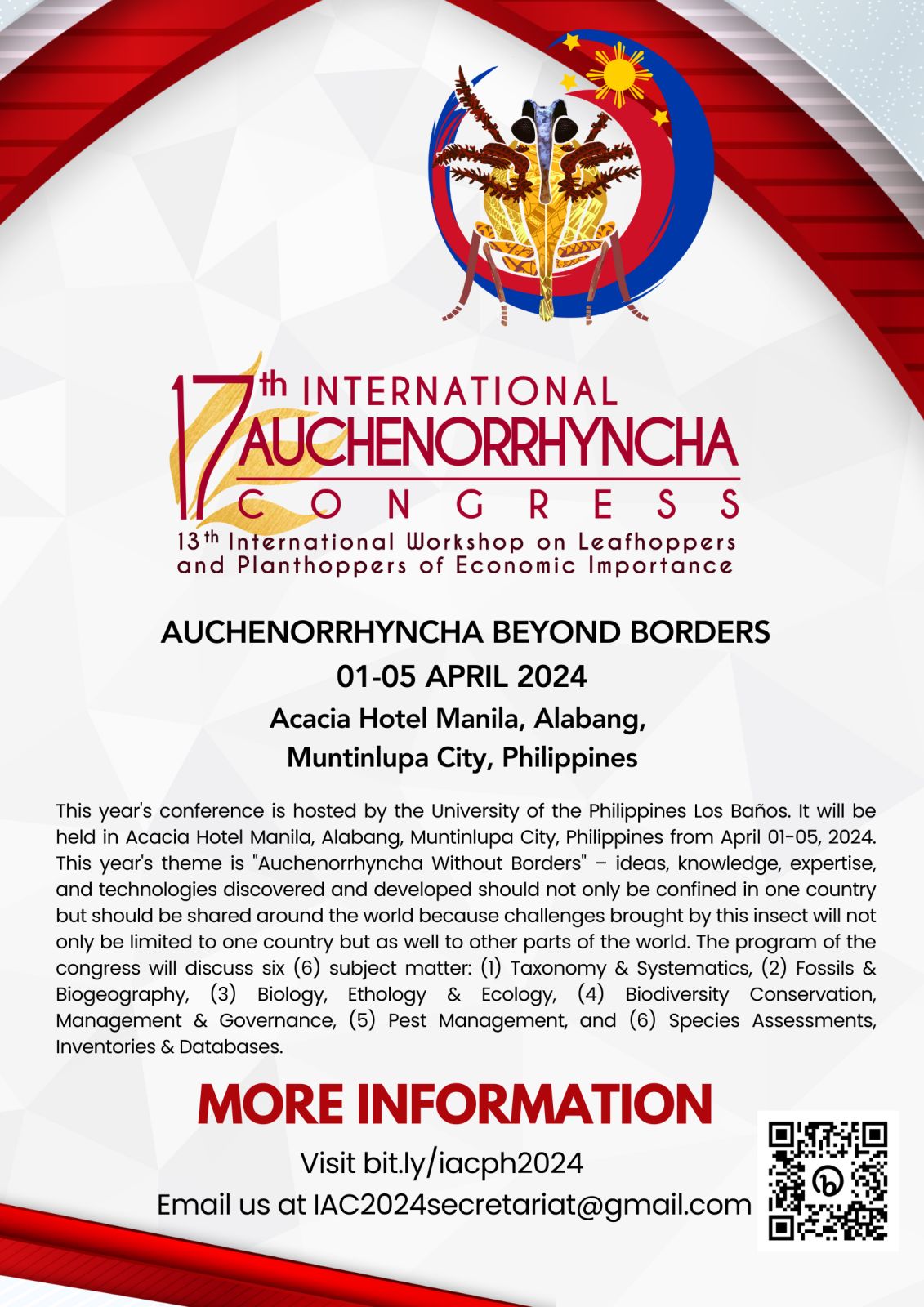
Image above, Copyright © 2023, by the Organizing Committee of the 17th International Auchenorrhyncha Congress.

Image above, Copyright © 2023, by the Organizing Committee of the 17th International Auchenorrhyncha Congress.
Join the 31st Annual Aggregation of Treehopper Enthusiasts
2023-04-19
The 2023 Treehopper Gathering is arranged for 2-4 June 2023 at the Ridge Rider Campground (formerly Little Orleans Campground), Little Orleans, Maryland. Celebrate the diversity of treehoppers with other nature enthusiasts at this beautiful 222-acre campground in the Upper Potomac River valley of Western Maryland. This is a great opportunity to collect treehoppers and get to know others who study these endlessly fascinating creatures.
Contact Charles Bartlett to obtain further information or to reserve a campsite with our group (and be added to the Gathering’s email list).
Participants are expected to provide their own tents, food, and camping gear, and to share in the cost of the group-camping event. Bring your collecting vials, insect nets, unidentified specimens, cameras, bathing suits, a folding chair, and your favorite t-shirts.
Contact Charles Bartlett to obtain further information or to reserve a campsite with our group (and be added to the Gathering’s email list).
Participants are expected to provide their own tents, food, and camping gear, and to share in the cost of the group-camping event. Bring your collecting vials, insect nets, unidentified specimens, cameras, bathing suits, a folding chair, and your favorite t-shirts.
New Genera of Acutalini: Ceresinoidea, Quinquespinosa, and Tectiforma
2023-05-04
McKamey, S. H. 2023a. Three new monobasic genera and three new species of the New World treehopper tribe Acutalini (Hemiptera, Membracidae, Smiliinae) with a key to all genera. ZooKeys 1143: 189–203. [Open access]. https://doi.org/10.3897/zookeys.1143.94124
In this paper, three new acutaline genera, each with one new species, are described and illustrated (see list and figures, below). McKamey’s updated key to all 8 genera of Acutalini is based on features of the forewing venation and the pronotum. Stuart McKamey kindly provided the photos, below. These USDA images, prepared by Alyssa Seemann, are not under copyright protection. From left to right, each series of photos below represents the anterior, lateral, and dorsal aspects of the species illustrated. Additional photos of these taxa are available on our taxon pages and in McKamey's open access publication.
In Ceresinoidea zacki (n. gen. and sp. from Guatemala: Figs. 1-3), the pronotum is elevated and strongly convex in lateral view; it is unique among acutalines in bearing a pair of acute suprahumeral spines. The forewing has 2 adjacent discoidal cells (R2+3 and M) and 2 m-cu crossveins.
1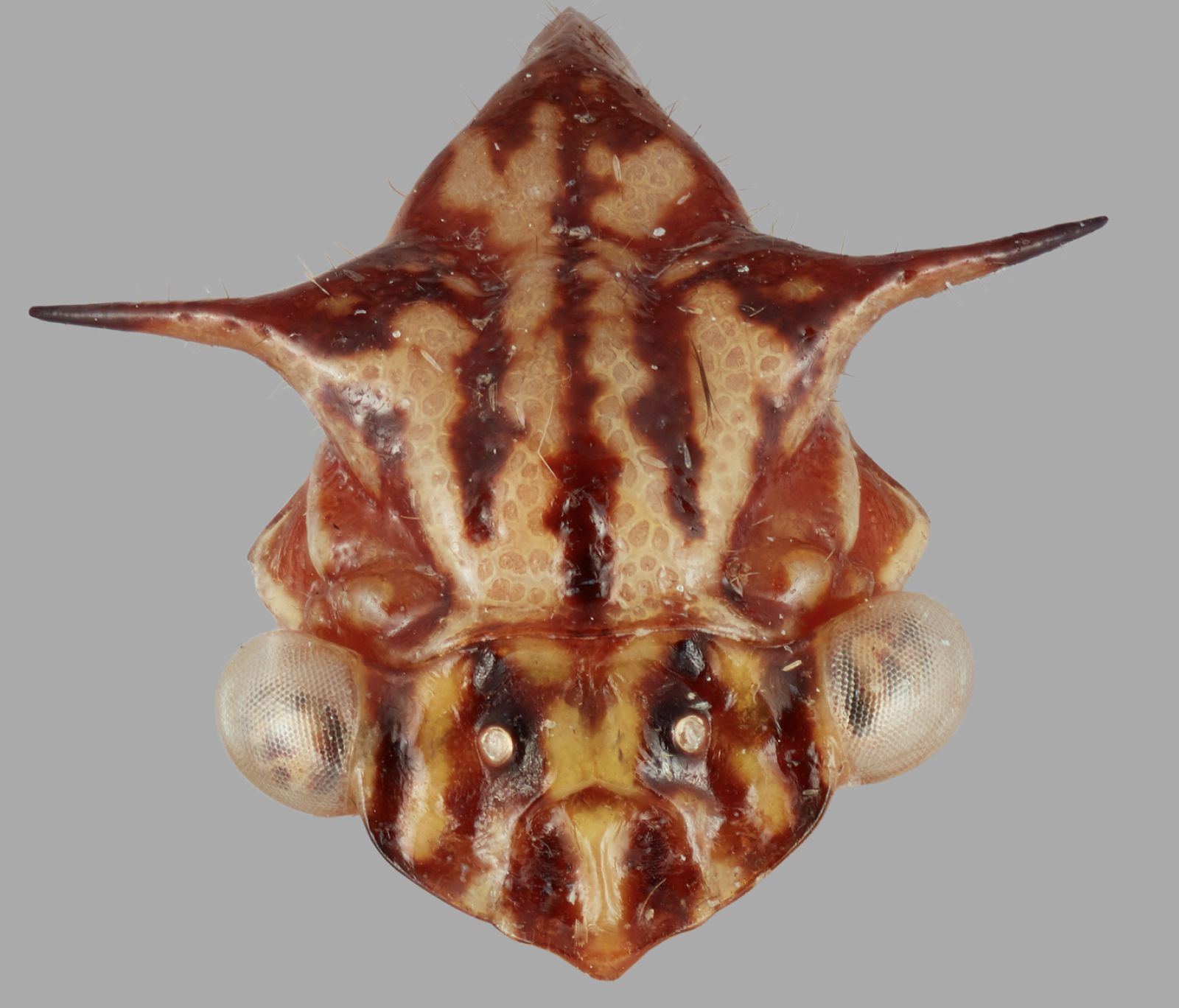 2
2 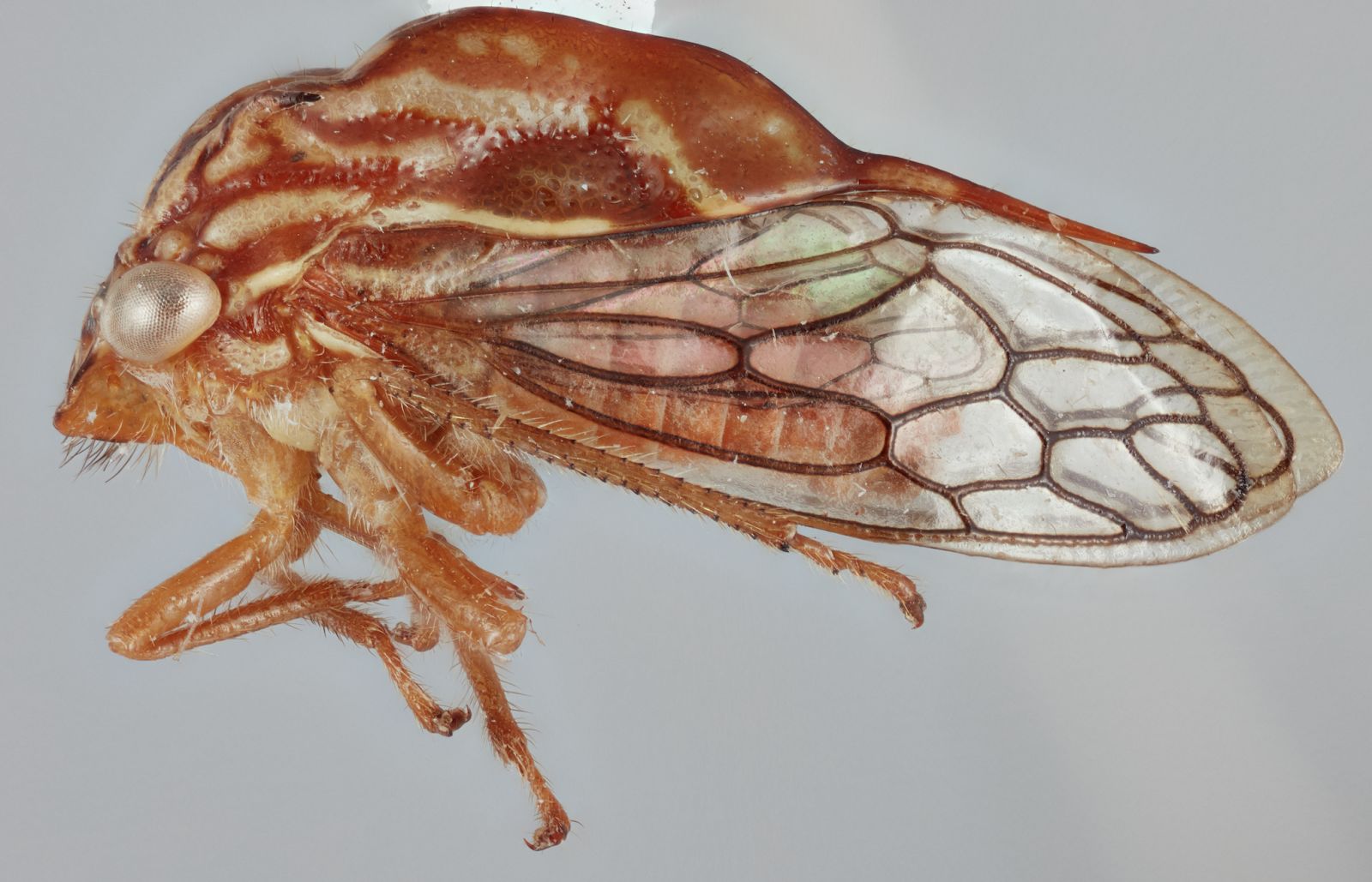 3
3 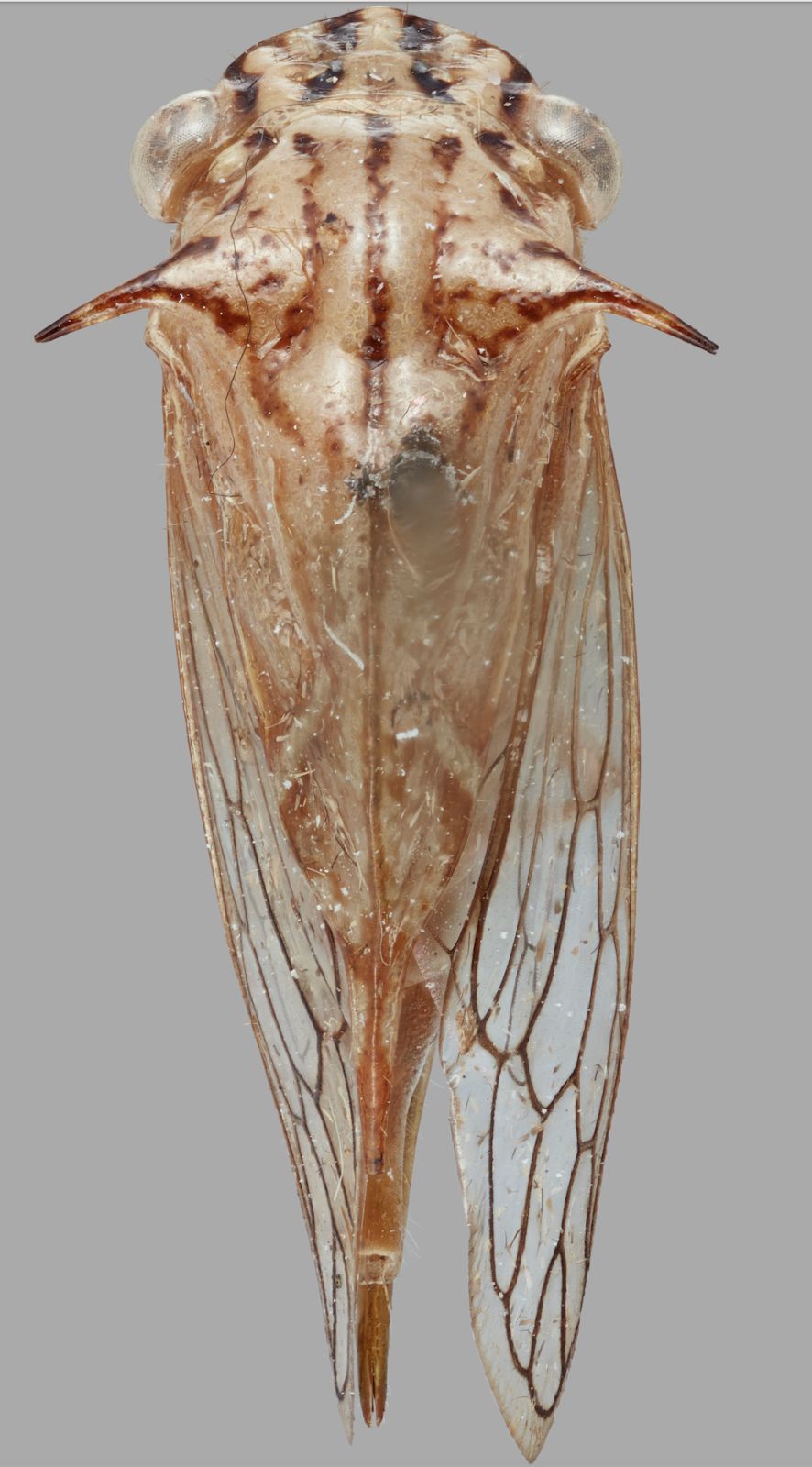
In Quinquespinosa septamacula (n. gen. and sp. widely distributed in South America: Figs. 4-6), the pronotum has 3 spines posteriorly and the forewing has 1 basal cell (M) and 1 discoidal cell (R2+3).
4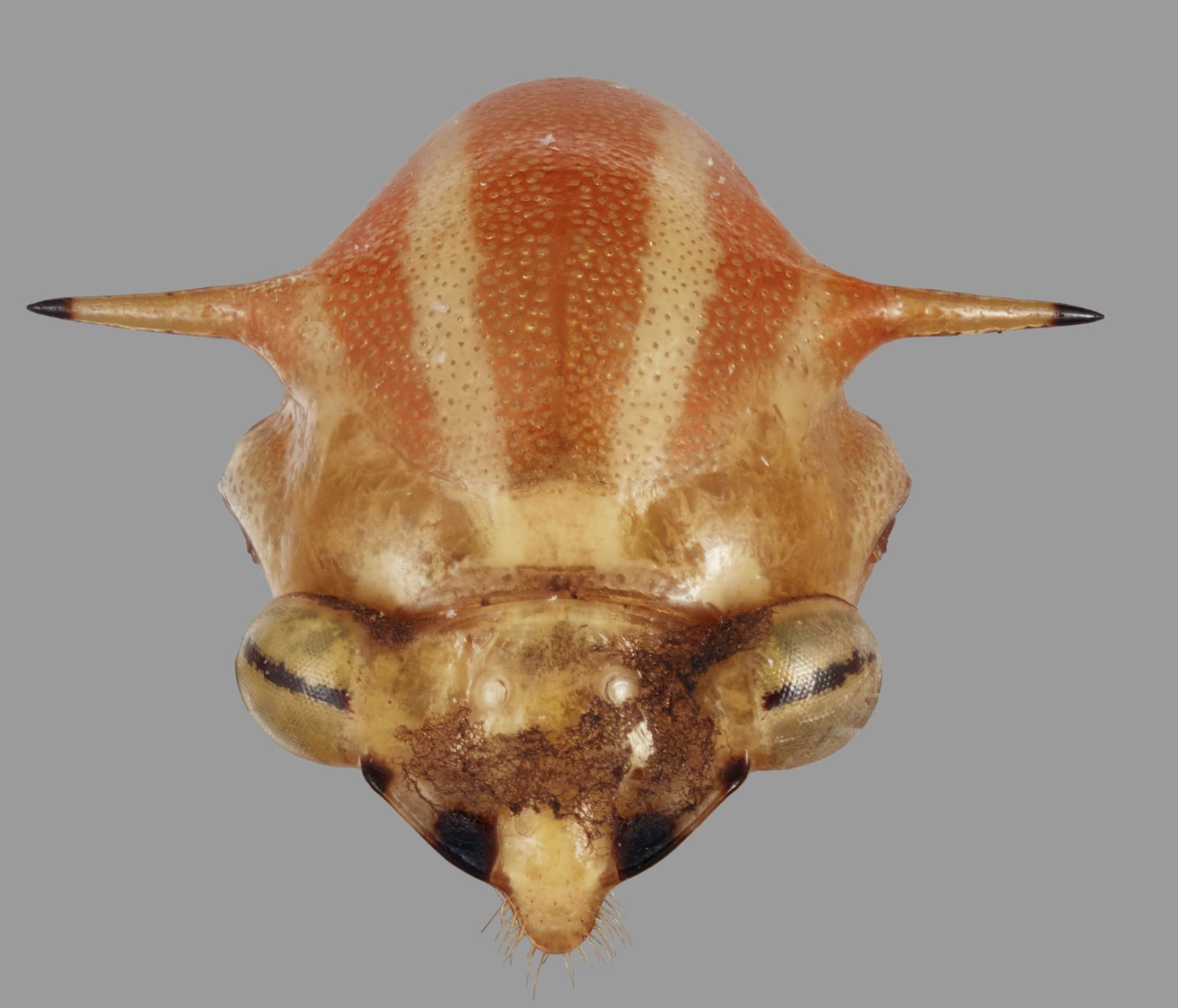 5
5 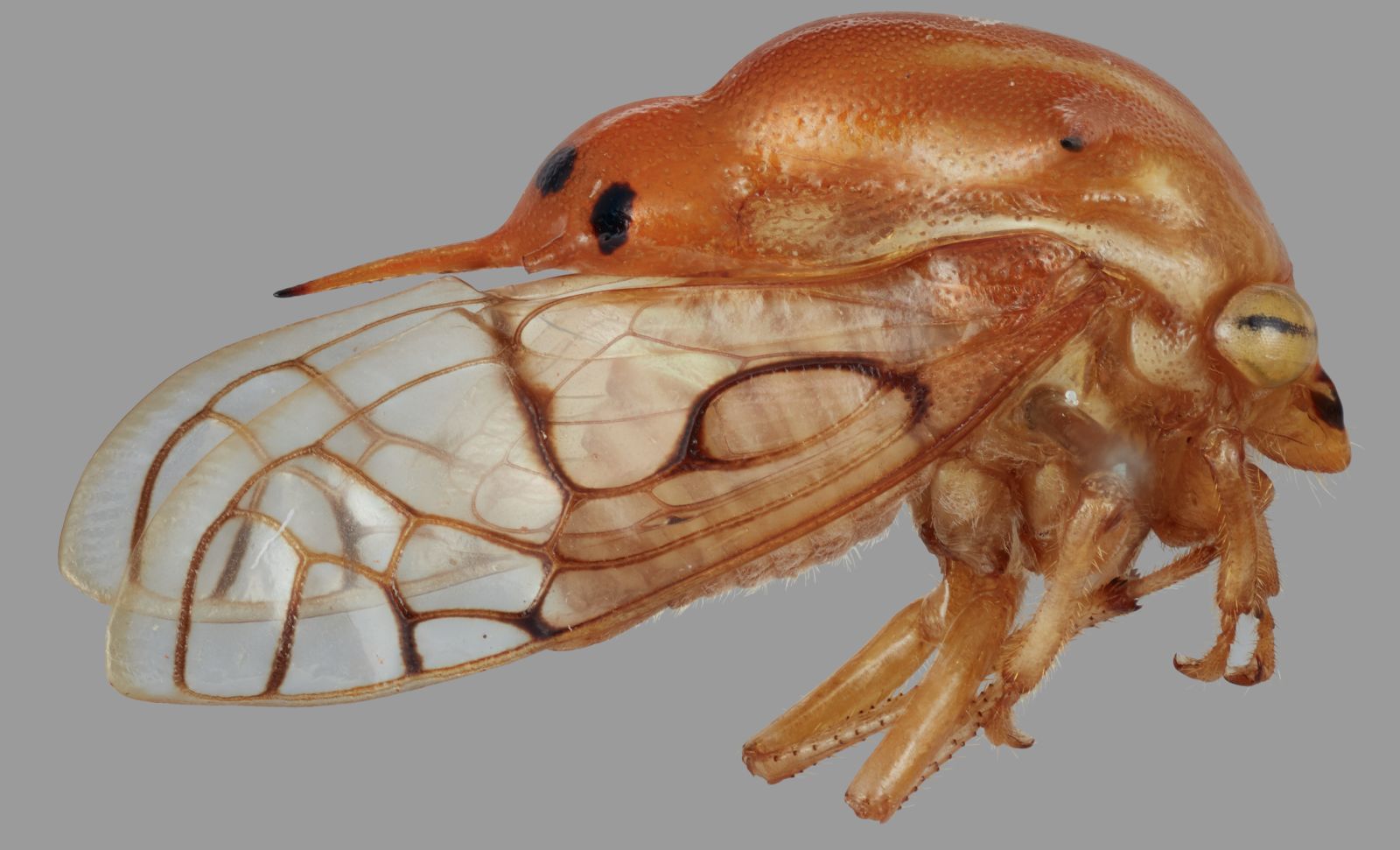 6
6 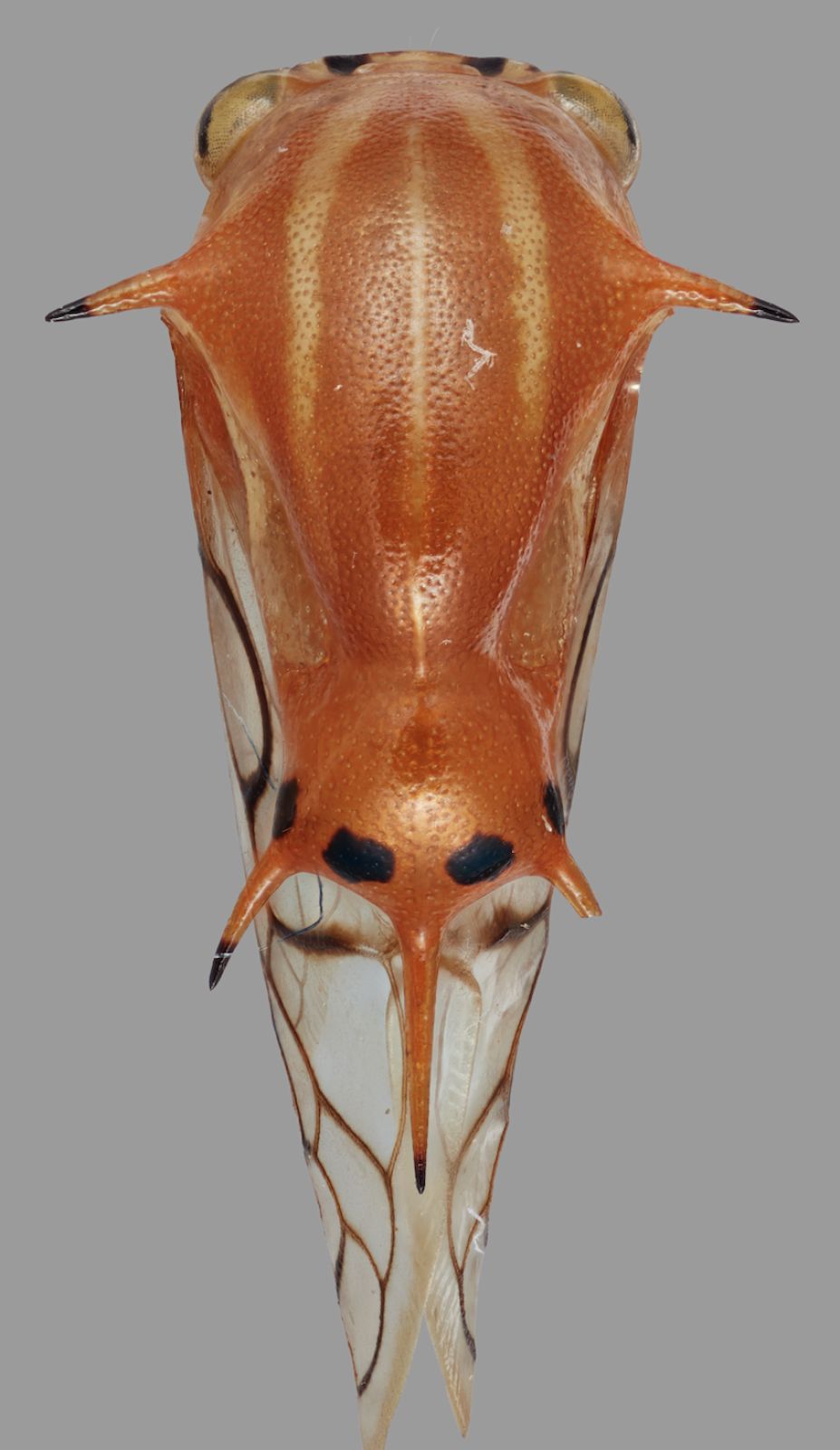
In Tectiforma guayasensis, (n. gen and sp. from Ecuador: Figs. 7-9) the pronotum is strongly tectiform throughout and the forewing has 2 adjacent discoidal cells (R2+3 and M) and 2 m-cu crossveins.
7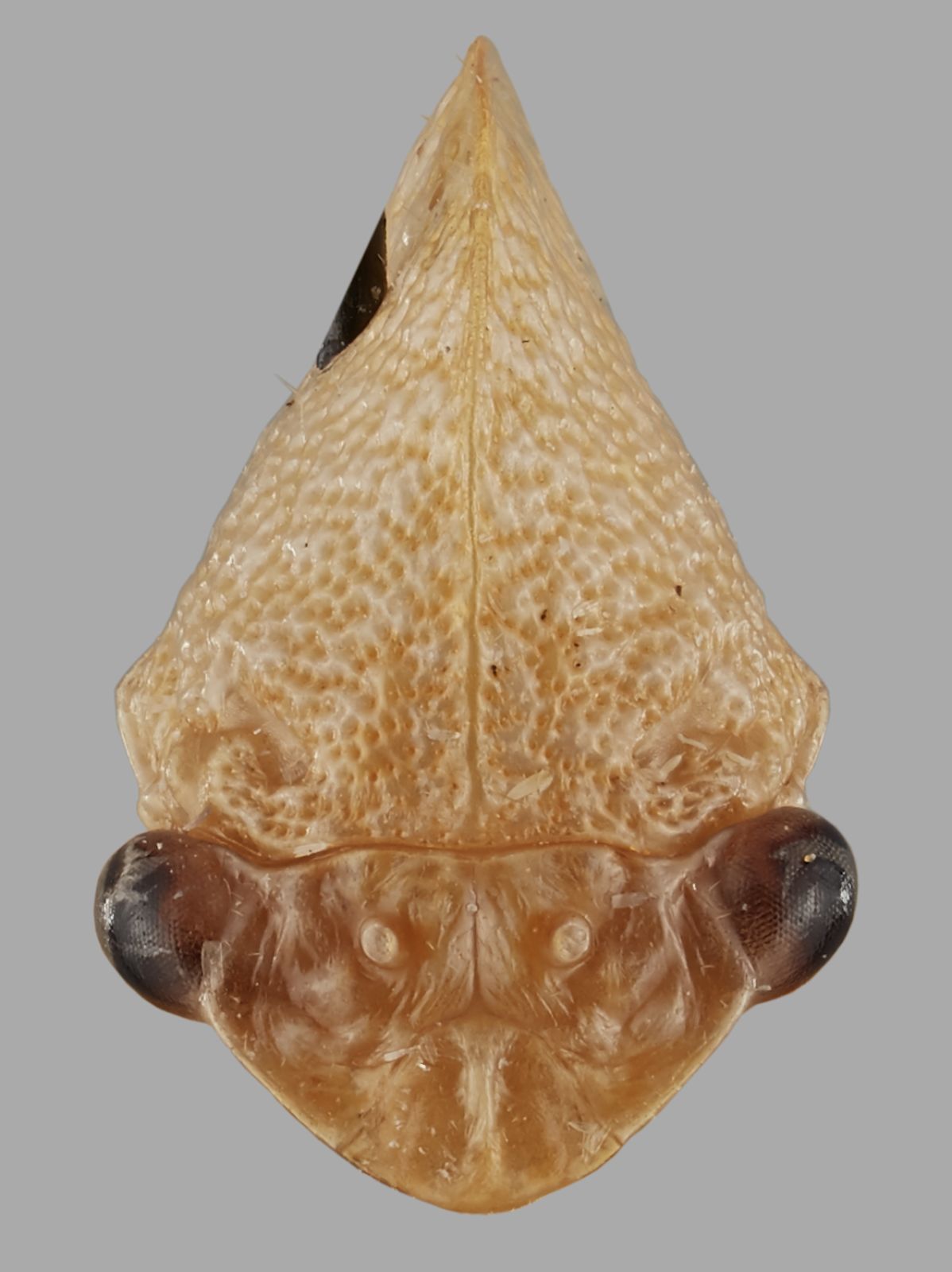 8
8 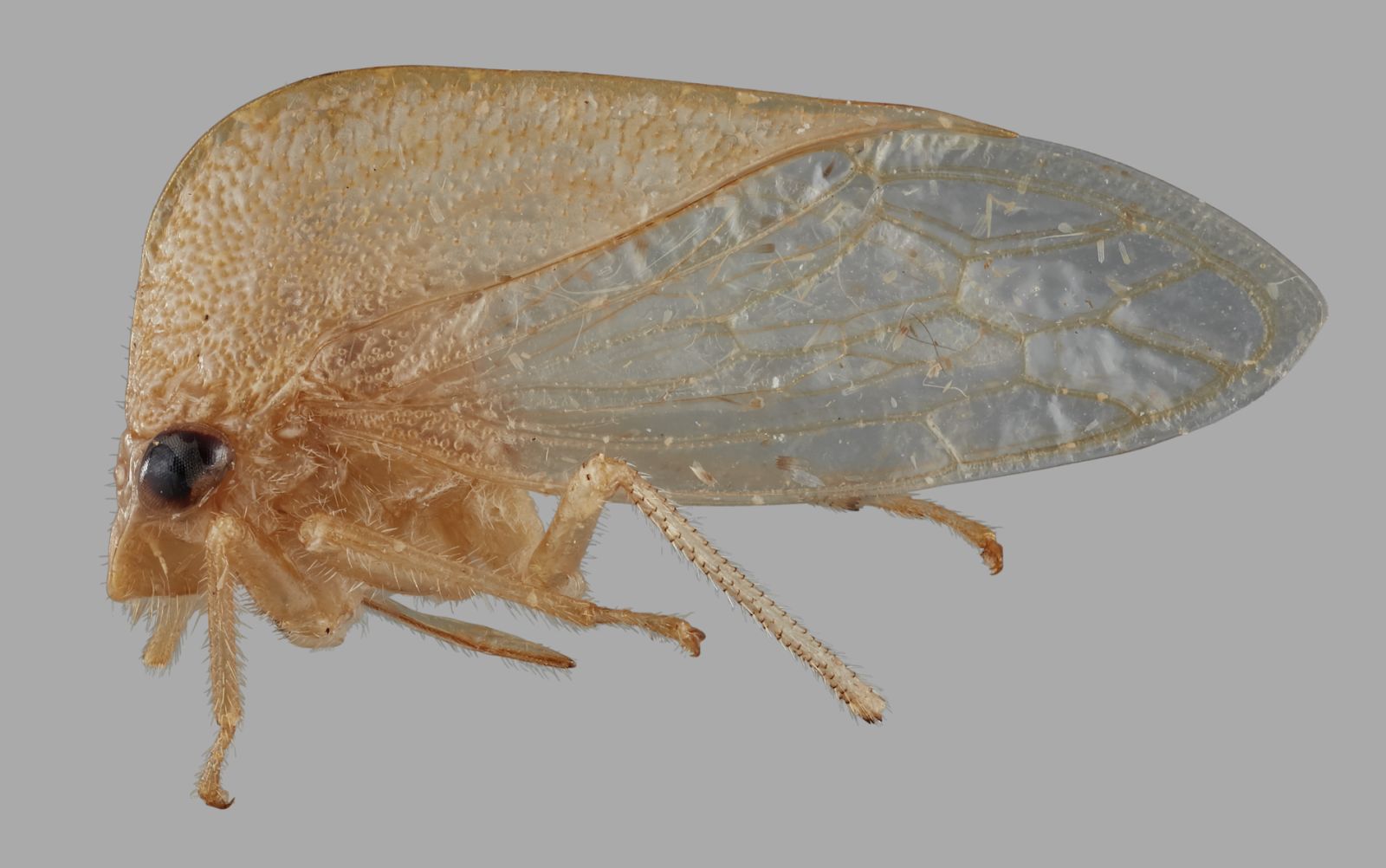 9
9 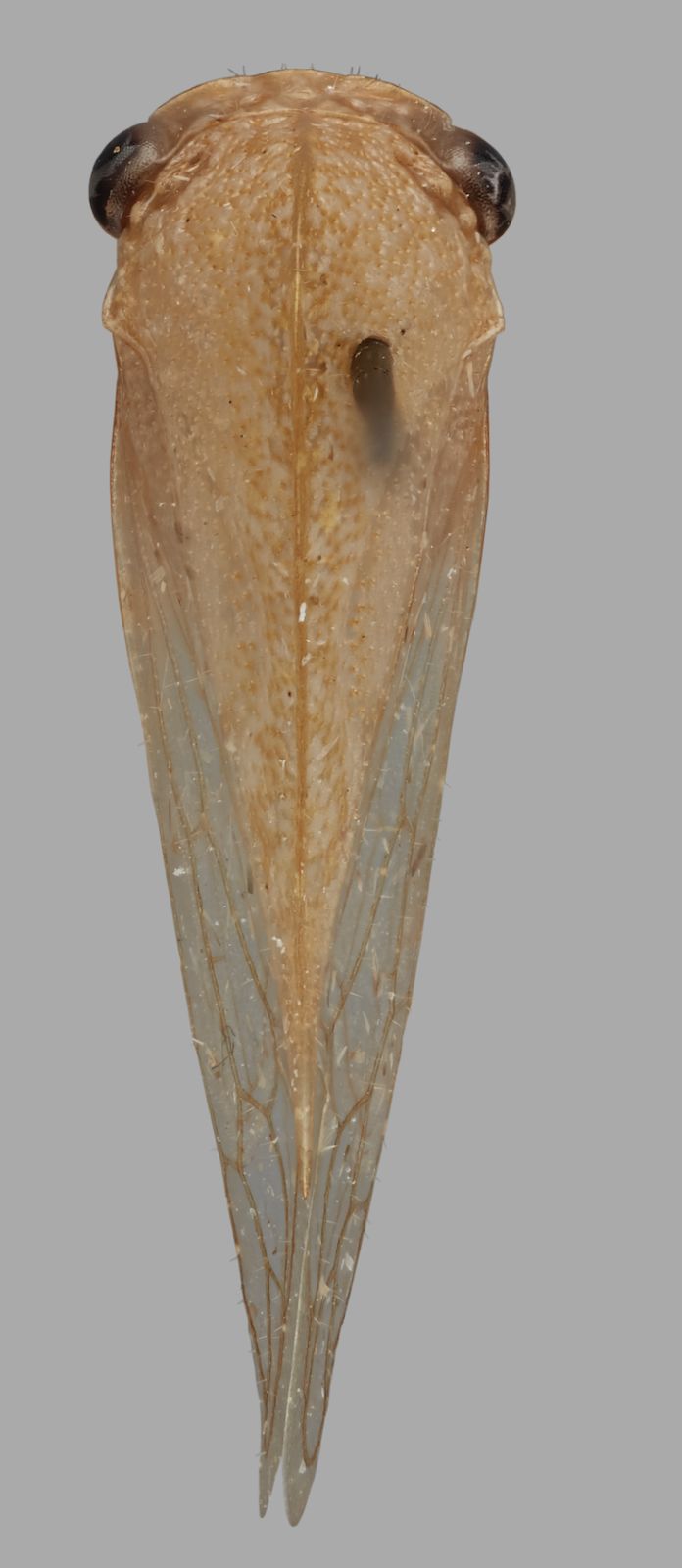
In this paper, three new acutaline genera, each with one new species, are described and illustrated (see list and figures, below). McKamey’s updated key to all 8 genera of Acutalini is based on features of the forewing venation and the pronotum. Stuart McKamey kindly provided the photos, below. These USDA images, prepared by Alyssa Seemann, are not under copyright protection. From left to right, each series of photos below represents the anterior, lateral, and dorsal aspects of the species illustrated. Additional photos of these taxa are available on our taxon pages and in McKamey's open access publication.
In Ceresinoidea zacki (n. gen. and sp. from Guatemala: Figs. 1-3), the pronotum is elevated and strongly convex in lateral view; it is unique among acutalines in bearing a pair of acute suprahumeral spines. The forewing has 2 adjacent discoidal cells (R2+3 and M) and 2 m-cu crossveins.
1
 2
2  3
3 
In Quinquespinosa septamacula (n. gen. and sp. widely distributed in South America: Figs. 4-6), the pronotum has 3 spines posteriorly and the forewing has 1 basal cell (M) and 1 discoidal cell (R2+3).
4
 5
5  6
6 
In Tectiforma guayasensis, (n. gen and sp. from Ecuador: Figs. 7-9) the pronotum is strongly tectiform throughout and the forewing has 2 adjacent discoidal cells (R2+3 and M) and 2 m-cu crossveins.
7
 8
8  9
9 
Photos and Notes from the 31st Annual Treehopper Gathering
2023-06-13
This year’s Annual Treehopper Aggregation (Ridge Rider Campground, Little Orleans, Maryland, 2-4 June 2023) attracted 34 attendees from nine states, including groups of students from the University of Delaware and The Ohio State University (Figs. 1-3; 14-18). The photos displayed below illustrate a variety of activities from collecting, studying, and photographing insects (Figs. 4-10), to chatting about research projects, lounging, cooling off in the pool, and, as usual, enjoying tasty food (Fig. 11). Matt Wallace revealed that he is compiling an illustrated field guide to the treehoppers of Pennsylvania and three of his photos from the gathering are shown in Figs. 4-6. Some folks collected biological specimens other than insects, as well as fossils and rocks (Figs. 12-13). Moreover, Solomon Hendrix created an iNaturalist project for the Treehopper Gathering that includes treehoppers and many other taxa. Additionally, various hopper specimens were lent for research and others were returned. We were also introduced to Eli Wyman’s brilliant Platycotis tattoo (Fig. 15), as well as awesome playing cards from the Caterpillar Lab and a matching game, and an interesting online source for treehopper T-shirts, masks, pins, posters, and such.
Figs. 1-3. 2023 Treehopper Gathering Attendees. Fig. 1, Group photo. Back (standing), left to right: Mark Rothschild; Solomon Hendrix; Charles Bartlett; Vinton Thompson; Lewis Deitz; Michael Hennessey; Dawn Flynn; Lawrence Barringer; Claire Ciafre; Matthew Wallace; Ashley Kennedy; Kelley Tilmon; Katie Weglarz; Wil Winter; Jason Owens; Anthony Deczynski; Emma Jonas; Nate Nazdrowicz; Corey McDonald; Angel Haller; Yamikani Ng'ona; Danna Vera; Helen Ashbrook. Front (kneeling or crouching), left to right : Hava Amsbury; Eli Wyman; Pamela Zader; Kenneth Geisert; Claire Bernard; Madelyn Collins; Margot Wohl; and Arnold Gomez. Fig. 2. Luke Reynolds (Friday evening). Fig. 3. Digby Roberts (left) and Amaal Yazdi (right) at the pool. (Copyrights 2023: 1, by Eli Wyman; 2-3, by Ashley Kennedy.)
1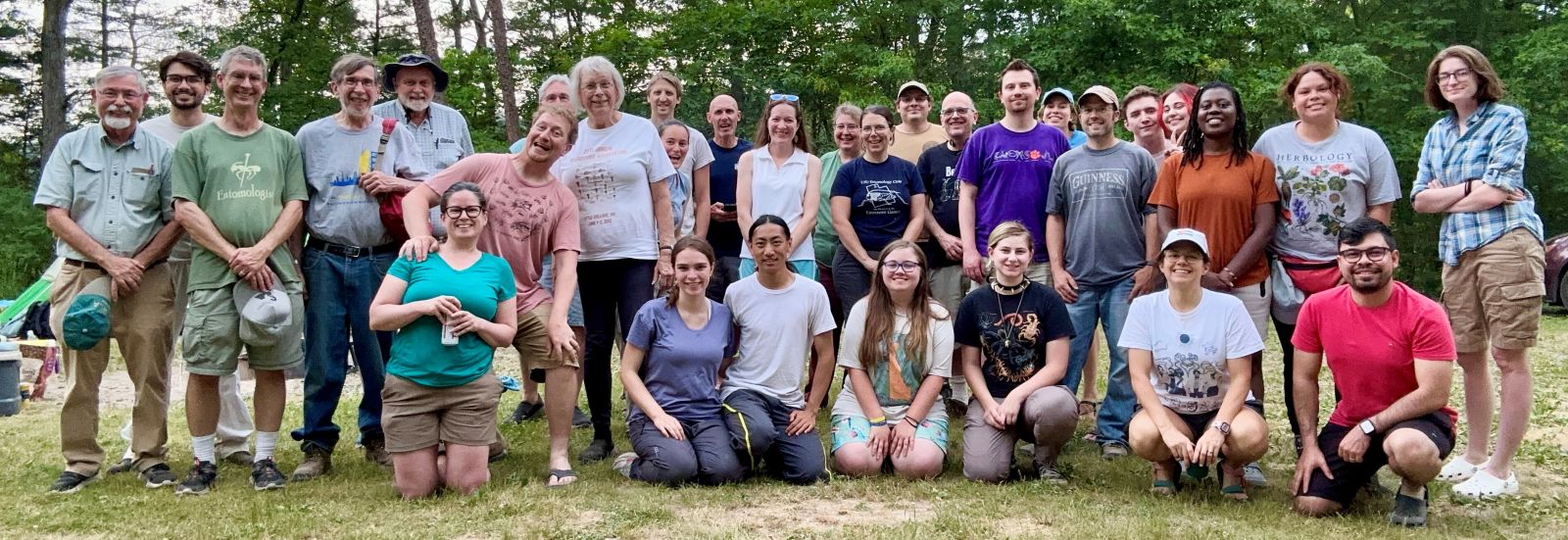
. . . . . . but Luke, Digby, and Amaal missed the group photo. . . . 2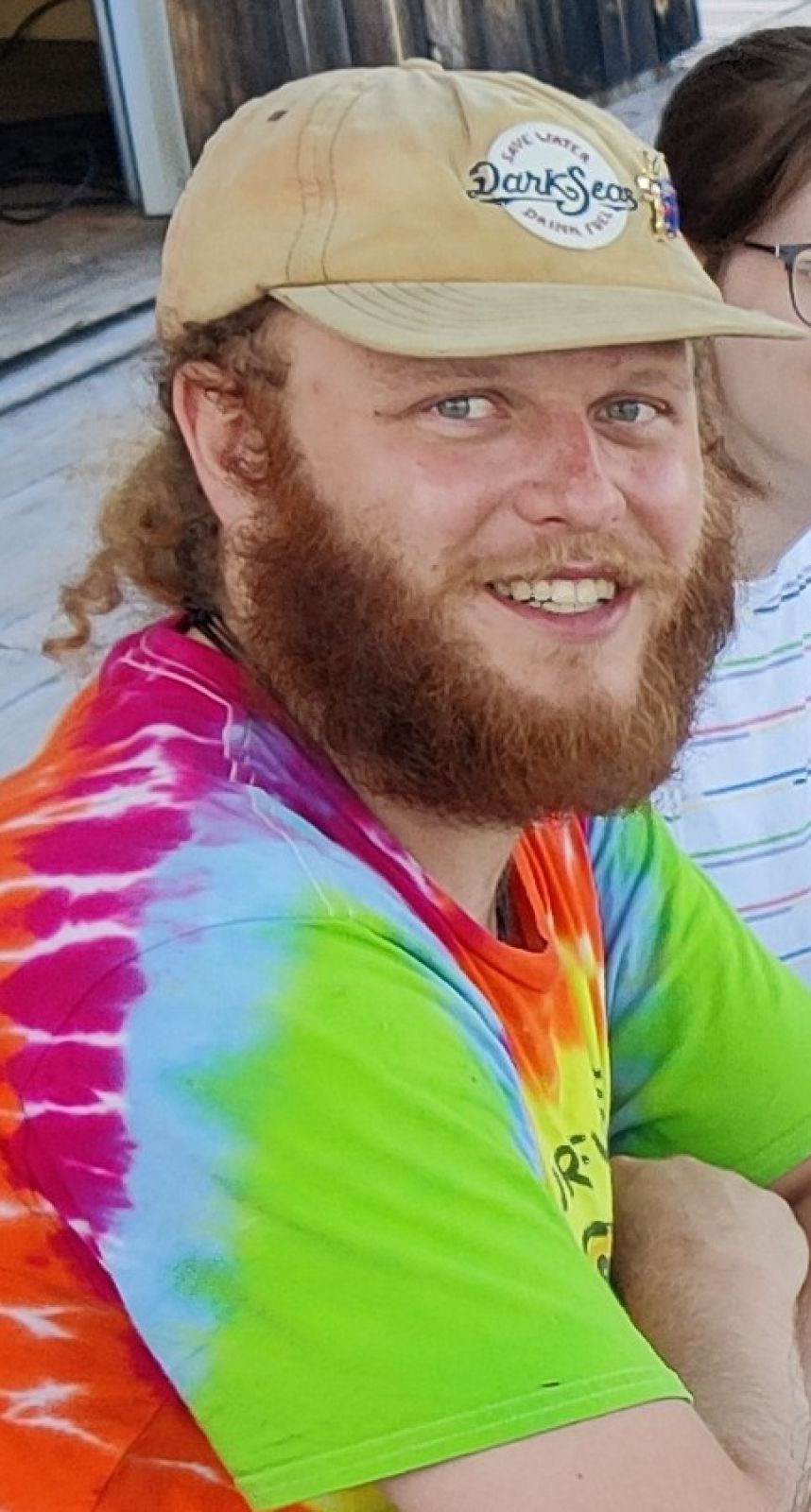 3
3 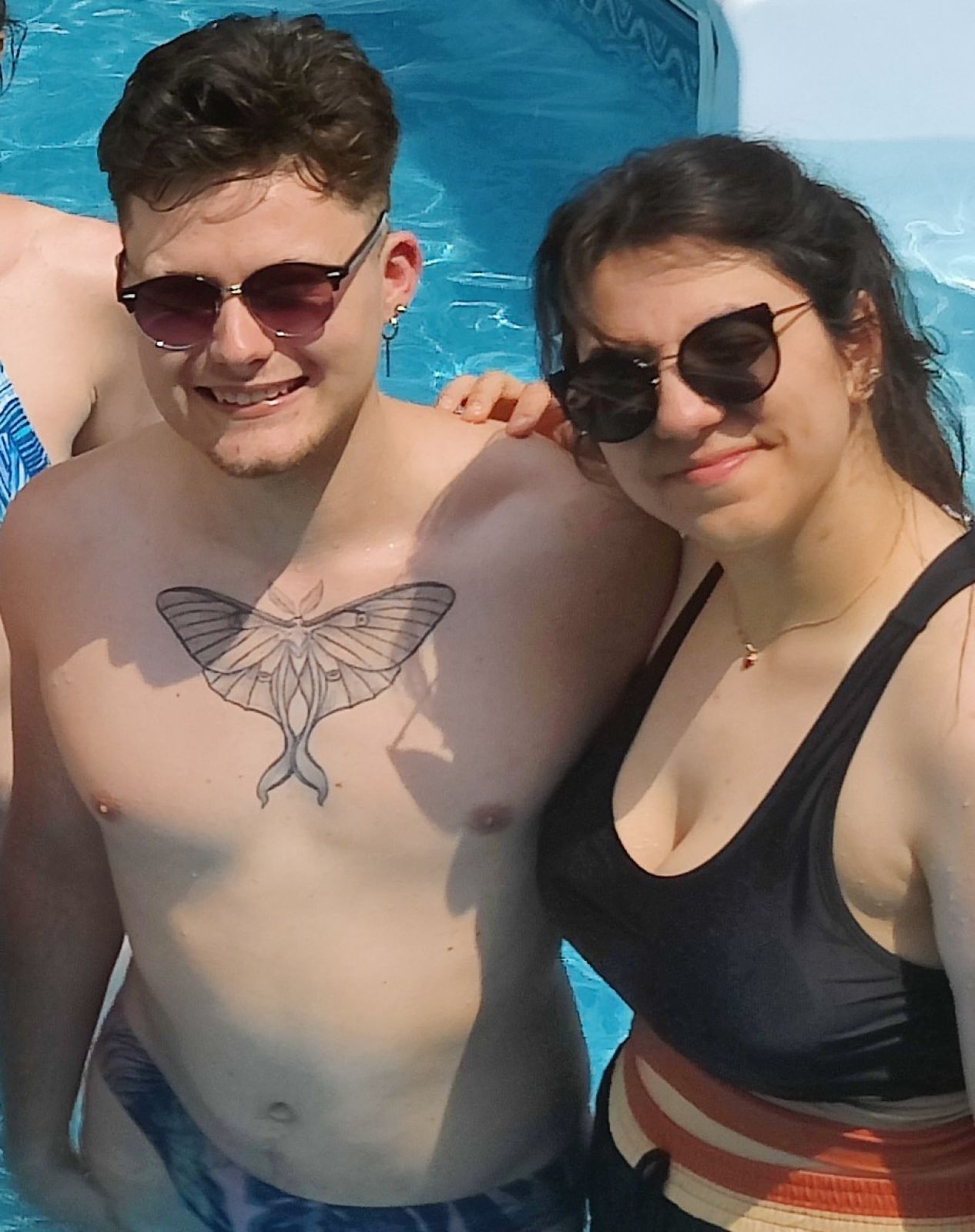
Figs. 4-6. Treehopper photos. 4, Atymna querci; 5, Telamona decorata 6. Microcentrus perditus. (© Copyright 2023: all by Matthew S. Wallace.)
4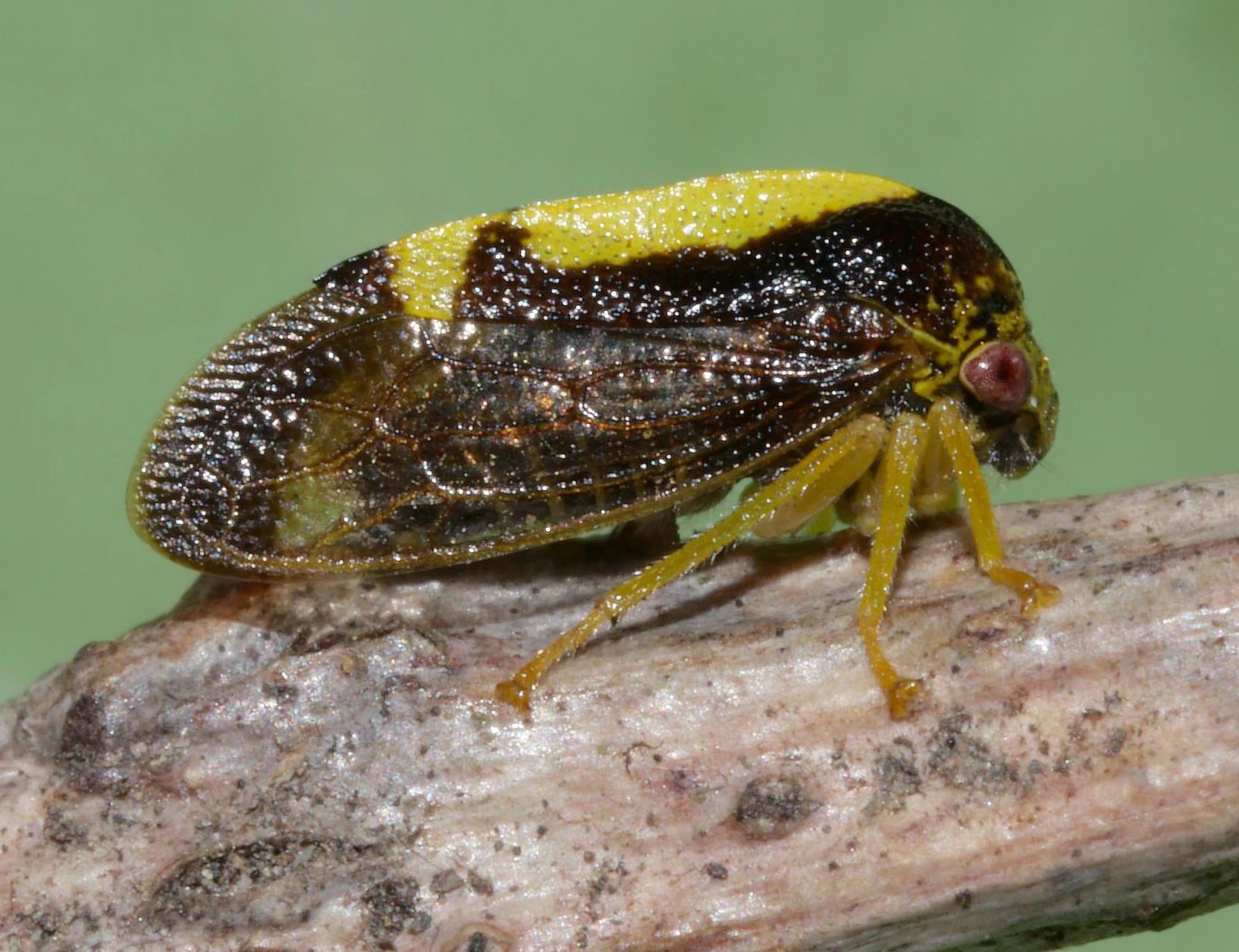 5
5 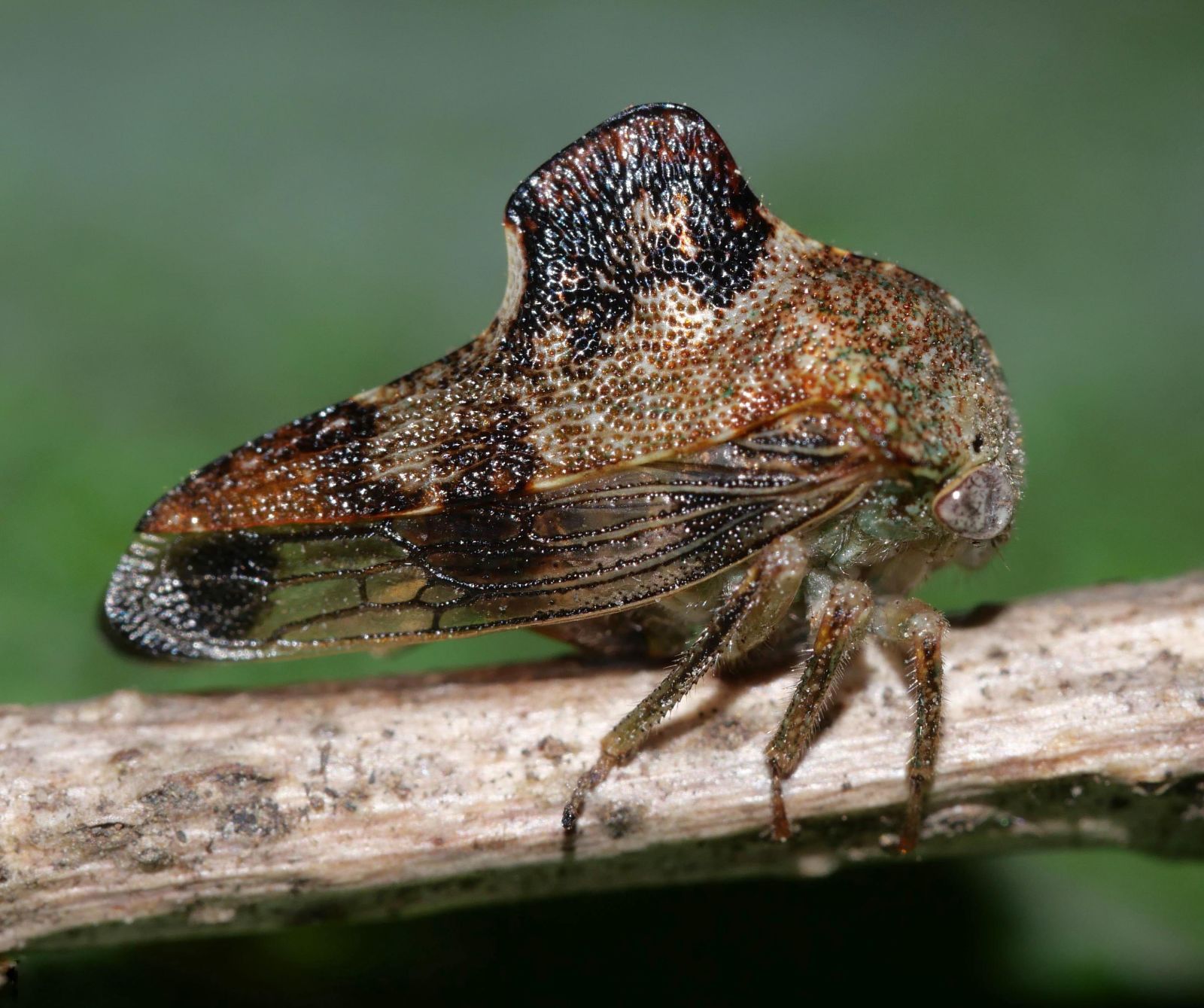 6
6 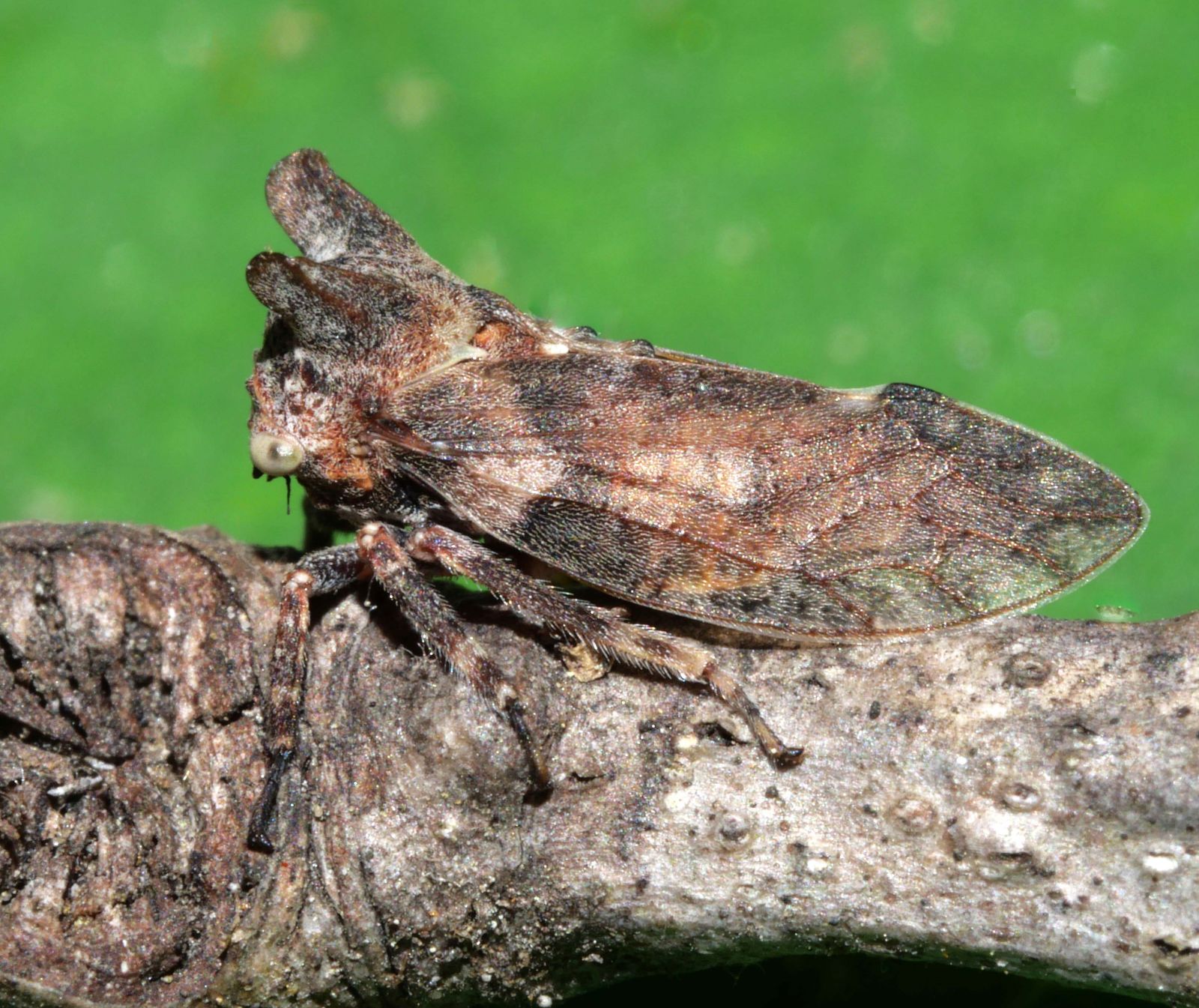
Figs. 7-11. Collecting by night and day (7-10) and feasting (11) (© Copyrights 2023: 7-8 and 10 by Matthew S. Wallace; 9, by Claire Ciafre.; 11, by Dawn Flynn.)
7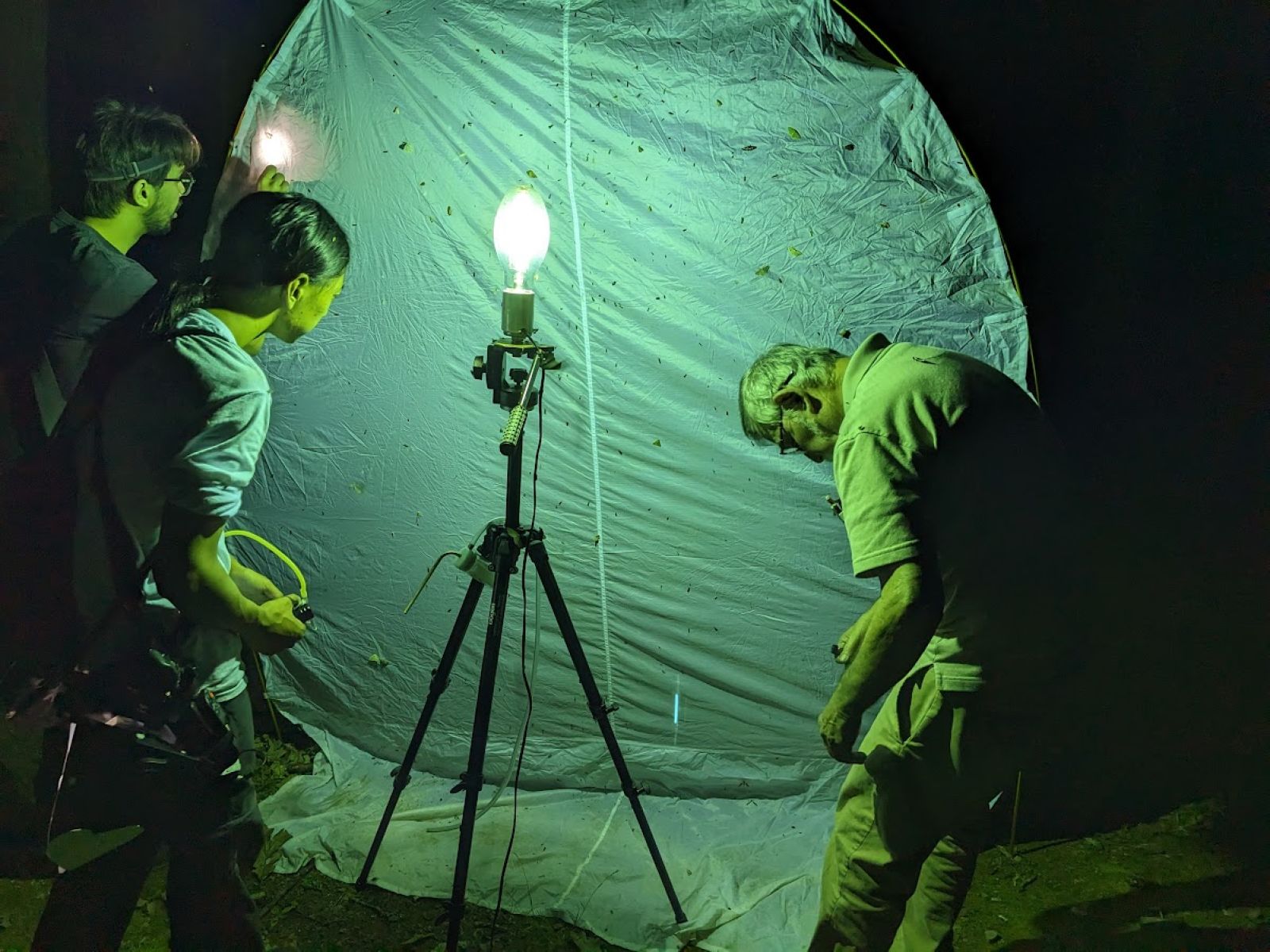 8
8 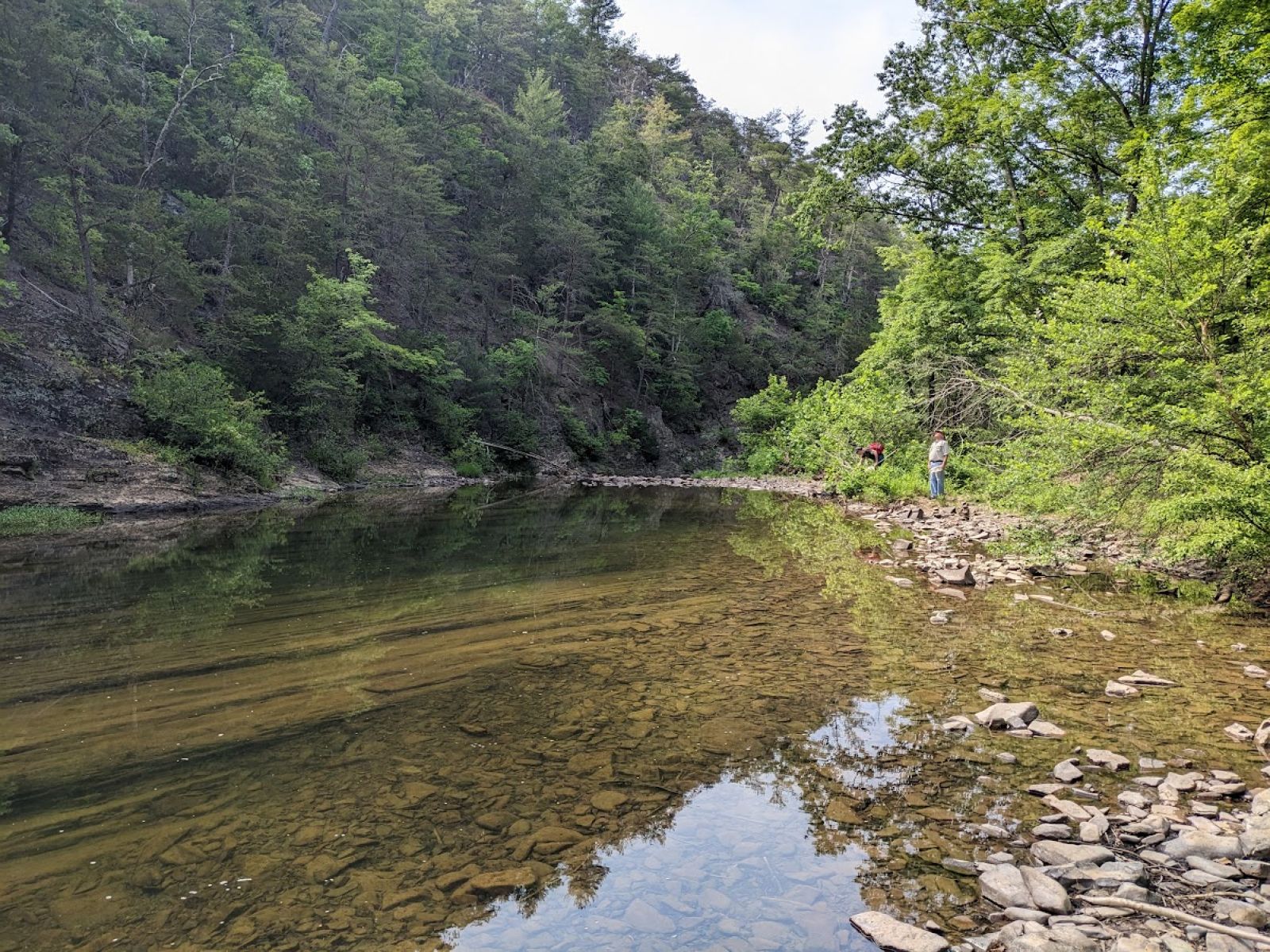 9
9 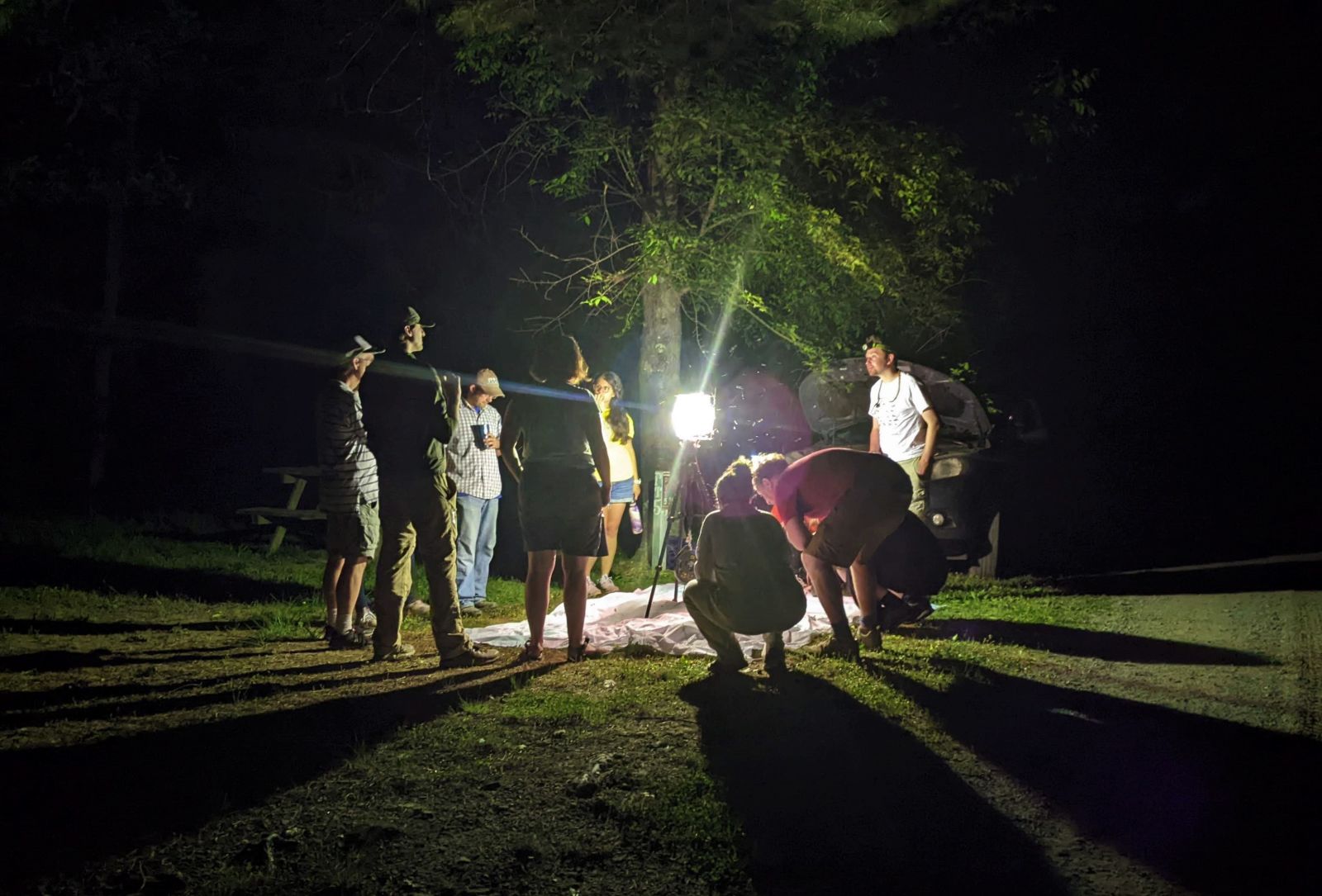
. . . . . . . more collecting . . 10 . . . the Saturday feast .
11
. . . the Saturday feast .
11 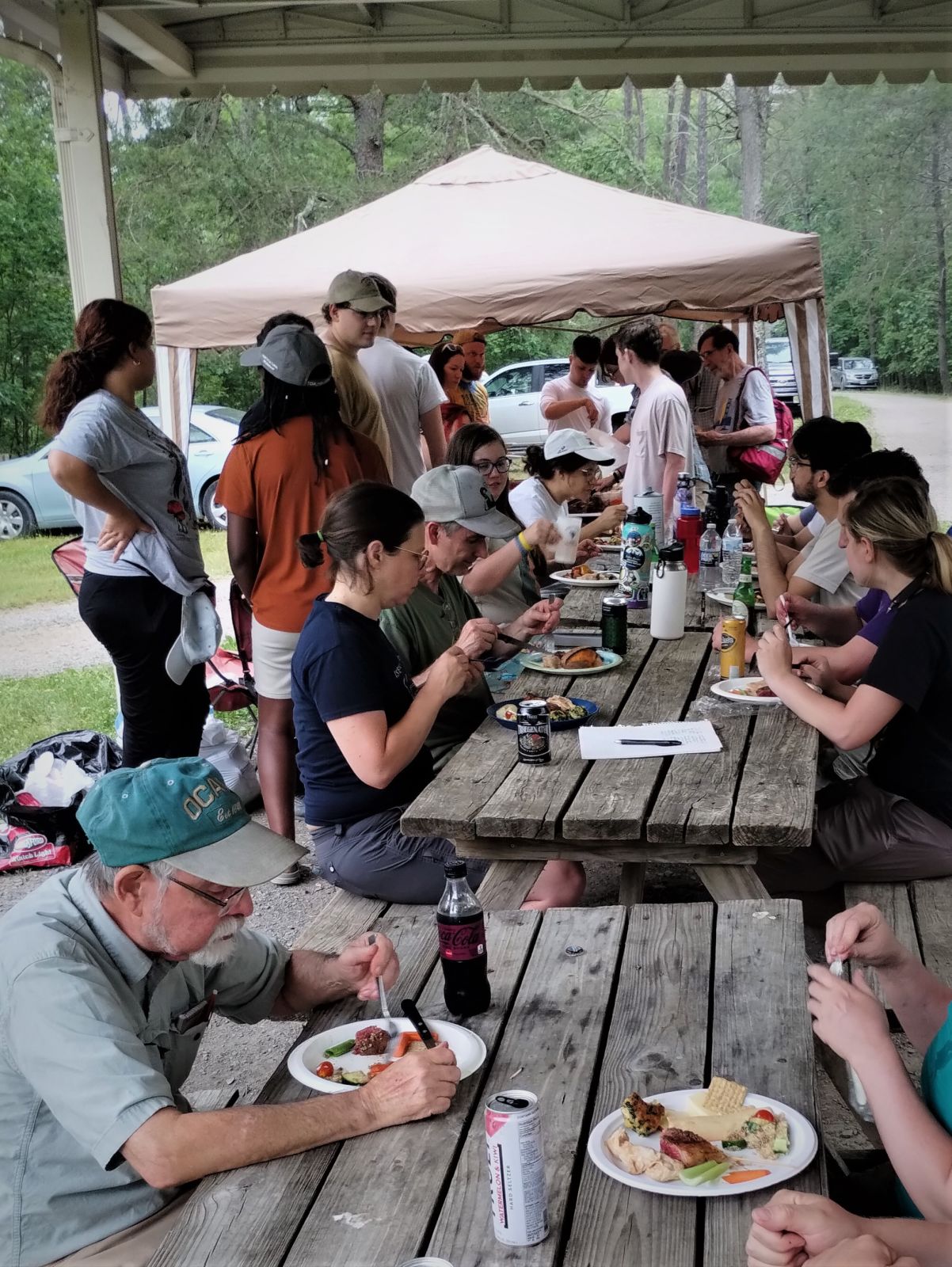
Figs. 12-13. Local rocks and fossils. (© Copyrights 2023, both by Lewis L. Deitz)
12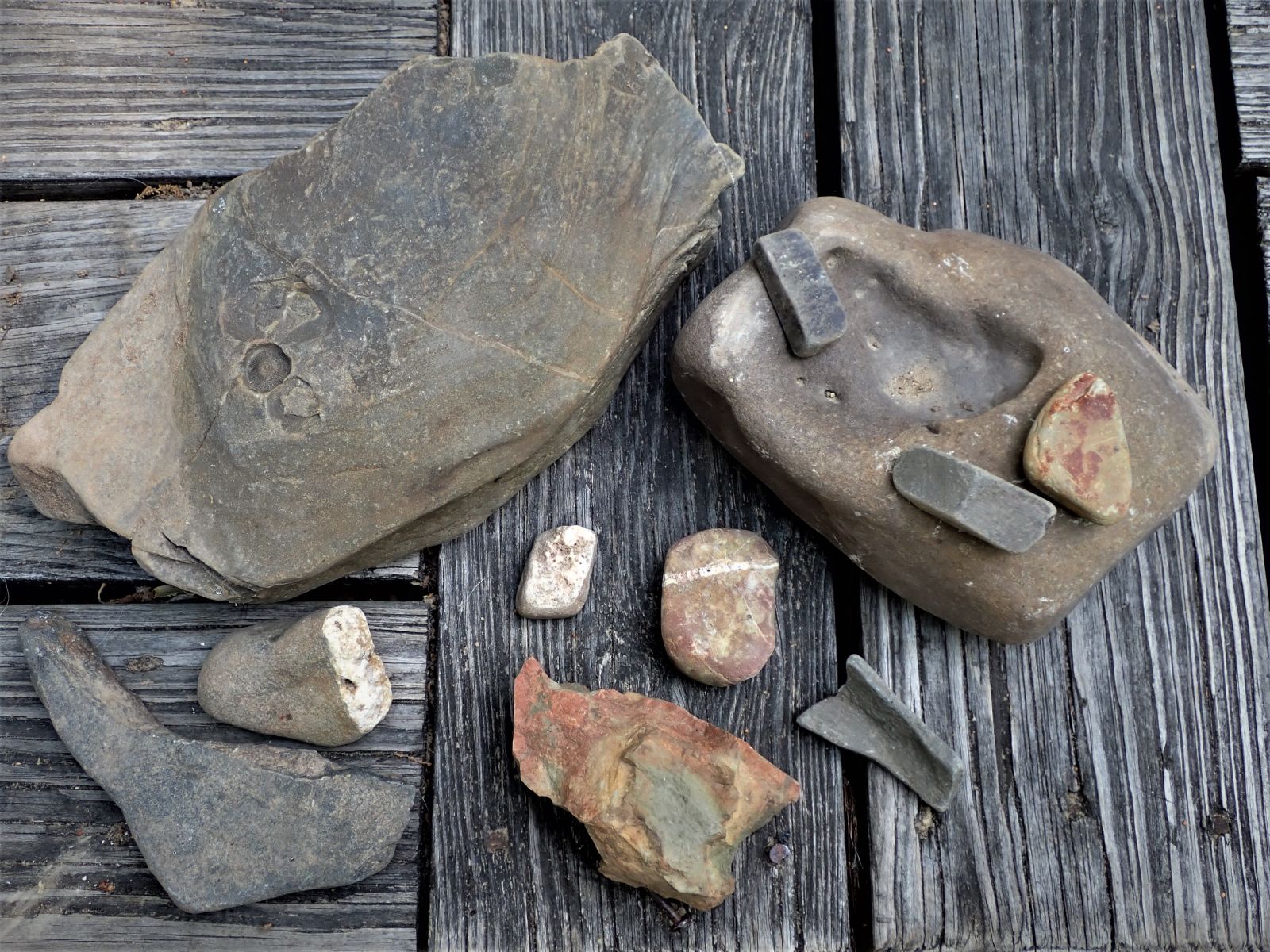 …. fossil crinoid stems
13
…. fossil crinoid stems
13 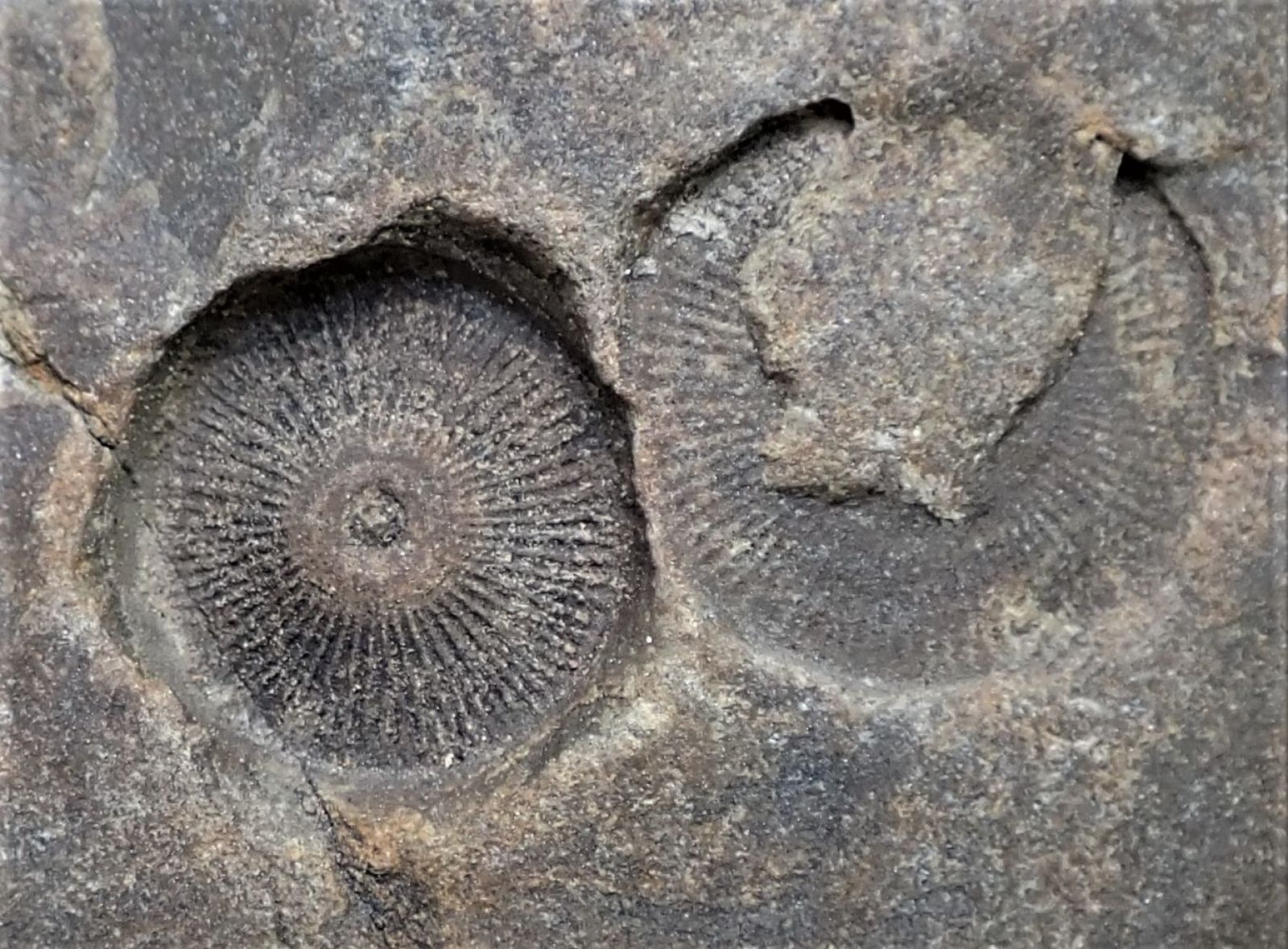
Figs. 14-18. The most... dedicated (14) Mark (left) and Solomon (right)... awesome tattoo (15) Eli (Platycotis treehopper)... scholarly (16) Vinton... exhausted (17) Charles (gathering organizer)… out of control (18) Emma.
(© Copyrights 2023: 14 and 17, by Dawn Flynn; 15-16, 18, by Eli Wyman [photo 15, taken by Matthew S. Wallace]).
14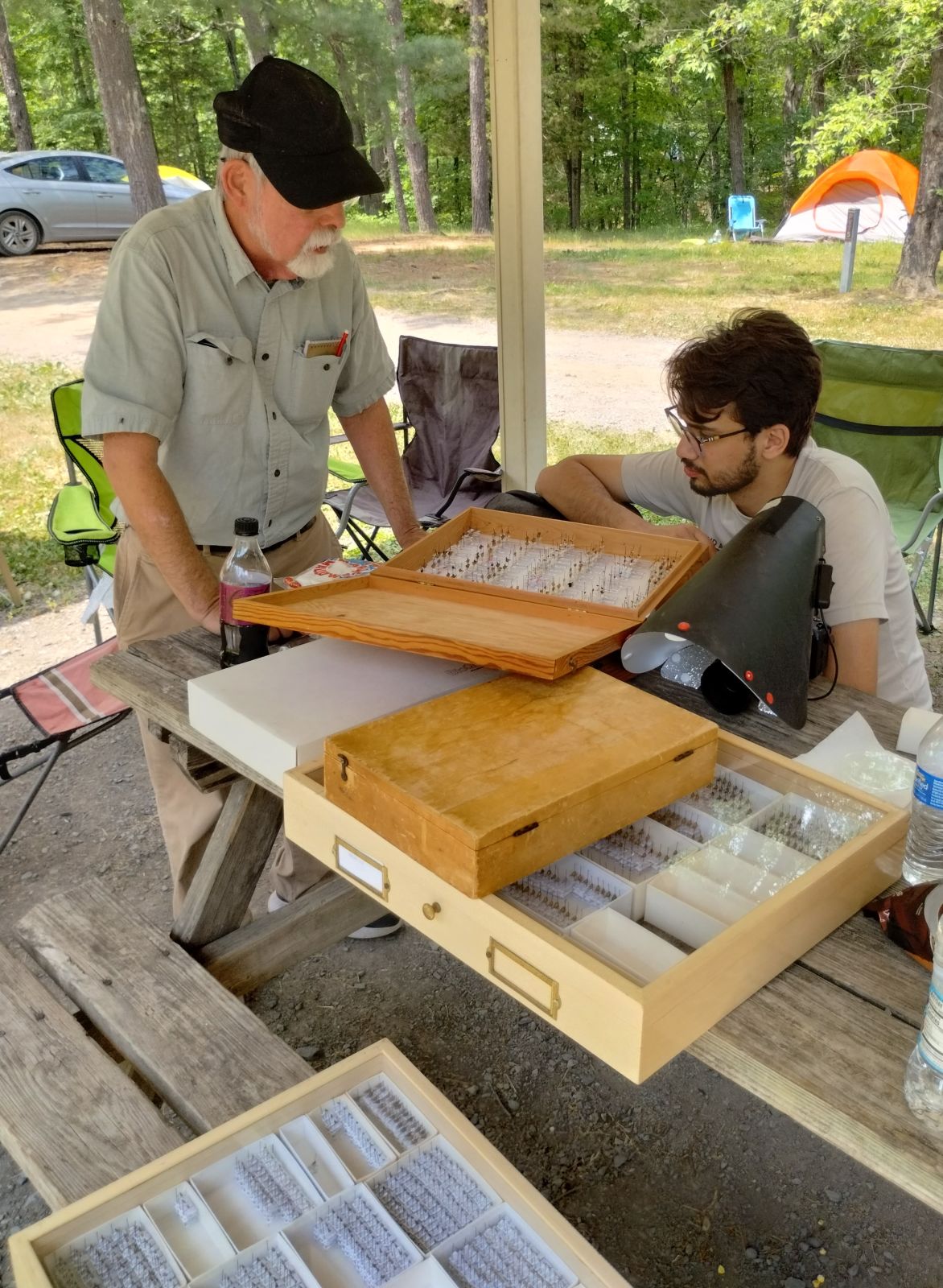 15
15 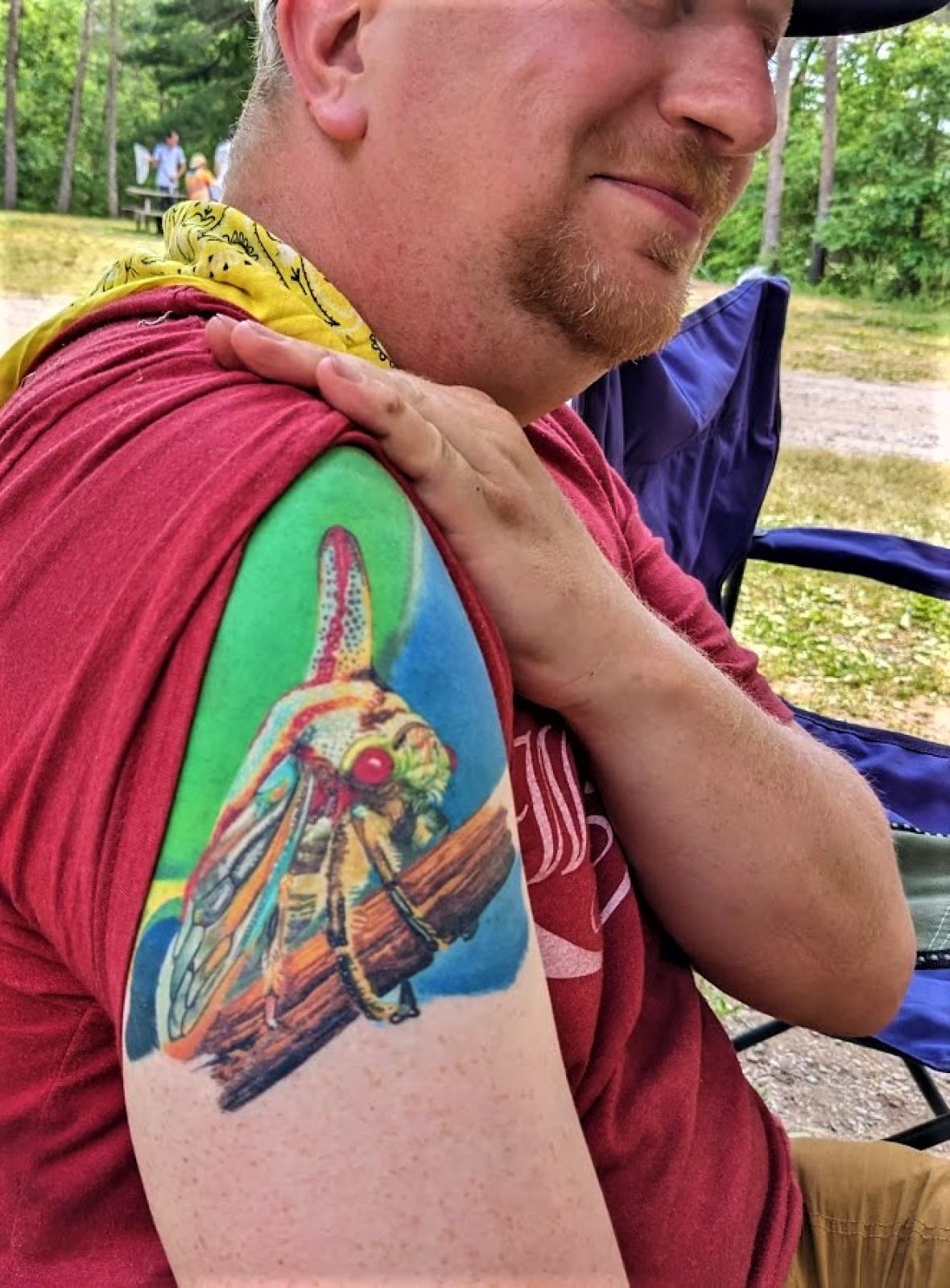 16
16 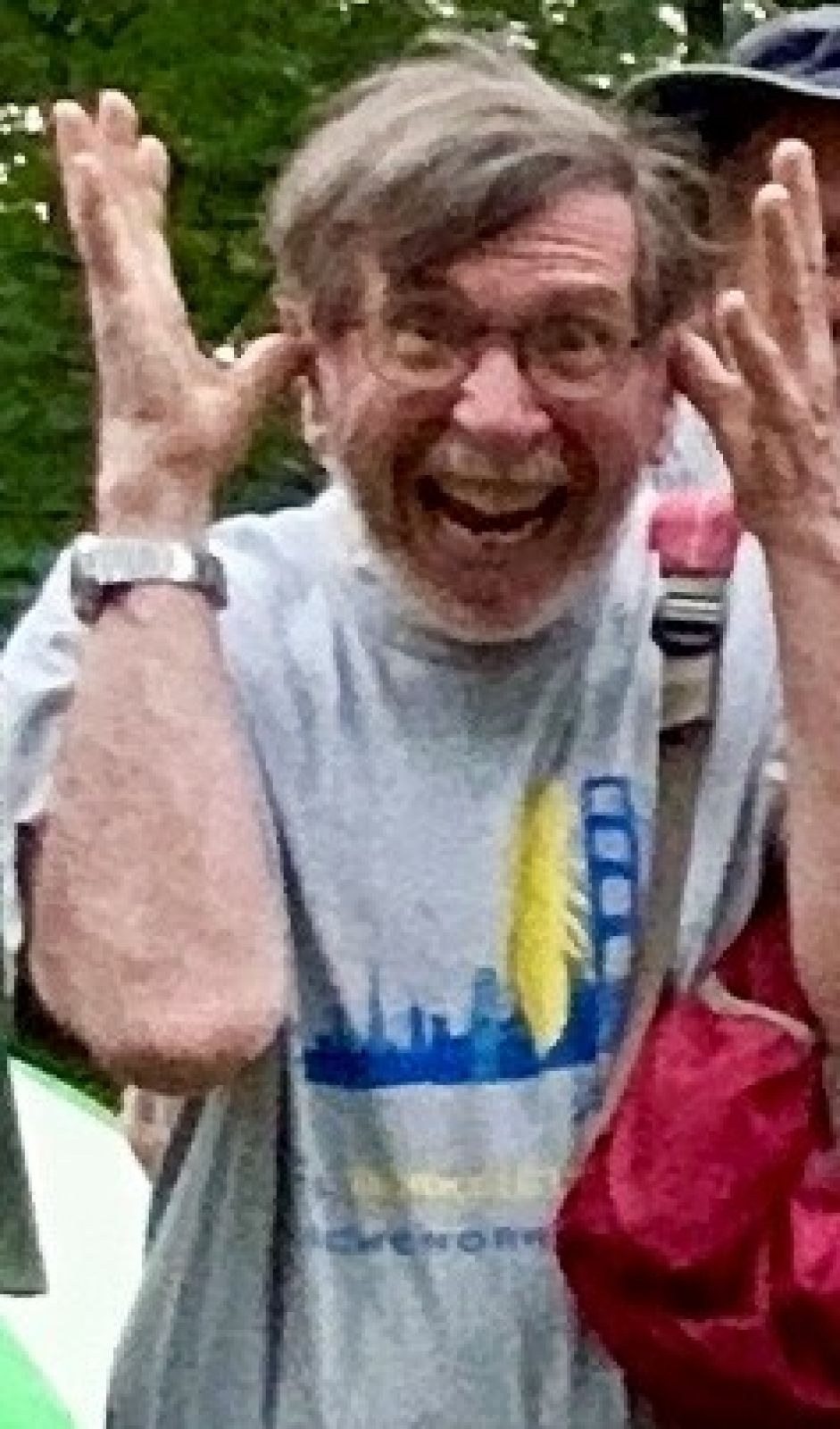 17
17 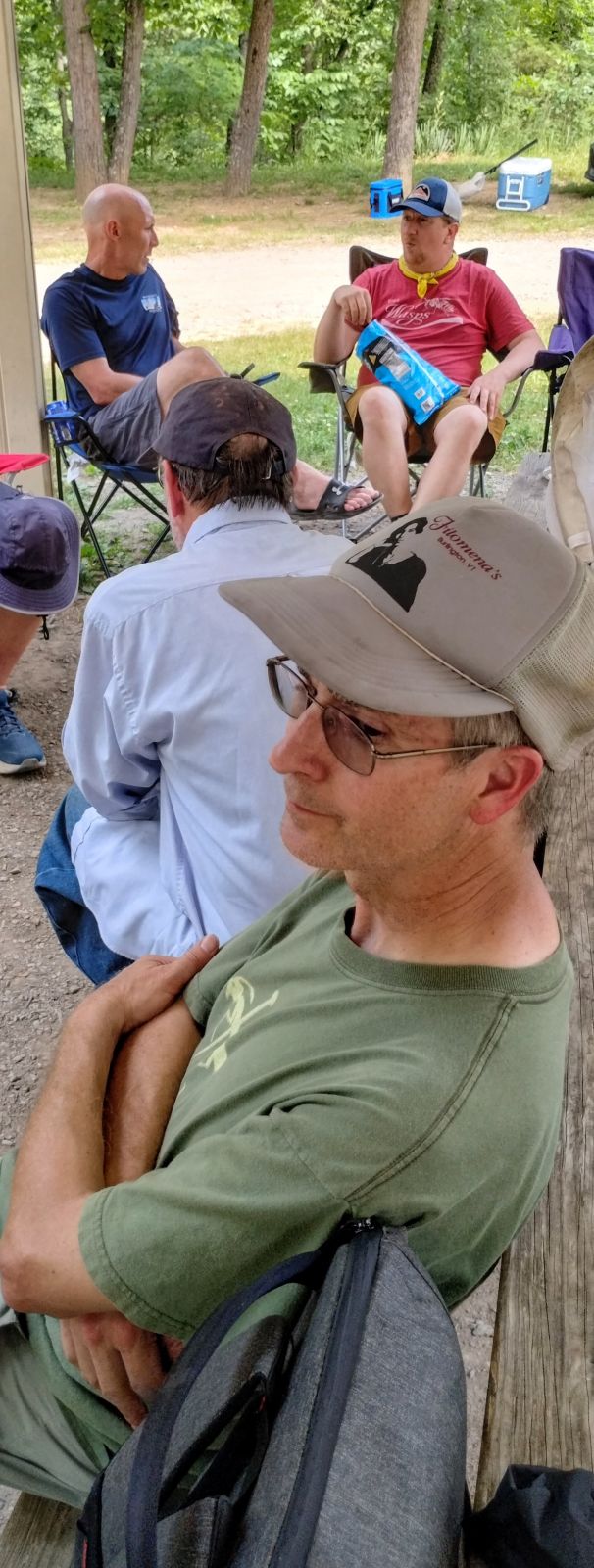
18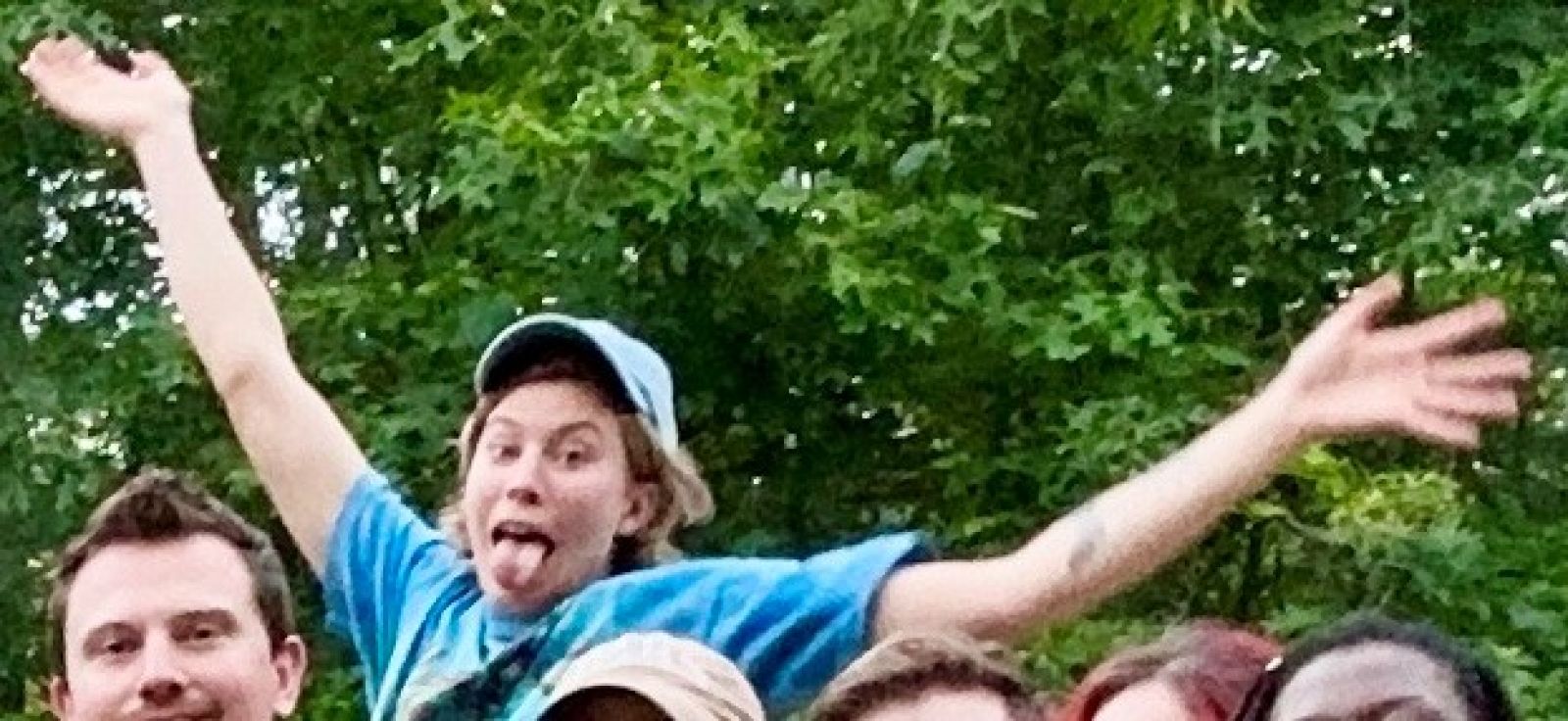 . . . . . . . . . . All in all, in every way, the gathering was a great success.
. . . . . . . . . . All in all, in every way, the gathering was a great success.
Figs. 1-3. 2023 Treehopper Gathering Attendees. Fig. 1, Group photo. Back (standing), left to right: Mark Rothschild; Solomon Hendrix; Charles Bartlett; Vinton Thompson; Lewis Deitz; Michael Hennessey; Dawn Flynn; Lawrence Barringer; Claire Ciafre; Matthew Wallace; Ashley Kennedy; Kelley Tilmon; Katie Weglarz; Wil Winter; Jason Owens; Anthony Deczynski; Emma Jonas; Nate Nazdrowicz; Corey McDonald; Angel Haller; Yamikani Ng'ona; Danna Vera; Helen Ashbrook. Front (kneeling or crouching), left to right : Hava Amsbury; Eli Wyman; Pamela Zader; Kenneth Geisert; Claire Bernard; Madelyn Collins; Margot Wohl; and Arnold Gomez. Fig. 2. Luke Reynolds (Friday evening). Fig. 3. Digby Roberts (left) and Amaal Yazdi (right) at the pool. (Copyrights 2023: 1, by Eli Wyman; 2-3, by Ashley Kennedy.)
1

. . . . . . but Luke, Digby, and Amaal missed the group photo. . . . 2
 3
3 
Figs. 4-6. Treehopper photos. 4, Atymna querci; 5, Telamona decorata 6. Microcentrus perditus. (© Copyright 2023: all by Matthew S. Wallace.)
4
 5
5  6
6 
Figs. 7-11. Collecting by night and day (7-10) and feasting (11) (© Copyrights 2023: 7-8 and 10 by Matthew S. Wallace; 9, by Claire Ciafre.; 11, by Dawn Flynn.)
7
 8
8  9
9 
. . . . . . . more collecting . . 10
 . . . the Saturday feast .
11
. . . the Saturday feast .
11 
Figs. 12-13. Local rocks and fossils. (© Copyrights 2023, both by Lewis L. Deitz)
12
 …. fossil crinoid stems
13
…. fossil crinoid stems
13 
Figs. 14-18. The most... dedicated (14) Mark (left) and Solomon (right)... awesome tattoo (15) Eli (Platycotis treehopper)... scholarly (16) Vinton... exhausted (17) Charles (gathering organizer)… out of control (18) Emma.
(© Copyrights 2023: 14 and 17, by Dawn Flynn; 15-16, 18, by Eli Wyman [photo 15, taken by Matthew S. Wallace]).
14
 15
15  16
16  17
17 
18
 . . . . . . . . . . All in all, in every way, the gathering was a great success.
. . . . . . . . . . All in all, in every way, the gathering was a great success.Phylogeny of Membracoidea Based on Transcriptome Data
2023-07-03
Hu, Y.; Dietrich, C. H.; Skinner, R. K.; Zhang, Y. 2023a. Phylogeny of Membracoidea (Hemiptera: Auchenorrhyncha) based on transcriptome data. Systematic
Entomology 48: 97-110. [DOI: 10.1111/syen.12563; the early view version of this work was available online in 2022, paged 1-14, DOI: 10.1111/syen.12563].
[Based on extensive, but not comprehensive, sampling of membracoid subfamilies and tribes, the authors provide an improved backbone phylogeny of the superfamily Membracoidea. This publication supports several previous studies indicating that, as currently defined, (1) the leafhopper family Cicadellidae is paraphyletic with respect to treehopper families Aetalionidae, Melizoderidae, and Membracidae, and furthermore (2) the treehopper family Membracidae is paraphyletic with respect to Aetalionidae or Melizoderidae, or to both (these relationships were not resolved). Regarding treehopper taxa, the authors transfer the genus Holdgatiella from the subfamily Nicomiinae to Melizoderinae and place the subfamily Stegaspidinae as a synonym of Centrotinae. These findings concur with an earlier work by Skinner et al. (2019a, see below). Moreover, the Hu et al. (2023a) study reveals notable unresolved areas in the existing classifications of both treehoppers and leafhoppers that merit further intensive study. An obvious next step will be to add our knowledge of the morphology of these groups to the improved phylogenetic backbone, thus elucidating the morphological derivations at each node to produce sound descriptive keys for identifying the taxa.]
Skinner, R. K.; Dietrich, C. H.; Walden, K. K. O.; Gordon, E.; Sweet, A. D., Podsiadlowski, L.; Petersen, M.; Simon, C.; Takiya, D. M.; Johnson, K. P. 2019a. Phylogenomics of Auchenorrhyncha (Insecta: Hemiptera) using transcriptomes: examining controversial relationships via degeneracy coding and interrogation of gene conflict. Systematic Entomology 45: 85–113. [DOI: 10.1111/Syen.12381]
[Although similar to the study by Hu et al. (2022a), this earlier publication (Skinner et al. 2019a) was more broadly focused on the suborder Auchenorrhyncha and included far fewer representatives of the superfamily Membracoidea.]
Note: Higher taxa synonymies proposed in the abstract of the Hu et al. (2023a) paper would drastically change long-accepted concepts of the family Membracidae and subfamily Centrotinae, both of which are widely distributed in both the Old and New Worlds. Their studies suggest greater complexity in phylogenetic relationships among the taxa than is reflected in existing classifications, including a number of paraphyletic groups as currently defined. Moreover, it seems likely that more, rather than fewer, higher taxa will be needed to define all such groups as monophyletic clades. Thus, pending further study of alternative proposals that maintain greater nomenclatural stability in common names (leafhoppers and treehoppers) and scientific names of higher taxa, the synonymies proposed by Hu et al. are not reflected in the classification followed on the Treehoppers website as this time (3 July 2023).
[Based on extensive, but not comprehensive, sampling of membracoid subfamilies and tribes, the authors provide an improved backbone phylogeny of the superfamily Membracoidea. This publication supports several previous studies indicating that, as currently defined, (1) the leafhopper family Cicadellidae is paraphyletic with respect to treehopper families Aetalionidae, Melizoderidae, and Membracidae, and furthermore (2) the treehopper family Membracidae is paraphyletic with respect to Aetalionidae or Melizoderidae, or to both (these relationships were not resolved). Regarding treehopper taxa, the authors transfer the genus Holdgatiella from the subfamily Nicomiinae to Melizoderinae and place the subfamily Stegaspidinae as a synonym of Centrotinae. These findings concur with an earlier work by Skinner et al. (2019a, see below). Moreover, the Hu et al. (2023a) study reveals notable unresolved areas in the existing classifications of both treehoppers and leafhoppers that merit further intensive study. An obvious next step will be to add our knowledge of the morphology of these groups to the improved phylogenetic backbone, thus elucidating the morphological derivations at each node to produce sound descriptive keys for identifying the taxa.]
Skinner, R. K.; Dietrich, C. H.; Walden, K. K. O.; Gordon, E.; Sweet, A. D., Podsiadlowski, L.; Petersen, M.; Simon, C.; Takiya, D. M.; Johnson, K. P. 2019a. Phylogenomics of Auchenorrhyncha (Insecta: Hemiptera) using transcriptomes: examining controversial relationships via degeneracy coding and interrogation of gene conflict. Systematic Entomology 45: 85–113. [DOI: 10.1111/Syen.12381]
[Although similar to the study by Hu et al. (2022a), this earlier publication (Skinner et al. 2019a) was more broadly focused on the suborder Auchenorrhyncha and included far fewer representatives of the superfamily Membracoidea.]
Note: Higher taxa synonymies proposed in the abstract of the Hu et al. (2023a) paper would drastically change long-accepted concepts of the family Membracidae and subfamily Centrotinae, both of which are widely distributed in both the Old and New Worlds. Their studies suggest greater complexity in phylogenetic relationships among the taxa than is reflected in existing classifications, including a number of paraphyletic groups as currently defined. Moreover, it seems likely that more, rather than fewer, higher taxa will be needed to define all such groups as monophyletic clades. Thus, pending further study of alternative proposals that maintain greater nomenclatural stability in common names (leafhoppers and treehoppers) and scientific names of higher taxa, the synonymies proposed by Hu et al. are not reflected in the classification followed on the Treehoppers website as this time (3 July 2023).
New Treehoppers in the Genera Telamona and Smilidarnis
2023-08-10
Flynn, D. {J.} [2023a (dated 2022)]. A new species of Telamona from California (Hemiptera: Membracidae; Smiliinae: Telamonini) and key to Telamona found in California. Proceedings of the Entomological Society of Washington 124(4): 761-768. [This work was published on 14 July 2023 based on Crossref.org.]
[Telamona californica, new species, is described and illustrated from California, USA, with an illustrated key to distinguish it from the three other Telamona species known from California (T. calva, T. coronata, T. vestita, and T. vestita carynotana, all described by Ball). In this work, Flynn points out that, according to Ball’s (1931f) revision of the tribe Telamonini, prior records of Telamona decorata and T. reclivata from California were based on misidentifications of Palonica pyramidata var. portola and T. vestita, respectively, and records of a T. decorata male from New Mexico were based on a misidentification of T. gibbera. These misidentifications (and incorrect state records) were overlooked by Metcalf and Wade (1965a: catalog section 1; catalog section includes Telamonini) and subsequent workers (Deitz and Wallace 2012a). This oversight likely occurred because Metcalf and Wade’s 1965 catalog is a supplement to Funkhouser’s (1927f) catalog, which appeared a few years prior to Ball’s 1931 revision. A summary of prior locality records for each species from Funkhouser’s 1927 work was listed by Metcalf and Wade, but every prior publication listed by Funkhouser was not re-catalogued with notes on misidentifications. McKamey’s (1999a) catalog is likewise a supplement to the two preceding catalogs. The World Auchenorrhyncha Database includes a current online catalog of treehopper species.]
McKamey, S. H. 2023b. Three new species of the Neotropical genus Smilidarnis Andrade (Hemiptera, Membracidae). ZooKeys 1174: 85–95. [Open access].
[Three new species of Smilidarnis are described and illustrated: S. duocornus (from Brazil), S. erwini (from Ecuador), and S. robustus (from Peru). This publication includes an illustrated key to distinguish the five species (all Neotropical) recognized in this genus, which is currently unplaced (incertae sedis) within the family Membracidae.]
[Telamona californica, new species, is described and illustrated from California, USA, with an illustrated key to distinguish it from the three other Telamona species known from California (T. calva, T. coronata, T. vestita, and T. vestita carynotana, all described by Ball). In this work, Flynn points out that, according to Ball’s (1931f) revision of the tribe Telamonini, prior records of Telamona decorata and T. reclivata from California were based on misidentifications of Palonica pyramidata var. portola and T. vestita, respectively, and records of a T. decorata male from New Mexico were based on a misidentification of T. gibbera. These misidentifications (and incorrect state records) were overlooked by Metcalf and Wade (1965a: catalog section 1; catalog section includes Telamonini) and subsequent workers (Deitz and Wallace 2012a). This oversight likely occurred because Metcalf and Wade’s 1965 catalog is a supplement to Funkhouser’s (1927f) catalog, which appeared a few years prior to Ball’s 1931 revision. A summary of prior locality records for each species from Funkhouser’s 1927 work was listed by Metcalf and Wade, but every prior publication listed by Funkhouser was not re-catalogued with notes on misidentifications. McKamey’s (1999a) catalog is likewise a supplement to the two preceding catalogs. The World Auchenorrhyncha Database includes a current online catalog of treehopper species.]
McKamey, S. H. 2023b. Three new species of the Neotropical genus Smilidarnis Andrade (Hemiptera, Membracidae). ZooKeys 1174: 85–95. [Open access].
[Three new species of Smilidarnis are described and illustrated: S. duocornus (from Brazil), S. erwini (from Ecuador), and S. robustus (from Peru). This publication includes an illustrated key to distinguish the five species (all Neotropical) recognized in this genus, which is currently unplaced (incertae sedis) within the family Membracidae.]
Update on the iNaturalist Project “Hunt for New Raindrop Treehopper”
2023-10-22
In the summer of 2001, researchers set up an iNaturalist project to document new sightings of a recently described “raindrop” treehopper from Kentucky, Hebetica sylviae McKamey and Sullivan-Beckers, 2019a (Proceedings of the Entomological Society of Washington 121(3): 449-460) [see also archive of past Treehopper News dated 2019-10-21. To learn more about this previously unknown treehopper, visit the project "Hunt for New Raindrop Treehopper," which now includes recent observations not only from Kentucky, but also from three additional southeastern states. Check the project’s recent “distribution map” and “observations” for details of this wonderful addition to the Nearctic treehopper fauna.
Have You Seen This Raindrop Treehopper?
2023-10-26
We are grateful to Laura Sullivan-Beckers (Biology Department, Murray State University, Murray, Kentucky) for images of adult and immature Hebetica sylviae McKamey and Sullivan-Beckers (2019a) (Figs 1-3). This treehopper was first discovered when Laura’s 2-year old daughter Sylvie over-watered a flower bed with the astonishing result that bright green, raindrop-shaped adults floated to the surface. Further investigation revealed the treehoppers were from Hoplosoides wasp nests. For “unearthing” and making this treehopper known to the world, we officially recognize both Laura and Sylvie as collaborators of the Treehoppers Team! [See also our Treehoppers news item dated 2023-10-22.]
Figs. 1-3 Hebetica sylviae. 1-2, adults, lateral aspect; 3, nymph, lateral aspect. © Copyrights 2021, by Laura Sullivan-Beckers.
1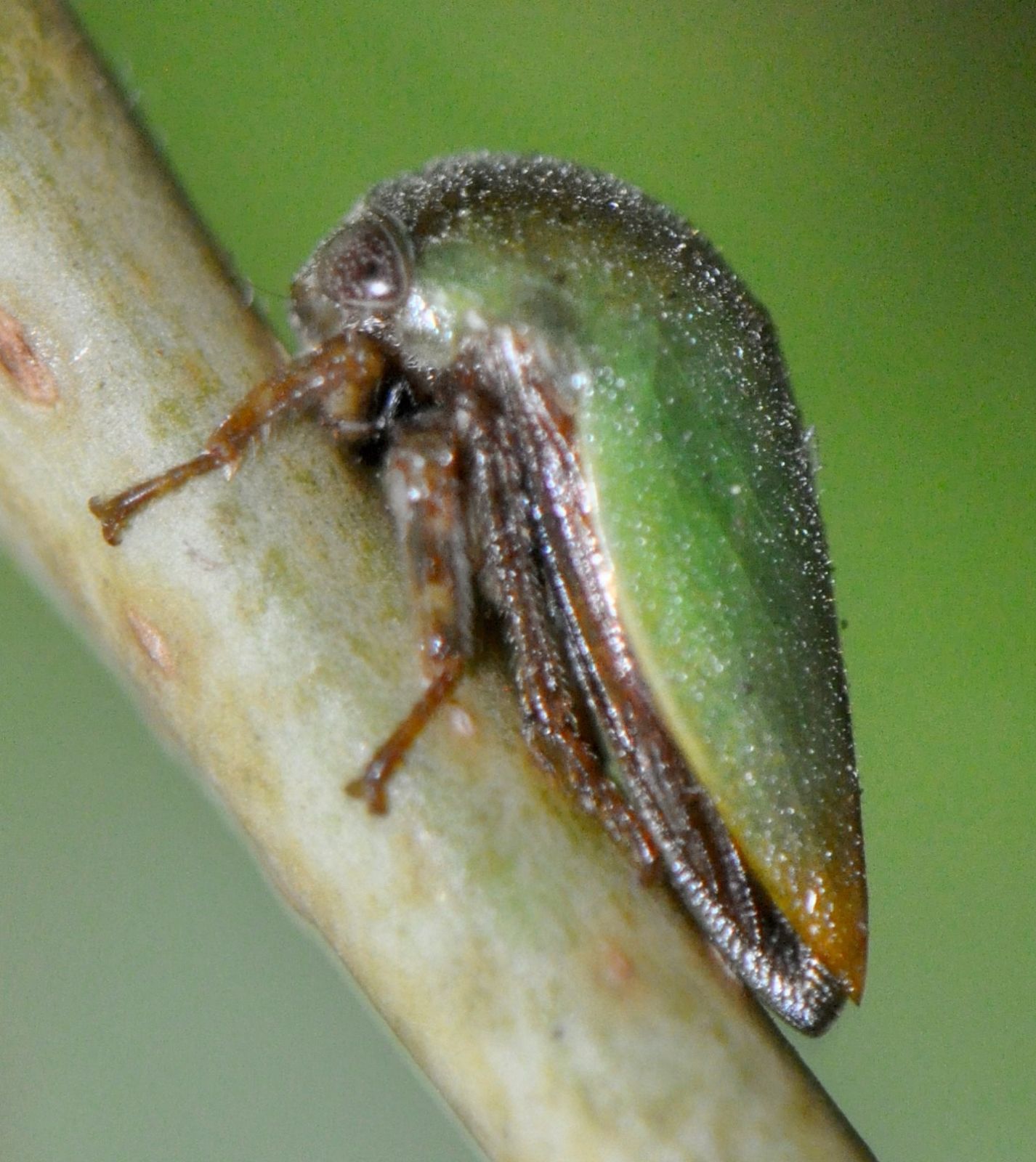 2
2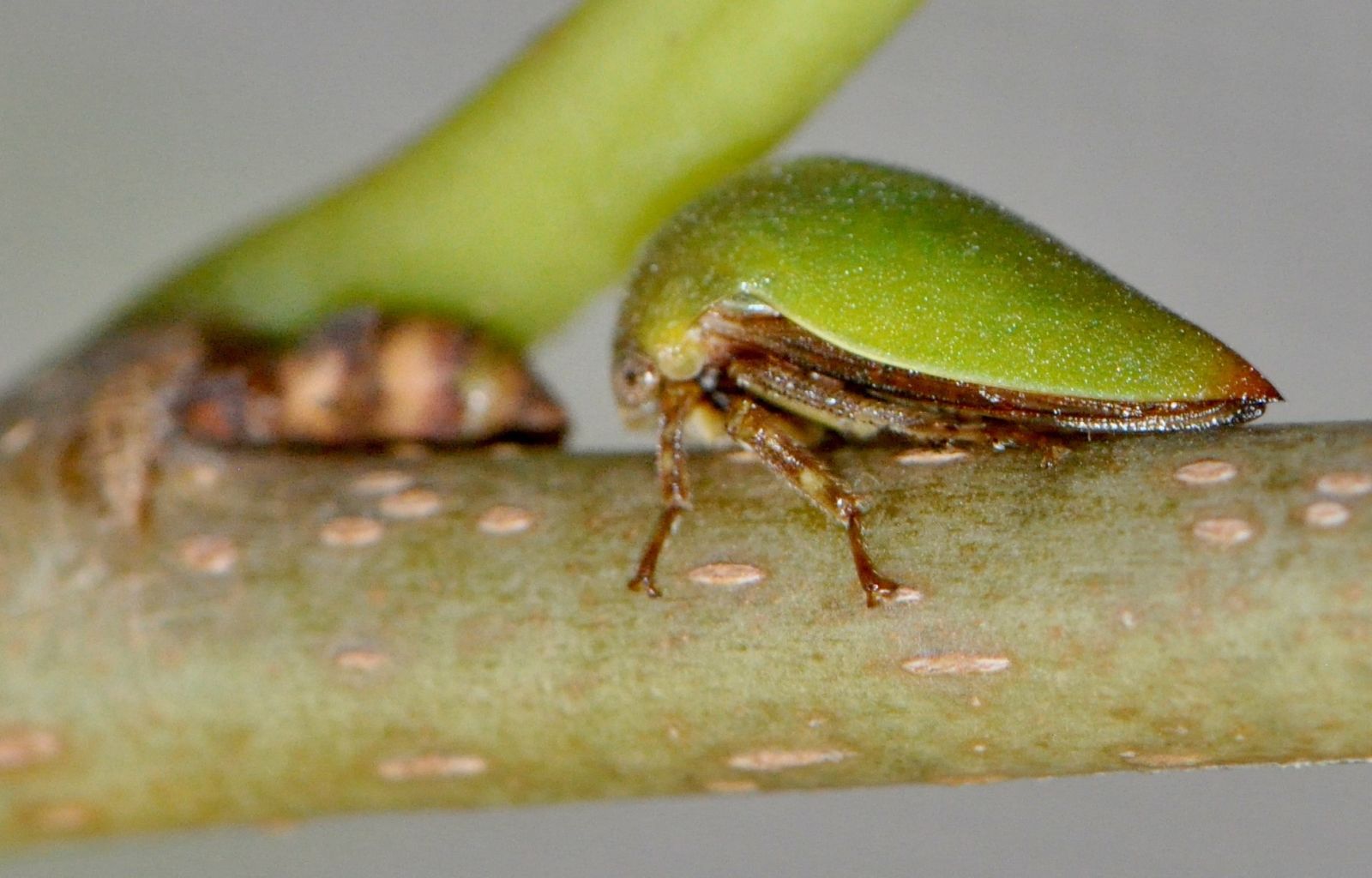 3
3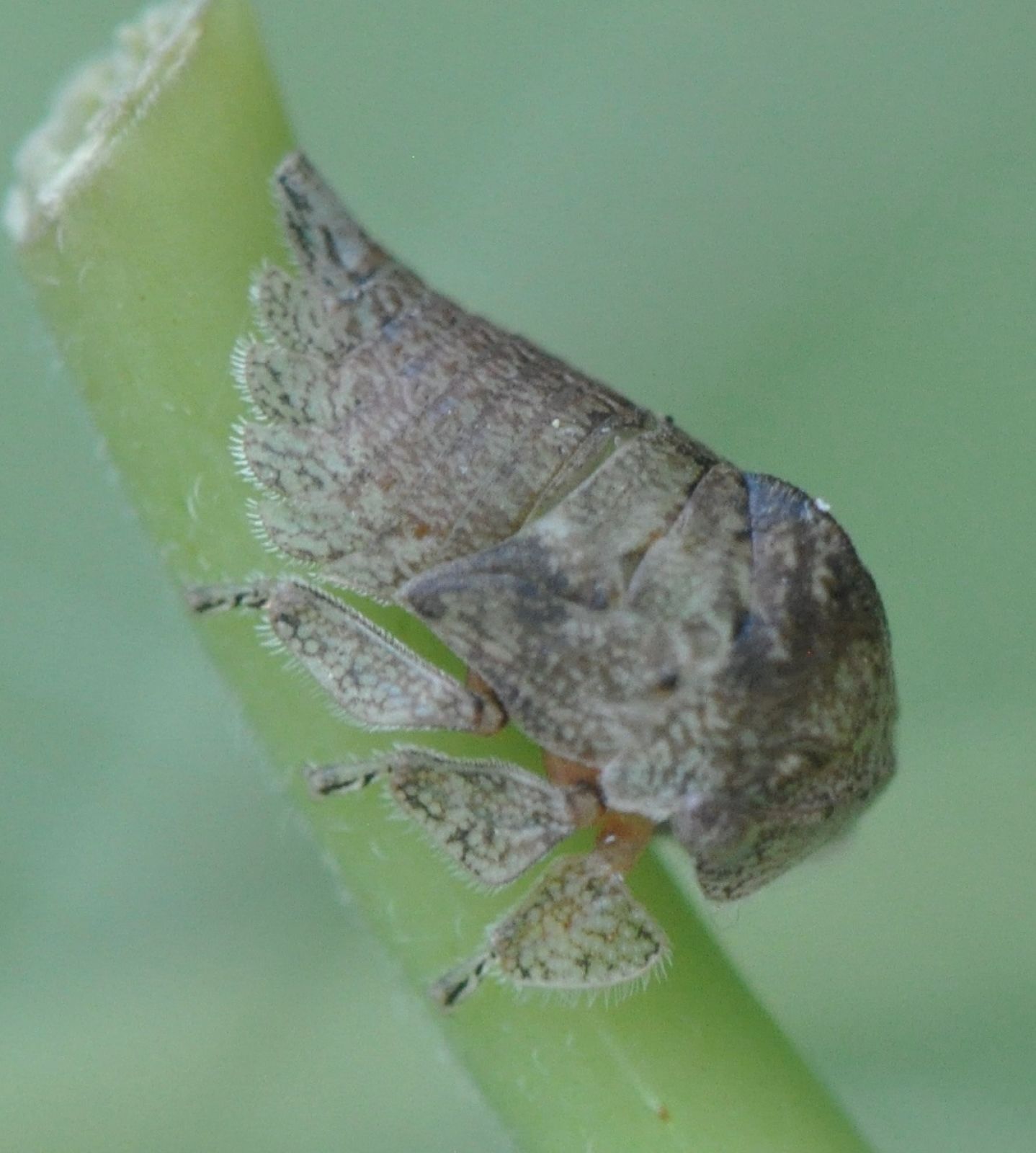
Figs. 1-3 Hebetica sylviae. 1-2, adults, lateral aspect; 3, nymph, lateral aspect. © Copyrights 2021, by Laura Sullivan-Beckers.
1
 2
2 3
3
Reminder: 17th International Auchenorrhyncha Congress: 1-5 April 2024, the Philippines
2023-10-27
Hello Treehopper Enthusiasts! In case some of you haven’t heard about the upcoming International Auchenorrhyncha Congress in the Philippines (April 2024) here’s a link to the website: https://sites.google.com/up.edu.ph/iacph2024. Registration deadline is December 31. Please consider attending and invite your friends! It would be great to see lots of presentations on treehoppers (the most interesting group of Auchenorrhyncha). [excerpt from a note by Chris Dietrich, 26 October 2023]
The eye-catching flyer below is from Vinton Thompson’s prior announcement in the Treehoppers news of 2023-04-09. Flyer Copyright © 2023, by the Organizing Committee of the 17th International Auchenorrhyncha Congress.

The eye-catching flyer below is from Vinton Thompson’s prior announcement in the Treehoppers news of 2023-04-09. Flyer Copyright © 2023, by the Organizing Committee of the 17th International Auchenorrhyncha Congress.

Eight Publications on Treehopper Pests (2023)
2023-12-02
Among treehoppers considered to be pests of economically important plants are certain species in the genera Horiola, Oxyrhachis, Spissistilus, and Stictocephala discussed in the works below.
Delgado, C.; Couturier, G.; Balcazar, L.; Chichipe, A. 2023a. Insect pests of Theobroma cacao (Malvaceae) in the Peruvian Amazon. Tropical Agriculture 100(2):110-114. [Available online] [According to this study, Horiola picta ranks among the seven most abundant pests on cocoa in the Peruvian Amazon, where: “They are abundant at the level of peduncle and young fruit, which makes it wither and dry.” Table 1 also has notes on other treehoppers: Cyphonia clavata, Bolbonota globosa, and Tropidaspis sp.]
Denton, S.; Raper, T. B.; Stewart, S.; Dodds, D. 2023a. Cover crop termination timings and methods effect on cotton (Gossypium hirsutum L.) development and yield. Crop, Forage and Turfgrass Management 9(1):[1-10 (pdf of online version)]. [Open access] [Field studies of cotton planted under various cover crop termination timings and methods in western Tennessee showed that damage from Spissistilus festinus (as Sissistilus [sic] festinus, threecornered alfalfa hopper, and three-cornered [sic] alfalfa hopper) was least prevalent in cotton that followed cover crops terminated 6 weeks prior to planting in a broadcast method.]
Flasco, M. T.; Cieniewicz, E. J.; Pethybridge, S. J.; Fuchs, M. F. 2023a. Distinct red blotch disease epidemiological dynamics in two nearby vineyards Viruses-Basel 15(5):[1-13 (pdf of online version] [Open access]
[Grapevine red blotch virus (GRBV) is transmitted by Spissistilus festinus, a treehopper commonly known as the threecornered alfalfa hopper. This study illustrated that the primary virus source in infected vineyards–whether through infected planting material or through treehopper-mediated transmission–influences the epidemiological dynamics of red blotch disease.]
Flasco, M. T.; Fuchs, M. F. 2023a. Two distinct genotypes of Spissistilus festinus (Say, 1830) reproduce and differentially transmit grapevine red blotch virus. Insects 14(10):[1-14 (pdf of online version)] [Open access]
[A pest on legumes in the southern states of the U.S. and a vector of grapevine red blotch virus (GRBV) in California, S. festinus packs a double whammy. This pest has two genetically distinct, but phenotypically similar distinct genotypes: CA (the California genotype) and SE (the Southeast genotype). Experiments demonstrated that these two genotypes are sexually compatible, producing offspring with clear GRBV transmission abilities, underscoring the need to determine if the two geneotypes may already coexist in the Southeast.].
Flasco, M. T.; Hoyle, V.; Cieniewicz, E. J.; Loeb, G.; McLane, H.; Perry, K.; Fuchs, M. F. 2023b. The three-cornered alfalfa hopper, Spissistilus festinus, is a vector of grapevine red blotch virus in vineyards. Viruses-Basel 15(4):[1-18 (pdf of online version)] [Open access]
[The title of this publication, based on research in vineyards in California and New York, sums up its findings. Although the authors differ, this paper is purposely designated “2023b” (as in “Flasco et al. 2023b”) to avoid possible confusion with the multiple author paper by “Flasco et al. 2023a,” above.]
Ikram, M.; Yousuf, M.; Khan, S. 2023a. An egg parasitoid,Mirufens Girault (Hymenoptera: Trichogrammatidae) reared from Oxyrachis tarandus [sic: Oxyrhachis taranda] Fab. attacking on [sic] Cassia fistula L. (India). Journal of the Entomological Research Society 25(2):305-312. [Available online] [The Old World treehopper Oxyrhachis taranada is a pest on various plants including Cassia fistula, a tree widely used in traditional medicines. This publication provides the first record of Mirufens afrangiata (Trichogramatidae) attacking the eggs of O. taranda (as tarandus) on C. fistula (a new “host plant record”) and a key to four species of Mirufens, including M. afrangiata and M. brevifuniculata, both parasitods of O. taranda eggs.]
Sisterson, M. S.; Dwyer, D.; Uchima, S. Y. 2023a. Evaluation of alfalfa fields and pastures as sources of Spissistilus festinus (Hemiptera: Membracidae): quantification of reproductive and nutritional parameters. Environmental Entomolgy 5(1): 119-128. [https://doi.org/10.1093/ee/nvac104] [This study focuses on the threecornered alfalfa hopper (S. festinus) in the Central Valley of California, where this treehopper is a vector of grapevine red blotch virus.]
Zhuravleva, E. N.; Gnezdilov, V. M.; Tishechkin, D. Y.; Mikhailenko, A. P.; Shoshina, E. I.; Karpun, N. N.; Musolin, D. L. 2023a. First records of Graphocephala fennahi Young, 1977 and Pochazia shantungensis (Chou & Lu, 1977) (Hemiptera: Cicadellidae, Ricaniidae) in Russia. Bulletin OEPP 53(1):139-144. [Open access] [Among six species of Auchenorrhyncha introduced to Russia, the only membracid, Stictocephala bisonia, is of Nearctic origin (where this pest is commonly known as the buffalo treehopper).]
Delgado, C.; Couturier, G.; Balcazar, L.; Chichipe, A. 2023a. Insect pests of Theobroma cacao (Malvaceae) in the Peruvian Amazon. Tropical Agriculture 100(2):110-114. [Available online] [According to this study, Horiola picta ranks among the seven most abundant pests on cocoa in the Peruvian Amazon, where: “They are abundant at the level of peduncle and young fruit, which makes it wither and dry.” Table 1 also has notes on other treehoppers: Cyphonia clavata, Bolbonota globosa, and Tropidaspis sp.]
Denton, S.; Raper, T. B.; Stewart, S.; Dodds, D. 2023a. Cover crop termination timings and methods effect on cotton (Gossypium hirsutum L.) development and yield. Crop, Forage and Turfgrass Management 9(1):[1-10 (pdf of online version)]. [Open access] [Field studies of cotton planted under various cover crop termination timings and methods in western Tennessee showed that damage from Spissistilus festinus (as Sissistilus [sic] festinus, threecornered alfalfa hopper, and three-cornered [sic] alfalfa hopper) was least prevalent in cotton that followed cover crops terminated 6 weeks prior to planting in a broadcast method.]
Flasco, M. T.; Cieniewicz, E. J.; Pethybridge, S. J.; Fuchs, M. F. 2023a. Distinct red blotch disease epidemiological dynamics in two nearby vineyards Viruses-Basel 15(5):[1-13 (pdf of online version] [Open access]
[Grapevine red blotch virus (GRBV) is transmitted by Spissistilus festinus, a treehopper commonly known as the threecornered alfalfa hopper. This study illustrated that the primary virus source in infected vineyards–whether through infected planting material or through treehopper-mediated transmission–influences the epidemiological dynamics of red blotch disease.]
Flasco, M. T.; Fuchs, M. F. 2023a. Two distinct genotypes of Spissistilus festinus (Say, 1830) reproduce and differentially transmit grapevine red blotch virus. Insects 14(10):[1-14 (pdf of online version)] [Open access]
[A pest on legumes in the southern states of the U.S. and a vector of grapevine red blotch virus (GRBV) in California, S. festinus packs a double whammy. This pest has two genetically distinct, but phenotypically similar distinct genotypes: CA (the California genotype) and SE (the Southeast genotype). Experiments demonstrated that these two genotypes are sexually compatible, producing offspring with clear GRBV transmission abilities, underscoring the need to determine if the two geneotypes may already coexist in the Southeast.].
Flasco, M. T.; Hoyle, V.; Cieniewicz, E. J.; Loeb, G.; McLane, H.; Perry, K.; Fuchs, M. F. 2023b. The three-cornered alfalfa hopper, Spissistilus festinus, is a vector of grapevine red blotch virus in vineyards. Viruses-Basel 15(4):[1-18 (pdf of online version)] [Open access]
[The title of this publication, based on research in vineyards in California and New York, sums up its findings. Although the authors differ, this paper is purposely designated “2023b” (as in “Flasco et al. 2023b”) to avoid possible confusion with the multiple author paper by “Flasco et al. 2023a,” above.]
Ikram, M.; Yousuf, M.; Khan, S. 2023a. An egg parasitoid,Mirufens Girault (Hymenoptera: Trichogrammatidae) reared from Oxyrachis tarandus [sic: Oxyrhachis taranda] Fab. attacking on [sic] Cassia fistula L. (India). Journal of the Entomological Research Society 25(2):305-312. [Available online] [The Old World treehopper Oxyrhachis taranada is a pest on various plants including Cassia fistula, a tree widely used in traditional medicines. This publication provides the first record of Mirufens afrangiata (Trichogramatidae) attacking the eggs of O. taranda (as tarandus) on C. fistula (a new “host plant record”) and a key to four species of Mirufens, including M. afrangiata and M. brevifuniculata, both parasitods of O. taranda eggs.]
Sisterson, M. S.; Dwyer, D.; Uchima, S. Y. 2023a. Evaluation of alfalfa fields and pastures as sources of Spissistilus festinus (Hemiptera: Membracidae): quantification of reproductive and nutritional parameters. Environmental Entomolgy 5(1): 119-128. [https://doi.org/10.1093/ee/nvac104] [This study focuses on the threecornered alfalfa hopper (S. festinus) in the Central Valley of California, where this treehopper is a vector of grapevine red blotch virus.]
Zhuravleva, E. N.; Gnezdilov, V. M.; Tishechkin, D. Y.; Mikhailenko, A. P.; Shoshina, E. I.; Karpun, N. N.; Musolin, D. L. 2023a. First records of Graphocephala fennahi Young, 1977 and Pochazia shantungensis (Chou & Lu, 1977) (Hemiptera: Cicadellidae, Ricaniidae) in Russia. Bulletin OEPP 53(1):139-144. [Open access] [Among six species of Auchenorrhyncha introduced to Russia, the only membracid, Stictocephala bisonia, is of Nearctic origin (where this pest is commonly known as the buffalo treehopper).]
Two Dissertations on Treehoppers and New Publications on Treehopper Pronota (2023)
2023-12-03
Dissertations: Congratulations to Micah Fletcher (see archive of past treehopper news: group photo dated 2017-07-24) and Anna Kudla (see archive of past treehopper news: dated 2022-08-15 and group photo dated 2019-11-13), both of whom completed doctoral dissertations on treehoppers in early 2023.
Fletcher, M. P. 2023 [unpublished dissertation]. Ant Mutualism and the Evolution of Parental Care in Treehoppers: Integrating Behavioral Ecology, Comparative Genomics, and Phylogenetic History. Ph. D. dissertation, Department of Quantitative Computational Biology, Princeton University, New Jersey. 171 pp. [Available online]
Kudla, A. M. 2023 [unpublished dissertation]. Development and Evolution of the Membracid Pronotum. Ph. D. dissertation, Department of Biology, Duke University, N.C. 166 pp. [see Kudla et al. 2023a, 2023b, below]
New Publications on Treehopper Pronota
De-la-Mora, M.; Pinero, D. 2023a. Helmet shape and phylogeography of the treehopper Membracis mexicana. Insects 14(8): 1-15. [Open access]
[This study shows Membracis mexicana occurs in four of 14 biogeographic provinces of Mexico where it represents two genetic lineages, but three different pronotal morphotypes. The western genetic lineage (Trans-Mexican Volcanic Belt and Pacific lowlands provinces) includes two pronotal morphotypes: (1) pronotum large, wide, bearing small dorsal spots and (2) pronotum smaller, narrow, bearing large dorsal spots. The southeastern lineage (Veracruzan and Yucatan Peninsula provinces) includes only the smallest pronotal form: (3) small, narrow, bearing small spots.]
DiFrisco, J.;Wagner, G. P.; Love, A. C. 2023a. Reframing research on evolutionary novelty and co-option: character identity mechanisms versus deep homology. Seminars in Cell and Developmental Biology 145: 3-12. [Open access]
[This review paper evaluates previous studies on the evolution of treehopper pronota (and pronotal horns of beetles).]
Kudla, A. M.; Miranda, X.; Nijhout, H. F. 2023a. Ontogenetic trajectories and early shape differentiation of treehopper pronota (Hemiptera: Membracidae). Evolution and Development 25(3): 240-252. [https://onlinelibrary.wiley.com/doi/10.1111/ede.12431; see also authors’ correction, below, 2023b]
[This study is based on the pronotal ontogeny of the membracid genera Membracis, Ennya, Polyglypta, Metheisa, and Entylia. and the aetalionid genus Aetalion.]
Kudla, A. M.; Miranda, X.; Nijhout, H. F. 2023b. Erratum to “Ontogenetic trajectories and early shape differentiation of treehopper pronota (Hemiptera: Membracidae).” Evolution and Development 25(4-5):328. [https://doi.org/10.1111/ede.12451: corrects the authors’ contributions section of the 2023a paper, above]
Fletcher, M. P. 2023 [unpublished dissertation]. Ant Mutualism and the Evolution of Parental Care in Treehoppers: Integrating Behavioral Ecology, Comparative Genomics, and Phylogenetic History. Ph. D. dissertation, Department of Quantitative Computational Biology, Princeton University, New Jersey. 171 pp. [Available online]
Kudla, A. M. 2023 [unpublished dissertation]. Development and Evolution of the Membracid Pronotum. Ph. D. dissertation, Department of Biology, Duke University, N.C. 166 pp. [see Kudla et al. 2023a, 2023b, below]
New Publications on Treehopper Pronota
De-la-Mora, M.; Pinero, D. 2023a. Helmet shape and phylogeography of the treehopper Membracis mexicana. Insects 14(8): 1-15. [Open access]
[This study shows Membracis mexicana occurs in four of 14 biogeographic provinces of Mexico where it represents two genetic lineages, but three different pronotal morphotypes. The western genetic lineage (Trans-Mexican Volcanic Belt and Pacific lowlands provinces) includes two pronotal morphotypes: (1) pronotum large, wide, bearing small dorsal spots and (2) pronotum smaller, narrow, bearing large dorsal spots. The southeastern lineage (Veracruzan and Yucatan Peninsula provinces) includes only the smallest pronotal form: (3) small, narrow, bearing small spots.]
DiFrisco, J.;Wagner, G. P.; Love, A. C. 2023a. Reframing research on evolutionary novelty and co-option: character identity mechanisms versus deep homology. Seminars in Cell and Developmental Biology 145: 3-12. [Open access]
[This review paper evaluates previous studies on the evolution of treehopper pronota (and pronotal horns of beetles).]
Kudla, A. M.; Miranda, X.; Nijhout, H. F. 2023a. Ontogenetic trajectories and early shape differentiation of treehopper pronota (Hemiptera: Membracidae). Evolution and Development 25(3): 240-252. [https://onlinelibrary.wiley.com/doi/10.1111/ede.12431; see also authors’ correction, below, 2023b]
[This study is based on the pronotal ontogeny of the membracid genera Membracis, Ennya, Polyglypta, Metheisa, and Entylia. and the aetalionid genus Aetalion.]
Kudla, A. M.; Miranda, X.; Nijhout, H. F. 2023b. Erratum to “Ontogenetic trajectories and early shape differentiation of treehopper pronota (Hemiptera: Membracidae).” Evolution and Development 25(4-5):328. [https://doi.org/10.1111/ede.12451: corrects the authors’ contributions section of the 2023a paper, above]
Five Publications on Brazilian Treehoppers (2023)
2023-12-04
In light of the amazing biodiversity of the Brazilian treehopper fauna at the levels of subfamily, tribe, genus, and species, it is fantastic to see the following contributions for 2023:
Creão-Duarte, A. J.; Lourenço, Aline; Rothéa, R. R. de A. D.; Pereira-Colavite, A. 2023a. Treehoppers (Hemiptera, Auchenorrhyncha: Aetalionidae and Membracidae) from western Acre, Brazil, with emphasis on the fauna of Serra do Divisor National Park. Biota Neotropica 23(3):[1-28 (pdf of online version)]. [Available online.]
[As the first list of treehoppers from Acre, Brazil, this exceptionally useful resource provides information on distribution and at least one color image for each of the 94 included species: Aetalionidae (9 species/2 genera) and Membracidae (85 species/49 genera). Where morphologically distinct entities could not be confidently placed in a previously described species, they were assigned a species number within the appropriate genus. New treehopper records given for Brazil include: Abelus maculatus (the first member of the subfamily Centrotinae officially reported for Brazil) and 16 other species from other membracid subfamilies. A total of 69 treehopper species represent new records for the state of Acre.]
Use the following link to the search the interactive Catálogo Taxonômico da Fauna do Brasil, which includes the following publications by Evangelista et al. (2023a, 2023b) on the hemipteran families Aetalionidae and Membracidae: Search page: select English (EN) or Portuguese (PT) in the upper right.
Evangelista, O.; Sakakibara, A.; Takiya, D. M.; Antunes, A. F. 2023a. Aetalionidae in Catálogo Taxonômico da Fauna do Brasil. PNUD. [Online publication (accessed 4 Dec. 2023).]
[In early October 2023, this online catalog of Brazilian Aetalionidae listed 16 species in 5 genera (Creão-Duarte et al. 2023a). Users should be aware that this dynamic resource is a work in progress, still early in its development.]
Evangelista, O.; Sakakibara, A.; Takiya, D. M.; Antunes, A. F. 2023b. Membracidae in Catálogo Taxonômico da Fauna do Brasil. PNUD. [Online publication (accessed 4 Dec. 2023).]
[In early October 2023, this online catalog of Brazilian Membracidae listed 701 species in 124 genera (Creão-Duarte et al. 2023a). A collaborative work in progress, this interactive catalog is in its early stages of development as an essential resource on Brazilian membracids.]
Lima, L. D.; Ceballos-González, A. V.; Prato, A.; Kaminski, L. A.; do Nascimento, F. S. 2023a. Plant–treehopper convergence may trick butterflies into trophic oviposition mistakes. Biotropica 55(2):292–298. [https://doi.org/10.1111/btp.13194]
["Oops! Sorry little hopper, I thought you were my favorite host plant..." Studying the chemical cues of treehoppers and their host plants in infrequent instances where plant-feeding myrmecophilous butterflies mistakenly deposited their eggs on Brazilian treehopper nymphs (Enchenopa concolor and E. gracilis), the authors confirmed that the cuticular hydrocarbon (CHC) profile of each treehopper species resembled the CHC profile of its particular host plant. The article also has notes on another Neotropical treehopper, Guayaquila xiphias, and two Australian species, Sextius virescens and Terentius sp.]
Moura, R. F.; Santos, L. R. dos; Costa Silva, V. M. da; Fagundes, R.; Del-Claro, K. 2023a. Extrafloral nectaries exhibit dual ecological functions in a plant from the Brazilian Cerrado. Arthropod-Plant Interactions 17(3):301-311. [https://doi.org/10.1007/s11829-023-09965-w]
[Experiments to determine the role of the extrafloral nectaries in a Brazilian plant (Banisteriopsis malifolia) involved a honeydew-producing treehopper (Enchenopa sp., commonly found on the plant’s reproductive parts) as well as numerous ants that feed on both the extrafloral nectaries and the treehopper’s honeydew.]
Creão-Duarte, A. J.; Lourenço, Aline; Rothéa, R. R. de A. D.; Pereira-Colavite, A. 2023a. Treehoppers (Hemiptera, Auchenorrhyncha: Aetalionidae and Membracidae) from western Acre, Brazil, with emphasis on the fauna of Serra do Divisor National Park. Biota Neotropica 23(3):[1-28 (pdf of online version)]. [Available online.]
[As the first list of treehoppers from Acre, Brazil, this exceptionally useful resource provides information on distribution and at least one color image for each of the 94 included species: Aetalionidae (9 species/2 genera) and Membracidae (85 species/49 genera). Where morphologically distinct entities could not be confidently placed in a previously described species, they were assigned a species number within the appropriate genus. New treehopper records given for Brazil include: Abelus maculatus (the first member of the subfamily Centrotinae officially reported for Brazil) and 16 other species from other membracid subfamilies. A total of 69 treehopper species represent new records for the state of Acre.]
Use the following link to the search the interactive Catálogo Taxonômico da Fauna do Brasil, which includes the following publications by Evangelista et al. (2023a, 2023b) on the hemipteran families Aetalionidae and Membracidae: Search page: select English (EN) or Portuguese (PT) in the upper right.
Evangelista, O.; Sakakibara, A.; Takiya, D. M.; Antunes, A. F. 2023a. Aetalionidae in Catálogo Taxonômico da Fauna do Brasil. PNUD. [Online publication (accessed 4 Dec. 2023).]
[In early October 2023, this online catalog of Brazilian Aetalionidae listed 16 species in 5 genera (Creão-Duarte et al. 2023a). Users should be aware that this dynamic resource is a work in progress, still early in its development.]
Evangelista, O.; Sakakibara, A.; Takiya, D. M.; Antunes, A. F. 2023b. Membracidae in Catálogo Taxonômico da Fauna do Brasil. PNUD. [Online publication (accessed 4 Dec. 2023).]
[In early October 2023, this online catalog of Brazilian Membracidae listed 701 species in 124 genera (Creão-Duarte et al. 2023a). A collaborative work in progress, this interactive catalog is in its early stages of development as an essential resource on Brazilian membracids.]
Lima, L. D.; Ceballos-González, A. V.; Prato, A.; Kaminski, L. A.; do Nascimento, F. S. 2023a. Plant–treehopper convergence may trick butterflies into trophic oviposition mistakes. Biotropica 55(2):292–298. [https://doi.org/10.1111/btp.13194]
["Oops! Sorry little hopper, I thought you were my favorite host plant..." Studying the chemical cues of treehoppers and their host plants in infrequent instances where plant-feeding myrmecophilous butterflies mistakenly deposited their eggs on Brazilian treehopper nymphs (Enchenopa concolor and E. gracilis), the authors confirmed that the cuticular hydrocarbon (CHC) profile of each treehopper species resembled the CHC profile of its particular host plant. The article also has notes on another Neotropical treehopper, Guayaquila xiphias, and two Australian species, Sextius virescens and Terentius sp.]
Moura, R. F.; Santos, L. R. dos; Costa Silva, V. M. da; Fagundes, R.; Del-Claro, K. 2023a. Extrafloral nectaries exhibit dual ecological functions in a plant from the Brazilian Cerrado. Arthropod-Plant Interactions 17(3):301-311. [https://doi.org/10.1007/s11829-023-09965-w]
[Experiments to determine the role of the extrafloral nectaries in a Brazilian plant (Banisteriopsis malifolia) involved a honeydew-producing treehopper (Enchenopa sp., commonly found on the plant’s reproductive parts) as well as numerous ants that feed on both the extrafloral nectaries and the treehopper’s honeydew.]
Publications on Courtship and Mating Behavior in Enchenopa Treehoppers (2023)
2024-01-28
Five of the references listed below (marked with an *asterisk) are abstracts from annual meetings of the Society of Integrative and Comparative Biology (SICB). During 2023, the SICB published its “2022 Annual Meeting Abstracts” in “Integrative and Comparative Biology,” Vol. 62, (Supplement 1): paged S1-S363 [advance access: 21 February 2023: https://doi.org/10.1093/icb/icad001] and its “2023 Annual Meeting Abstracts” in “Integrative and Comparative Biology,” Vol. 63, (Supplement 1): paged S1-S522 [advance access: 16 March 2023: https://doi.org/10.1093/icb/icad002].
Although all five of these meeting abstracts concern courtship behavior in the treehopper genus Enchenopa (Membracidae), some of the paper titles lack one, two, or all of the three scientific or common names (in bold) and thus seem unlikely to be retrieved in keyword searches of the literature using these taxon names.
To encourage the creation of more informative paper titles--not just in meeting abstracts, we here purpose our first “Willy Wunkhouser Award” for “Best Abstract Title on Enchenopa at a SCIB Annual Meeting in 2022 or 2023." This nonsensical, first-ever, yet highly-coveted award goes to *Little and Rodriguez (2023a) for exhibiting treehopper pride by including all three taxon names in their title. Good reporting tells “what, why, where, when, who, and how,” with “what” being at the forefront. Nonetheless, we do not advise the use of a new taxon name in the title of its original description (or the title of any abstract), if there is any chance that another worker might inadvertently publish that new name elsewhere before the taxon is formally described in the sense of International Code of Zoological Nomenclature.
*Cirino, L. [A.]; Gallagher, I.; Desjonquéres, C.; Rodriguez, R. [L.] 2023a. Means and opportunity but no motive for mate choice copying. Integrative and Comparative Biology 63(suppl. 1): S85. [Meeting abstract: on Enchenopa]
*Cirino, L. A.; Rodriguez, R. L. 2023a. Monandrous females regain sexual receptivity after short copulations. Integrative and Comparative Biology 62(suppl. 1): S57. [Meeting abstract: on Enchenopa]
*Escalante, I.; Kellner, J.; Desjonquéres, C.; Rodriguez, R. [L.] 2023a. The function of a female-mimic signal type in the vibrational repertoire of male treehoppers. Integrative and Comparative Biology 63(suppl. 1): S132-S133. [Meeting abstract: this research on males of Enchenopa suggests their female-mimic signal may afford them positive motivational feedback.]
Desjonquéres, C.; Speck, B.; Seidita, S.; Cirino, L. A.; Escalante, I.; Sergi, C.; Maliszewski, J; Wiese, C.; Hoebel, G.; Bailey, N. W.; Rodriguez, R. L. 2023a. Social plasticity enhances signal-preference codivergence. American Naturalist 202(6): 818-829. [early access: Dec. 2023: https://doi.org/10.1086/726786 ]
[Treehopper species communicate by way of plant-borne vibrational signals. This study focused on two recently derived species of the Enchenopa binotata complex, both of which feed on Viburnum lentago. Although neither species has yet been formally described, they differ in nymphal coloration and the frequencies (~165 or 275 HZ) of their male signals. An environmental treatment in which a mix of both species were reared together on V. lentago was compared to treatments in which only aggregations of one of the two species were reared. The mixed-species treatment resulted in enhanced signal preference species differences. Further tests involving only one of the two species showed no differences in response between sympatric and allopatric sites.]
*Little, D.; Rodriguez, R. [L.] 2023a. Maternal effects on mating signals and mate preferences in Enchenopa treehoppers (Membracidae). Integrative and Comparative Biology 63(suppl. 1): S274. [Meeting abstract]
Macchiano, A.; Miller, E.; Agali, U.; Ola-Ajose, A.; Fowler-Finn, K. D. 2023a. Developmental temperature alters the thermal sensitivity of courtship activity and signal-preference relationships, but not mating rates. Oecologia 202(1): 97-111. [https://doi.org/10.1007/s00442-023-05376-z]
[These workers explored the impact of altered temperature variation on one [of two] as yet undescribed species of the Enchenopa binotata species complex that feed on Ptelea foliata. In males, developmental temperature affected thermal sensitivity as well as their mating signals, but females showed no change in either their thermal sensitivity of courtship activity or mate preference.]
*Seidita, S; Rodriguez, R. [L.] 2023a. Enchenopa use spontaneous signals to re-establish duetting communication during wind-induced noise. Integrative and Comparative Biology 63(suppl. 1): S415. [Meeting abstract]
Although all five of these meeting abstracts concern courtship behavior in the treehopper genus Enchenopa (Membracidae), some of the paper titles lack one, two, or all of the three scientific or common names (in bold) and thus seem unlikely to be retrieved in keyword searches of the literature using these taxon names.
To encourage the creation of more informative paper titles--not just in meeting abstracts, we here purpose our first “Willy Wunkhouser Award” for “Best Abstract Title on Enchenopa at a SCIB Annual Meeting in 2022 or 2023." This nonsensical, first-ever, yet highly-coveted award goes to *Little and Rodriguez (2023a) for exhibiting treehopper pride by including all three taxon names in their title. Good reporting tells “what, why, where, when, who, and how,” with “what” being at the forefront. Nonetheless, we do not advise the use of a new taxon name in the title of its original description (or the title of any abstract), if there is any chance that another worker might inadvertently publish that new name elsewhere before the taxon is formally described in the sense of International Code of Zoological Nomenclature.
*Cirino, L. [A.]; Gallagher, I.; Desjonquéres, C.; Rodriguez, R. [L.] 2023a. Means and opportunity but no motive for mate choice copying. Integrative and Comparative Biology 63(suppl. 1): S85. [Meeting abstract: on Enchenopa]
*Cirino, L. A.; Rodriguez, R. L. 2023a. Monandrous females regain sexual receptivity after short copulations. Integrative and Comparative Biology 62(suppl. 1): S57. [Meeting abstract: on Enchenopa]
*Escalante, I.; Kellner, J.; Desjonquéres, C.; Rodriguez, R. [L.] 2023a. The function of a female-mimic signal type in the vibrational repertoire of male treehoppers. Integrative and Comparative Biology 63(suppl. 1): S132-S133. [Meeting abstract: this research on males of Enchenopa suggests their female-mimic signal may afford them positive motivational feedback.]
Desjonquéres, C.; Speck, B.; Seidita, S.; Cirino, L. A.; Escalante, I.; Sergi, C.; Maliszewski, J; Wiese, C.; Hoebel, G.; Bailey, N. W.; Rodriguez, R. L. 2023a. Social plasticity enhances signal-preference codivergence. American Naturalist 202(6): 818-829. [early access: Dec. 2023: https://doi.org/10.1086/726786 ]
[Treehopper species communicate by way of plant-borne vibrational signals. This study focused on two recently derived species of the Enchenopa binotata complex, both of which feed on Viburnum lentago. Although neither species has yet been formally described, they differ in nymphal coloration and the frequencies (~165 or 275 HZ) of their male signals. An environmental treatment in which a mix of both species were reared together on V. lentago was compared to treatments in which only aggregations of one of the two species were reared. The mixed-species treatment resulted in enhanced signal preference species differences. Further tests involving only one of the two species showed no differences in response between sympatric and allopatric sites.]
*Little, D.; Rodriguez, R. [L.] 2023a. Maternal effects on mating signals and mate preferences in Enchenopa treehoppers (Membracidae). Integrative and Comparative Biology 63(suppl. 1): S274. [Meeting abstract]
Macchiano, A.; Miller, E.; Agali, U.; Ola-Ajose, A.; Fowler-Finn, K. D. 2023a. Developmental temperature alters the thermal sensitivity of courtship activity and signal-preference relationships, but not mating rates. Oecologia 202(1): 97-111. [https://doi.org/10.1007/s00442-023-05376-z]
[These workers explored the impact of altered temperature variation on one [of two] as yet undescribed species of the Enchenopa binotata species complex that feed on Ptelea foliata. In males, developmental temperature affected thermal sensitivity as well as their mating signals, but females showed no change in either their thermal sensitivity of courtship activity or mate preference.]
*Seidita, S; Rodriguez, R. [L.] 2023a. Enchenopa use spontaneous signals to re-establish duetting communication during wind-induced noise. Integrative and Comparative Biology 63(suppl. 1): S415. [Meeting abstract]
Review of Obligate Mutualistic Symbionts in Treehoppers (2024)
2024-01-30
Brentassi, M.E.; de la Fuente, D. 2024a. Obligate mutualistic heritable symbiosis in sap-feeding insects: an intricate relationship in nature. Symbiosis (2024): [27 pages (not numbered in online version): https://doi.org/10.1007/s13199-023-00965-1.]
[This publication provides an extensive review of ancient and more recently derived symbiotic systems in the suborder Auchenorrhyncha, including treehoppers. A summary diagram illustrates the diversity of these endosymbionts mapped on a phylogeny of selected Auchenorrhyncha. That diagram includes four genera of Membracidae: Centrotus, Entylia, Gargara, and Stictocephala. The review’s list of references is a useful resource in itself, as it includes 192 papers. Among the more recent works cited that treat endosymbionts in treehoppers (including families Aetalionidae, Melizoderidae, and Membracidae) are: Cao and Dietrich 2022a; Kobiałka, Michalik, Świerczewski, and Szklarzewicz 2020a; Mao, Yang, Poff, and Bennett 2017a; Moran, Tran, and Gerardo 2005a; Salazar, Pupo, and Brown (2021a), and Szklarzewicz, Świerczewski, Stroiński, and Michalik 2020a.]
[This publication provides an extensive review of ancient and more recently derived symbiotic systems in the suborder Auchenorrhyncha, including treehoppers. A summary diagram illustrates the diversity of these endosymbionts mapped on a phylogeny of selected Auchenorrhyncha. That diagram includes four genera of Membracidae: Centrotus, Entylia, Gargara, and Stictocephala. The review’s list of references is a useful resource in itself, as it includes 192 papers. Among the more recent works cited that treat endosymbionts in treehoppers (including families Aetalionidae, Melizoderidae, and Membracidae) are: Cao and Dietrich 2022a; Kobiałka, Michalik, Świerczewski, and Szklarzewicz 2020a; Mao, Yang, Poff, and Bennett 2017a; Moran, Tran, and Gerardo 2005a; Salazar, Pupo, and Brown (2021a), and Szklarzewicz, Świerczewski, Stroiński, and Michalik 2020a.]
Five More "Must-See" 3D Membracidae
2024-02-04
Once again we are pleased to share terrific new interactive 3D models of treehoppers created by Milan Kozánek (CEO, VirNat, Bratislava, Slovakia). A collaborator of the Treehoppers Partnership since 2016, Milan previously shared images of Thuris, Ecuadorian stamps based on his treehopper photos, and most recently 3D models of three treehoppers from the Philippines (see archives of past news: dated 2016-02-16, 2016-02-18, 2016-03-03, and 2023-02-09).
Milan's latest 3D models (links below) are based on treehopper specimens from Peru (all identified by Stuart H. McKamey), As soon as a model has loaded, you can zoom and manipulate the treehopper using your computer mouse.
Enjoy viewing these hoppers from the perspective of a tiny mite, all thanks to the artistry and ingenuity of Milan Kozánek.
1. Cladonota apicalis, 3D model Copyright © 2024, by Milan Kozánek.
2. Ennya chrysura, 3D model Copyright © 2024, by Milan Kozánek.
.
3. Cladonota amazonica, 3D model Copyright © 2024, by Milan Kozánek.
4. Membracis sp., 3D model Copyright © 2024, by Milan Kozánek.
5. Nassunia sp., 3D model Copyright © 2024, by Milan Kozánek.
Milan's latest 3D models (links below) are based on treehopper specimens from Peru (all identified by Stuart H. McKamey), As soon as a model has loaded, you can zoom and manipulate the treehopper using your computer mouse.
Enjoy viewing these hoppers from the perspective of a tiny mite, all thanks to the artistry and ingenuity of Milan Kozánek.
1. Cladonota apicalis, 3D model Copyright © 2024, by Milan Kozánek.
2. Ennya chrysura, 3D model Copyright © 2024, by Milan Kozánek.
.
3. Cladonota amazonica, 3D model Copyright © 2024, by Milan Kozánek.
4. Membracis sp., 3D model Copyright © 2024, by Milan Kozánek.
5. Nassunia sp., 3D model Copyright © 2024, by Milan Kozánek.
Treehoppers in Dominican Amber
2024-02-21
When McKamey’s (1998a) “Catalogue of the Membracoidea” was published, all fossils previously described as treehoppers had been moved to other groups, however, a number of undescribed membracids were known from Dominican amber. A brief update on these fossil treehoppers follows.
Bechly, G. 2022a. Treehopper nymph in Dominican amber and the miracle of mimicry. Evolution News & Science 5 August 2022 [Paleontology: Fossil Friday; Available online.]
[This popular article from 2022 includes the first photo of the exuvia of an undescribed membracid nymph embedded in Dominican amber. Its looks “well-preserved” for being between 15 and 20 million years old!]
Boderau, M.; Nel, A. 2024a. The second treehopper species in Miocene Dominican amber (Hemiptera: Membracidae), Annales de la Société Entomologique de France (N.S.) https://doi.org/10.1080/00379271.2024.2305404; paged 1-5 (online version)]
[This publication describes the adult female of Stylocentrus pouilloni, a new treehopper belonging to the tribe Stegaspidini from mid-Miocene Dominican amber].
Wang, H.; Zhang, X.; Shih, C.; Dong, R.: Yao, Y. 2020a. A new species of Membracidae (Hemiptera: Cicadomorpha: Membracoidea) from Dominican amber. Historical Biology [online version https://doi.org/10.1080/08912963.2020.1803300" (published 6 Aug 2020; paged 1-5)]; print version Historical Biology 33(10); 2491-2495 (dated 2021).
[This work included the original description of the adult male of Stylocentrus hui, the first membracid described from Dominican amber. See archive of past news: item dated 2020-09-29.]
Bechly, G. 2022a. Treehopper nymph in Dominican amber and the miracle of mimicry. Evolution News & Science 5 August 2022 [Paleontology: Fossil Friday; Available online.]
[This popular article from 2022 includes the first photo of the exuvia of an undescribed membracid nymph embedded in Dominican amber. Its looks “well-preserved” for being between 15 and 20 million years old!]
Boderau, M.; Nel, A. 2024a. The second treehopper species in Miocene Dominican amber (Hemiptera: Membracidae), Annales de la Société Entomologique de France (N.S.) https://doi.org/10.1080/00379271.2024.2305404; paged 1-5 (online version)]
[This publication describes the adult female of Stylocentrus pouilloni, a new treehopper belonging to the tribe Stegaspidini from mid-Miocene Dominican amber].
Wang, H.; Zhang, X.; Shih, C.; Dong, R.: Yao, Y. 2020a. A new species of Membracidae (Hemiptera: Cicadomorpha: Membracoidea) from Dominican amber. Historical Biology [online version https://doi.org/10.1080/08912963.2020.1803300" (published 6 Aug 2020; paged 1-5)]; print version Historical Biology 33(10); 2491-2495 (dated 2021).
[This work included the original description of the adult male of Stylocentrus hui, the first membracid described from Dominican amber. See archive of past news: item dated 2020-09-29.]
2024 Update to Flynn’s 2012 Checklist of Treehoppers of Panama
2024-03-03
Flynn, D. J. 2024a. Updated checklist of treehoppers of Panama (Hemiptera: Membracidae) with plant associations. Zootaxa 5415(1):1–55. [https://www.mapress.com/zt/article/view/zootaxa.5415.1.1].
[This publication increases the number of treehopper taxa known for Panama to 100 genera, 313 species, and 2 subspecies. The paper provides the known province distribution data for each species and an extensive bibliography (more than 250 references) listing many published checklists and keys for identifying Nearctic and Neotropical treehoppers. Plant taxa associated with Panama treehoppers are listed by plant family and species indicating which treehopper taxa are associated with each plant. Flynn’s (2012a) checklist included 97 treehopper genera, 269 species, and 2 subspecies.
[This publication increases the number of treehopper taxa known for Panama to 100 genera, 313 species, and 2 subspecies. The paper provides the known province distribution data for each species and an extensive bibliography (more than 250 references) listing many published checklists and keys for identifying Nearctic and Neotropical treehoppers. Plant taxa associated with Panama treehoppers are listed by plant family and species indicating which treehopper taxa are associated with each plant. Flynn’s (2012a) checklist included 97 treehopper genera, 269 species, and 2 subspecies.
Polyodontotrochus: New Neotropical Treehopper Genus
2024-03-04
González-Mozo, L.; McKamey, S. H. 2024a. A new genus and four new species of Darnini (Hemiptera: Membracidae) from South America. Zootaxa 5415(1): 169–180. [https://doi.org/10.11646/zootaxa.5415.1.8].
Figs. 1-4. Polyodontotrochus spp. (anterior, dorsal, and lateral aspects): 1, P. elevatus; 2, P. auriculatus; 3, P. extentapalaestrus; 4, P. inpa. Fig. 5. P. elevatus, hind trochanters (note that the inner surfaces are flattened and bear numerous studlike dentae). [Photos by Alyssa Seemann, NOT_IN_COPYRIGHT (USDA 2024)].
1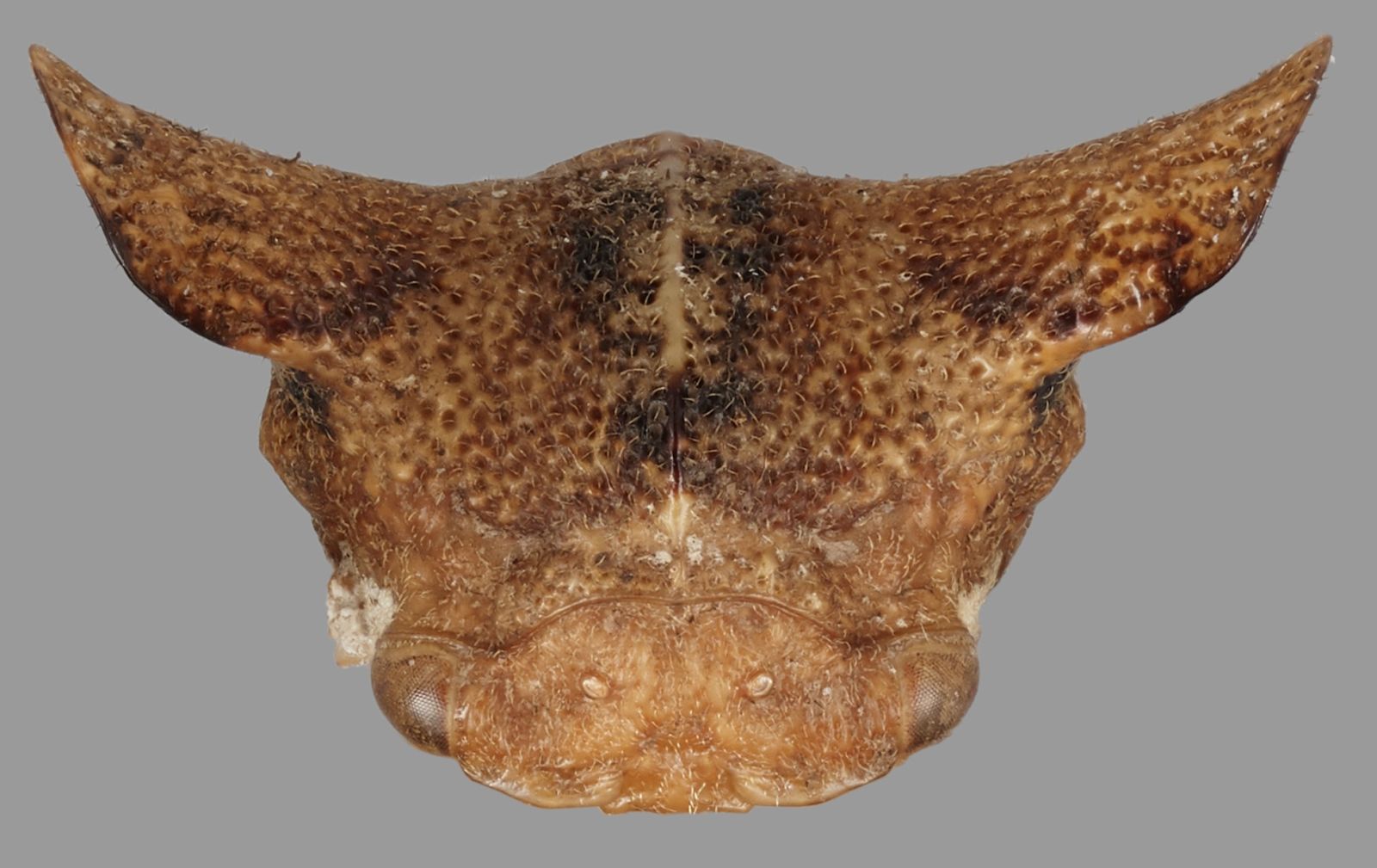
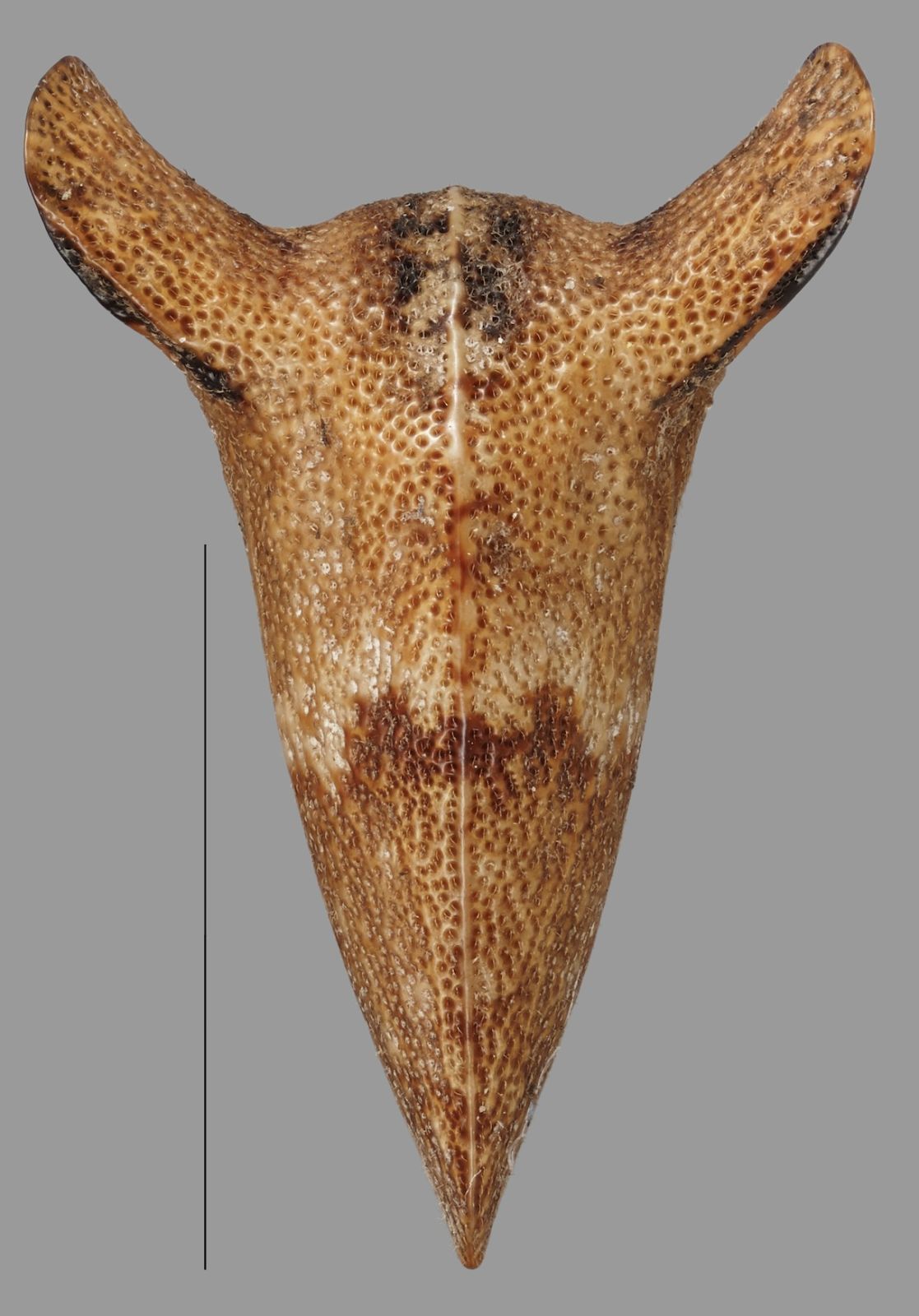
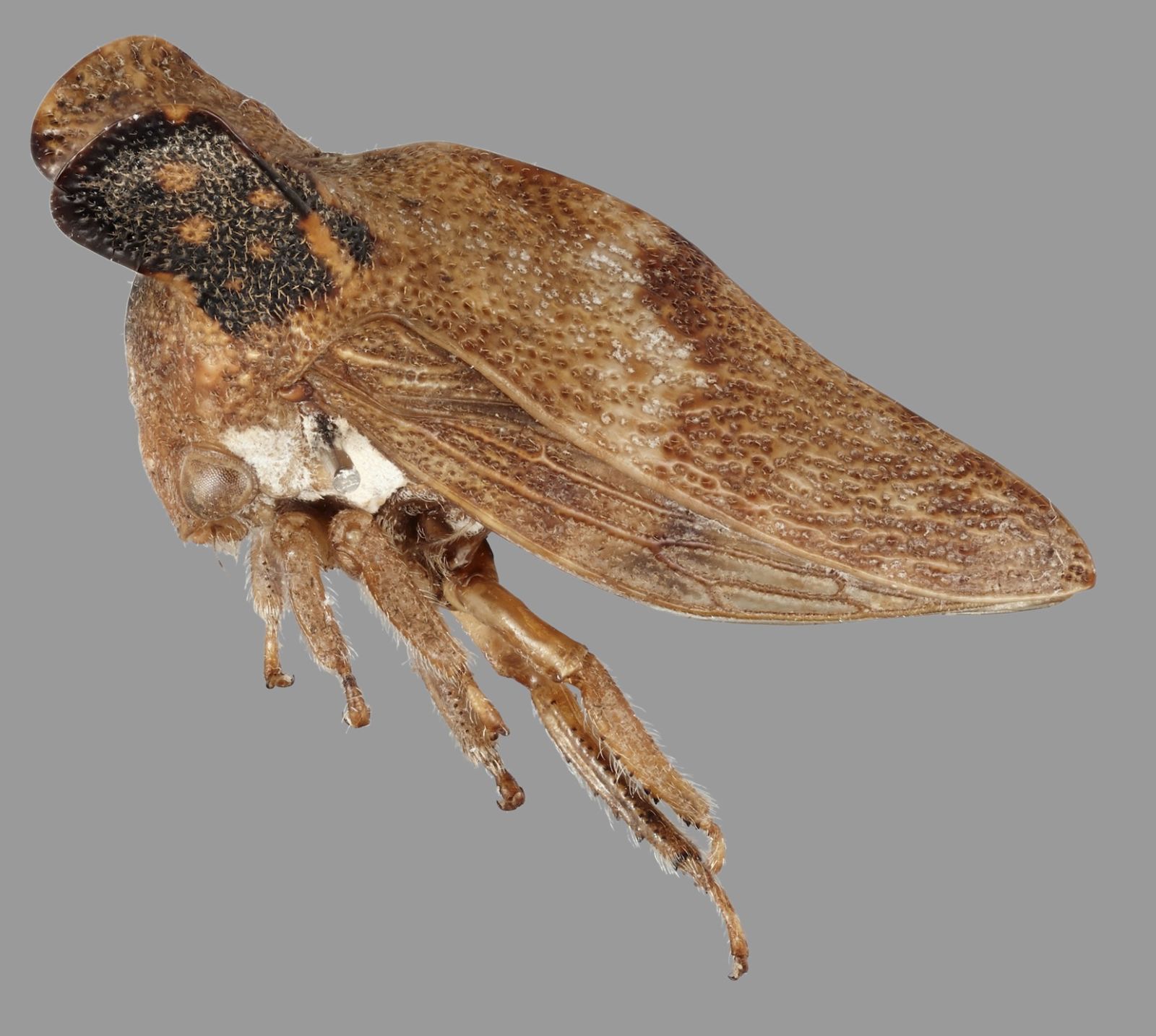
2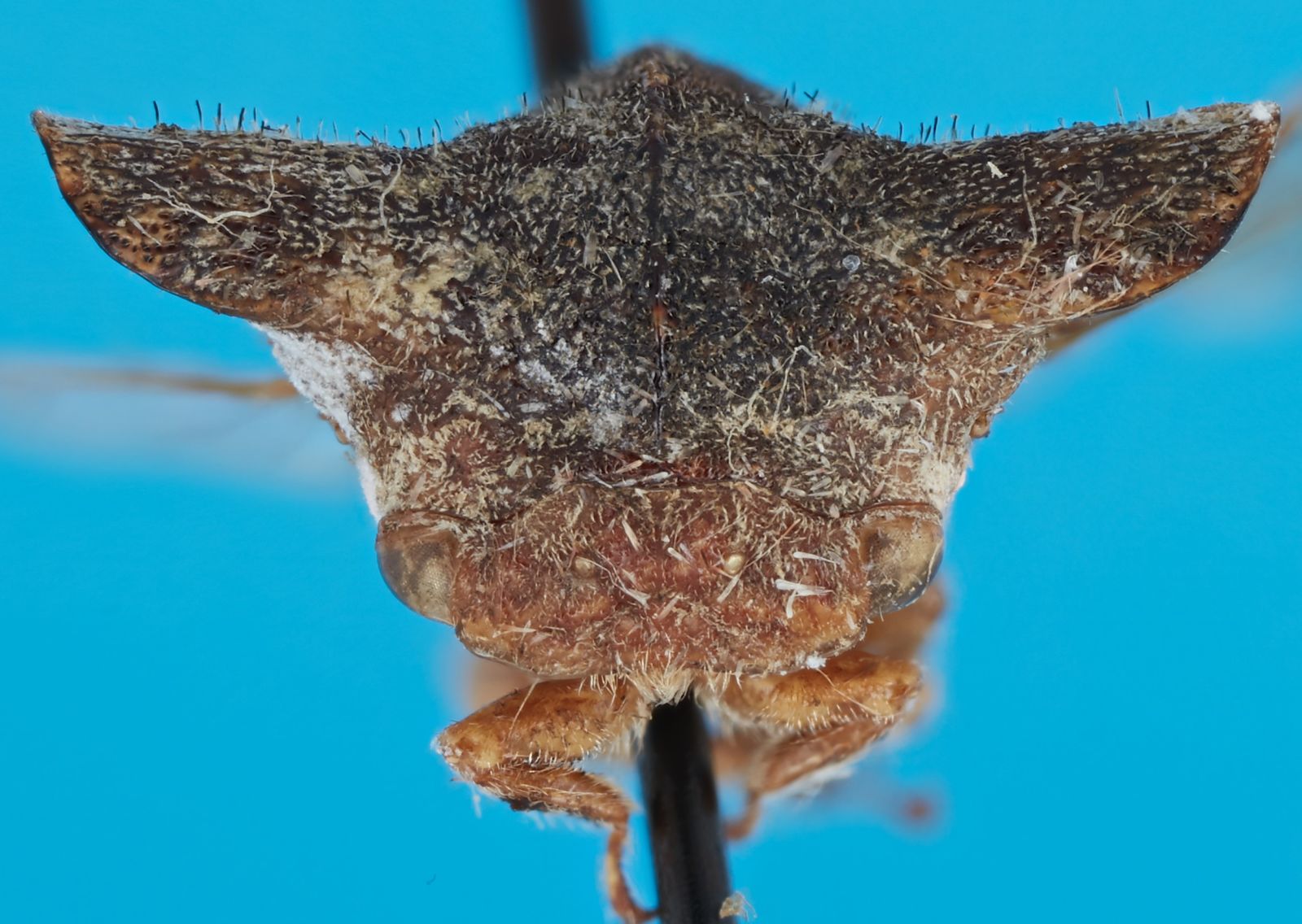
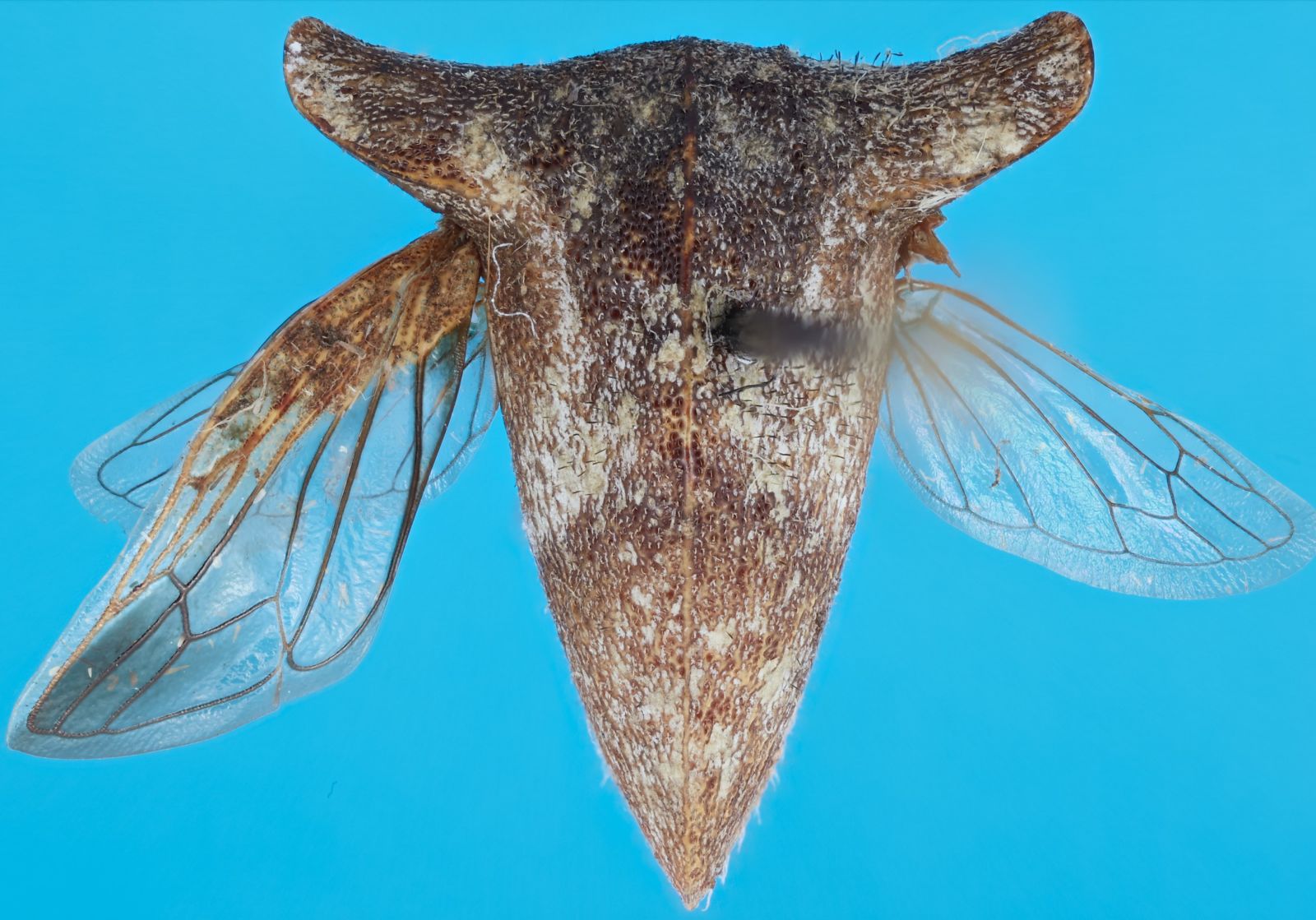
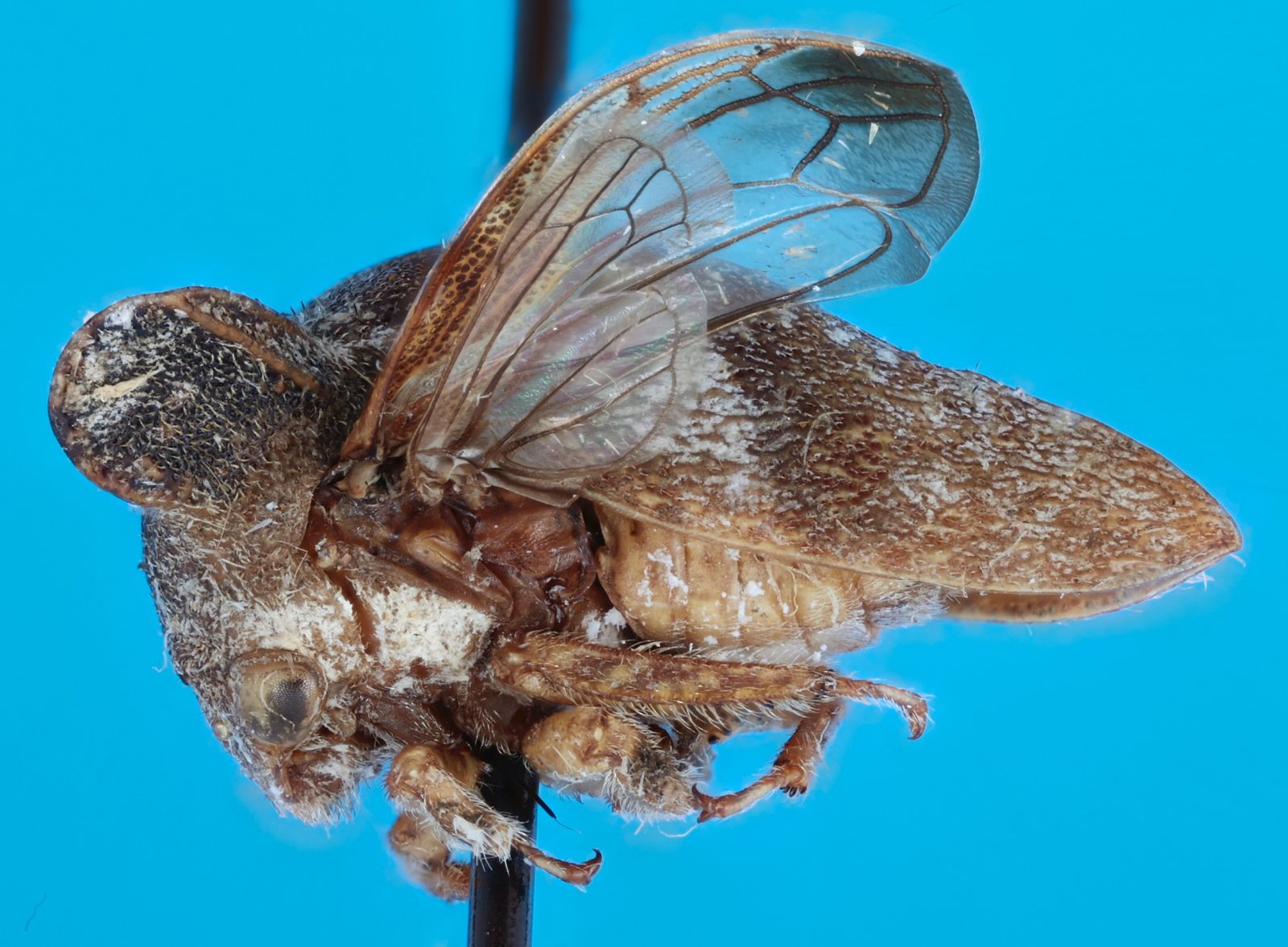
3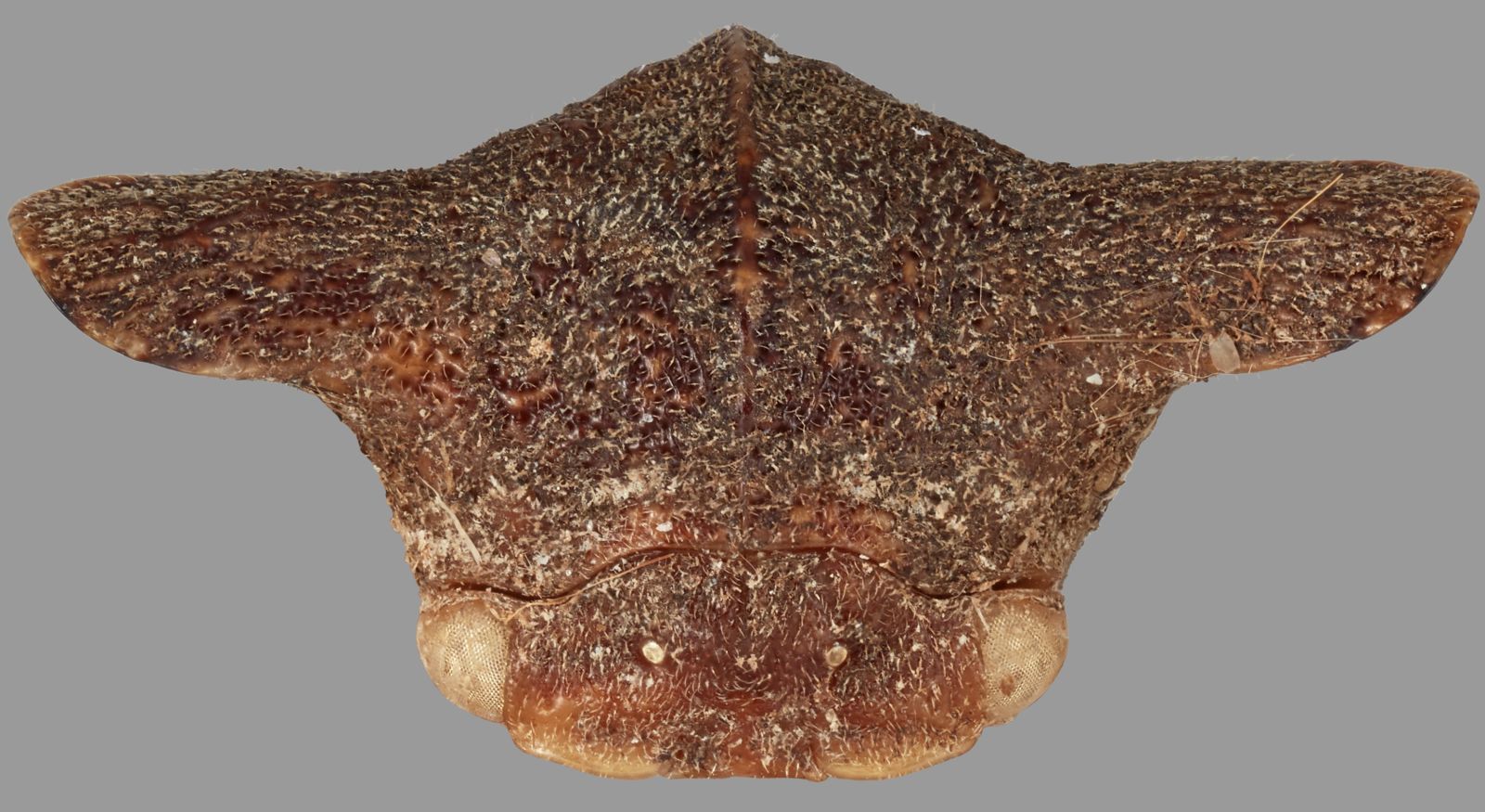
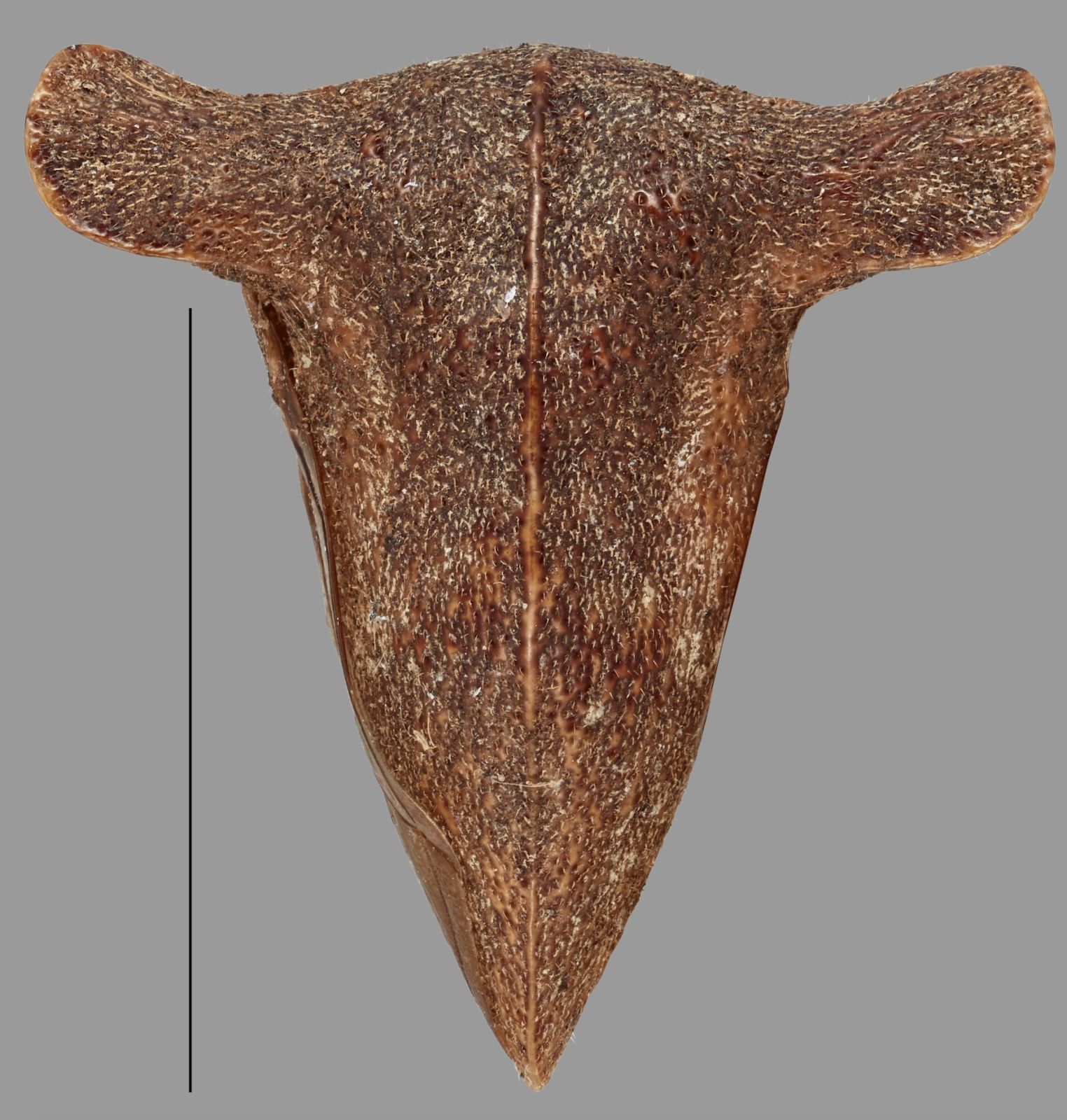
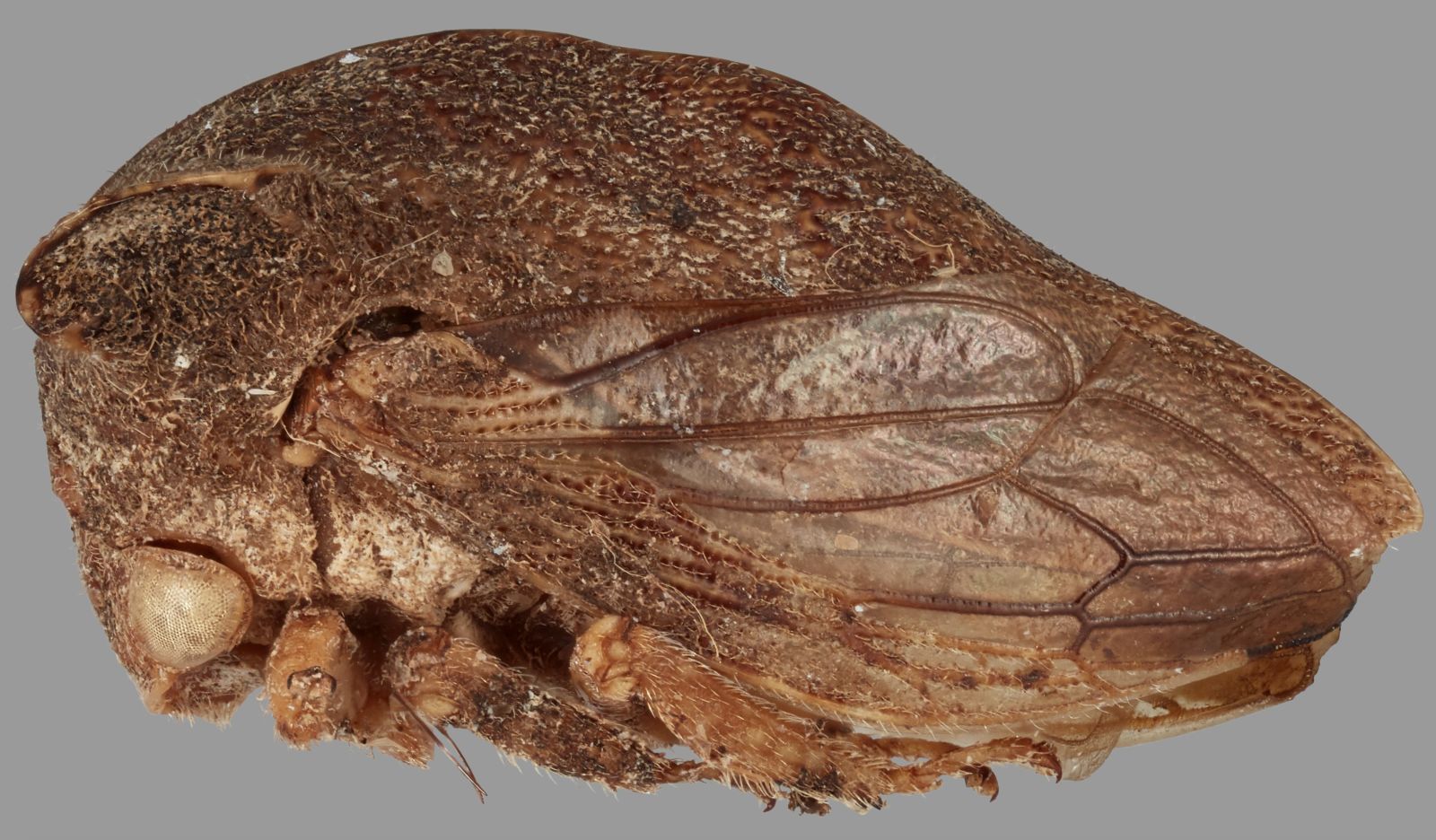
4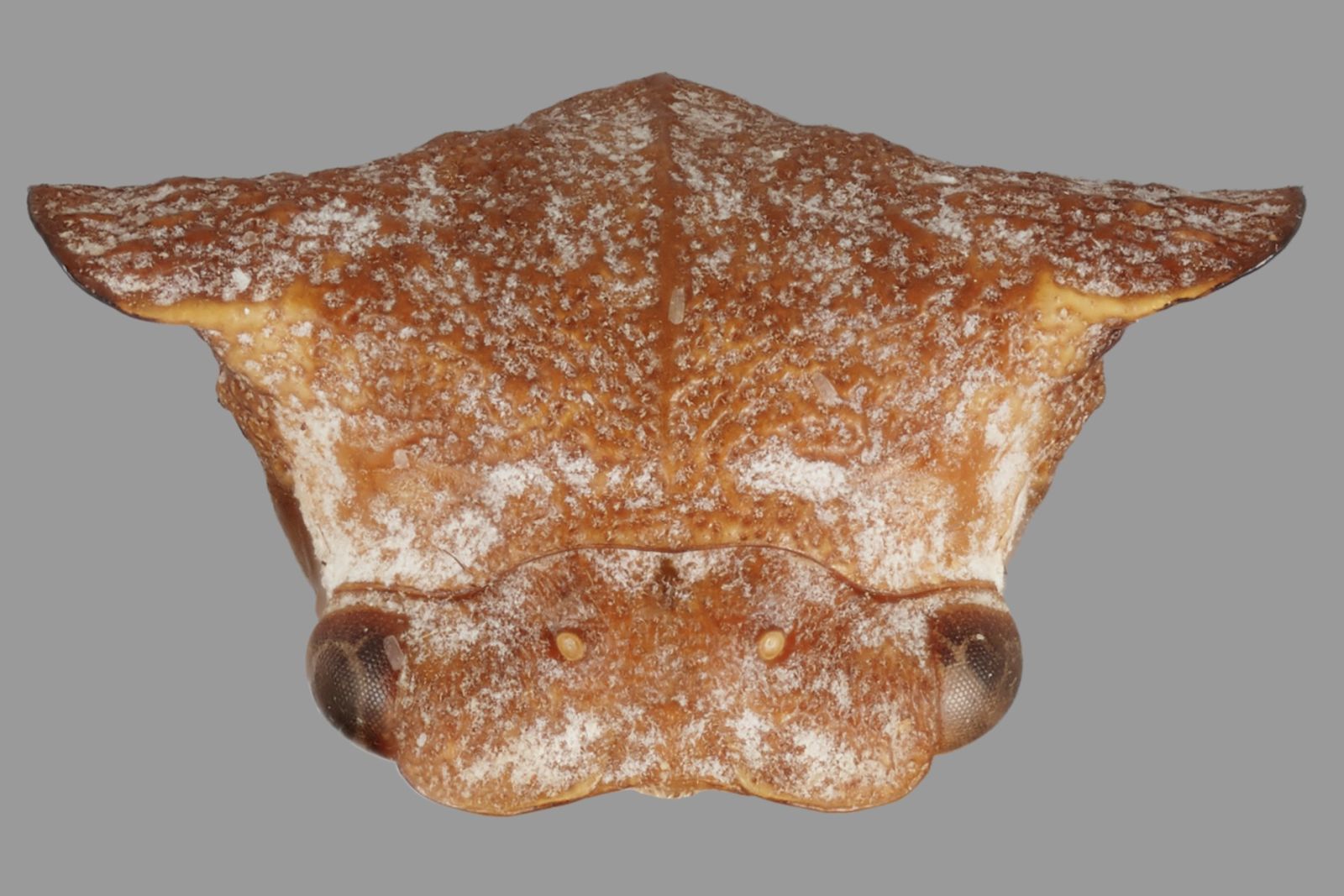

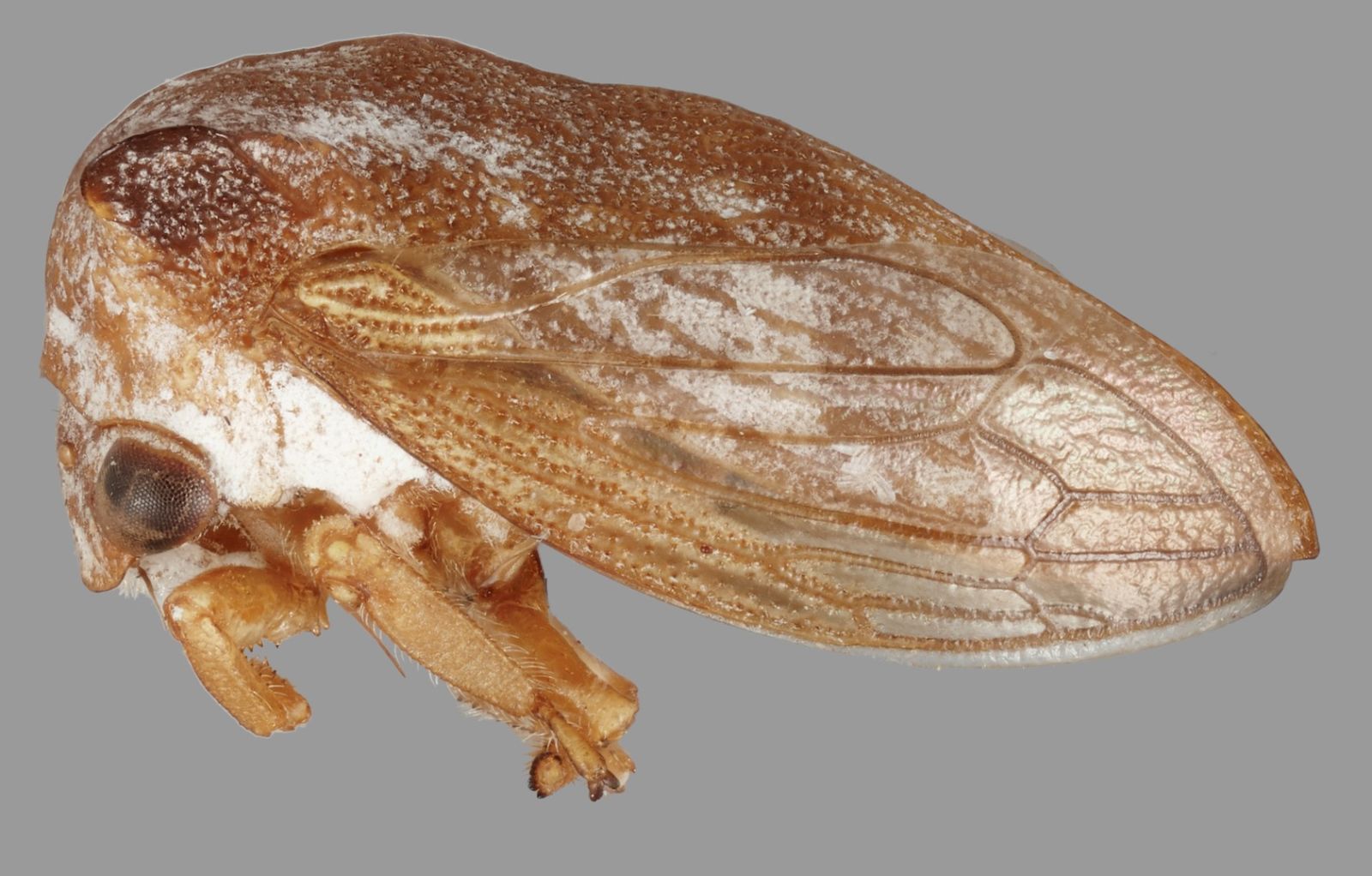
5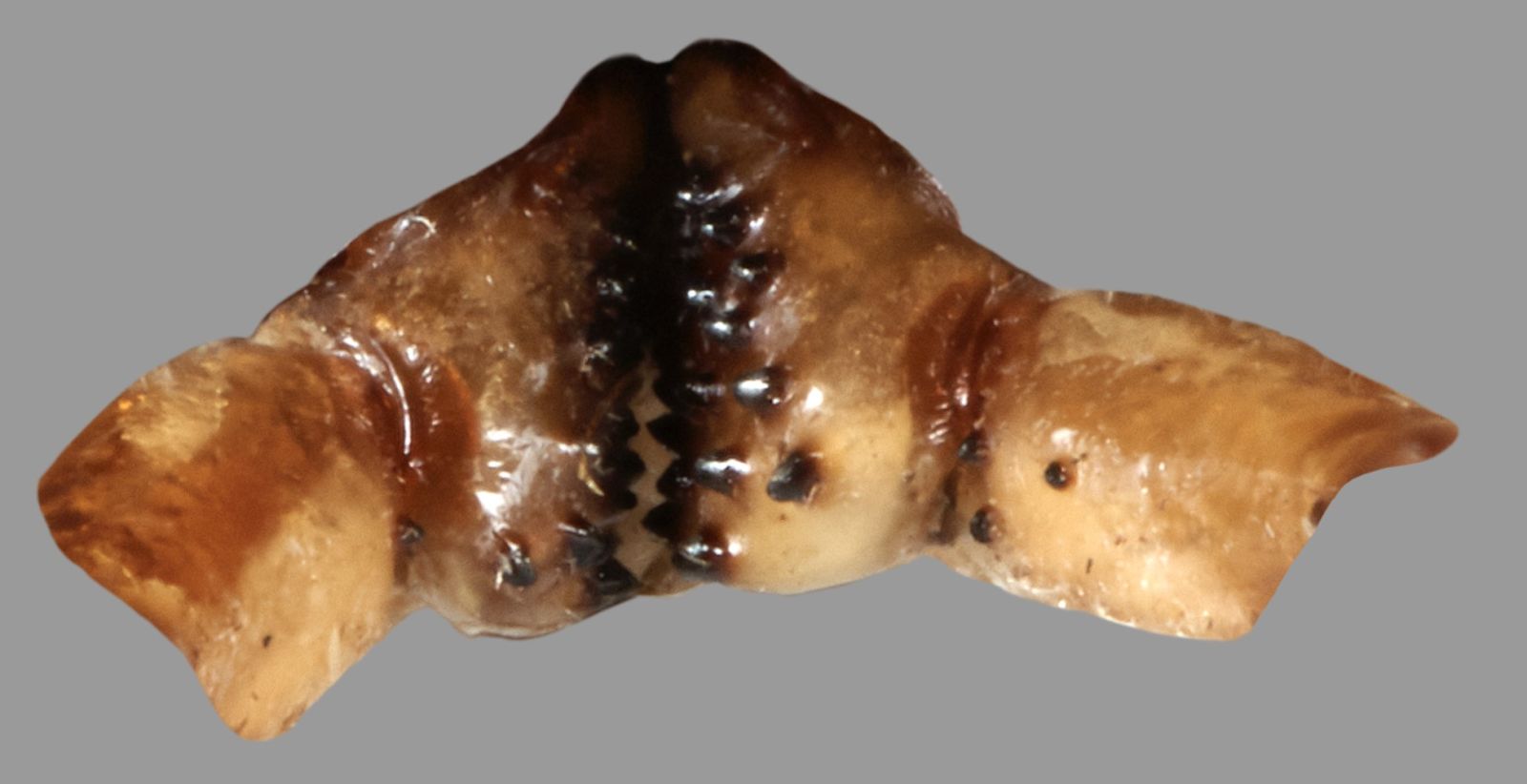
[In this publication, the new genus Polyodontotrochus is described and illustrated along with its four new species: P. elevatus (type species) from Ecuador (Fig. 1), P. auriculatus (Fig. 2) and P. extentapalaestrus (Fig. 3), both from French Guiana, and P. inpa (Fig. 4) from Brazil. Females of the new genus are unknown. In males of the genus, however, the inner surfaces of the metathoracic trochanters are flattened, bearing numerous studlike, sclerotized dentae (Fig. 5)--a feature not previously observed in any other treehopper genus.]
Figs. 1-4. Polyodontotrochus spp. (anterior, dorsal, and lateral aspects): 1, P. elevatus; 2, P. auriculatus; 3, P. extentapalaestrus; 4, P. inpa. Fig. 5. P. elevatus, hind trochanters (note that the inner surfaces are flattened and bear numerous studlike dentae). [Photos by Alyssa Seemann, NOT_IN_COPYRIGHT (USDA 2024)].
1



2



3



4



5

[In this publication, the new genus Polyodontotrochus is described and illustrated along with its four new species: P. elevatus (type species) from Ecuador (Fig. 1), P. auriculatus (Fig. 2) and P. extentapalaestrus (Fig. 3), both from French Guiana, and P. inpa (Fig. 4) from Brazil. Females of the new genus are unknown. In males of the genus, however, the inner surfaces of the metathoracic trochanters are flattened, bearing numerous studlike, sclerotized dentae (Fig. 5)--a feature not previously observed in any other treehopper genus.]
More Publications on the Distribution, Interactions, and Systematics of Treehoppers (2023)
2024-03-06
Bai, H.; Zhang, J.; Dietrich, C. H.; Li, Y.; Yuan, X. 2023a. Structural characteristics of mitochondrial genomes of eight treehoppers (Hemiptera: Membracidae: Centrotinae) and their phylogenetic implications. Genes 14(7): [1-11 (pdf of online version)] [Available online (open access)]
[Phylogenetic analyses based on new data for 8 species were largely consistent with previous analyses derived from morphological and partial nuclear genome data. One significant difference is that the new evidence suggests the tribe Leptocentrini may be polyphyletic, rather than monophyletic. This study also suggests that the genera Antialcidas, Leptocentrus, and Tricentrus (which appear to be polyphyletic groups) need revision.]
Gonzalez-Mozo, L. C.; Ware, J. L. 2023a. Review of Cyphotes Burmeister, 1835 (Hemiptera: Membracidae) with the description of a related new genus. Zootaxa 5380 (6): 501–525. [Available online (open access).]
Fig. 1 Allocyphotes insoliata, male, lateral aspect, Ecuador. © Copyright 2006, by Christopher H. Dietrich.
1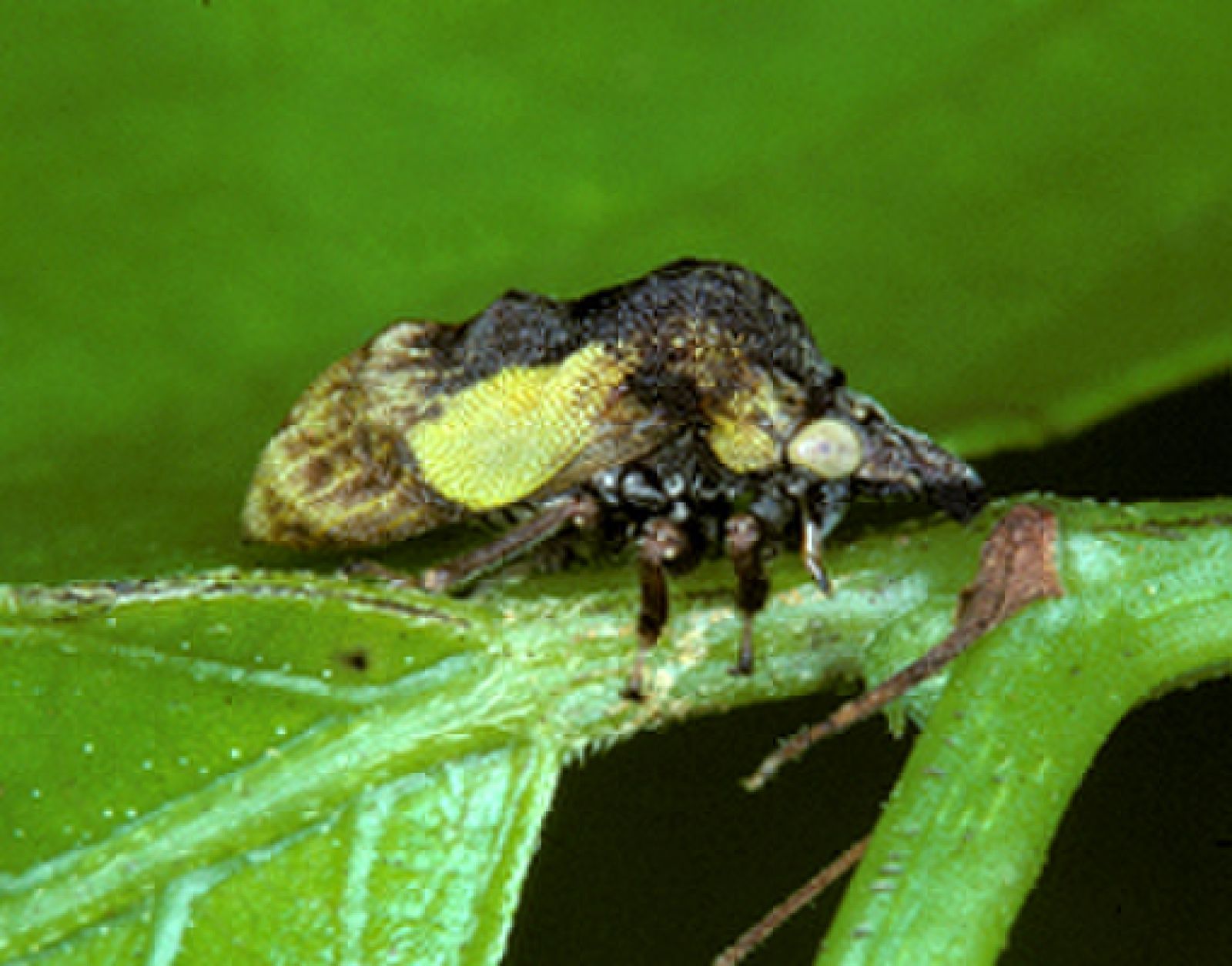
[This review of Cyphotes (tribe Darnini) limits this genus to two species: C. nodosa (= Aspona bullata, new syn.) and C. quadrinodosa (reinstated) and describes the new genus Allocyphotes with A. insoliata (the type-speices: Fig. 1, above), A. pompanoni and A. colombiensis, new combinations (all formerly in Cyphotes) and three new species from Ecuador: A. flavus, A. waoraniorum, and A. robertoi. The paper includes illustrated keys and descriptions to identify these taxa.]
Li, F. E.; Yang, L.; Long, J.-K.; Chang, Z.-M.; Chen, X.-S. 2023a. Revisiting the phylogenetic relationship and evolution of Gargarini with mitochondrial genome (Hemiptera: Membracidae: Centrotinae). International Journal of Molecular Science 24(1): [1-14 (based on pagination of copy printed from on online version)] [Available online (open access)]
[Based on a very limited number of taxa in the tribe Gargarini (5 genera: 6 species), this research provides a preliminary basis for future work on the phylogeny of the tribe Leptocentrini.]
Petrašisūnas, A. 2023a. Distribution of Gargara genistae (Hemiptera: Cicadomorpha, Membracidae) in Lithuania. Bulletin of the Lithuanian Entomological Society 7(35):10-15.
[This work reports that Gargara genistae currently occurs mainly in the southern and southeastern regions of Lithuania, but, as yet, has not detected in the central and western regions. G. genistae was first recorded in Lithuania in 2021 (Petrašiūnas A. 2021a. Gargara genistae and Stictocephala bisonia (Hemiptera: Cicadomorpha, Membracidae) new for Lithuanian fauna. Bulletin of the Lithuanian Entomological Society 5 (33): 23–25).]
Powell, E, C.; Halbert, S. E.; Deeter, L.; Keller, O. 2023a. An annotated and illustrated catalog of the primary type material of Hemiptera deposited in the Florida State Collection of Arthropods. Zootaxa 5355(1): 1-107. [https://doi.org/10.11646/zootaxa.5355.1]
[This collection holds the holotype of one treehopper species: Guayaquila contorta Dietrich, 1991, in Dietrich & Deitz, 1991a: 36. Holotype: male, from Panama. Taxonomic placement: Membracidae: Membracinae: Aconophorini.]
Shoenberger, T. W.; Fowler Finn, K. D. 2023a. Seasonal variation in the strength and consistency of tritrophic interactions among treehoppers, plants, and ants may favor generalist relationships. Arthropod-Plant Interactions: [Published online: 1 Dec 2023:[1-15 (pdf of online version); https://doi.org/10.1007/s11829-023-10012-x]
[Conducted in a Missouri prairie, this research investigated variation in tritrophic interactions among: (1) a treehopper Entylia carinata; (2) three of its common host plants (Silphium perfoliatum, Rudbeckia laciniata, and Cirsium discolor); and three ant mutualists of E. carinata (Crematogaster cerasi, Prenolepis imparis, and Camponotus pennsylvanicus) over a 3-year period. Tritrophic associations varied seasonally, but were relatively consistent over the duration of the study. Ants showed especially pervasive effects on populations of the treehopper, including its presence, abundance, and aggregating and nesting behaviors.]
Sowmyashree, M.S; Prakash, H.T; Prema, G.U. 2023a. Ecological association of diversity of cowbugs-ants and aphids-ants species in pigeonpea and safflower ecosystems. Indian Journal of Ecology 50(2):452-461.
[Illustrated with 38 color plates, this paper documents the ecology and life history of treehoppers (or “cow bugs”) occurring on pigeon pea (Cajanus cajan) in India. Of the three treehopper species observed during the study, the most common was Otinotus sp. (~76%), followed by Oxyrhachis apicalis (~20%) and Leptocentrus sp. (~4%). All three species were tended by only one kind of ant (Camponotus compressus), however, the two more abundant species (both gregarious in habit) were more frequently ant-attended than the Leptocentrus sp. (a solitary feeder that moves from plant to plant). The paper includes notes on these treehoppers and their associated ants on other host plants in India.]
Reminder: Check the archive of past news for additional news and literature on Treehoppers.
[Phylogenetic analyses based on new data for 8 species were largely consistent with previous analyses derived from morphological and partial nuclear genome data. One significant difference is that the new evidence suggests the tribe Leptocentrini may be polyphyletic, rather than monophyletic. This study also suggests that the genera Antialcidas, Leptocentrus, and Tricentrus (which appear to be polyphyletic groups) need revision.]
Gonzalez-Mozo, L. C.; Ware, J. L. 2023a. Review of Cyphotes Burmeister, 1835 (Hemiptera: Membracidae) with the description of a related new genus. Zootaxa 5380 (6): 501–525. [Available online (open access).]
Fig. 1 Allocyphotes insoliata, male, lateral aspect, Ecuador. © Copyright 2006, by Christopher H. Dietrich.
1

[This review of Cyphotes (tribe Darnini) limits this genus to two species: C. nodosa (= Aspona bullata, new syn.) and C. quadrinodosa (reinstated) and describes the new genus Allocyphotes with A. insoliata (the type-speices: Fig. 1, above), A. pompanoni and A. colombiensis, new combinations (all formerly in Cyphotes) and three new species from Ecuador: A. flavus, A. waoraniorum, and A. robertoi. The paper includes illustrated keys and descriptions to identify these taxa.]
Li, F. E.; Yang, L.; Long, J.-K.; Chang, Z.-M.; Chen, X.-S. 2023a. Revisiting the phylogenetic relationship and evolution of Gargarini with mitochondrial genome (Hemiptera: Membracidae: Centrotinae). International Journal of Molecular Science 24(1): [1-14 (based on pagination of copy printed from on online version)] [Available online (open access)]
[Based on a very limited number of taxa in the tribe Gargarini (5 genera: 6 species), this research provides a preliminary basis for future work on the phylogeny of the tribe Leptocentrini.]
Petrašisūnas, A. 2023a. Distribution of Gargara genistae (Hemiptera: Cicadomorpha, Membracidae) in Lithuania. Bulletin of the Lithuanian Entomological Society 7(35):10-15.
[This work reports that Gargara genistae currently occurs mainly in the southern and southeastern regions of Lithuania, but, as yet, has not detected in the central and western regions. G. genistae was first recorded in Lithuania in 2021 (Petrašiūnas A. 2021a. Gargara genistae and Stictocephala bisonia (Hemiptera: Cicadomorpha, Membracidae) new for Lithuanian fauna. Bulletin of the Lithuanian Entomological Society 5 (33): 23–25).]
Powell, E, C.; Halbert, S. E.; Deeter, L.; Keller, O. 2023a. An annotated and illustrated catalog of the primary type material of Hemiptera deposited in the Florida State Collection of Arthropods. Zootaxa 5355(1): 1-107. [https://doi.org/10.11646/zootaxa.5355.1]
[This collection holds the holotype of one treehopper species: Guayaquila contorta Dietrich, 1991, in Dietrich & Deitz, 1991a: 36. Holotype: male, from Panama. Taxonomic placement: Membracidae: Membracinae: Aconophorini.]
Shoenberger, T. W.; Fowler Finn, K. D. 2023a. Seasonal variation in the strength and consistency of tritrophic interactions among treehoppers, plants, and ants may favor generalist relationships. Arthropod-Plant Interactions: [Published online: 1 Dec 2023:[1-15 (pdf of online version); https://doi.org/10.1007/s11829-023-10012-x]
[Conducted in a Missouri prairie, this research investigated variation in tritrophic interactions among: (1) a treehopper Entylia carinata; (2) three of its common host plants (Silphium perfoliatum, Rudbeckia laciniata, and Cirsium discolor); and three ant mutualists of E. carinata (Crematogaster cerasi, Prenolepis imparis, and Camponotus pennsylvanicus) over a 3-year period. Tritrophic associations varied seasonally, but were relatively consistent over the duration of the study. Ants showed especially pervasive effects on populations of the treehopper, including its presence, abundance, and aggregating and nesting behaviors.]
Sowmyashree, M.S; Prakash, H.T; Prema, G.U. 2023a. Ecological association of diversity of cowbugs-ants and aphids-ants species in pigeonpea and safflower ecosystems. Indian Journal of Ecology 50(2):452-461.
[Illustrated with 38 color plates, this paper documents the ecology and life history of treehoppers (or “cow bugs”) occurring on pigeon pea (Cajanus cajan) in India. Of the three treehopper species observed during the study, the most common was Otinotus sp. (~76%), followed by Oxyrhachis apicalis (~20%) and Leptocentrus sp. (~4%). All three species were tended by only one kind of ant (Camponotus compressus), however, the two more abundant species (both gregarious in habit) were more frequently ant-attended than the Leptocentrus sp. (a solitary feeder that moves from plant to plant). The paper includes notes on these treehoppers and their associated ants on other host plants in India.]
Reminder: Check the archive of past news for additional news and literature on Treehoppers.
Observations on Pronotal Development in Ennya and Poppea (2024)
2024-03-26
Miranda, X.; Orlich-Ramírez, C. 2024a, Imaginal moulting behaviour in Ennya chrysura (Hemiptera: Membracidae), Finding new questions and insights into the extreme morphology of treehoppers. Animal Behaviour [Special Issue: Tribute to the Eberhards (available online 26 February 2024) (print out of online copy paged 1-12).; https://doi.org/10.1016/j.anbehav.2024.01.027]
[To gain insights into the development of elaborate pronota in adult treehoppers, these researchers filmed the processes of imaginal ecdysis and postecdysis in Ennya chrysura, discovering that behavioral as well as hydraulic mechanisms play a role. Observations of the timing and coordination of abdominal contractions during wing and pronotal expansion supported these findings. Individuals of E. chrysura exhibited a two-phase pronotal expansion, unlike the one-phase expansion so far observed in other kinds of insects. Because wing expansion precedes pronotal expansion, it seems likely that internal mechanisms likely control the flow of hemolymph into the pronotum. This publication includes wonderful color images documenting pronotal development in E. chrysura.]
Sugiura, K.; Terano, T; Adachi, H.; Hagiwara, J.; Matsuda. K.; Nishida, K.; Paul Hanson, P.; Kondo, S.; Gotoh, H. 2024a. Histological observation of helmet development in the treehopper Poppea capricornis (Insecta: Hemiptera: Membracidae). Zoological Science 41(2): [1]–10. [Open access publication.]
[This study focused on the developmental process of the relatively complex pronotum of Poppea capricornis during its nymphal stages through to the adult. Moreover, the work compares and contrasts the pronotal development in Poppea to that in Antianthe expansa, in which the pronotum is relatively simple and rooflike. The study reports that the suprahumeral horns of adult P. capricornis are apparently formed using nymphal suprahumeral horn buds as a molds, however, no such nymphal molds were found for the formation of the posterior pronotal process of the adults.]
[To gain insights into the development of elaborate pronota in adult treehoppers, these researchers filmed the processes of imaginal ecdysis and postecdysis in Ennya chrysura, discovering that behavioral as well as hydraulic mechanisms play a role. Observations of the timing and coordination of abdominal contractions during wing and pronotal expansion supported these findings. Individuals of E. chrysura exhibited a two-phase pronotal expansion, unlike the one-phase expansion so far observed in other kinds of insects. Because wing expansion precedes pronotal expansion, it seems likely that internal mechanisms likely control the flow of hemolymph into the pronotum. This publication includes wonderful color images documenting pronotal development in E. chrysura.]
Sugiura, K.; Terano, T; Adachi, H.; Hagiwara, J.; Matsuda. K.; Nishida, K.; Paul Hanson, P.; Kondo, S.; Gotoh, H. 2024a. Histological observation of helmet development in the treehopper Poppea capricornis (Insecta: Hemiptera: Membracidae). Zoological Science 41(2): [1]–10. [Open access publication.]
[This study focused on the developmental process of the relatively complex pronotum of Poppea capricornis during its nymphal stages through to the adult. Moreover, the work compares and contrasts the pronotal development in Poppea to that in Antianthe expansa, in which the pronotum is relatively simple and rooflike. The study reports that the suprahumeral horns of adult P. capricornis are apparently formed using nymphal suprahumeral horn buds as a molds, however, no such nymphal molds were found for the formation of the posterior pronotal process of the adults.]
Studies on the Extraordinary Genera Oeda and Pyrgonota (2024)
2024-03-29
Camacho, L. F.; Ávila, J. E.; Flórez-V., C. 2024a. Mechanisms preventing animals to achieve buoyant flight [sic]. Journal of Natural History 58(9-12): 440-448. [Open access publication]
[Species of the treehopper genus Oeda have greatly inflated, balloon-like pronota and, in 1954, Richter even reported that one Colombian species exploits the principle of buoyancy to fly. The present paper addresses the question of whether Oeda, or indeed any animal, can generate a buoyant force sufficient for flight. Click on the link above to learn what the authors conclude and to view the five known species of Oeda.]
Lin, C.-Y.; Maruyama, M.; Yap, S. A.; Lin, C.-P. 2024a. Host plants and nymph morphology of an endemic treehopper, Pyrgonota bifoliata, in the Mount Makiling Forest Reserve, Luzon, Philippines, Journal of Natural History 58(5-8): 270-284. [https://doi.org/10.1080/00222933.2024.2314965]
[Recent research indicates Pyrgonota bifoliata is apparently a complex of nine cryptic species endemic to the Philippine archipelago. Species of this complex are distinguished from all other Old World treehoppers by an exceptionally elevated pronotum that terminates anteriorly in a bifurcate process. This new publication focuses on the species previously designated as P. bifoliata cryptic sp. 1, and the morphology of its last instar nymphs are described in detail. In the study area, Piper umbellatum and Saurauia latibractea were the major hosts for both nymphs and adults, but adults also occurred on Alangium and Ficus. Although nymphs were gregarious and ant-attended, adults were solitary, not ant-attended, and no evidence of maternal care was observed.]
[Species of the treehopper genus Oeda have greatly inflated, balloon-like pronota and, in 1954, Richter even reported that one Colombian species exploits the principle of buoyancy to fly. The present paper addresses the question of whether Oeda, or indeed any animal, can generate a buoyant force sufficient for flight. Click on the link above to learn what the authors conclude and to view the five known species of Oeda.]
Lin, C.-Y.; Maruyama, M.; Yap, S. A.; Lin, C.-P. 2024a. Host plants and nymph morphology of an endemic treehopper, Pyrgonota bifoliata, in the Mount Makiling Forest Reserve, Luzon, Philippines, Journal of Natural History 58(5-8): 270-284. [https://doi.org/10.1080/00222933.2024.2314965]
[Recent research indicates Pyrgonota bifoliata is apparently a complex of nine cryptic species endemic to the Philippine archipelago. Species of this complex are distinguished from all other Old World treehoppers by an exceptionally elevated pronotum that terminates anteriorly in a bifurcate process. This new publication focuses on the species previously designated as P. bifoliata cryptic sp. 1, and the morphology of its last instar nymphs are described in detail. In the study area, Piper umbellatum and Saurauia latibractea were the major hosts for both nymphs and adults, but adults also occurred on Alangium and Ficus. Although nymphs were gregarious and ant-attended, adults were solitary, not ant-attended, and no evidence of maternal care was observed.]
Cow Bugs and Keywords (April Foolery: 1 April 2024)
2024-04-01
“‘Must a name mean something?’ Alice asked doubtfully.” (Lewis Carroll, 1871 [dated 1872], Through the Looking-Glass, and What Alice Found There)
So, why are certain treehoppers called “cow bugs”? (Fig. 1, below).
A. These insects don’t answer to “Betsy,” “Angus,” “Sheila,” or any other common or Latin name. They don’t answer to “cow bugs” either, but perhaps it was useful to give them a name.
B. The common name “buffalo treehopper” was already taken.
C. In true “cow bugs” the treehopper’s pronotum has two lateral horns somewhat resembling the horns of a cow.
D. Many treehoppers are attended by ants that feed on the hoppers’ honeydew secretions, and, in doing so, the ants appear to be guarding, herding, and “milking” aggregations of miniature cows with six legs (thus, cow bugs).
E. Both “C” and “D” have been proposed as the real reason for the common name. So, in most publications, “cow bugs” refers to a number of ant-attended, horned species of the genera Anchon, Otinotus, Leptocentrus, and Oxyrhachis that occur in India. Thus “E” is arguably the preferred answer.
Fig. 1. “Cow Bugs,” adults and nymphs with honeydew-feeding ants. [Image of Oxyrhachis pandata © Copyright 2003, by Michel Boulard.]
Ants "milking" mini cows . . .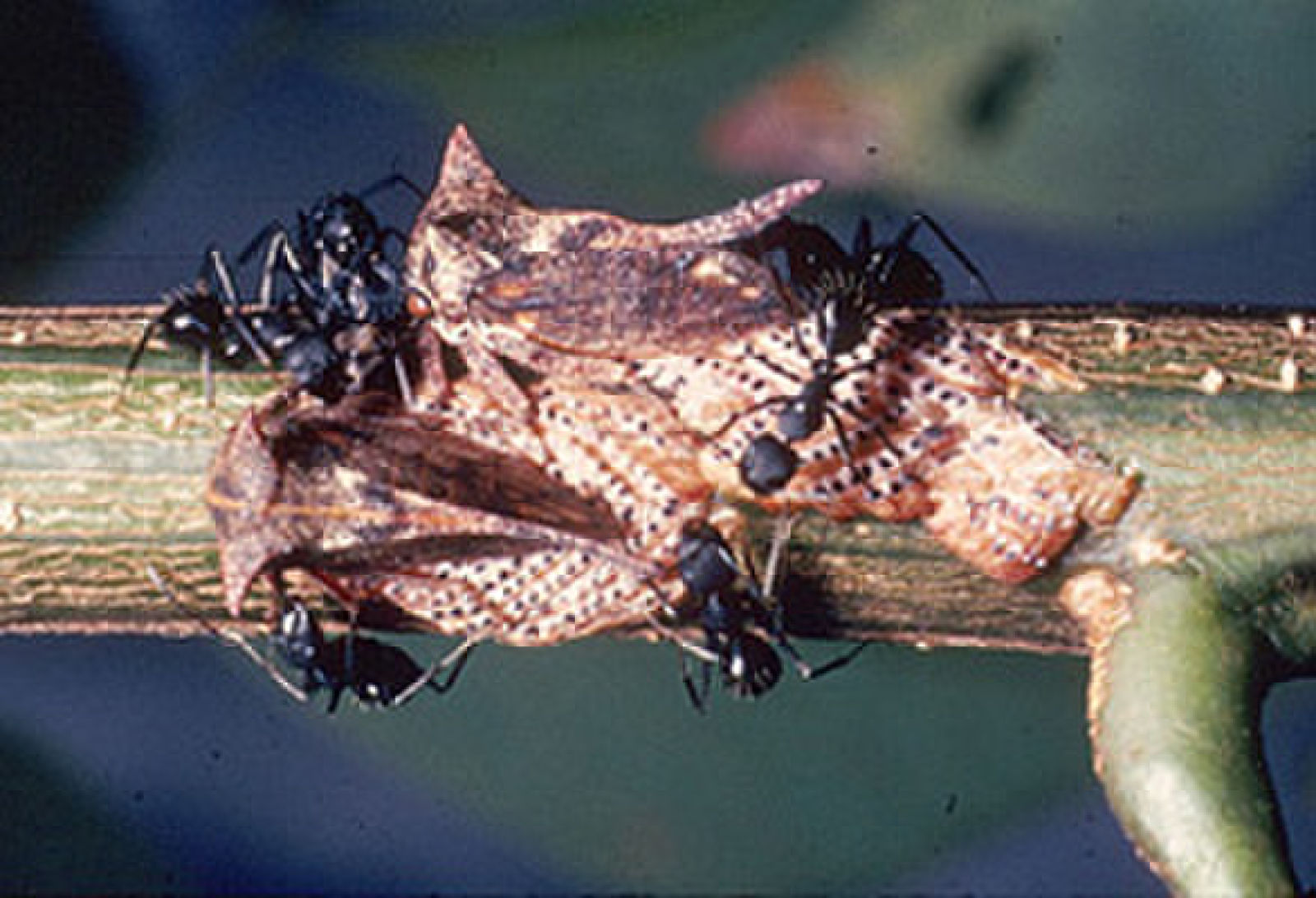
Top Ten Reasons for Omitting the Name of Your Study Group in the Title of a Publication on Treehoppers: . . . Who knew the name of the treehopper I study would be an essential keyword in searching the literature and retrieving all information on that group? . . . Let the Countdown begin . . .
10. Why trigger entomophobia in my readers from the get-go?
9. I’m not entirely sure if the bug I study is even a treehopper.
8. Does it pay to advertise that I am an entomologist? They get so little respect and my child may want to run for president some day.
7. Why do we have editors and reviewers, if not to catch such omissions?
6. In this day and age, one assumes AI will take care of such trivial details.
5. As a very visual, creative, original, and controversial free spirit, I believe eye-catching photos of treehoppers will grab your attention over some “yada yada yada” title. By the way, do you dig my glittering Bocydium earring?
4. A paper title is more friendly if it lacks words that nobody can pronounce.
3. My hidden agenda: an ambiguous, intoxicating title will trick readers into thinking my ”half-vast” paper has vast importance.
2. I fear being hounded by the news media.
1. If loved ones learn of my extreme infatuation with treehoppers, they will surely stage an intervention.
"Well, I’ve had enough nonsense. I’m going home!" (Alice, in Disney’s 1951 animated film “Alice in Wonderland”)
So, why are certain treehoppers called “cow bugs”? (Fig. 1, below).
A. These insects don’t answer to “Betsy,” “Angus,” “Sheila,” or any other common or Latin name. They don’t answer to “cow bugs” either, but perhaps it was useful to give them a name.
B. The common name “buffalo treehopper” was already taken.
C. In true “cow bugs” the treehopper’s pronotum has two lateral horns somewhat resembling the horns of a cow.
D. Many treehoppers are attended by ants that feed on the hoppers’ honeydew secretions, and, in doing so, the ants appear to be guarding, herding, and “milking” aggregations of miniature cows with six legs (thus, cow bugs).
E. Both “C” and “D” have been proposed as the real reason for the common name. So, in most publications, “cow bugs” refers to a number of ant-attended, horned species of the genera Anchon, Otinotus, Leptocentrus, and Oxyrhachis that occur in India. Thus “E” is arguably the preferred answer.
Fig. 1. “Cow Bugs,” adults and nymphs with honeydew-feeding ants. [Image of Oxyrhachis pandata © Copyright 2003, by Michel Boulard.]
Ants "milking" mini cows . . .

Top Ten Reasons for Omitting the Name of Your Study Group in the Title of a Publication on Treehoppers: . . . Who knew the name of the treehopper I study would be an essential keyword in searching the literature and retrieving all information on that group? . . . Let the Countdown begin . . .
10. Why trigger entomophobia in my readers from the get-go?
9. I’m not entirely sure if the bug I study is even a treehopper.
8. Does it pay to advertise that I am an entomologist? They get so little respect and my child may want to run for president some day.
7. Why do we have editors and reviewers, if not to catch such omissions?
6. In this day and age, one assumes AI will take care of such trivial details.
5. As a very visual, creative, original, and controversial free spirit, I believe eye-catching photos of treehoppers will grab your attention over some “yada yada yada” title. By the way, do you dig my glittering Bocydium earring?
4. A paper title is more friendly if it lacks words that nobody can pronounce.
3. My hidden agenda: an ambiguous, intoxicating title will trick readers into thinking my ”half-vast” paper has vast importance.
2. I fear being hounded by the news media.
1. If loved ones learn of my extreme infatuation with treehoppers, they will surely stage an intervention.
"Well, I’ve had enough nonsense. I’m going home!" (Alice, in Disney’s 1951 animated film “Alice in Wonderland”)
2024 Treehopper Gathering Scheduled for 31 May to 2 June, Little Orleans Maryland
2024-04-04
Charles Bartlett (the esteemed entomologist, not the character in movie “Charlie Bartlett”) has scheduled the 32nd Gathering of Treehopper Enthusiasts (31 May to 2 June 2024) at the Ridge Rider Campground, Little Orleans, Maryland. Please join our aggregation/celebration at this 222-acre campground, located in the Upper Potomac River valley of Western Maryland. Our informal gathering provides not only an excellent opportunity to collect, study, and photograph treehoppers (and “lesser insects”), but also to meet others passionate about these endlessly fascinating creatures.
Contact Dr. Bartlett to obtain further information, or to reserve a campsite with our group (and to be added to the Gathering’s email list). Participants are expected to provide their own tents, food, and camping gear, and to share in the cost of the group-camping registration and the group meal provided on Saturday evening.
Remember to bring your collecting vials, insect nets, unidentified specimens, cameras, bathing suits, a folding chair, and your favorite t-shirts.
Contact Dr. Bartlett to obtain further information, or to reserve a campsite with our group (and to be added to the Gathering’s email list). Participants are expected to provide their own tents, food, and camping gear, and to share in the cost of the group-camping registration and the group meal provided on Saturday evening.
Remember to bring your collecting vials, insect nets, unidentified specimens, cameras, bathing suits, a folding chair, and your favorite t-shirts.
In Any Language, These Little Devils are Striking!
2024-04-16
Carmon-Ríos, M. G. [2020a.] Insectos Diablitos; Los Membrácidos ¡Pequeños y Llamativos! [Devil Insects: The Membracids are Small and Striking!]. Museo Nacional de Costa Rica [National Museum of Costa Rica]. Online publication.
[This wonderfully illustrated popular article on treehoppers is available in Chinese, English, French, German, Spanish, and Portuguese. Topics treated include: treehopper morphology (the pronotum) and behavior (reproduction, parental care, communication, and symbiotic relationships).]
[This wonderfully illustrated popular article on treehoppers is available in Chinese, English, French, German, Spanish, and Portuguese. Topics treated include: treehopper morphology (the pronotum) and behavior (reproduction, parental care, communication, and symbiotic relationships).]

